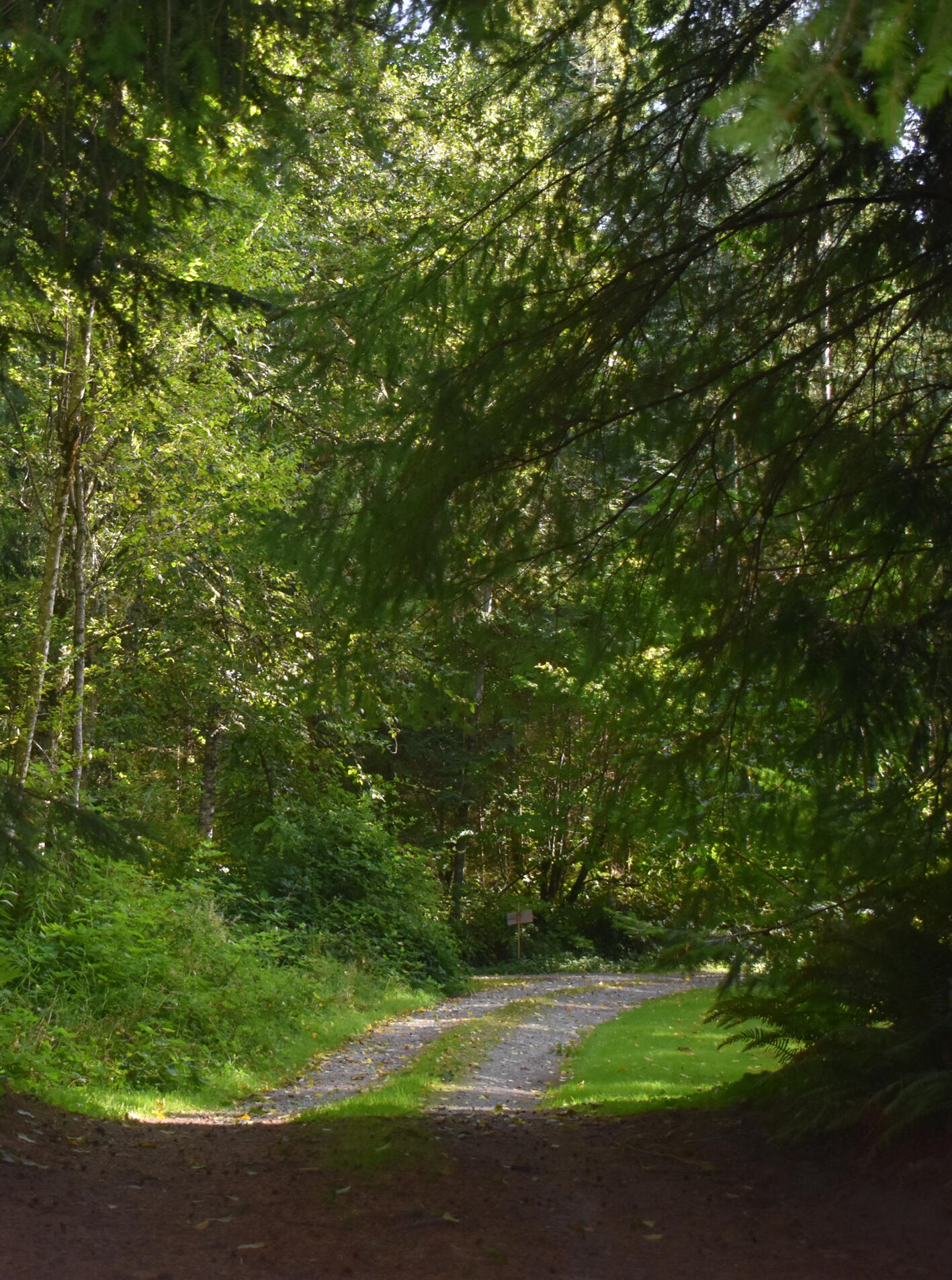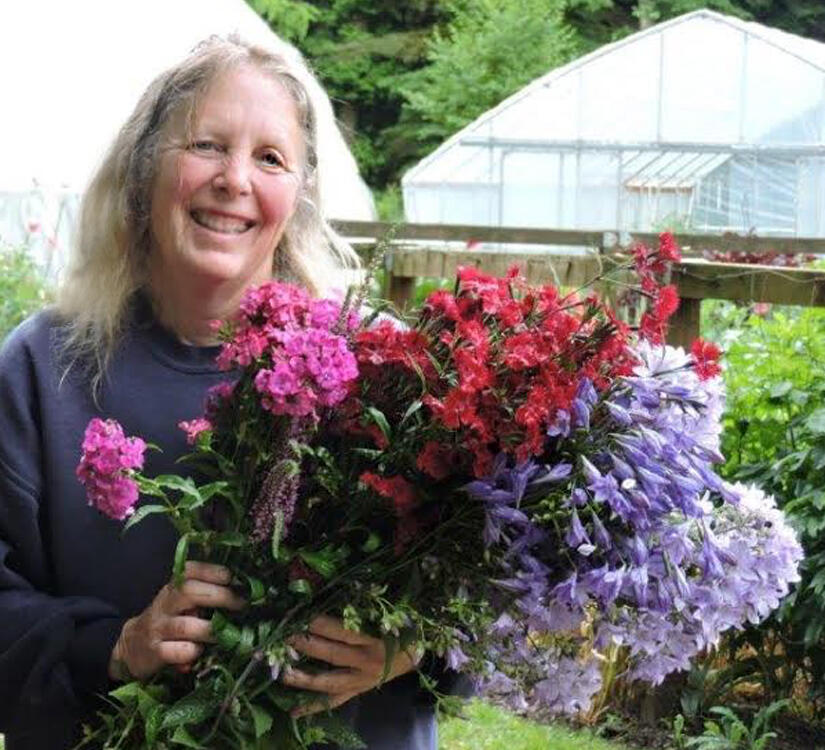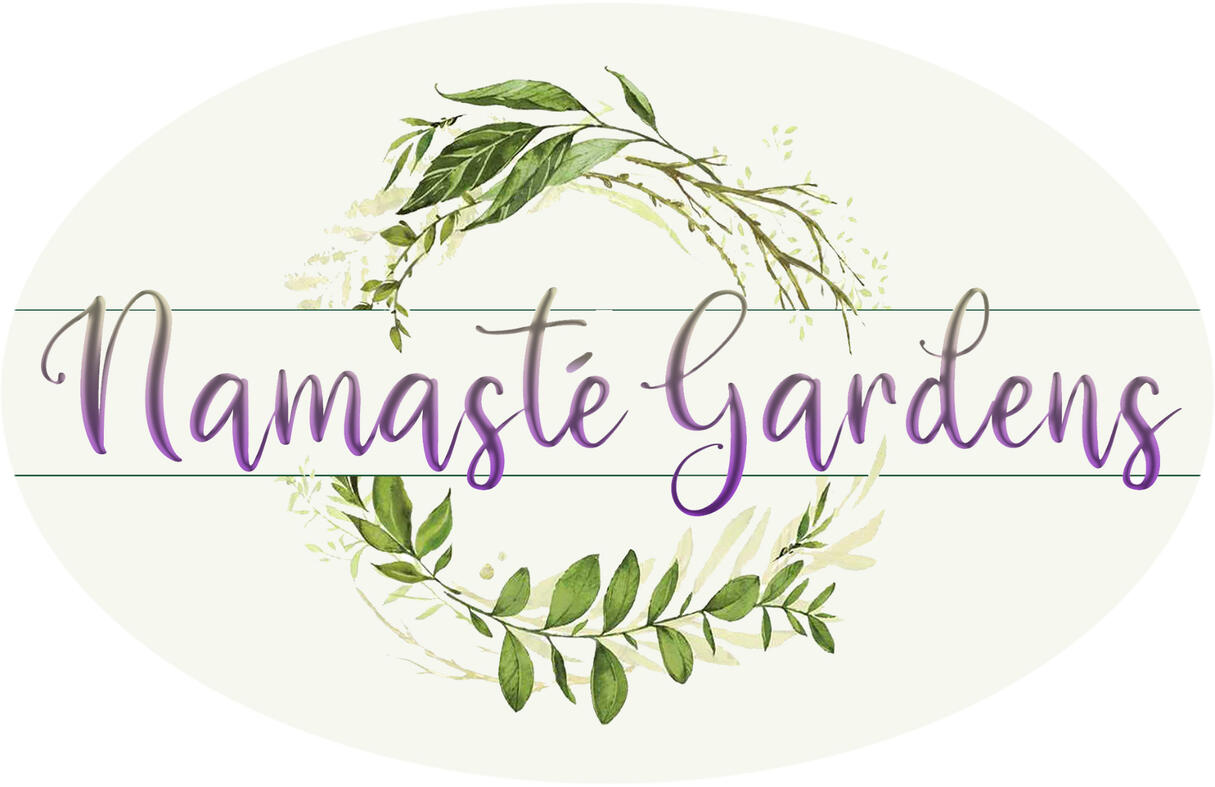Crazy weather all last year has me feeling like I'm on a roller coaster. We've been bumped up to Zone 8 but who knows what the weather will do. Three plant sales in the spring: Nature conservancy in Ferndale and Fairhaven Neighbors in March and Skagit Master Gardeners in May. I will also be at the Bellingham Farmers market starting in April through the first weekend in July. Go to my Contact page for more information. Customers are still welcome to come directly to the farm for their plant needs. I have a lot of inventory ready.
NAVIGATING THE SITE
Plant photos and further information on cultivars and cultivation are cataloged in their respective categories via the above buttons. You can use the buttons to move from one category to another. Each section has subsections with buttons to get to them. They are listed alphabetically by their common names and sometimes by scientific names. Contact me for availability since they might not be ready for sale.
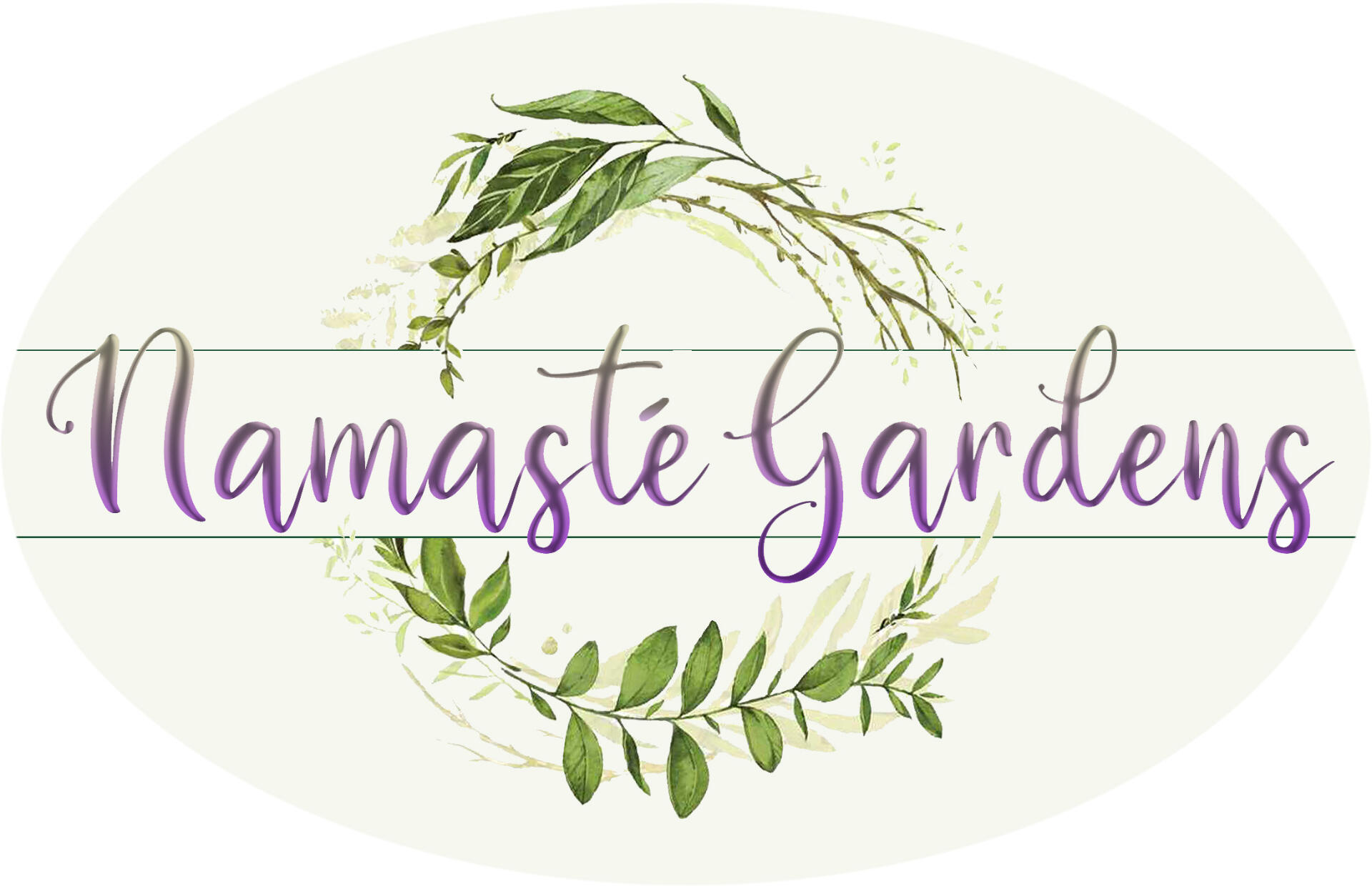
“Flowers are like friends;
They bring color to your world.”
The scene is too perfect. A winding, tree-lined isolated road up ‘Turtle Lane’. A ten-acre clearing lush with spring-green growth. An old red Ford truck sitting idly, its back hatch open and shelves within filled with plants ready for market, here you’ll find Namaste Gardens plant nursery with an extraordinary collection of plants. This exceptional small plant nursery is a 40-year creation by Wendy Pounds who has an absolute passion for plants. She shares an in-depth observation of the plants she offers.
Perennials
Perennials are plants that do not die after one season, which makes them desirable for those who don’t want to replant the gardens year after year. The catch is that most only bloom for 4 or 5 weeks and so plantings should be mixed with species that bloom at different times or with grasses or other texture plants. It is a lot of fun figuring out what works and you might end up having to move things around, but that is the fun of it, creating a work of art by trial and error.
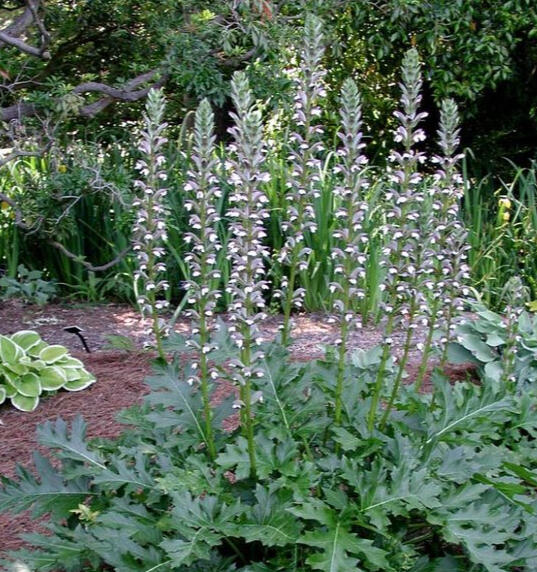
Acanthus mollis
Bear's Breeches
Zones: 7-10
Size: 3-6 feet tall with 3-6 foot spread
Sunlight: Full sun to part shade
Soil: Chalk, loam, sand
Bloom Time: Early to mid-summerDescription: Put a touch of whimsy in your next landscaping project with the addition of this unique perennial. Bear's Breeches make the perfect accent planting for borders and beds. In mid to late summer, its dense mounds of glossy leaves become a contrasting backdrop to plentiful white, snapdragon-like blooms and spiny, red-purple bracts on singular flower spikes. Pollinators, such as butterflies, love this plant and will visit often. Deer resistant.Growing: Native to the Mediterranean region of Portugal and Northwest Africa, Bear’s Breeches are tolerant of drought and shade, but do best in full sun to partial shade. Requires very little care. Grows well in average, fertile, well-drained soil. Good as a cut flower or in dried arrangements.
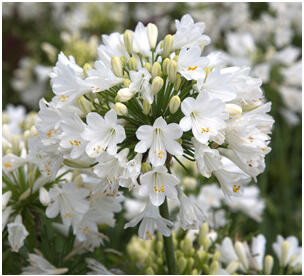
Agapanthus
African Lily
Zones: 7-11
Size: 3 feet tall with 3 foot spread
Sunlight: Full sun
Soil: Well drained soil
Bloom Time: Mid-summer to early autumnDescription: Agapanthus are summer-flowering perennial plants, grown for their showy flowers. Its evergreen strappy leaves add texture to beds, borders, and containers. For those who don’t know aggies, they’re those blue or sometimes white long-stemmed lilies bursting into bloom in gardens everywhere. You’ll even spot them in roundabout plantings. Deer resistant.Growing: Agapanthus thrives in fertile, well-drained, but moisture-retentive soil in full sun or, grow these beauties in containers. There’s nothing quite as evocative of summer as a row of agapanthus in full flower. Agapanthus plants are an excellent choice for landscaping around the pool or to edge a driveway or fence line. They make excellent cut flowers.
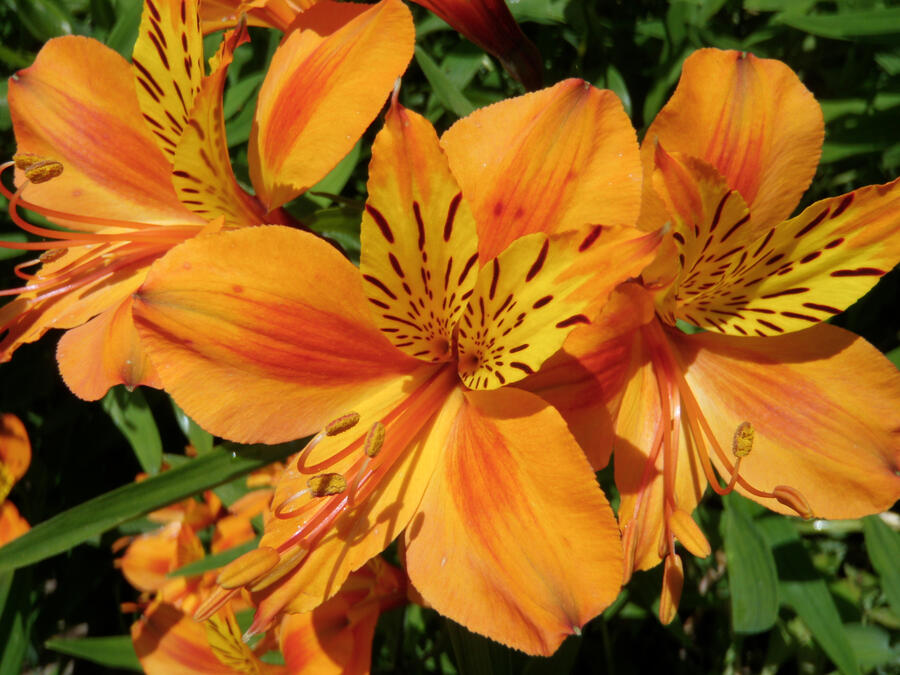
Alstroemeria
Orange Peruvian Lily
Zones: 6-10
Size: 2-4 ft. tall
Sunlight: Full sun
Soil: Well-drained, fertile, acidic to neutral
Bloom Time: July - AugustDescription: Alstroemerias are all native to South America, mostly Chile and Brazil. There are about 50 species and they are all in the Amaryllis family. The orange Alstroemeria is a bright, sunny orange with a freckled throat on 2.5 ft. tall stems. They will they brighten up the darkest corners of any garden, but beware, they are aggressive spreaders and will take over a garden if not closely supervised. They have a shorter 4-5 week bloom cycle than their pink cousins in mid July to mid August.Growing: Plant orange Alstroemeria in fertile, well-drained soil. They prefer full sun but will grow just fine in full shade as well. This is a hardy plant in western Washington and will grow in most any place you put it. Be aware that they are aggressive spreaders and should be planted in a place where it is okay for them to go wild. After all this is a wonderful cut flower that lasts for days and days in your bouquet. You can either pull the flower stem straight up or cut it off. Mulch around, but not on top of the plants in early spring with 3 inches of organic compost.
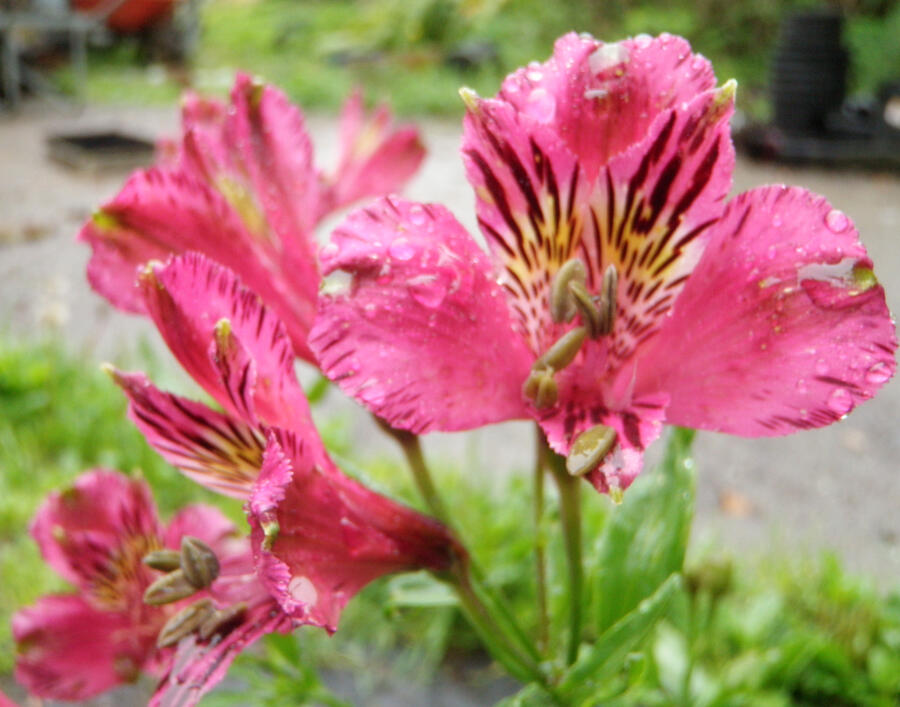
Alstroemeria
Pink Peruvian Lily
Zones: 6-10
Size: 2.5 ft. tall
Sunlight: Full sun
Soil: Well-drained, fertile, acidic to neutral
Bloom Time: Spring to fist hard frost in fallDescription: Alstroemerias are all native to South America, mostly Chile and Brazil. They have loose clusters of Azalea-like flowers in numerous shades of pink through lavender with speckled throats on 2.5’ tall plants. They bloom most of the spring and into the fall if flowers are picked regularly.Growing: Alstroemerias love sun and a good well drained soil. If you have clay soil it will be more difficult to be successful. Too much shade will give you plants that are tall and floppy with weak stems. They are hardy in our area; Alstroemerias also enjoy a good level of fertilizer and plenty of regular watering. Mulch around but not on top of the plants in early spring with 3 inches of organic compost. If you want to gather some Remember to pull the flowers so that they come away right down at the base of the plant when picking. This helps your plants to keep vigorous and will stimulate new flowering stems. After all this is a wonderful cut flower that lasts for days and days in your bouquet.
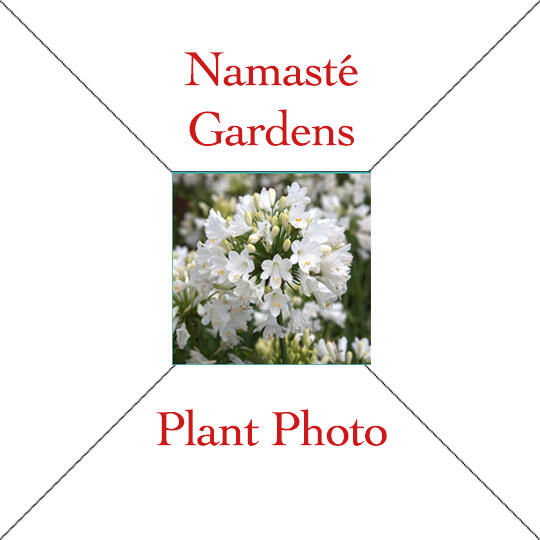
Plant Name
Text
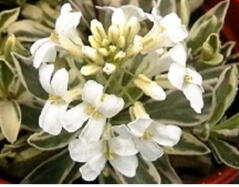
Arabis procurrens ‘Variegata’
Rock Cress
Zones: 4-9
Size: 6” tall
Sunlight: Full sun
Soil: Well drained
Bloom Time: Early springDescription: This ground cover is handsome year round with variegated, evergreen foliage. Sprays of small white flowers stand above spreading mats of variegated foliage and when placed against a dark background, this little plant is a knockout. Slowly spreading 1 inch rosettes of attractive, white-edged leaves. The up-facing single flowers appear in early spring. Deer and rabbit resistant.Growing: Prefers sandy, well-drained soil in full sun to very light shade. Drought tolerant, It thrives in many kinds of soil as long as it is well-drained, which makes it a choice plant for difficult areas where other plants will not grow. So it makes a wonderful front edge plant, carpet under roses, or filling and spilling out of a decorative container. It slowly cascades over an edge for a softening effect And let it wind its way between rocks and paving stones in an eye-catching fashion.
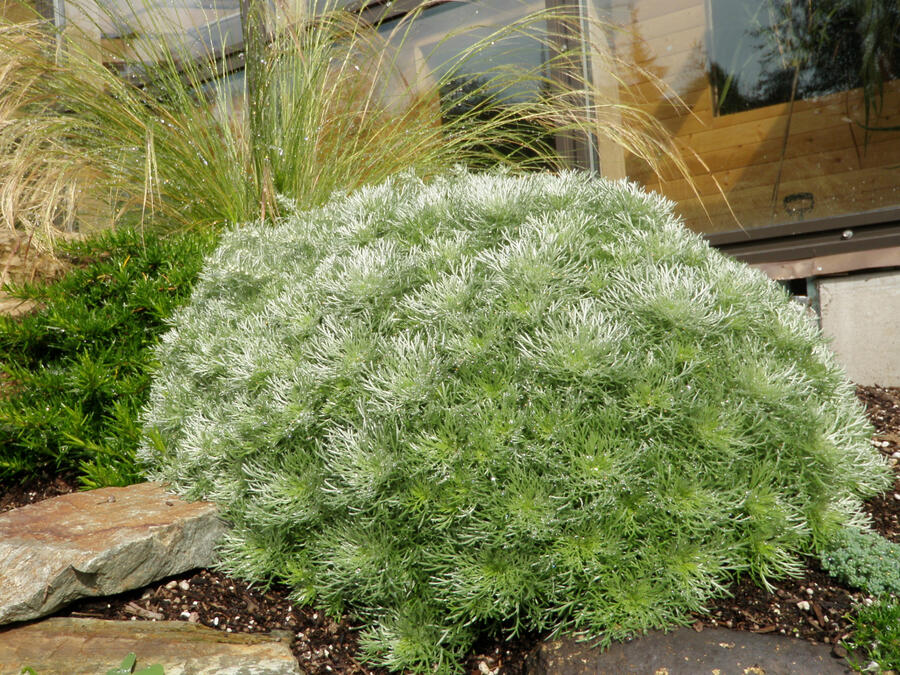
Artemisia schmidtiana 'Nana’
Silver Mound
Zones: 3-10
Size: 6-12” tall
Sunlight: Full sun
Soil: Chalk, clay, loam, well-drained
Bloom Time: Flowers inconspicuousDescription: One of the best silvery-gray foliage plants that can be used everywhere in the garden as a fantastic companion plant. 'Nana' has a gentle, mounding growth habit. The foliage is feathery, soft and aromatic. It is very drought tolerant.
Deer and rabbit resistantGrowing: Plant your Artemisia in full sun and in soil that is well-drained and relatively nutrient poor. If it is planted in too fertile of soil, the plant will grow to 1.5 feet tall and eventually split open in the middle, losing its nice, mounded profile. If your plant does split, you can cut it back in mid-July and it will grow into a pretty mound again. . The gray-silver colors are good to soften bright colors. Artemisia makes a good focal point in the garden as a specimen plant, complimenting nearby plants with pink, purple, blue or even red flowers.
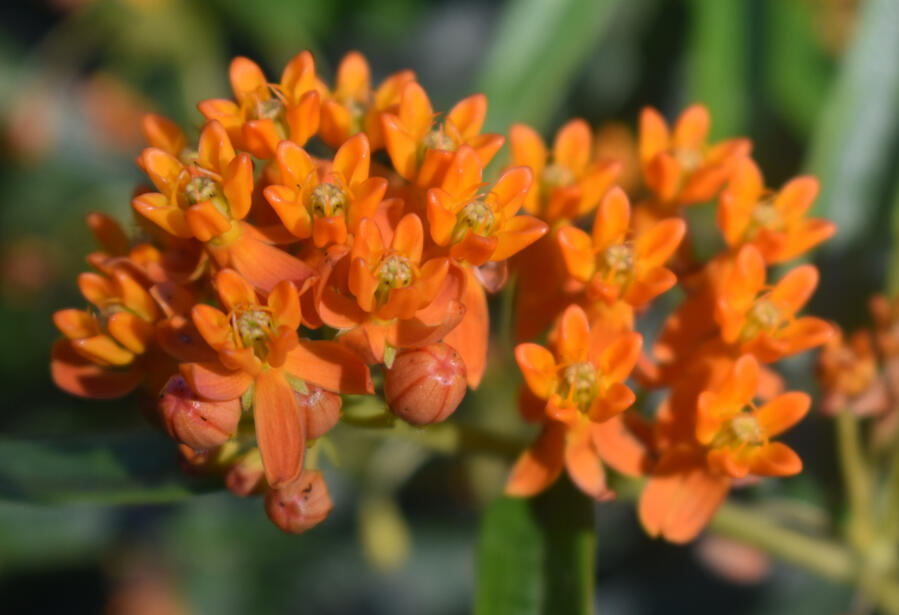
Asclepias
Butterfly Weed
Zones: 3-10
Size: 1.5-2 ft. tall
Sunlight: Full sun
Soil: Well-drained, sandy
Bloom Time: Mid to late summerDescription: Native to Eastern and Southern US, milkweeds are an important nectar source for bees and other nectar seeking insects, and a larval food source for monarch butterflies and their relatives. It is also commonly called pleurisy root in reference to a prior medicinal use of the plant roots to treat lung inflammations.
Deer resistantGrowing: Asclepias is drought tolerant and does well in poor, dry soils in full sun. It is used in butterfly gardens, meadows, prairies, or naturalized/native plant areas. It is also effective in sunny borders. Whether massing plants in large drifts or sprinkling them throughout a prairie or meadow, butterfly weed is one of our showiest native wildflowers.

Bolax glebaria
Astro Turf
Zones: 4-9
Size: 2” tall
Sunlight: Sun to part shade
Soil: Well-drained, sandy
Bloom Time: SummerDescription: Bolax is a pretty, evergreen alpine groundcover native to the Falkland Islands. It forms a slow-growing mound of tough, shiny rigid leaves growing tightly together that look nice spilling around rock edges in rock gardens. In early summer it becomes covered in pale yellow flowers. Bolax is deer resistant and drought tolerant.Growing: Bolax prefers sun to partial shade in well-drained soil with some grit, fine gravel or sand mixed in and a slightly alkaline pH. An unusual and wonderful, evergreen spreader, that is great for spilling around rocks or edging paths. Perfect for rock gardens, mini meadows, all season ground cover or as Bonsai companion plant.
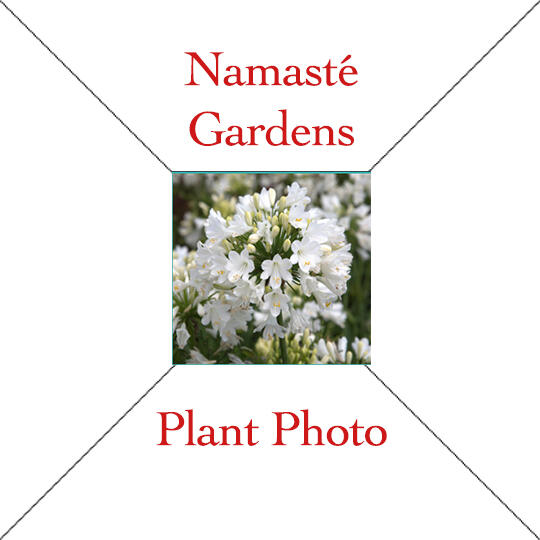
Plant name
Text
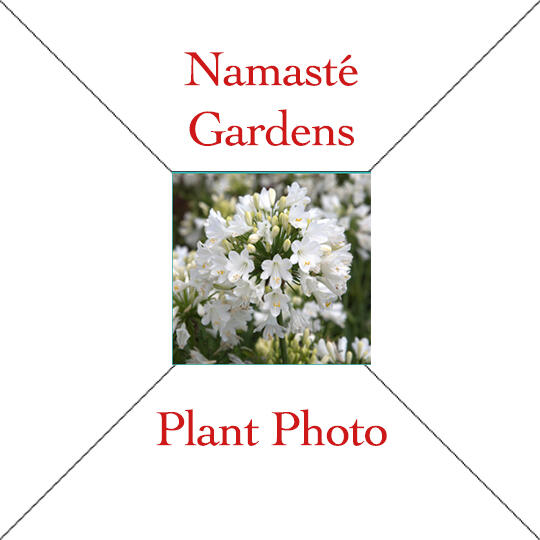
Plant name
Text
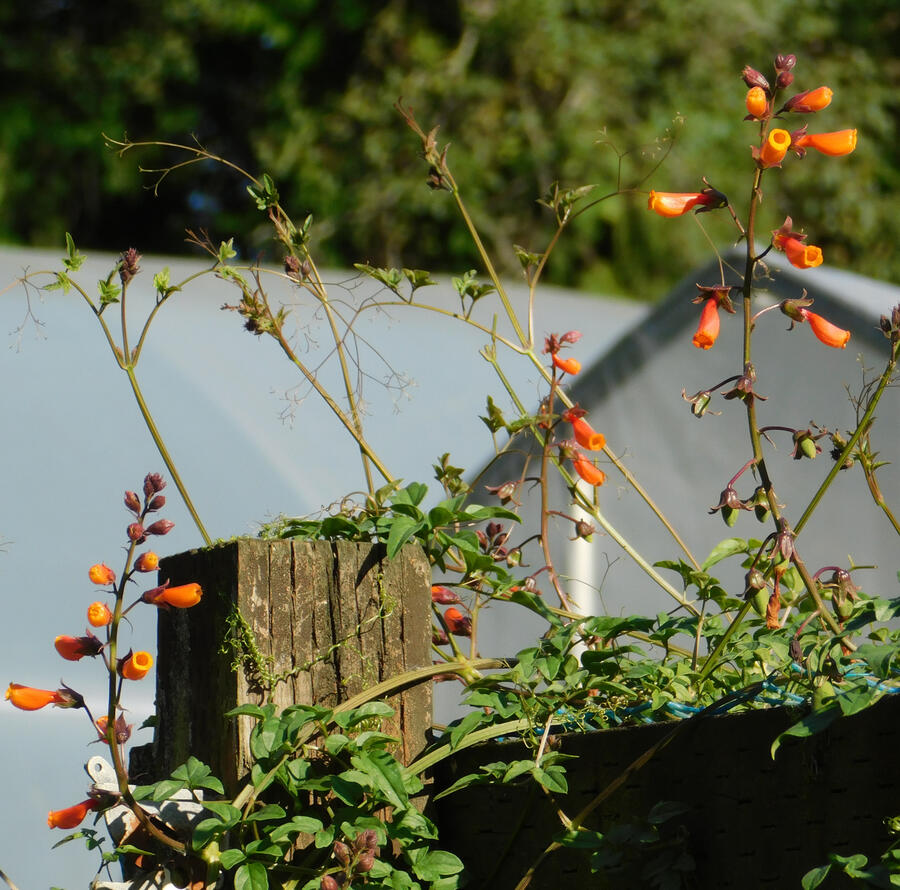
Chilean Glory Flower
Eccremocarpus scaber
Zones: 8-10
Size: 7-10 feet; vine
Sunlight: Full sun to partial shade
Soil: Moderate moisture, good drainage
Bloom Time: Summer-fallDescription: This show stopper vine with its vibrant colored orange flowers, adds such a tropical feel. It can transport you in your mind to places like Chile and Mexico. An adventure awaits you when you have Glory Flower growing in your garden. This is a tendril climbing vine with 6-inch long racemes of tubular orange flowers (1” long). It quickly covers a trellis or wall, wherever you plant it.
Hummingbirds go crazy over the flowers.Growing: Glory Flower is best grown in organically rich, consistently moist but well-drained soils in full sun. I’ve got it growing in some partly shady as well as sunny spots and seems to do equally well in both where it bloomed the whole growing season for me. It is a tender perennial whose roots are at best winter hardy to USDA Zone 8 so it is typically grown outdoors as an annual in our region. However, it has survived in my garden through three winters since I started growing it in 2018. It likes wet soils making the Pacific NW a good fit. This vine needs a trellis or other structure on which to grow. Tip cuttings may be taken in late summer for overwintering indoors, but they are easily grown from seed, which they produce aplenty.
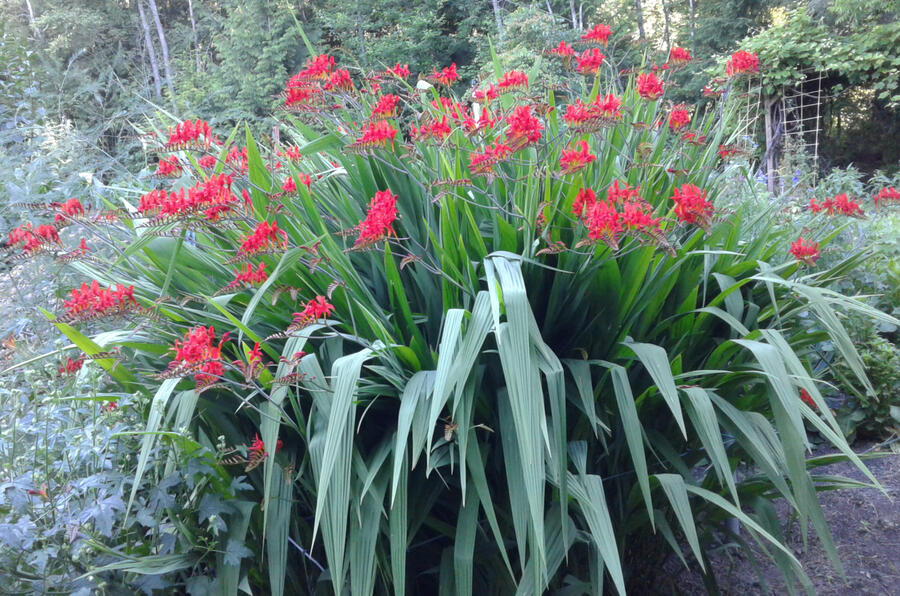
Crocosmia ‘Lucifer’
Zones: 5-9
Size: 4 feet tall
Sunlight: Full sun to partial shade
Soil: Well-drained, loamy
Bloom Time: July-AugustDescription: This Crocosmia has brilliant, wands of fiery scarlet red flowers that catch the eye from wherever they grow. Hummingbirds love them and so do the butterflies. The long, sword-like leaves fan outward and provide nice texture to the garden throughout the growing season and the bright red flowers in mid-summer look beautiful in any garden. They make excellent cut flowers and they are deer and rabbit resistant.Growing: Plant this Crocosmia in the full sun to partial shade in rich, well-drained soil. It is very easy to grow and isn’t too picky about where you put it. Dig up portions of the plant to keep its growth in check if it gets too big. Hogwire placed horizontally over the bed keeps the flower spikes standing upright.
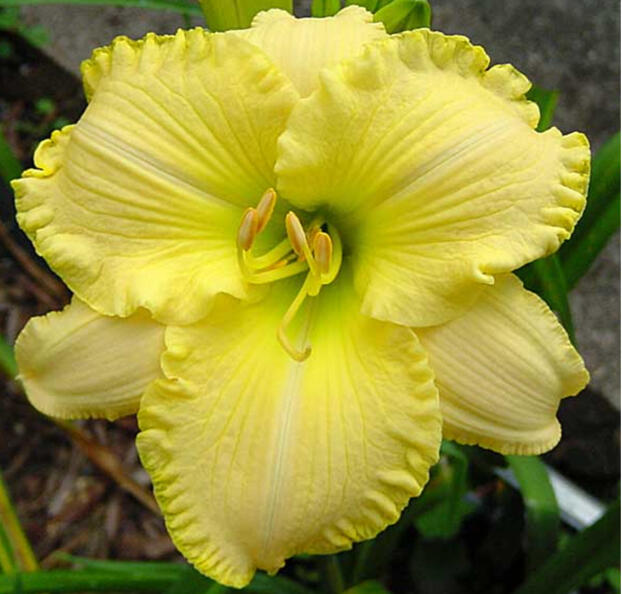
Daylilies - Betty Warren Wood
Zones: 3-9
Size: 2-3 feet
Sunlight: Full sun
Soil: Well-drained
Bloom Time: June – AugustDescription: Daylilies have bright green, spidery foliage that gets about 2 feet tall by 2 feet wide. When they bloom, they display brilliantly colored flowers on spikes slightly above the leaves. They usually bloom once in early summer and then again in late summer. They are deer and rabbit resistant and attract butterflies and hummingbirds.Growing: Daylilies are very easy to grow. They work well for the tough spots in your garden. They flower best when planted in full sun (6 hours/day), on moist, yet well-drained soil. They are great as border plants along fences or garden edges to keep weeds at bay and provide texture and color. They also work well as container plants.
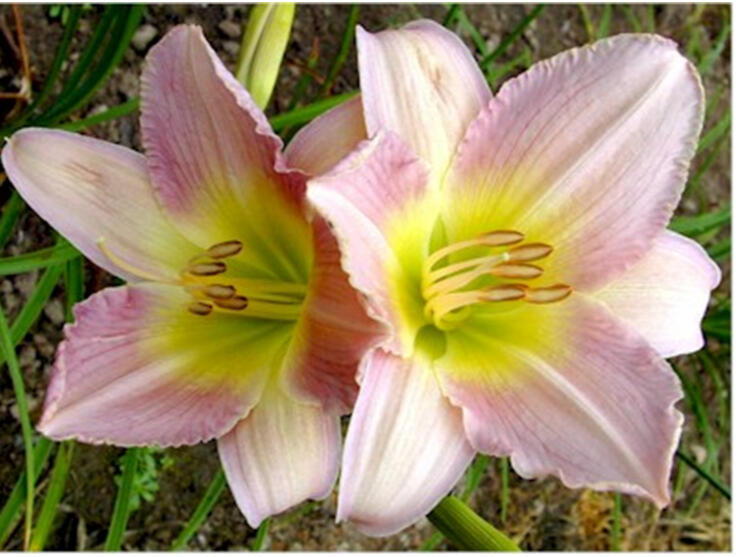
Daylily -
Catherine Woodberry
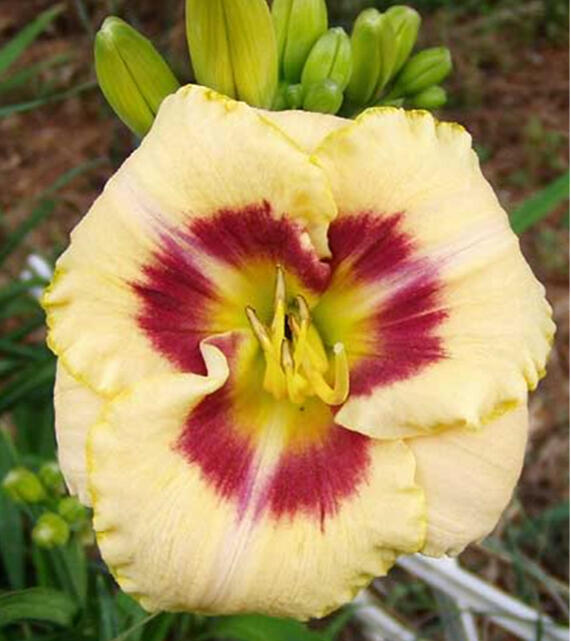
Daylily -
Custard Candy
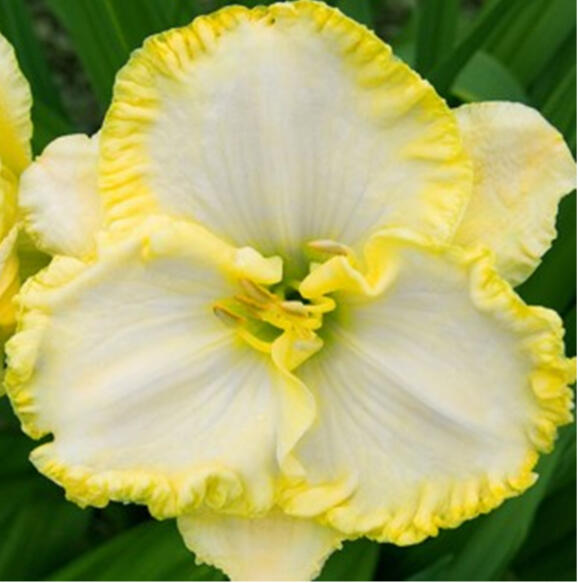
Daylily -
First Knight

Daylily -
Ida's Magic
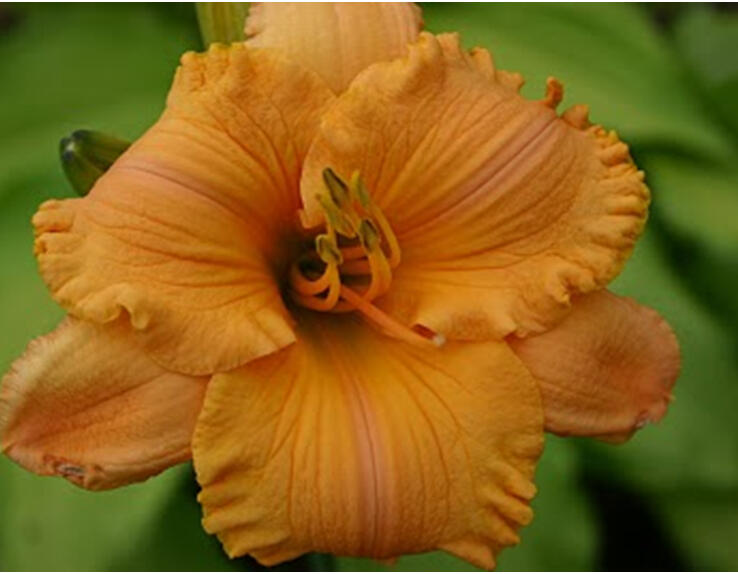
Daylily -
Pure and Simple
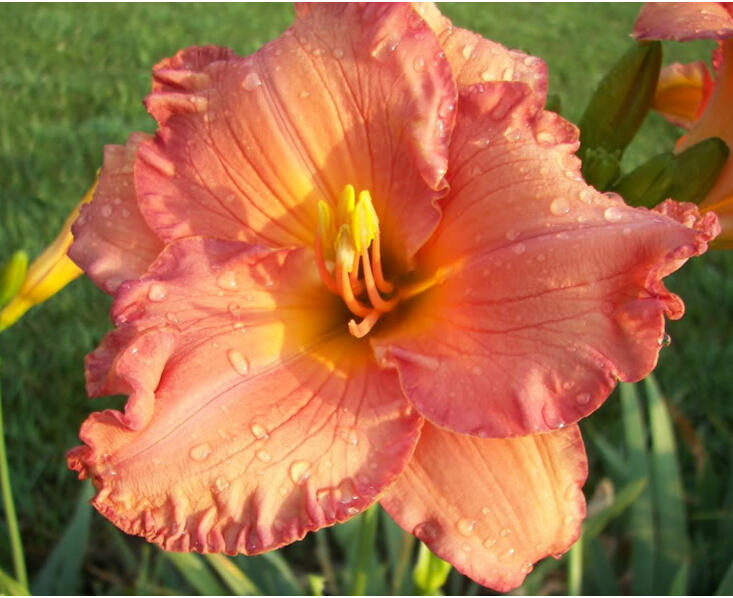
Daylily -
Smokey Mountain Autumn
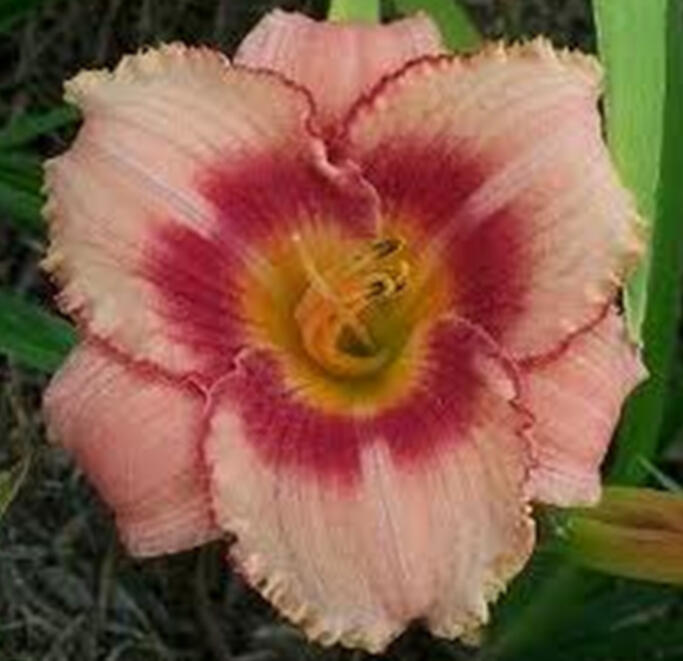
Daylily -
Strawberry Candy
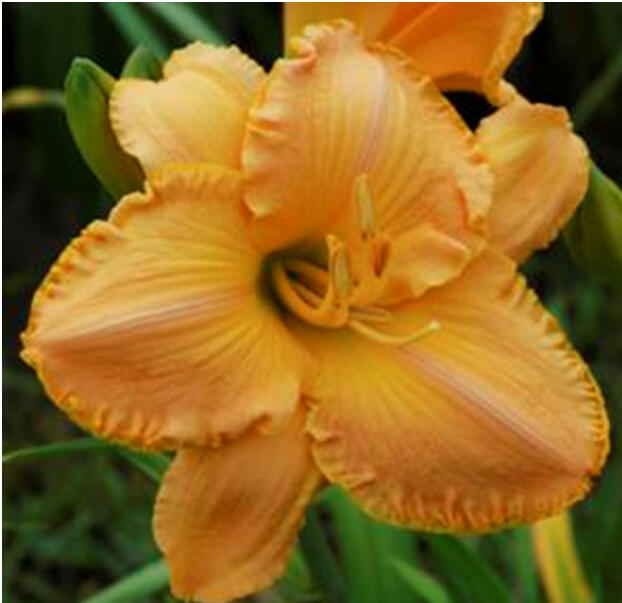
Daylily -
Untamed Glory
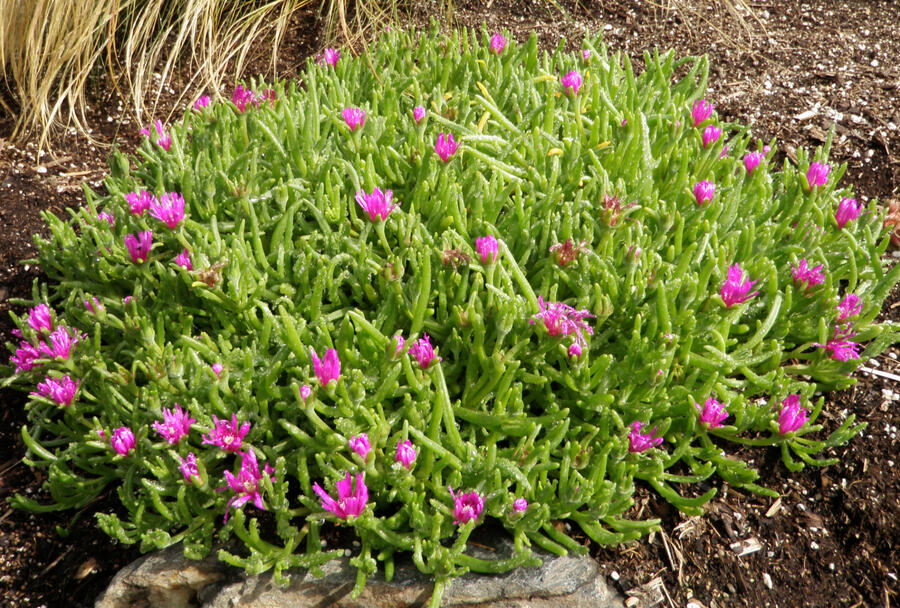
Delosperma cooperi
Hardy Ice Plant
Zones: 6-10
Size: 6-8 inches tall
Sunlight: Full sun
Soil: Well-drained, sandy, gravelly
Bloom Time: June-SeptemberDescription: This ice plant has plump, shiny, bright green leaves forming a nice, rounded mat. Daisy-like, bright pink flowers (to 2” diameter) cover the plant with bloom from June to September. The neon-like intensity of the flower color and length of bloom greatly enhance the ornamental interest of these plants. Attract butterflies.Growing: Plant your ice plant in a sunny, well-drained area. They don’t mind poor soil but they hate to get too wet. The more sun they see, the more they will bloom. Ice plant looks great in rock gardens or in container plantings. Native to South Africa, it is tolerant of drought and ocean spray.
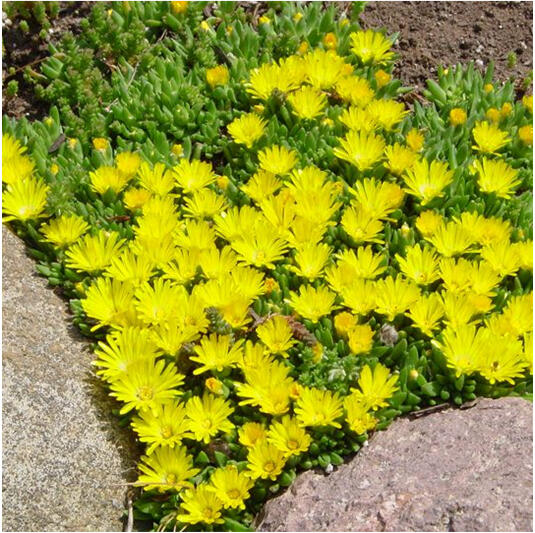
Delosperma congestum
Yellow Hardy Ice Plant
Zones: 4-9
Size: 2 inches tall
Sunlight: Full sun
Soil: well-drained
Bloom Time: Late spring-early summerDescription: Brilliant, yellow single flowers adorn this cold-hardy succulent in late spring. Noted for its vigorous carpeting growth habit, the foliage is succulent and evergreen, with a bright red winter color. Bee and butterfly friendly and deer resistant.Growing: Yellow ice plant spreads to form a solid, colorful mat in full sun to bright shade. This rugged, adaptable plant tolerates rocky, lean soil and thrives with little care, tolerating heat and drought. Fantastic for carpeting a rock garden and for trailing over the edge of a raised bed or rock border. An excellent choice for mountain gardens as well as at lower elevations.
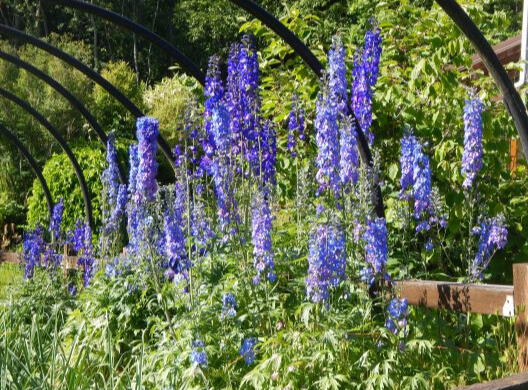
Delphinium ‘Pacific Giant’
Zones: 3-7
Size: 3-6 ft. tall
Sunlight: Full sun
Soil: Well-drained, alkaline
Bloom Time: Late spring-early summerDescription: A classic cottage garden perennial, Pacific Giant Hybrids' are the tallest and showiest of all delphiniums with spikes of semidouble florets that can reach a height of 8 feet. These stately beauties bear pink, blue, lavender, white, and bicolor blooms above attractive cut foliage. Deer resistant; attracts hummingbirds and other pollinators.Growing: Delphinium prefer cool, mild summers with low humidity. Plant them in a spot with adequate moisture and give them a rich loamy soil in a sunny, well-drained position. Plants will not do well in strongly acid soils, so add lime to make soil more neutral. Delphs are outstanding left blooming in the garden or as a cut flower; easy to grow; They bloom from late spring into early summer. Cut old stalks back hard and if the plants have been well fertilized, you should get a second flush of flowers for fall.
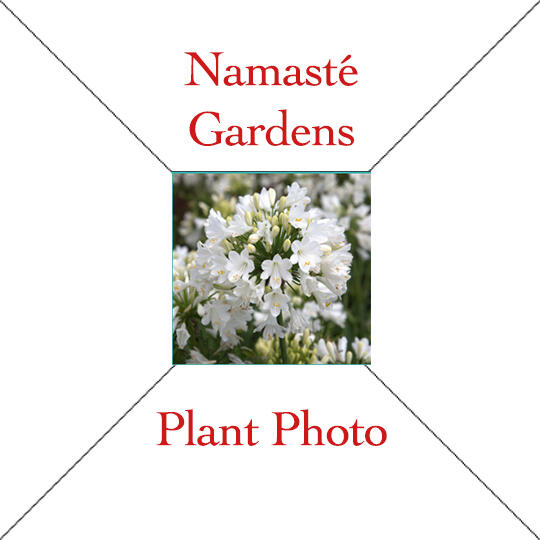
Plant Name
Text
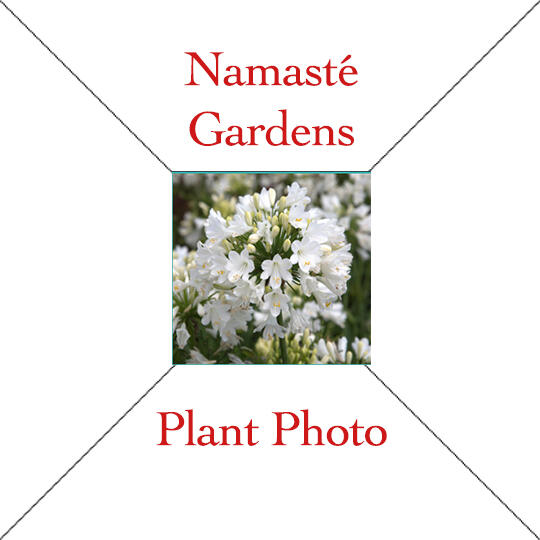
Plant Name
Text
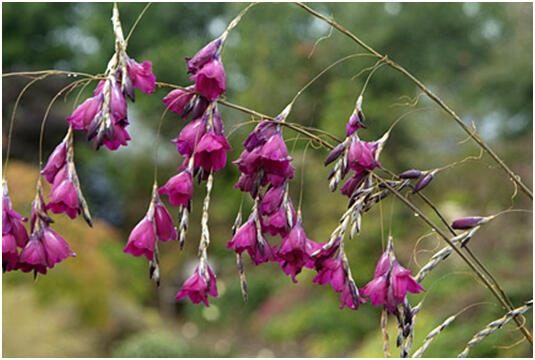
Dierama pulcherrimum ‘Merlin’
Angel’s Fishing Rod
Zones: 7-10
Size: 4ft. tall
Sunlight: Sun
Soil: Gravelly, well-drained
Bloom Time: July-AugustDescription: With its graceful, arching flower stems and bell-shaped blooms, it is easy to understand why Dierama is commonly called Angel’s fishing rod. A member of the Iris family, though it looks more like a grass, this is a perfect perennial for a sunny border or a container. With tall wiry stems up to 4 feet high from which hang the exquisite maroon-purple, flared bells above stiff, linear foliage.Growing: Dierama grow best in gravelly, well drained soil. They make great companions for ornamental grasses in the sunny garden, and they are stunning in larger containers
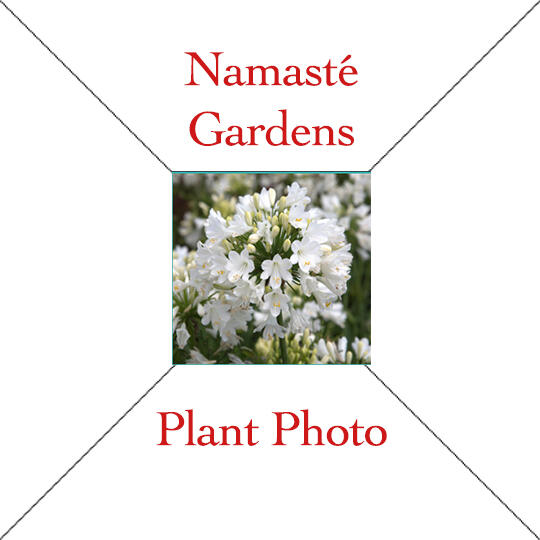
Plant Name
Text
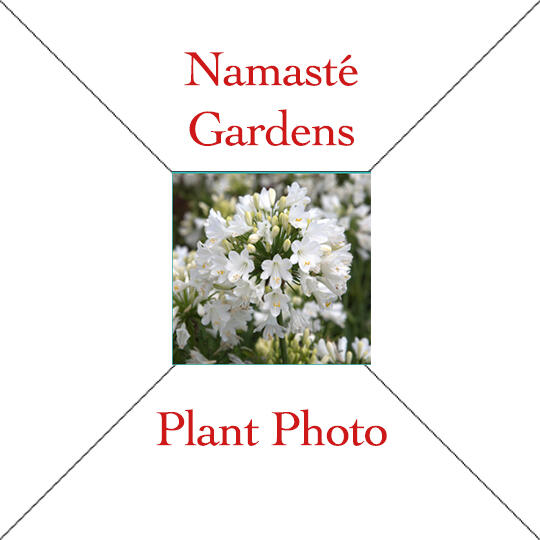
Plant Name
Text
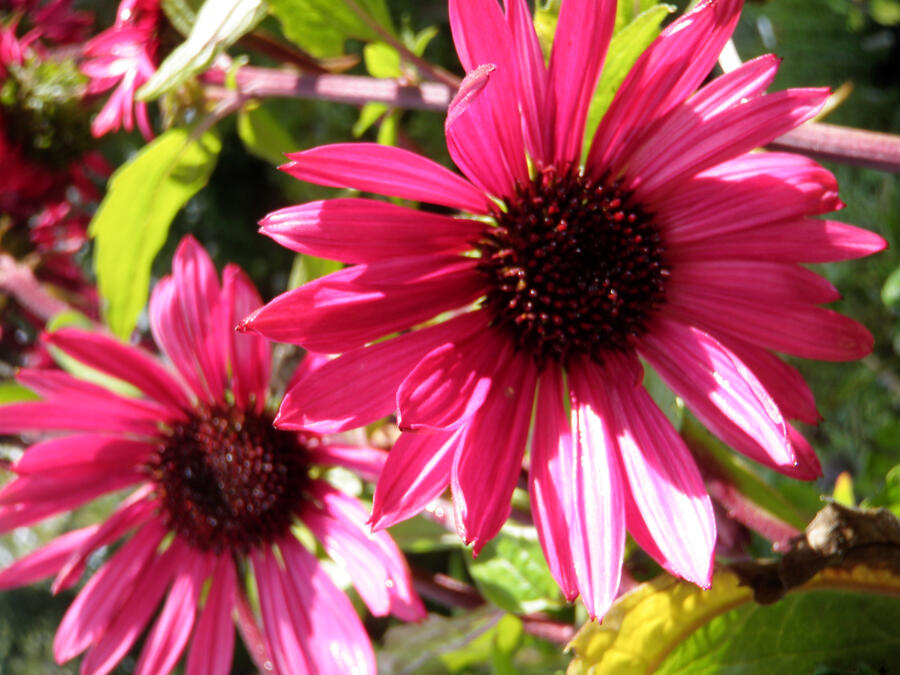
Echinacea purpurea
'Fatal Attraction’
Zones: 3-8
Size: 1.5-2 ft. tall
Sunlight: Full sun
Soil: Well-drained, loamy or sandy
Bloom Time: June-SeptemberDescription: Neon-bright petals of magenta make this Echinacea stand out from way across the garden! An exciting variety combining a compact size with lots of flower power, terrific fragrance, and an entirely new color. Fatal Attraction lives up to its name -- it's utterly irresistible! Its petals are actually upturned for a big show. They surround a large central cone that becomes important to the plant in autumn, when the petals drop and the seeds dry within the cone, bringing songbirds into your garden to feast. And the entire flower is held on a nearly black stem -- utterly unique in the Coneflower family! Flowering begins in late June. Attract birds, butterflies and hummingbirds; deer resistant.Growing: Although the plant prefers loamy or sandy, well-drained soils, it is little affected by the soil's pH. Unable to grow in the shade, Echinacea thrives in either dry or moist soil and can tolerate drought, once established. Good fresh cut or dried flower.
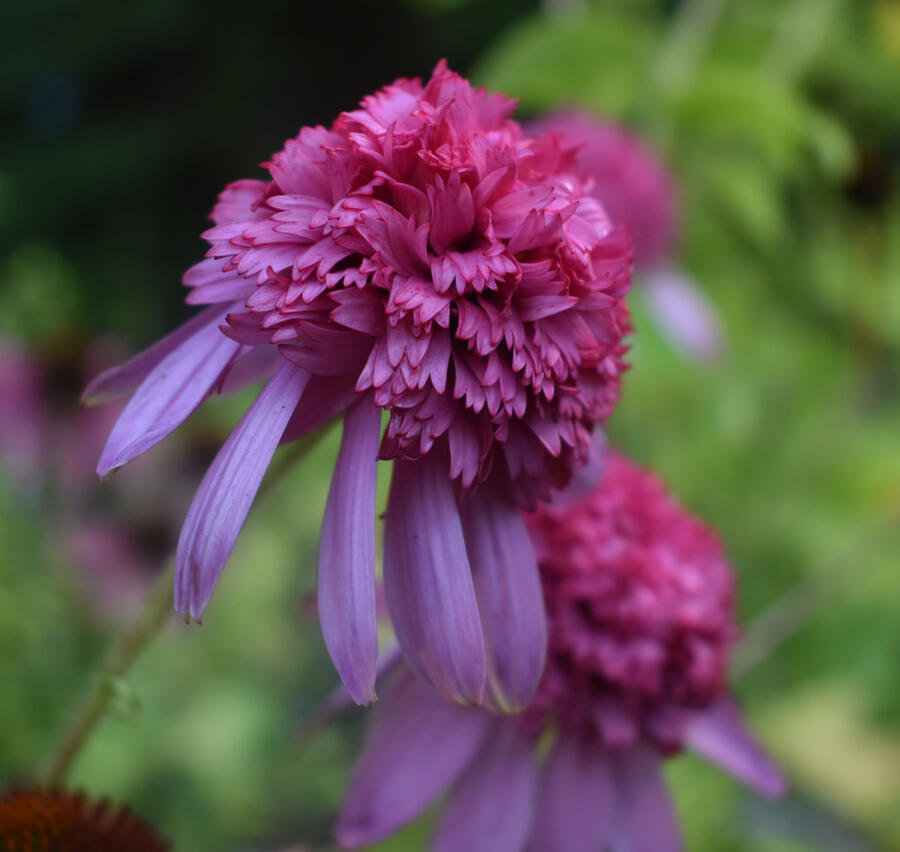
Echinacea purpurea 'Razzmatazz’
Zones: 3-9
Size: 2-3 ft. tall
Sunlight: Full sun
Soil: Well-drained, loam or sand
Bloom Time: Mid to fallDescription: A double-blooming Coneflower! The first of its kind, 'Razzmatazz' features fully double blooms with a central pom-pom of rose pink, surrounded by a circle of magenta-purple daisy petals. Flowers well from midsummer through fall, particularly when faded blooms are removed regularly. They are showy enough to take the place of honor in a large tub or mixed container. They combine beautifully with smaller daisy-flowered perennials, particularly Coreopsis. They are excellent for cutting; expect them to last up to 2 weeks in the vase. Attractive to birds, butterflies and hummingbirds; deer resistant.Growing: Like all Echinacea, Razzmatazz is totally durable, disease-resistant, drought-tolerant, heat- and humidity-loving, and untroubled by pests and diseases. A native species it adapts to locations across the U.S., and doesn't mind less than ideal soil, provided you give it lots of sunshine and reasonably well-drained soil.
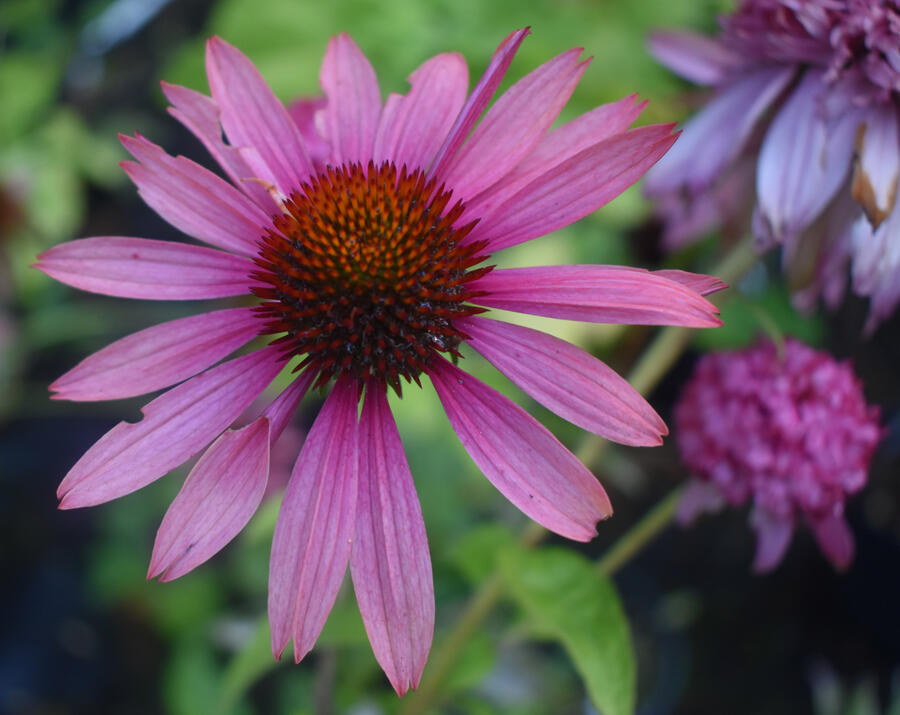
Echinacea ’Sundown’
Coneflower
Zones: 3-10
Size: 3-4 feet tall
Sunlight: Full sun
Soil: Fertile, well-drained
Bloom Time: July-SeptemberDescription: There are a host of new and interesting Coneflowers entering the market resulting from E. purpurea and E. paradoxa crosses. They have branching habits and strong stems, good flower size and form. These are 3-foot tall plants with enormous orange flowers up to 6" across; Once established, they produce an abundance of rose-scented flowers attractive to butterflies.Growing: Great for the back of the perennial border and beautiful in fresh arrangements. This is an exceptionally hardy perennial that is heat and drought tolerant, easy to grow and undemanding; Coneflowers like it sunny and hot. Though they will tolerate light shade, fewer flowers will be produced and the plants will be weakened. Light, loamy soils are best but coneflowers will grow in any well-drained soil.
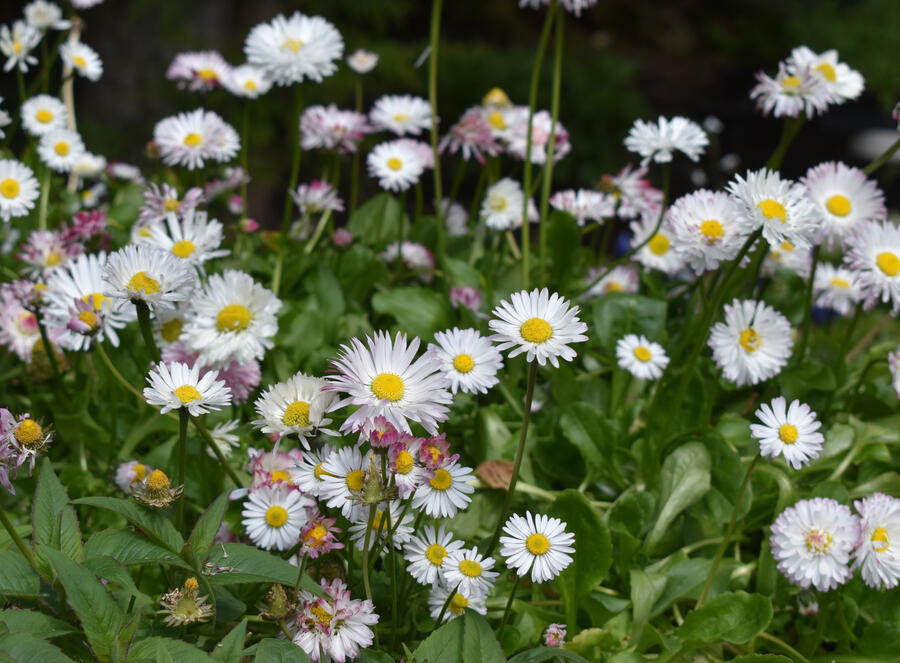
English Daisy
Bellis perennis
Zones: 4-8
Size: 4-6” tall
Sunlight: Full sun to part sun
Soil: Well-drained
Bloom Time: Spring-early summerDescription: English daisies have long been popular for spring bedding, particularly in mild winter regions. ‘Red Tips’ features especially large blooms, the white petals are curled or “quilled”, with striking red tips. B. perenis flowers are mixed white, pink, rose and red. They are deer resistant and loved by bees.Growing: English daisy grows and flowers best in full sun to part sun and fertile, moist soil. Removing spent blossoms will encourage additional blooming. Often used to under plant tulips in large public landscapes, these are excellent anywhere in the garden, as well as in containers or tubs. They add texture and form to alpine & rock gardens or as edging plants. Self-seeding insures they will stay in your garden.
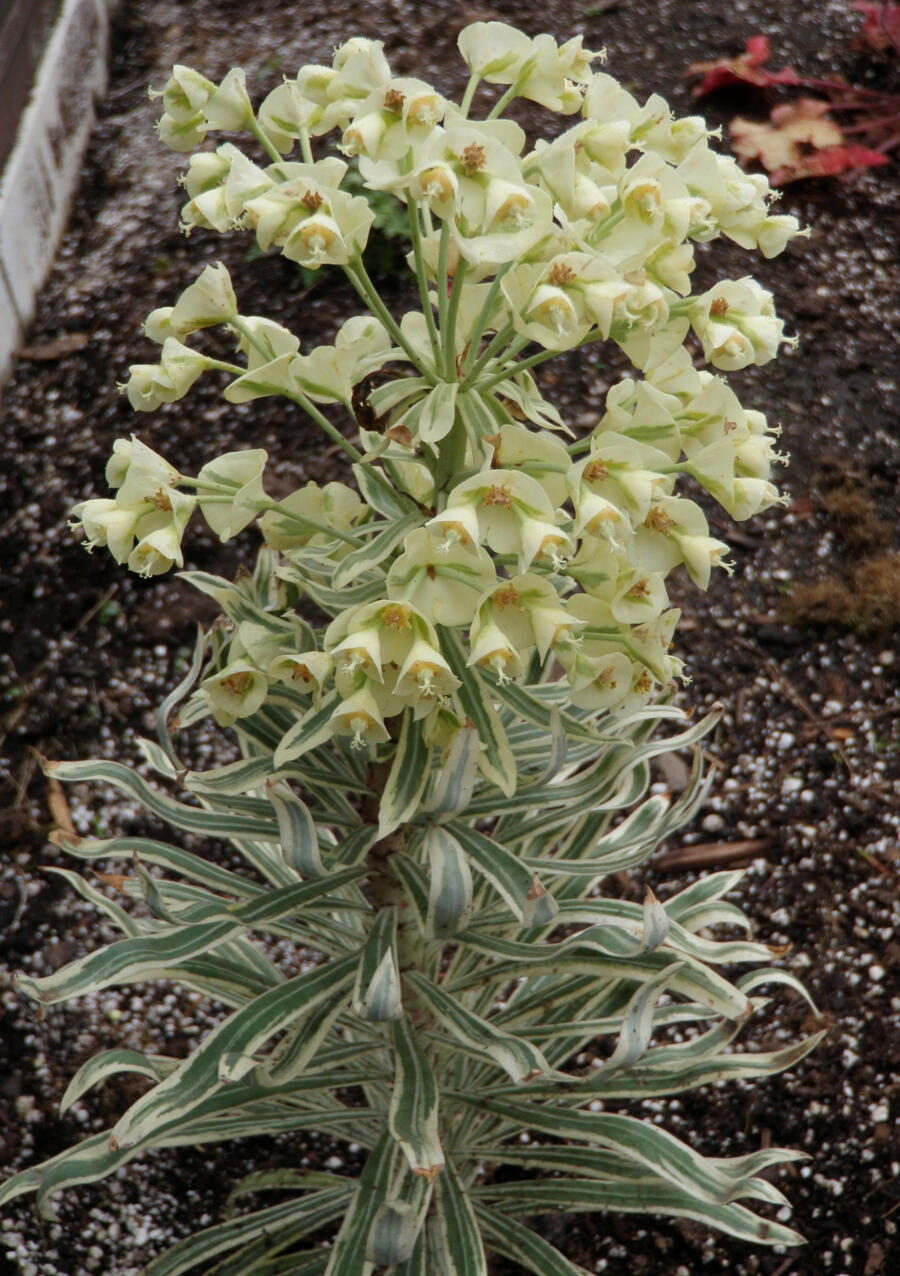
Euphorbia characias
Variegated Spurge
Zones: 7-10
Size: 16-24” tall
Sunlight: Full sun
Soil: Poor, dry
Bloom Time: Late winter-springDescription: An evergreen subshrub with beautifully variegated gray-green leaves edged in creamy white. They have long-lasting broad conical heads of chartreuse flowers late winter through spring. It grows in a mound 16-24” tall making it a good focal point for the garden. Resistant to deer and rabbits; attract butterflies and hummingbirds.Growing: This Euphorbia prefers full sun and dry, well-drained soil. One of the main benefits of growing spurges is their drought tolerance, and that they remain attractive year round. Cut back the stems at the base immediately after bloom.
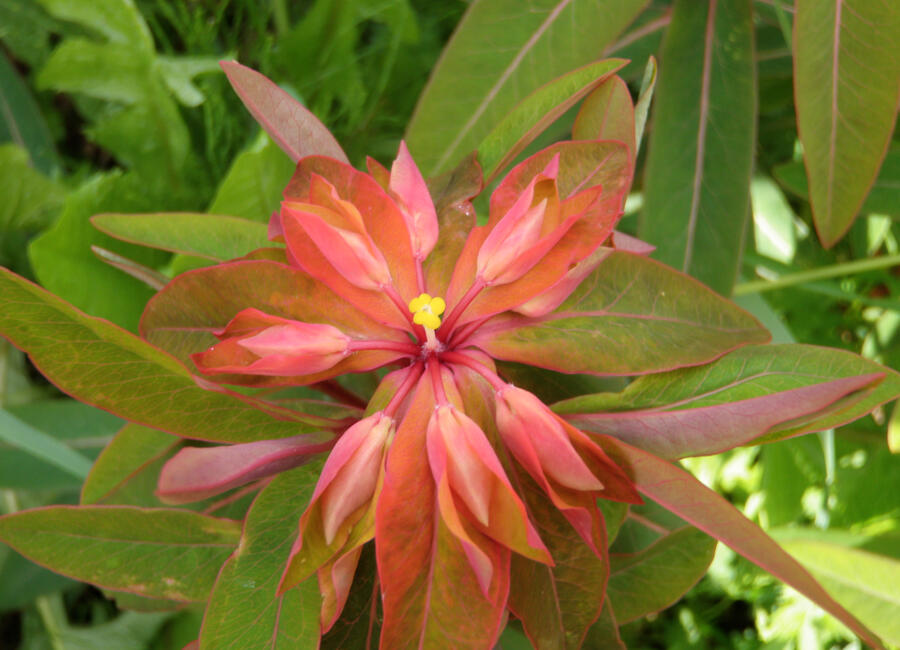
Euphorbia griffithii
'Fireglow'
Zones: 4-9
Size: 2-3’ tall
Sunlight: Full sun
Soil: Moist, well-drained
Bloom Time: SummerDescription: A vigorous rhizomatous plant with bronzy pink tipped leaves, colorful reddish stems and leaf margins, burnt orange flower bracts and magnificent fall color giving ‘Fireglow’ a cheerful rosy glow through most of the season. Its thick, pithy stems grow 3’ tall spreading to form thick patches that catch the eye. Resistant to deer and rabbitsGrowing: ‘Fireglow’ grows best in a sunny location with average garden soil. It is a good plant for the sunny, sheltered border. Grow them en mass for greatest effect. They make good cut flowers; just be careful of the milky sap which is a skin irritant.
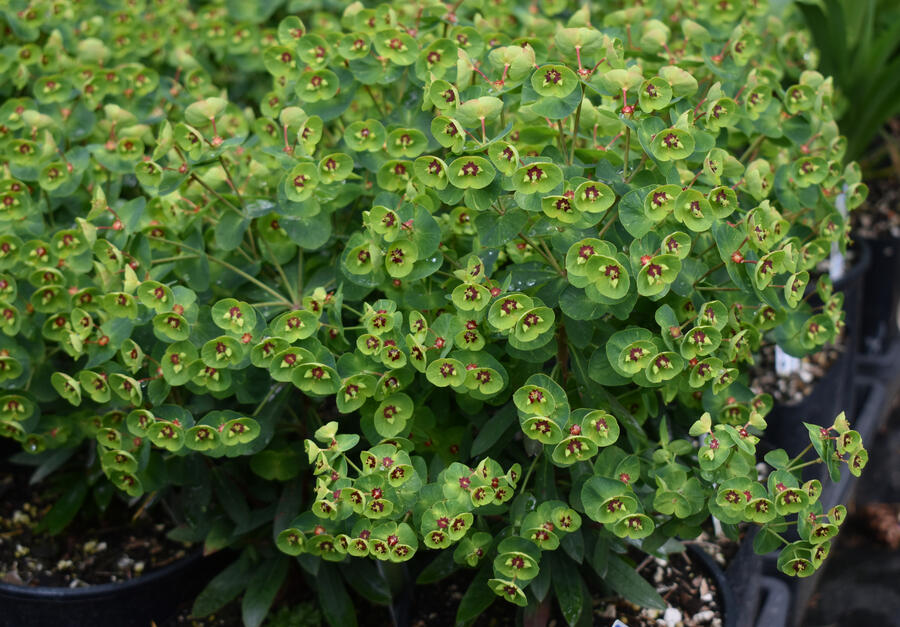
Euphorbia martinii
Zones: 5-9
Size: 18-24” tall
Sunlight: Full sun
Soil: Moist, well-drained, gravelly
Bloom Time: Spring-mid summerDescription: This dwarf, evergreen sub-shrub is a hybrid between E. amygdaloides and E. characias. It has dense sprays of chartreuse flowers which are comprised of large, attractive cup-shaped bracts with a purple eye in the middle. Prune them after flowers have faded to prevent legginess. The flowers open in early spring and persist to midsummer. Resistant to deer and rabbitsGrowing: Drought tolerant and easy to care for. Euphorbia grows best in ordinary, well-drained soil and full sun. Used in beds and borders, rock gardens and in containers. Tolerances: sun – heat – pollution –drought – diseases - pests – dry soil – rocky soil – nutrient poor soil.
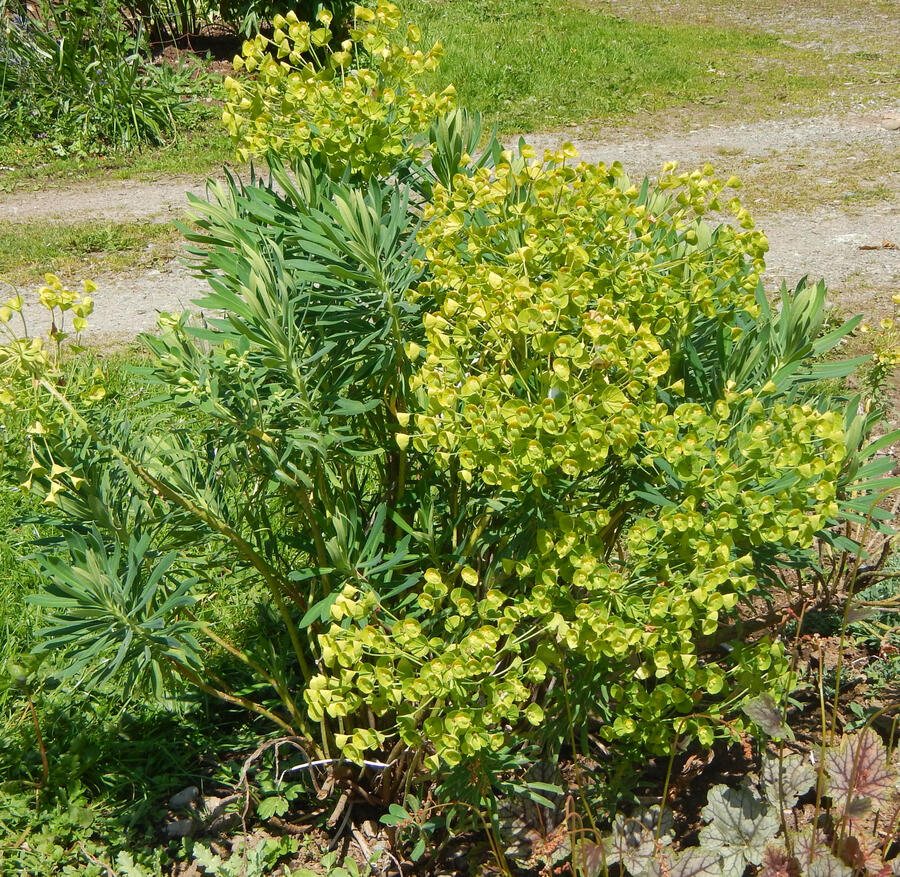
Euphorbia characias ‘Wulfenii’
Zones: 6-8
Size: 2-4 ft. tall
Sunlight: Full sun
Soil: Dry, well-drained
Bloom Time: Spring-summerDescription: Almost prehistoric in appearance, this plant looks like something right out of Jurassic Park. This Euphorbia forms giant clumps standing 4 ft. high. Its narrow oval blue-green leaves surround stems in bottlebrush fashion leading to clusters of cup-shaped chartreuse flowers. The flower bracts remain attractive for several months. They secrete a toxic milky sap when cut or broken. On the positive side, its toxicity is a deterrent to gophers, voles and moles and it is resistant to rabbits and deer.Growing: Grow in full sun with little to moderate water. It thrives in dry to medium, well-drained soils and will tolerate drought conditions. Cut stems to the ground when the flowers fade.
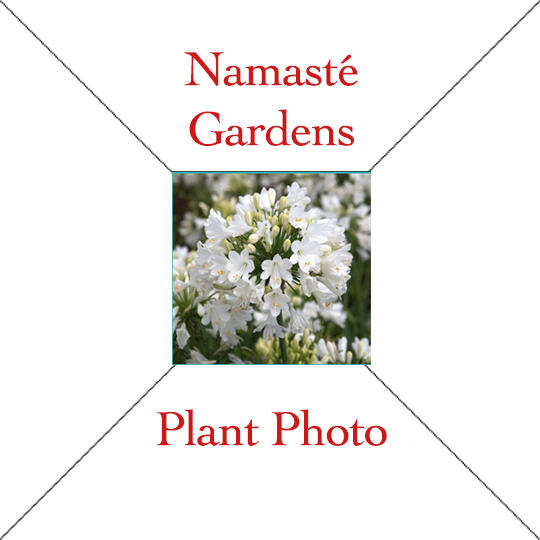
Plant Name
Text
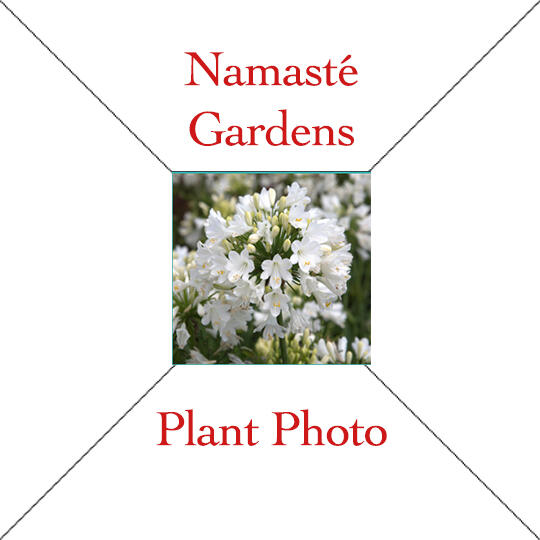
Plant name
Text
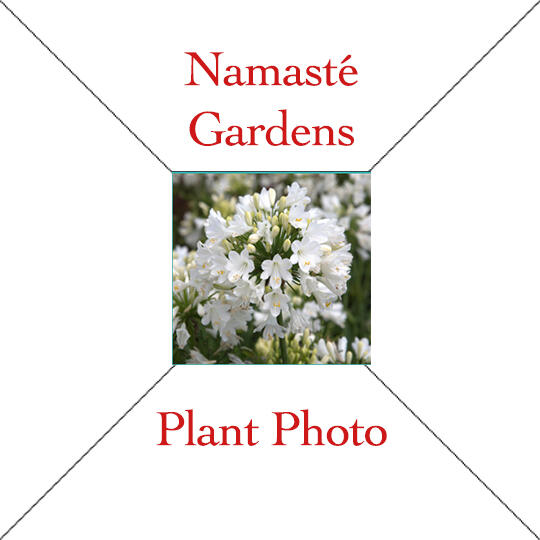
Plant name
Text
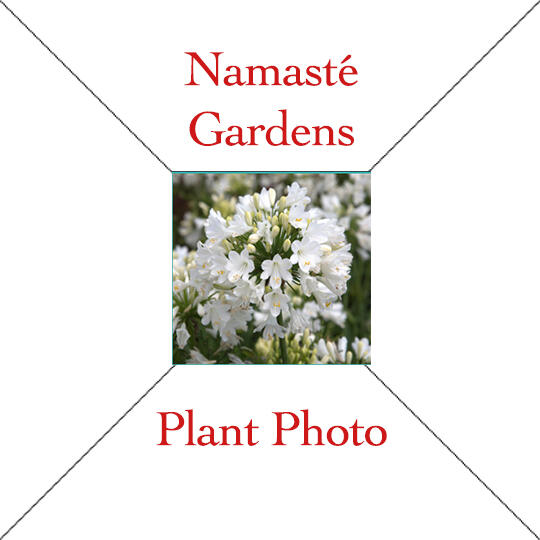
Plant name
Text
HARDY FUCHSIAS
Hardy fuchsias are stalwarts that bloom from midsummer through first frost, with foliage as fresh as the first day it came on. Fuchsias in the ground need light; most prefer FULL SUN at our northern latitude; minimum is 1/2 day; Plant them in a reasonably well-drained location, but plant deeply and let the soil fill in as they grow. Fuchsias love food, so in March or April when they pop up from the soil and/or leaf out, feed them. Water in the morning to avoid rust. They’ll droop or get dry leaves just like other perennials when thirsty. A good watering once a week keeps a lot of plants happy in the summer. After the first frost, do NOT prune them, except maybe to make them look neater in the spring. The stems do protect them from cold. Mulch is advantageous for keeping down weeds, holding moisture, and looking tidy, once established. They do not need extra mulch to keep from freezing in winter. The hummingbirds fight for the flowers, setting up territories around them.
Text
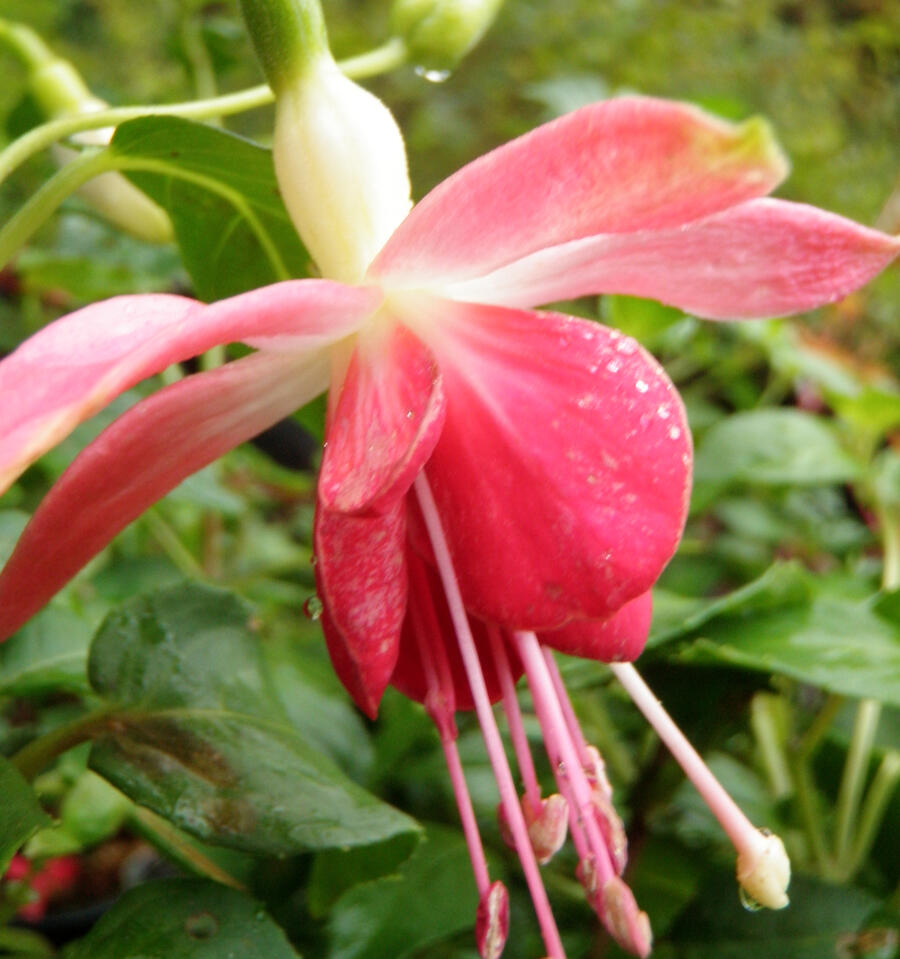
FUCHSIAS -
Celia Smedley
This relatively low growing (~2 ft. tall) fuchsia has large flowers for a hardy type. I call it my birdcage fucsha because the narrow sepals look as if they have a little bird trapped inside when they first open up.
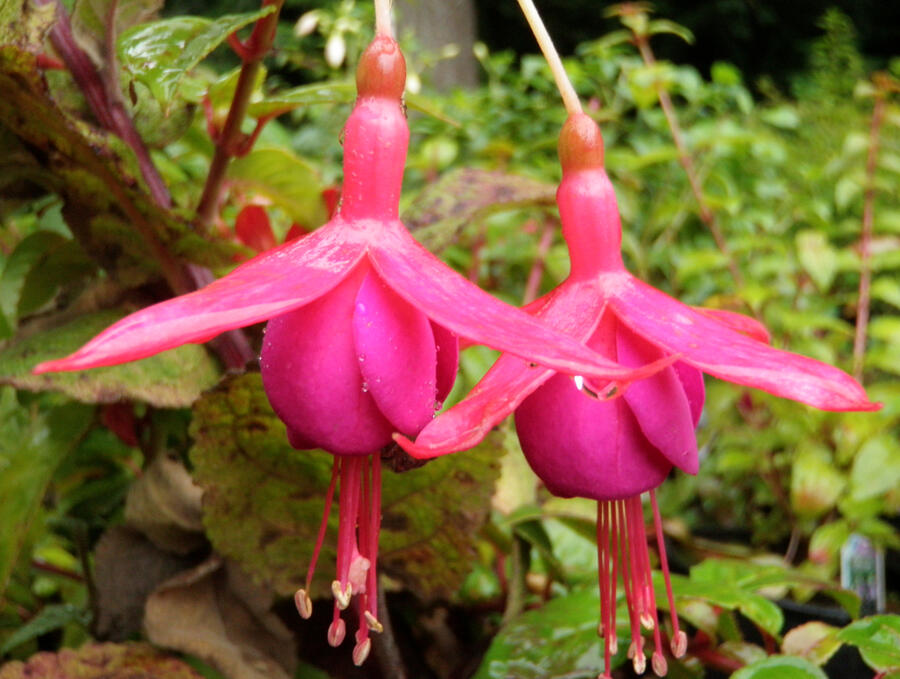
Fuchsia 'Chilerton Beauty'
This large flowered fuchsia of pink and darker pink is relatively short for the species (~2' tall), but it gets a wider spread of ~3'.
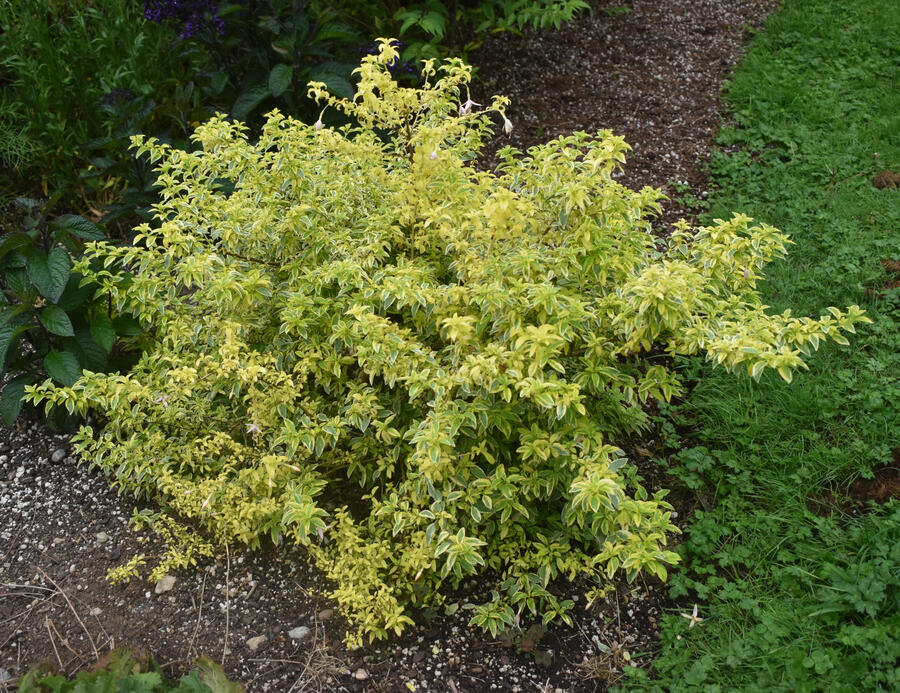
Fuchsia magellanica ‘Enstone’
Enstone is low-growing fuchsia with attractive variegated yellow and green leaves and small white flowers.
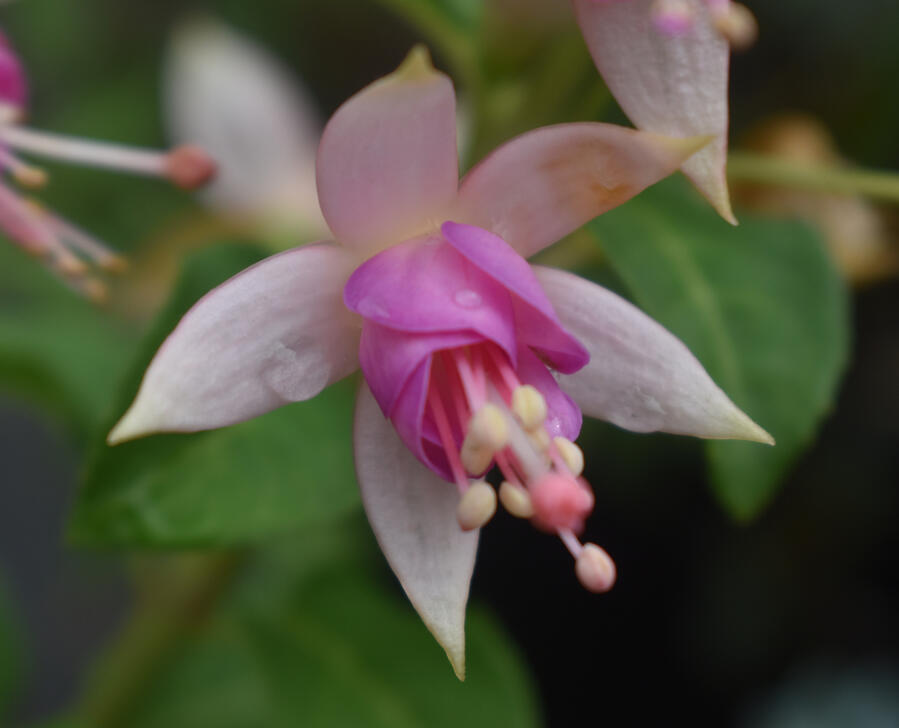
Fuchsia 'Erecta Novelty’
This small, compact Fuchsia has delicate light pink flowers.
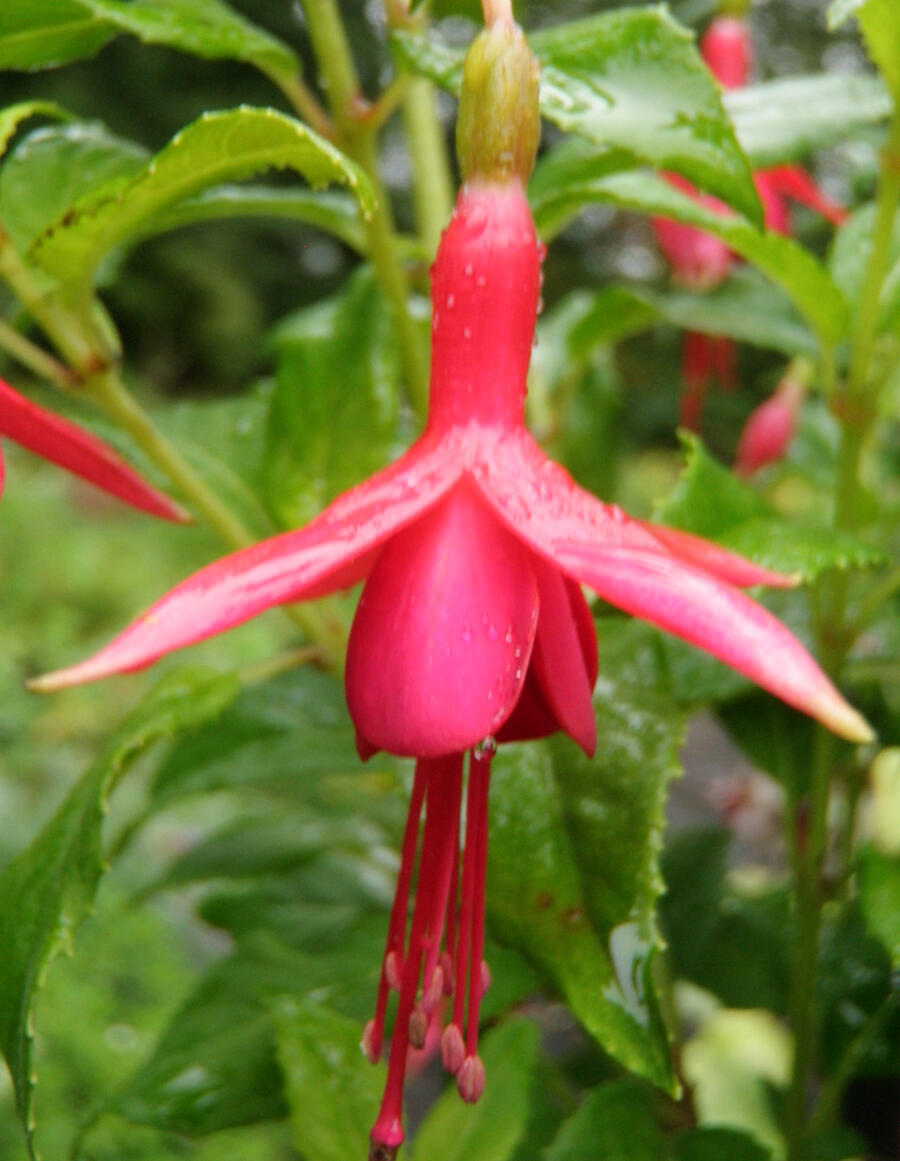
Fuchsia 'Flash'
This taller fuchsia (~ 4') has red on red flowers.
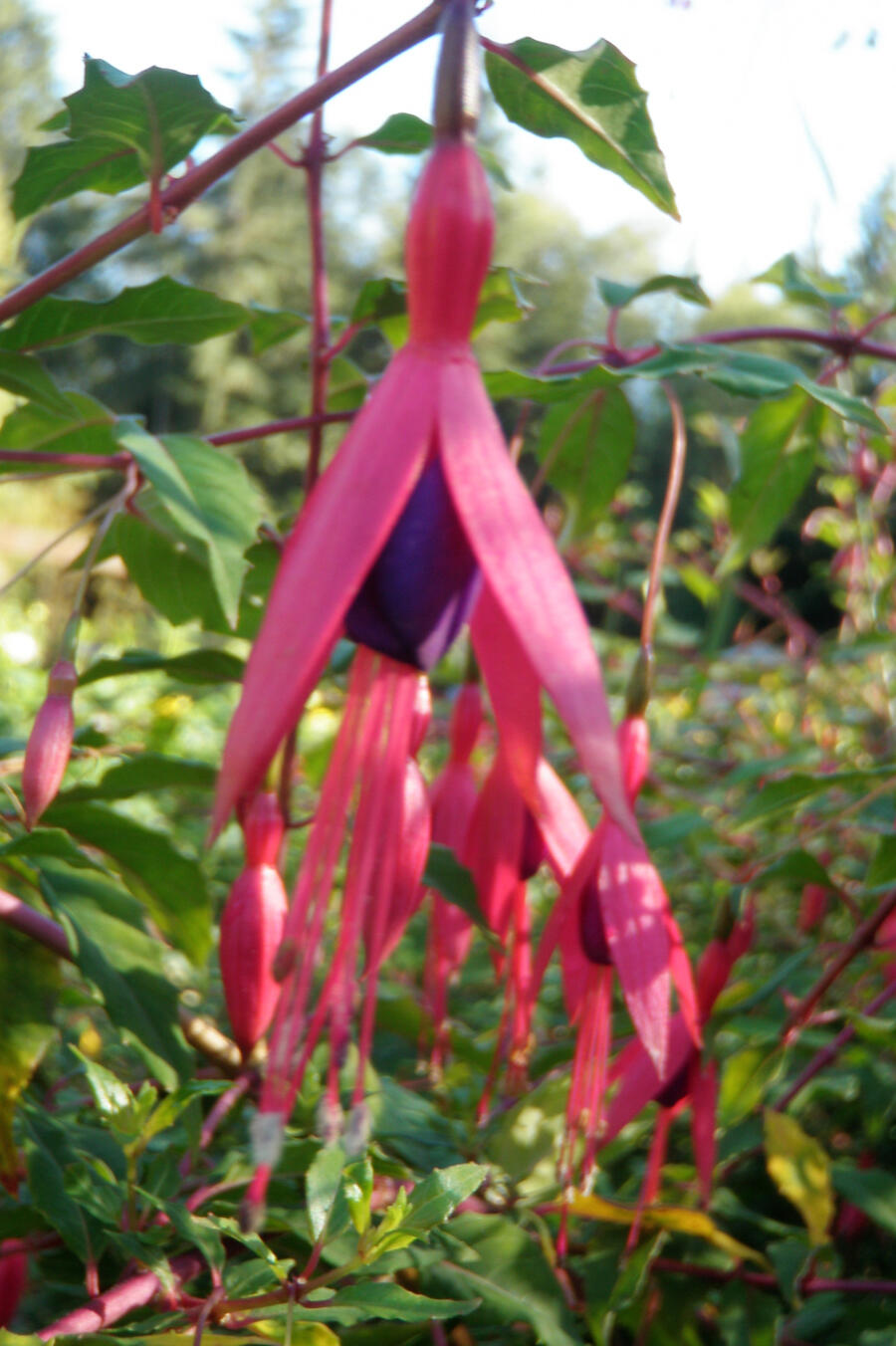
Fuchsia 'Lady's Eardrop'
I am especially partial to this one because it was one of the first plants I put in my garden as a little girl. It is the tallest grower in my garden getting ~ 6' tall. The flowers are narrow, pink with purple centers.
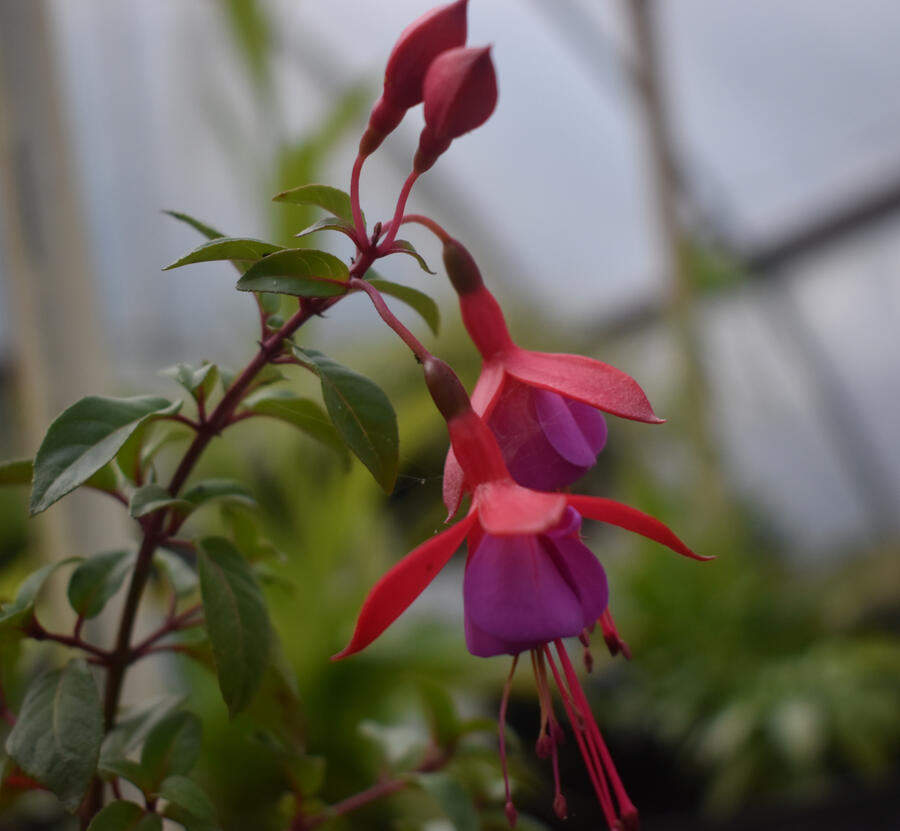
Fuchsia 'Peter Pan'
Peter Pan is the quintessential fuchsia you picture when thinking about them. It has perfect plump red and purple flowers and a nice bushy growth habit.
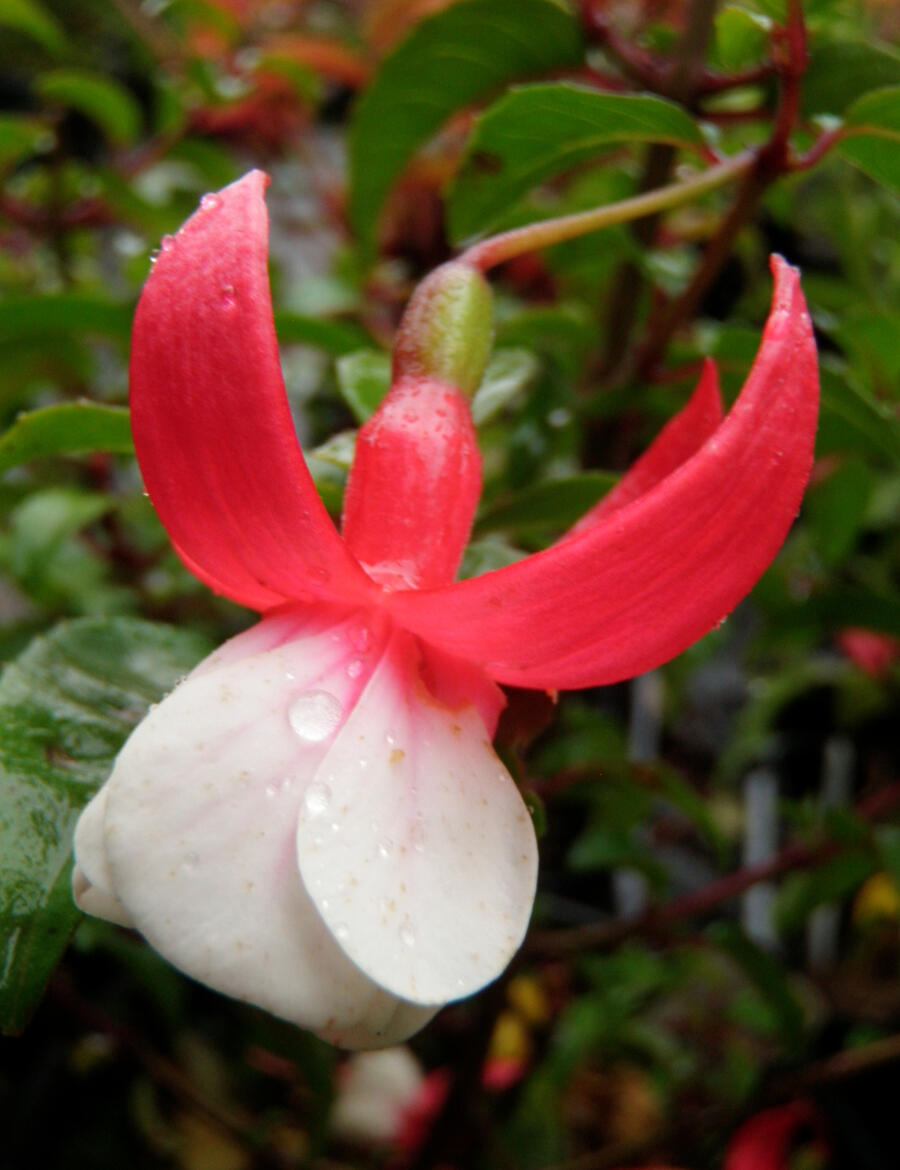
Fuchsia 'Santa Clause'
Seeing Santa Clause in bloom with its fat red and white flowers, always puts a smile on my face.
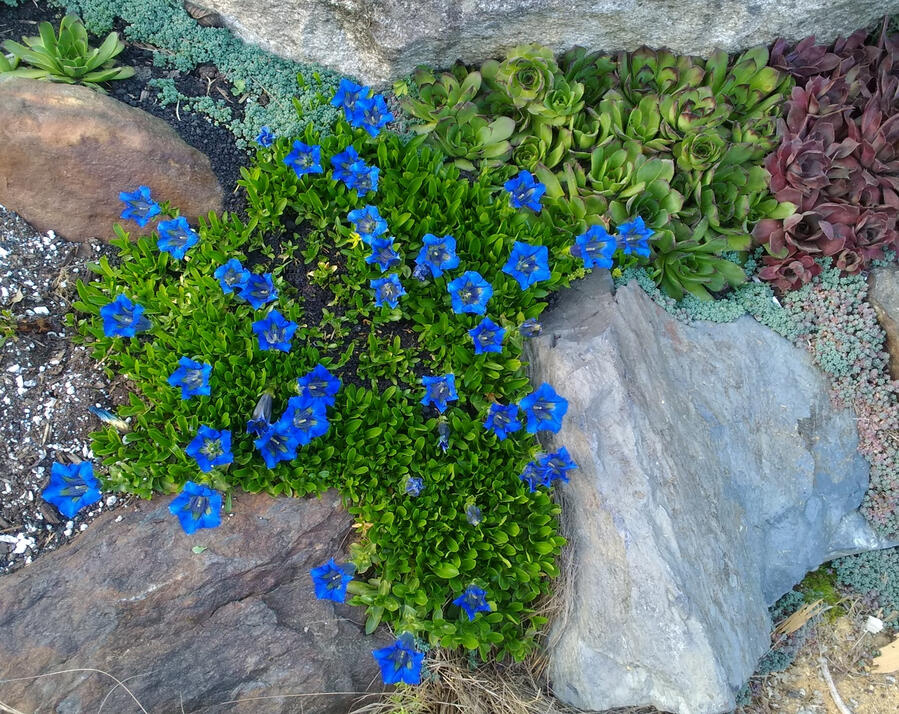
Gentiana acaulis
Trumpet Gentian
Zones: 3-8
Size: 2-3” tall
Sunlight: Full sun
Soil: Well-drained, acidic
Bloom Time: Late spring-early summer; fall re-bloomDescription: Trumpet Gentian is a beautiful mat-forming species with eye-catching upturned trumpet flowers of brilliant deep blue. It spreads outward by a slow increase in its rosettes producing mats of glossy, dark evergreen foliage. The trumpets are spotted green inside and the flowers have metallic flakes in their petals. Height is only 2-3 in. Flowering is normally late spring to early summer, but I have plants blooming as early as February and they can re-bloom throughout summer and fall. It is native to the Alps, Balkans and Pyrenees and is found growing in a variety of habitats from pastures to rubble and scree and in coniferous woodlands at sub to alpine levels.Growing: Perhaps the easiest species for novice rock gardeners to try, this Gentian is not difficult to please. It likes consistent moisture, but a well-drained spot seems essential. It likes acidic soils in full sun for best flowering. It is exceptionally hardy.
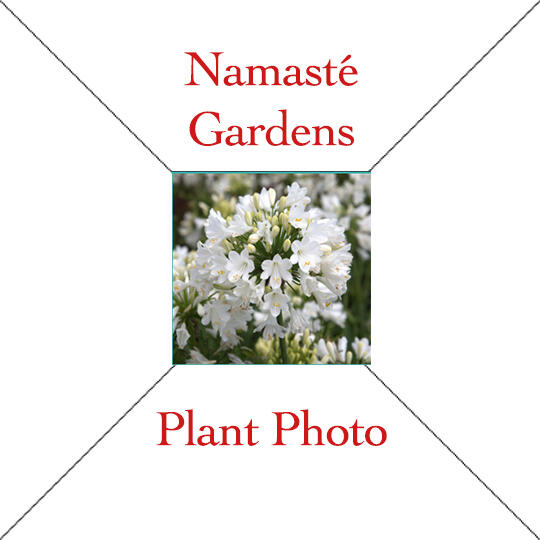
Plant Name
Text
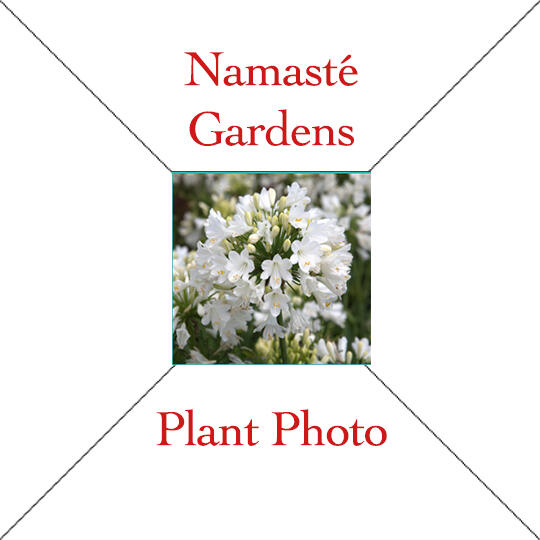
Plant Name
Text
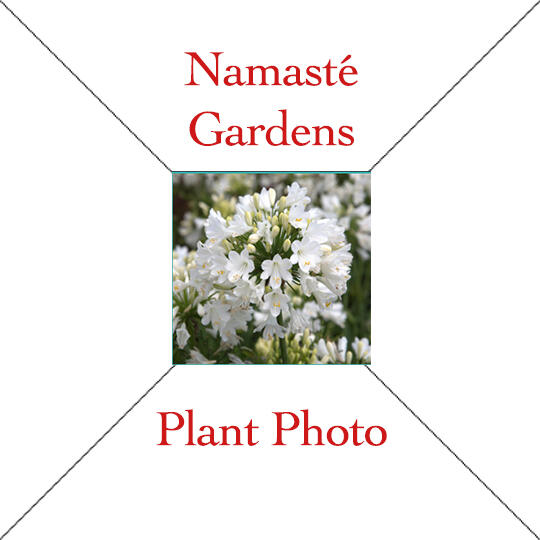
Plant Name
Text
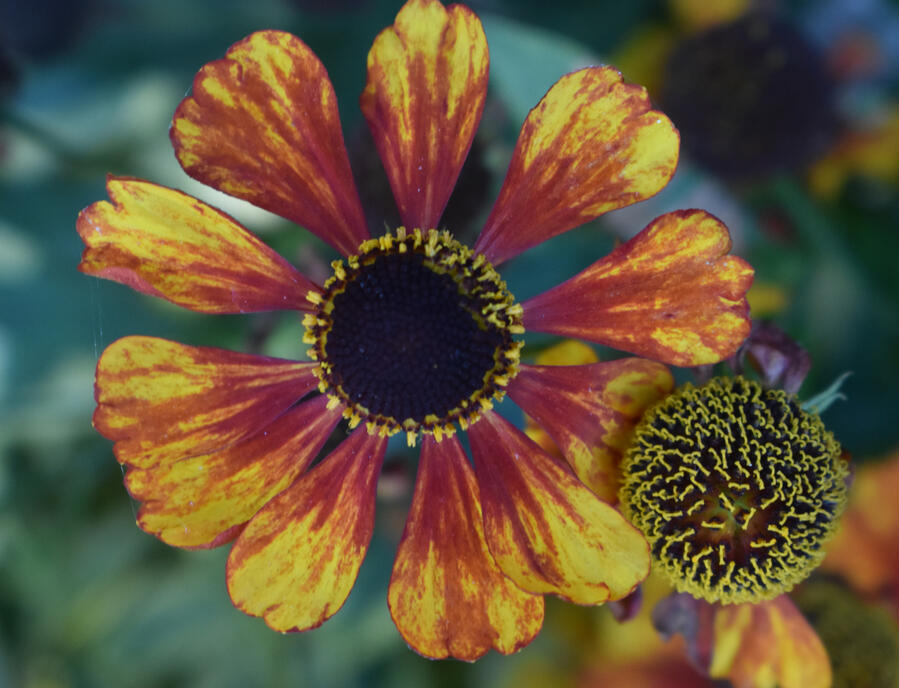
Helenium ‘Chelsey’
Zones: 4-8
Size: 32” tall
Sunlight: Full sun
Soil: Wet, fertile
Bloom Time: July-AugustDescription: This is a form of Helenium with unique, large bi-colored, flowers. The crimson petals have bright yellow highlights with non-drooping petals and the thick, sturdy stems so they don’t bend over like they used to. They are Ideal for cutting. Blooming starts in July and runs through August with those amazing bright colors. Helenium continue to look great when the petals fall because the seed heads remain behind giving an interesting textural component to the garden. Rabbit resistant.Growing: Chelsey needs a few things done properly if you’re going to grow her well. She wants full sun, and although you might squeeze by with a bit of morning shade, it is really a good idea to give as much light as you can. The big key to success with Helenium is providing it with adequate moisture. This plant likes wet soils. It will not grow well with dry soils and tends to winterkill. Give it a rich, organic soil (think pond side here) with regular doses of water and this plant is going to be a star performer. It makes an excellent border plant. It is the perfect plant to encourage pollinators to the garden
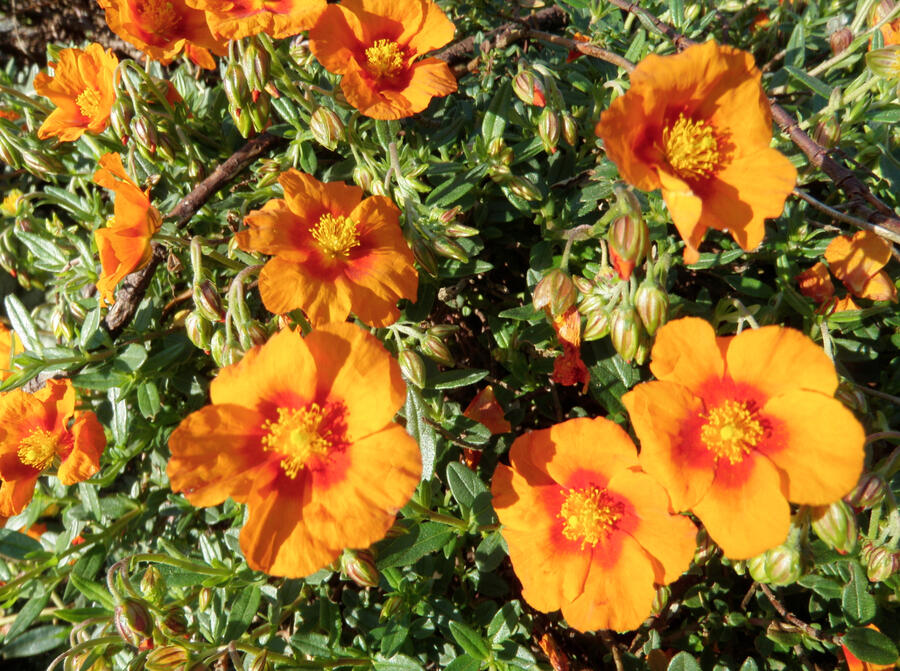
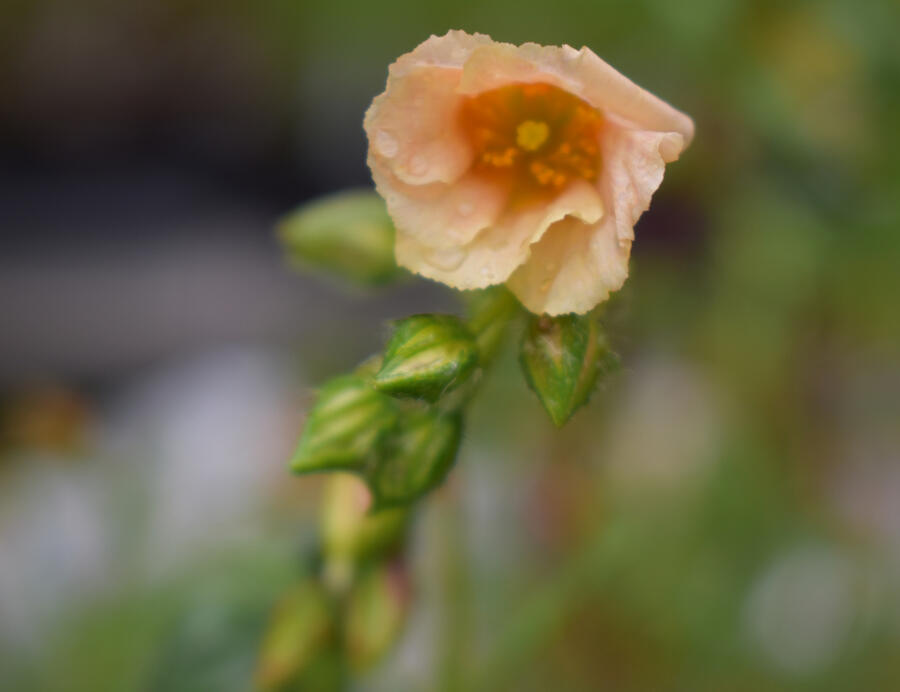
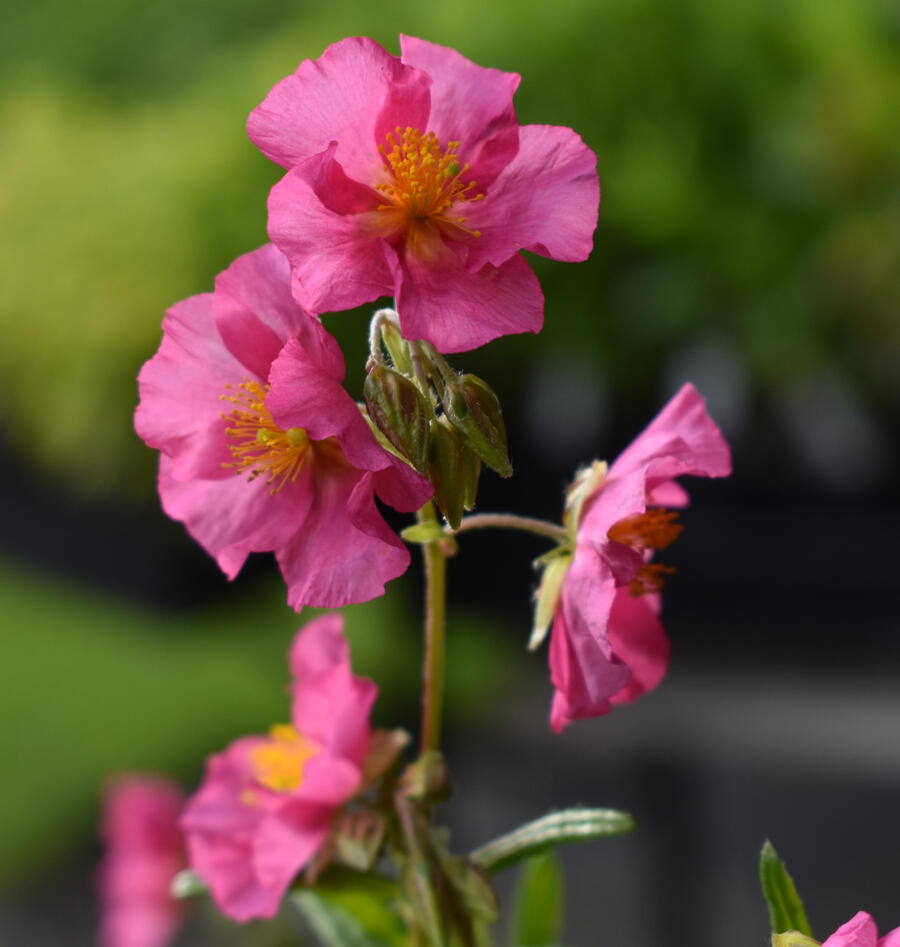
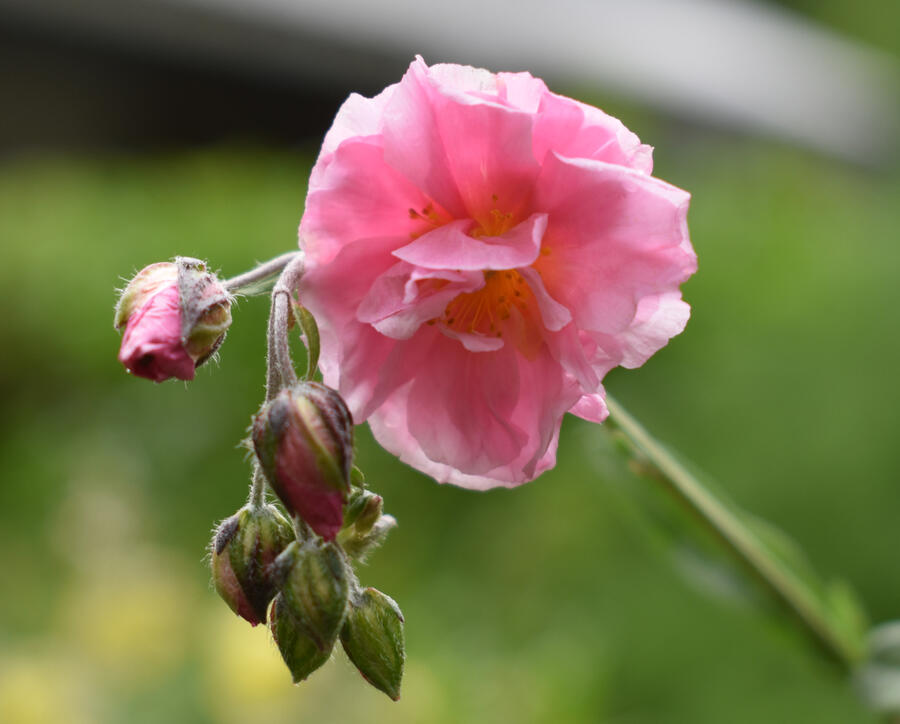
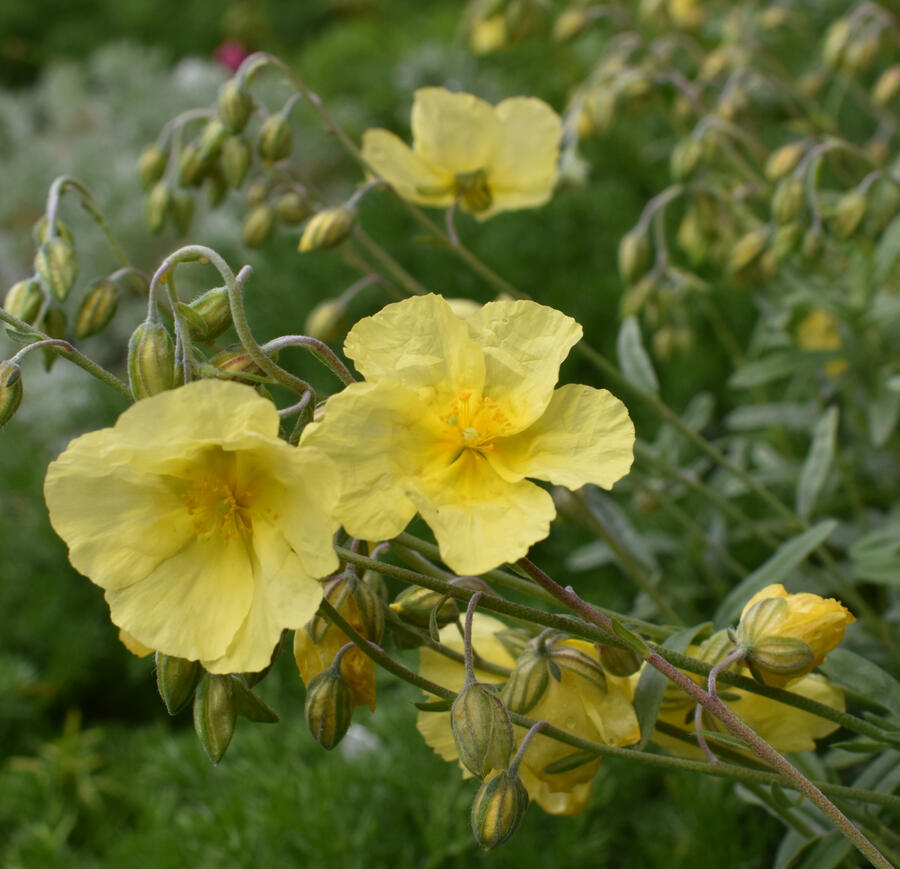
Helianthemum
Sun Rose
Zones: 4-9
Size: 6-12” tall
Sunlight: Full sun
Soil: Wet, fertile
Bloom Time: July-AugustDescription: These low growing evergreen shrubs only reach 6-12” tall with a 3 ft. spread. Their brilliant 1” blossoms clustered single or double in yellow, pink, apricot, white and orange literally smother the plants blooming from May–July. Once established, these Mediterranean natives are very drought tolerant and quite tenacious, without being invasive. Cut them back after flowering to shape them and promote new growth. Deer and rabbit resistant.Growing: Helianthemm prefer cool summers and warm winters which makes them good candidates for the Pacific Northwest. They will grow in nutrient poor soil and need full sun in a dry location. Plant them in a rock garden or allow them to tumble over a dry rock wall. They work well as a container plant on a sunny patio or use them as a ground cover on a bank for erosion control. Because of its ground-hugging nature, sun rose makes an excellent low ground cover for a sunny location.
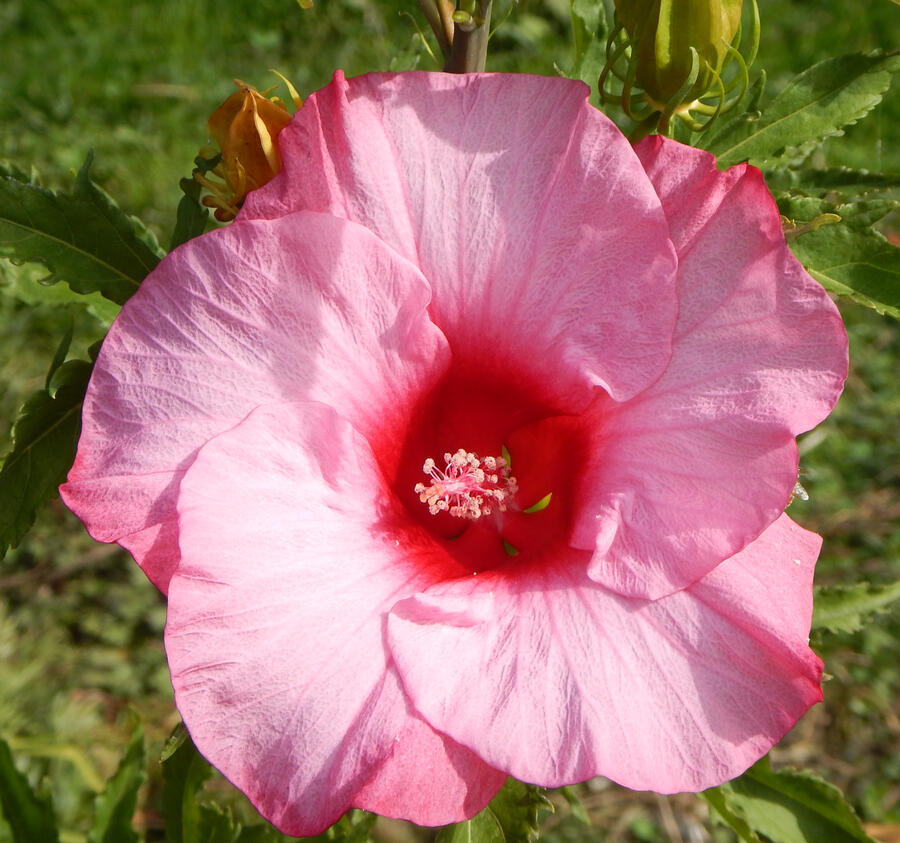
Hibiscus
‘Lady Baltimore’
Rose Mallow
Zones: 4-9
Size: 5 ft. tall
Sunlight: Full sun
Soil: Well-drained, moist
Bloom Time: SummerDescription: Glowing pink flowers, ruffled and with deep red eyes, decorate this hardy Hibiscus from mid through late summer. The plant form is compact and dense, making it attractive throughout the growing season. It has a plant height of 5' and a spread of 3-4'. The striking pink flowers range up to 10" in diameter and butterflies and hummingbirds love them. The dark green leaves make a wonderful contrast. Like most other hibiscus, Lady Baltimore sleeps late and is one of the last plants to emerge in the spring. Don’t worry, she's fast and will catch up with other plants in just a few weeks. Deer resistant.Growing: Hardy Hibiscus needs rich, acidic soils, consistent moisture and full sun. It thrives best in well drained soil, amended with organic matter. Mulch them during winter to protect roots from frost. Prune the stems to about 3-4” in late fall or early spring for bushier growth. Plant them in groupings of 3 or more for best effect. Areas that remain moist, such as the banks of a stream or pond are ideal or plant them in shrub beds or entranceways for a most dramatic effect.
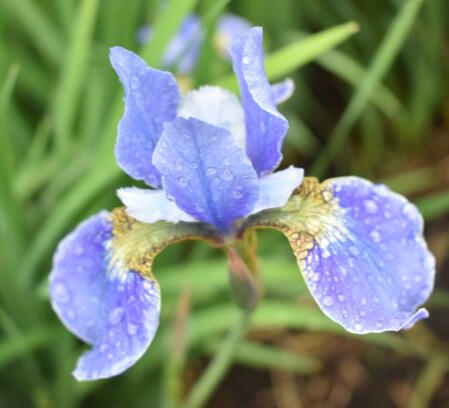
Iris sibirica
Blue Siberian Iris
Zones: 3-8
Size: 2-3 ft. tall
Sunlight: Sun
Soil: Well-drained, moist
Bloom Time: Late spring-early summerDescription: Siberian irises are among the easiest of all types of iris to raise and bloom in the temperate climatic zones. Their graceful stems, blooms, foliage and neat habit of growth make them the most adaptable irises for the perennial border and for landscaping. They bloom in colors of white, cream, blue and purple in my garden. When established they require less attention than almost any other perennial and are virtually free from disease or insect troubles and make charming cut flowers. Deer and rabbit resistant.Growing: The original Siberian Irises came from Central Europe and Asia, where they grew as meadow plants. The present day hybrids will do well in almost any type of soil, whether it is clayey or sandy, provided adequate amounts of humus are mixed into the soil and the drainage is good. They bloom best in a sunny location. Not only are Siberians unsurpassed for delicate beauty when planted en masse, but individual clumps of them make excellent companion plants in the perennial border. While they are not water-loving like the Japanese Iris, they will tolerate water better than the Bearded Iris and look nice planted next to pools or bogs or water gardens
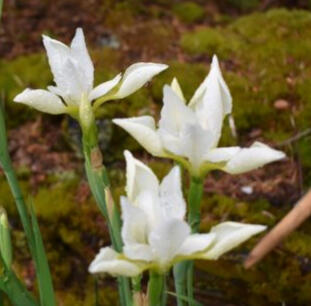
Iris sibirica
White Siberian Iris
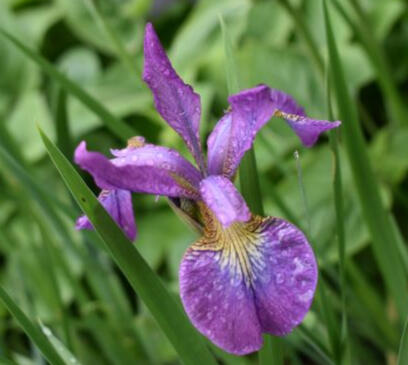
Iris sibirica
Purple Siberian Iris
Lavatera thuringiaca
Tree Mallow
Zones: 7-10
Size: 5-6 ft. tall
Sunlight: Full sun
Soil: Sandy, loamy
Bloom Time: Late summer-early fallDescription: Tree mallow is the kind of plant your neighbors are going to want to know what it is because it is a show-stopper. It gets very bushy and up to 5 or 6 ft. tall and covered in blossoms. The satiny, hibiscus-like blooms range in color from white to pale pink to deep rose. Mallows are a magnet for bees and butterflies.Growing: Lavatera grows best in full sun and well-worked, well-drained, sandy, loamy soil. It tolerates most soil types and drought. Avoid planting in areas that are subject to cold, drying winds. Extremely long-flowering, this vigorous, semi-evergreen mallow will thrive in a well-drained shrub or mixed border, but needs plenty of space to spread itself out as it puts on tremendous growth in just one season. Spring pruning is preferable as autumn pruning can result in the plants being badly affected by frost in winter. Prune them as necessary to remove dead and wind-damaged material and revertant shoots, and to keep the shrub within bounds. Care should be taken not to over prune chimaerical cultivars such as 'Barnsley' as this can lead to reversion.
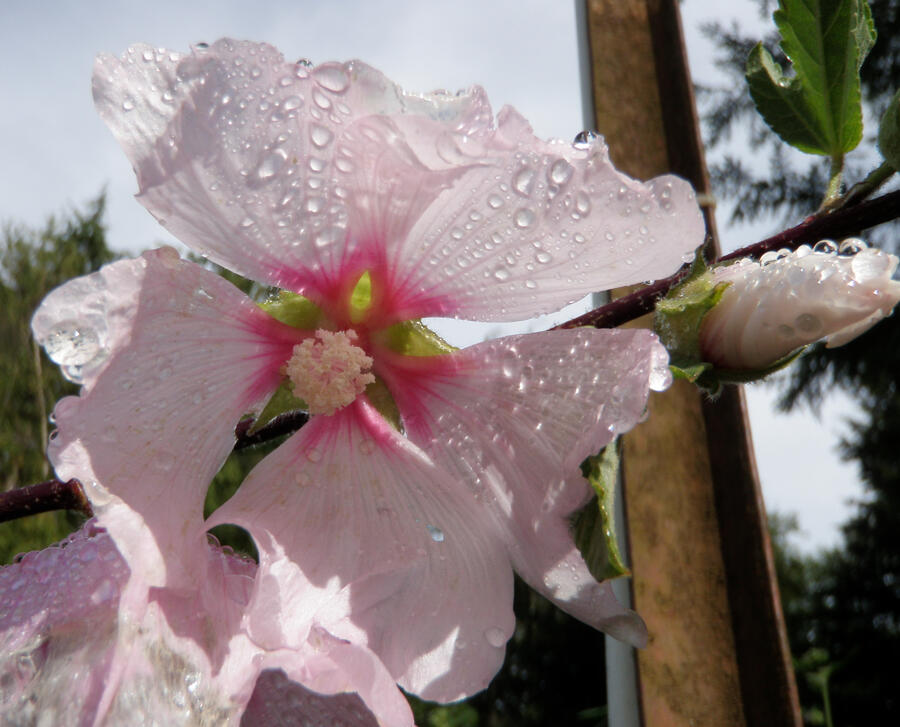
Lavatera thuringiaca
‘Barnsley’
Tree Mallow
This showy, shrub-like mallow has large light pink blossoms with mauve centers that make excellent cuts.
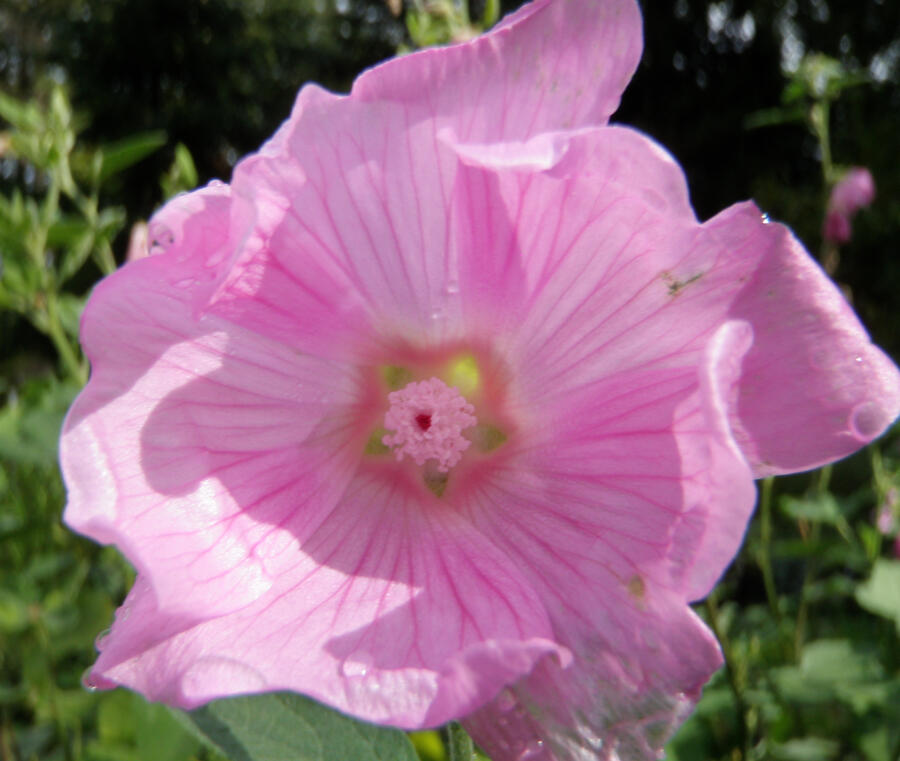
Lavatera thuringiaca
Pink Tree Mallow
This tree mallow would be right at home in any cottage garden. They make excellent cut flowers. The 4” blooms are a vibrant pink with dark striping.
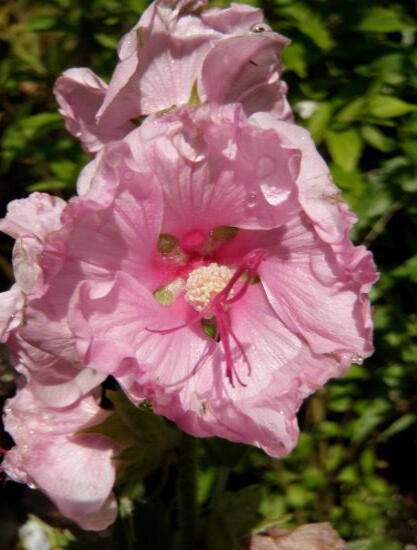
Lavatera ‘Pink Frills’
The smaller, 2” flowers on this tree mallow are multi petalled light pink.
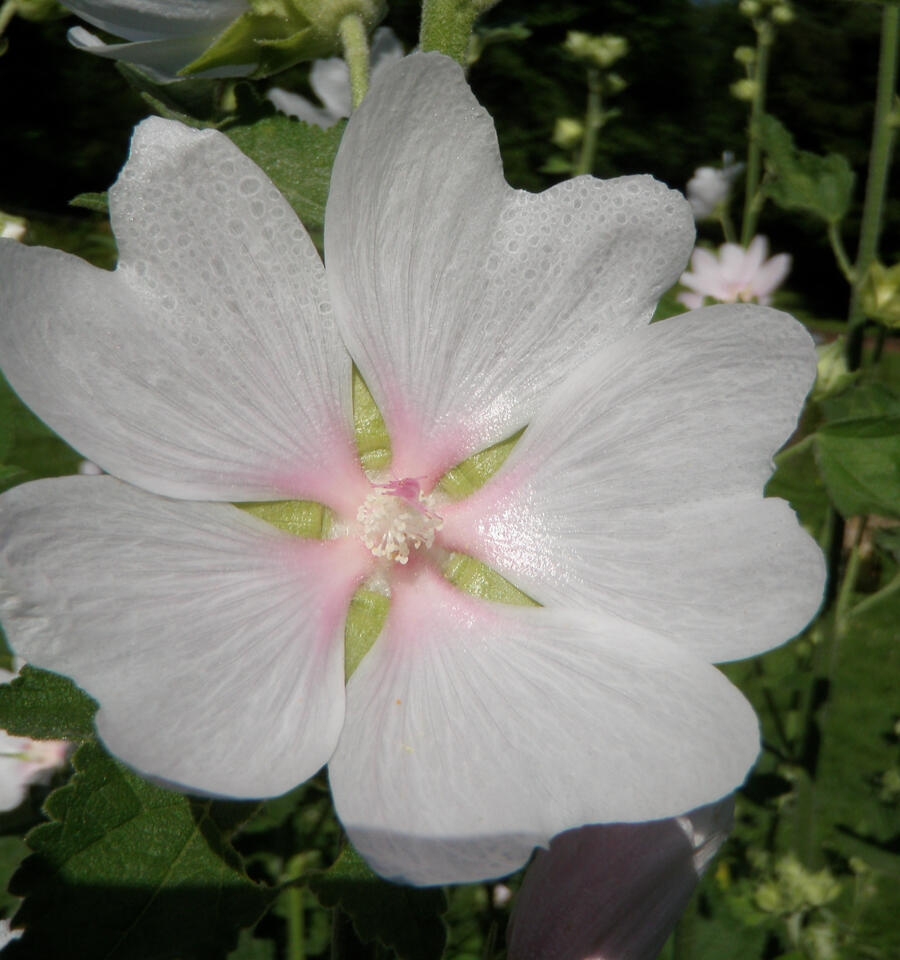
Lavatera ‘White Satin’
This white flowering tree mallow is a prolific bloomer all summer and fall.
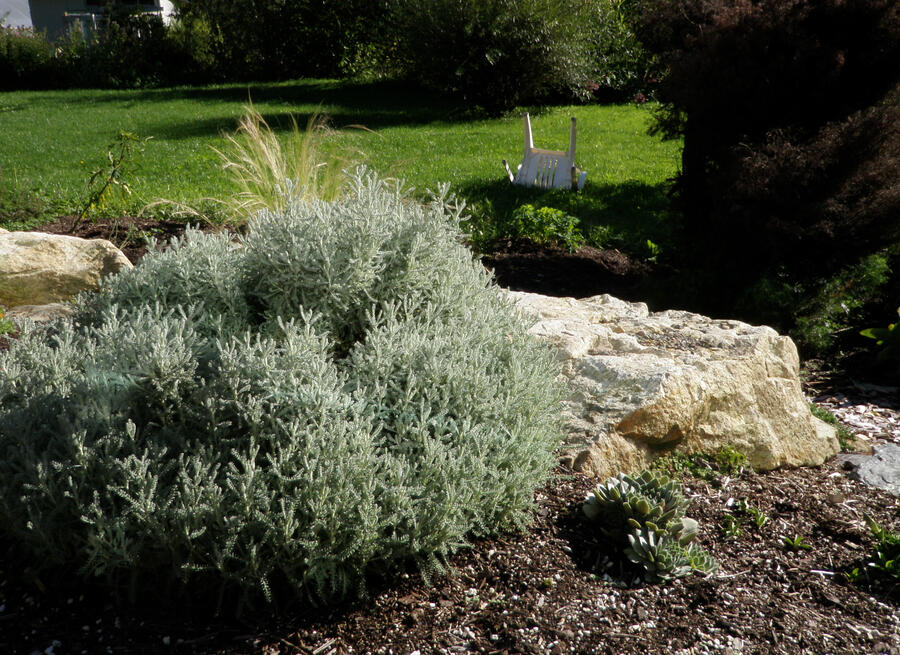
Dwarf Lavender Cotton, Santolina chamaecyparissus
var. nana
Zones: 6-9
Size: 8-32” tall
Sunlight: Full sun
Soil: Poor, well-drained
Bloom Time: July - AugustDescription: A Mediterranean native, this evergreen shrub has neat, fragrant, narrow and crinkled leaves on mound-shaped plants. It has bright yellow flowers that bloom in summer atop stalks rising well above the foliage. It is deer and pest proof and extremely drought tolerant.Growing:. Plant in well-drained soil in a sunny, sheltered position. Like all gray herbs, provide full sun and soil with excellent drainage. It likes chalky, loamy, or sandy soils. . Lavender Cotton is the perfect choice for edging the herb garden or tucking into the rockery or a small sunny nook. Keep the leaves clipped for formal knot gardens, edgings, or clusters, or let the yellow, ball-like flowers emerge for extra color in an informal garden. A fertilizer low in phosphorus and high in potassium is helpful in producing a good blue color; You can cut sprigs for flower arrangements and tussie mussies; can also use it dried in herb wreaths and potpourri.
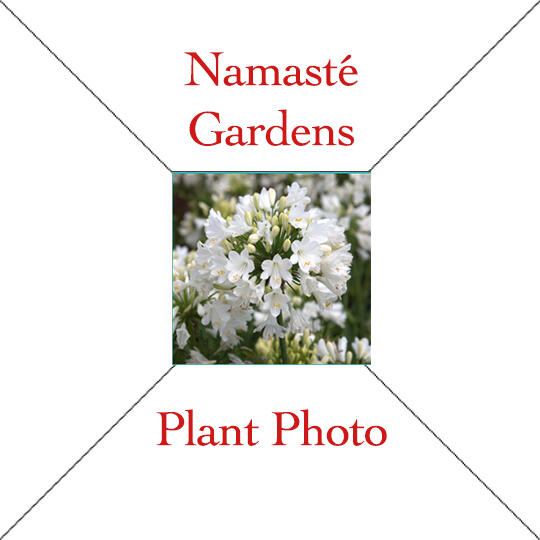
Plant name
Text
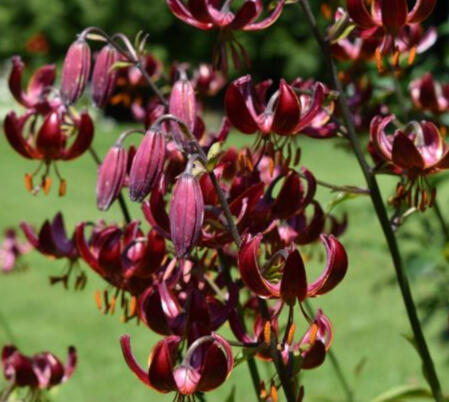
Lilium martagon
Zones: 3-9
Size: 3-6 feet tall
Sunlight: Part sun-dappled shade
Soil: Well-drained, gritty, organic rich
Bloom Time: July-SeptemberDescription: This multi-flowered wild lily has a widespread native region extending from central Europe east through northern Asia to Mongolia and Korea. Called "mountain lily" since its native range is mostly alpine, it is one of the hardiest, toughest, and easiest to grow species lilies. The pink flowers with sharply recurved petals may be relatively small in comparison to those of other lilies but each stem displays around thirty blooms opening in succession to form tall, robust spires. By the time the topmost flowers have opened, the flowers lower down on the stem have not yet faded. They are attractive to swallowtail butterflies and hummingbirds.Growing: Like most lilies, they are content when their roots are in cool shade and their flowering stems are bathed in sunshine, but Turk’s-cap lilies are particularly well suited to growing in dappled shade. Bulbs should be planted 3–4” deep in well-drained soil. Deep planting is essential for the development of root systems. The soil should remain moist, but never waterlogged. For best results, some grit and a generous quantity of organic material should be mixed through the soil until it is crumbly and open in texture. In areas where subsoil is heavy and dense, bulbs can be placed on top of a layer of grit or sand to give extra protection from wet conditions. Martagon lilies appreciate an annual dusting of lime on the soil.
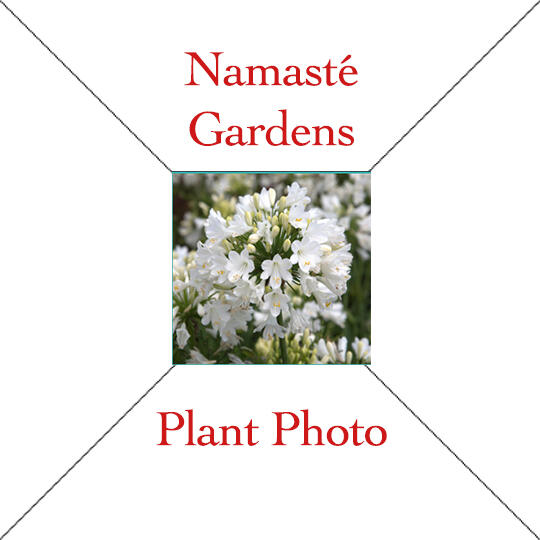
Zantedeschia
WHITE CALLA LILY
Zones: 7-10
Size: 2-3 feet tall
Sunlight: Full sun to part sun
Soil: Clay, loam
Bloom Time: Late spring to early summerDescription: Root hardy variety of calla that survives our mild winters. The unusual flowers consist of a yellow central spadix surrounded by a creamy-white tubular spathe and shiny, rich green, long-stemmed arrow-shaped leaves which are very attractive. A staple in wedding bouquets and florist's arrangementsGrowing: A must-have for the cutting garden, the flowers add elegance to cut floral arrangements and bouquets. They can be grown in the garden or in containers and can tolerate wet soils. Performs best in full sun and moist well-drained soil.. Easy to grow and maintain. Deer resistant
Monarda didyma
Zones: 4-9
Size: 2-3 ft. tall
Sunlight: Full sun
Soil: Average, well-drained
Bloom Time: SummerDescription: Native to the East Coast, Monarda (also called Bergamot and Oswego tea) is one of the showiest summer blooming perennials. It was a popular substitute for “real tea” after the Boston Tea Party. The striking lavender, red, pink or burgundy flowers are attractive to bees, hummingbirds and butterflies. They are also deer and rabbit resistant. They make great cut flowers. The plants grow 3 ft. tall and spread with surface rhizomes.Growing: Plant in full sun and it thrives in any type of average soil as long as it is well-drained. They should be divided every 3 yrs. and the woody centers discarded; Do not mulch as this will kill the plant. Monarda provide captivating border displays and have great impact when used in mass plantings. Monarda has numerous culinary and medicinal uses. The most popular use is as a tea.Varieties available: Cambridge Scarlet, Burgundy Lace and Marshall’s Pink
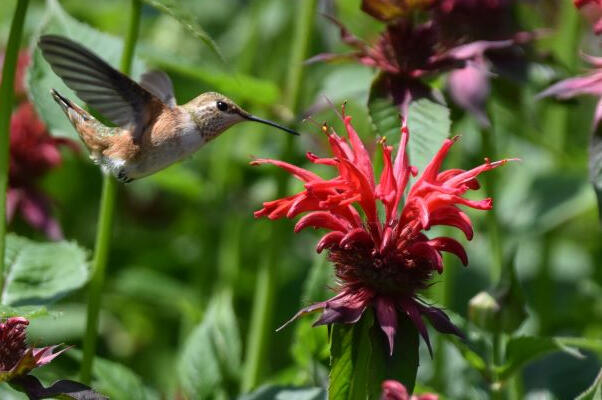
Monarda didyma
Cambridge Scarlet
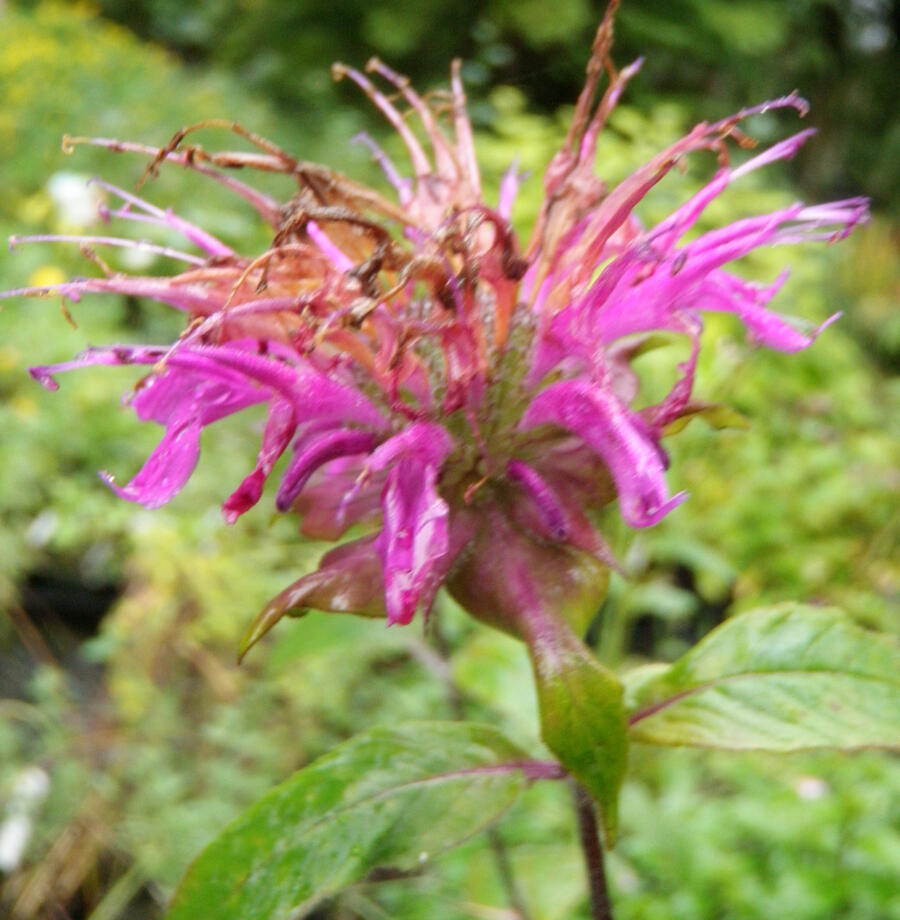
Monarda didyma
Marshall's Pink
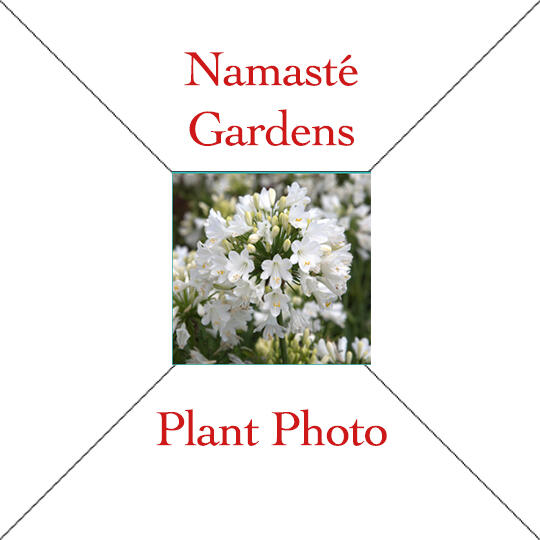
Monarda didyma
Burgandy Lace
Plant name
Text
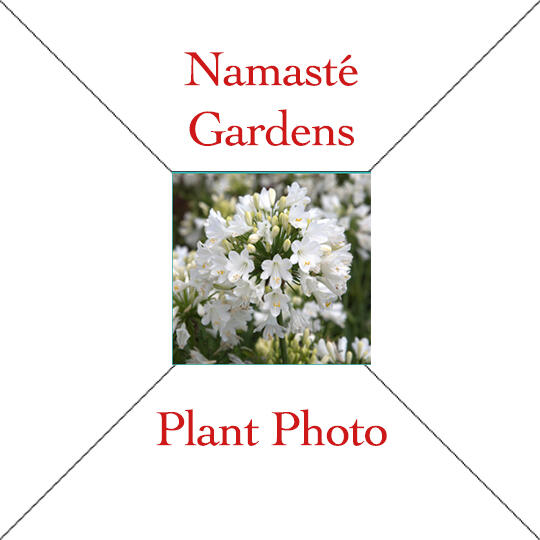
Plant name
Text
Penstemon Hybrids
Zones: 4-9
Size: 1-3 ft. tall
Sunlight: Full sun
Soil: Infertile, dry, gravelly
Bloom Time: July-AugustDescription: Penstemons are perhaps the quintessential Western flower. More than 250 species exist, almost all native to this region. It is the rare gardener who is not smitten by their array of brilliant colors and graceful forms. Luckily for us, they are easier to grow here than anywhere else in the world. These colorful, showy hybrids are best suited to coastal areas, they dislike intense heat and are not reliably cold-hardy in the interior West. Lush compact perennials with very dense bloom spikes covered with vivid tricolor The bees, butterflies and hummingbirds seem to find them especially attractive.Growing: All of the garden hybrid Penstemon need full sun and well-drained soil relatively low in organic matter. Mulch only with gravel in order to discourage crown rot. It is not necessary to fertilize Penstemon. They need regular water during the growing season, good air circulation and at least six hours of sun daily.
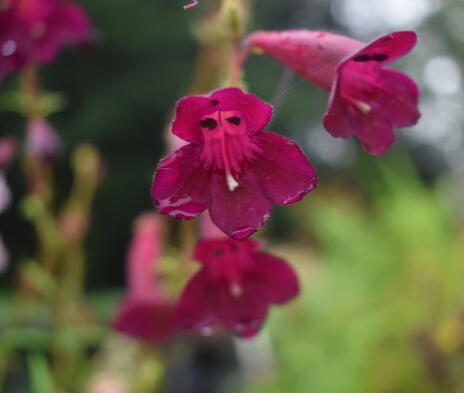
Penstemon Hybrid
'Blackbird’
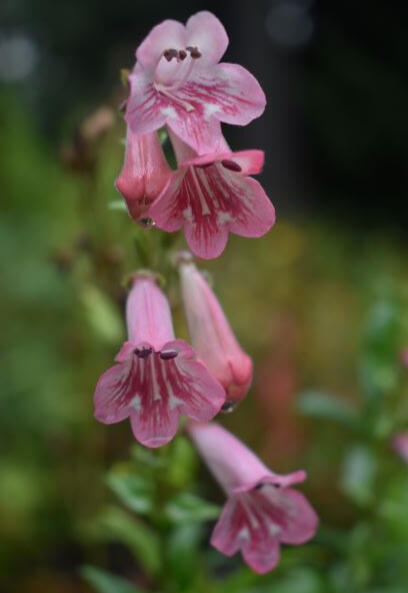
Penstemon - 'Hidecote Pink'
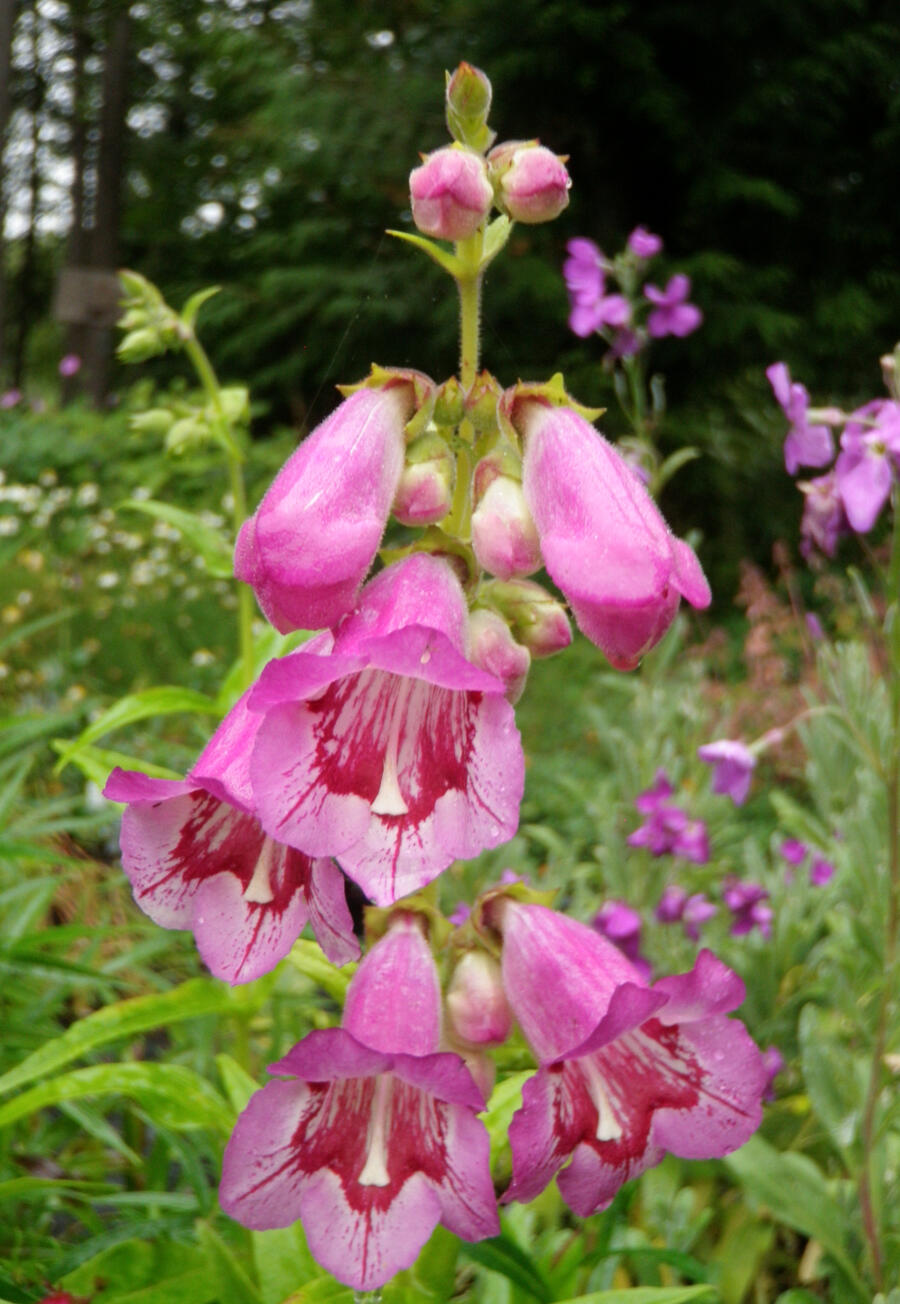
Penstemon Hybrid
'Lavender Ruffles’
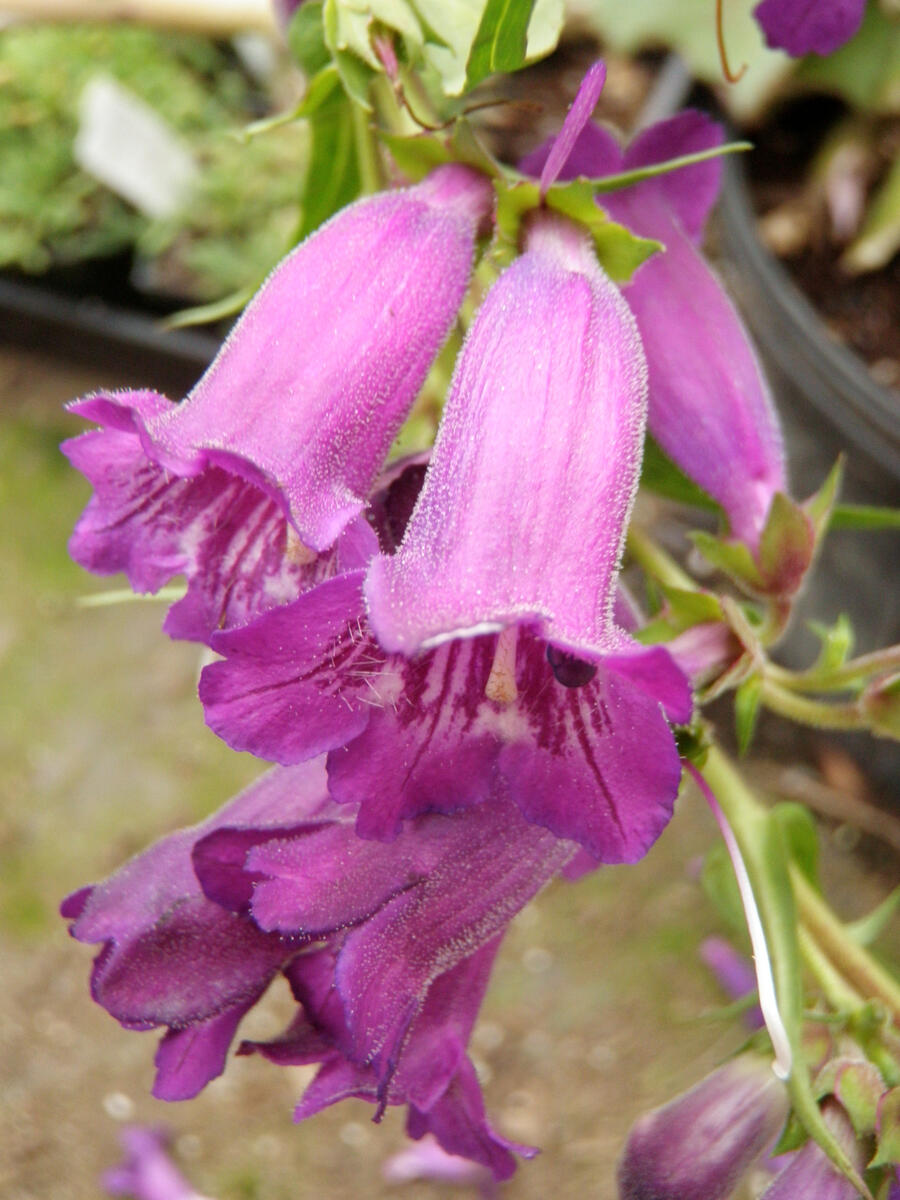
Penstemon Hybrid Purple
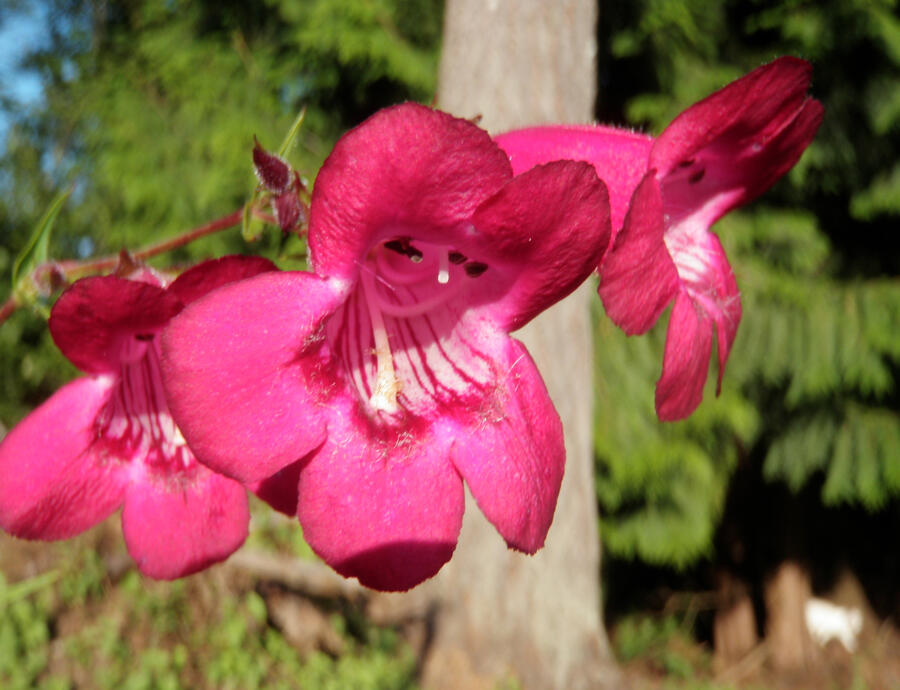
Penstemon Hybrid Red
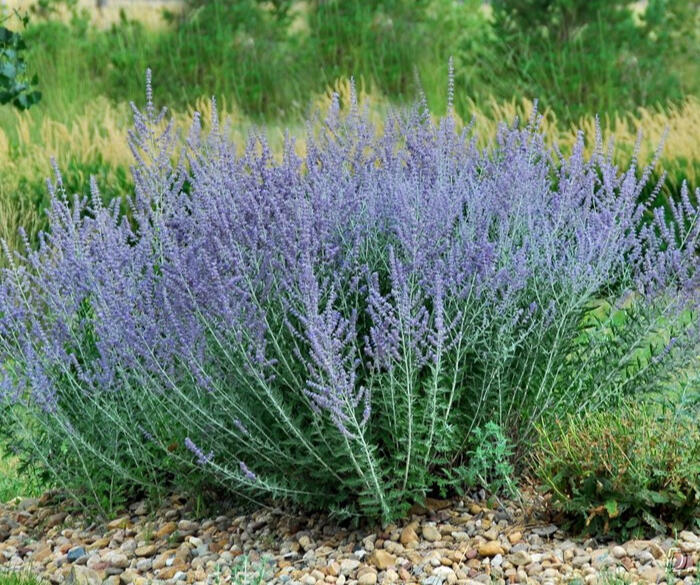
Perovskia atriplicifolia
Russian Sage
Zones: 5-9
Size: 3-4 ft. tall
Sunlight: Full sun
Soil: Average, well-drained
Bloom Time: July-AugustDescription: This is a woody-based perennial of the mint family which carries a cloud of small blue flowers on widely arching stems that grow 3–4′ tall and as wide. The effect is a charming, airy haze of soft blue against silvery gray, pungently aromatic foliage. Deer and rabbit tolerant.Growing: Drought tolerant. it is easily grown in average, dry to medium, well-drained soil in full sun. Cut back plants almost to the ground in early spring before new growth begins. Russian sage is a particularly striking plant when grown along with white, yellow, or orange flowered perennials. Its flowers can be eaten in salads or crushed for dyemaking, and the plant has been considered for potential use in the phytoremediation of contaminated soil.
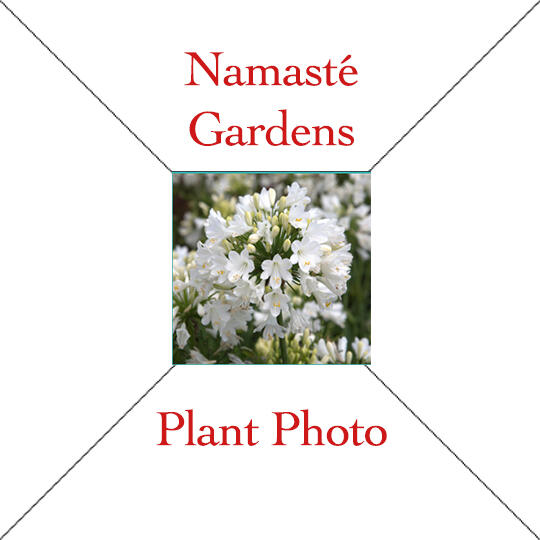
Plant name
Text
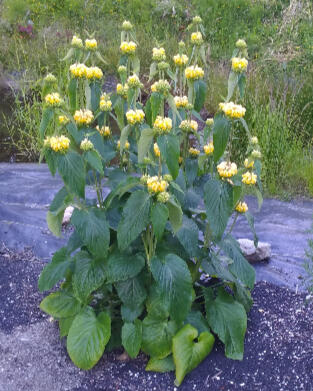
Phlomis russeliana
Jerusalem Sage
Zones: 4-10
Size: 2-2.5 ft. tall
Sunlight: Full sun
Soil: Fertile, well-drained
Bloom Time: July-AugustDescription: This Mediterranean species, native to the mountains of Syria grows from a clump of bright green fuzzy leaves, maybe a foot tall, with the flower stalks rising well above. It is also admired for its unusual whorls of soft yellow flowers which add interest to a floral arrangement. It's useful for leaving uncut through winter - the stalks and seed-heads are quite sculptural. Attracts butterflies and is deer resistant.Growing: Jerusalem Sage prefers full sun but will tolerate a little shade. Soil should be well-drained and fertile. Jerusalem Sage has proven to be quite cold tolerant. A very tough and easy-to-grow plant, Phlomis adds an eye catching structure to the garden, combining readily with other perennials with interesting foliage, like Gray Santolina, rock roses and lavender. Phlomis is a modest hard working perennial, and definitely worth a place in the garden.
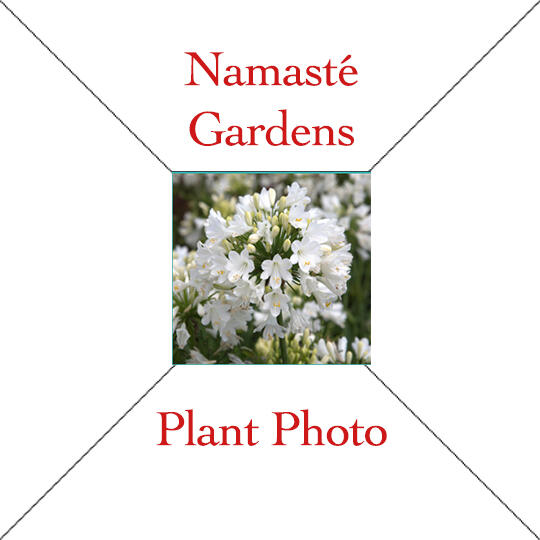
Plant name
Text
Phlox paniculata Hybrids
Zones: 4-8
Size: 3-5 ft. tall
Sunlight: Full sun
Soil: Fertile, well-drained
Bloom Time: July-AugustDescription: There is nothing as refreshing as a patch of garden phlox in full bloom on a hot summer day with butterflies and hummingbirds floating around them. These tall, eye-catching perennials have an upright, bushy habit and The flowers are deliciously fragrant. Excellent for cut flowers, the bouquets attract customers to my booth at the Farmers Market with their colors and fragrance. The colors range from pink to white, burgundy and purple with some being bi-colored.Growing: Phlox need a planting site with rich, evenly-moist, well-draining soil in full sun. They benefit from regular watering but will adapt to dry conditions. Give the plants plenty of room because their clumps get quite large over time.
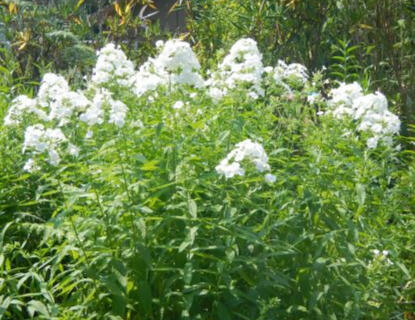
Phlox paniculata ‘David’
Mildew resistant, white blooming garden phlox with fragrant blossoms loved by butterflies grows 30-42 inches tall. It is one of the fastest growing phlox in my gardens.
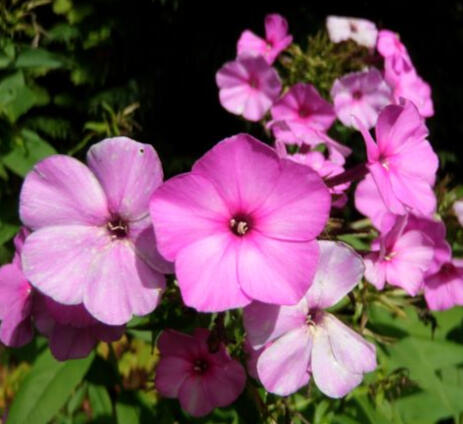
Phlox - Grandmother's
This phlox grew in my grandmother's garden. When she died, I dug up a bit for my garden to remind me of my time with her. She was the inspiration behind my love of gardening.
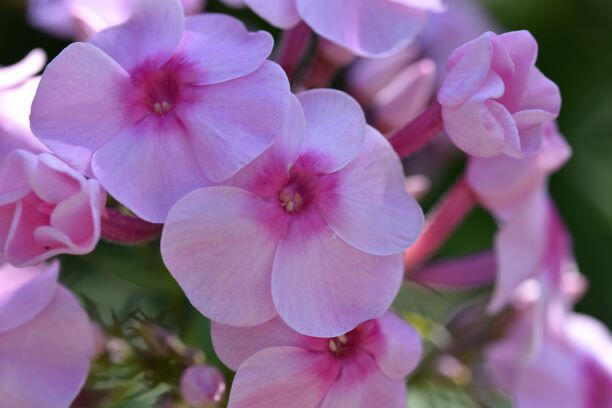
Phlox paniculata
'Moonlight'
This is another phlox given to me by a friend. She did not know what it was called. So when my daughter of 8 gave it the name “Moonlight’ because the flowers seemed to dance in the moonlight when we walked past them at night, the name stuck.
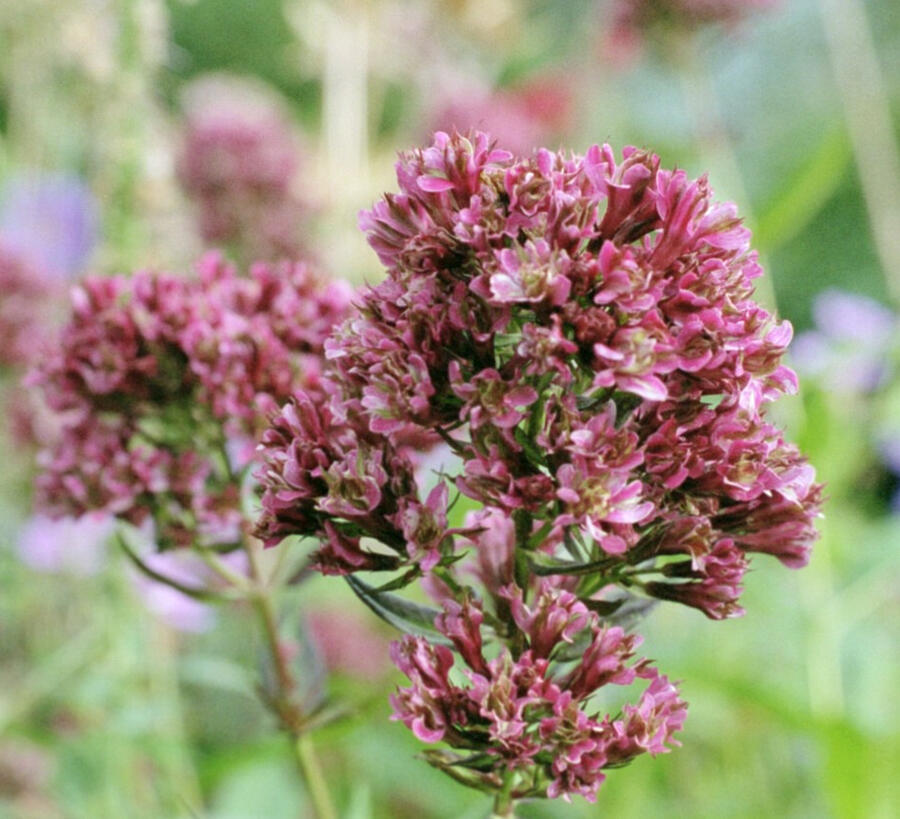
Phlox paniculata
'Natural Feelings'
This summer phlox has very unusual flower plumes. The fragrant flowers lack petals but are made up of showy green and pink bracts, held together in a large and fragrant cluster that remains attractive for weeks.
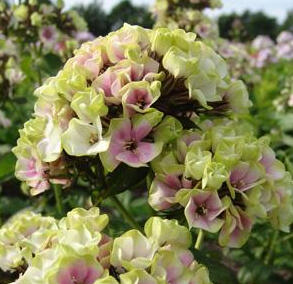
Phlox paniculata
'Sherbet Cocktail'
There has never been a yellow Hardy Garden Phlox, but 'Sherbet Cocktail' is certainly knocking on the door! Not only are the buds pure yellow, but the blooms are softly outlined in yellow, as if playfully hinting at even better things to come. Actually, even before the exciting yellow buds appear, this flowerhead is interesting. It begins as dramatic maroon bracts, which then peel back to reveal the yellow buds. These in turn open to florets 1/2-inch across, which sport either lavender-pink or white tones beyond their yellow edges. Very closely-set, the florets crowd along 5-inch flowerheads that have a more rounded, less dome-like shape than many other phlox.
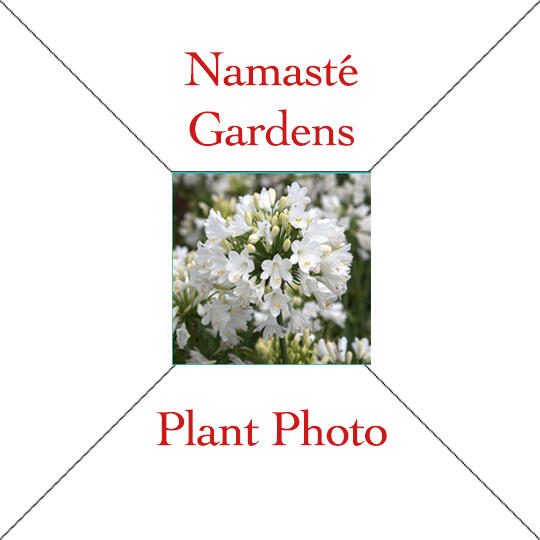
Plant Name
Text
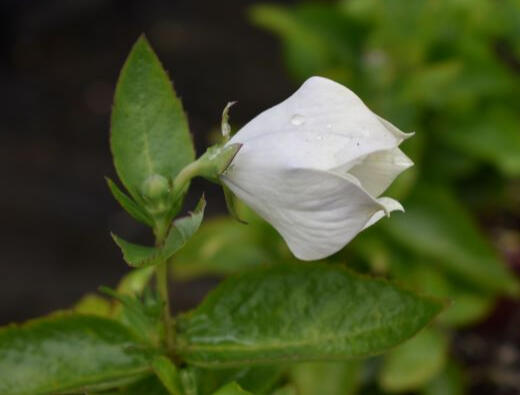
Platycodon grandiflorus
White Balloon Flower
Zones: 3-9
Size: 12” tall
Sunlight: Full sun
Soil: Loamy, well-drained
Bloom Time: Summer to Early FallDescription: Balloon flowers are grown for their whimsical flower buds which are puffy, hence the name. As the bud matures, the balloon slowly expands, appearing as if it is going to burst. Once opened, the flowers are graceful, saucer-shaped white stars which resemble Campanulas. It is a plant that will fascinate children as well as adults. It makes an excellent, long lasting cut flower if the base of the stem is seared with a flame before placing into water. They are long-lived perennials that rarely need dividing. And they are deer-resistant.Growing: Platycodon needs full sun, good drainage and average garden soil that is slightly acidic. It will not survive in a wet, poorly drained site. Slugs and snails will like therm. Once established, balloon flowers can handle short periods of drought and won't need a lot of supplemental watering. Platycodon's location should be carefully marked in the garden since it is one of the latest perennials to emerge in spring. Deep taproots make this plant difficult to transplant. A welcome addition to beds and borders, rock gardens or containers, they are more noticed if planted in groups. Deadheading will promote a longer bloom time.
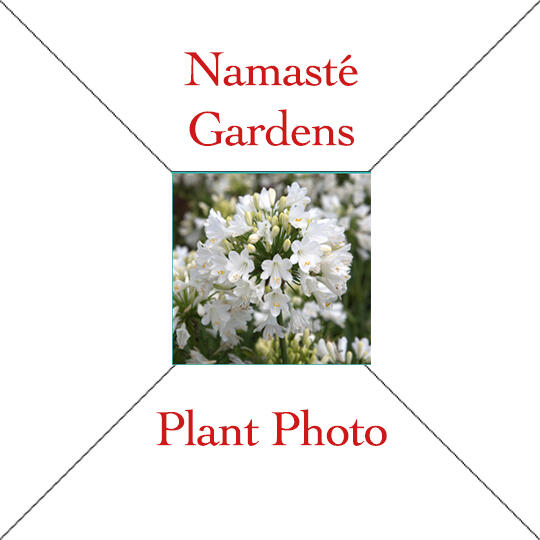
Plant Name
Text
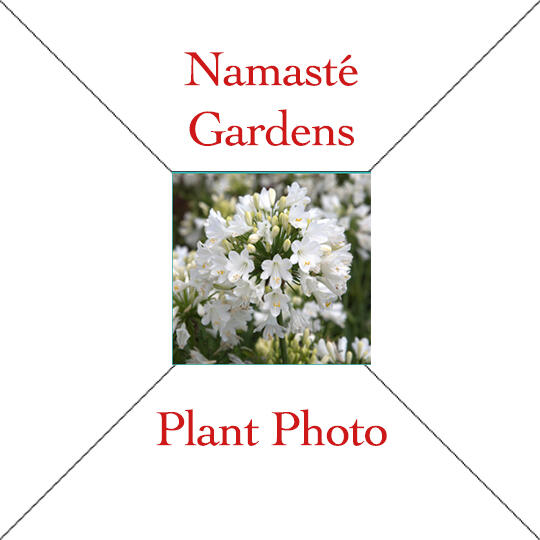
Plant Name
Text
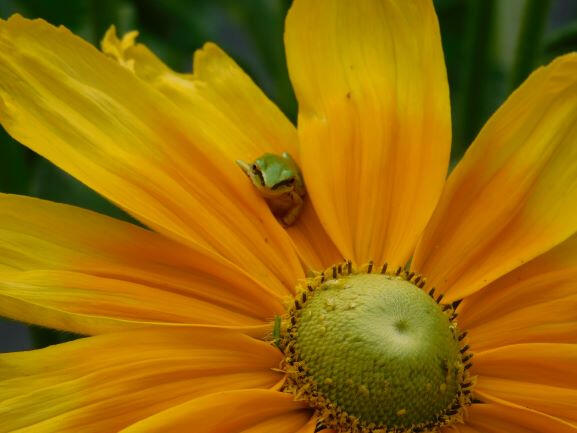
Rudbeckia hirta
Prairie Sun
Zones: 3-8
Size: 2.5 - 3 feet
Sunlight: Full Sun
Soil: Average, well-drained
Bloom Time: Early Summer to Early FallDescription: Rudbeckia hirta are wonderful, free flowering daisies. The flowers have peachy orange petals that wash to yellow at the tips. The plants will only last a few seasons. But the plants self-seed readily and if you learn to recognize the hairy seedlings and allow a few to develop where you want them, you can have as many as you want for many years. They make a great cut flower. Deer resistant. Attractive to birds, butterflies, bees and frogs.Growing: Rudbeckia prefer moist, fertile well-drained soil. Although drought tolerant, Rudbeckia blooms better with ample moisture. It is great candidate for mixed borders, cutting beds or as accent plants.
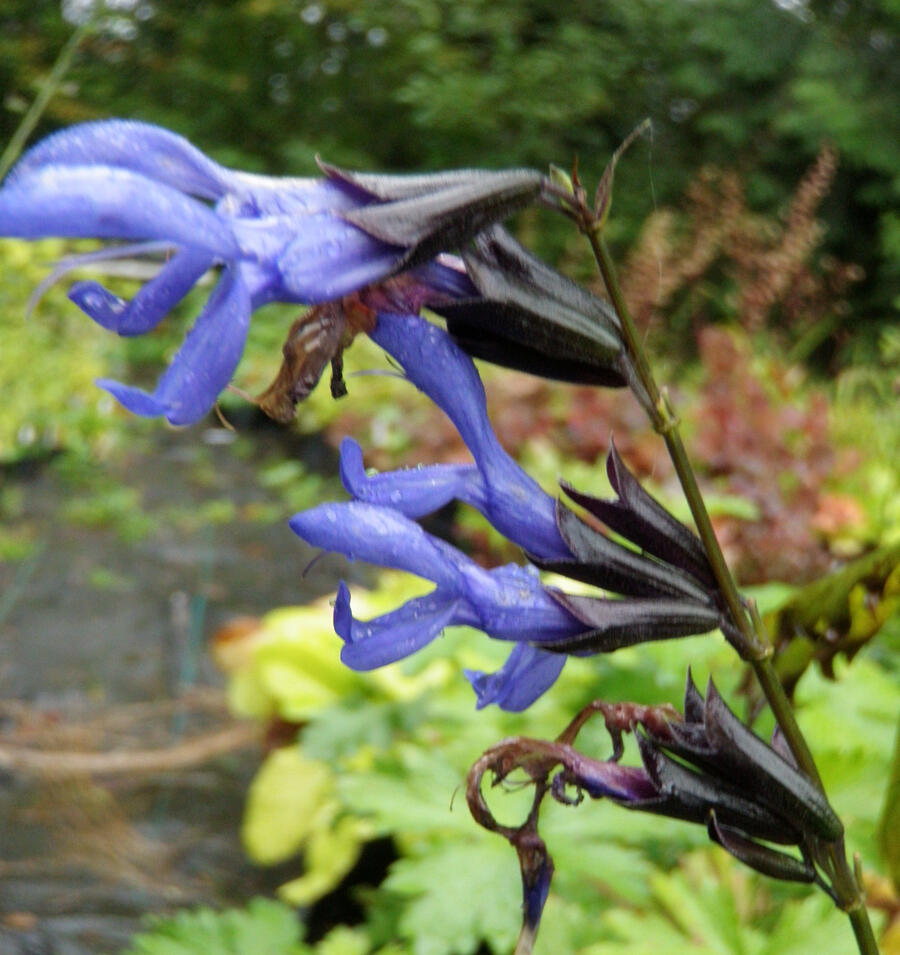
Salvia guaranitica
‘Black and Blue’
Blue Anise Sage
Zones: 7-10
Size: 3-5 feet
Sunlight: Full sun
Soil: Gravelly, well-drained
Bloom Time: Summer-fallDescription: Salvia ‘Black and Blue’ is a semi-woody perennial subshrub with a loose, bushy, rather open form. The fragrant foliage grows quickly to form a large, upright clump getting 3-5 ft tall and just as wide. It gets its name from the flowers which are cobalt blue strikingly accented by black calyces. It blooms from summer until late fall, making it an excellent background plant. The individual flowers are tubular, to 2 in long, with a hood-like upper lip and a shorter, downward pointing lower lip. Hummingbirds and butterflies love most of the sages and this one is no exception, so be sure to include it in your butterfly garden. They are deer and drought tolerant as well.Growing: Grow Salvia in full sun to light shade in a dry to medium dry location and in organically rich soil. It has a tendency to get pretty large after a few good years, so give it some room. Use it as a filler for the back of the border, in very large containers or in mixed shrub and perennial plantings.

Salvia microphylla 'Hot Lips'
Zones: 7-10
Size: 3 feet tall and wide
Sunlight: Full sun
Soil: Fertile, well-drained
Bloom Time: July-OctoberDescription: This evergreen, 4-6 ft, bushy ornamental sage puts out a profusion of eye-catching bicolor blooms in white and lipstick red from July to October. It is an outstanding compact, carefree shrub for waterwise gardens. Hummingbirds and butterflies are attracted to the blooms that appear continuously through the hottest of summers until frost. They make a good cut flower and are deer and rabbit resistant.Growing: Offer it full sun, moderately fertile, moist, well-drained soil and a sheltered spot. It has happily over-wintered in my gardens for several years. You can prune it lightly during the growing season to shape it or prune it harder in late winter.
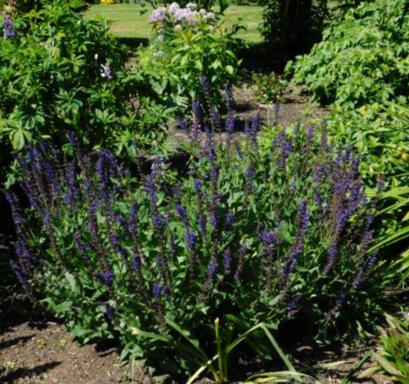
Salvia nemorosa
'May Night'
Zones: 3-8
Size: 18-24” tall
Sunlight: Full sun
Soil: Fertile, well-drained
Bloom Time: May-AugustDescription: Salvia ‘May Night’ is an outstanding sage with a shorter, mounding habit that keeps its compact form year after year. Blooming in late spring with a profusion of flower spikes, it re-blooms later in the summer when deadheaded. It blooms prolifically with deep purple-blue flowers (resembling a spring night sky) that Hummingbirds and butterflies love.. They make a good cut flower and are deer and rabbit resistant.Growing: It has excellent cold hardiness and tolerance of heavy clay soils. Offer it full sun and moderately fertile, moist, well-drained soil. Cut plants back in early spring to encourage fresh new growth. They look great pairing with peonies and roses, which open at the same time. It also looks beautiful planted next to silver-leafed plants, such as lamb’s ears or Artemisia.
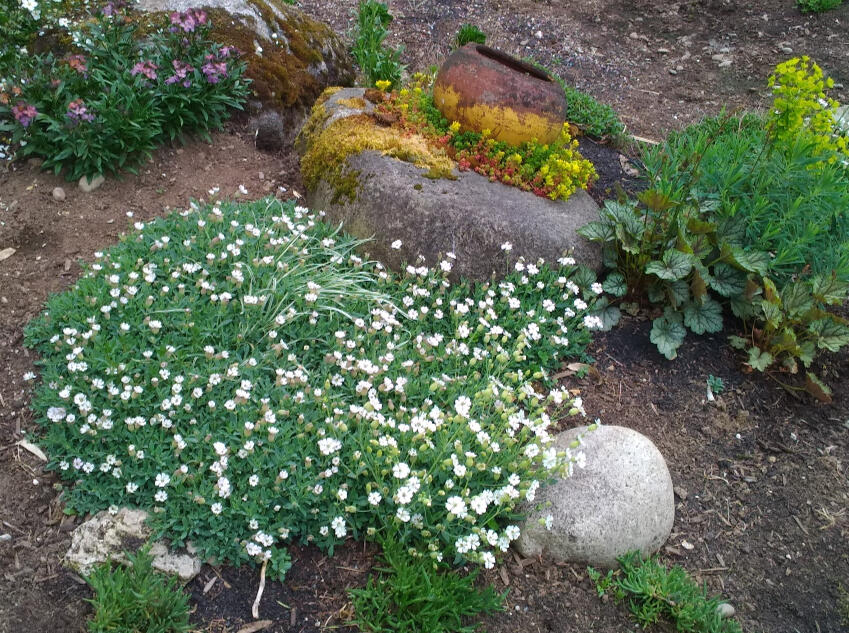
Silene uniflora (maritima) compacta
Maiden’s Tears
Zones: 3-8
Size: 4-6” tall
Sunlight: Sun
Soil: Average, well-drained
Bloom Time: June through AugustDescription: Maiden’s Tears is a compact perennial with grey-green leaves that form tidy, evergreen cushions. The delicate, white tinged with soft-pink, carnation-like flowers with balloon shaped calyxes are carried on short 4” stems just above the foliage. The foliage is highly decorative even out of flower.Growing: Silene likes full sun to light shade. It will grow in an average dry or moist, well-drained soil. It is drought tolerant once established. Use it in containers, as a ground cover in the rock garden or hanging over walls. It is also suitable for edging or growing between flagstones where it can withstand occasional to light foot traffic.
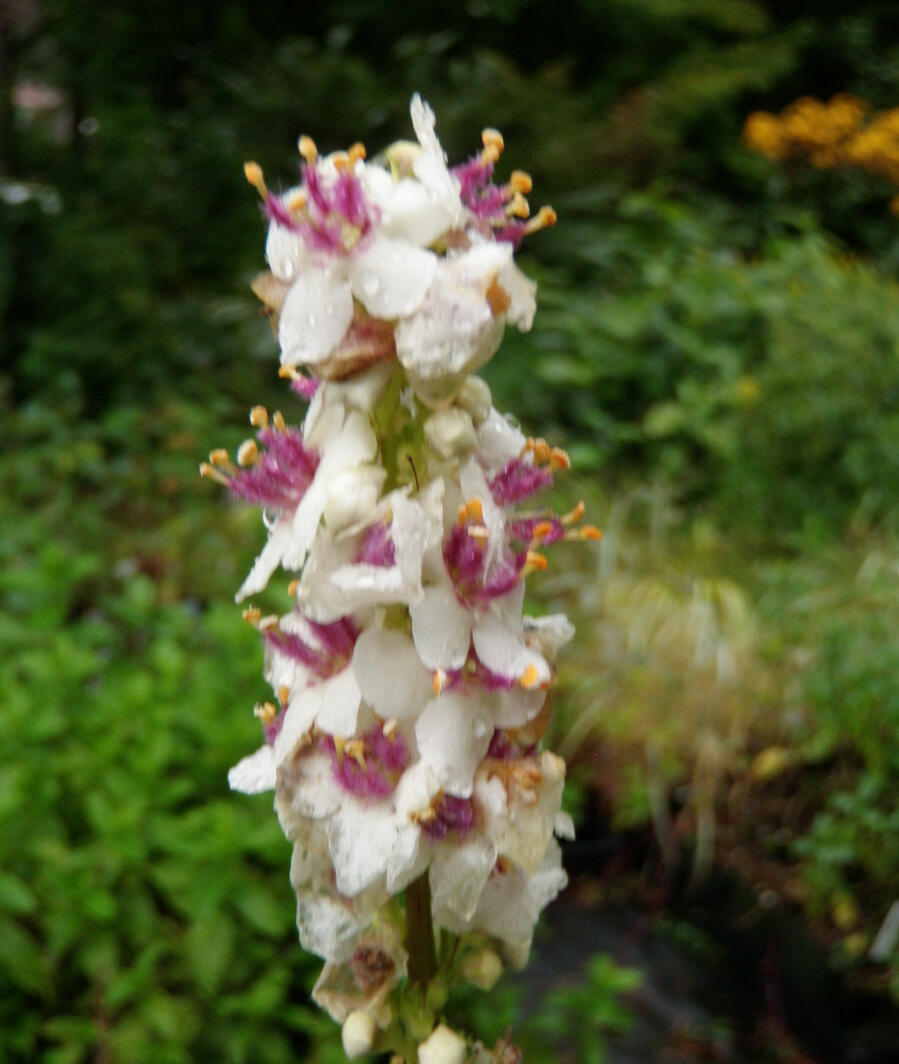
Verbascum chaixii
‘album’ Mullein
Zones: 5-8
Size: 2-3 ft. tall
Sunlight: Sun
Soil: Well-drained
Berry Time: May-JulyDescription: This Verbascum reminds me of gardens depicted in old Victorian movies with their tall stately inflorescences lining a path to the mansion’s entryway. Showy spikes of white, open-dished flowers with purple and orange stamens rising above a mound of soft grey-green foliage make this a standout. They add a stately appearance to the garden with good vertical accent. Deer resistant.Growing: Verbascum is tolerant of many soil conditions including poor dry soils or on dry, rocky slopes or scree, but must have good drainage. It performs best in full sun. Cut off spent flower heads if you don’t want them to self seed. Place them along back edges of perennial beds or in solitary plantings.
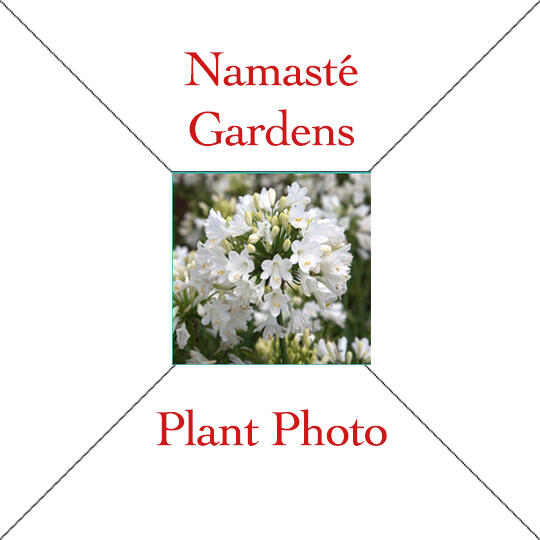
Plant Name
Text
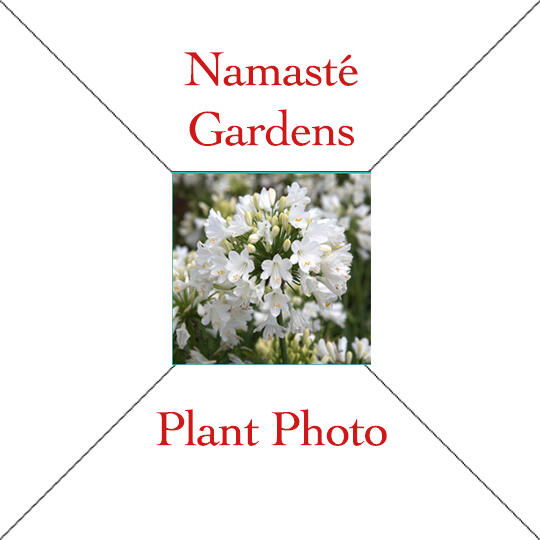
Plant Name
Veronica spicata spp.
Zones: 5-9
Size: 1-2 ft. tall
Sunlight: Sun
Soil: Well-drained, organically rich
Berry Time: SummerDescription: Speedwells are notable for their graceful and bountiful flowers as well as their reliable nature. These long-blooming, easy-care perennials have a distinct verticality prized by gardeners. Throughout spring and summer their spiky flowers rise like sentinels in the sunny garden. Whether at the front, middle, or back of the border, their slender wands enliven the garden with color and the busyness of butterflies and bees. They are resistant to deer.Growing: Veronicas are easy-to-grow sun lovers free from disease and pests. They are carefree plants, thriving in full sun and reasonably rich, well-drained soil with adequate moisture. They add rich depth to indoor flower arrangements. They are long-lasting and attractive in border, container or accent plantings.
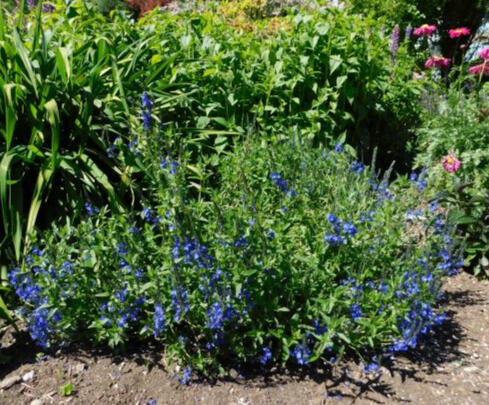
Veronica spicata
Blue Fox
‘Blue Fox’ is a summer blooming Veronica with compact spires of bright, blue flowers. It grows 15″ tall, and blooms most abundantly if the flowers are cut back as they fade.
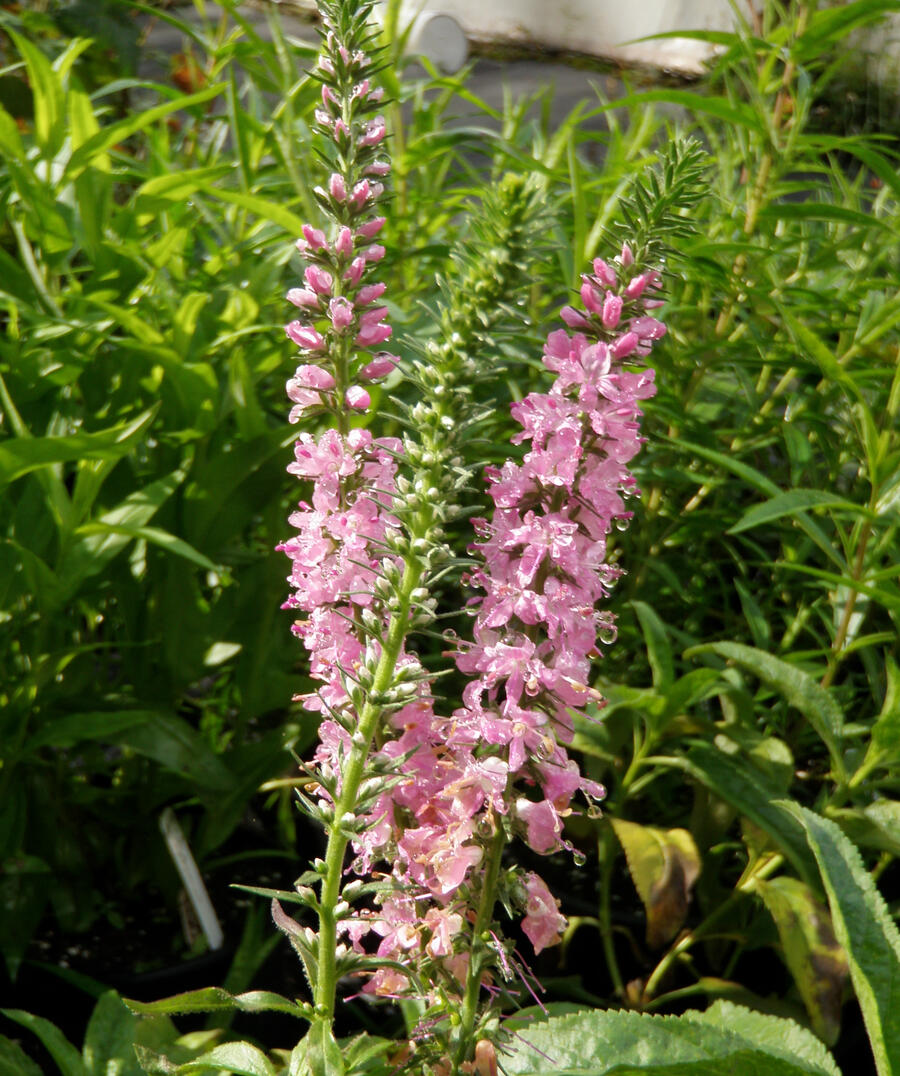
Veronica ‘Baby Doll’
The smallest Speedwell of all is also the most floriferous! 'Baby Doll' tirelessly blooms all summer long, setting far more spikes on every plant than traditional full-sized Veronicas, and filling the garden with soft lavender color. Reaching at least 10 inches long, these slender, tapering stems arise pure green, then darken with purple buds that open to lighter, bright lavender blooms. They open from the bottom up, so new spikes can be seen just beginning to fill with color as mature ones reach their peak of beauty.
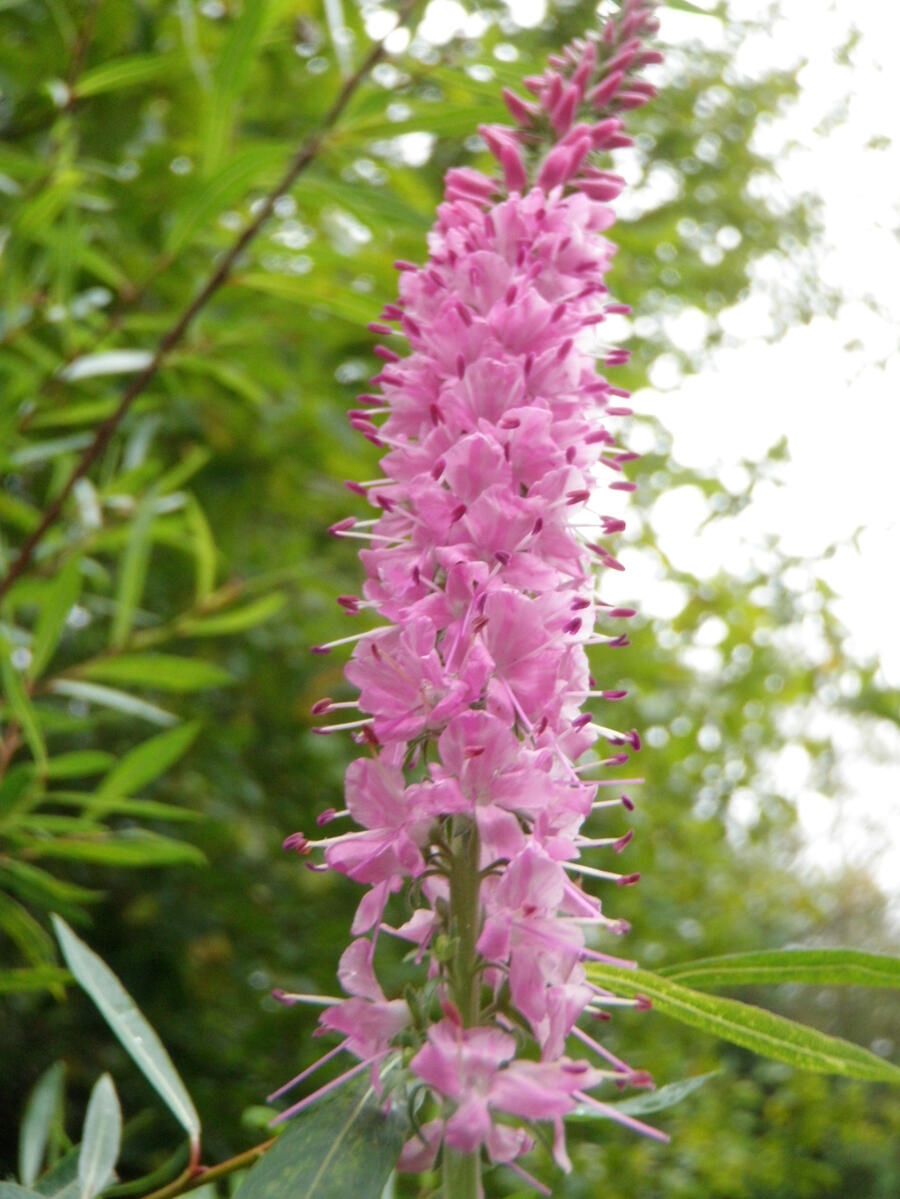
Veronica 'Fairytale'
‘Fairytale’ maintains its sturdy upright growth habit throughout the season, unlike many Veronicas which start sprawling mid season, leaving brown empty centers. Pale silver-pink flowers subtly detailed with protruding deep-pink stamens, blend pleasantly with silver-green foliage. Good, sturdy plants, 16” tall, producing many flower stems which remain covered with foliage to the ground making these plants a good choice for the front of the garden bed.
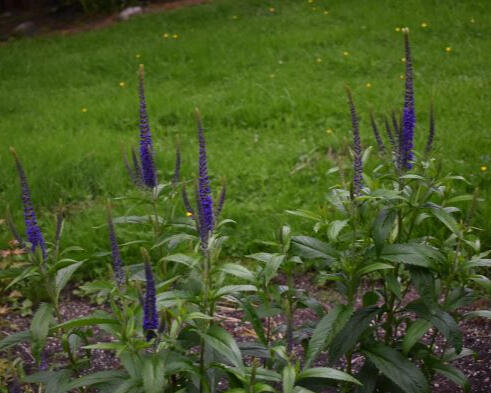
Veronica spicata 'Purpleicious'
This dwarf plant offers long, deep violet, wonderfully profuse blooms over a long late spring through midsummer season on plants that are disease-free and very vigorous. If you haven't grown Veronica in a while, it's time to discover the new, super-floriferous varieties like 'Purpleicious’. These blooms arise on stalks 7 to 12 inches long, tapered to a point, and held straight up atop long, pointed dark green foliage. The dark color is really unusual in the sunny garden, standing out nicely against the pinks and lavenders of other Veronicas.
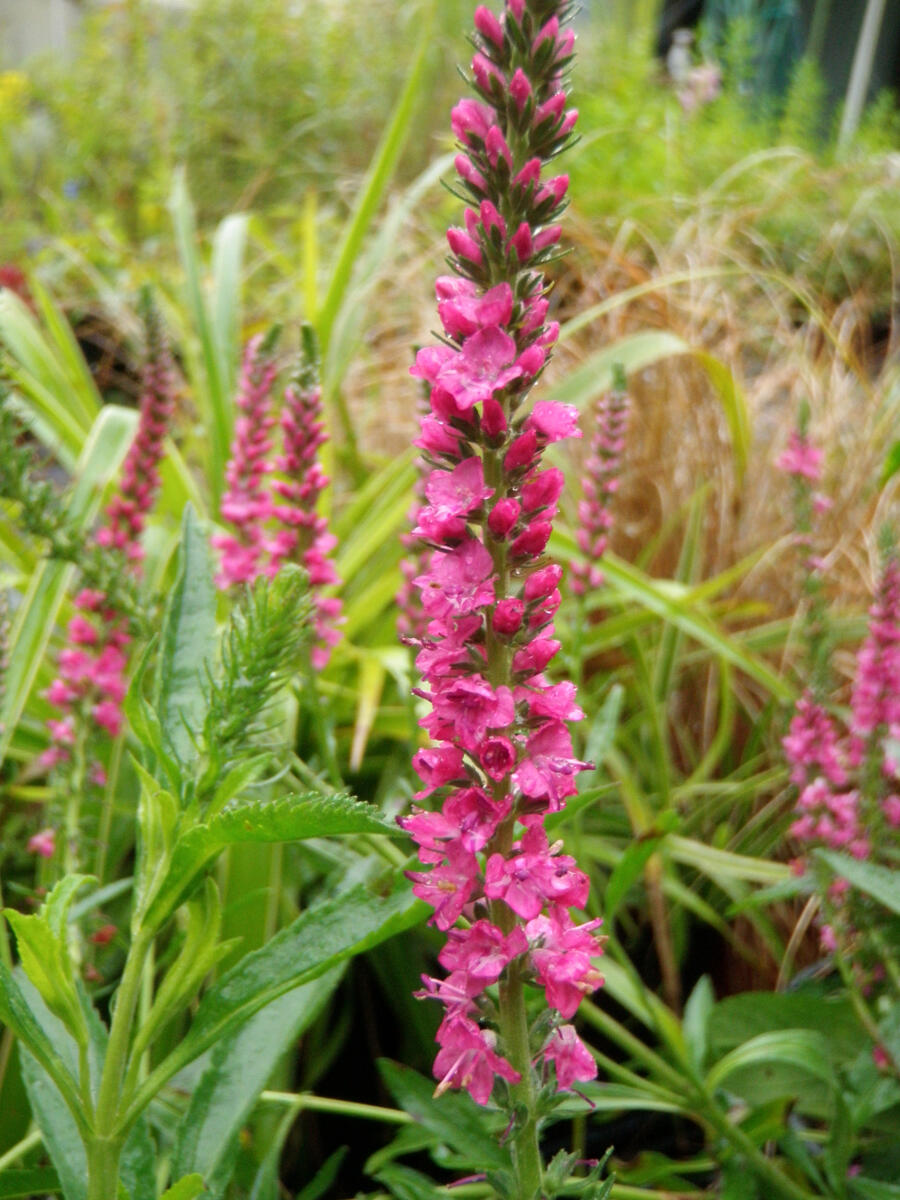
Veronica spicata
‘Red Fox’
A most charming veronica, whose flower spikes are more pink than red. It will add a new dimension to your garden. Relatively carefree, it is in full bloom by June and will continue to bloom if deadheaded on a regular basis.
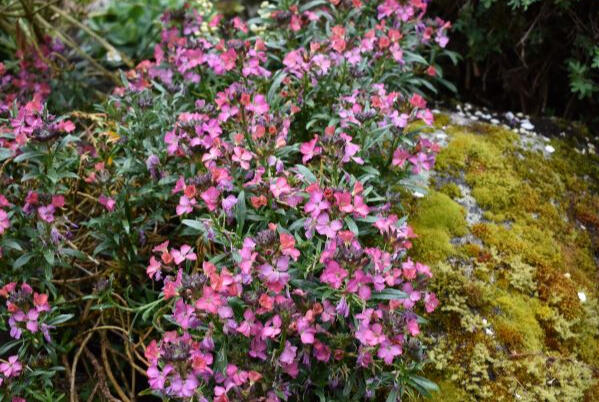
WALLFLOWER
Erysimum linifolium
‘Wenlock Beauty’
Zones: 6-11
Size: 1.5-3 ft. tall
Sunlight: Sun
Soil: Well-drained
Berry Time: Mid-spring–late summerDescription: ‘Wennlock Beauty’ is a short bushy evergreen sub-shrub that, slowly creeps into a wider & wider clump. I’ve been impressed with plantings on beachfront properties where it hangs down cliffs looking somehow wild and planted at the same time. It has dense clusters of 4-petalled flowers of various shades of rose, purple, pink, & lavender, fading toward the end of its bloom season to dusky mauve, orange, or a coppery-hued dusky maroon. It starts flowering in spring and lasts all summer. The unusual color and mounding growth habit make it a stand alone plant for any garden. They make excellent and fragrant cut flowers Attracts bees, butterflies and hummingbirds.Growing: Wenlock Beauty’ is best grown in full sun here in the Pacific NW, though it will do part shade in hotter climates. It is not fussy about soils growing in poor, loamy, rocky or rich soils but it must be well-drained. I have mine growing on a rocky slope of driveway dirt in front of the greenhouse.
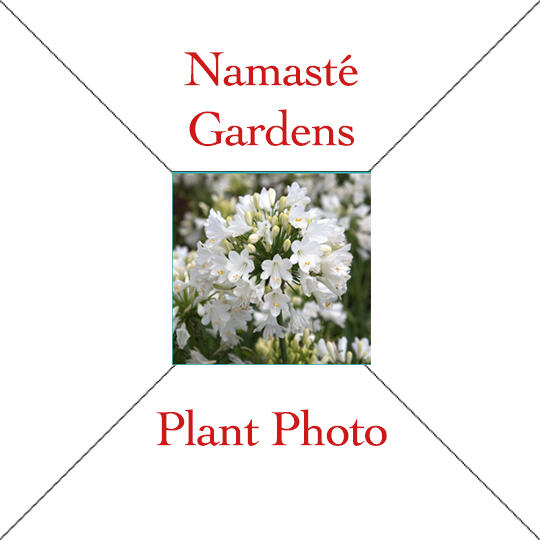
Plant name
Text
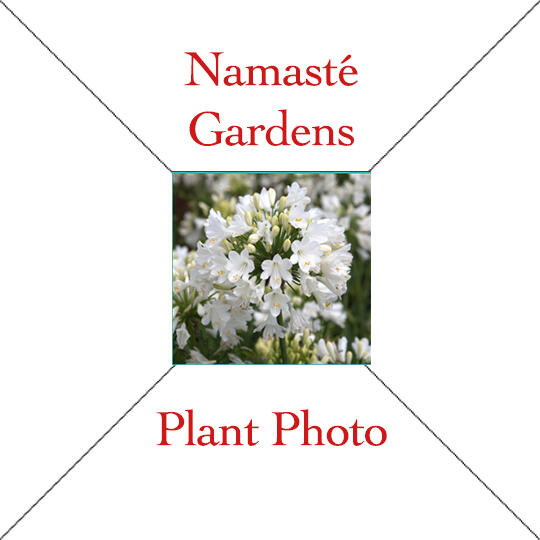
Plant name
Text
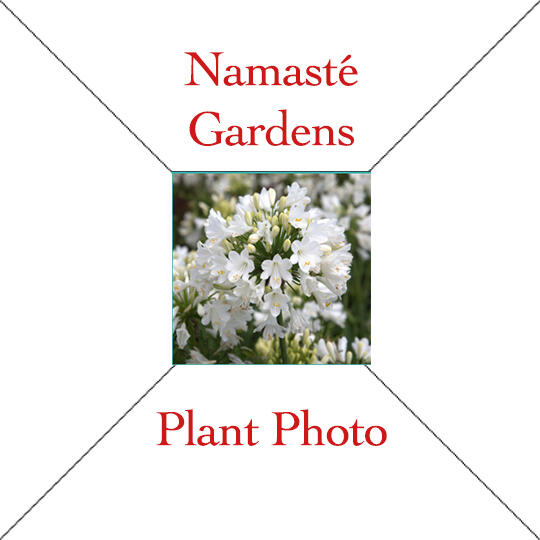
Plant name
Text
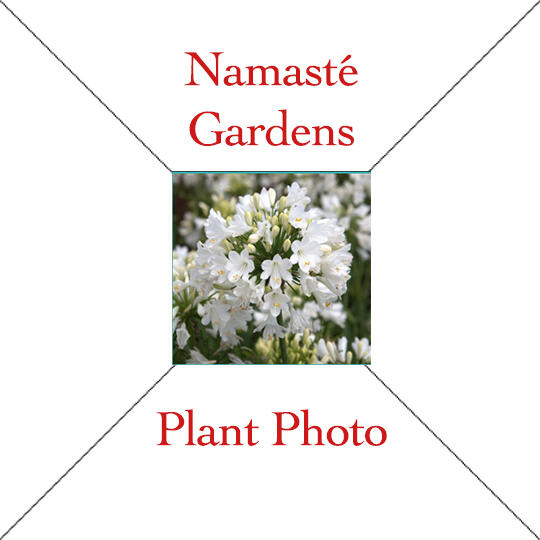
Plant name
Text
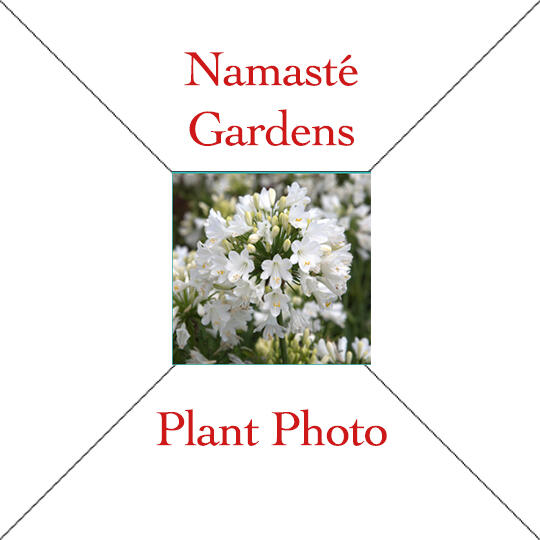
Plant name
Text
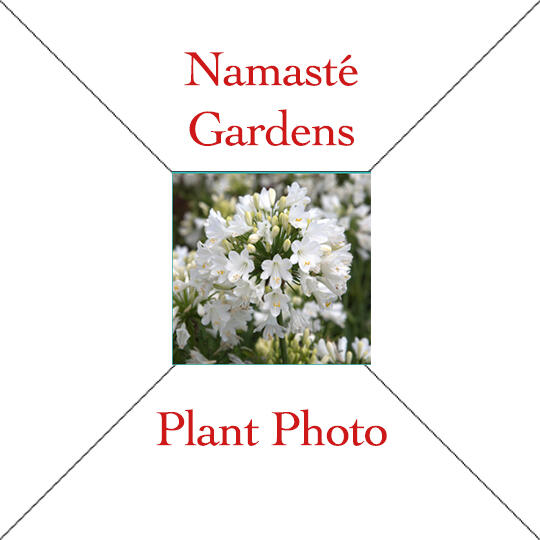
Plant name
Text
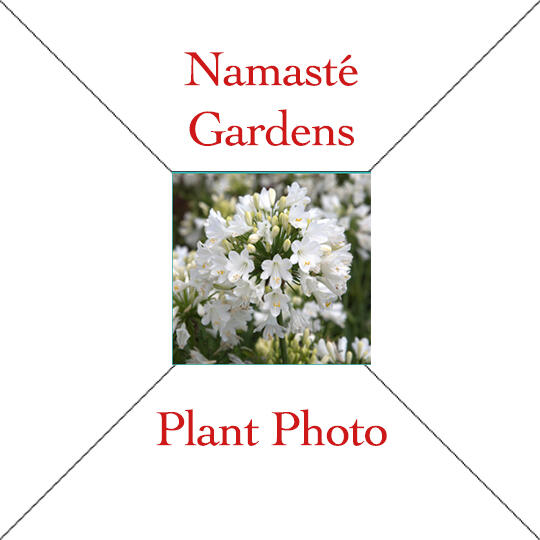
Plant name
Text
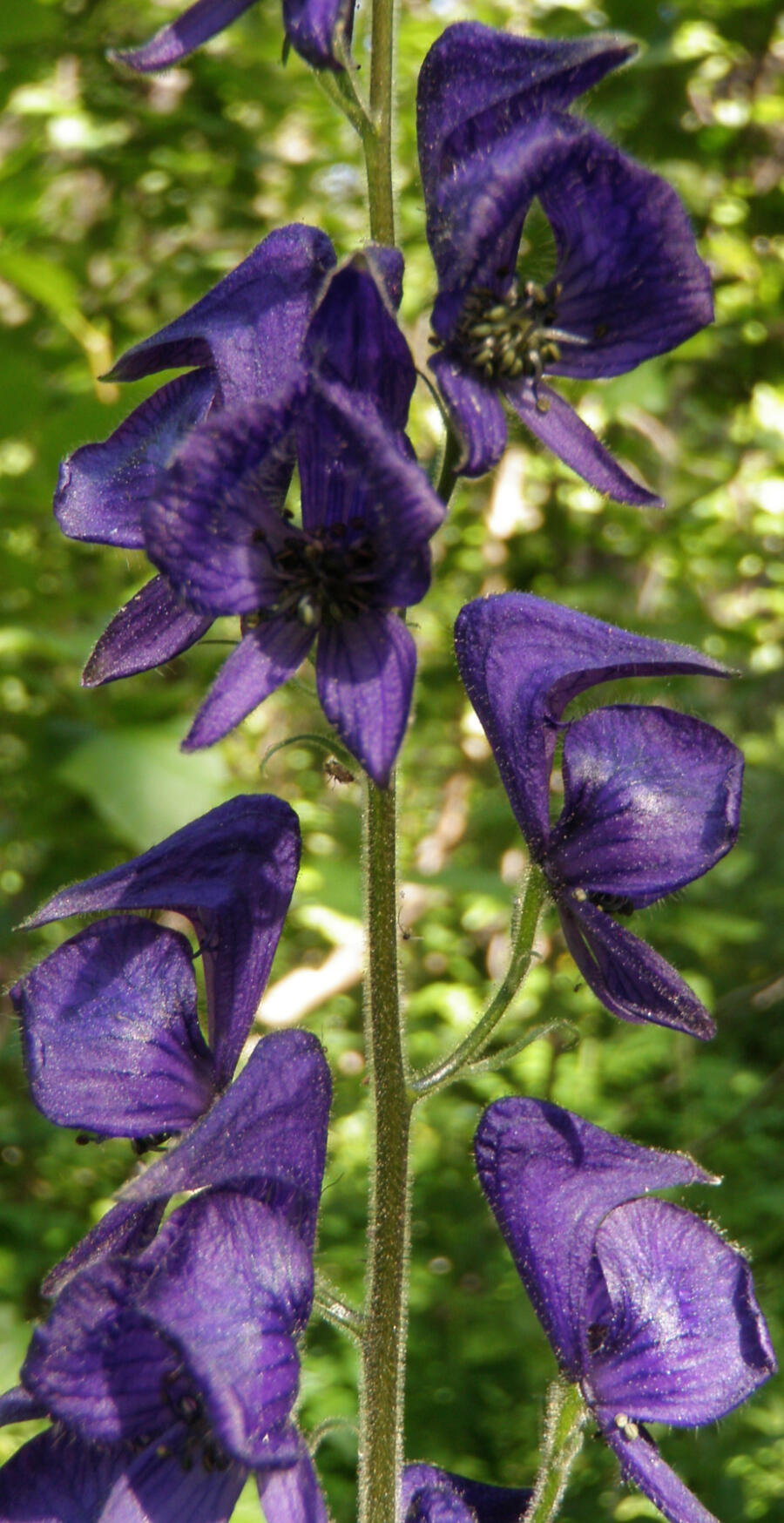
Aconitum carmichaelii ‘Arendsii’
Monkshood
Zones: 3-8
Size: 3-4 feet tall with 3-6 foot spread
Sunlight: Full sun to part shade
Soil: Clay, loam, moist but well-drained
Bloom Time: Late summer to early fallDescription: Imagine fairy bonnets of the deepest blue drawing the eye to the darkest corner of a shade garden and that is Monkshood. It has glossy, dark green leaves that are deeply divided with spikes of dark blue flowers bursting profusely above the foliage. Your garden will stay beautiful into the autumn with this Aconitum to show off its tall spikes of azure-blue flowers. Native to East Asia and eastern Russia, this Aconitum is commonly known as Chinese aconite, Carmichael's monkshood or Chinese wolfsbane. Deer and rabbit resistant.Growing: Monkshood make outstanding cut flowers and are perfect for wet soils. They make a good centerpiece for the shade garden or at the edge of a bog garden but grow in fairly sunny locations as well. Plants grow best in cool-summer regions and moist gardens; performance is improved if you divide clumps every 5 years.
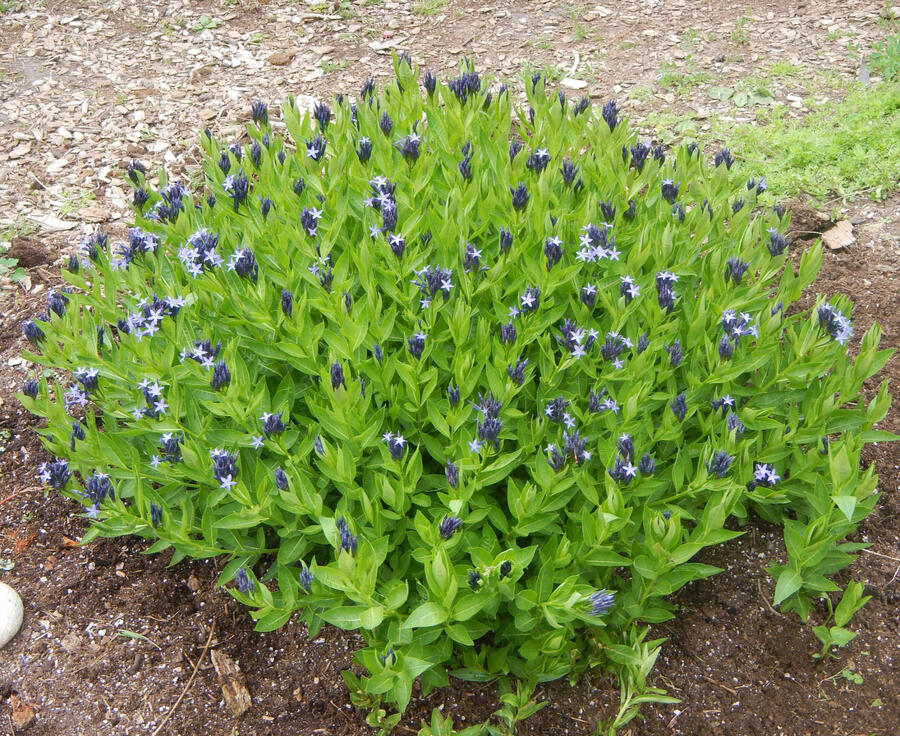
Amsonia tabernaemontana
‘Blue Ice’
Dwarf Blue Star
Zones: 4-9
Size: 1.5 tall with 2-3 foot spread
Sunlight: Full sun to part shade
Soil: Well drained soil
Bloom Time: Late spring early summer
Description: 'Blue Ice' is a shorter and more compact form of Blue Star. Growing just 12 to 15 inches tall, it has darker blue buds and flowers which start later and last longer. It has a dense growth form and very nice yellow fall color. Long lived, easy, and pretty, this one would be the perfect choice where short and bushy is what you need.
Deer resistant. Attractive to birds, butterflies and bees.Growing: It does best in full sun or light shade and average soil. Long lived, easy, and pretty, this one would be the perfect choice where short and bushy is what you need. Once established in your garden, this plant is quite drought-resistant and low-maintenance.
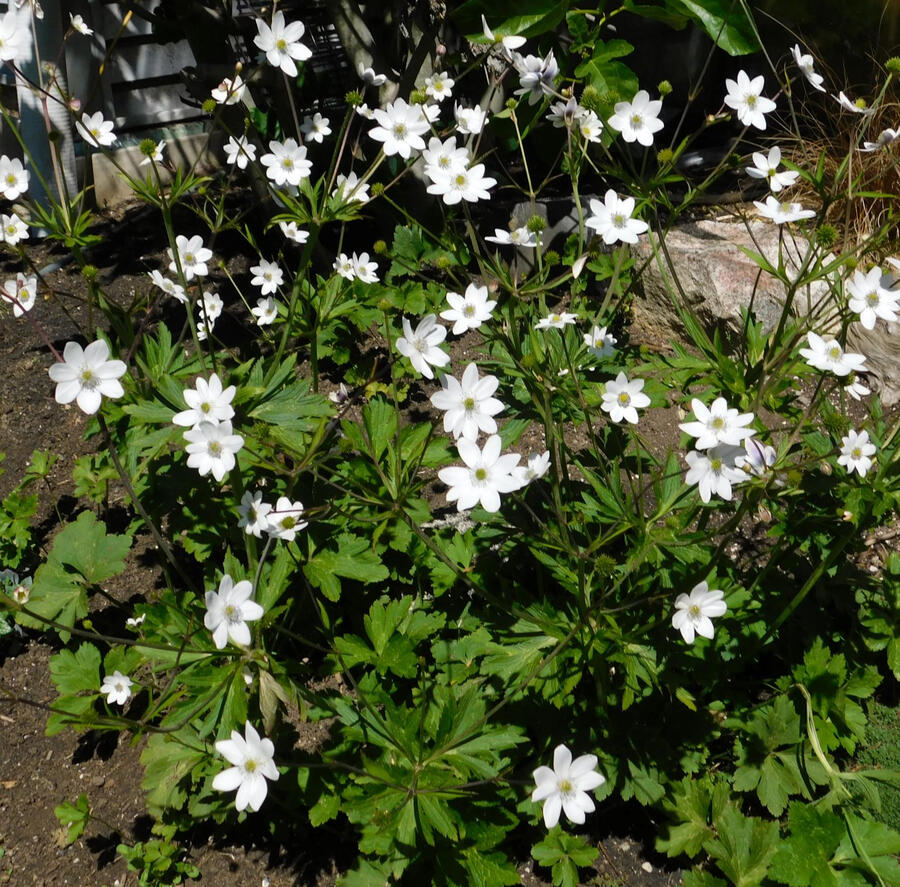
Anemone leveillei
Windflower
Zone: 5
Size: 18-30” tall
Sunlight: Full sun to part shade
Soil: Chalk, clay, loam, sand, most soil types
Bloom Time: Late spring early summerDescription: Anemone leveillei is a woodland type Anemone that doesn't mind a bit of sun. Subtle but lovely single white blossoms, centered with a fringe of dark anthers on 18" stems; the reverse of each petal is flushed with blue, which is what makes it so distinctive. Somewhat low and shrubby in appearance, it forms a tidy rosette of large, rugged, deeply divided leaves during the cold months.
Deer and Rabbit resistant; Attractive to bees.Growing: Happy is a sunny spot or in partial shade. Apply garden compost or manure around the base of the plant in spring. It prefers a slightly acid, moist, peaty soil. Avoid moving the plant since it resents disturbance. Where necessary lift and divide congested clumps in early spring.
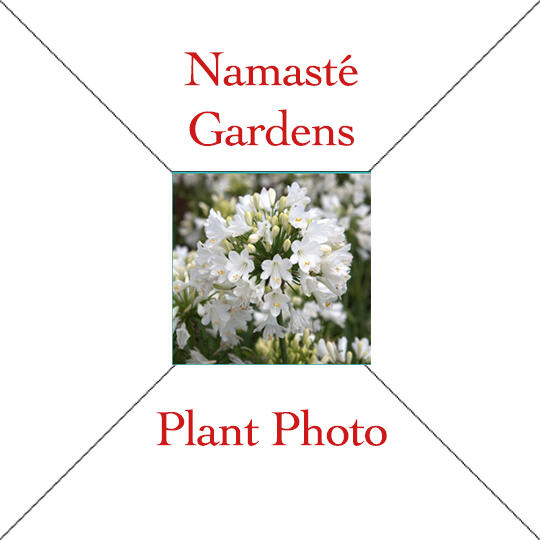
Plant Name
Text

Plant Name
Text
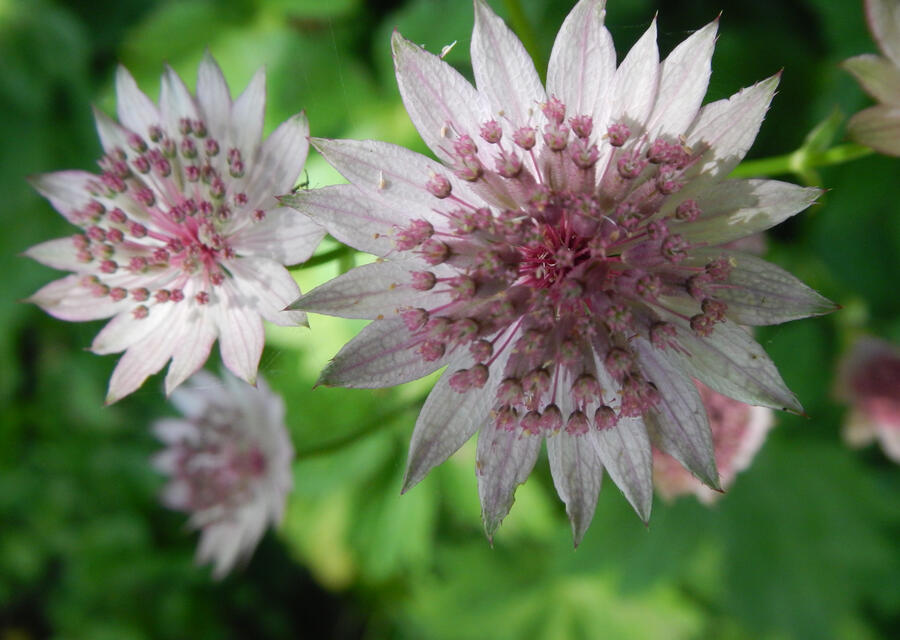
Astrantia major ‘Prima Donna’
Zones: 5-9
Size: 2 ft. tall
Sunlight: Part sun to full shade
Soil: Average to wet, fertile, humus rich
Bloom Time: Late spring through summerDescription: Little known Astrantias have everything a gardener needs, beautiful, long-lasting flowers in a wide range of colors attractive foliage, cold hardy and easy to grow. The flowers of ‘Prima Donna’ are delicate, beautiful, and strange. They have the feeling of fairy flowers. The flowers are in tiny, rosy pink clusters which are then surrounded by pale-pink, papery bracts which appear in late spring and last through the summer, if you don’t cut them all for your vase. They are very attractive in bouquets and can be dried for winter arrangements.Growing: Astrantias are useful in woodland plantings, in borders or beds. They grow in part sun to full shade and in loamy organic rich soil and may need summer watering.

Astrantia major ‘Claret’
Masterwort
Zones: 4-7
Size: 2 ft. tall
Sunlight: Part sun to full shade
Soil: Average to wet, fertile, humus rich
Bloom Time: Late spring through summerDescription: Little known Astrantias have everything a gardener needs, beautiful, long-lasting fairy flowers in a wide range of colors attractive foliage, cold hardy and easy to grow, ‘Claret’ grows 2 ft. tall with dark red flowers in dense, tight clusters surrounded by papery bracts on black stems appearing in late spring and lasting through the summer if you don’t cut them all for your vase. They are very attractive in bouquets and can be dried for winter arrangements.
Growing: Astrantias are useful in woodland plantings, in borders or beds. They grow in part sun to full shade and in loamy organic rich soil and may need summer watering.
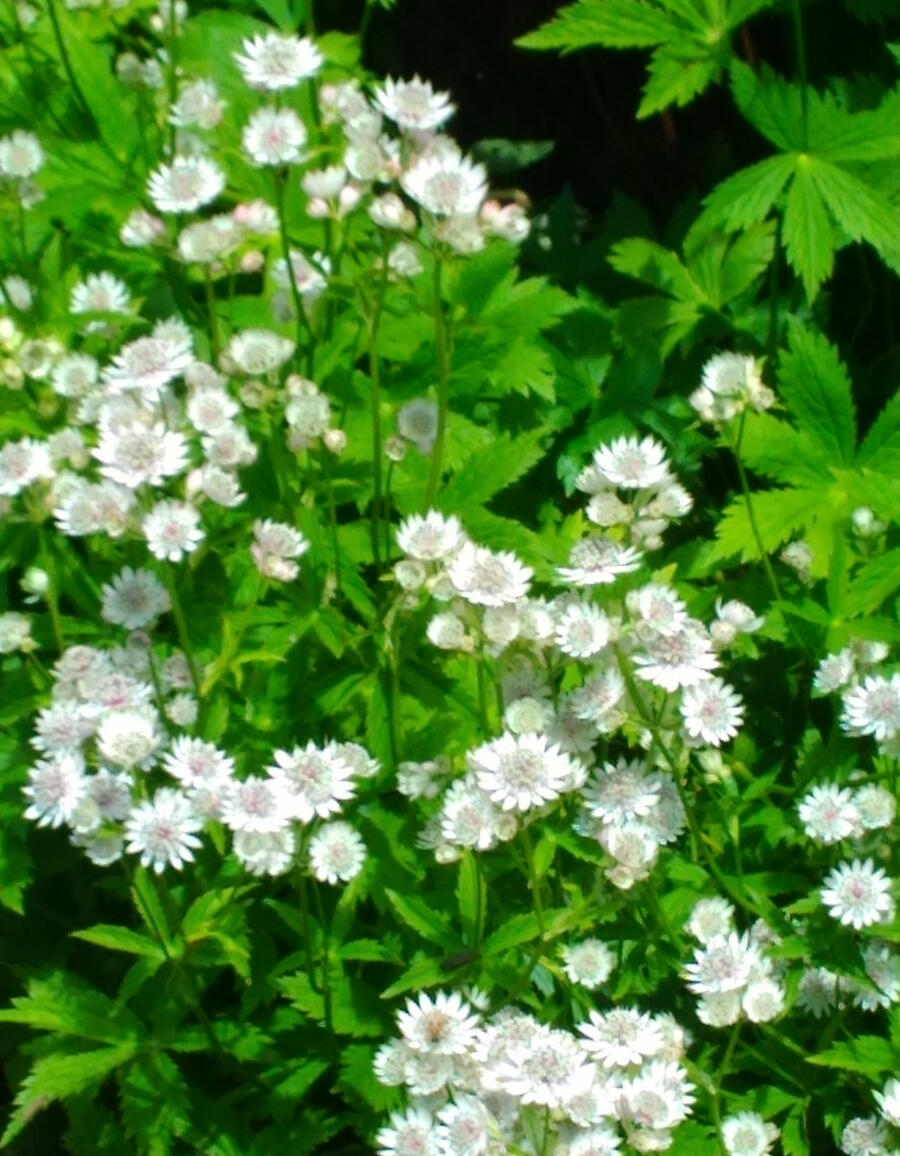
White Astrantia major
Zones: 4-7
Size: 2-3 ft. tall
Sunlight: Part sun to full shade
Soil: Average to wet, fertile, humus rich
Bloom Time: Late spring through summerDescription: Little known Astrantias have everything a gardener needs, beautiful, long-lasting fairy flowers in a wide range of colors attractive foliage, cold hardy and easy to grow, This white cultivar grows 2-3 ft. tall with tiny, white clusters in dense, tight clusters surrounded by papery bracts appearing in late spring and lasting through the summer if you don’t cut them all for your vase. They are very attractive in bouquets and can be dried for winter arrangements.Growing: Plant your Astrantia in a garden that does not get scorching sun. It is a great plant for your shade garden. It likes soil that is high in organic material and is fairly nutrient rich. It likes it to remain fairly moist and does not like to get dried out. If you plant it in a well-drained area, it may require summer watering.

Plant Name
Text
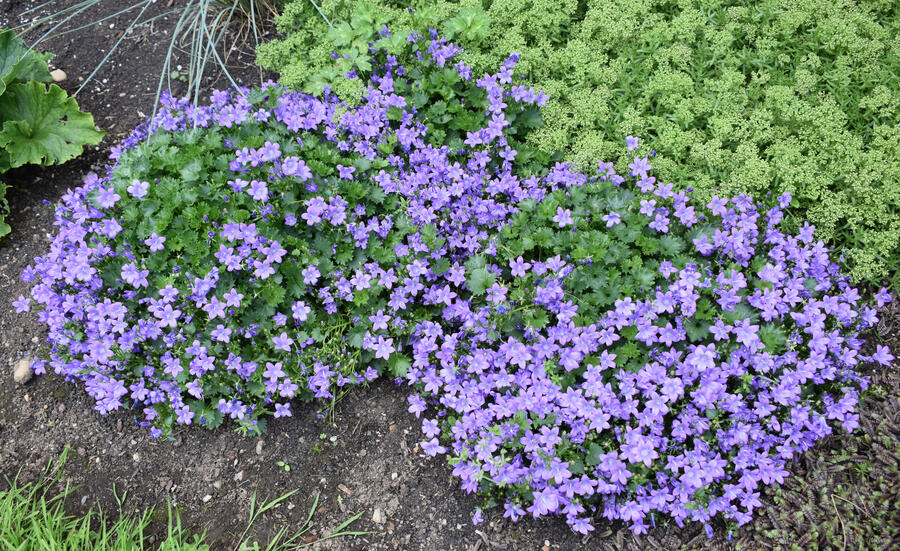
Campanula ‘Birch Hybrid’
Dwarf Bellflower
Zones: 4-7
Size: 4-6 inches tall
Sunlight: Sun to partial shade
Soil: Average, well-drained
Bloom Time: July-SeptemberDescription: This is a sweet little campanula that forms a tight clump of dark green foliage covered in purple-blue bell-shaped flowers that are present for most of the growing season. This is a slow-spreading ground cover that looks nice coming out of crevices or spilling over rocks, or as edging for a cottage garden. ‘Birch Hybrid’ makes a good container plant. It is deer and rabbit resistant and attracts hummingbirds.Growing: Plant your ‘Birch Hybrid’ in sun to part shade in well-drained soil that has an even mix of organic and inorganic material. Bloom time is increased even more if you take the time to deadhead the flowers.
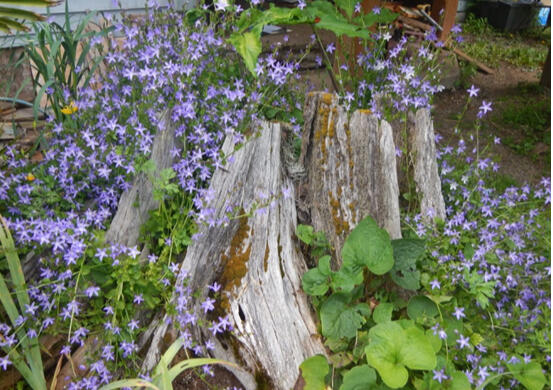
Campanula poscharskyana
‘Blue Waterfall’
Serbian Bellflower
Zones: 4-8
Size: 8-10 inches tall
Sunlight: Full sun to partial shade
Soil: Rich loamy, well-drained
Bloom Time: May-AugustDescription: Campanula ‘Blue Waterfall’ is aptly named with its lovely cascading habit and a gush of cool-blue bell-shaped flowers that reach out to cascade from the center; flowering for most of the growing season. It puts out runners of star flowers that look beautiful cascading down rocks or over container edges. It is drought tolerant and rabbit resistant and it attracts bees and hummingbirds.Growing: These plants like sun to part shade and well-drained soil. Remove about a third of the plant after blooming to freshen the foliage. This wonderful fairyland flower works well in rock gardens, woodland gardens or anywhere it won’t be overgrown by taller plants. They make excellent specimen plants for the shaded border, near pools, patio containers, window boxes or hanging baskets. Feature this plant in foundation plantings where it grows up to the trunks of shrubs and presses against building wall foundations. I have mine growing in a hollow stump by my front door.
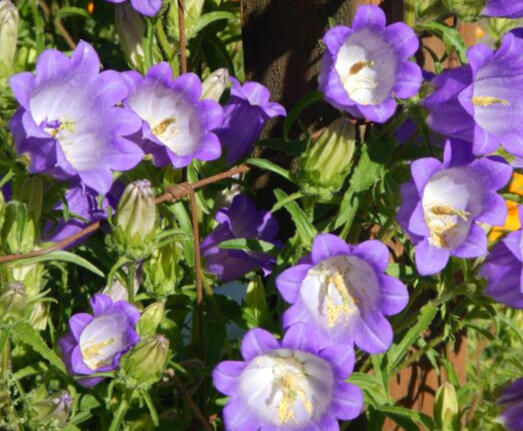
Campanula medium
Canterbury Bells
Zones: 6-8
Size: 2-3 ft. tall
Sunlight: Sun
Soil: Moist, well-drained, sandy loam
Bloom Time: JulyDescription: The cornerstones of yesterday's cottage gardens, these old-fashioned flowers occupy a class by themselves. Instant gratification is nice. They produce huge spikes of extremely long lasting blooms. Count on bellflowers to put the ring in spring when their bell-shaped blossoms burst into bloom. A biennial flowering plant with attractive flowers in mixed colors of blue, purple, mauve or white. Plant them in the summer for flowers the following spring. The plants grow to attain 2-3 feet in height. Flowers visited by bees and hummingbirds. Deer and rabbit resistantGrowing: The plant thrives in sunny locations in well-drained soil. Keep soil moist. Canterbury bells demand little care other than adequate moisture. To have continuous blooms every year, allow some of the flower seed pods to mature and re-seed the flower bed. This flower works well cut in floral arrangements. Canterbury bells are ideal for the informal, cottage garden look, where they can be intermixed with a variety of other plants. They're also useful for planting at the center of island beds, where they're viewed from all sides. Beekeepers sometimes use the Canterbury Bell for making potently sweet honey.
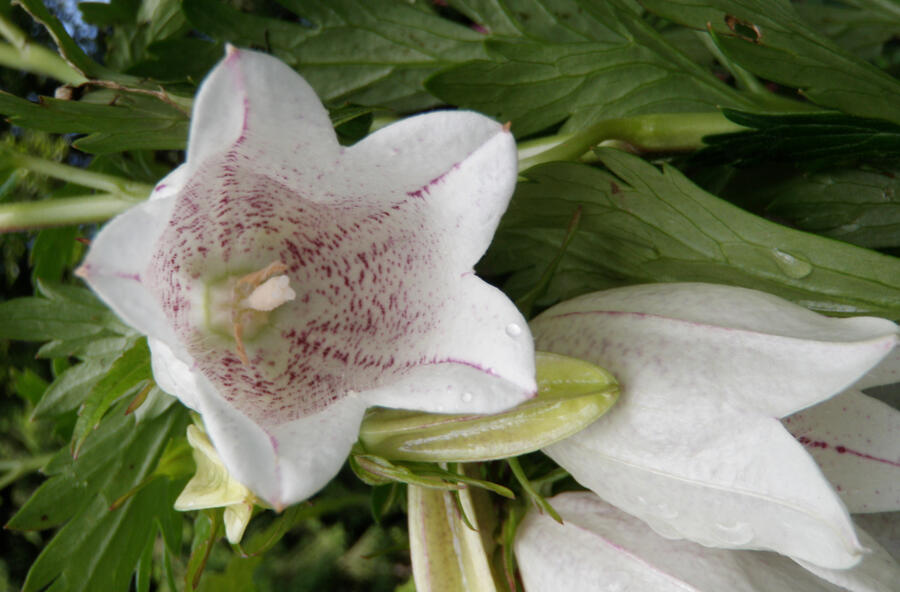
Campanula takesimana
Korean Bellflower
Zones: 5-8
Size: 1.5-2 ft. tall
Sunlight: Sun to shade
Soil: Average, medium moisture, well-drained
Bloom Time: July-SeptemberDescription: Campanula takesimana is a beautiful plant even without its white bellflowers nodding in the wind. It is a ground covering perennial that does well in shade. Its shiny heart-shaped leaves with beautiful rust-red and bronzy sheens light up the darker places in the garden. In the summer flower stalks rise 2 feet above the basal foliage and beautiful 2 inch, white, bellflowers with delicate lilac accents open up along the stem. It will bloom all summer and will bloom again in the fall if it is deadheaded.
Deer and rabbit resistant.Growing: They do fine in morning sun; the further north they are grown, the more sun they may require. They don’t need a lot of water but should be fertilized twice a year to sustain such floral excellence. After it has established itself in your garden it will begin to spread by rhizomes and can easily spread to two feet but its spread is controllable. It will need division every 3-4 years in the fall. They grow well in under-plantings around shrubs and trees or in part shade border areas.
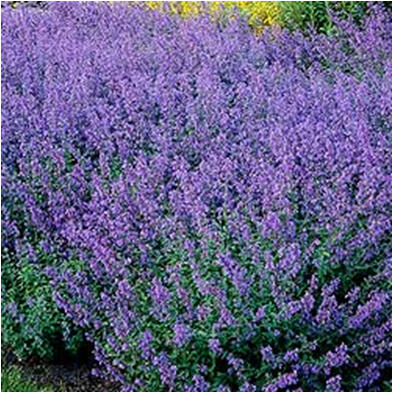
Nepeta ‘6 Hills Giant’
Catmint
Zones: 4-8
Size: 2 feet tall
Sunlight: Full sun to partial shade
Soil: Fertile, well-drained
Bloom Time: June-AugustDescription: Nepeta is a member of the mint family. This fragrant, ornamental herb has grey-green foliage that has a delicate, lacy appearance. The billowing foliage is topped with long spikes of flowers in early summer with repeat blooms throughout the season. It is often used as a substitute for lavender plants. As with many scented, grey foliage plants, Nepeta is deer resistant and attracts butterflies.Growing: Good as an underplanting for roses. The colors complement and the foliage hides the ugly ‘knees’ of the rose bush. It is also a wonderful plant for edging, for spilling over walls and walkways and for softening spiky plants like iris and yucca. The pastel blues combine wonderfully well with pinks and yellows. Nepeta is one of those plants that thrives on neglect. Too much fertilizer will only make it grow lots of flimsy foliage. A lean soil and somewhat dry growing conditions will encourage both flowers and scent. Grows more upright in full sun but will tolerate partial shade
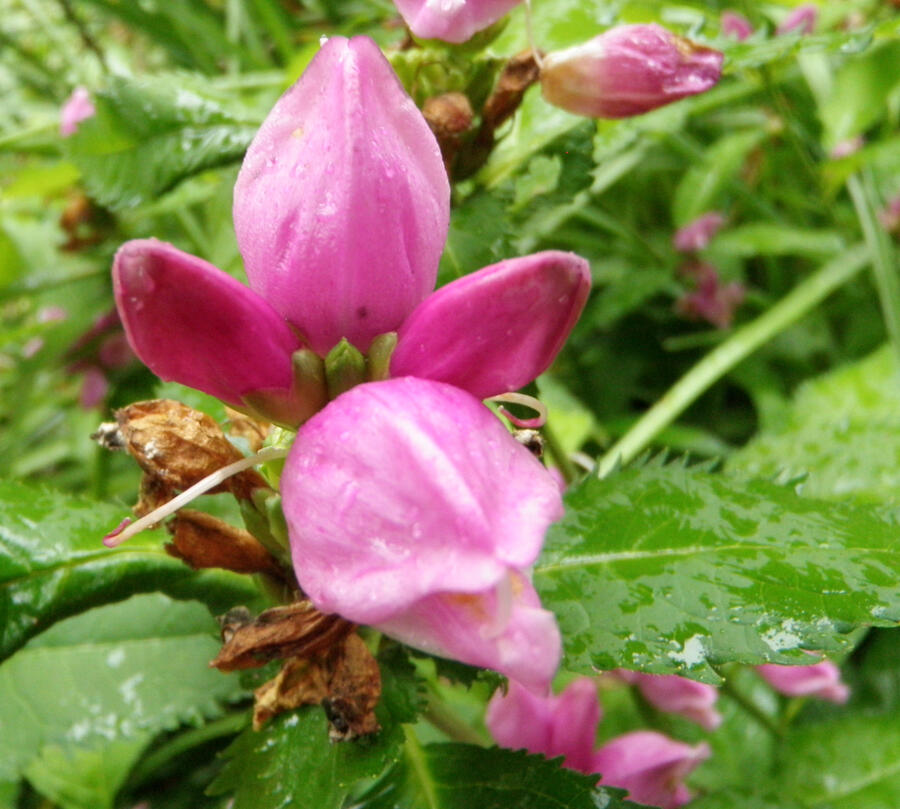
Chelone obliqua
Turtlehead
Zones: 5-9
Size: 2-3 feet tall
Sunlight: Full sun to partial shade
Soil: Moist, rich
Bloom Time: August-SeptemberDescription: This Missouri native is popular in European gardens but is less well known to gardeners in the States. Chelone obliqua has a nice, upright growth habit that does not require staking. Pretty rose pink flowers peek out from under dark green, serrated leaves adding color to the autumn garden. The flowers attract butterflies. Turtlehead is handy because it grows well in soggy soils which we get a lot of in Washington.Growing: Plant your Turtlehead in full sun to partial shade. It will grow in dense shade, or even in full sun if soil is soggy. It tolerates heavy clay soils and will grow in a bog garden as well as in fairly dry soil. Turtlehead is easy to grow.
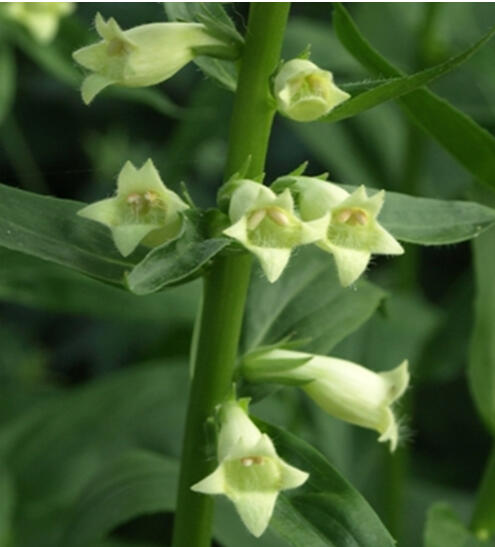
Digitalis lutea
Straw Foxglove
Zones: 3-9
Size: 2-3 ft. tall
Sunlight: Sun to shade
Soil: Loam, clay loam, humus
Bloom Time: Late spring to early summerDescription: Digitalis lutea is a very elegant and truly perennial foxglove, with glossy evergreen, narrow-leaved foliage. The upright flower stalks often grow in curvy lines, and are lined with many creamy flowers. The flowers are smaller than those of many other foxgloves, but their simple elegance makes up for lack of size. Only when you get up close do you notice they are very hairy inside. This charming spring-blooming perennial bears pale yellow tubular flowers on slender 3-foot stalks. Digitalis lutea has been cultivated since the 16th century in Britain and was established in American gardens by 1800.
Deer Resistant;
Growing: Straw Foxglove likes shade but will grow well in full sun too. It prefers evenly most, well drained soil. All parts of plant are poisonous if ingested. It will grow in most places in your garden and doesn’t require too much care after planting. It self sows readily when old flower heads are left alone. They make good cut flowers and are often visited by birds and other wildlife.
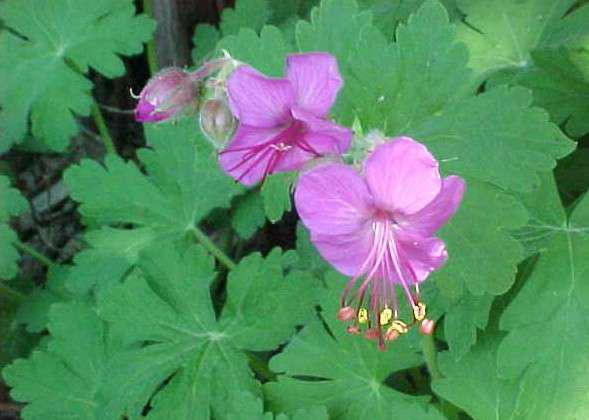
Geranium macrorrhizum
Bevan’s Variety
Zones: 3 - 8
Size: 12” tall x 18” wide
Sunlight: Full sun to partial shade
Soil: Average, well-drained
Bloom Time: April to JulyDescription: Bigroot geranium, is a semi-evergreen, spreading perennial that typically grows to 12" tall but spreads to 24" wide to form a thick, weed-resistant ground cover. Leaves are strongly aromatic when crushed and acquire attractive red tones in autumn. Long-lasting purple-pink flowers with inflated dark red calyces bloom in umbel-like clusters above the foliage in late spring to early summer, often with some sporadic re-bloom occurring throughout summer. It is a popular ground cover often used in border fronts, cottage gardens or wild gardens.Growing: Easily grown in average, dry to medium moisture, well-drained soil in full sun to part shade. It appreciates some afternoon shade. They do not need to be cut back, sheared or otherwise trimmed after flowering. Removal of flowering stems is all that is usually necessary for maintaining attractive plant appearance.
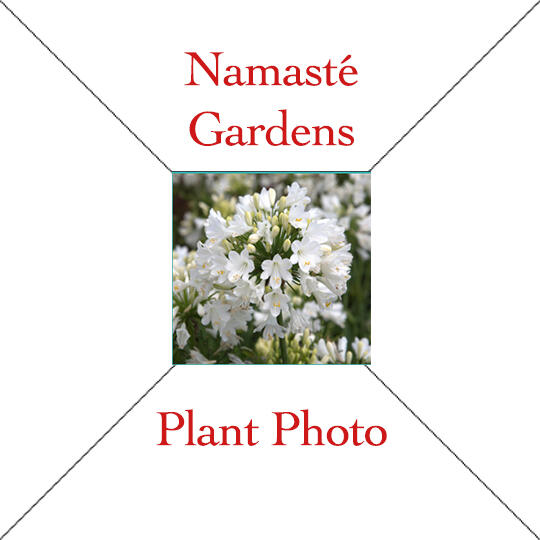
Plant name
Text
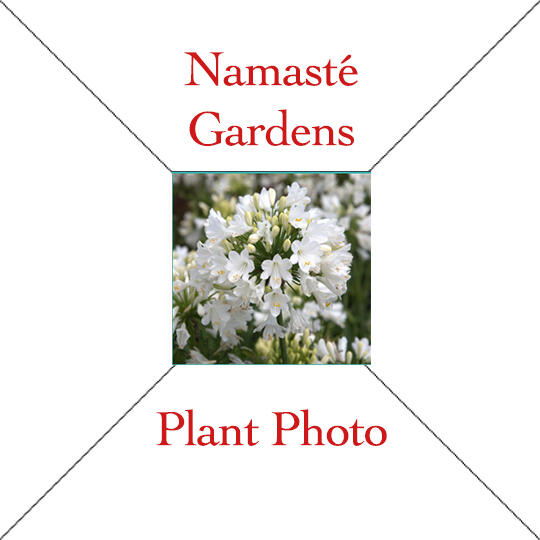
Plant name
Plant name
Text
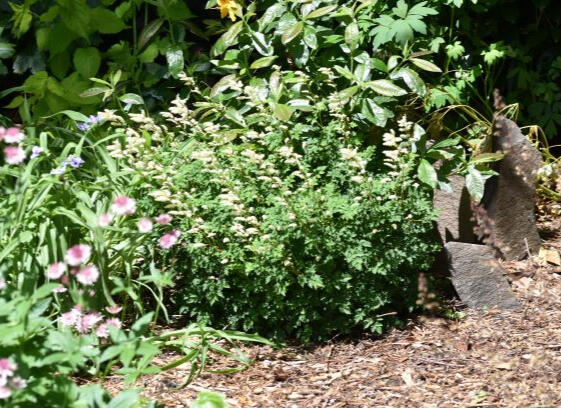
Aruncus aethusifolius
Dwarf Goatsbeard
Zone: 3-9
Size: 6-14” tall
Sunlight: Partial sun to partial shade
Soil: Moist, fertile, organically rich
Bloom Time: May-JuneDescription: Description: When you think of a woodland setting, think Aruncus. With elegant, feathery ivory plumes, Goat's Beard is similar to and combines well with Astilbe, although it is airier in form. Its neat mound of fern-like leaves makes it attractive even after it blooms. This Goat’s Beard is well behaved, slow growing and is unattractive to slugs which is a big bonus in the Pacific Northwest. It has a mature height of 6” to 14”. It is a popular cut flower and it is Deer Resistant.Growing: Aruncus prefers partial shade or partial sun and the soil should be organically rich. A terrific understory for tall trees, it thrives in moist soil, and is a natural beside a pool or stream. The fine, delicate foliage and small stature of this tidy dwarf lends itself as a ground cover around flat stones and rocks. It's well suited for the front of the border with broad-leafed Epimedium. It can be used in partly shaded areas of rock gardens, border fronts, woodland gardens or shade gardens.
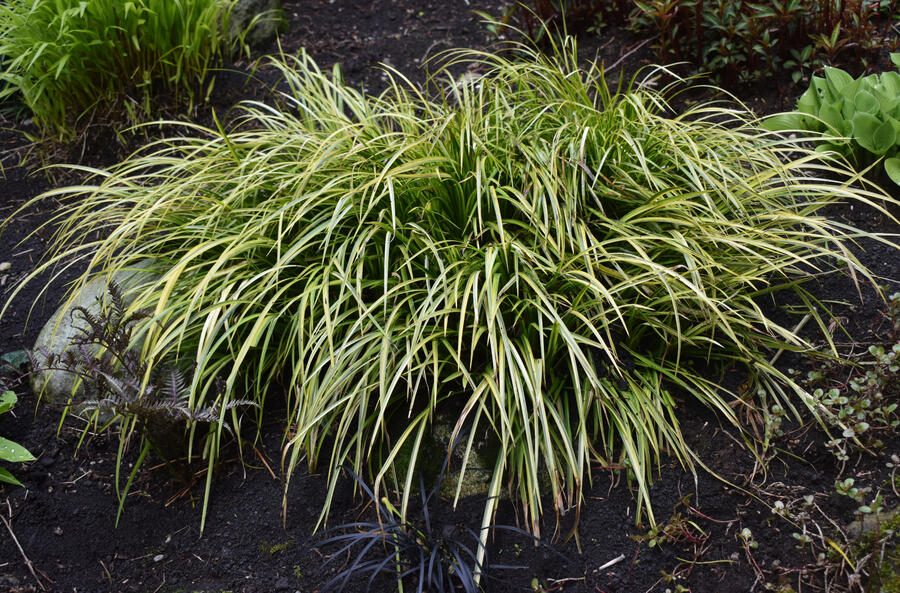
Grass - Acorus graminicus ‘Ogon’
Sweet Flag
Zones: 5-11
Size: 12 inches tall
Sunlight: Sun to part shade
Soil: Wet to dryDescription: This pretty little evergreen has golden variegated, grass-like leaves or silver variegated, grass-like leaves that grow in spreading fans. They look stunning in contrast with dark green Hosta leaves on a garden border or spraying out of a container planting. The Acorus adds texture and winter color to a rock garden and works well as a ground cover.Growing: Acorus is easy to grow and will do well in full sun to part shade, although the leaves are more vibrant when grown in the sun. I have it growing in full shade and it adds a lot of brightness there. It will grow in soil that is consistently moist and even in very shallow water. It will also grow in dryer soils. The Acorus adds texture and winter color to a rock garden and works well as a ground cover.
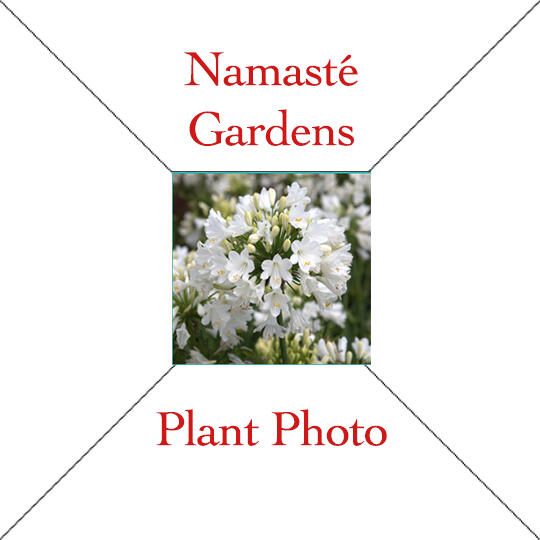
Plant name
Text
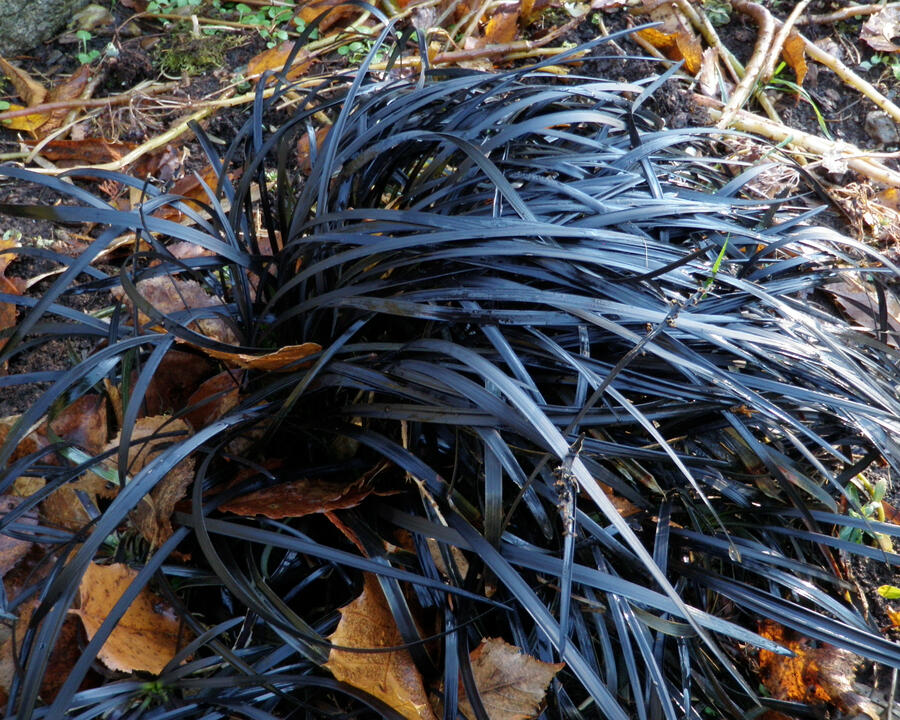
Black Mondo Grass
Ophiopogon planiscapus 'Nigrescens'
Zones: 5-10
Size: 8-12” tall
Sunlight: Sun- shade
Soil: Moist, well-drained
Bloom Time: July-AugustDescription: Evergreen lily-grass native of Japan & Korea, Black Mondo typically grows in slowly spreading clumps to 8-12” tall. Its black leaves sometimes have a purplish tinge and are the nearest to a "true black" plant that has been seen. This grass has dainty white flowers tinged with violet appearing during the summer season, giving way to glistening purple-black berries in the fall. Deer and rabbit resistantGrowing: Virtually maintenance free, plant this grass in full sun to partial shade in rich, fertile, humusy, slightly acidic, moist but well-drained soil. It’s compact habit with cascading leaves makes it an elegant choice for edging pathways or container plantings. Superb effects can be achieved by planting with other colored grasses; also terrific for offsetting plants with golden, silver or blue-green foliage.
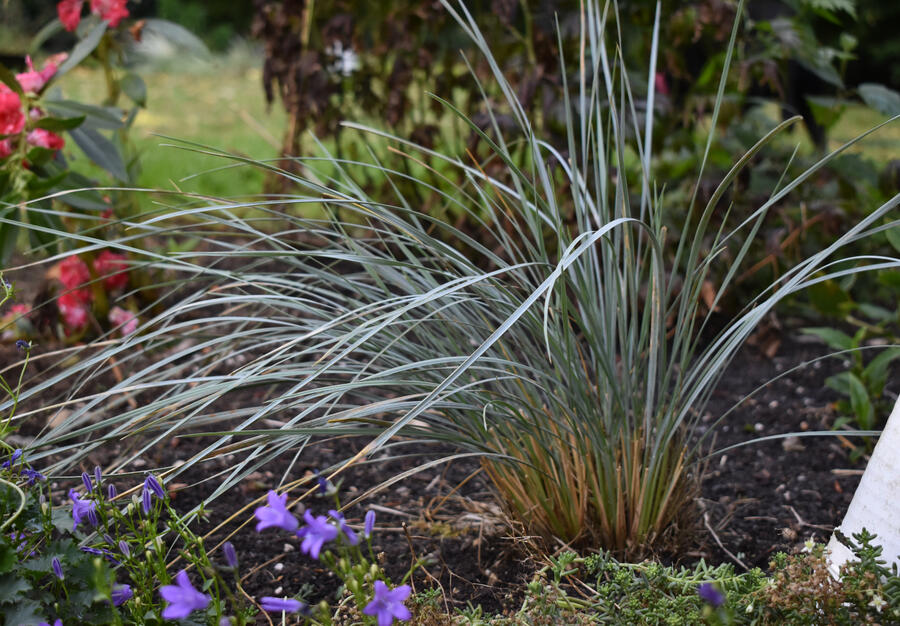
BLUE OAT GRASS
Helictotrichon sempervirens
Zones: 4-8
Size: 2 ft. tall
Sunlight: Sun- light shade
Soil: Moist, well-drained
Bloom Time: SummerDescription: Blue Oat Grass is a tall blue-gray evergreen, clump forming, cool season grass. It is noted for its very narrow steel blue leaf blades which radiate out from the center to form a bristling round dome 2 ft. tall. Summer flower spikes are erect and high above the foliage. Salt and drought tolerant; Deer and rabbit resistantGrowing: Helictotrichon is easily grown in average, dry to medium, well-drained soil in full sun to light shade. It is moderately drought tolerant but looks better with occasional watering. Use a stiff rake annually to remove old foliage or cut back close to the ground in late winter every year. Use as an accent plant or in mass plantings. The blue foliage contrasts well with pink flowering perennials and many spring bulbs.
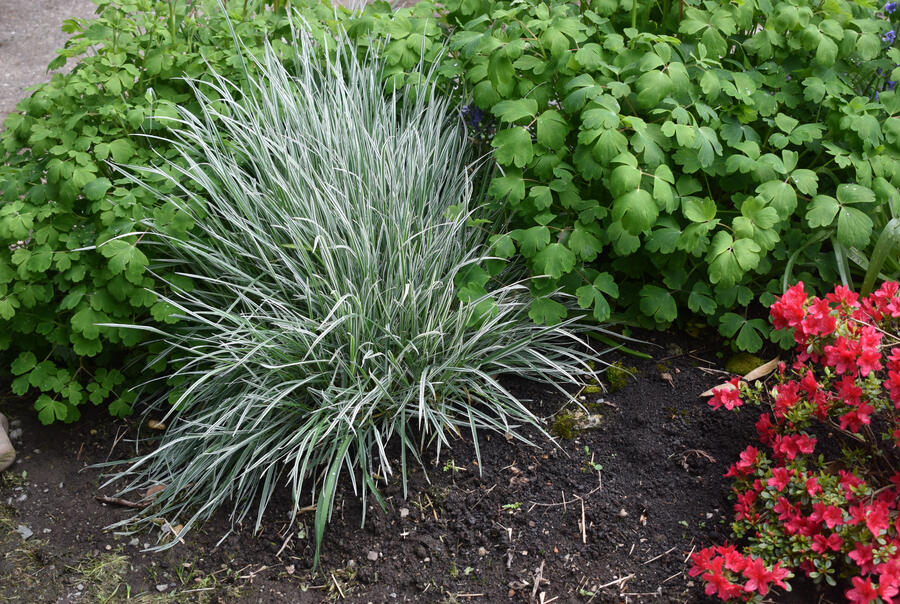
Bulbous Oat Grass
Arrhenatherum elatus bulbosum ‘Variegatum’
Zones: 4-9
Size: 18 inches tall
Sunlight: Full sun to part shade
Soil: Moist, well-drainedDescription: Silvery white-margined leaves form graceful foliage clumps to about 18” high with leaves that cascade upward and outward, giving an airy texture to the garden. It forms a spreading clump that grows at a moderate rate and can be easily curtailed if you wish to avoid it spreading too much.Growing: Bulbous oat grass prefers a well-drained spot that doesn’t get too dried out. It will grow in full sun to partial shade. They tend to go dormant in the summer and can be cut back at that time to make way for new fall foliage. Divide the clumps to revitalize them if they decrease in vigor. Bulbous oat grass looks nice in rock gardens or in mixed garden borders. It adds lightness and gives depth to the flower garden. They contrast well with darker foliaged plants.
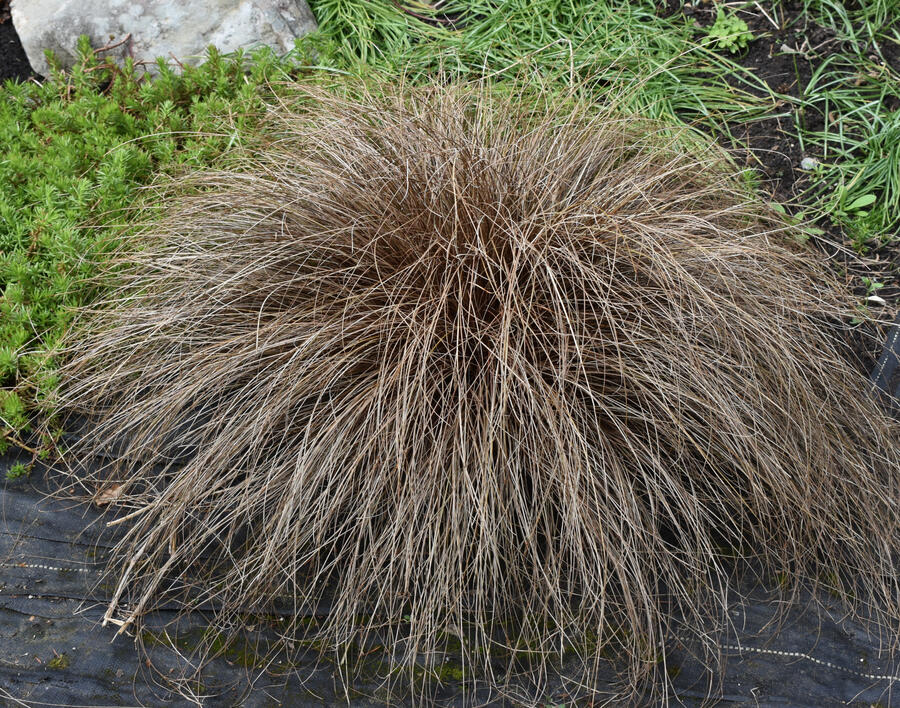
Grass - Carex buchanii
Zones: 5-9
Size: 1-2 feet tall by 1-2 feet wide
Sunlight: Full sun to partial shade
Soil: Fertile, wetDescription: Ornamental grasses are fantastic for softening hard landscaping and using as a contrast to plants with bold outlines. They come in a wide range of shapes, sizes and subtle shades to suite every garden style. Most gardens can accommodate several varieties. Ideal for sensory gardens, where you’ll be able to hear the breeze whispering through the taller varieties, the shorter types can also make an inspirational container planting. The coppery-brown leaves of this evergreen grass look strangely like hair. An extremely versatile plant - grows to 24" tall by 18" wide; can be grown as a specimen and in containers. Brown flower spikes in mid- and late summer. Erect bright reddish brown foliage that curls back at the tips make this one stand out all year long. And it.is deer resistant.Growing: Plant your Carex in full sun to partial shade in a wet or consistently moist area in fertile soil.
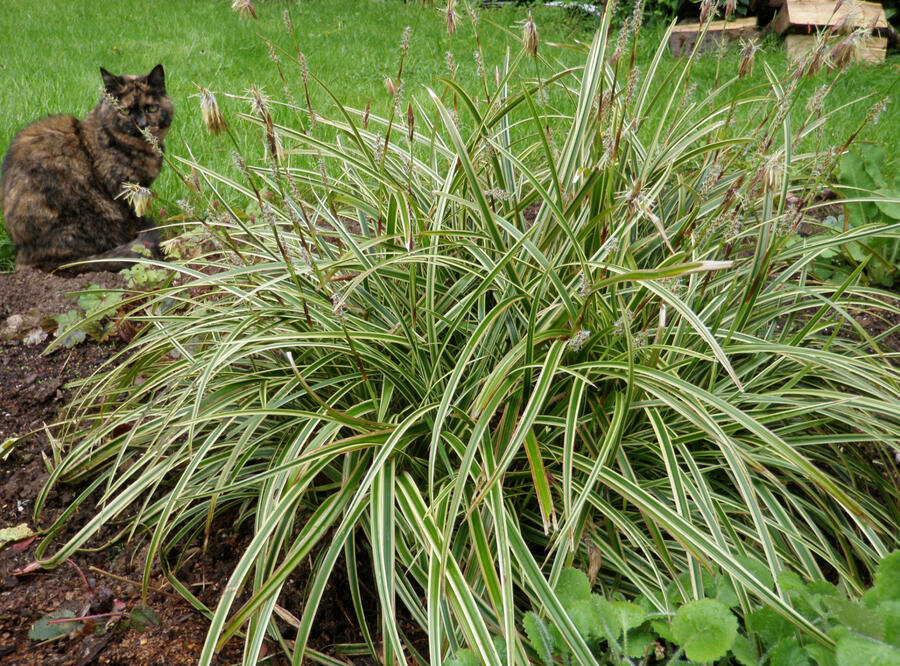
Grass -Carex morrowii ‘Ice Dance’
Zones: 5-9
Size: 12-15 inches tall
Sunlight: Partial sun to full shade
Soil: Moist, well-drained, loamDescription Long-lived ‘Ice Dance’ comes to us from the woodlands flanking Japan’s low-lying mountains. Dark emerald in color, the reflexed, leathery leaves are shiny and heightened by creamy white margins. This tidy, evergreen ground cover is not invasive; its spreading rhizomes form a coarsely textured carpet that is somewhat drought tolerant once established. A 12 -15" mounding plant. It is deer tolerant.Growing: Plant this sedge in partial sun to full shade in rich, moist soil that doesn’t get standing water. Providing texture, landscape applications are many. The most obvious is an edging plant for moist shade. Used as a groundcover with its slowly spreading habit it can be a nice addition to the list of possible selections of groundcover. Ice Dance also makes an excellent container plant.
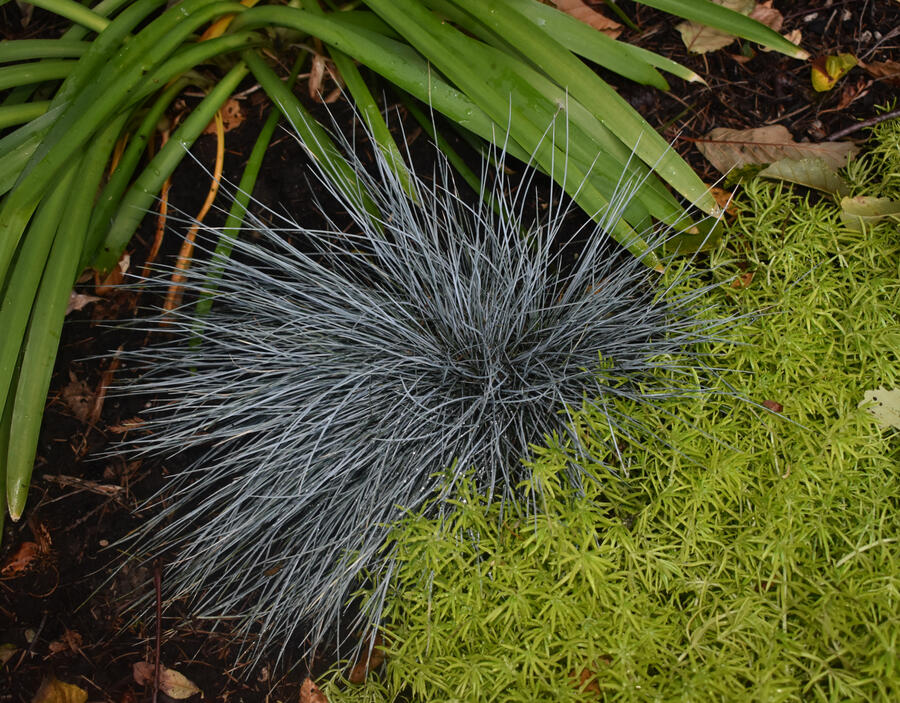
Grass - Festuca ovina glauca
Blue Fescue
Zones: 4-9
Size: 6-8 inches tall
Sunlight: sun to partial shade
Soil: Moist, well-drained, fertileDescription Festuca glauca, commonly called blue fescue, with its icy blue coloration is an evergreen clumping ornamental grass noted for its glaucous, finely-textured, blue-gray foliage. Its eye catching color holds its own in the heat of summer. It is deer tolerant.Growing: Blue Fescue prefers sun but will tolerate some shade; plant in average soil with good drainage. It will tolerate drought, neglect and lack of nutrients but prefers regular watering. Divide the clumps in winter or spring every few years to renew its vigor and help it keep its best color and shape. Fescues are great for rock gardens, edging borders or mass planting as a groundcover. Use them to bring a pop of blue color to borders, or plant in large drifts for a statement.
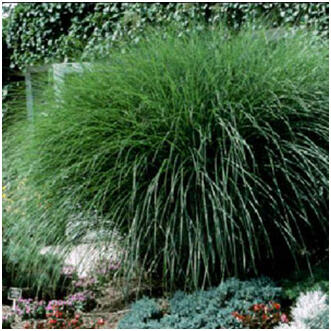
Maiden Grass
Miscanthus gracillimus
Zones: 4-9
Size: 5-6 ft. tall
Sunlight: Full sun-bright shade
Soil: Average, well-drained
Bloom Time: Late fallDescription M.gracillimus is perhaps the oldest cultivar of miscanthus sinensis and remains very popular to this day. It is noted for its fine narrow foliage and gracefully round form. It has very fine, weeping foliage with a white midrib. It can reach 5-6 feet in height and blooms late in the fall. The coppery flower plumes are beautiful cut or dried. It is drought tolerant and deer-resistant when mature.Growing: Maiden Grass is easily grown in average, medium moisture, well-drained soil in full sun to bright shade. Cut foliage close to the ground in late winter just before new shoots appear. This is an excellent grass for the garden or landscape, screening, or at water's edge. It makes a striking complement to large-leaved plants or combined with fruiting shrubs and evergreens for winter effect.
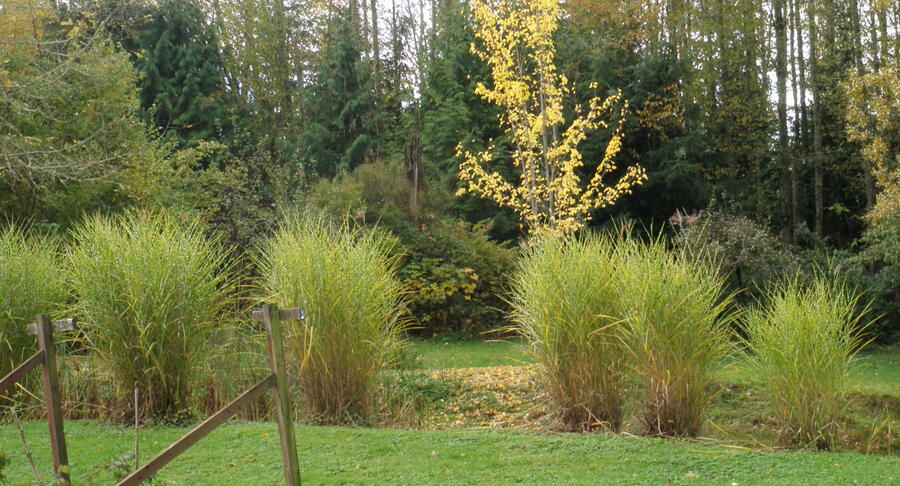
Zebra Grass
Miscanthus sinensis ‘Zebrinus'
Zones: 5-9
Size: 5-7 ft. tall
Sunlight: Full sun-bright shade
Soil: Average, well-drained
Bloom Time: Late fallDescription A stately and attractive deciduous grass with bands of yellow on the broad, arching green foliage; A spectacular centerpiece for year round interest in your border. 5-7 ft tall, it looks great planted along the edge of ponds, as an accent specimen or in a small grouping. Use in borders, meadows, wild gardens, cottage gardens, naturalized areas or pond/water garden peripheries. Plants slowly expand in circumference over the years, but typically retain tight clump shape. Flower panicles and foliage both retain good arching shape, beige color and ornamental interest throughout winter.Growing: Zebra grass prefers sandy loam or clay but is not fussy about soil. It will grow in full sun to part shade and is drought tolerant. You should cut foliage to ground in late winter before new stems emerge to avoid a mix of dead stems with the new growth. I have it growing along the edge of my duck pond giving the ducks some privacy and me an interesting textural image at the lawn’s edge.
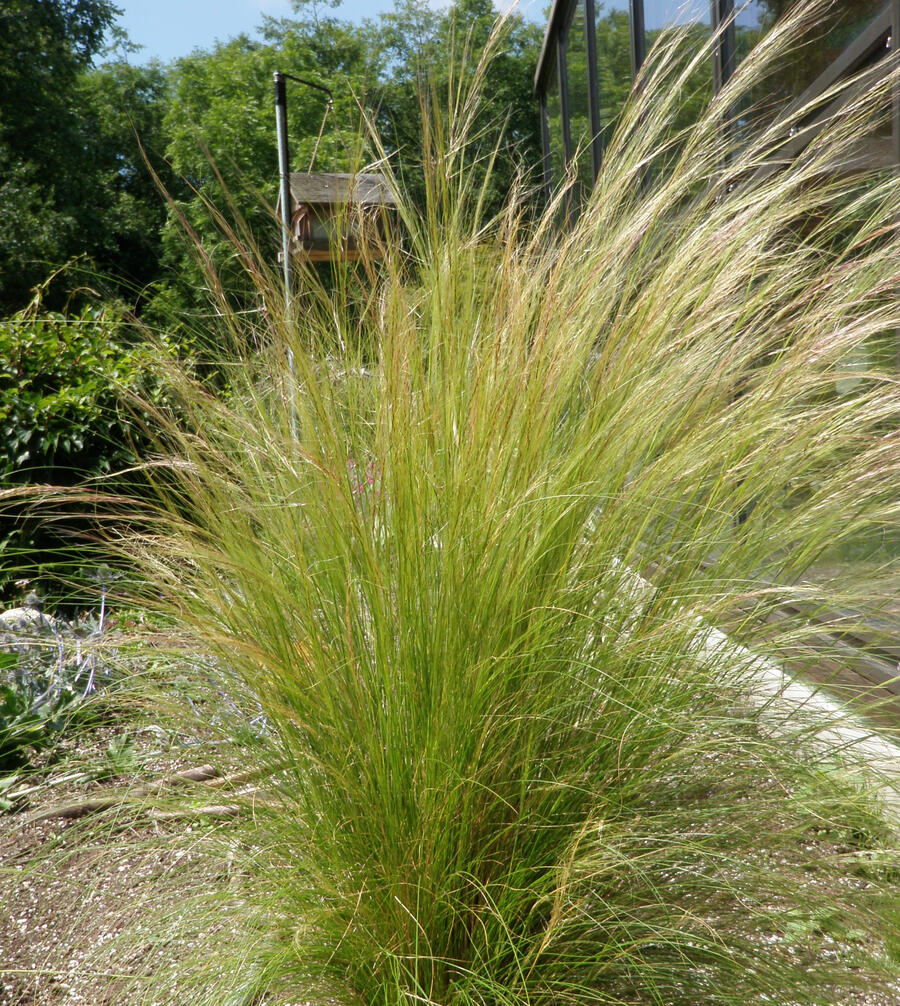
Mexican Feather Grass
Nassella tenuissima
Zones: 5-10
Size: 18-24”tall
Sunlight: Full sun-bright shade
Soil: Average, well-drained
Bloom Time: Late fallDescription Nassella is a mounding grass with needle-like leaves forming bright green clumps 18 to 24 inches in height. The silky, hair-like flowers glisten in the light and dance with the wind. It has shown cold-hardiness and also is a trooper in the sweltering hot summer. This is an environmentally friendly, easy-to-grow grass with virtually no pests or diseases. It’s native to parts of west Texas, New Mexico and the north central states of Mexico, where it grows in open, dry woods, on rocky slopes and in dry, disturbed areas. This grass is deer resistant.Growing: Select a site in full sun, although they will tolerate light shade. The bed should be fertile and well drained. It self-seeds readily. The Mexican feather grass is striking planted alone or in large masses or drifts. The blooms are almost indescribable when backlit by the setting sun or landscape lighting, so take advantage of this if possible.
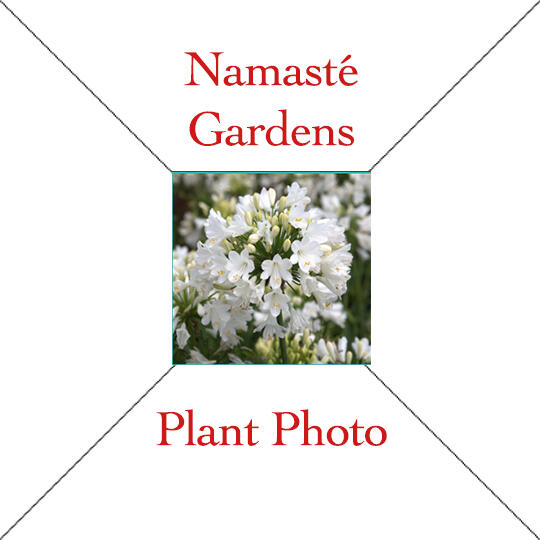
Plant name
Text
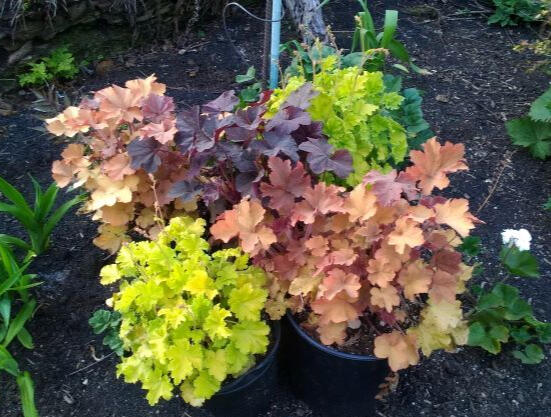
Heuchera
Zones: 3-8
Size: 15" tall by 20" wide
Sunlight: Sun or shade
Soil: organically rich, humusy
Bloom Time: June - JulyDescription: These are plants that really catch the eye and are grown for their foliage, which is essentially evergreen, as much as for the flowers. They have a pleasant mounding form. Use in rock gardens, borders and open woodland gardens. Effective as an edger along paths or walkways or in containers.Growing: Heucheras prefer an even, never soggy, supply of moisture in rich, organic, well-drained soil. If planted in full sun, extra moisture must be supplied to prevent drying out. Divide clumps in spring every 3-4 years.
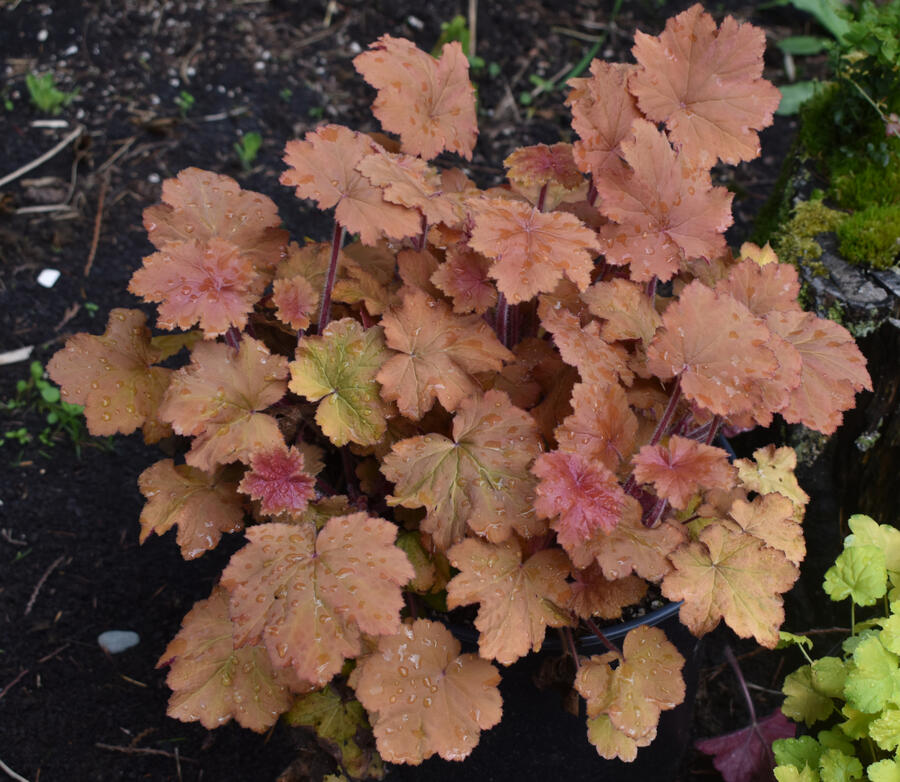
Heuchera ‘Caramel'
Coral Bells
Caramel is a vigorous, clump-forming coral bells cultivar that features unique apricot foliage and light pink flowers.
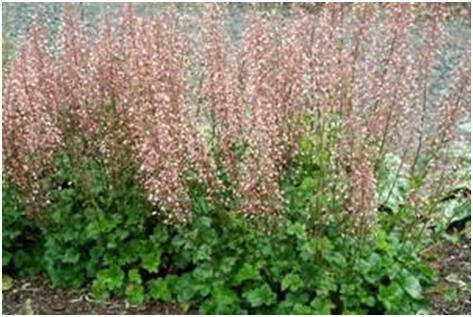
Heuchera ‘Champagne Bubbles’
Coral Bells
Champagne Bubbles has an effervescent display of thousands of flowers changing from white to pink and is handsomely upright creating a garden of enchantment.
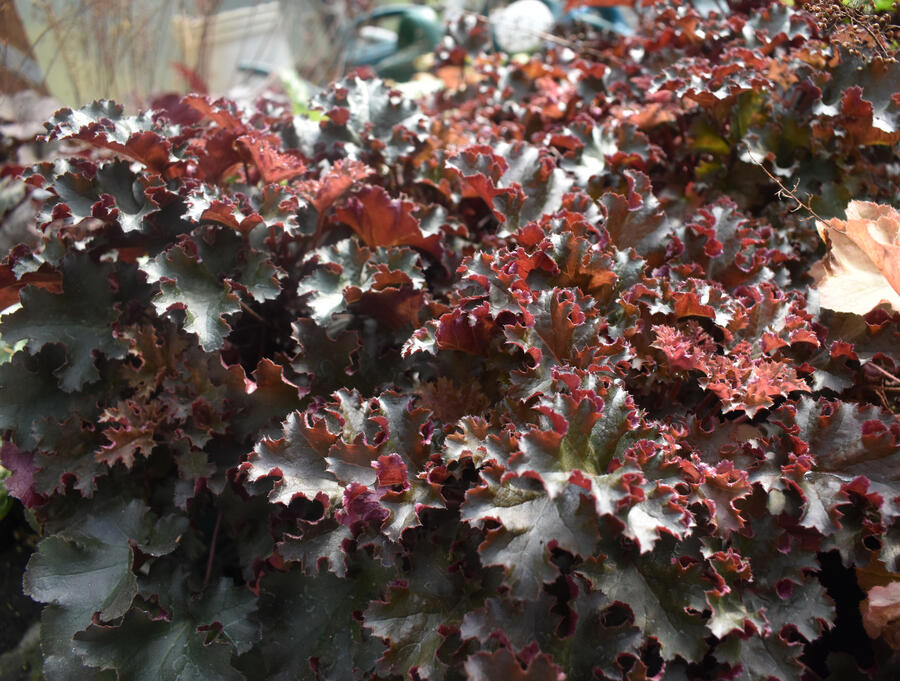
Heuchera
‘Crimson Curls’
Crimson Curls was my first Heuchera and is still flourishing in my gardens, both sun and shade. Its dark red foliage lends contrast to other perennials growing nearby.
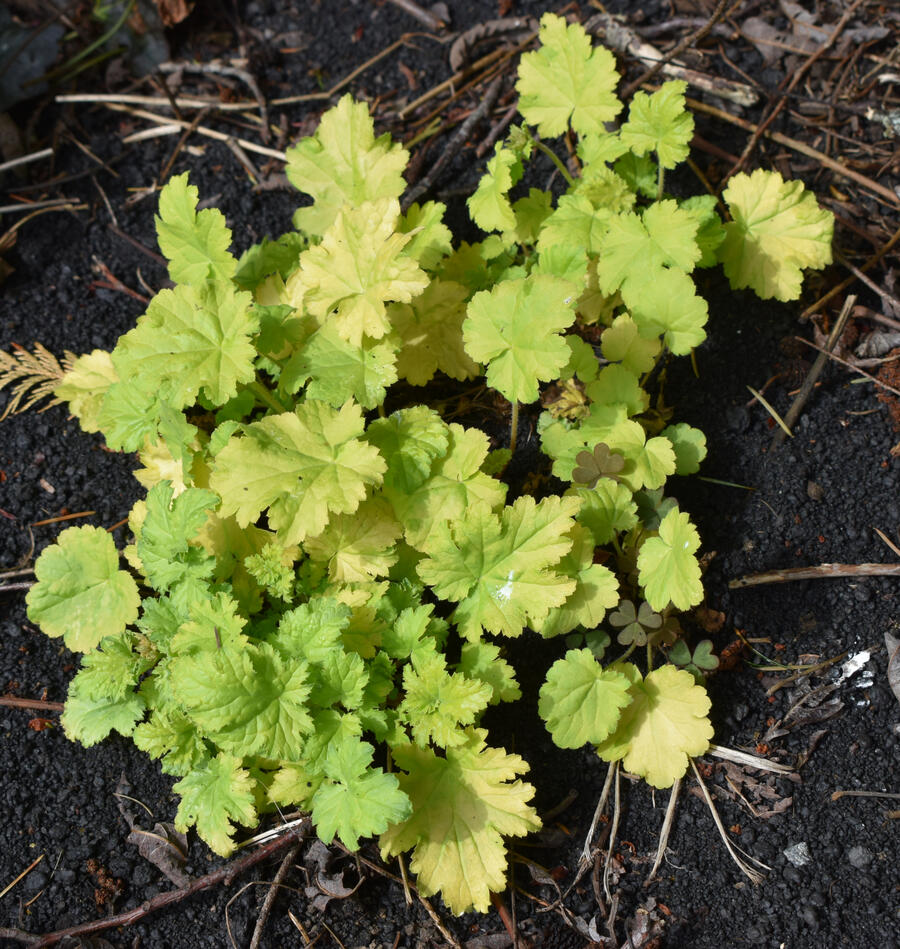
Heuchera ‘Key Lime Pie’
DOLCE KEY LIME PIE is a vigorous, clump-forming coral bells cultivar that features leaves that emerge chartreuse in spring, but mature to lime green in summer with sharp color retention throughout the growing season.
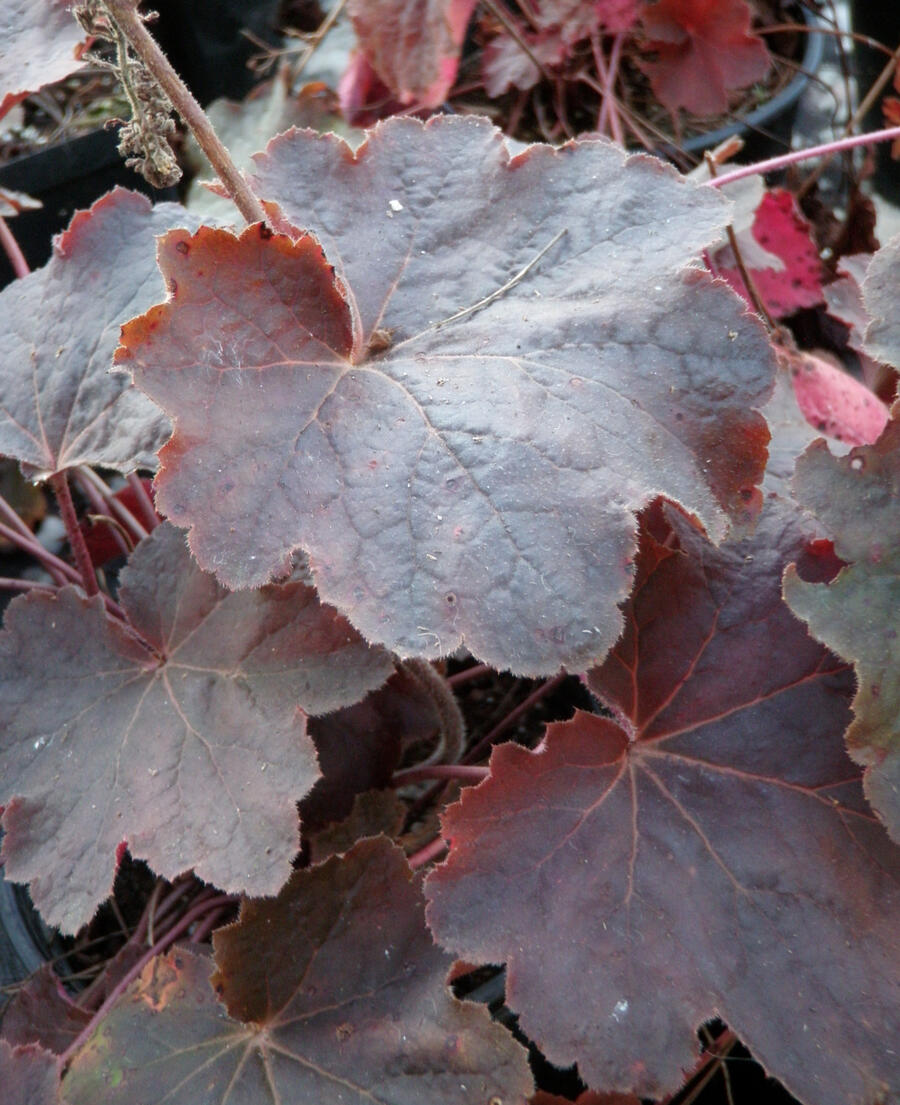
Heuchera villosa ‘Mocha’
Mocha is a stunning coffee-colored Heuchera with rich, deep color that just intensifies in summer sun! Mounded, compact, and nicely layered, it adds considerable texture and presence as well as unique foliage to any container or garden setting.
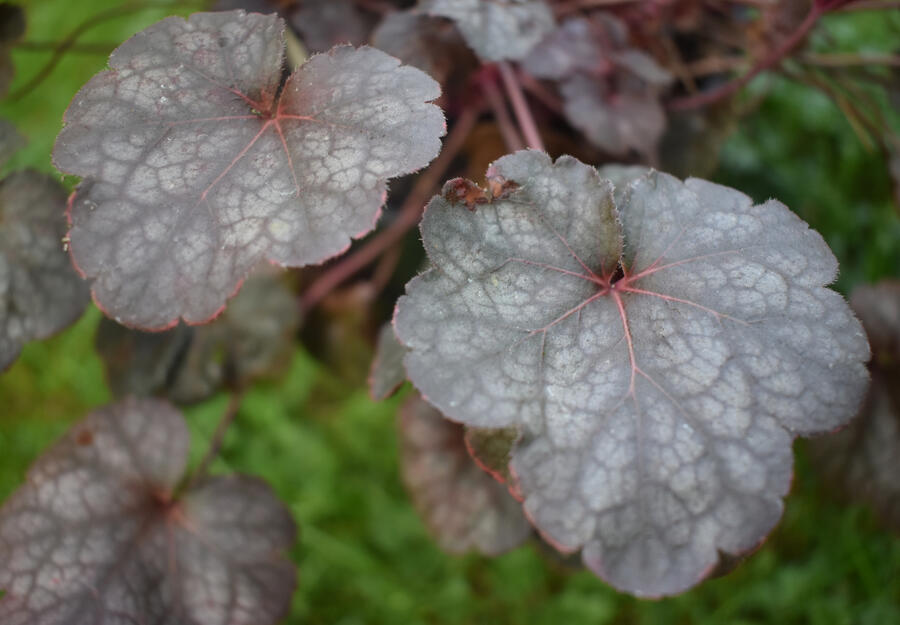
Heuchera villosa
‘Swirling Fantasy’
As a group, the Hybrid Coral Bells offer the gardener a tremendous new range of foliage colors. This recent selection features a fine display of purple leaves with pewter marbling, set off with sprays of red flowers in summer.
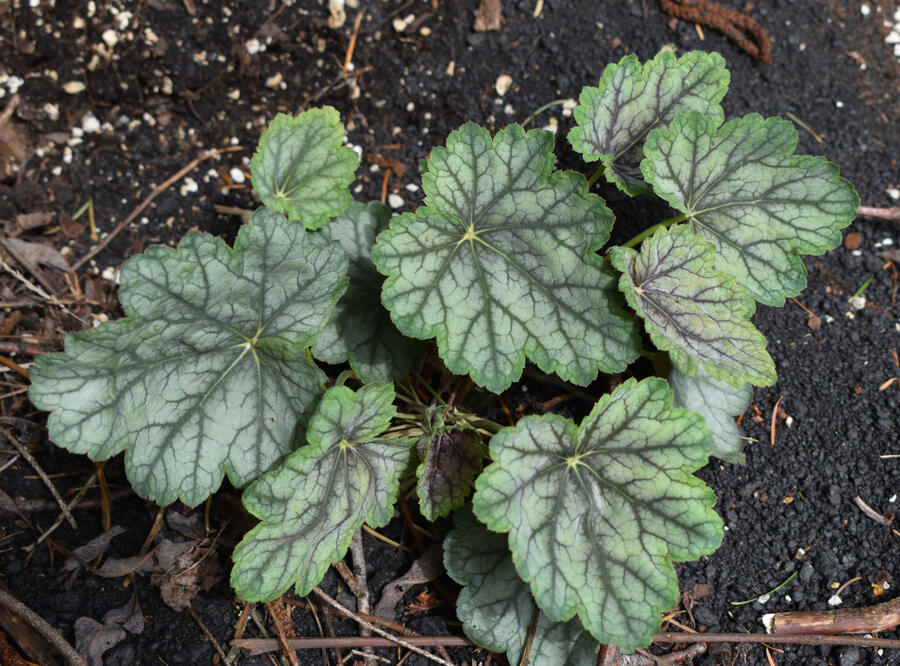
Heuchera ‘Venus’
These are plants that really catch the eye - large silver-sheened leaves accented by dark green veins. Tiny, nearly white bell-shaped flowers appear in late spring to early summer on slender, wiry stems rising well above the foliage.
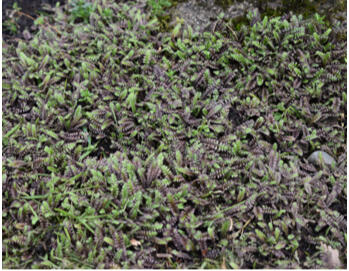
Leptinella squalida
Platt’s Black Brass Buttons
Zones: 4-10
Size: 2” tall; unlimited spread
Sunlight: Full sun - shade
Soil: Fertile, well-drained
Bloom Time: June-JulyDescription: Platt’s Black is a, mat-forming perennial with delicate, soft-textured, fern-like, oval, near black leaves native to New Zealand. It is only 2” tall and spreads indefinitely by runners and can withstand light foot traffic. Button-like yellow flowers in early summer are followed by tiny fruit, neither of which is considered to be particularly ornamental.Growing: Leptinella is easily grown in average, medium moisture, well-drained soils preferring acidic, organically rich loams. It will grow in sun or shade. I have some growing where it gets ~4 hours of late afternoon sun and it is thriving there. Plant it between stepping stones to add interest and suppress weeds or in the rock garden or in gravelly hard to grow areas ie; where tree roots are near the surface and there is not much free soil. It is a good plant for terrariums too.
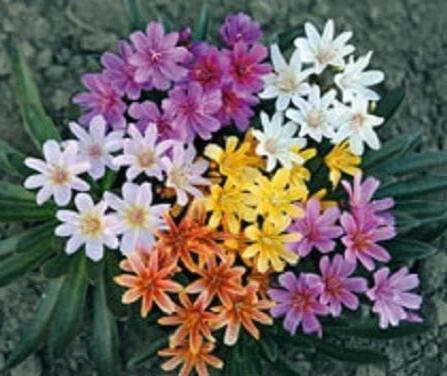
Lewisia longipetala
Little Tutti Frutti
Zones: 4-9
Size: 8-12” tall
Sunlight: Full sun–part shade
Soil: Well-drained, gritty
Bloom Time: May-JuneDescription: This is a hybrid of Lewisia longipetala which is native to the California where it grows in rocky mountain habitat on north-facing slopes with little surrounding vegetation. These hybrids are better adapted to living through wet winters and generally live longer in many landscape environments. It is an attractive succulent forming a 5" green rosette that develops into a considerable mound with time. It has blossoms in white, magenta, salmon, orange, plum, peach, mango and other lovely color blends.Growing: Lewisia can grow in full sun to part sun and prefers well-drained soil that is gravelly, sandy or loamy. Plenty of fine gravel, coarse sand or granite grit should be mixed in with the soil at planting time. Provide them with moderate water, excellent drainage and a minimum of nutrients. The primary thing to remember is to avoid excessively fertile soil and compacted or clay situations. Protect them from winter moisture.
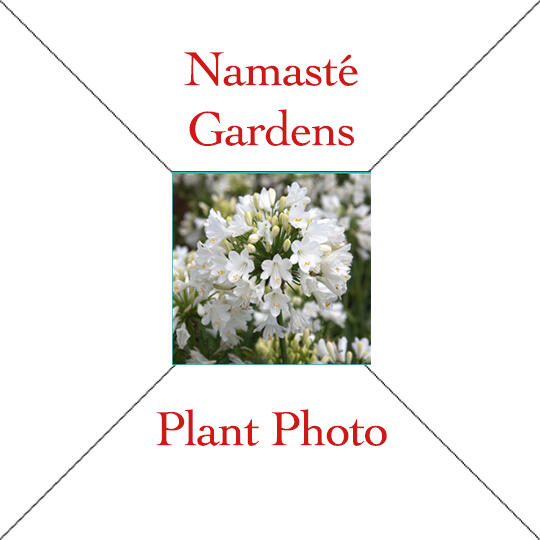
Plant name
Plant name
Text
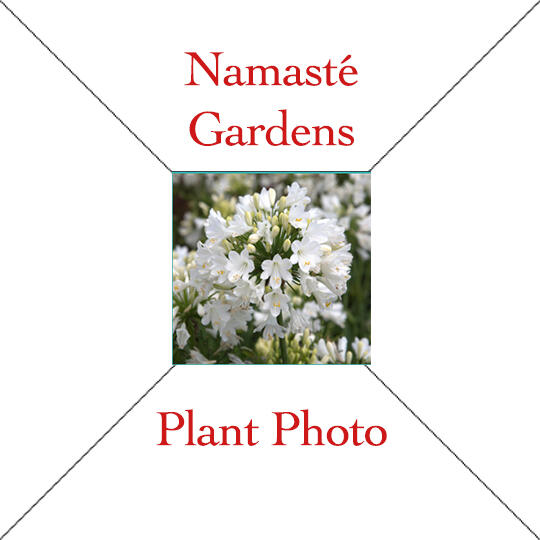
Plant name
Text
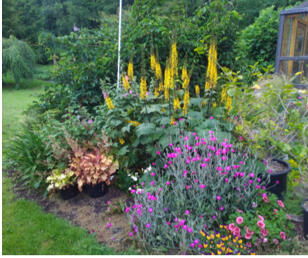
Ligularia stenocephala
‘The Rocket’
Leopard Plant
Zones: 4-8
Size: 3-5 ft. tall
Sunlight: Part sun-full shade
Soil: Rich, humusy, wet
Bloom Time: July-AugustDescription: Ligularia is an imposing, clump-forming perennial with a mounded habit. Dramatic spires of bright yellow flowers tower over handsome boldly toothed bronze foliage in July and August. This towering perennial makes an excellent specimen plant for a moist, sunny border or bog garden. It is a true bog plant & can have water up to the head of the root without harm. They can form a magnificent display in a mixed border and can look imposing as waterside plants where the inflorescences are reflected into the water. They are relatively untroubled by pests and diseases but like many herbaceous perennials the young, tender, emerging leaves can be damaged by slugs and snails in the spring.Growing: Ligualarias can be tricky to place in the garden, as they need fertile, deep, moist soil and dappled shade for the foliage but enough sun to encourage the spectacular spires of bloom.
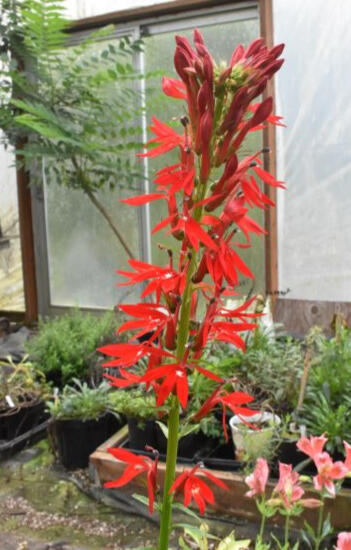
Lobelia cardinalis
Cardinal Flower
Zones: 3-9
Size: 4 feet tall
Sunlight: Full sun to part shade
Soil: Sand to loam
Bloom Time: Mid to late summerDescription: Native to much of the US but not in WA. It has beautiful scarlet red flowers which are an important nectar source for hummingbirds and swallowtail butterflies. They produce a secondary compound known as "lobeline," which deters herbivores such as deer and rabbits.Growing: Occurring naturally in marshes and wooded stream banks, Lobelia cardinalis grows best in rich soils in full sun to partial shade. Short lived, it is a prolific self-seeder, so it will replenish itself to form large stands of red blossoms. They require rich, deep soil which remains reliably moist year-round.
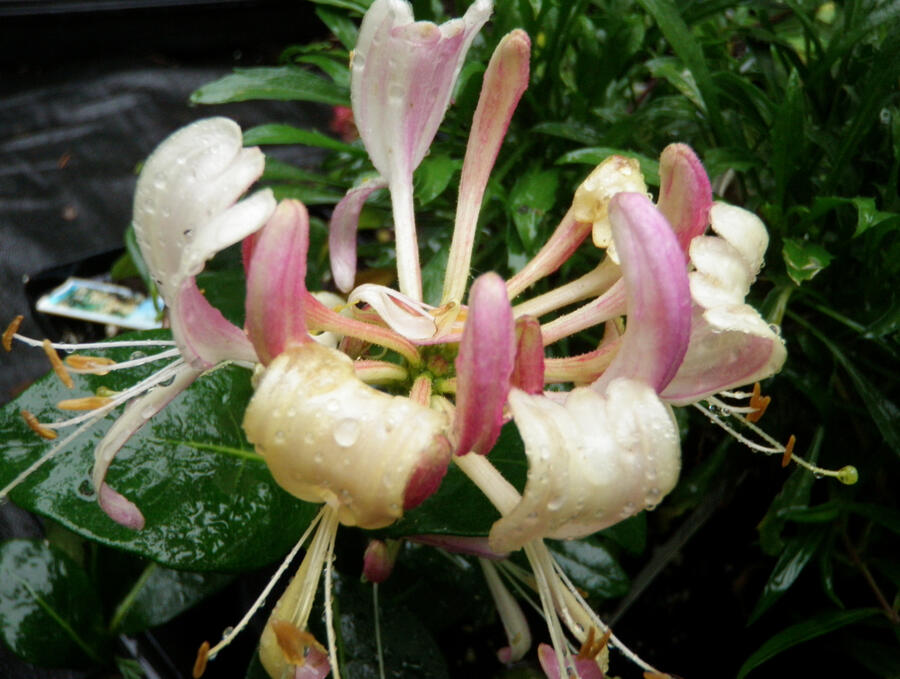
Lonicera x heckrottii
Goldflame Honeysuckle
Zones: 5-9
Size: 10-15 feet high
Sunlight: Sun to shade
Soil: Average moisture, well-drained
Bloom Time: June-AugustDescription: One of the most beautiful honeysuckles, this twining climber bears sweetly fragrant, carmine flowers that open to reveal creamy, yellow throats. The most profuse bloom typically occurs from June to August, with sparser bloom continuing into fall. They can be followed by inedible red berries in autumn. The oval, 2”, blue-green leaves on reddish stems provide textural interest all year long. Honeysuckle is long flowering, tolerates a wide range of conditions, attracts hummingbirds and butterflies, provides winter interest, and when grown on a trellis or arbor, adds height to the garden. It is most frequently seen as a twining vine that grows to 10-15’, but may be pruned as a rounded, free-standing shrub growing to 4-6’. This plant is resistant to deer.Growing: Honeysuckle is easily grown in average, medium moisture, well-drained soils in full sun to part shade. Train this low-maintenance plant across a stone wall or railing to provide a background for garden plants, or use it on the ground to quickly cover a bare spot. Pin the branches down to guide its growing habit.
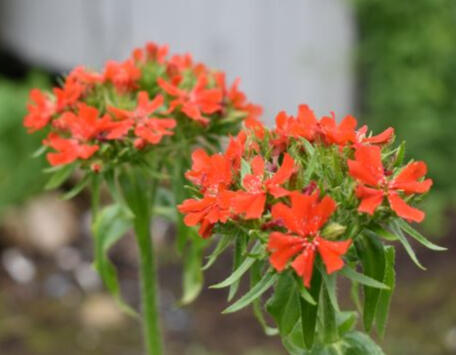
Lychnis chalcedonica
Maltese Cross
Zones: 4-10
Size: 3-4 feet
Sunlight: Full sun, partial shade
Soil: Loamy, well-drained
Bloom Time: Early to late summerDescription: An heirloom flower that has been grown in gardens 400+ years. Maltese Cross has lush green upright growth with dense clusters of dazzling scarlet flowers in the summer. They are perfect where bold splashes of color are needed to draw the eye to a spot in the garden. Long popular in cottage gardens, this is a rugged and easy perennial for any sunny border. Attracts butterflies and hummingbirds. Good cut flower. Deer and Rabbit Resistant.Growing It grows best in partial to full sun and in any good, moist, fertile, well-drained soil. The flowering period is extended if faded flowers are removed. It self sows readily.
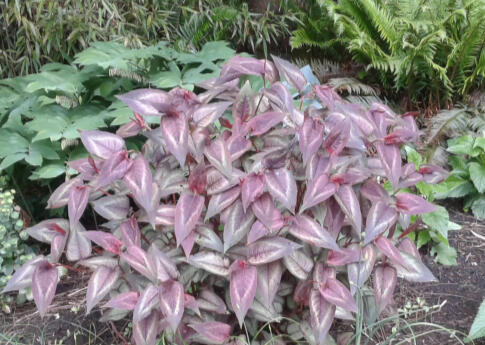
Persicaria microcephala
‘Red Dragon’
Fleeceflower
Zones: 6-8
Size: 2-2.5 ft. tall
Sunlight: Sun-part shade
Soil: Average, well-drained
Bloom Time: July-AugustDescription: Beautiful plum-colored leaves artistically marked with chevrons in shades of red, mint green, silver, and burgundy make this perennial attractive all season long. It's a non-running form so it's not root invasive and sterile so it's not seed invasive,. A clump-forming perennial, Height is 24 inches; width can run from 30 to 40 inches. Attracts butterflies and is deer resistant.Growing: ‘Red Dragon’ grows well in sun to partial shade and in most soils, including heavy clay. It does well in combination plantings when mixed with annuals or perennials. It is tolerant of moist soils making it useful near water features. It is suitable for borders, beds, rockeries or as a container perennial. Effective combined with silver-foliage plants such as Artemisia and yellow-flowered plants like coreopsis.
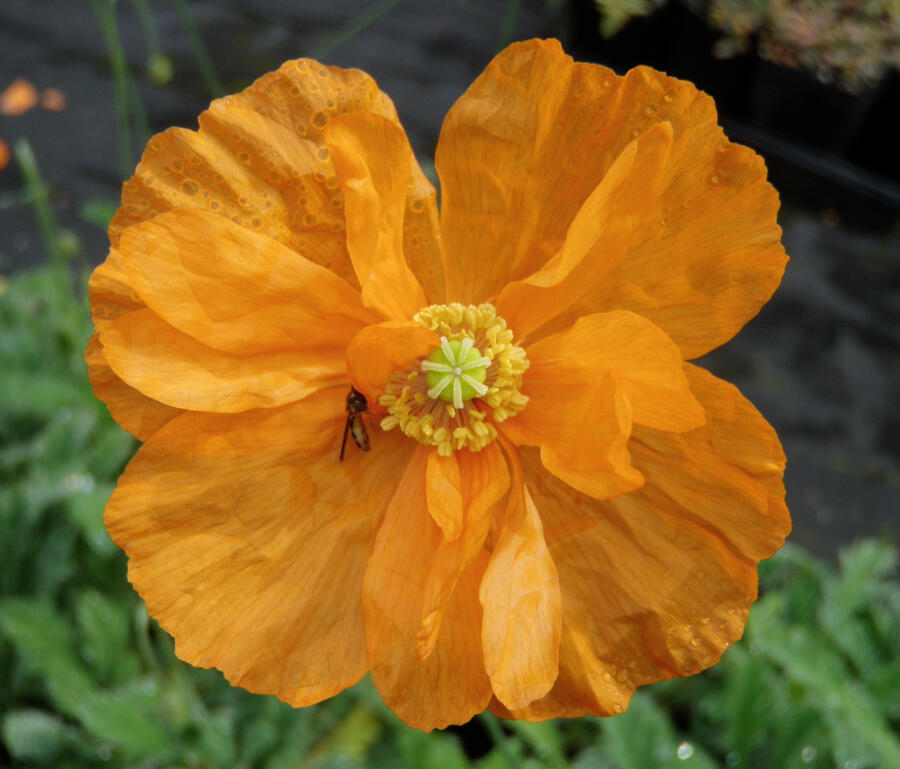
Poppy - Moroccan
Papaver atlanticum
Zones: 5-7
Size: 1-2 ft. tall
Sunlight: Full sun-part shade
Soil: Acid, peaty, well-drained
Bloom Time: Spring-fallDescription: This unusual perennial poppy from the hot and dry areas of Spain and Morocco showed up in our plantings of blue poppy one year. After getting over my initial disappointment that they weren’t blue, I grew to love these cheerful, hard working poppies. Bright orange blossoms on upright wiry stems seem to float above the delicate blue gray basal foliage providing a bright focal point in your garden. It flowers throughout the spring, summer and fall. They make And it makes a good flower too. It is a bee plant and deer resistant.Growing: If you are a wannabe gardener who lusts for a green thumb, then this is the plant to give you back some self confidence. Moroccan Poppy is drought tolerant, thrives in poor soil and it grows anywhere as long as it gets at least 4 hours of sun a day. It reseeds freely like most poppies.
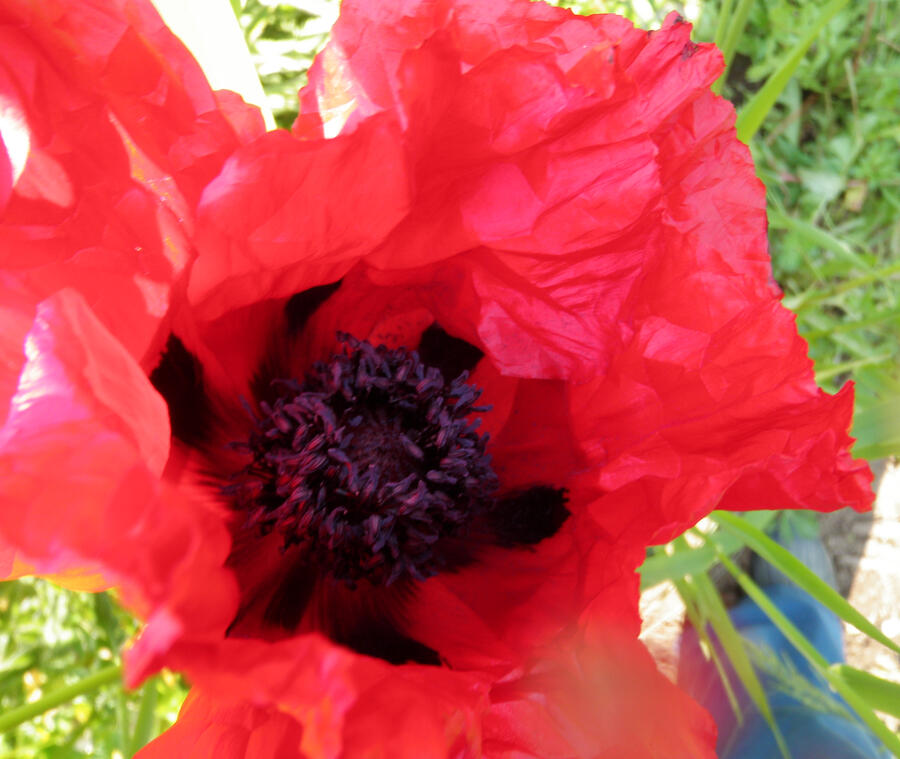
Poppy - Red
Papaver somniferum
These annual poppies produce large 4” scarlet blossoms all summer. They reseed vigorously like most poppies. Large, bushy plants, 4-5 ft tall. Grow in full sun to part shade. Seeds are edible.

Plant Name
Text
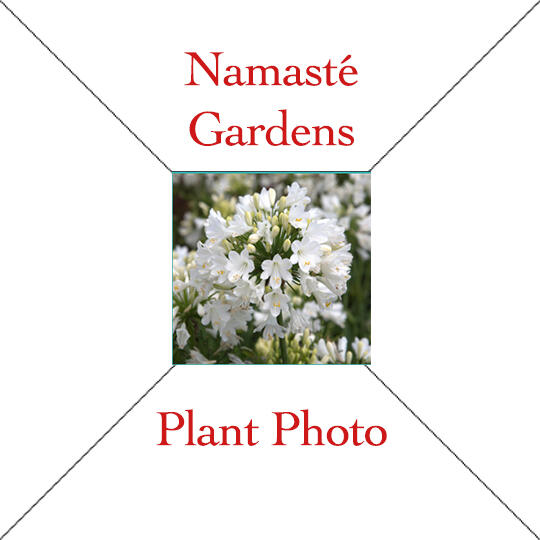
Plant Name
Text
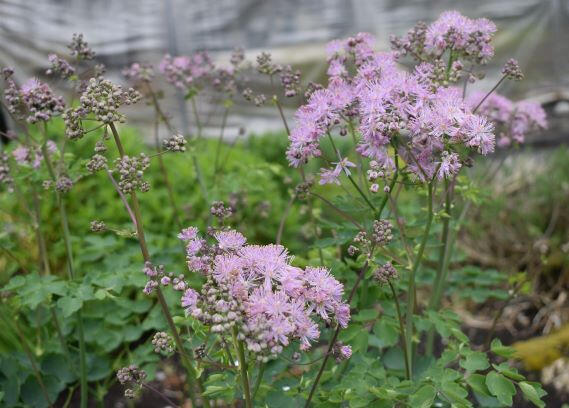
Thalictrum
Meadow Rue
Zones: 5-8
Size: 2-4 feet
Sunlight: Full sun to full shade
Soil: Rich, well-drained soil
Bloom Time: May-JulyDescription: Like a scrim on a theatre stage, the elegant stems and fuzzy flowers of meadow rues create a delicate screen through which to view the rest of the garden. These often-towering plants are grown for their delicate leaves as well as their flower. The blue-green, compound leaves resemble those of columbines. The flowers are pink or white. They make good cut flowers and are low maintenance. They attract bees and butterflies and are deer and rabbit resistant.Growing: Meadow rues grow well in sun or shade where the soil is moist and humus-rich. They are excellent in the back of a border or midborder in front of shorter but bolder plants, in wild gardens, or among shrubs. They reseed, but not too heavily. They are poisonous, related to Aconitum and Delphiniums, so refrain from ever eating them.
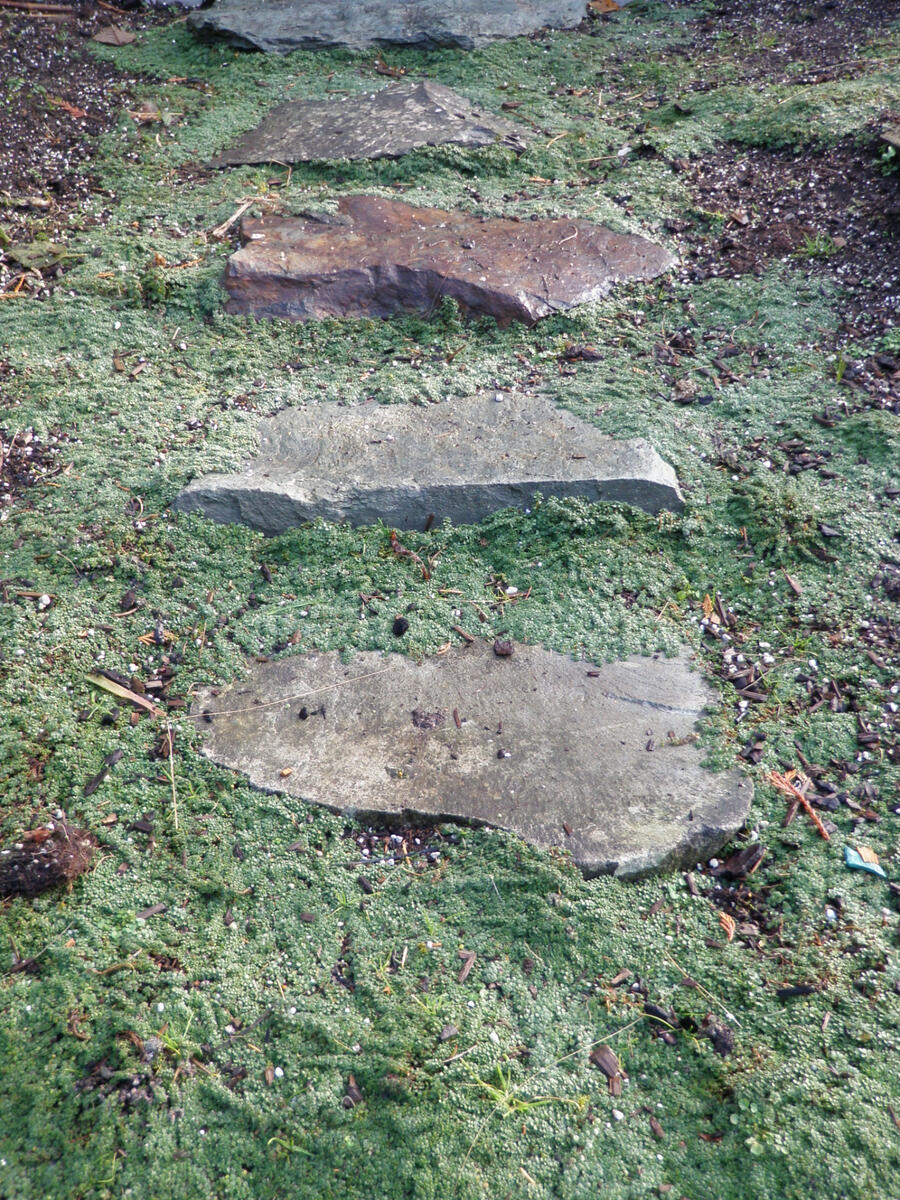
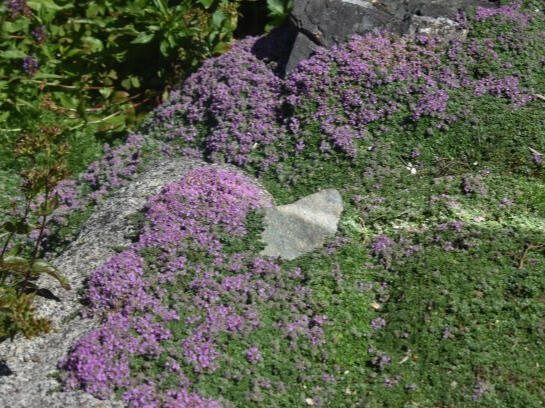
Thymus serpyllum
Elfin Thyme
Zones: 4-9
Size: 1-2” tall
Sunlight: Sun-light shade
Soil: Average, well-drained soil
Bloom Time: Early summerDescription: Elfin Thyme is a creeping ground cover with soft grayish-blue foliage that gets carpeted with lavender flowers in early summer. The leaves are intensely aromatic when crushed. Although they are flavorful and aromatic, the tiny leaves are rather troublesome to pick, so most people use other varieties of thyme for their culinary herb uses and allow elfin thyme to play the role of an ornamental. Rich in nectar, they attract bees and butterflies.Growing: Plant Elfin Thyme in a sunny to lightly shaded area with well-drained light-textured soil and modest fertility. It will tolerate light foot traffic dry conditions. A spectacular sight in the front of the border or cascading over a wall, it’s the easiest and most attractive way we know to blanket the sunny ground with color. Plant Elfin Thyme between paving stones or along the walkway and enjoy its fragrance every time you enter the garden!
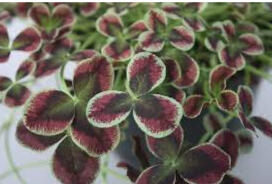
Trifolium ‘Isabella’
Limerick Clover
Zones: 4-10
Size: 4” tall
Sunlight: Sun to part shade
Soil: Average, moist, well-drained soil
Bloom Time: SpringDescription: Limerick Clover is a dense herbaceous perennial ground cover with rich burgundy leaves centered with eye-catching lime green. This fast spreading clover tends to remain low and dense right to the ground. (4 inches tall at maturity, with a spread of 15 inches). Luckily, its roots are shallow making it easy to control its spread. Like all clovers, the bees flock to its pink blossoms in the spring.Growing: Limerick Clover is easy to grow in full sun to part shade. It is not particular to soil type as long as it is well-drained (it will not tolerate standing water). It is a low maintenance plant that mixes well with other groundcovers with contrasting foliage colors (yellow, purple, or chartreuse). Or let it all hang out in containers and hanging baskets or over edges in the garden like rock walls. Its trailing habit adds a unique dimension to combos.
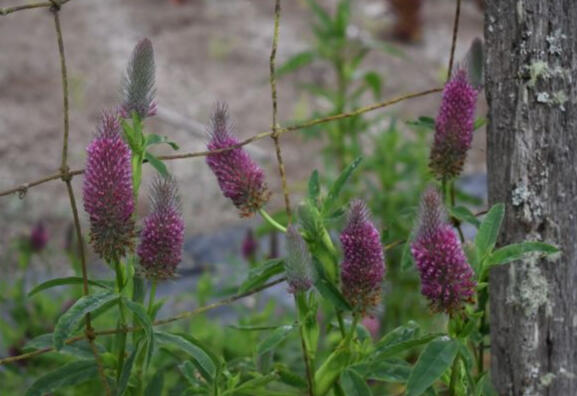
Trifolium rubens
Red Feathers
Zones: 3-8
Size: 12-24” tall
Sunlight: Sun to part shade
Soil: Organically rich, moist, well-drained soil
Bloom Time: SummerDescription: Trifolium rubens is considered the most ornamental of all clovers and definately worthy of a place in the garden. This plant, unlike other clovers, is a clump former and does not spread by runners. The huge, magenta-purple flowerheads, are borne on long 12” stems. The silvery buds are soft and alluring, attracting customers in my booth who pet them as they pass by. They are nectar/pollen rich flowers for the bees, butterflies, hummingbirds and other pollinators. And they make a good cut flower.Growing: Easy to grow, ‘Red Feathers’ likes sun to part shade and prefers an organic rich, alkaline soil with consistent moisture. Use it as a green fertilizer by growing it in poor soil enriching it by adding nitrogen. It also makes a great bank cover, preventing erosion.
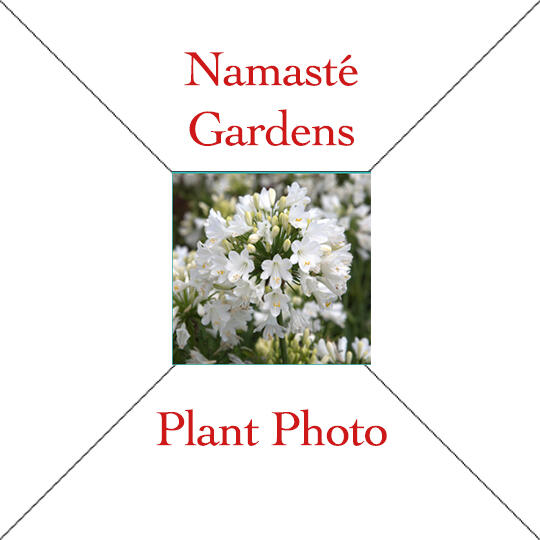
Plant name
Text
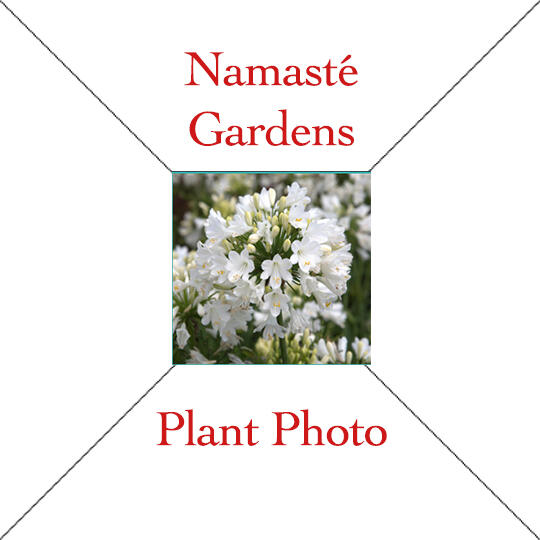
Plant name
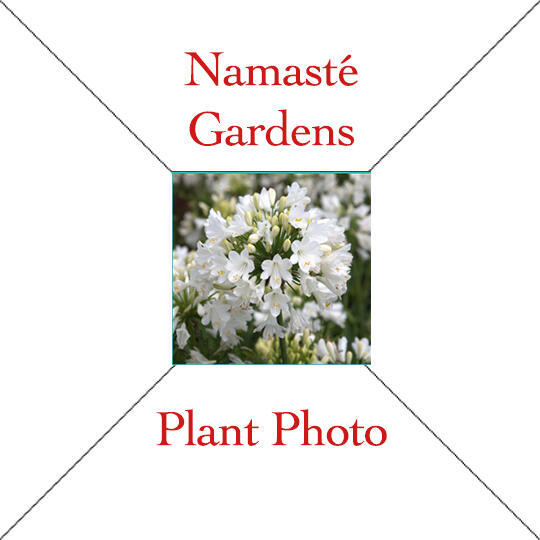
Plant name
Text
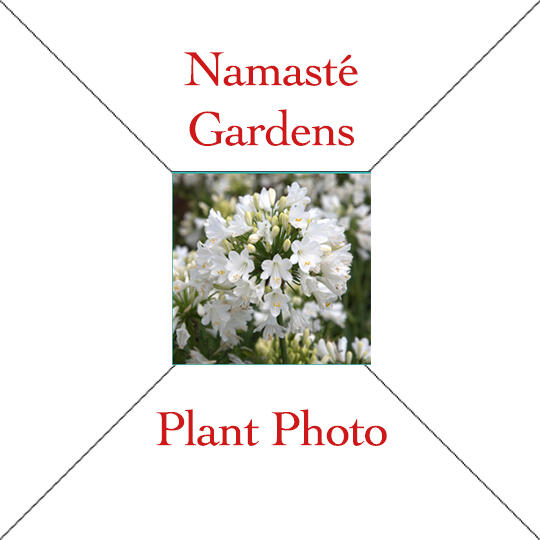
Plant name
Text
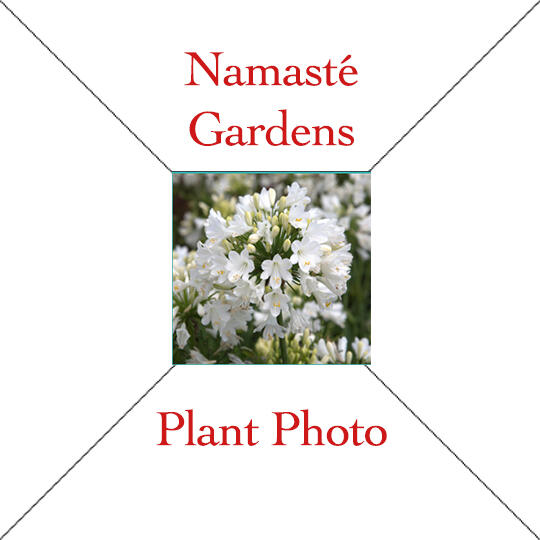
Plant name
Text
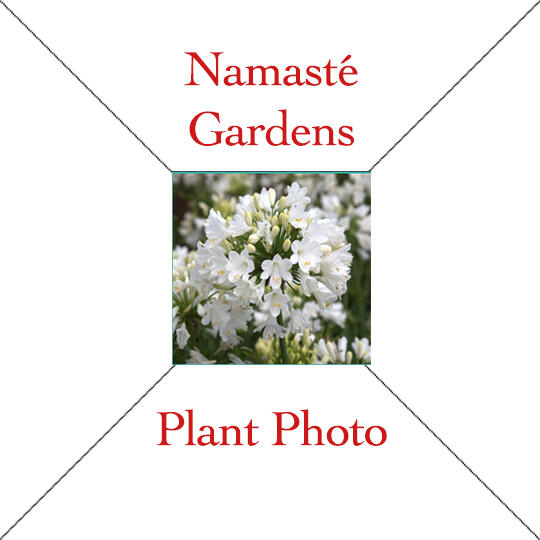
Plant name
Plant name
Text
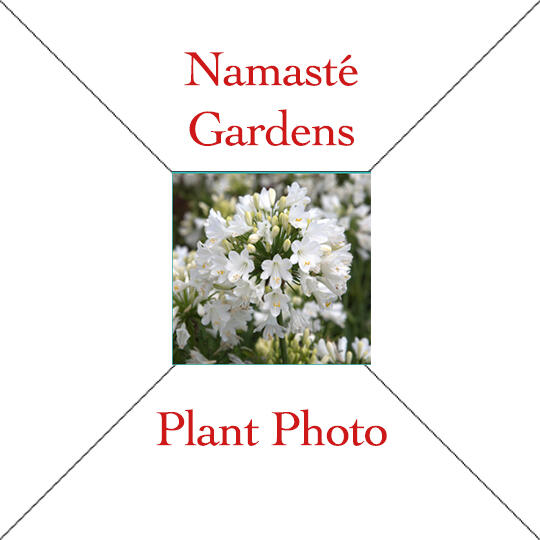
Plant name
Text
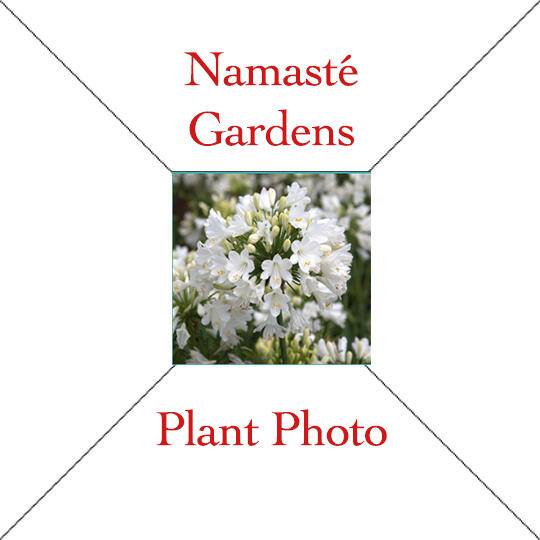
Plant Name
Text
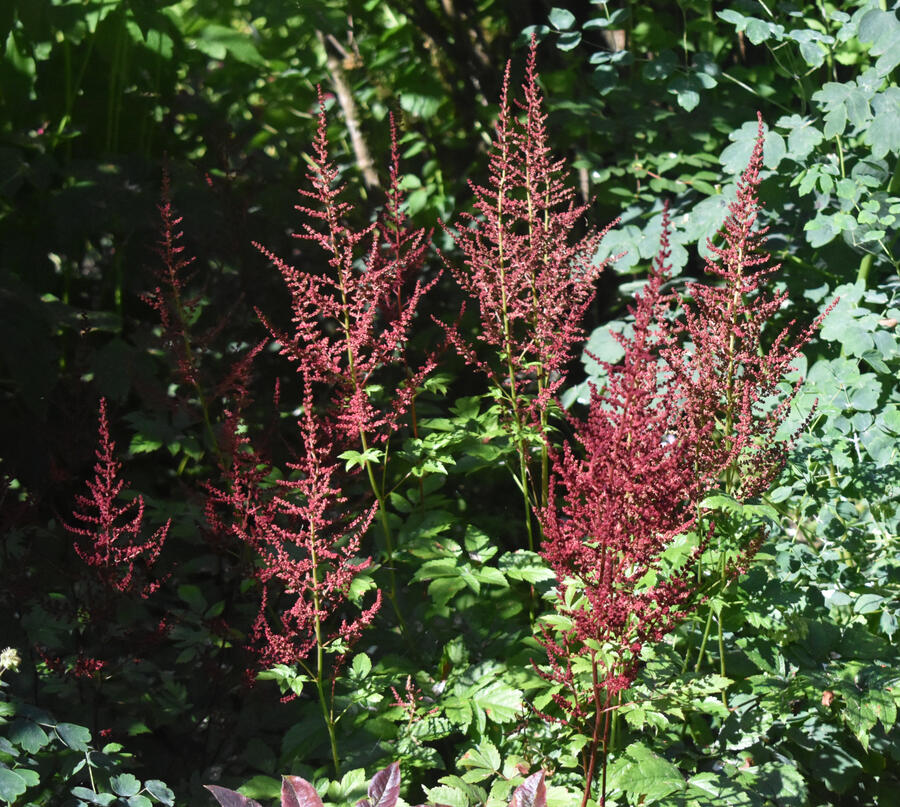
Astilbe arendsii ‘Fanal’
Zones: 4-9
Size: 24” tall and 18-24” wide.
Sunlight: Part to full shade
Soil: Average, well-drained, loam
Bloom Time: Mid summerDescription: Astilbes are the perfect choice for illuminating shaded areas around your garden. In the summer months, elegant spikes of feathery flower heads emerge from a canopy of handsome, finely dissected foliage. As autumn approaches, the blooms turn to shades of brown whilst retaining their form, and look particularly attractive in a winter snowscape. ’Fanal’ is the deepest red of all the Astilbes and it adds a wonderful splash of color to the shade garden. Spikes of feathery red flowers burst above the dark copper-green foliage. Deer and rabbit resistant; Attract hummingbirdsGrowing: ‘Fanal’ is most successfully grown in a shady area, but can tolerate some morning sun. A moist, well-drained area is key for this plant. In order to keep Astilbe looking good for the next year. Do not cut it back in the winter, (the old foliage helps protect the plant from winter damage), but prune in early spring. Plant them in containers to glorify a shady spot on your patio, and enjoy the cut blooms in fresh and dry flower arrangements. Astilbe can be used as cut flowers, perennial borders or in shade gardens with Hosta’s and Ferns.
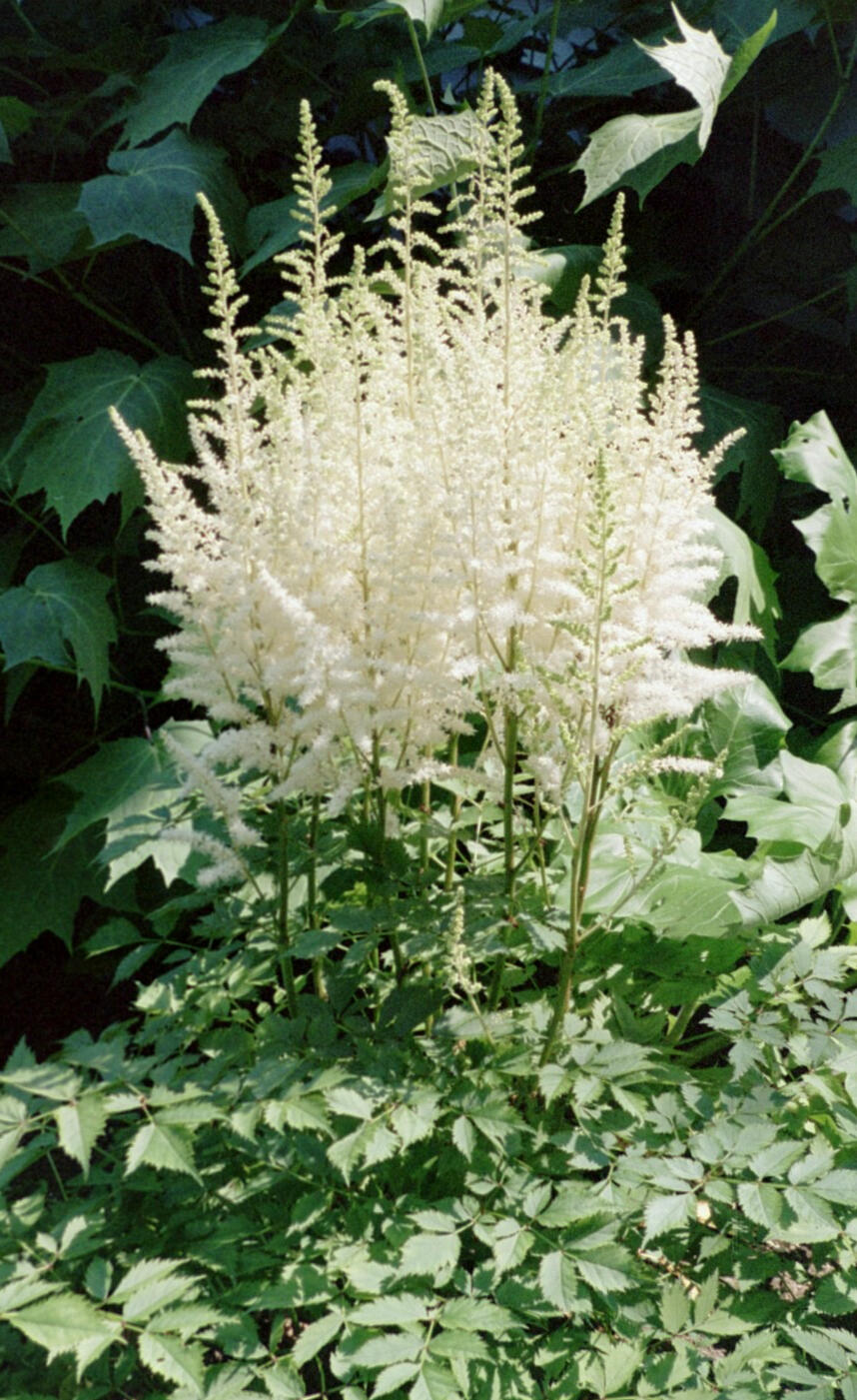
Astilbe chinensis
'Diamonds & Pearls'
Zones: 4-8
Size: 28” tall
Sunlight: Part to full shade
Soil: Average, well-drained
Bloom Time: JulyDescription: ‘Diamonds and Pearls’ is a compact, upright, mounded Astilbe that features tiny pure white flowers in late spring to early summer densely packed in branched panicles atop slender stiff stems rising to 28” tall. This robust grower is the first pure white-flowered chinensis species Astilbe, and therefore the strongest pure-white cultivar there is! Deer and rabbit resistant; Attract hummingbirdsGrowing: Astilbes are best grown in average, medium moisture, well-drained soils and prefer part shade to full shade. Regular watering should help foliage remain attractive throughout the growing season.. ‘Diamonds and Pearls’ has good tolerance to heat and humidity. You may choose to remove faded flower stalks to improve plant appearance, or many gardeners leave the flower stalks in place after bloom because of the continuing ornamental interest of the dried seed heads. Divide clumps when overcrowding occurs (every 3-4 years). Mass or group in shade gardens, woodland gardens and shaded areas of border fronts or cottage gardens. Excellent spreading ground cover or edging plant. Also effective on pond or stream banks.
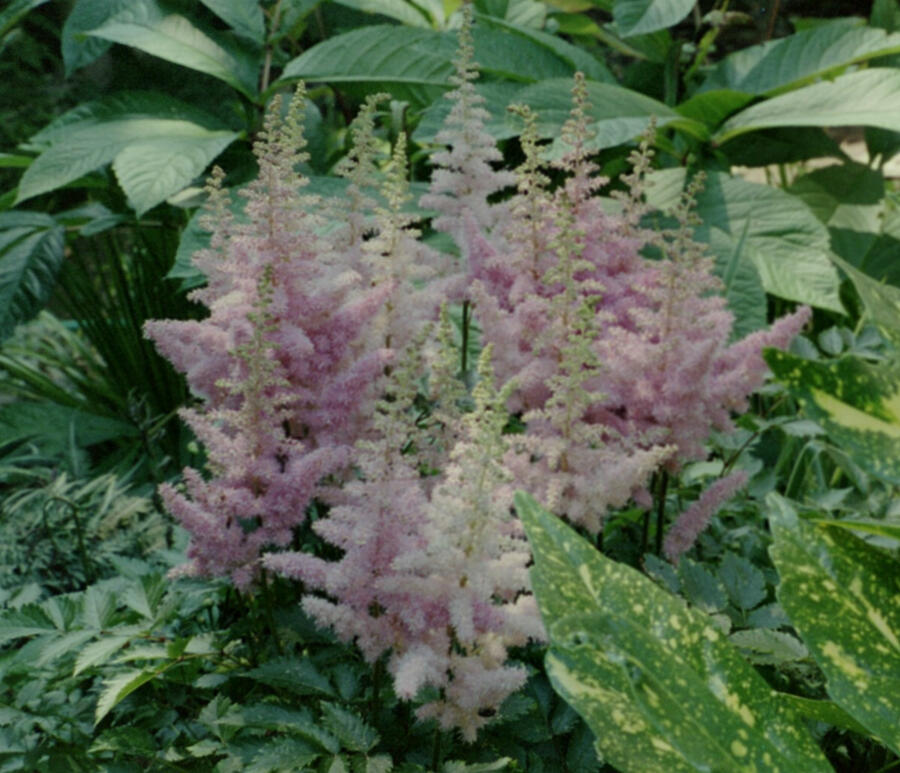
Astilbe chinensis
'Heart & Soul'
Zones: 3-8
Size: 32” tall and 30” wide.
Sunlight: Part to full shade
Soil: Average, well-drained, loam
Bloom Time: Mid summerDescription: There has never been a blue Astilbe, but 'Heart & Soul' doesn't miss the mark by much. Its lavender-pink blooms are overlaid with a powder-blue sheen, particularly noticeable when grown beside a true pink variety. Enormous, long-lasting, and very weather-tolerant, they are the first Astilbe everyone notices in the garden. Blooms all summer; flowers have a mild fragrance. They sit atop plants 32 inches high and 30 inches wide, with distinctive "branching" for a pyramidal look. A strong plant able to withstand more heat, humidity and sun than other Astilbes due to A. chinensis genes in its make-up.
Deer and rabbit resistant; Attract hummingbirdsGrowing: Astilbes are best grown in average, medium moisture, well-drained soils and prefer part shade to full shade. Regular watering should help foliage remain attractive throughout the growing season. This genus looks dreamy in large groups where its colorful flowers paint a broad, impressionistic, swath and attract butterflies. Mass or group them in shade gardens, woodland gardens and shaded areas of border fronts or cottage gardens. Also effective on pond or stream banks.
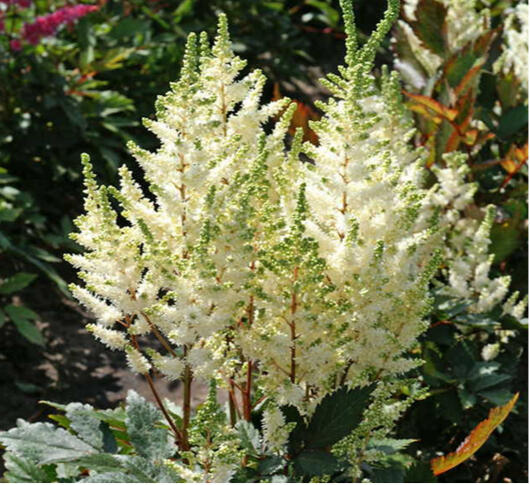
Astilbe ‘Swing Set’
Zones: 4-9
Size: 30” tall and 30” wide.
Sunlight: Part to full shade
Soil: Average, well-drained, loam
Bloom Time: Mid summerDescription: Gardeners enjoy growing Astilbe for their beautiful, showy flowers that do well in a shady garden bed. This perennial has feathery flowers that sit above the fern-like foliage in a majestic way. Astilbe ‘Swing Set’ is a white flowering cultivar.
Deer and rabbit resistant; Attract hummingbirdsGrowing: Astilbes don’t need any special treatment, making them easy-to-grow perennials that fit into every garden. Regular watering should help foliage remain attractive throughout the growing season. Astilbes prefer a site that receives light to moderate shade, but can grow in deep shade; they will burn in full sun. Astilbes prefer moisture-retentive, acidic soil. They make great cut flowers.
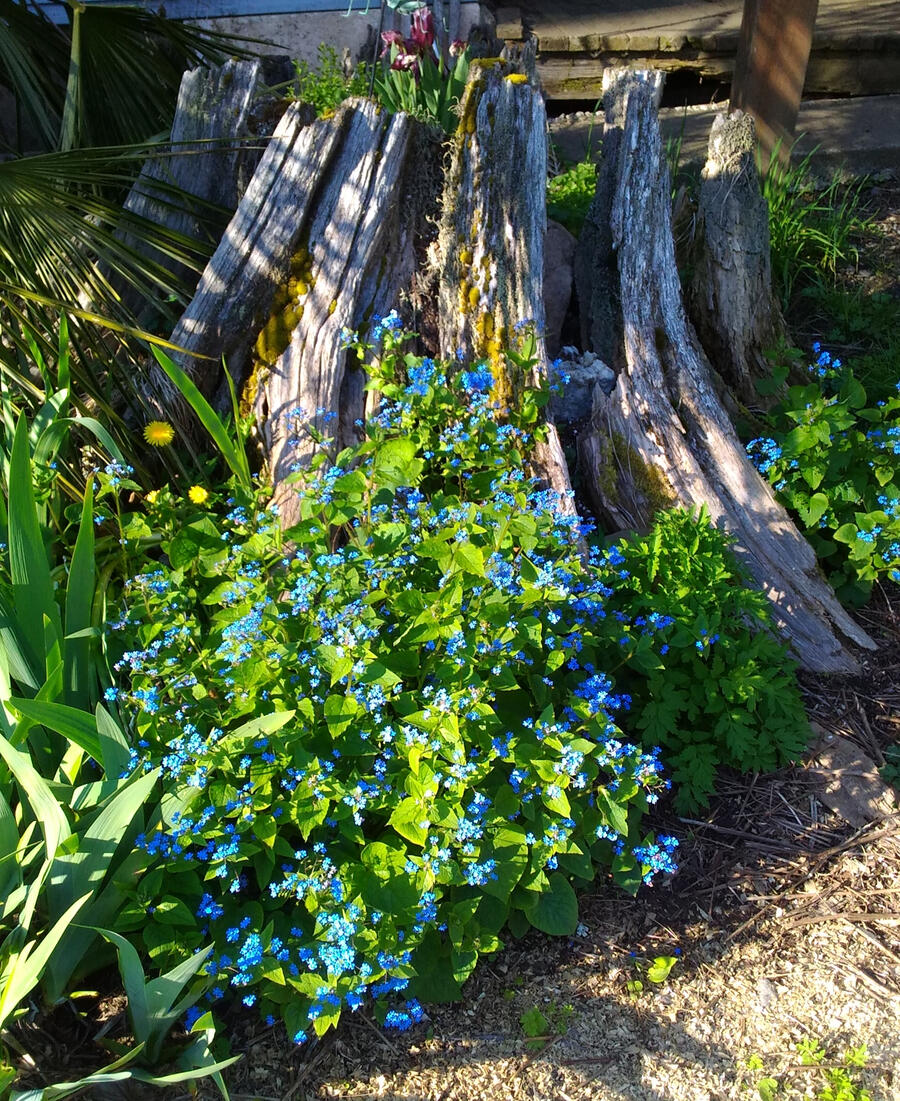
Brunnera macrophylla
Siberian Bugloss
Zones: 3-9
Size: 1-1.5 ft. tall
Sunlight: Part shade
Soil: Well-drained, moist
Bloom Time: April-JulyDescription: Brunnera is a clump-forming, rhizomatous perennial with beautiful big heart shaped leaves. In the spring it puts out sprays of irresistible blue, forget-me-not like flowers that last for a few months They start blooming in early spring on airy, branched racemes rising above the foliage on slender 18" stems, which makes them a welcome site after winter’s dreariness. They work well on the edges of ponds and in naturalized woodland settings. They create a lush carpet in shady to part shady areas and remain attractive throughout the growing season. Deer, Rabbit and Slug ResistantGrowing: Brunneras are easily grown in average moisture, organically rich soil. They prefer shade. Deadhead plants after blooming to avoid self seeding. Useful in borders, woodland gardens, naturalized areas or along streams or ponds. They also make good container plants.
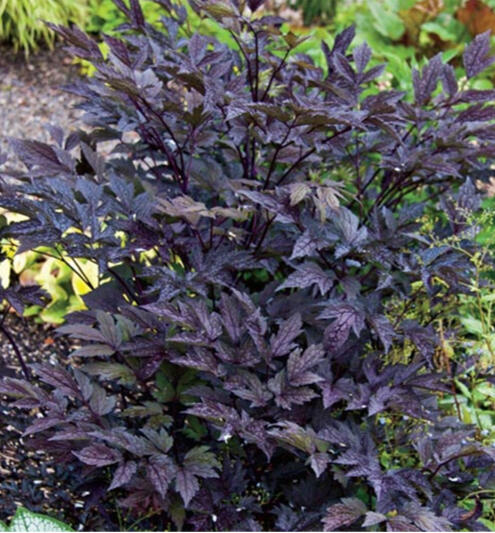
Cimcifuga Chocoholic
Zones: 4-8
Size: 4-5 feet tall
Sunlight: Part shade
Soil: Moist, organically rich, well-drained
Bloom Time: Summer to early fallDescription: This cultivar adds wonderful texture, color and height to the shade garden. From summer to early fall, fragrant bottlebrush flowers dance above the purple foliage. Flowers start out mauve pink and lighten to white as they age. Especially attractive when grown near plants with yellow or variegated foliage. They grow 4-5 ft. tall so place them at the back of the garden. Resistant to deer and rabbits; attractive to butterflies
Growing: Cimcifuga performs best when planted in partial shade with moist, organically rich soil. Some direct sun is required to draw out the purple coloration in the foliage.
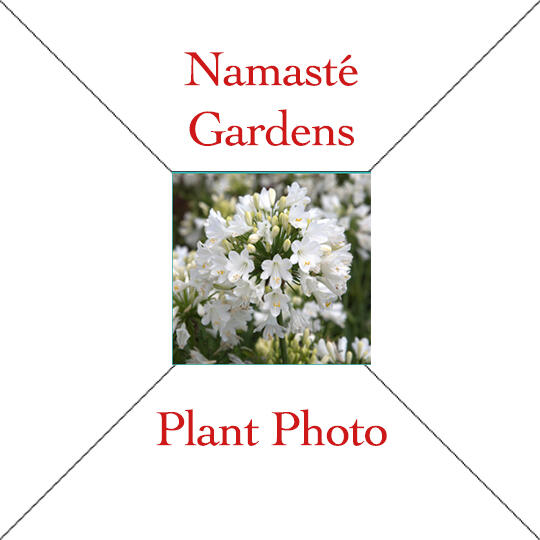
Plant Name
Text
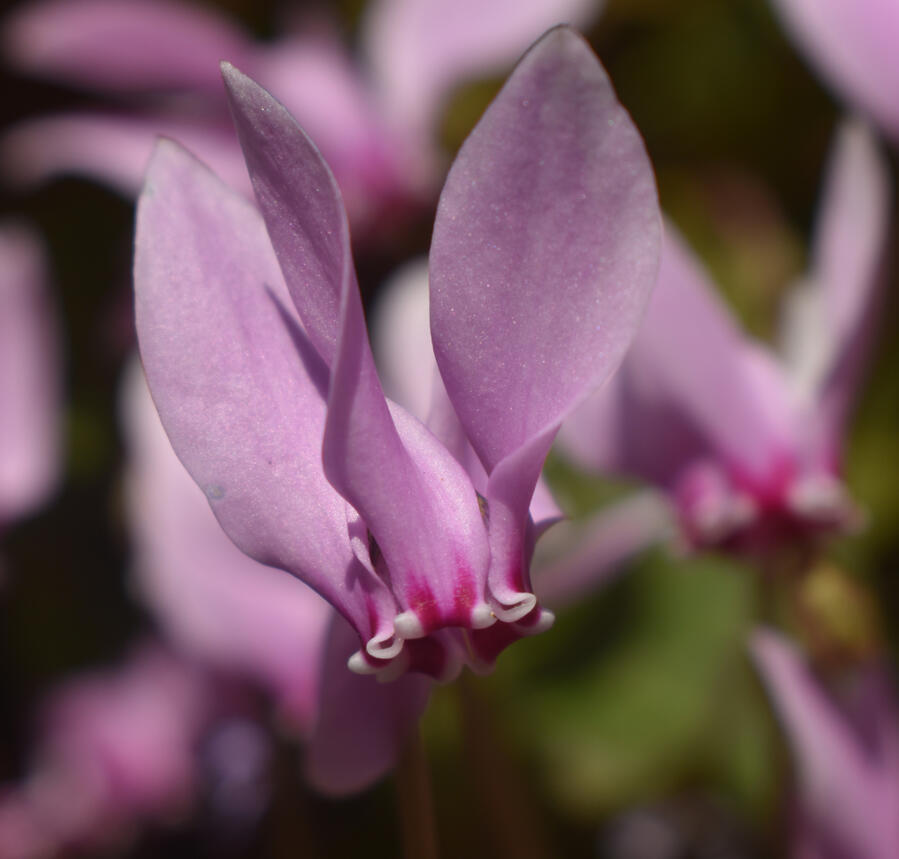
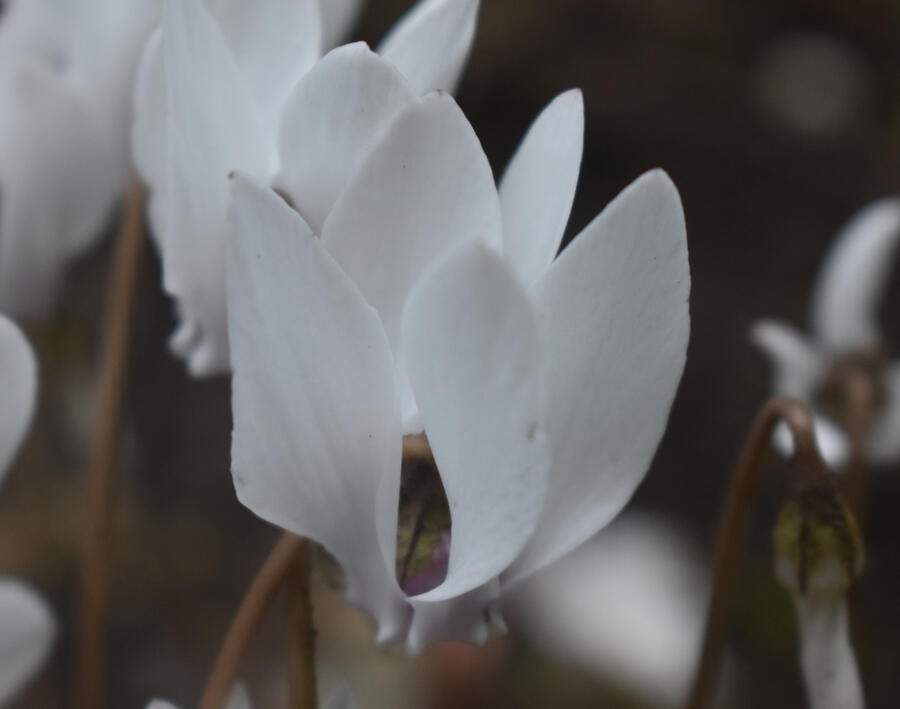
Hardy Cyclamen
Zones: 5-9
Size: 3-6” tall
Sunlight: Partial shade to full shade
Soil: Loose, well-drained
Bloom Time: January-February; rebloom in AugustDescription: A truly fabulous garden plant to start your growing season with, hardy Cyclamen will brighten up your late winter blues. They are tuberous, herbaceous, perennials that grow from flattened, pancake-like tubers Cyclamen have charming pink or white nodding flowers with upright petals that are reminiscent of fairy wings. The foliage has a lovely shape and is graced with kaleidoscopic green and silver patterned leaves that are as different as snowflakes from plant to plant. The first flower buds appear in late January and they bloom again at the end of August. They appear before the leaves and flower over a long period of time. Their intricacy and variety of form are unmatched in the garden.Growing: Hardy Cyclamen need good drainage and will grow well in very little soil. They like part shade to full shade. The driest place is usually under a big tree. Keep the top of the tuber at the soil level. A layer of grit around the tuber helps keep slugs away and it keeps standing water away during rainy periods, which can cause them to rot. Their small stature makes them perfect for rock gardens, alpine beds, or potted plants.
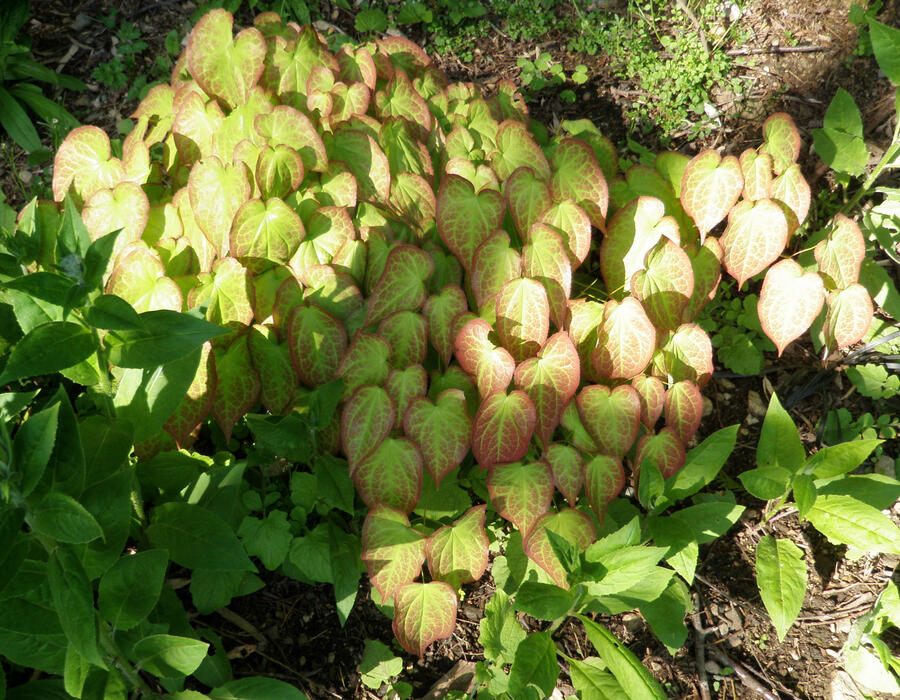
Epimedium ‘Sulphureum’
Yellow Fairy Wings
Zones: 5-9
Size: 8-12" tall
Sunlight: Part shade to full shade
Soil: Chalk, loam, sand
Bloom Time: AprilDescription: This evergreen, woodland perennial is a rhizomatous, clump-forming perennial which grows 8-12" tall. 'Sulphureum' features short-spurred yellow flowers which appear in racemes above the foliage in spring. Compound heart-shaped leaflets on wiry stems form attractive foliage mounds which usually emerge reddish tinged in spring, mature to green and turn reddish in fall. Resistant to deer and rabbits.Growing: Easily grown in average, dry to medium, well-drained soils in part shade to full shade. Prefers loose, organically rich loams with even moisture. Tolerates drought once established. Cut back any remaining old foliage in late winter. It is primarily used as a ground cover or edger in shady or woodland areas.
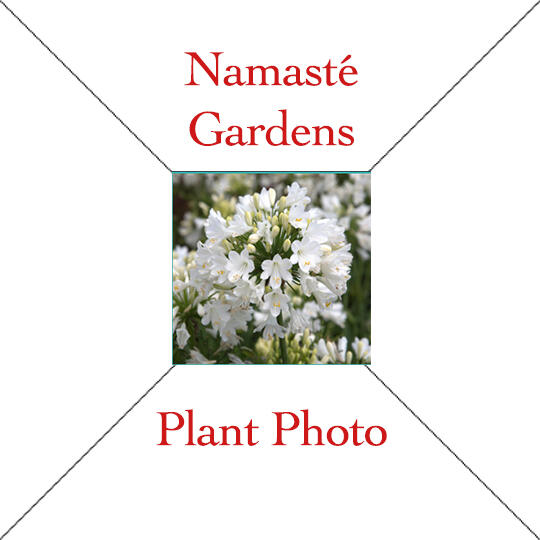
Epimedium alpinum ‘Rubrum’
Red Barrenwort
Zones: 4-8
Size: 8-12" tall
Sunlight: Part shade to full shade
Soil: Chalk, loam, sand
Bloom Time: Mid – late SpringDescription: Excellent shade groundcover with green, heart-shaped foliage, whose new growth is flushed with red. Delicate, pinkish-red flowers are held on wiry stems in early spring. Semi-evergreen, low maintenance, good for a shade groundcover and woodland under-plantings. They are deer resistant and are seldom bothered by voles or other critters.Growing: Epimedium are among the easiest perennials to grow. They thrive in medium to heavy shade, and when established, are highly drought tolerant. You can leave semi-evergreen foliage overwinter and clean up early in spring. Or you can shear plants in fall. Use a lawn mower on large plantings. Spring shearing makes the flowers more visible.
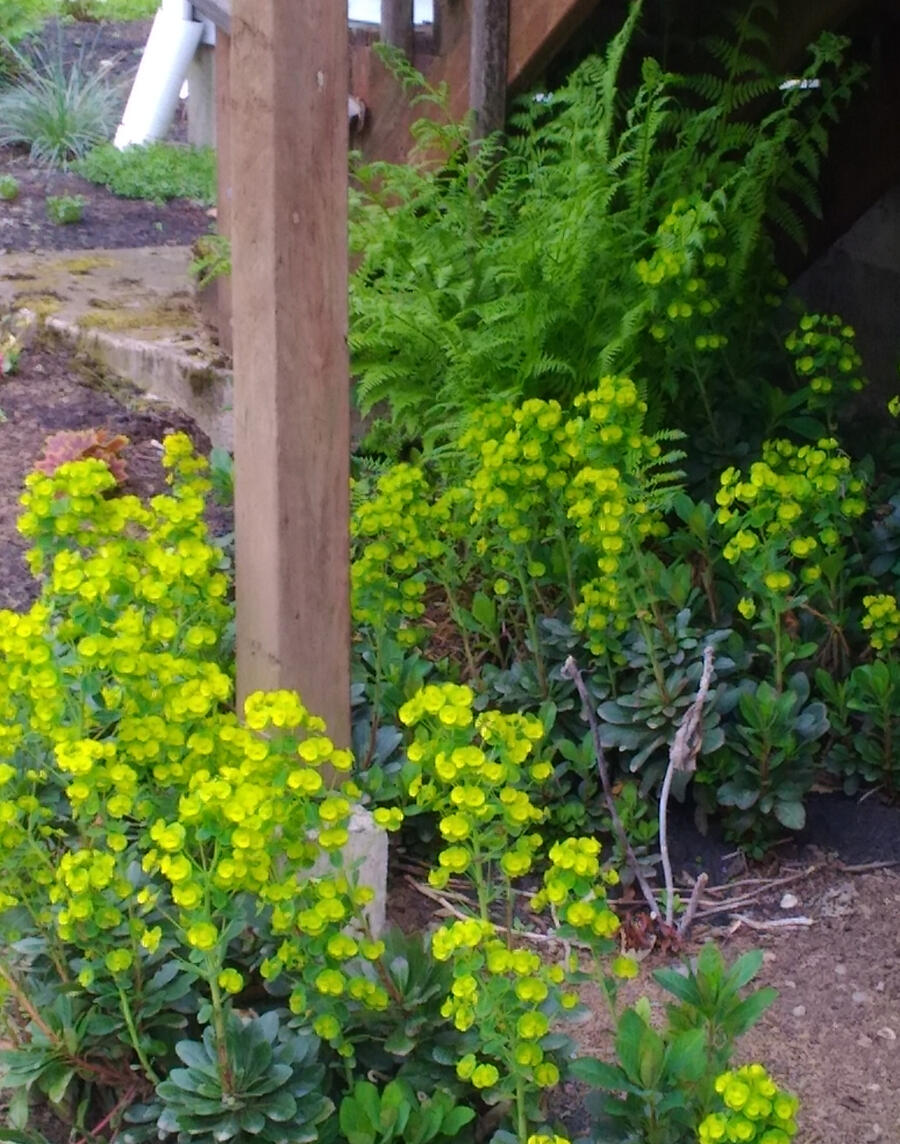
Euphorbia amygdaloides 'robbiae'
Zones: 5-7
Size: 1-2 ft. tall
Sunlight: Sun or shade
Soil: Chalk, loam, sand, well-drained
Bloom Time: Early spring-summerDescription: Few plants thrive in poor dry soil in the shade, but this euphorbia thrives in the difficult conditions commonly found under big trees. It has zero maintenance requirements. Upright spikes of lime green flowers emerge in early spring and persist through early summer. The bright flowers show up well above the dark glossy foliage. Great for cuts but wear gloves since the milky sap is a potential skin irritant. This plant is resistant to rabbits and deer.Growing: Best grown in dry to medium, well-drained soils. It will grow in sun or shade but I put it in my shade section because it is easier to control in shady areas E. robbiae makes a good all-year-round evergreen background to woodland plants or other shade lovers. Place where it won’t overwhelm smaller perennials. The plant spreads by underground runners, until eventually the evergreen leaves form a low weed smothering carpet over the ground. Remove wandering stems where not wanted to keep it in bounds. Very drought tolerant.
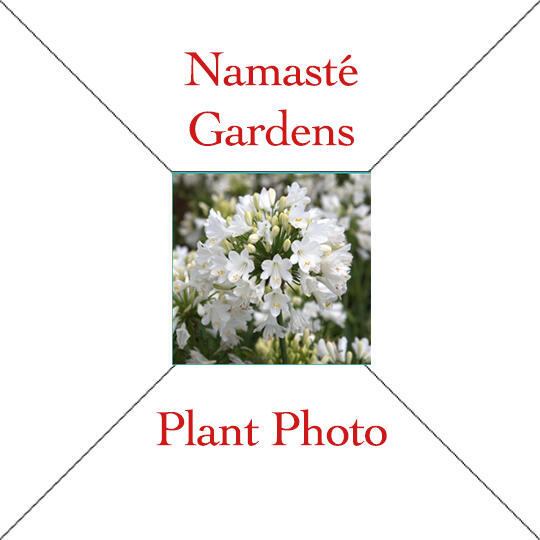
Plant name
Text
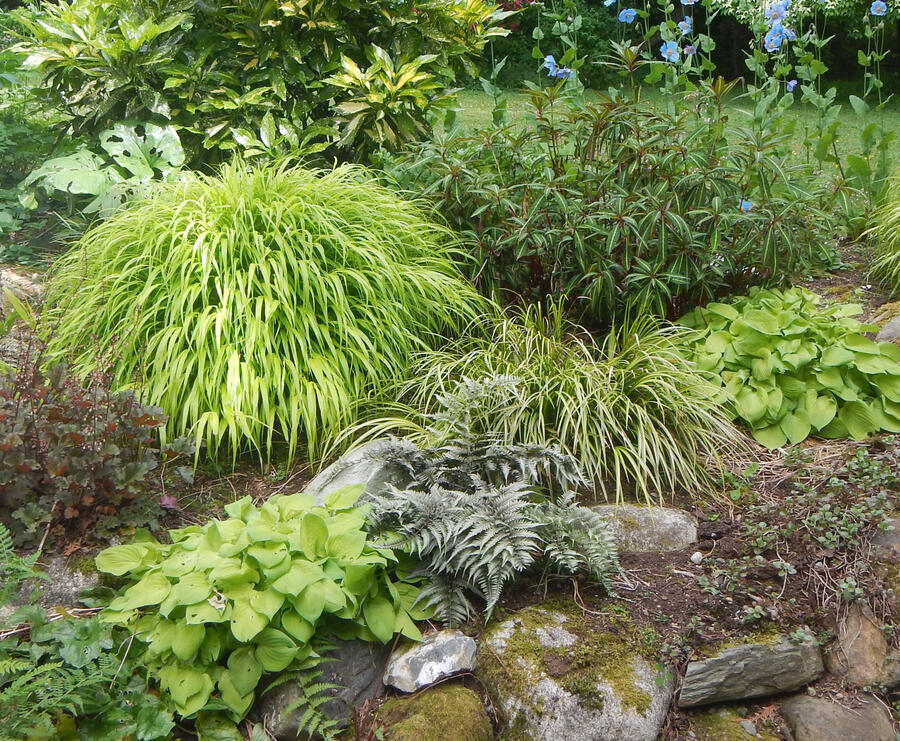
Japanese Forest Grass
Hakonechloa macra ‘Aureola’
Zones: 5-9
Size: 18 inches tall
Sunlight: Partial shade
Soil: Moist, well-drained, fertileDescription This graceful, colorful grass for the shade is perfect for the formal Japanese garden. It resembles a small bamboo with its cascading growth habit; The yellow-striped leaves are born on slender arching stems, ~18 inches high. Deer tend to avoid this plant.Growing: This forest denizen grows best in cool mild-summer regions like the Pacific Northwest and likes woodland conditions. It prefers partial shade and somewhat acid soil that is well drained and enriched with organic matter. Cut back the old growth in early spring as new growth appears. The golden leaves will brighten partly-shaded or dark-colored gardens. Plant it along paths and walks or use it in shady rock gardens. Its cascading habit looks great on slopes or sprawling over rocks. It also looks good in containers.
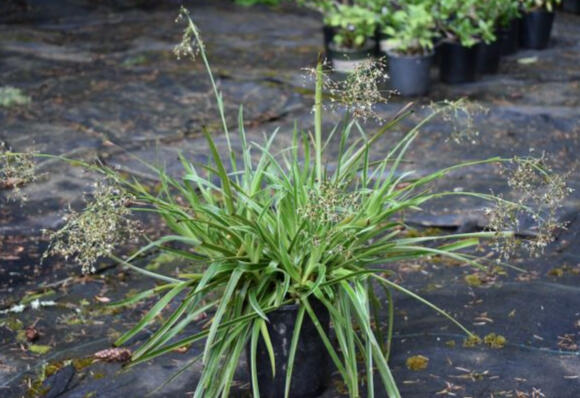
Luzula sylvatica
Wood Rush
Zones: 4-9
Size: 12-18” tall
Sunlight: Partial shade-full shade
Soil: Moist, well-drained
Bloom Time: Late spring-early summerDescription Lazula is a wonderful yet underused evergreen rush perfect for woodland settings where it will thrive even with tree root competition. A willing grower in most soils, even clay where it forms large, handsome tussocks 12 inches tall and spreads to form a virtually weed proof mass. Although it is vigorous, it is not at all invasive. Its glossy, shiny, dark green leaves in summer provide a lush tropical look to the dry shade garden. It should be deer resistant.Growing: This low maintenance rush prefers moisture but tolerates some aridity and it can withstand heavy rain, ice storms, hailstorms and heavy snow. Luzula is the perfect companion for ferns, Azalea, and other woodland favorites.
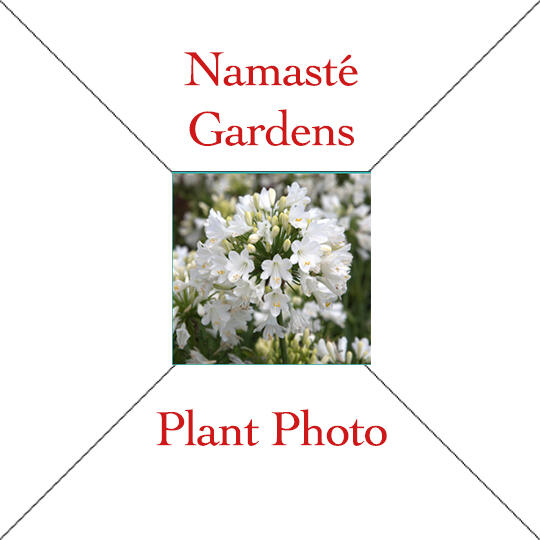
Plant name
Text
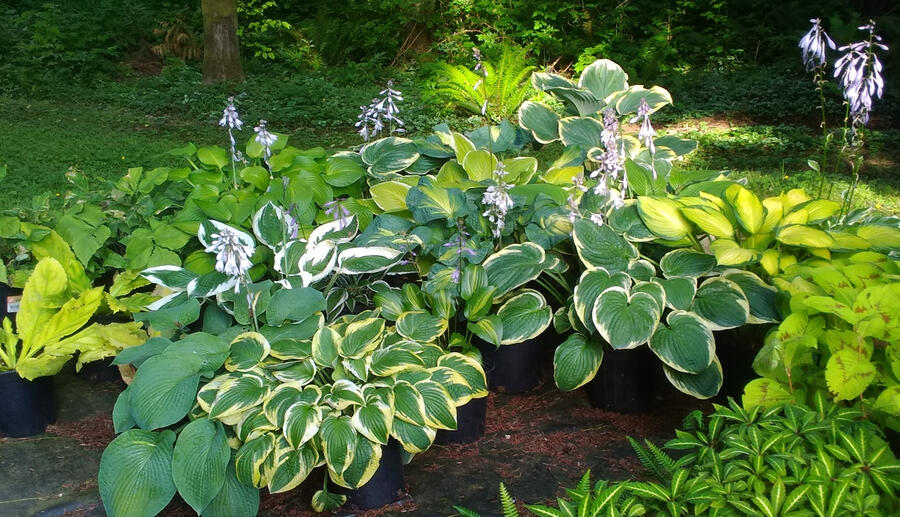
Hosta
Hostas are extremely popular, hardy herbaceous perennials grown primarily for their beautiful foliage. They are easy to grow, shade-tolerant plants. Leaves come in a wide range of shapes, colors, sizes, and textures and may be solid in color or variegated in different combinations of blue, green, white, and gold. The plants are low maintenance. Leaves that are thick and stiff are termed "rugose" or are said to have "heavy substance"; such leaves are considered to be somewhat resistant to slug feeding. Hostas are considered shade-tolerant plants, but most do not thrive if grown in deep shade. Hostas grow best in an exposure with morning sun and afternoon shade. Hostas will grow best in rich organic, loamy soil. Recommended companions include snowdrops, crocus, tulips, daffodils, trillium, anemones, and forget-me-nots. Ferns, hellebores, pulmonarias, and wild gingers are also nice companion plants. In summer months, bright annuals such as impatiens, begonia, and coleus make attractive companion plants.
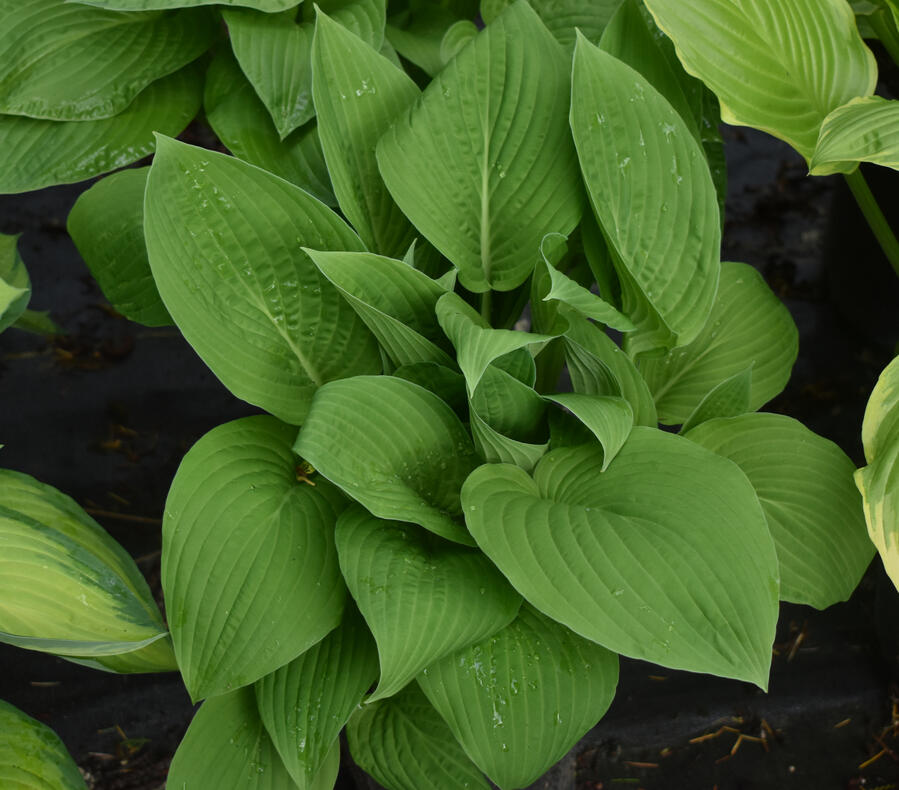
Hosta - 'Albopicta'
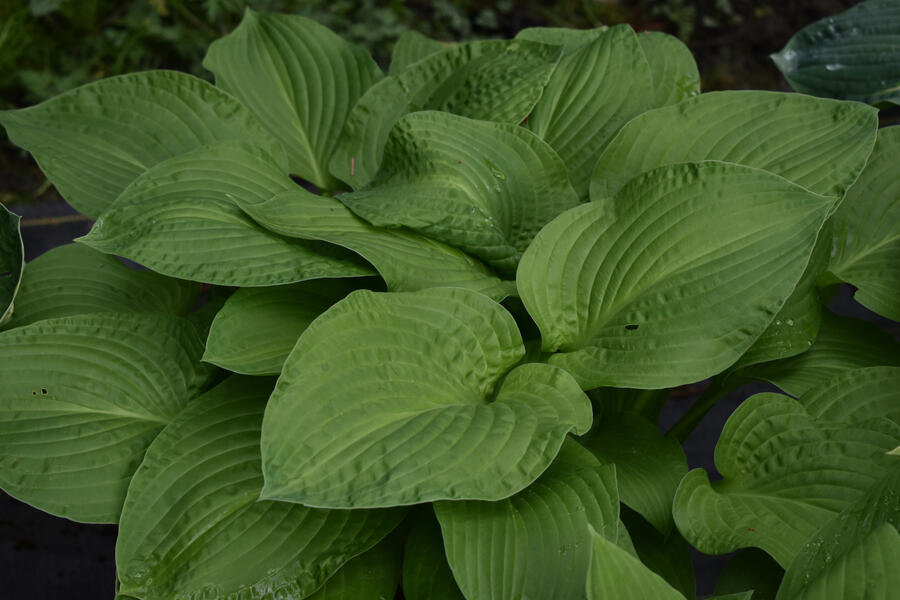
Hosta - 'August Moon'
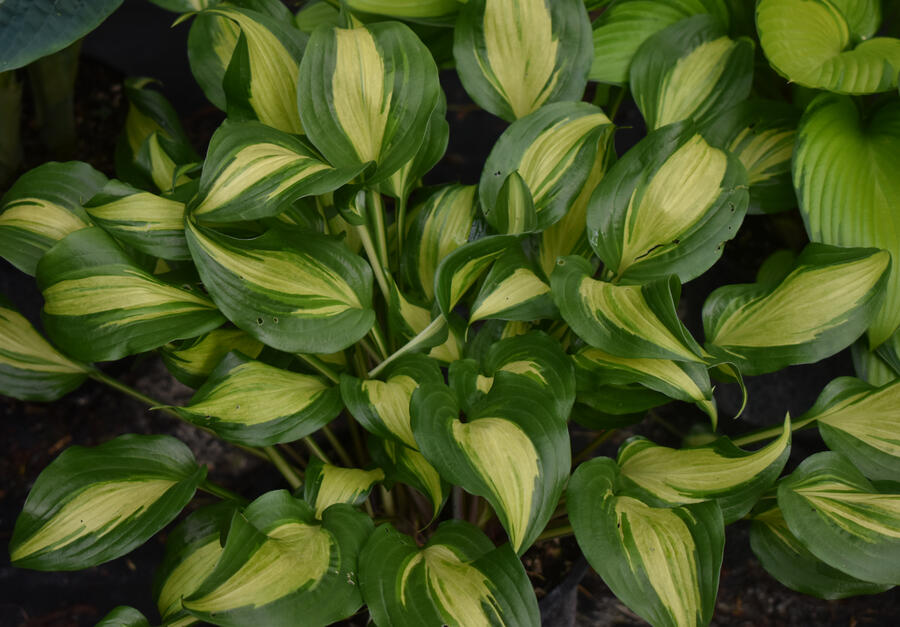
Hosta - 'Geisha'
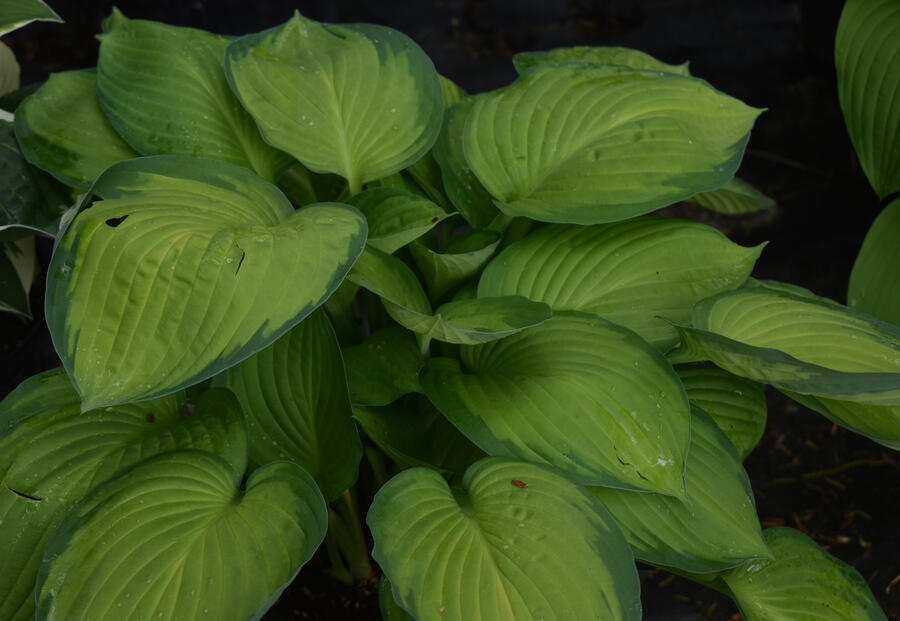
Hosta - 'Ginko Craig'
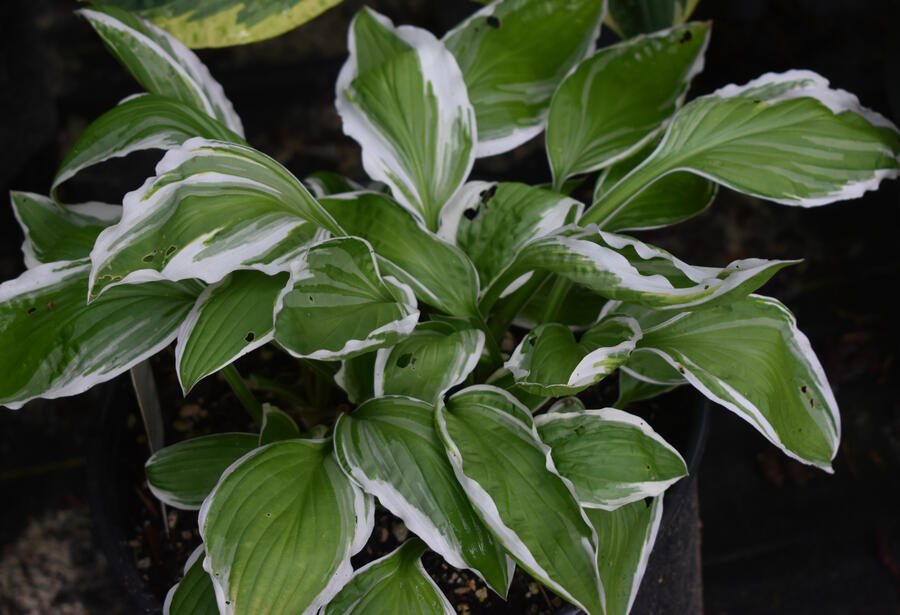
Hosta - 'Gold Standard'
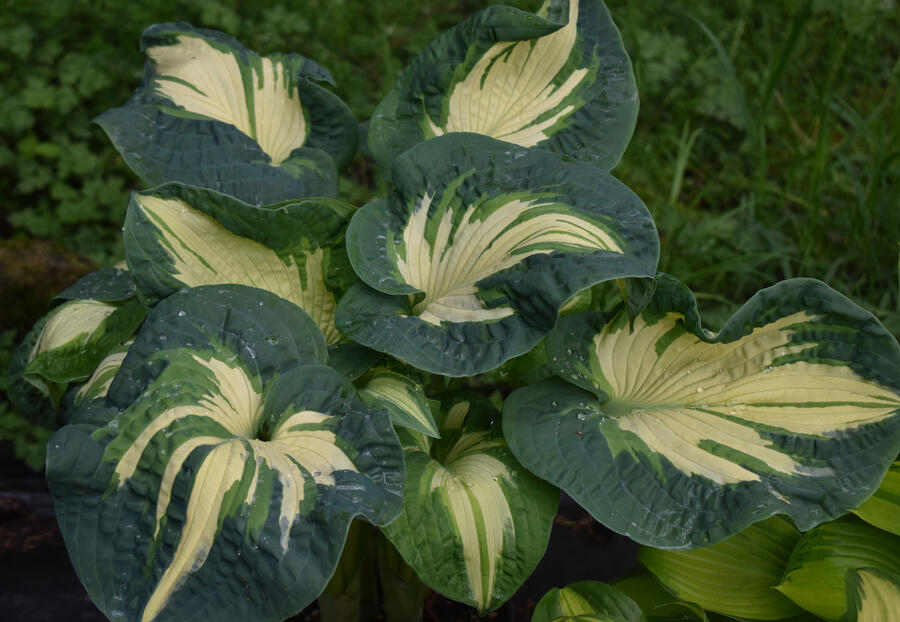
Hosta - 'Golden Meadows'
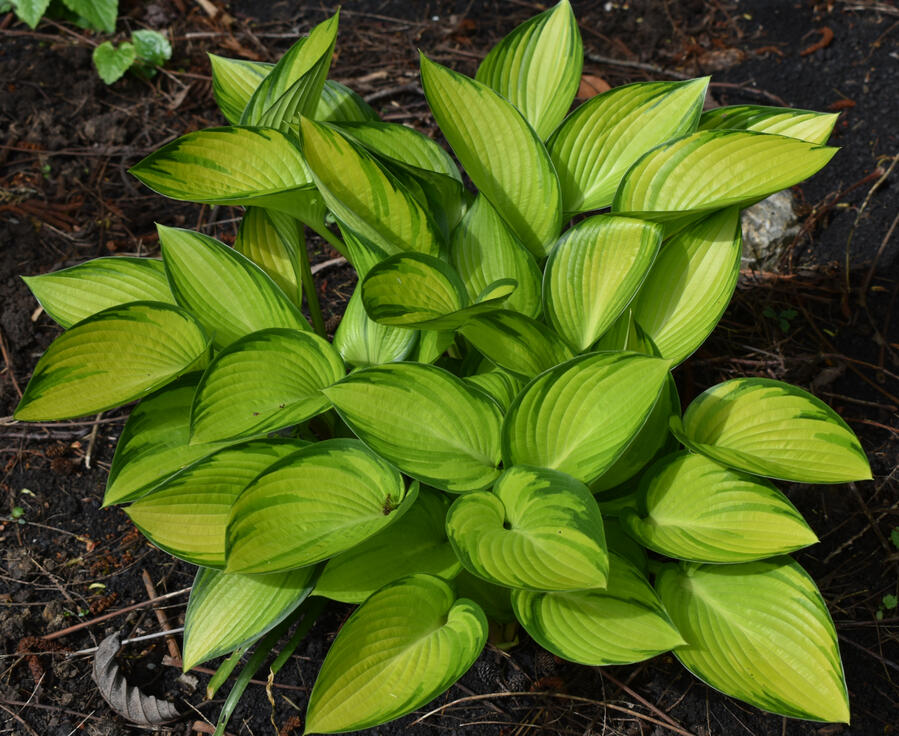
Hosta - 'June Fever'
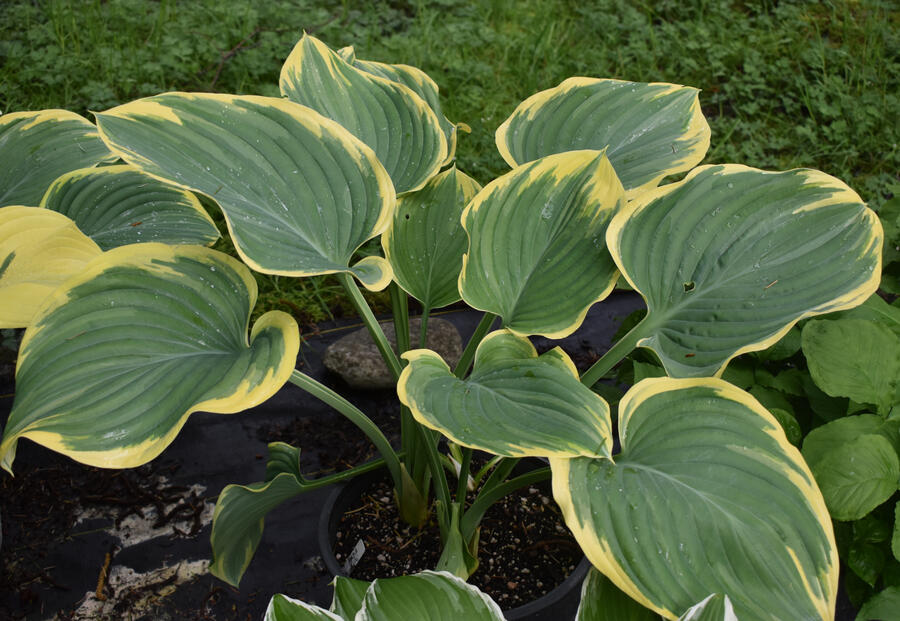
Hosta - 'Magic Fire'
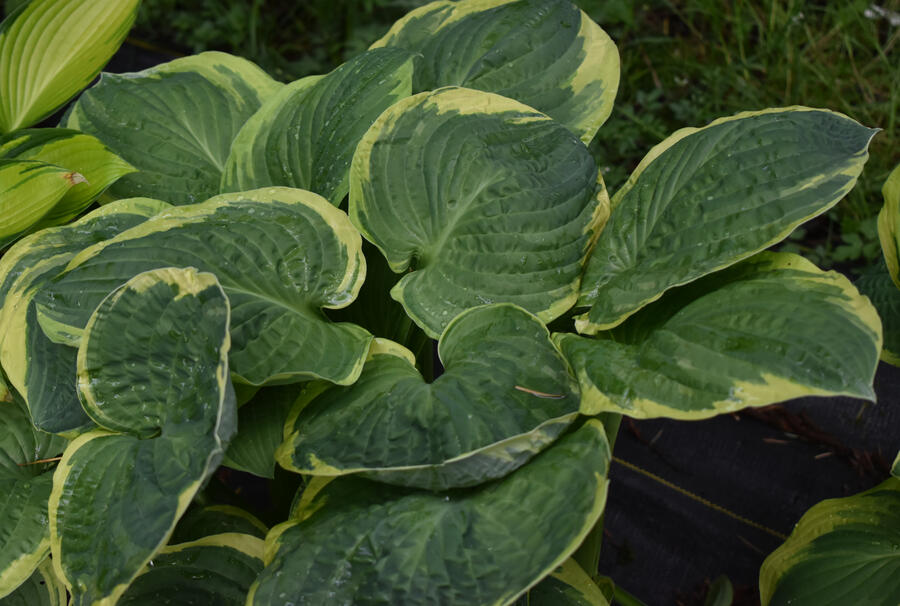
Hosta - 'Northern Halo'
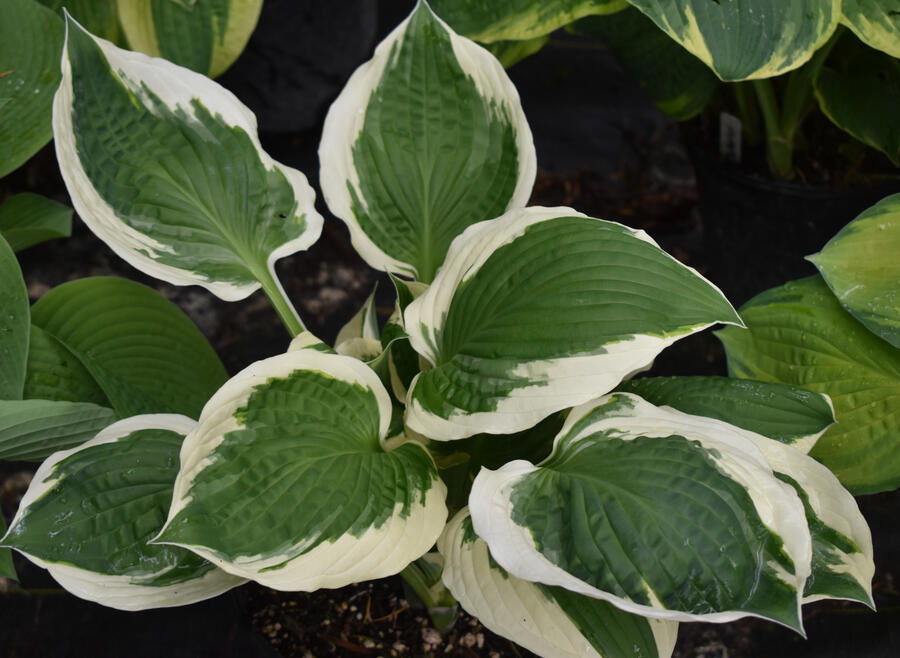
Hosta - 'Patriot'

Hosta - 'Sea Dream'
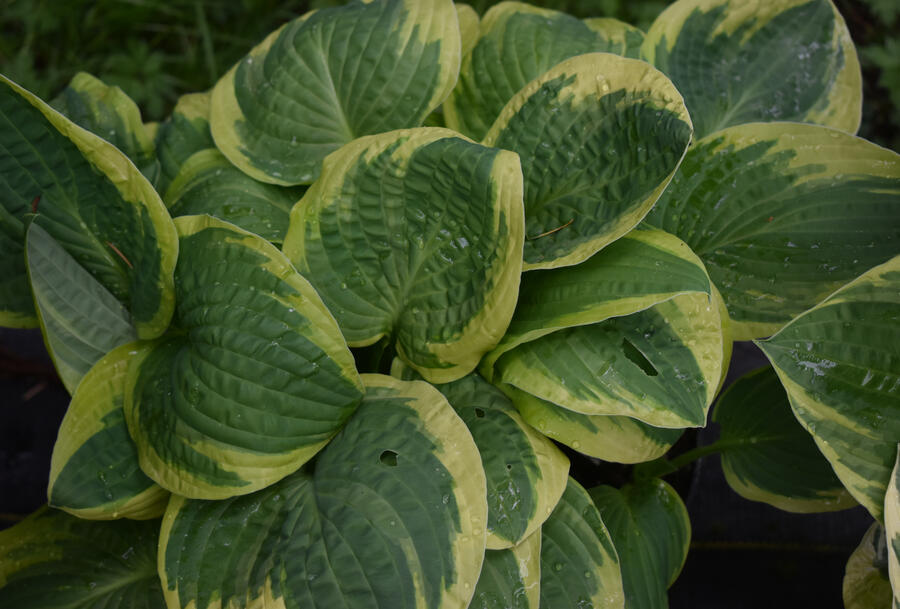
Hosta - 'Wide Brim'
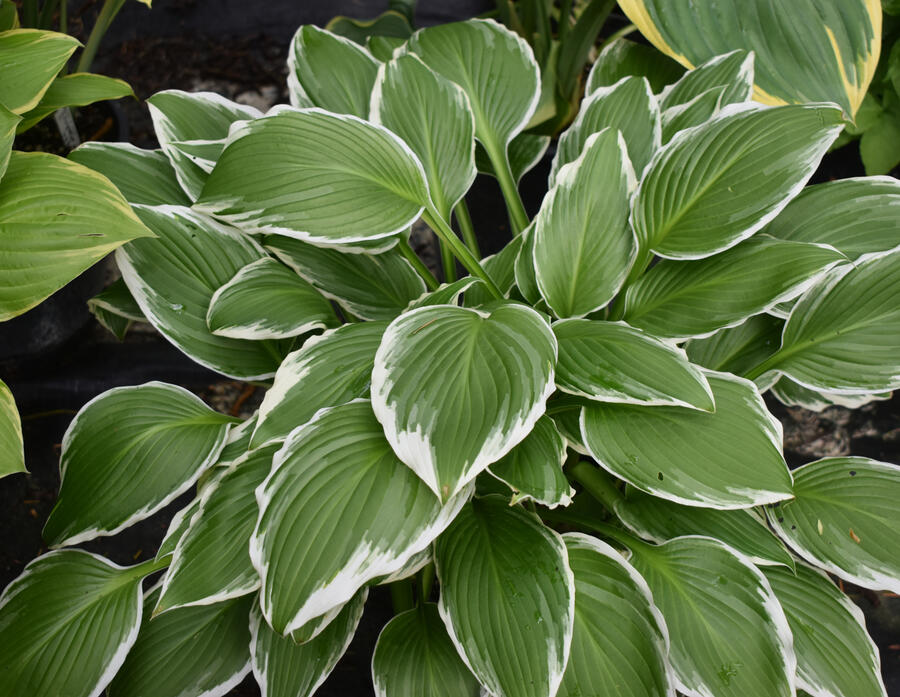
Hosta undulata

Impatiens omeiana
Hardy Impatiens
Zones: 6-9
Size: 9-18” tall
Sunlight: Part shade-full shade
Soil: Well-drained, moist
Bloom Time: September-OctoberDescription: Hardy impatiens was introduced from China in 1983. It grows about 16 inches tall with unbranched stems arising from slender, wide-spreading rhizomes. Colonies reach 2 feet across in two to three years. It has the watery stems of all balsams and dies to the ground with the first frost. The most ornamental characteristic of the hardy impatiens is its narrow, 3-inch long leaves which have a broad band of creamy white down the midrib with secondary veins on each leaf and yellow snapdragon-like flowers that bloom in early autumn. The petioles and stem are red, creating a subtle contrast.Growing: Impatiens are ideal for a moderately moist, well-drained location in part shade to full shade. They naturalize by stolons (not invasive) in optimum growing conditions.
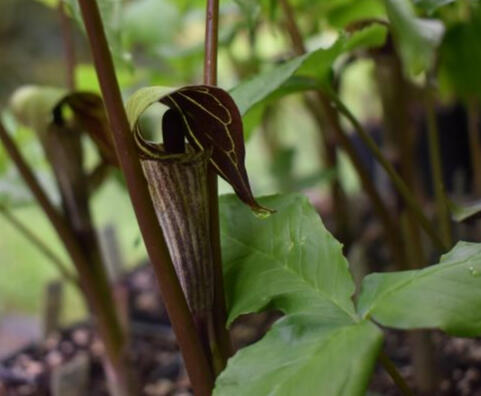
Arisaema triphyllum
Jack in the Pulpit
Zones: 6-9
Size: 1-2 ft. tall
Sunlight: Part shade-full shade
Soil: Well-drained, moist
Bloom Time: May-JuneDescription: I used to go looking for ‘Jacks’ in the woods where I grew up in Connecticut. They were magical, kind of like finding Trillium here in the Pacific Northwest. They pop up in the spring growing 1-2 feet tall. Each plant produces one bloom beneath the leaves on a short stalk. The “jack” is a fleshy green spike (“spadix”) bearing a number of inconspicuous male and female flowers. The “pulpit”, a modified leaf (“spathe”) that wraps around and hides the spadix is striped with reddish-violet. In late summer the spathe falls away, revealing a cluster of bright red berries.Growing: Jack-in-the-pulpit is an excellent woodland plant, very easy to cultivate and requiring very little care. It thrives under a variety of conditions, but grows most vigorously in moist, shady, seasonally wet locations. They prefer a moist, humus rich, sandy loam.Fair is the canopy over him seen
Pencilled by nature’s hand, black, brown and green
Green is his surplice, green are his bands,
In his queer little pulpit the little priest stands
(anon
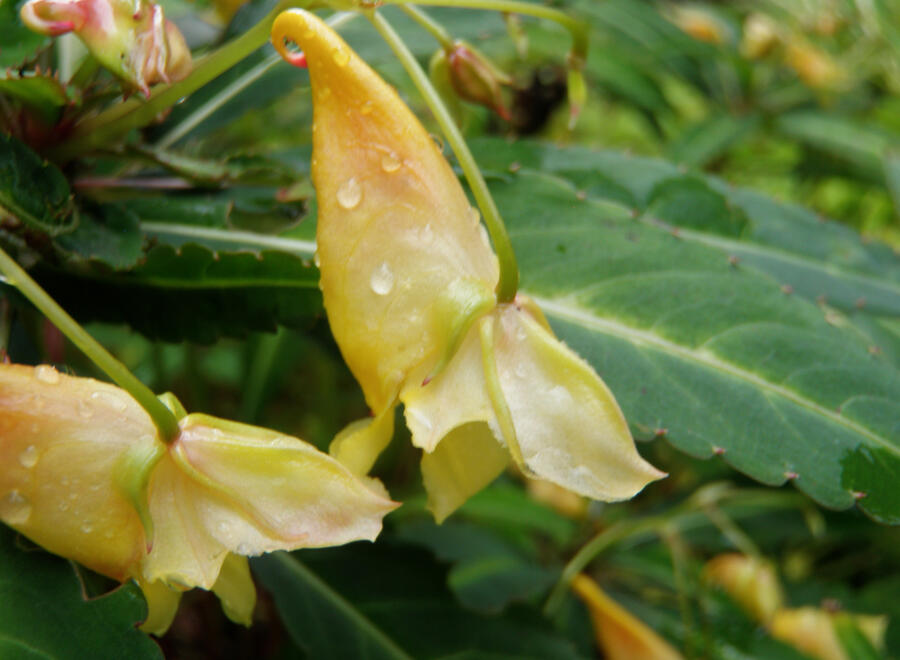
Kirengeshoma palmata
Yellow Wax Bells
Zones: 5-8
Size: 3-4 ft. tall
Sunlight: Part shade-full shade
Soil: Well-drained, moist, peaty
Bloom Time: Late summer-fallDescription: Kirengeshoma is a beautiful perennial with much to recommend it for a shady garden. It is a vigorous, hardy, herbaceous plant from the mountains of Japan. When visitors see it in my garden, they are impressed by its size and uniformity in shape. Though it looks like a shrub its herbaceous foliage that dies back to the ground in winter. It has dark stems of about 3-4 feet high, bearing thin hairy leaves shaped like those of a maple. These mid to deep green leaves have an almost felt-like appearance and cling tightly to the wiry stems. Clusters of long drooping bright yellow flowers appear in early autumn with five fleshy petals that over-lap so closely they appear like one. The blossoms measure 2 inches long and about half as wide. They are followed by alien-looking round seed capsules with three long horns. They are not favored by deer.Growing: Kirengeshoma grow best in moist, peaty soil, and in partial to full shade. With its exotic appearance and late summer flowers, it’s a valuable addition to our gardens.
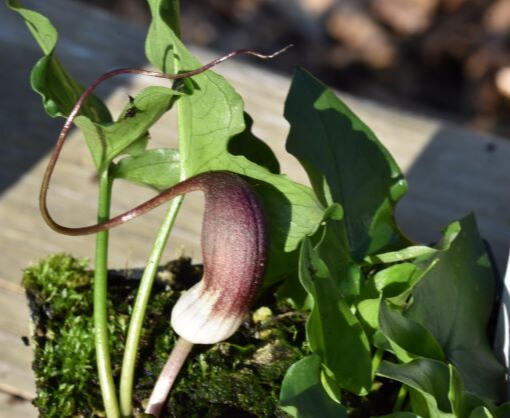
Arisarum proboscideum
Mousetail
Zones: 7-9
Size: 6” tall
Sunlight: Shade
Soil: Rich, well-drained
Bloom Time: SpringDescription: Mousetail is a small tuberous woodland perennial native to shady woodlands in Spain and Italy. It is an herbaceous perennial that flowers in April but goes summer dormant, reappearing in the spring. Arrowhead-shaped green leaves on long stalks rise directly from the ground to form a low-spreading carpet. Like our native ginger, you have to look under the leaves to discover its whimsical maroon and white flowers with tail-like tips resembling mouse tails. The flowers are long lasting in indoor arrangements.Growing: Mousetail prefers rich well-drained soil. with light to open shade or morning sun but avoid the hot afternoon sun. It is drought tolerant once established.
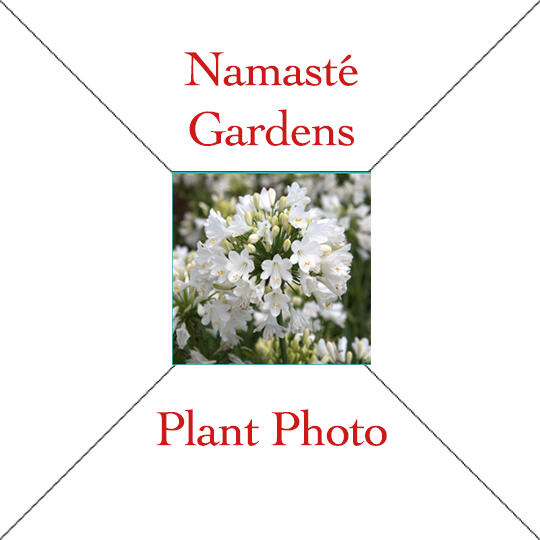
Plant Name
Text
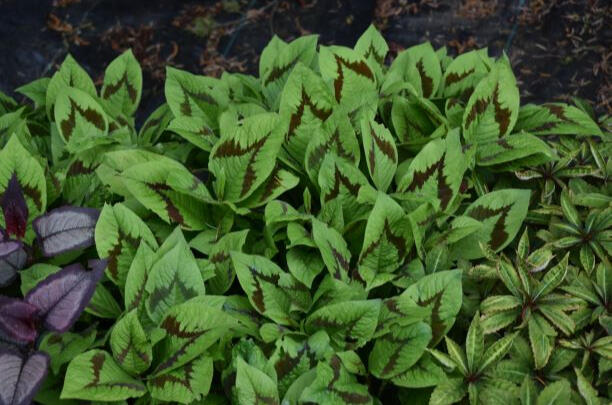
Persicaria filiformis
Fleeceflower
Zones: 4-10
Size: 2-3 ft. tall
Sunlight: Shade
Soil: Average, well-drained
Bloom Time: SeptemberDescription: Painter’s Pallet is an open stemmed plant with bright green leaves marked with bold red chevrons making it a magnificent foliage plant. It is a mounding plant, growing as wide as it gets tall. Sprays of tiny red coral bell-like flowers appear above the leaves in late summer adding to this plant’s charm. Attracts butterflies and is deer resistant.Growing: Persicaria prefer shade and a moist, organic rich soil. They will re-seed but are not invasive. They make a good companion plant for Hostas.
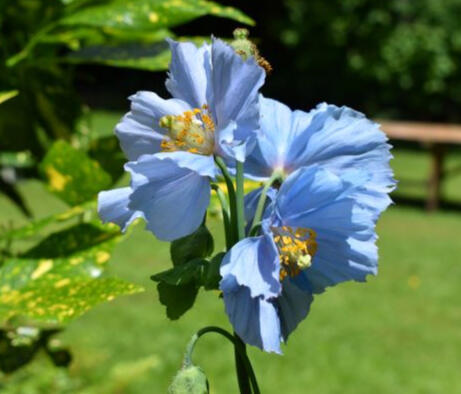
Poppy -
Himalayan Blue
Meconopsis betonicifolia
Zones: 3-8
Size: 3-5 ft. tall
Sunlight: Shade
Soil: Acid, peaty, well-drained
Bloom Time: May-JuneDescription: Blue Himalayan Poppies are one of the most impressive plants for the shade garden. The archetypal blue Moon, this poppy is a native of southeastern Tibet. It grows about 3-5 feet high and gets stems with 4-5 flowers each in early summer. They grow in a rosette of hairy leaves, bearing large satiny flowers in an amazing shade of true blue. Is there a more beautiful bloom in the entire flower kingdom then the famous Blue Poppy? It is only to be expected that an elusive, magical flower like this is a little harder to grow.Growing: They are not always easy to please, demanding an evenly moist, rich soil and cool woodland conditions. The secret with this plant is to grow cool and well shaded. This plant needs a cool, rainy summer, as in the Pacific Northwest, They can survive harsh winters if they have a good snow covering, but if the summer is hot, they will only live one year. Mulch with bark or composted pine needles (this will help increase soil acidity). The flower's coloring is connected with the soil pH--a more acid (peaty) soil means more blue coloration. An alkaline soil will result in more lavender flowers. Watch out for slugs. Keep well fertilized and deadhead to promote more flowers. The flowers will develop into seed-filled pods.
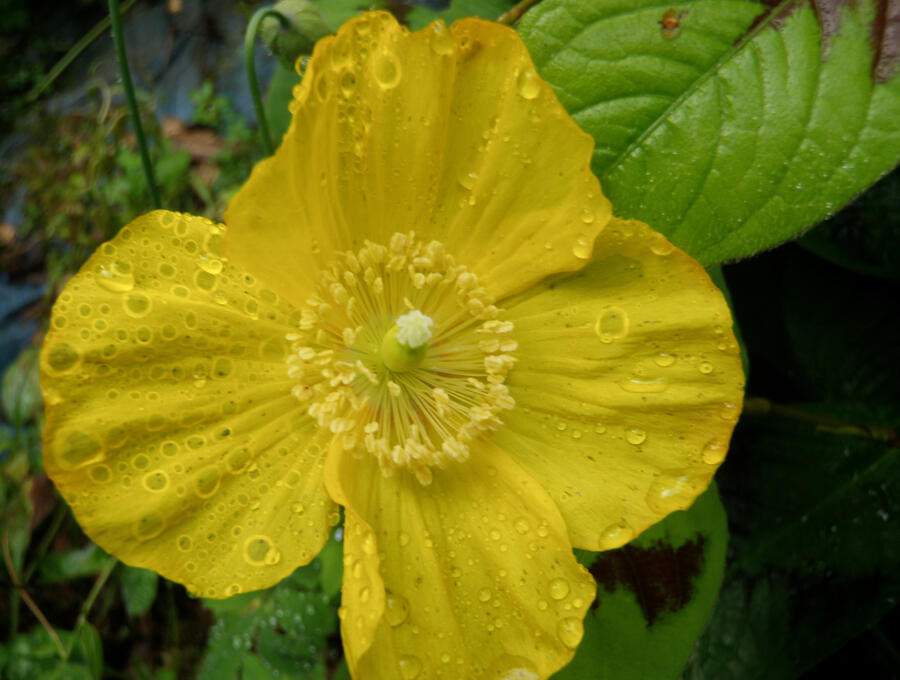
WELSH POPPY
Meconopsis cambrica
Zones: 3-11
Size: 12-18” tall
Sunlight: Part sun-part shade
Soil: Acid, peaty, well-drained
Bloom Time: April-AugustDescription: Welsh Poppy, considered a weed by some, manages to bring me out of my late winter, early spring, dreary-day blues with its cheerful yellow blossoms nodding in every corner of my shade gardens. Its vibrant green foliage contrasts well with the bright yellow blossoms. It is a hardy perennial that grows 12-18 in. tall starts blooming in April and continues through the summer.Growing: Welsh Poppy prefers a shady spot in your garden but it can take some sun. It will grow in almost any kind of soil. They are easy to grow and undemanding. Pick off old blooms as they self-sow readily.
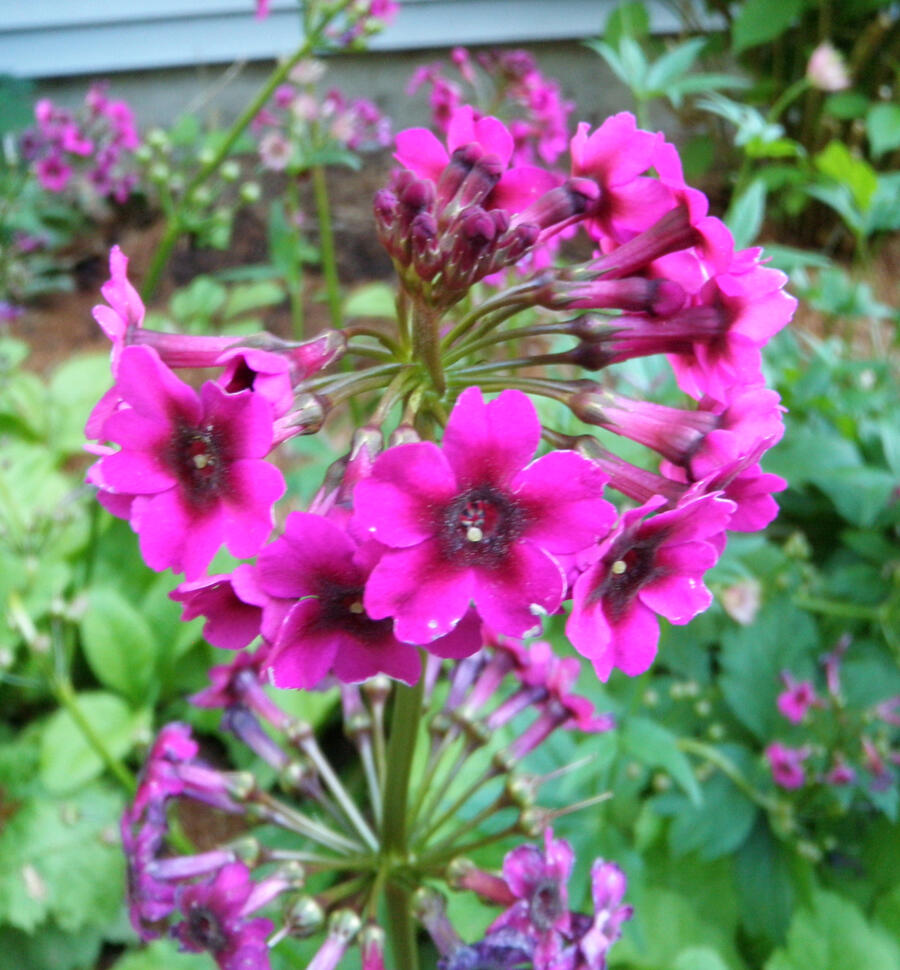
Primula
Candelabra Primroses
Zones: 4-8
Size: 1-2 ft. tall
Sunlight: Shade
Soil: Heavy, nutrient rich, moisture retentive
Bloom Time: Late spring-early summerDescription: There's nothing like a colony of primroses to bring color to and brighten up a shady area. Here's a plant, that given a cool, moist root run, will bloom in a multitude of shades from pure shades of pink, purple and yellow in late spring to early summer. They are native to sometimes soggy areas in Japan, but do well in a shady, well mulched border in just about any climate. The tall spikes of flowers start as tight little buds in the center of the plant. Somehow, as if by magic, they start elongating over a period of weeks until there are several concentric rings or whorls of flowers - some blooming, some in bud and some setting seed. They resemble candelabras of sorts and so they have become known as "The Candelabra Primrose" In late autumn as they descend into dormancy, the large crinkled leaves decompose and the plants revert back to tight little resting clumps. In early spring, the clumps awaken and send up new leaves. They are deer and rabbit resistant.Growing: Candelabras require heavy, moisture retentive, nutrient rich soils. They are perfect next to a water feature or fairly moist shady area. All it needs is an annual top-dress of compost once a year to keep it beautiful. Very long lived! Good in pots too! They will self sow into a spectacular colony if left to their own devices.
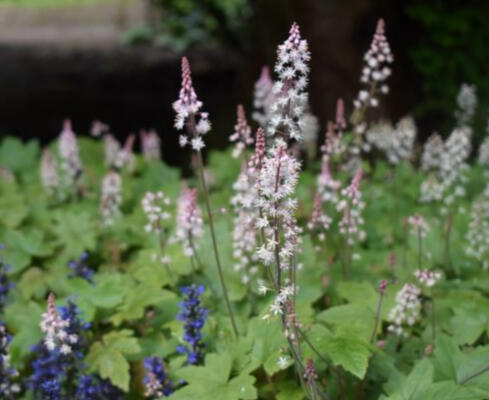
Tiarella cordifolia
‘Oakleaf’ Foamflower
Zones: 4-9
Size: 6-12” tall
Sunlight: Shade
Soil: Organically rich, moist, well-drained soil
Bloom Time: SpringDescription: 'Oakleaf' is a clump-forming foamflower noted for its bright oak-like foliage and its spires of long lasting light pink flowers in the spring. It forms a basal foliage mound 6" tall and 10" wide of dark green leaves which acquire attractive red tints in spring and fall. Tiny pink flowers appear in bottle-brush-like racemes atop erect, wiry stems rising above the foliage mound to a height of 9-12".Growing: Tiarella is easily grown in average, medium, well-drained soil in part shade to full shade. It prefers humusy, organically rich, moisture-retentive soils. It should not be allowed to dry out. Wet soils, particularly in winter, can be fatal, however. Removal of flower spikes after bloom will improve the appearance of the plants.

Tiarella cordifolia ‘Wherryii’
Slick Rock Tiarella
Zones: 3-7
Size: 6-10” tall
Sunlight: Shade
Soil: Organically rich, moist, well-drained soil
Bloom Time: SpringDescription: This woodland perennial groundcover has attractive maple-like leaves and a delicate bloom, white with pinkish tips, on a frothy spike. The leaves acquire attractive bronze tints in spring and fall. It is native from Nova Scotia to the eastern edge of Wisconsin and south through the Appalachians. Often found in wet hollows and mossy places in deciduous and mixed woods. It is sometimes associated with cedar and hemlock.Growing: It prefers moist, rich, organic, well-drained soils in full to part shade. Do not let the soil dry out. It is a stoloniferous quickly spreading groundcover good for filling in open spaces in the shade garden. The shallow root system of this plant makes a happy companion of deep rooted natives such as Solomon's Seal and Cardinal Flowers.
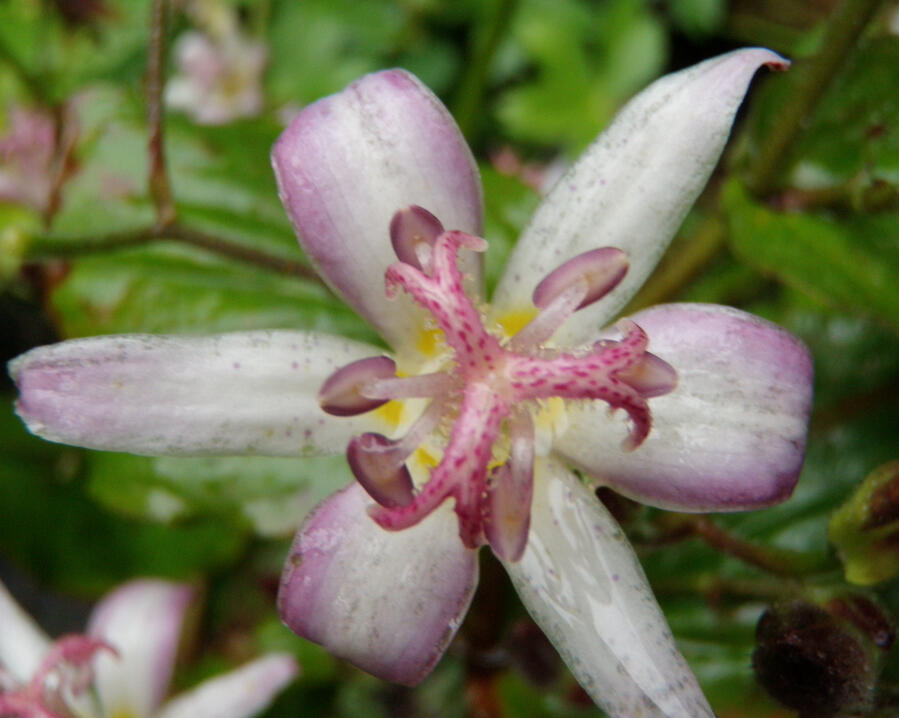
TOAD LILY
Tricyrtis hirta
Zones: 4-8
Size: 2-3 ft. tall
Sunlight: Part shade-full shade
Soil: Organically rich, moist, well-drained soil
Bloom Time: August-SeptemberDescription: This woodland plant is best known for its unique orchid-like flowers blooming in the late summer to fall. The 3-foot tall perennial has clasping lance-shaped green leaves that ascend the stems in a ladder-like fashion. They form slowly expanding clumps over the years. The white to pale lilac flowers with heavy purple spotting appear in the leaf axils in clusters of 2 to 3 all along the stems. They are virtually pest and disease free and the deer don’t like them.Growing: Toad Lily prefers shade and consistently moist soil, a bit on the acid side, with lots of organic matter. Watch out for slugs when they first emerge in the spring. They are good for borders, woodland gardens, shade gardens or naturalized areas. Plant them in areas where you can where you can get close to them, because the beauty and detail of the small flowers becomes lost at a distance.
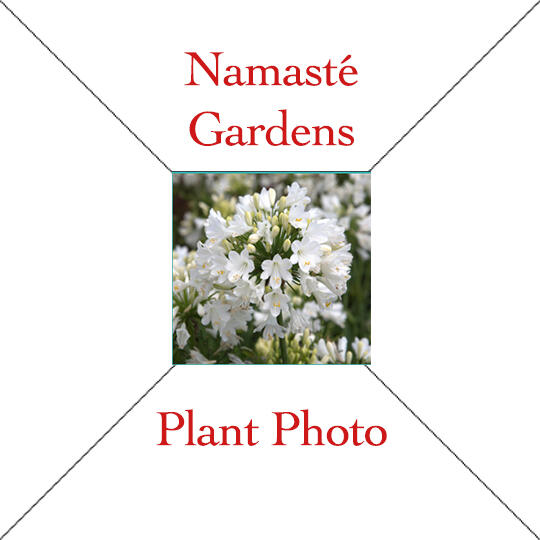
Plant name
Text
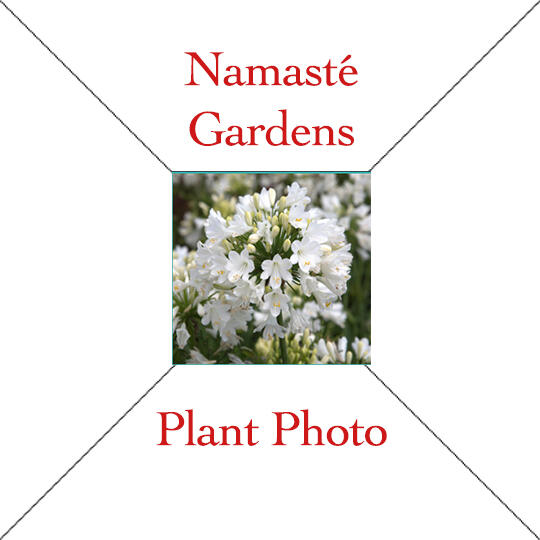
Plant name
Text
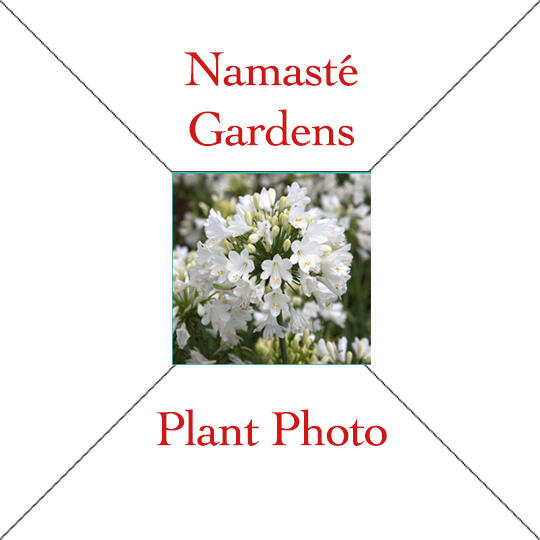
Plant name
Text
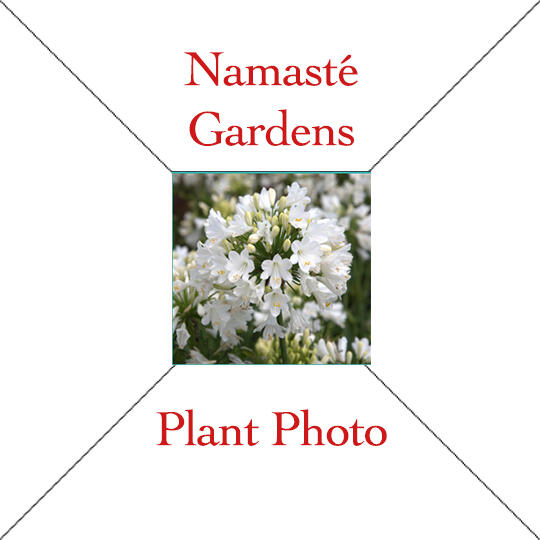
Plant name
Text
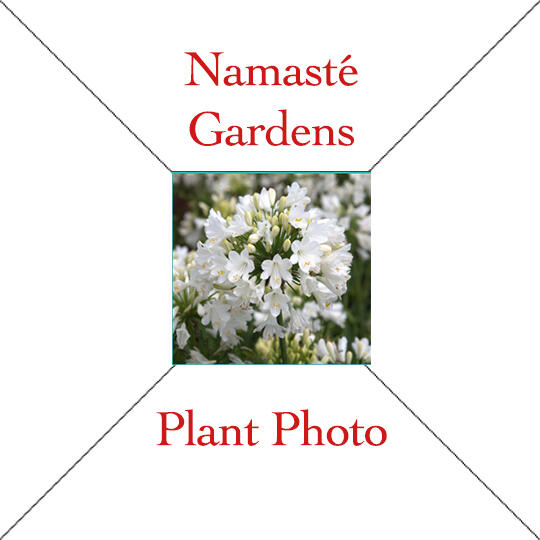
Plant name
Text
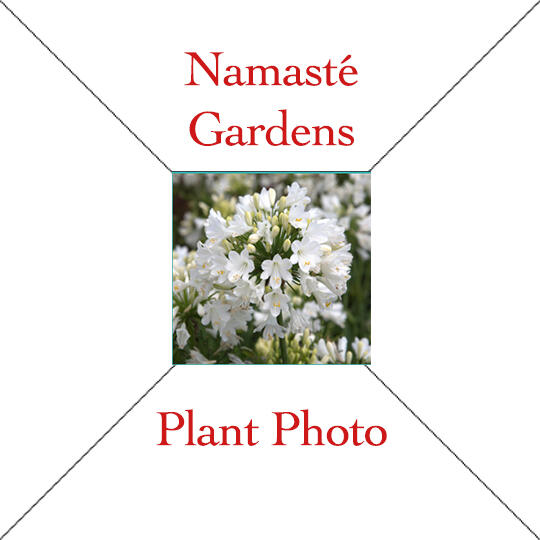
Plant name
Text
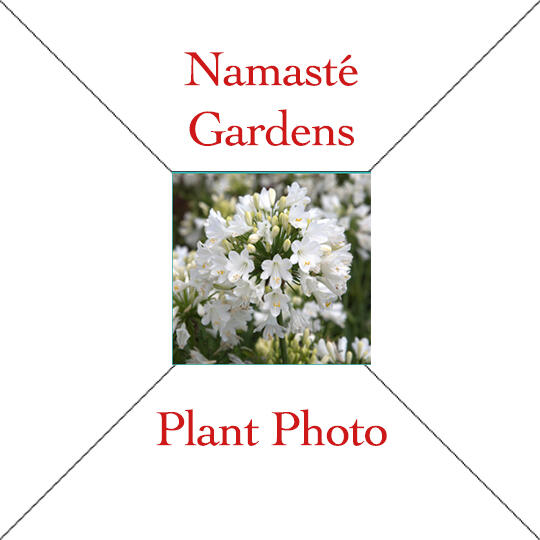
Plant name
Text
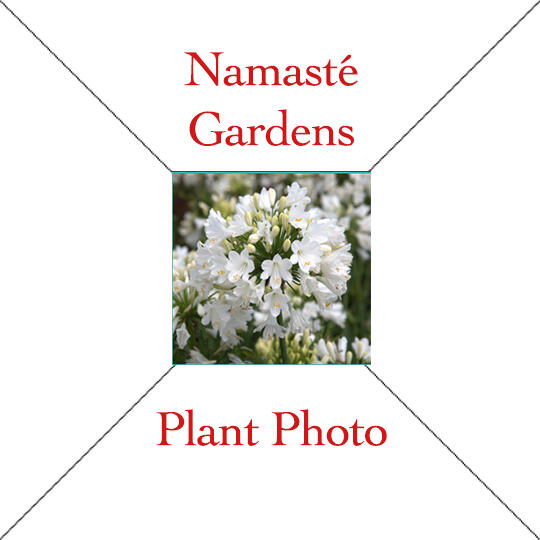
Plant name
Text
Native Plants
If they grow in the wild, they should do well in your garden right? Well, yes and no, some are quite easy and will grow pretty much anywhere, but others might have special requirements on soil or moisture. But if you’ve ever been up in a mountain meadow in bloom, you know what to try for. Native plants tend to be well behaved in the garden and are rarely invasive. They are important to local wildlife, birds, and butterflies as they rely on them for food, shelter, and nesting.
Sun Natives
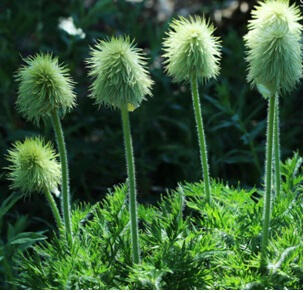
Anemone occidentalis
Western Pasqueflower
Zones: 4-8
Size: 10-20” tall
Sunlight: Sun
Soil: Slightly moist but well-drained
Bloom Time: Spring-early summerDescription: The Western Anemone is one of the most beautiful of the early spring mountain flowers. Its handsome white cups, purple-shaded on the outside, may be found growing close to the retreating line of snow during the months of May through September Later on in the season its big fluffy seed-heads are eagerly gathered by those who delight in artistic things. This plant, like many others of the Crowfoot Family, has no petals, only a lovely calyx fashioned into about six sepals, which do duty instead. Native to far western North America including British Columbia to California and Montana, it is found growing in gravelly soils on slopes and in moist meadows.Growing: This Anemone grows 1' 8" feet tall and likes full sun. They grow in mountain meadows on well drained steep slopes. I planted some on a steep bank next to a creek. We’ll update on how they do.
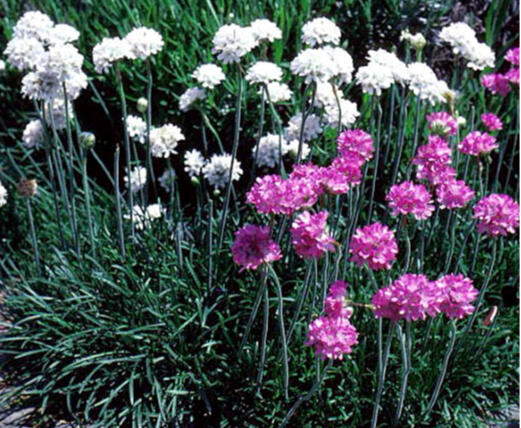
Armeria maritima (White & Pink)
Zones: 4-8
Size: 6-12”. tall
Sunlight: Full sun
Soil: Infertile, dry, well-drained
Bloom Time: Spring to mid summerDescription: Native to mountain and coastal areas in the Northern Hemisphere, thrift or sea pink is a compact, low-growing plant which forms a dense, mounded tuft of grass-like, dark green leaves (to 6" tall). Tufts will spread slowly to 8-12" wide. Tiny, pink to white flowers bloom in mid spring in globular clusters (3/4-1" wide) atop slender, naked stalks rising well above the foliage to 6-12" tall. Sporadic additional flowering may occur throughout the summer. Flower clusters are subtended by purplish, papery bracts.Growing: In the wild, thrift or sea pink commonly grows in saline environments along coastal areas where few other plants can grow well, hence the common name. Best grown in infertile, dry, well-drained soils in full sun. Foliage mounds tend to rot in the center if grown in moist, fertile soils or in heavy clay. Good drainage is essential. Deadhead spent flower stems to encourage additional bloom Its dense, mounded shape offers good textural contrast with other low-growing plants even when not in bloom. Easily grown it is good along walks or border fronts. I use them in my cut flower arrangements.
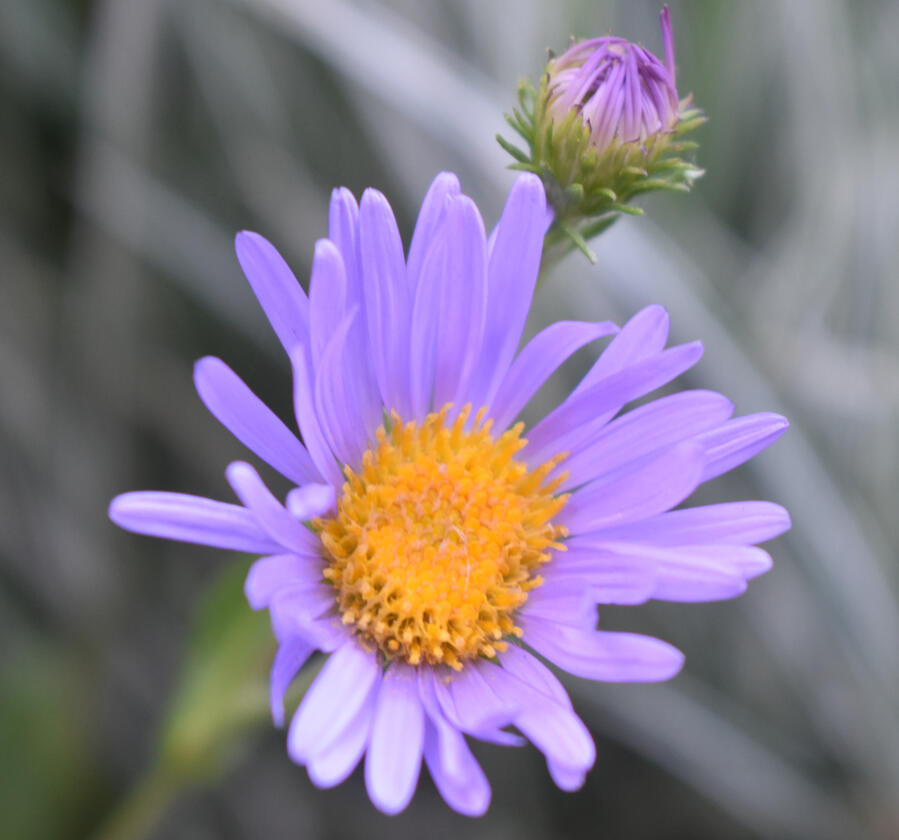
Leafy Aster foliaceus
Symphyotrichum hendersonii
Zones: 3-8
Size: 6-24” tall
Sunlight: Full sun
Soil: Well-drained, loamy
Bloom Time: Mid to late summerDescription: Native to the Pacific Northwest and across North America, this species of aster grows in open woods, subalpine meadows and along streams at high elevations. It is a perennial with purple daisy-shaped flowers and spreads by rhizomes. It is a valuable pollinator plant for bees and butterflies, its tasty seed heads are sought by cardinals, chickadees, finches, nuthatches, and many other seed eaters.Growing: Asters are suitable for borders, rock gardens, or wildflower gardens. Soil should be moist but well-drained and loamy. They prefer full sun but can take a little shade.
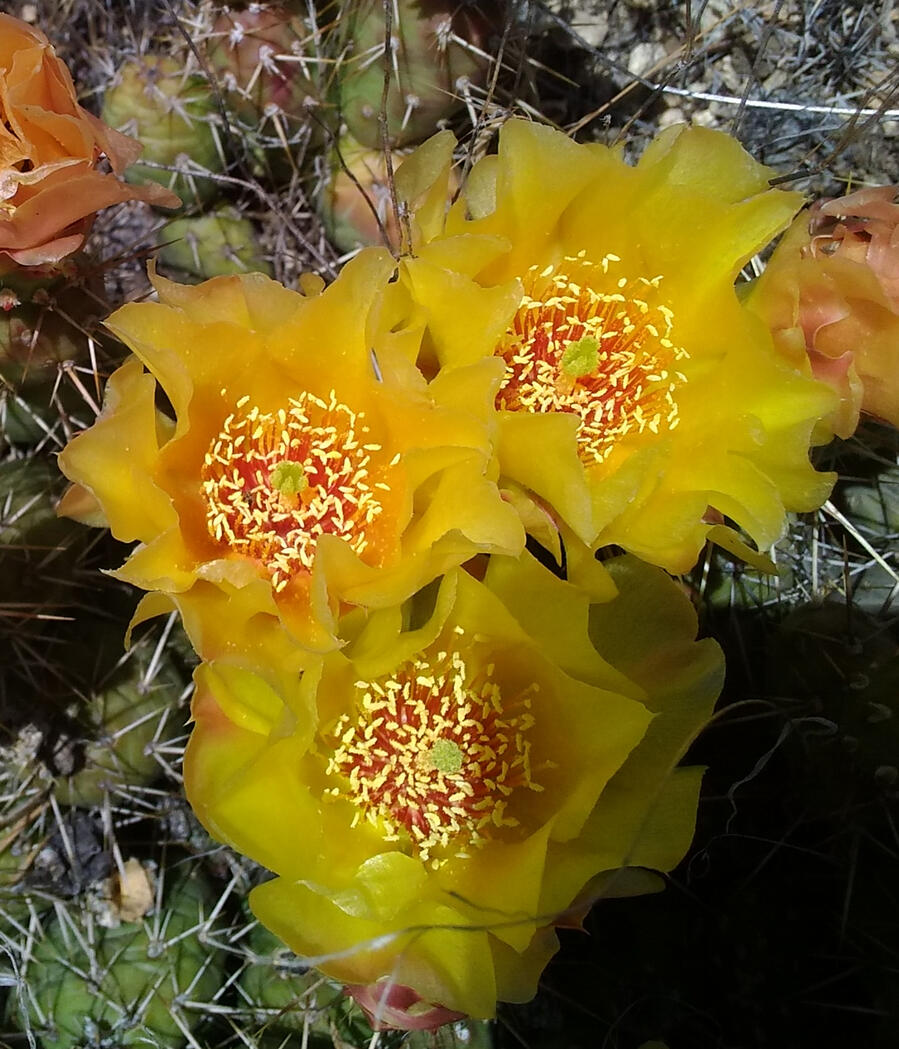
Cactus - Prickly Pear
Opuntia fragilis
Description: Known as brittle pricklypear and little pricklypear, it is native to much of western North America as well as some eastern states. It also occurs in several Canadian provinces. My original starts were taken on San Juan Island, which took me quite by surprise because I couldn’t imagine a catus growing there. I next encountered it growing on the Colville reservation in Eastern Wa. For a while, I thought it was O. columbiana because of its more rounded pads but the pads break off easily if you brush against them which is a characteristic of O. fragilis. I have kept the two separate in my inventory labeling them as Ea. Wa. or Lumi varieties. It is known from farther north than any other cactus. The flowers are a striking yellow, 1 to 2 inches long and broad. Brittle prickly pear has special value to native bees. Deer resistantGrowing: Brittle pricklypear is probably the most cold tolerant of all the cacti species, being able to survive minimum winter temperatures below -58 oF. They require sandy soils, occurring in a variety of desert, grassland, prairie, and woodland communities and are extremely tolerant of drought. Humans eat the stems, fruits, and seeds of brittle pricklypear and has been used medicinally to sooth sore throats and relieve skin irritations.
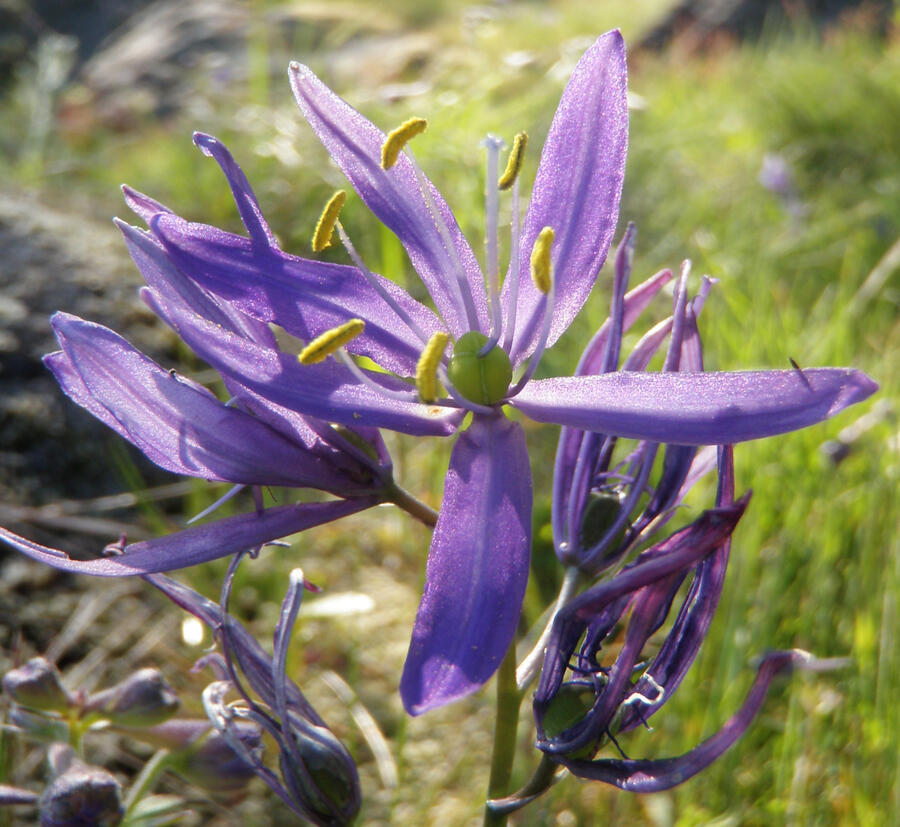
Camassia quamish
Small Camas
Bloom Time: May-June
Description: Pale blue to brilliant blue, star shaped with bright yellow anthers, the small camas is a Pacific Northwest native. It is frequently found in masses of blue in boggy meadows at or near sea level. The bulb can be eaten and has a sweet, agreeable flavor when cooked. It was a staple food for tribes of the Northwest. This makes quamash both edible and ornamental.
Growing: Quamash will grow in just about any soil type. It prefers moist, but well-drained soil. It grows best in the full sun but will tolerate partial shade. Zones: 3-8
Size: 1 foot
Sunlight: Full sun to partial shade
Soil: Moist
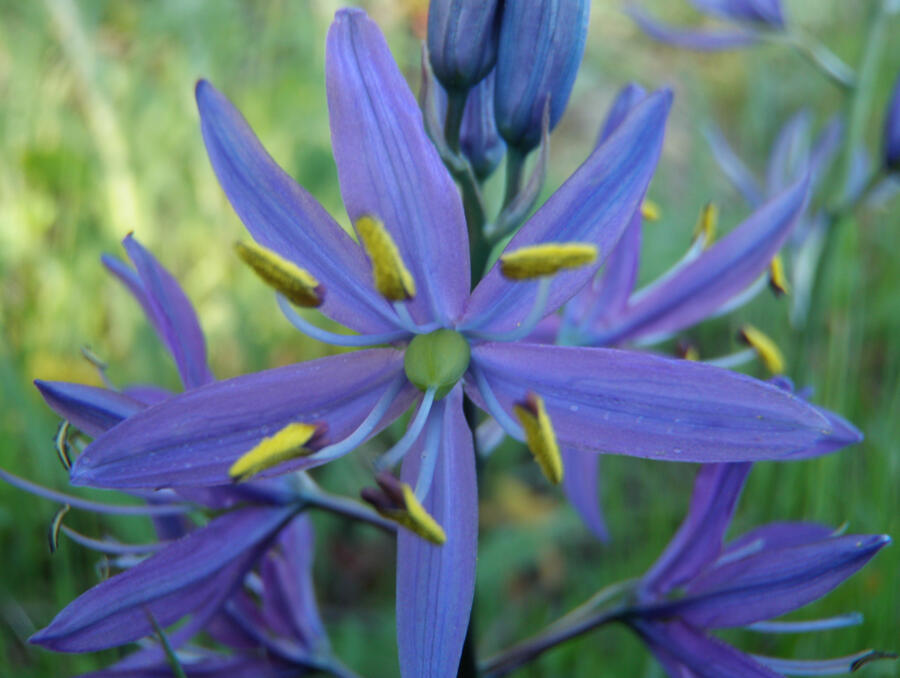
Camassia leichtlinii
Wild Hyacinth
Zones: 5-9
Size: 2-4 ft. tall
Sunlight: Full sun
Soil: Fertile, heavy, clay
Bloom Time: Late springDescription: This native of the Pacific NW that grows in moist meadows, is a showy addition to your perennial beds. One bulb produces a terminal spike of blue star-shaped flowers (20-80 flowers per spike), reaching from 2 to 4 feet in late spring. Deer don't particularly care for this plant and will usually leave it alone in favor of tastier treats.Growing: It is easily grown in average, medium, well-drained soil in full sun to part shade though it does best in full sun. Prefers a moist, fertile, acidic, somewhat heavy soil where plants can remain undisturbed for years and is excellent for heavy clay soils. Mass or plant in groups of at least 12 bulbs in the perennial border or naturalized garden. May also be utilized as a perimeter plant for a water garden or pond. The flowers are excellent for cutting.
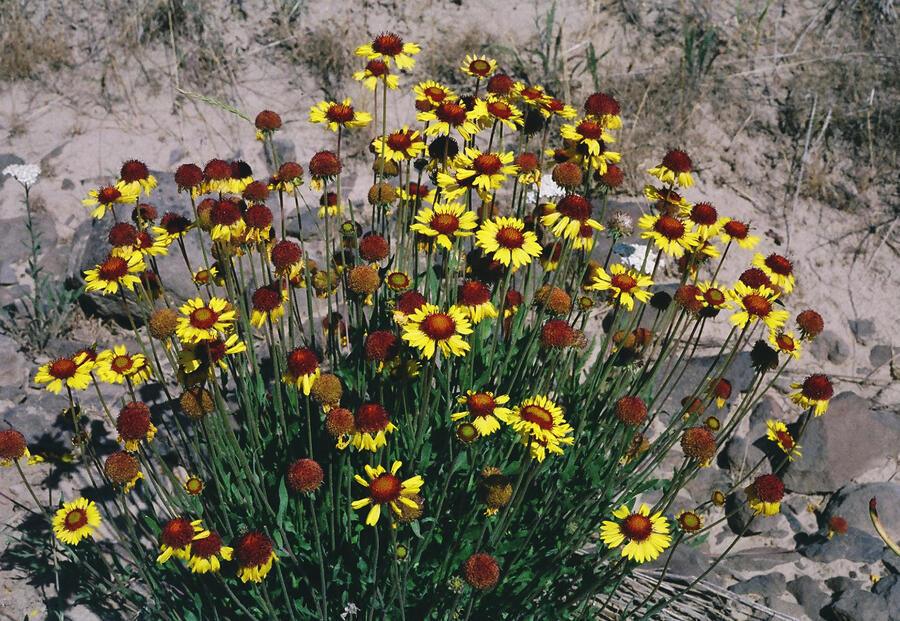
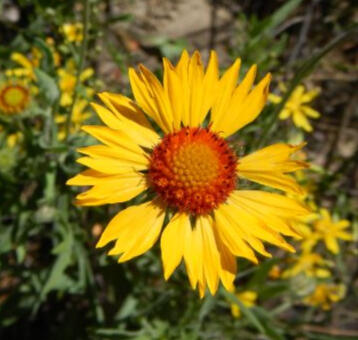
Gaillardia aristata
Blanket Flower
Zones: 3-8
Size: 30” tall
Sunlight: Partial shade
Soil: Clay
Bloom Time: Summer-fallDescription: This Pacific NW native grows in meadows and grassy prairies into the mountains. It is the only native Gaillardia that grows in our area. This showy, perennial has flower-head with reddish purple disc florets in the center and a fringe of yellow ray florets with dark bases. It typically grows in clumps to 30” tall and is found primarily on dry sites in meadows, prairies and grasslands in mountain foothills and at lower mountain elevations to 9000’. The flowers are attractive to butterflies and gardeners should consider leaving some spent flower-heads for the birds.Growing: Gaillardia is easily grown in average, dry to medium, well-drained soil in full sun. It prefers organically rich soils that drain well but tolerates dry soils and drought. The plant will naturalize. Used in perennial border fronts, rock gardens, cottage gardens and cutting gardens, it is also effective in containers. No serious insect or disease problems. Some Plateau Indian tribes used blanket flower to treat wounds and settle fevers.
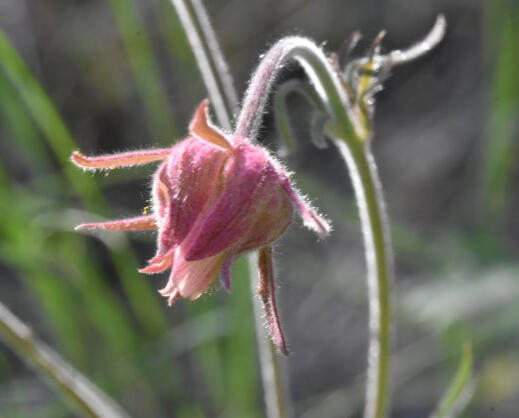
Geum triflorum
Old Man’s Whiskers
Zones: 3 - 7
Size: 8-20” tall 6-12” wide
Sunlight: Full sun
Soil: Dry, well-drained
Bloom Time: May - JulyDescription: Geum tirflorum is an herbaceous perennial in the rose family, native to northern North America. The reddish pink to purplish, nodding, flowers are very interesting. But perhaps its most distinguishing feature is the fruiting head that follows. It forms 2" long, feathery gray tails which collectively resemble a plume or feather duster, hence the large number of regional descriptive common names such as torch flower, long-plumed purple avens, prairie smoke, lion's beard and old man's whiskers. Deer resistant, somewhat drought tolerant. Flowers can be used in floral arrangements.Growing: Old man’s whiskers likes our cool summer climate but It prefers dry conditions and will not do well in wet soggy soils. Try a hot sunny, well-drained spot in your garden. It is good as a border plant or ground cover in naturalized areas. I have some growing in my rock garden where the fern-like leaves, which persist through the winter, fill in between other natives and succulents I have growing there. Native Americans once boiled the roots to produce a root tea that was used medicinally for a variety of purposes.
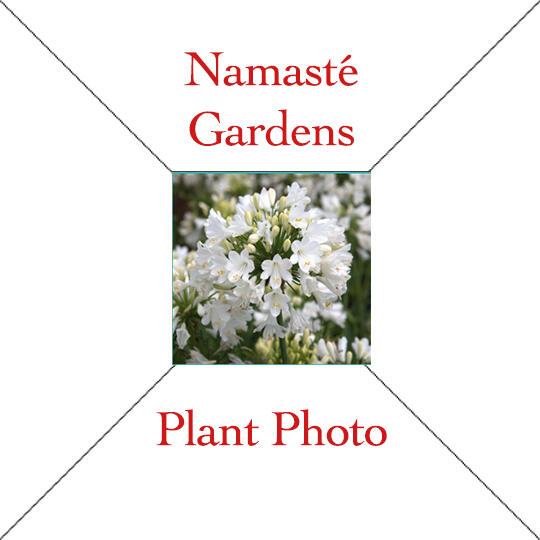
Plant Name
Text
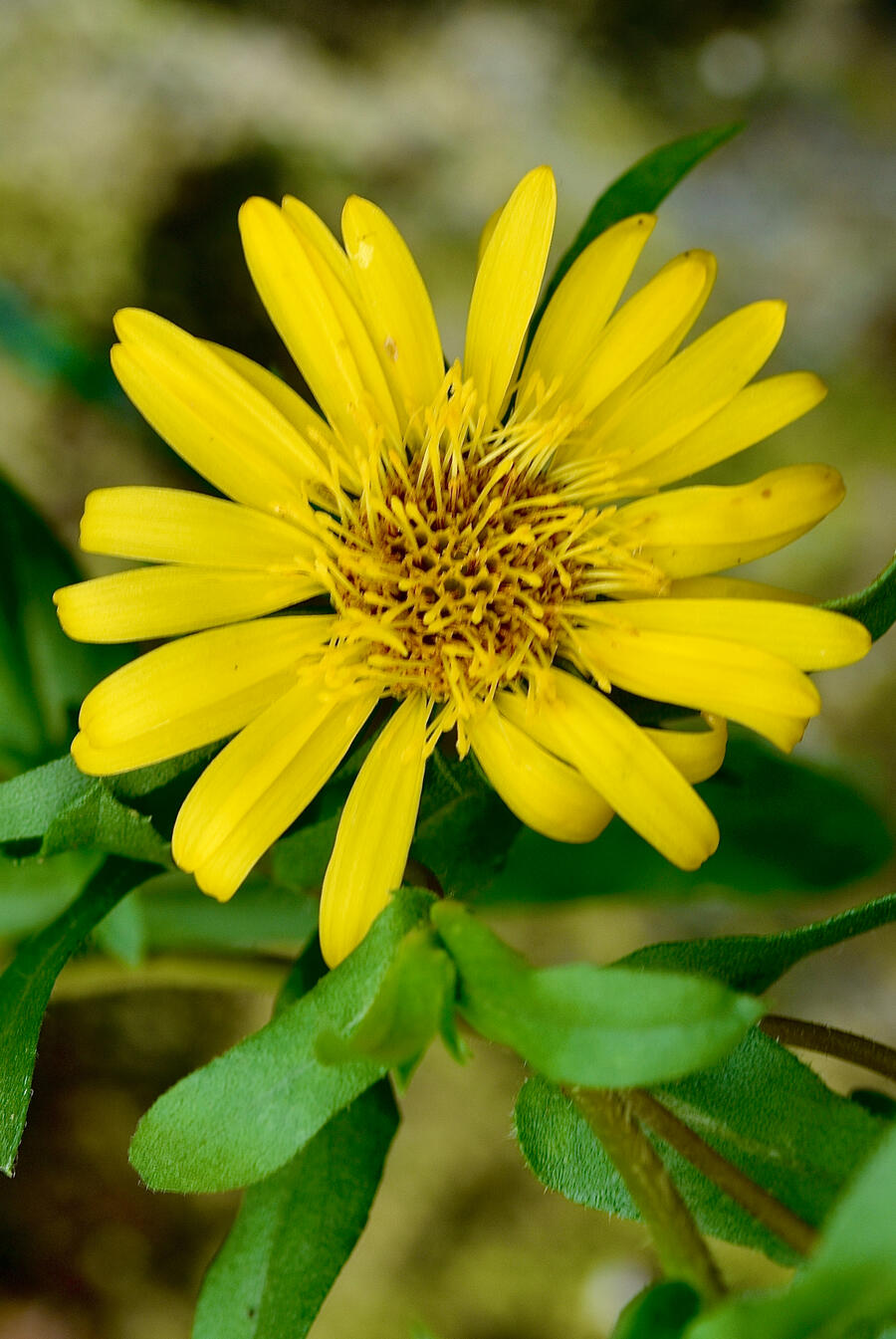
Grindelia integrifolia
Gumweed
Zones: 6-10
Size: 8” - 4 ft. tall
Sunlight: Full sun
Soil: Clay, loam, sand; well-drained
Bloom Time: Summer - fallDescription: Native to the Pacific Northwest, gumweeds are shrubby perennials that bloom all summer with showy, yellow, daisy-like flowers. They are covered with a sticky resin; hence the name. I found them growing all over the beaches at ferry landings. Pacific Northwest tribes extracted gumweed resin to treat asthma, bronchitis, whooping cough, and dermatitis caused by poison ivy.
Important nectar source for various bees, butterflies and other pollinatorsGrowing: This species grows on the West Side of the Cascades. Grindelia nana grows on the East Side. Both species do well in my gardens. They are easy to grow and don’t need much care except to prune them back in the fall. They need well drained soil in full sun though they will tolerate a little shade. They will self-sow if seed heads are not removed.

Plant Name
Text
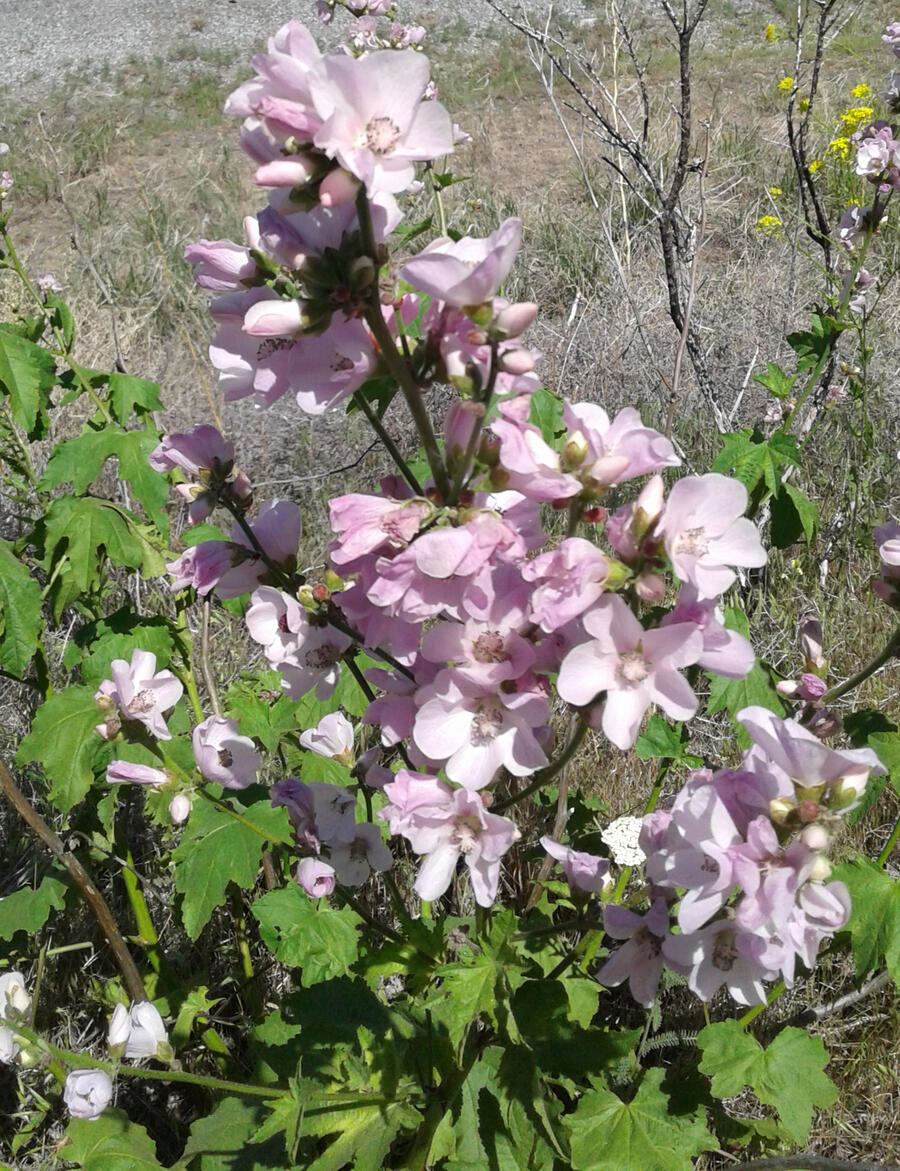
Iliamna rivularis
Wild Hollyhock
Text
Plant Name
Zone: 4
Size: 3-6 ft. tall
Sunlight: Full sun
Soil: Well-drained, fertile loam
Bloom Time: June-AugustDescription: Native to sunny mountain stream banks, meadows, and open forest slopes east of the Cascade Range, from British Columbia and Alberta to Montana. I found it growing along the Methow River where I took cuttings and seed. This plant grows 3 to 6 feet tall and produces dense racemes of soft lavender-pink flowers in Jun--Aug. Large leaves are broadly heart-shaped with triangular lobes. . Attractive to bees, butterflies andGrowing: I found Iliamna growing in full sun though literature suggests it will take part shade too.
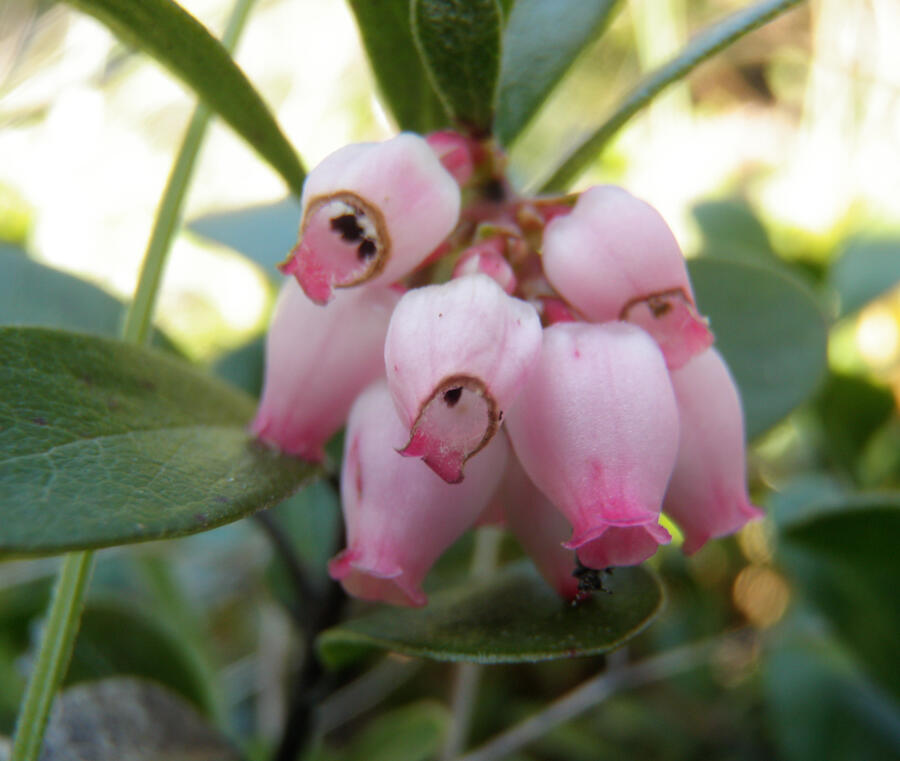
Kinnikinnick
Arctostaphylos
uva-ursi
Zones: 2-9
Size: 6-8” tall
Sunlight: Sun
Soil: Well-drained, moist
Bloom Time: March-JuneDescription: Kinnikinnick, by whatever name it is called, is a native ground-cover which can be found from the coast to the subalpine zone. Look for it on sandy slopes, exposed rocky banks, dry subalpine meadows, and coniferous forests. This mat-forming shrub has woody reddish-brown branches, 6 to 8 inches tall. Its pinkish clusters of hanging bell-shaped flowers appear from March to June. The bright red berries remain on its evergreen branches all winter until they are used as survival food for bears, birds (grouse especially), and other wild animals.Growing: While it grows best in sunny well-drained sites, Kinnikinnick can tolerate heavier soils and some shade. Have a place you hate to mow or a boring parking strip? Kinnikinnick will fill it. Or plant it in a retaining wall or rockery that could use a cascade of green. It’s low maintenance, drought tolerant, and a pal to birds (like evening grosbeaks and hummingbirds) and insects (like bees and brown elfin butterflies). Commonly, both the Indians and later the colonists dried and crushed the leaves, smoking them alone or mixed with tobacco. Leaves were also reportedly boiled and used as tea, primarily for medicinal use in traditional herbal medicine. Gathered in the fall, the leaves are dried and crushed for storage, to be made into medicinal tea which healers have used for centuries as a tonic and a diuretic. The leaves contain arbutin, a powerful astringent, which is reputed to have an antiseptic effect on the urinary tract and thus accounts for its apparently effective us in treating kidney and bladder infections.
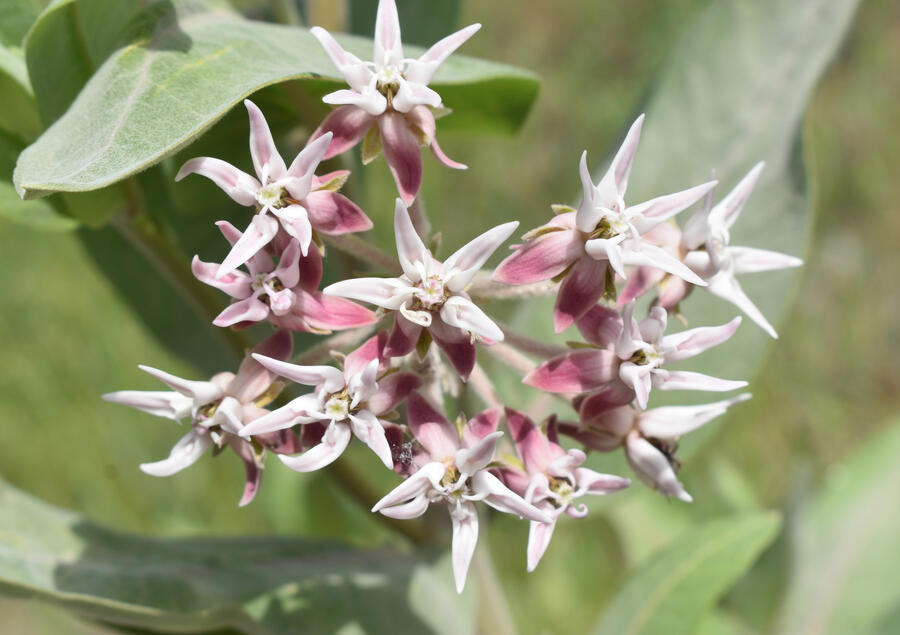
Showy Milkweed
Asclepias speciosa
Zones: 3-9
Size: 2-4 ft. tall
Sunlight: Full sun
Soil: Well-drained, sandy
Bloom Time: Spring - summerDescription: Native to Western North America, milkweeds are an important nectar source for bees and other nectar seeking insects, and a larval food source for monarch butterflies and their relatives. 3" clusters of fragrant, pinkish-white to pinkish-purple, star-like flowers appear over a long bloom period from late spring well into summer. Stems and leaves exude a milky sap when cut or bruised. Flowers give way to prominent seed pods which are valued in dried flower arrangements.
Attracts hummingbirds and butterflies; Deer resistantGrowing: Asclepias is drought tolerant and does well in poor, dry soils in full sun. It is used in butterfly gardens, meadows, prairies, or naturalized/native plant areas. It is also effective in sunny borders. After planting, it is best to leave plants undisturbed because they develop deep taproots which make transplanting difficult. Whether massing plants in large drifts or sprinkling them throughout a prairie or meadow, butterfly weed is one of our showiest native wildflowers. Cut off seed pods before they open if you want to avoid self-seeding.
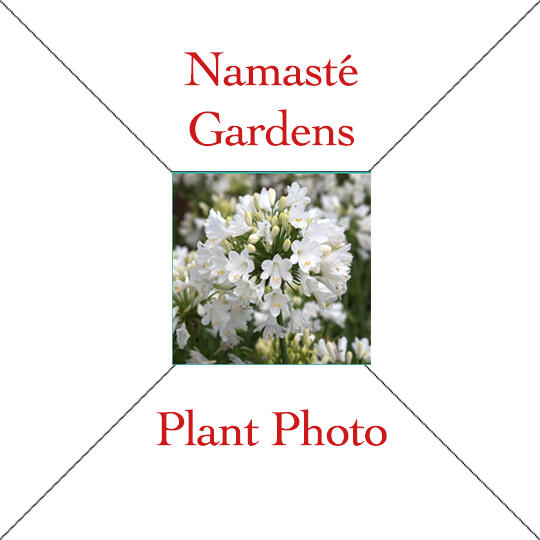
Plant Name
Text
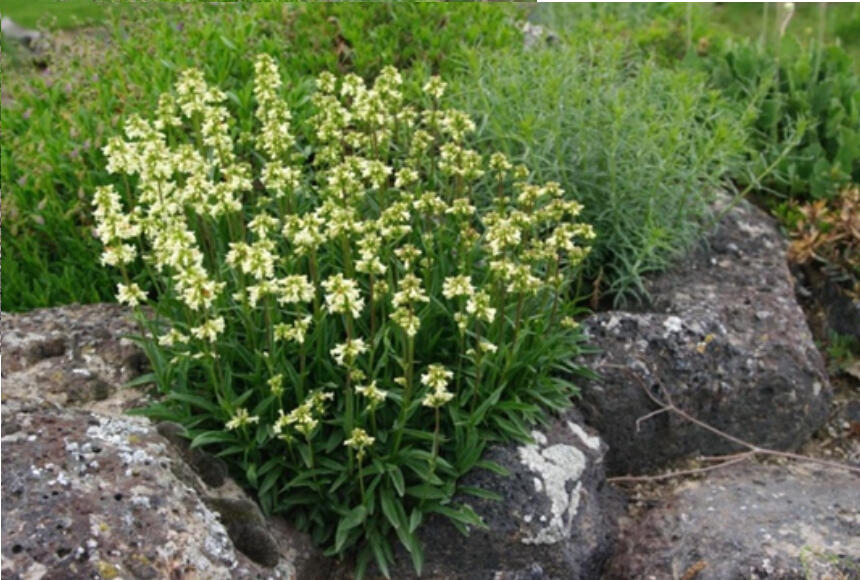
Penstemon confertus
Yellow Penstemon
Zones: 3-8
Size: 1-2 ft. tall
Sunlight: Full sun
Soil: Clay, loam, sand; moist, well-drained
Bloom Time: SummerDescription: Penstemon confertus is native to western North America. It is a pale yellow, small flowered Penstemon noteworthy for it’s unusual flower color. This neutral flower color makes it easy to mix or match with other plants in the garden. It is seen growing in alpine meadows at mid elevations. It is a nectar source for hummingbirds, small bees and many butterflies. Deer resistant.Growing: P. confertus prefers moist soils and can withstand moister conditions than other Penstemon species. It prefers sun but can tolerate some shade too. It looks lovely in a rock garden or as a border plant along with other native plants. Remove stems with spent flowers to encourage some late-season bloom and to keep the basal leaf mat healthy.
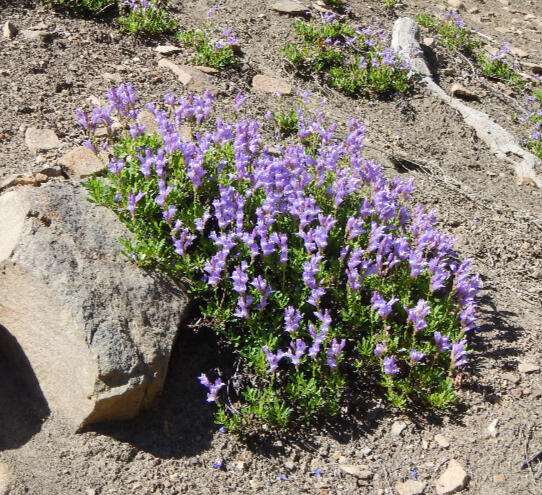
Penstemon davidsonii
Davidson’s Penstemon
Zones: 4-8
Size: 4-10” tall
Sunlight: Full sun
Soil: Average, well-drained
Bloom Time: Late spring-summerDescription: Native from the Sierra Nevada Range in California and Nevada through the Coast and Cascade ranges of Oregon and Washington into British Columbia. P. davidsonii is a low growing penstemon species with shiny evergreen leaves. The blooms are gorgeous, blue to lavender, almost magenta, showing up in the summertime. Put this one where its mat-forming, ground cover qualities can be appreciated fully, in a rock garden, flowerbed, or on an embankment. Davidson's penstemon is found in talus or rocky outcrops in high mountain areas. Deer and rabbit resistant; attractive to hummingbirds.Growing: Davidsonii needs maximum sun, heat and “elbow room”, it doesn’t like to be crowded by other plants. Plant it in well-drained, lean soils. Too much compost and fertilizer will shorten their life span. They establish quickly and don’t need much watering once established.
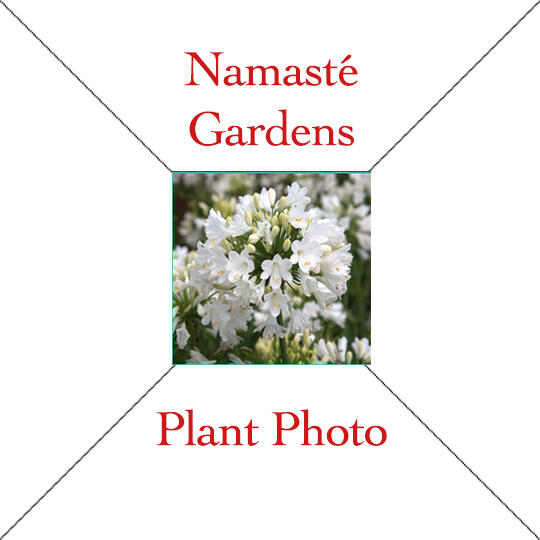
Plant Name
Text
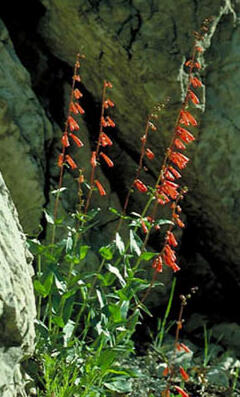
Penstemon eatonii
Firecracker Penstemon
Zones: 4-9
Size: 2-3 ft. tall
Sunlight: Full sun
Soil: Infertile, dry, gravelly
Bloom Time: May-AugustDescription: This showy drought tolerant perennial is native to the mountains of the southwest and is found in Idaho, where it grows in many types of desert, woodland, forest, and open plateau habitat. Tall stalks adorned with brilliant orange-red tubular flowers rise 2 to 3 ft. high above of a mostly basal clump of green foliage. The bright scarlet flowers occur in profusion, with individual plants bearing up to thirty flowering stalks. Their bloom time is long, up to six weeks and they will volunteer freely. Tuck into a xeriscape, rock garden or border planting where the blooms will entice hummingbirds, butterflies and other pollenizers They are not browsed by deer or rabbit.Growing: Firecracker Penstemon need full sun and have excellent cold winter and drought tolerance. They do well on infertile, disturbed soils and will tolerate weakly saline to weakly acidic sites. Though specimen plants can be very showy, massed plantings are most effective. Hummingbirds will stake territories over firecracker patches and risk all to defend their prime nectar source. Too-lush growing conditions can cause the flowering stalks to fall over, and may shorten the life of the plant.
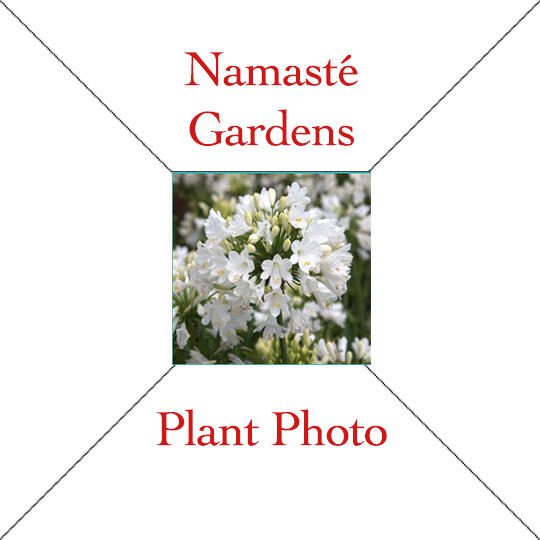
Plant Name
Text
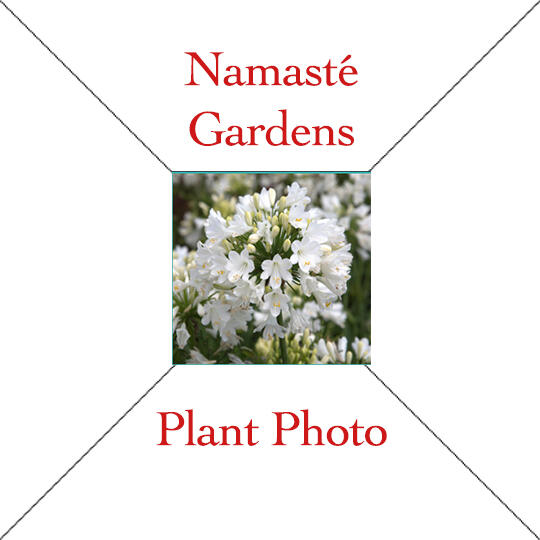
Plant Name
Text
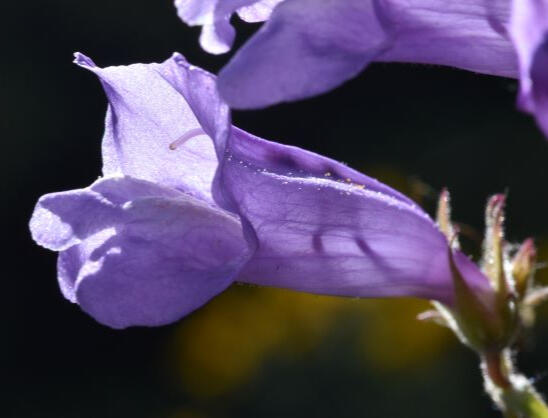
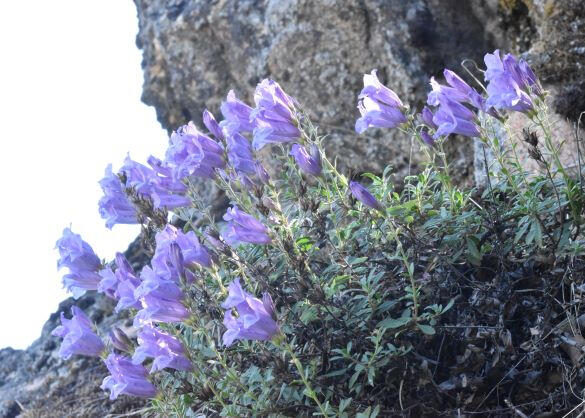
Penstemon fruticosis
Shrubby Penstemon
Zone: 4-7
Size: 6-16” tall
Sunlight: Full sun
Soil: Infertile, dry, gravelly
Bloom Time: May-JuneDescription: Penstemon fruticosus is found on rocky slopes and open forests at low to alpine elevations in the Cascades east to Montana. This evergreen subshrub is a bushy plant, usually much broader than tall, with large, showy, pale lavender, tubular flowers blooming in late spring. The bees, butterflies and hummingbirds seem to find them especially attractive.Growing: Grow in full sun and in well-drained, rocky/sandy soil. No watering is necessary once they are established. Hardy to -20 degrees. Penstemon fruticosus var scouleri 'Albus' is a white flowering form. Penstemon are perfect for a container growing or in a rock garden with good drainage. They are often found growing on rocky cliffs or in gravel pits, so it is a good xeriscape plant.
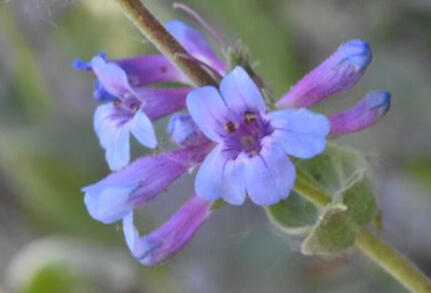
Penstemon pruinosus
Chelan Beardtongue
Zones: 7
Size: 14-12“ tall
Sunlight: full sun
Soil: lean, well-drained
Bloom Time: April - JulyDescription: Washington native mostly found growing on the east slope of the Cascades crest from BC through Washington. It grows in rocky places from the valleys and plains to moderate elevations I found them growing next to Banks Lake. It is a low growing, shrubby penstemon with smaller, ½’ long blue/lavender flowers that the bees and hummingbirds love.
Growing: These Penstemon need full sun and well-drained soil relatively low in organic matter. Mulch only with gravel in order to discourage crown rot. It is not necessary to fertilize Penstemon. They need regular water during the growing season, good air circulation and at least six hours of sun daily.
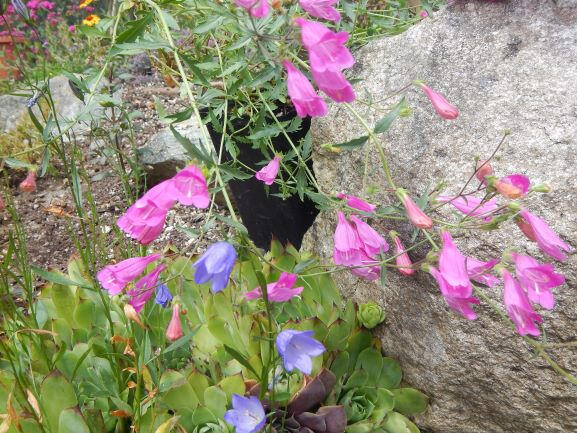
Penstemon richardsonii
Cutleaf Beardtongue
Zones: 5-7
Size: 12-34” tall
Sunlight: Full sun
Soil: Average, dry, gravelly
Bloom Time: Late spring through summerDescription: This native penstemon is found in open rocky areas, and cliffs at lower elevations in Central WA and North Central OR. We took cuttings from one growing in the cliffs along Douglas Creek south of Wenatchee. Pink blooms in cheerful bounty decorate serrated, purple-tinged leaves in late spring and continue blooming all summer. This is the only light pink flowering Penstemon I have encountered. "Cutleaf" refers to the deeply toothed leaves. Open branching and rangy, it maintains a sturdy base of glossy, thick leaves that have a purple cast underneath. The bees, butterflies and hummingbirds seem to find them especially attractive.Growing: It does well in rich, well-drained soil in gardens on both sides of the Cascades. It does best in full sun in our area. It looks good in a rock garden sprawling over rocks or down banks. It reseeds in my garden which is good because the parent plants seem short-lived.
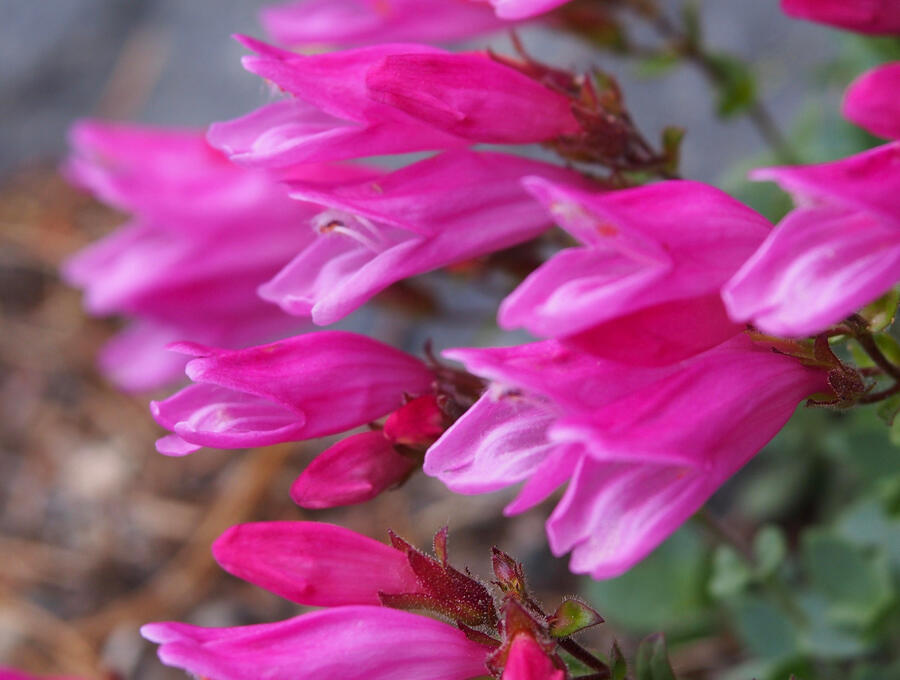
Penstemon rupicola
Cliff Beardtonguee
Zones: 4-9
Size: 1-4” tall
Sunlight: Full sun
Soil: Average, dry, gravelly
Bloom Time: May-AugustDescription: Cliff Beardtongue is native to the west coast of the United States from Washington to the Klamath Mountains of far northern California. It forms mats of evergreen, gray-glaucous leaves growing no more than 4 inches high. I found this penstemon growing on rocky outcroppings near Mt. Rainier Park at ~5000 ft. elevation. The bright fuchsia pink flowers were a beacon inviting every passerby to come look at the beauty precariously perched there above the roadside. The bees, butterflies and hummingbirds seem to find them especially attractive.Growing: It should be grown in full sun in poor, very well-drained soil with low water. It is one of the easier rock garden plants to grow. It is quite happy to settle into a crevice in a rock wall.
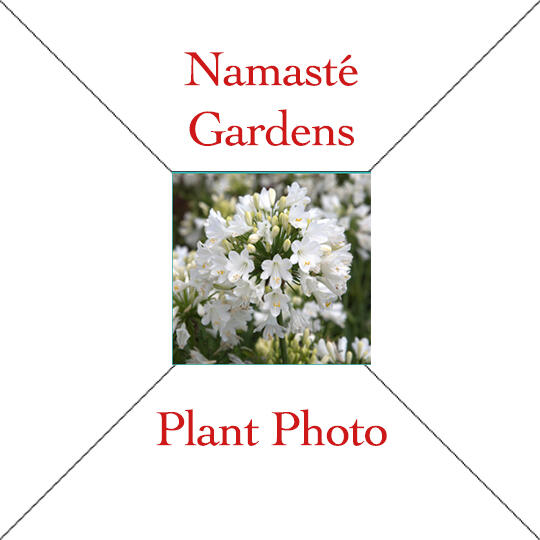
Plant Name
Text
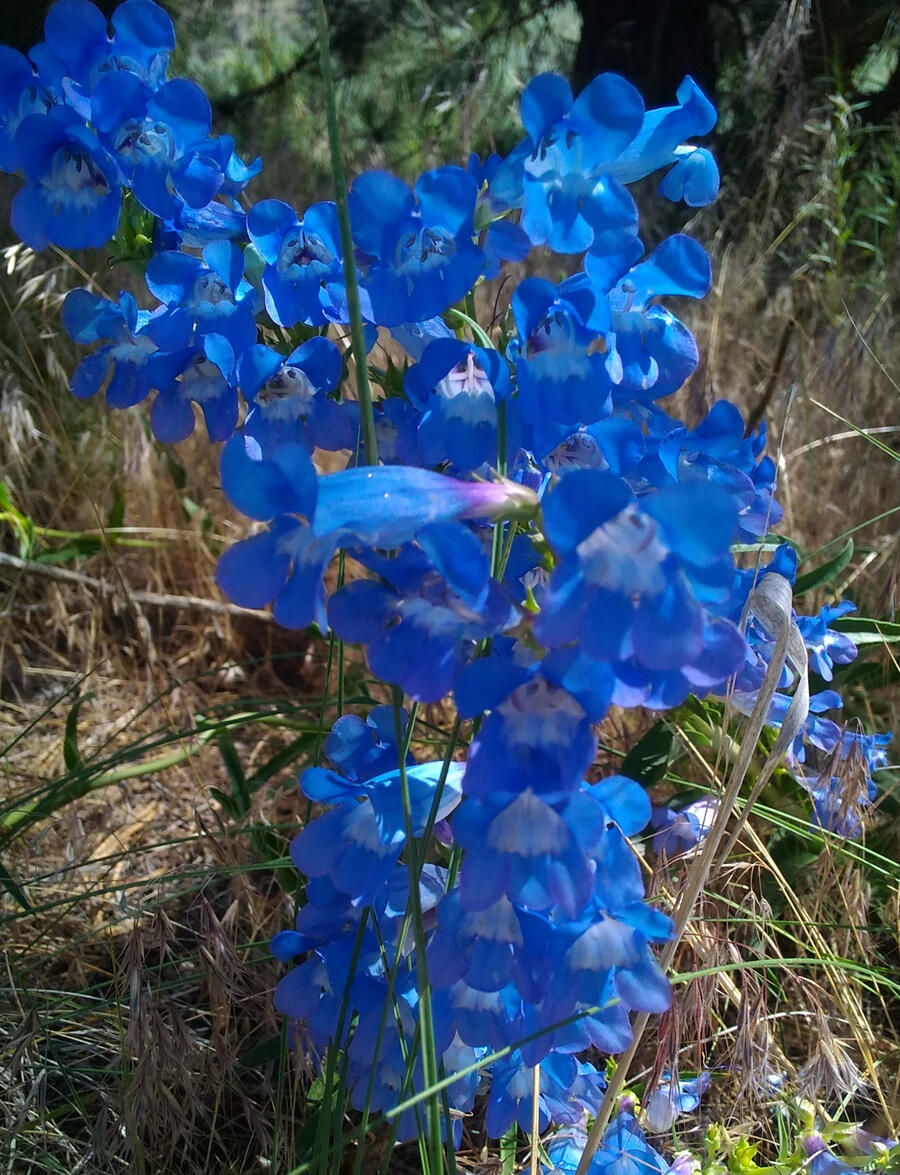
Penstemon speciosus
Showy Penstemon
Zones: 5-10
Size: 1-2 ft. tall
Sunlight: Full sun
Soil: Infertile, dry, gravelly
Bloom Time: May-JulyDescription: Royal or Showy Penstemon is native to the western United States where it can be found in many types of habitat, including on dry rocky slopes and plateaus, in sagebrush and pine. They occur in low elevations to over 10,000 ft. elevation. This penstemon has 1-2" sky blue flowers that catch your eye from a distance. They do not have purple overtones seen in most other native Penstemon. The nectar-rich flowers are indispensable to pollinators like bumblebees and hummingbirds.Growing: Showy Penstemon prefer full sun and "lean" (infertile) fast draining sandy or gravelly soils. Drought tolerant once established; they are commonly used in xeriscaping. Mulching with gravel encourages re-seeding and protects the crowns from sitting wet over the winter.
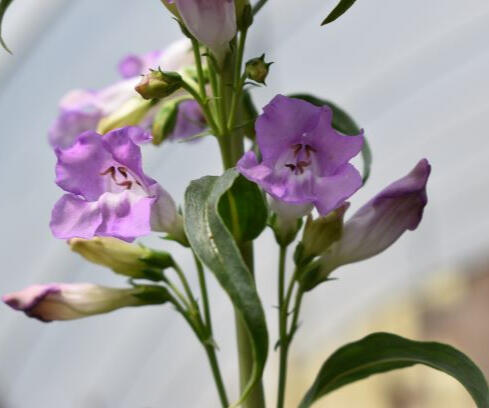
Penstemon strictus
Rocky Mountain Beardtongue
Zones: 4-9
Size: 1-3 ft. tall
Sunlight: Full sun
Soil: Infertile, dry, gravelly
Bloom Time: May-JulyDescription: Native to the western United States, Rocky Mountain beardtongue, with its spikes of royal-blue to purple flowers and low mats of evergreen foliage, is easily grown in our area. Drought resistant/drought tolerant, it grows 1-3 ft. tall. The nectar-rich flowers are indispensable to pollinators like bumblebees and hummingbirds.Growing: Long-lived, this beauty thrives in most any well-drained soil with full sun exposure, though it tolerates heavy soils and moisture better than most members of the genus, Rocky Mountain Penstemon has been identified as a compatible and beneficial companion plant to grow along with several paintbrush species which require a companion plant to serve as host for their semi-parasitic needs.
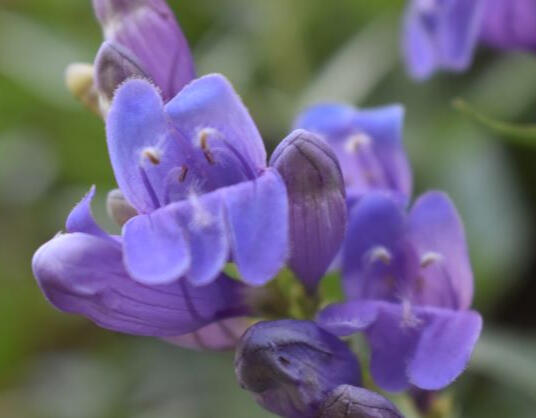
Penstemon venustus
Venus Penstemon
Zones: 4-8
Size: 1-3 ft. tall
Sunlight: full sun
Soil: well-drained, sandy loam
Bloom Time: SummerDescription: Native to the Pacific Northwest, California and east to the Rockies, Venus Penstemon is found on open, rocky slopes, from the foothills to moderate elevations. I found them growing up near Blewett Pass. It is a long-lived subshrub with showy purple flowers 1.5 inches long. Loved by Bees and hummingbirds. They are often used in wildlife enhancement projects.Growing: These Penstemon need full sun and well-drained soil relatively low in organic matter. They do not do well in areas with poor drainage. It is an excellent plant for soil stabilization, low-water use landscaping and ornamental plantings. Drought tolerant once established.
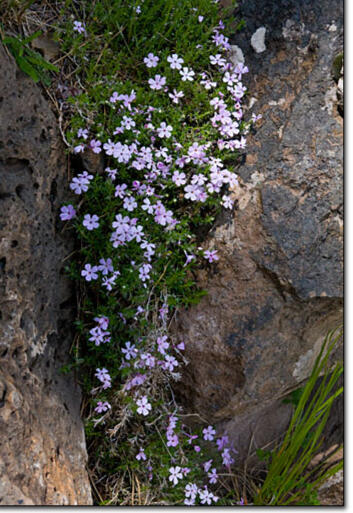
Phlox diffusa
Spreading Phlox
Zones: 4-8
Size: 3-4” tall
Sunlight: Full sun
Soil: Gravelly, well-drained
Bloom Time: May-AugustDescription: Spreading Phlox is native to western North America from British Columbia to the southwestern United States to the Dakotas, where it grows in many types of habitat, including rocky, high elevation mountain slopes. I took cuttings off a plant growing up near Rainy Pass where it was spreading to cover an entire bank on the side of the road. The low mats densely covered by yellow-green, needle-like, leaves become completely covered with showy blossoms of white to lavender to purple to pink.Growing: Phlox thrives in dry to moist, well-drained soil. It does not tolerate clay soils. Grow it in a sunny location. Spreading phlox is a good choice for stabilizing soil so plant it on a stream bank or let it sprawl over a rock or a wall.
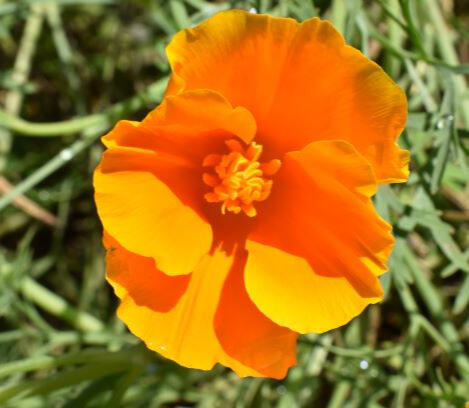
California Poppy
Eschscholzia californica
Zones: 6-10
Size: 12-18” tall
Sunlight: Full sun
Soil: Sandy, well-drained, poor
Bloom Time: April-SeptemberDescription: These short-lived perennial plants in the poppy family have attractive, finely divided and lacy bluish-green leaves. The plants only grow about 12 to 18 inches tall. with finely divided, fern-like, blue-green leaves. Tapered buds open into long-lasting flowers with 4 orange to yellow satiny petals arranged in a cup of 2 to 3 inches in diameter. The flowers close up in rainy or cloudy weather and at night. It is native to grassy and open areas from sea level to 6,500 feet altitude in the western United States. Flowering is from April to September. It is perennial in mild parts of its native range, and annual in colder climates. Loved by pollinators such as birds, butterflies and bees, it is drought-tolerant, self-seeding, and easy to grow in gardens.Growing: It grows best in full sun and sandy, well-drained, poor soil. Like most poppies they freely reseed so they work great for large naturalized plantings .
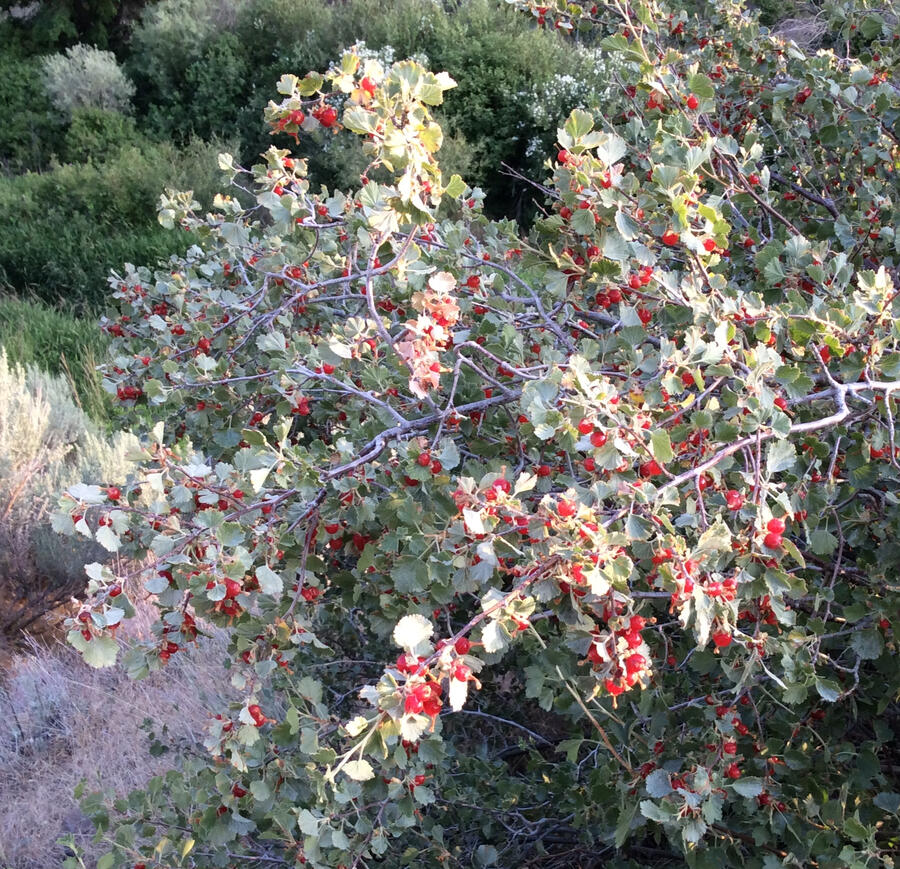
Ribes cereum
Squaw Currant
Zones: 5-10
Size: 3-5 ft. tall
Sunlight: Sun
Soil: Dry to moist, well-drained
Bloom Time: SpringDescription: Squaw Currant, also known as Wax Currant, is native to much of the Western US including Washington. Its habitats are dry woods and rocky slopes, sagebrush, canyons and woodland thickets from 300-13,000 ft. This compact, mounded, thornless shrub grows 3-5 ft. tall and equally as wide. It is long lived, drought tolerant & ornamental with clusters of light-pink, bell-shaped flowers giving way to an abundance of red berries in summer & fall. Its tidy, light-green foliage is aromatic, with a "spicy" scent and turns yellow in the fall. The berries are favorites among birds.Growing: Squaw Currant grows best in full sun (shade intolerant) in dry to moist well-drained soil. It can grow in many types of soils, including sandy and clay soils. A good low-care choice for almost any situation but it is especially useful for “wilder” areas, hillsides & habitat gardens. Birds really love the conspicuous berries which are edible but not tasty to us though they can be used in pies and preserves. It provides cover for a variety of wildlife

Salvia dorrii
Purple Sage
Zones: 5-9
Size: 1-2 ft. tall
Sunlight: Full sun
Soil: Fertile, well-drained
Bloom Time: Spring - summerDescription: Desert Purple Sage is a native found throughout the western United States. It is a showy shrublet with highly aromatic, silver foliage. It is a late spring bloomer with blue flowers pushing out from purple bracts. Purple sage is an attractive, low maintenance, shrub that will maintain its rounded shape without pruning. Impervious to browsing deer and rabbits, it is a pollinator's delight attracting all types of bees, butterflies and moths. Drought resistant plant.Growing: Purple Sage grows on the Eastside in sagebrush communities. It does not do well in wet areas. I have mine growing on a steep slope where it seems to be happy.
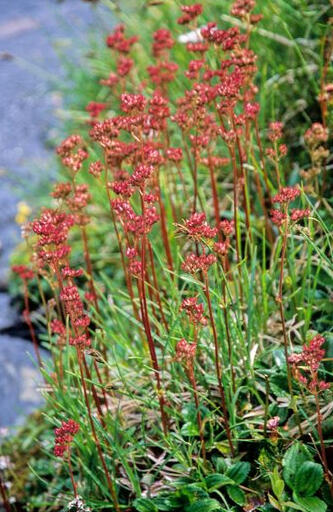
Leptarrhena pyrolifolia
Leatherleaf Saxifrage
Zones: Native
Size: 8-16” tall
Sunlight: Sun
Soil: Moist
Bloom Time: June-SeptemberDescription: Native to stream banks, wet meadows and subalpine slopes from Alaska south to Oregon and W Montana. I’ve encountered it growing on many hikes through meadows in the Cascades. Leatherleaf is a prostrate and creeping evergreen perennial with attractive deep glossy green leaves. The reddish stems growing from a basal rosette of leathery elliptic leaves are topped with clusters of white flowers. As the ovaries mature they swell and turn bright red, as does the entire stem. It is at this time that leatherleaf saxifrage is at its most beautiful and most obvious in the wild. Deer resistant.Growing: This choice and rarely grown groundcover makes an excellent addition to the rock garden. The species is quite hardy but requires moisture. First Nations people of the Fraser-Thompson River area used leatherleaf saxifrage to treat sores and wounds. They gathered and chewed the leaves and placed them on the injuries.
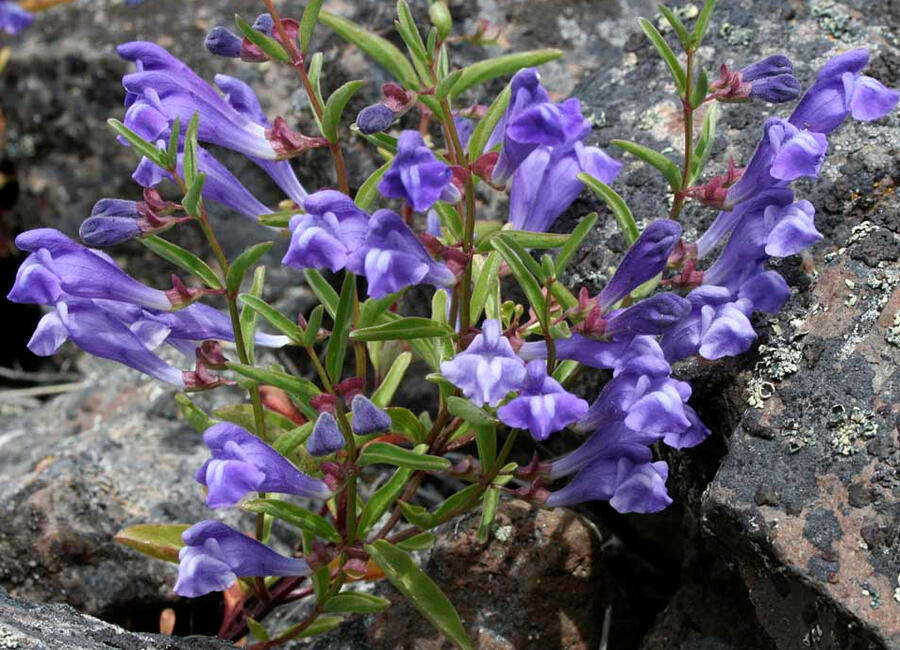
Scutellaria angustifolia
Narrowleaf Skullcap
Zones: 5-?
Size: 4-12” tall
Sunlight: Sun
Soil: Gravelly, well-drained
Bloom Time: Late spring-early summerDescription: Scutellaria angustifolia is native east of the Cascades from southern British Columbia south through Washington and Oregon to California. I took cuttings of some growing at Palouse Falls. Narrow-leaf skullcap is an attractive perennial growing 4-12 inches tall from rhizomes. The corolla is a deep blue-violet. It may be found on rocky, graveled or talus slopes with dry exposures. They get their name from a small appendage or flap atop the calyx.Growing: Narrow-leaf skullcap may be planted in the home rock garden, but it should be given room, or contained somehow as the rhizomes have a tendency to travel, competing with other plants in the garden. The flowers and stems have a noticeable, sharp, minty scent. Drought tolerant, it’s an excellent choice for growing at the front of a dry, sunny border, where its blooms are a magnet for bees and butterflies.
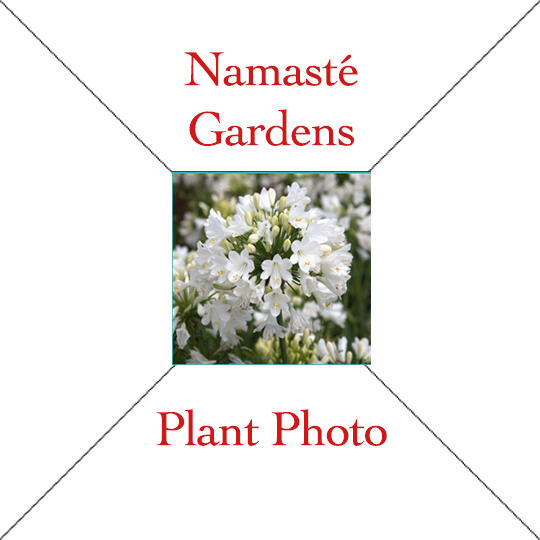
Plant name
Text
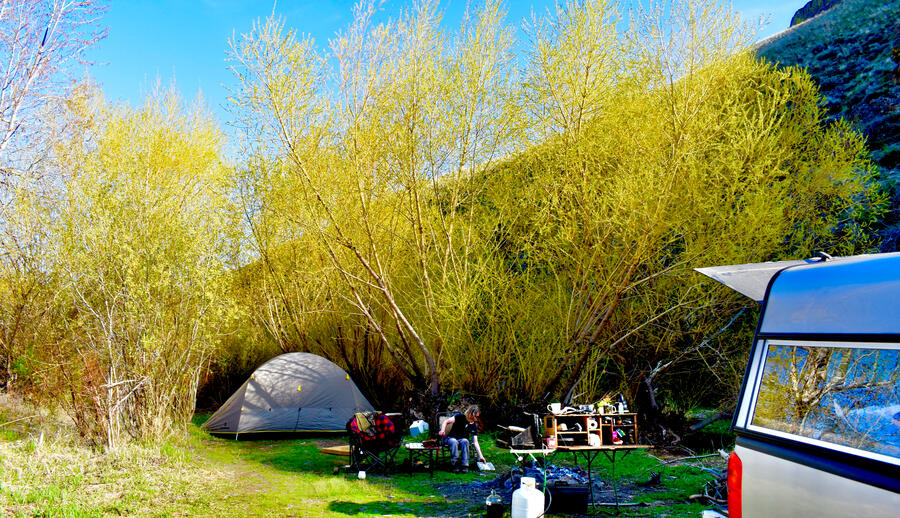
Salix exiqua
Coyote Willow
Zones: 4-6
Size: 13-20 ft. tall
Sunlight: Sun
Soil: Moist, well-drainedDescription: This willow is native to most of North America except in the warmer Southeast or cold Arctic regions. It is a deciduous shrub with separate male and female plants. These are cuttings from male trees which seemed more colorful to me than the females growing nearby.Uses: Native Americans use this willow for basket weaving, dyes, willow-frame houses, thatching roofs, fencing, and the list goes on. Medicinally, extracts of willow bark are used for pain relief and the over-all treatment of many diseases, including hay fever, diarrhea, and relief of ovarian pain. Other uses include bank and sediment stabilization, maintenance of channel morphology, water quality improvement, ground-water recharge, flood abatement and fish and wildlife habitat,Growing: Like most willows it is moisture-loving and not drought tolerant. A good choice for banks or streams and for use in hedges or screens. The yellow color makes it stand out as a focal point in solitary plantings. It is one of the smaller members of the Willow family, which makes it suitable for small gardens and tight spaces such the edge of a pond. However, its tendency to spread by basal shoots should be considered as it will eventually spread to occupy any wet soil that it can reach.
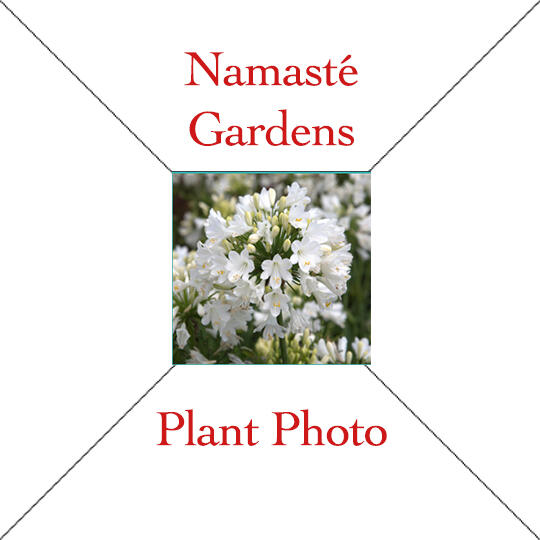
Plant name
Text
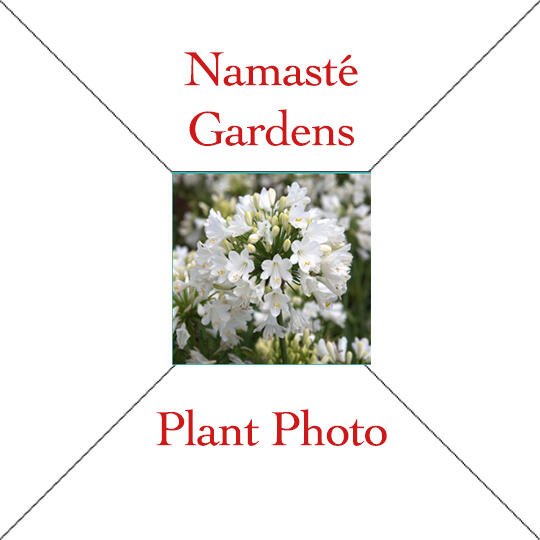
Plant name
Text
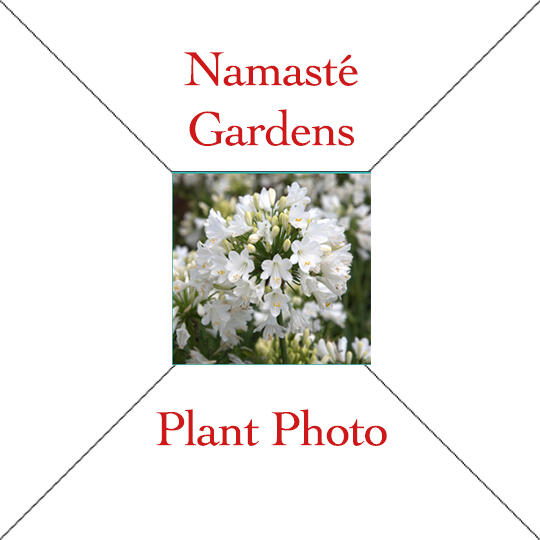
Plant name
Text
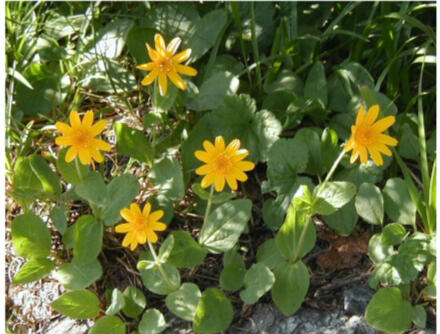
Arnica latifolia
Broadleaf Arnica
Zones: Native
Size: 4-24” tall
Sunlight: Sun – part shade
Soil: Variable, moist
Bloom Time: June - AugustDescription: This Arnica is native to western North America from Alaska to New Mexico. It can be found growing in mountain forests and open meadows. I collected seed from some growing in the forest hike up to Excelsior (Damfino route). This is a rhizomatous perennial with yellow daisy-like flowers. It is highly attractive to many native pollinators.Growing: Arnica prefers sandy, loamy soil and does not do well in clay. It grows well in raised beds in the garden setting or in a moist, sunny wild garden. It prefers full sun to part shade. Broadleaf arnica is used medicinally. It is used topically for the treatment of a variety of ailments, from sore muscles and sprains to insect bites, minor wounds and burns.
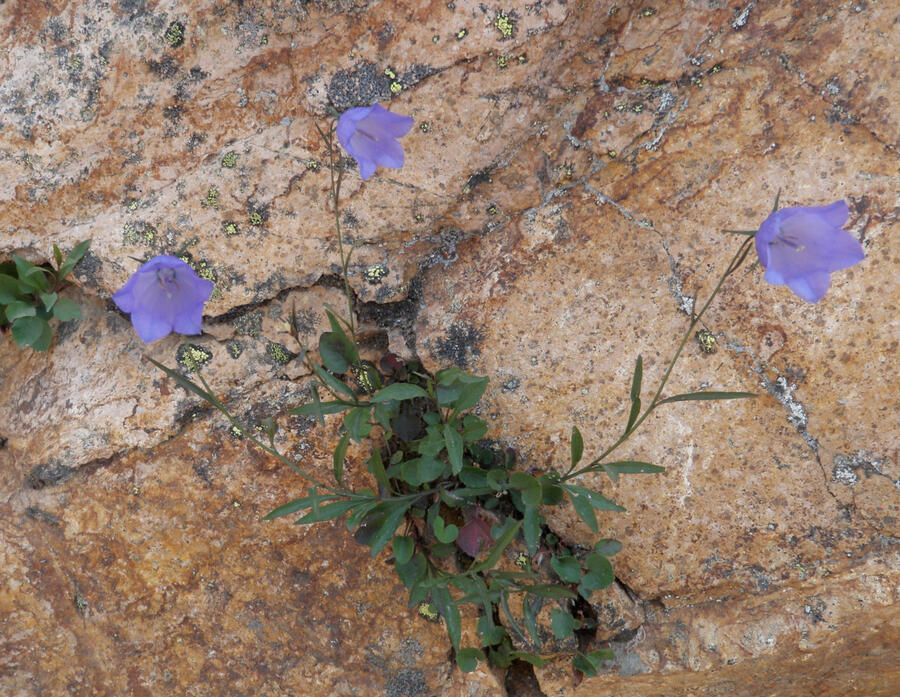
Campanula rotundifolia
Bluebell
Zones: 3-7
Size: 12 inches tall
Sunlight: Sun to shade
Soil: Sandy, well-drained
Bloom Time: Late spring to fallDescription: Harebell, often called “bluebell”, is a flower found around the world in the Northern Hemisphere but most often, associated with Scotland. These natives were started from seed collected at Hart’s Pass. Harebell has many common names including bellflower, lady's thimble, witch's thimble, heathbells, fairies’ thimbles, and dead men’s bells. The common name of harebell alludes to the folk beliefs that it either grew in places frequented by hares or that witches used juices squeezed from this flower to transform themselves into hares. The Haida Indians of the Pacific Northwest called them "blue rain flowers" and it was thought that picking them would cause it to rain. Harebell flowers in the summer and fall. The narrow, wiry stem averages about a foot tall, while the thin, papery flowers are usually about an inch long. The plants are much hardier than they look. Flowers visited by bees and hummingbirds.Growing: It grows in a variety of habitats ranging from full sun to shade; dry to moderate moisture; woods, meadows, cliffs, and beaches; in sandy, gravely soil. It can be found at elevations up to 12,000 feet in the Western United States. Harebell was formerly used in the manufacture of blue dye for tartans and is the symbol of the MacDonald clan In Europe the leaves are sometimes eaten raw in salad and the plant is thought to have minor medicinal qualities.
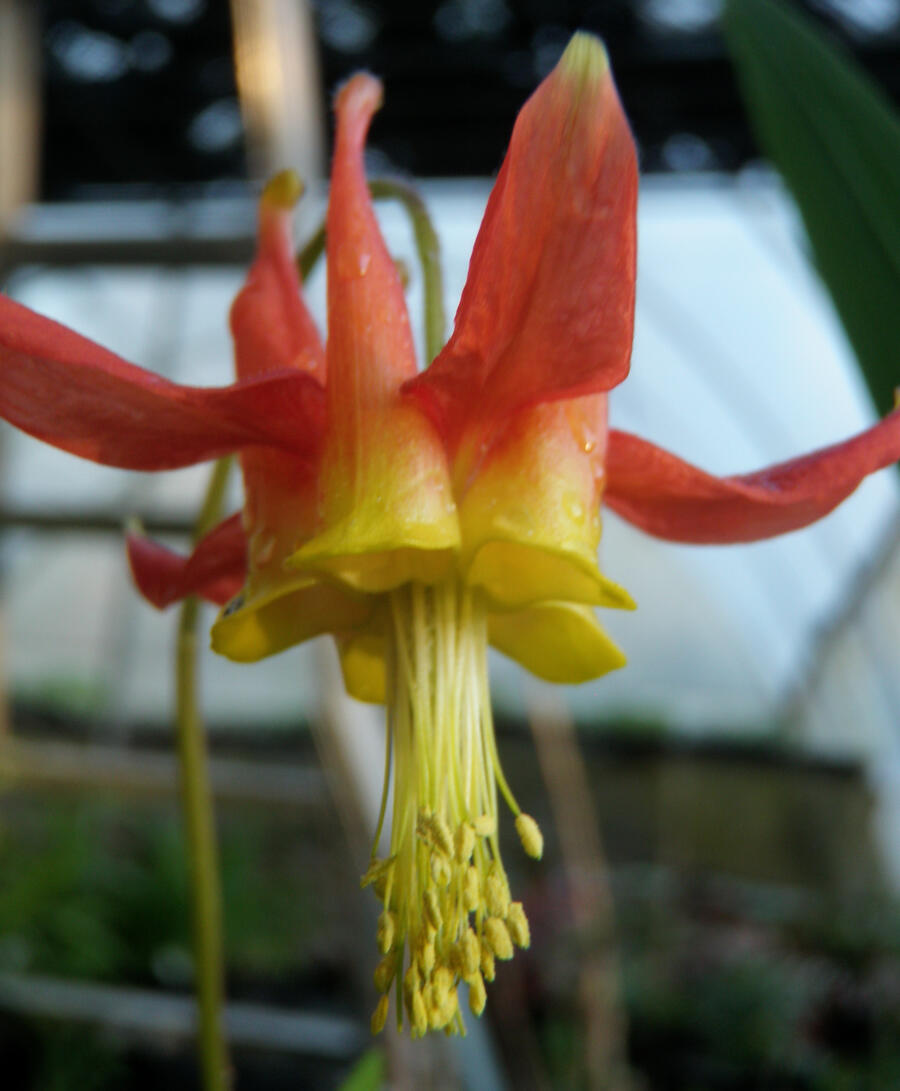
Aqulegia formosa
Western Columbine
Zones: 3-9
Size: 2-3 ft. tall
Sunlight: Full sun to part shade
Soil: Chalk, clay, loam, sand
Bloom Time: Late spring to early summerDescription: The flower is bright orange and yellow with the columbine’s characteristic bilateral symmetry with folded back sepals and curled inner petals. The foliage is airy and blue-green with the pendant, spurred flowers rising above. The western columbine is native from Baja, California up through northern Alaska. It can be found in alpine meadows, along hiking trails, beside creeks and near the ocean. It is attractive to hummingbirds, bees, and butterflies. and is deer resistantGrowing: Columbine is easy to grow, just water and prune flower stalks to the ground once a year in early spring. The western columbine likes sunny areas but grows quite well in part shade as well. It likes to keep its feet damp, so plant it in a moist area such as a stream bank. Western columbine is a short-lived perennial but reseeds and so you will continue to have columbine in the spot where you planted it. Columbines often cross-pollinate, so if you want to keep your species pure, be sure to plant it away from other columbines.
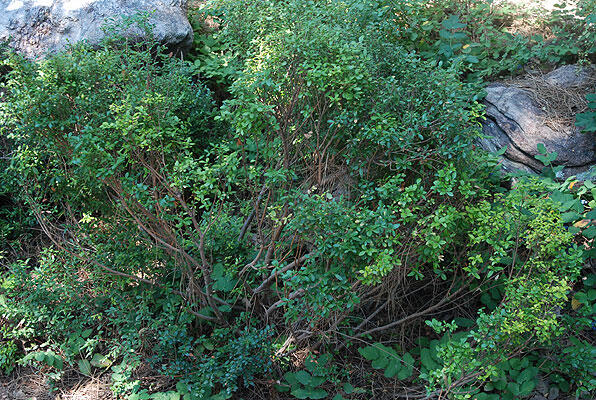
Paxistima myrsinites
Oregon Boxwood
Zone: 5
Size: 1-3 ft.
Sunlight: Sun to shade
Soil: Light, slightly acid, well-drained
Bloom Time: April-JuneDescription: Oregon Boxwood is an evergreen shrub found from British Columbia to California and in the Rockies from Alberta to New Mexico. It is a relatively compact shrub when grown in the sun; lower and spreading in the shade. Its small maroon flowers are fragrant. It is an important forage plant for deer, elk and moose.Growing: Oregon Boxwood, like its namesake, can be used as a low-growing hedge or as a border plant. It is great as a ground cover in the woodland garden. It prefers a well-drained soil; and will not perform well in clay or with too much water.
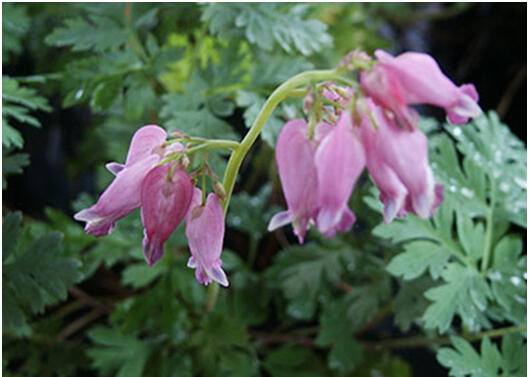
Dicentra formosa
Pacific Bleeding Heart
Zones: 4-8
Size: 6-18” tall
Sunlight: Sun to shade
Soil: Moist, well drained
Bloom Time: Spring to early summerDescription: Pacific Bleeding Heart is generally found in moist wooded areas from California to British Columbia. The harbingers of spring in the Pacific Northwest, these sweet pendant hearts bring a smile to any face. They have lush blue-green foliage with clusters of dark pink flowers hanging just above the foliage. These are a must have for the native woodland garden. They attract hummingbirds and are deer resistant.Growing: Dicentra will grow in most places in your garden and don’t require too much care after planting. They prefer moist, well-drained soil and shade to full sun. Even though they are native, they are aggressive growers and can take over your flower bed, so plant them on the edge of your woods or in a place where you would like a carpet of bleeding hearts in the spring. Plant them near rocks or driftwood for it to climb over. It is an unusual specimen plant for the rock garden
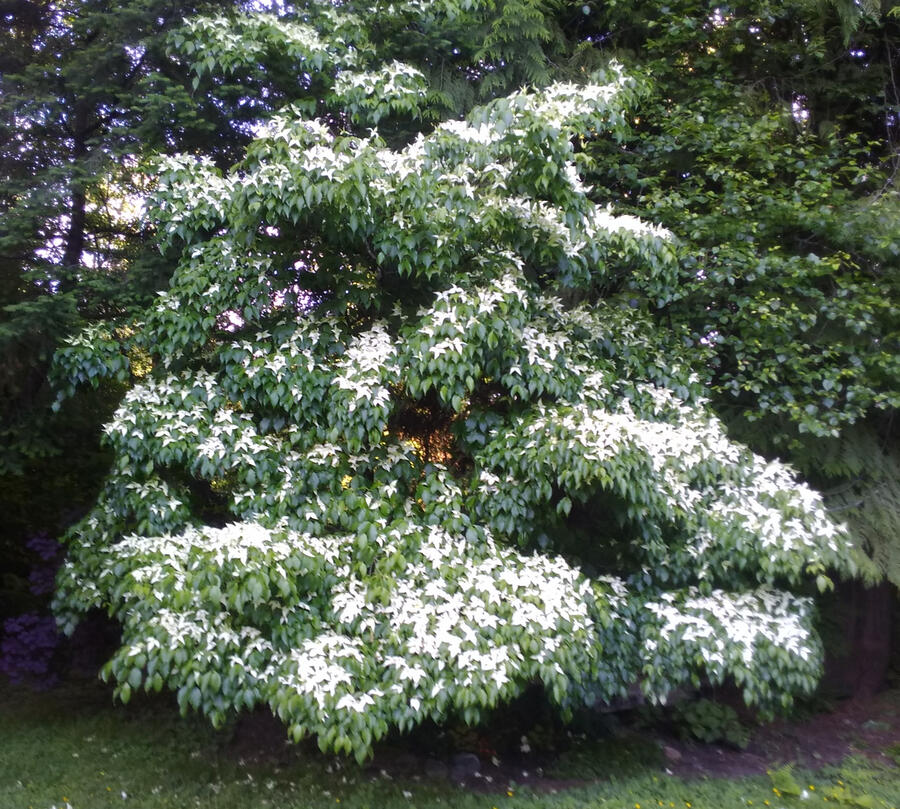
Pacific Dogwood
Cornus nuttallii
Zones: 6-8
Size: 12-36 ft. tall
Sunlight: Part sun to part shade
Soil: Well-drained, humus rich
Bloom Time: April-JuneDescription: There is something magical about the Pacific Dogwood regardless of what time of year it is. It is one of our most handsome native trees here in the Pacific Northwest This deciduous tree will reach at least 20’. It often forms more than 1 stem as the tree develops. It bears 3”-5” elliptical leaves which are deep green in color and slightly shiny. Blooms first appear in April and extend into early June. Each flower consists of a greenish center surrounded by six creamy white, petal-like, 2” long bracts. Flowers morph into bright red fruit known as drupes, which emerge in fall. Local song birds greatly enjoy feeding on the berries.Growing: Pacific dogwood is long-lived and easy to grow. It prefers soil that is moist, deep, well-drained and high in organic matter. It grows best along forest edges with its roots protected from late afternoon sun.
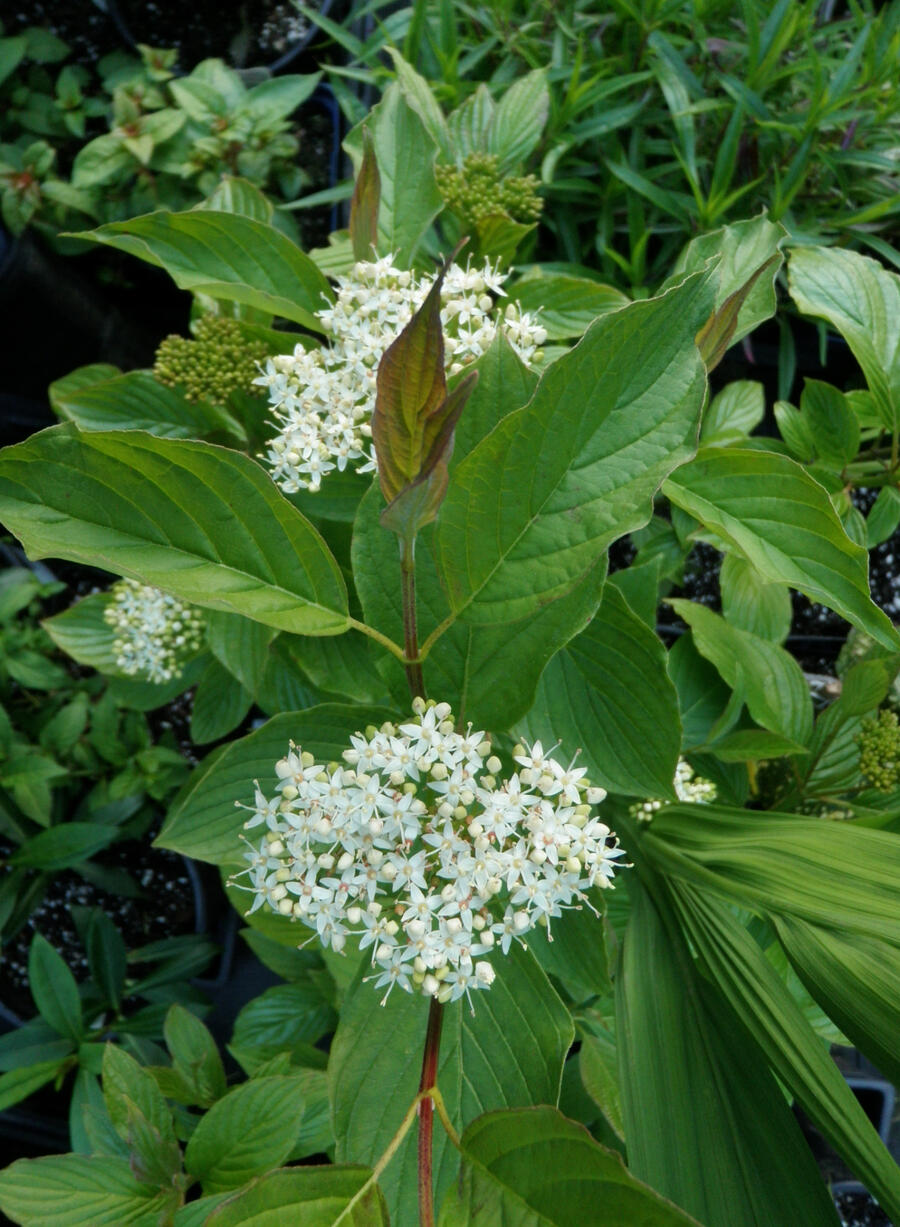
Cornus stolonifera
Red Twig Dogwood
Zones: 5-10
Size: 6-12 ft. tall
Sunlight: Full sun to part shade
Soil: Well-drained, acidic
Bloom Time: SpringDescription: Sometimes called Red Osier because of its distinctive and attractive deep red branches. This Pacific Northwest native is a beautiful, upright shrub that displays white blossoms in May giving way to bright white berries in the fall. Its flowers are extremely tiny and you have to look close to see they're just like the four-petaled flowers of larger dogwoods. It is very handsome and eye appealing in a winter setting especially with a sprinkling of snow to set off the red stem color. It typically grows six feet or so, but twice that height is not unusual.Growing: Red Twig has moderate water requirements and though preferring acidic soil has a tolerance to salt and alkali soils as well. It is highly cold-tolerant and disease resistant. Plant in full sun to part shade. Pruning is not necessary for health, but only to increase youthful limbs with brightest winter color. When pruning, the thick older inner twigs are the ones that should be cut nearly to the ground. Also, prune the outermost suckers below the soil line if you want to maintain a compact form and encourage branching more from the middle. An excellent plant for massing in large areas and because of its interesting stem color it makes it suitable for shrub border. It can be an effective bank cover for it holds soil quite well. It can be used in basket weaving because it is both pliable and colorful.
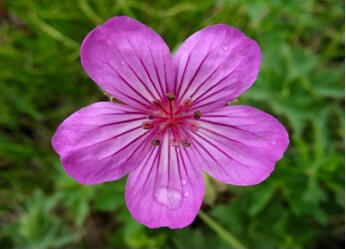
Geranium viscosissimum
Sticky Geranium
Zones: 2 - 9
Size: 1 - 3 ft. tall
Sunlight: Full sun to partial shade
Soil: Clay, loam, sand, moist but well-drained
Bloom Time: May - AugustDescription: Sticky Geranium is native to much of Western North America growing in forests, meadows and hillside scrub. It forms nice mounds with showy pink-lavender to purple flowers which appear in late spring and continue to bloom throughout the summer. The foliage turns red in the fall extending its season of interest. These are protocarnivorous plants that can absorb proteins from insects trapped on their sticky leaves. Attract bees, butterflies and birds.Growing: Sticky geraniums are easy to grow, pest and disease free and little maintenance needed. They grow best in moist to semiwet soils with good drainage but they are drought tolerant. They prefer loam, sandy loam, and clayey loam soils but will grow on gravelly soils as well. It is a popular ground cover or accent plant often used in border fronts, cottage gardens or wild gardens The flowers are edible and can be added to salads or used as a garnish. Native Americans used the roots and leaves to make poultices, washes, teas, and tinctures to treat irritated eyes, head colds, and skin conditions. It was also used as a clotting agent and food preservative.
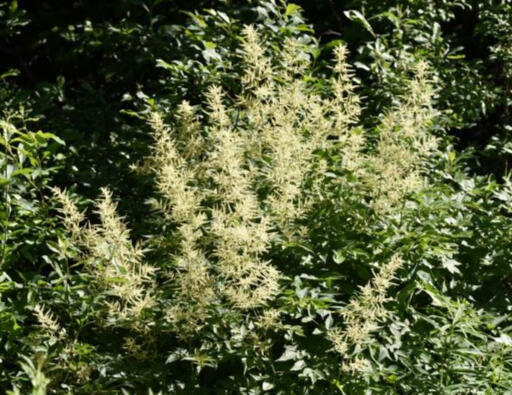
Aruncus dioecus
Goat’s Beard
Zone: 3-8
Size: 3-6 ft. tall
Sunlight: Sun to partial shade
Soil: Well drained; moisture retentive
Bloom Time: Late spring – early summerDescription: Goat’s Beard is a native perennial with feathery plumes of cream colored flowers appearing in late spring or early summer. The arching plumes are densely covered with many small florets resembling a large, airy Astilbe. They are dioecious (separate male and female plants). Astilbe make good cut flowers and attract birds and butterflies. Rabbit Resistant.Growing: Aruncus grows best in moist, rich soil in partial shade, although it will do fine in full sun if given consistent moisture. It makes a bold accent plant or as a large, almost shrub-like background plant in a perennial border. It is often used to soften the transition at the edge of landscaped areas to woodlands. Use in small groups at the edge of a woodland path. Native Americans used the different parts of the plant medicinally.
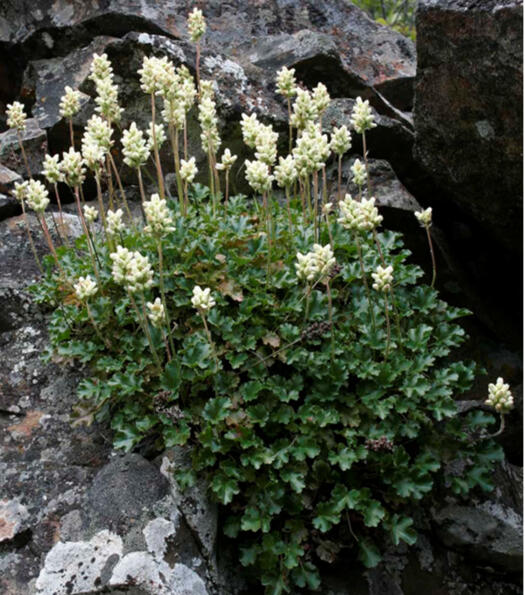
Heuchera cylindrica
Native to rocky woods, cliffs, ledges, slopes and subalpine meadows in northwestern North America from British Columbia and Alberta south to Northern California, Northern Nevada and Colorado. It is a mounding perennial that features ovate to broadly heart-shaped, leathery, usually hairy, maple-like, dark green leaves (to 3" wide) with toothed and scalloped margins. Leaves typically form a compact basal mound to 6” tall and to 12” wide. Small, cup-shaped, cream to yellowish green flowers, densely packed in spike-like panicles to 6" long, bloom from late spring to summer atop tall, slender, leafless flowering stems rising well above the foliage mound to 20-30” tall. Full sun to part shade. Foliage has good accent value. Mass as a ground cover or plant in groups. in rock gardens, borders and open woodland gardens. Attracts Hummingbirds. The roots have been used by various native Americans for diarrhea and stomach cramps. A decoction of roots is used as an astringent. A poultice of the roots is used for sores and cuts. Also good for sore throats. Zone: 3 to 8
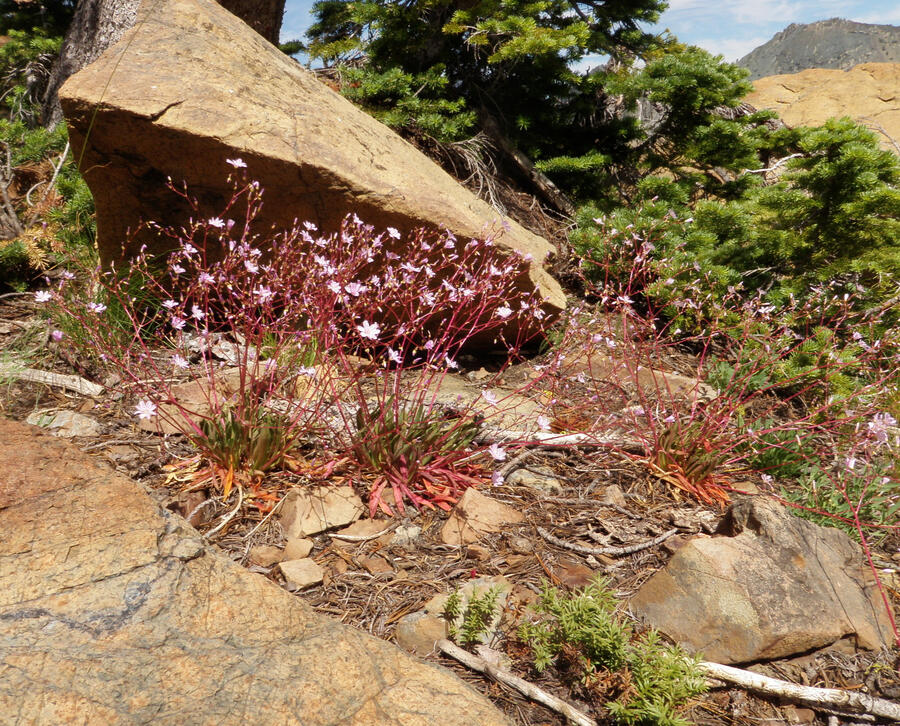
Lewisia columbiana
Columbian Lewisia
Zones: 4-8
Size: 4-15” tall
Sunlight: Full sun–part shade
Soil: Well-drained
Bloom Time: May-JuneDescription: Lewisia columbiana is native to the western United States and British Columbia where it grows in rocky mountain habitat. It produces a basal rosette of many thick, fleshy, evergreen leaves with smooth edges. The flowers arise on wiry stems 4 - 15 inches tall, each stem bearing an array of flowers. They wave in a breeze beckoning from far away as you hike through the landscape where they grow. The petals are white to pale pink, usually with sharp dark pink veining. We came across these little beauties while backpacking near Stewart Mountain and again up at Hart’s Pass. They were growing on partly shaded alpine rock ledges.Growing: Lewisia can grow in full sun to part sun and prefers well-drained soil that is gravelly, sandy or loamy. It can grow in nutritionally poor soil. It does not like our wet winters so do not try and grow it where water might collect on a rainy day. Provide sufficient ventilation or cover to protect it from the rain. I have mine growing at the edge of a partly sunny garden where it is not competing for space with other plants and it is doing well there. It might be worthwhile trying this species in a crevice of a stone wall.

Plant Name
Text
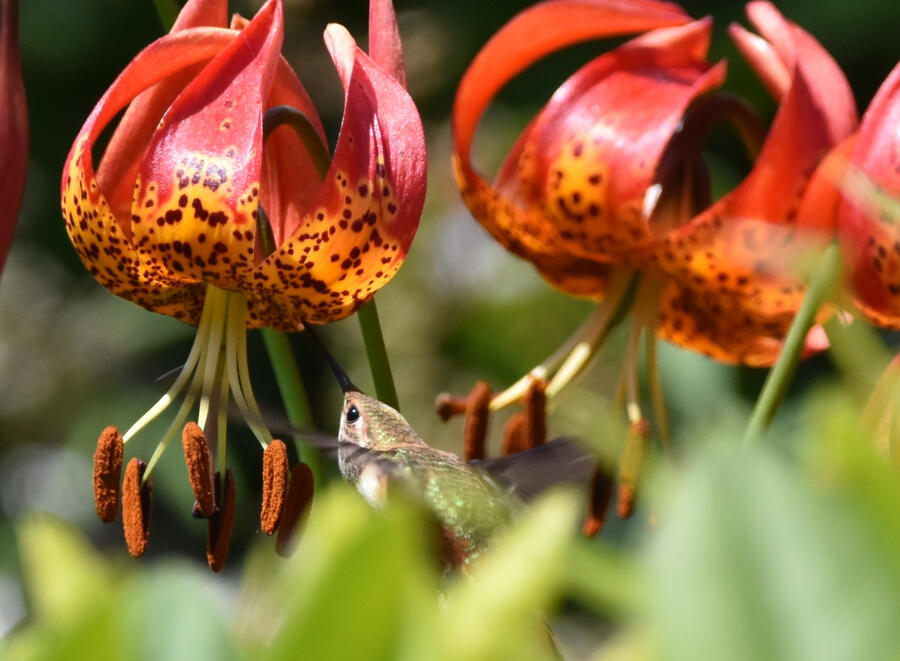
Lilium pardalinum
Leopard Lily
Zones: 3-9
Size: 4-8 feet tall
Sunlight: Part sun-dappled shade
Soil: Well-drained, gritty, organic rich
Bloom Time: JulyDescription: L. pardalinum is a species lily native to Oregon and California found in moist meadows and along streams up to 6500 ft. Its bright orange red flowers nod downward from long pedicels and can reach 3 in diameter. The petals are recurved and covered with maroon center spots. Hummingbirds love them.Growing: Leopard lilies need loose, deep, well-drained soil with plenty of organic material; prefer coolness or shade at roots and sun at tops. They need moisture year round so never allow them to completely dry out.
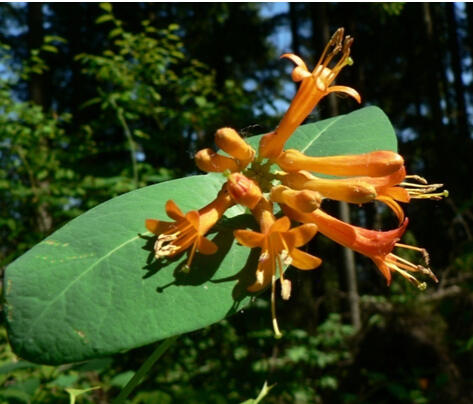
Lonicera ciliosa
Orange Honeysuckle
Zones: 4-8
Size: 10-19 feet high
Sunlight: Sun to shade
Soil: Sand to loam
Bloom Time: May-JulyDescription: This honeysuckle is one of our most showy native vines. It is a lovely, carefree deciduous plant that grows as a trailing to climbing shrub. It is found from the very north of California to British Columbia and east to Montana in forests and thickets, from sea level to 5500 ft. Hummingbirds love the clusters of brilliant orange tubular flowers which appear in late spring. It is also important for native pollinators. It has many small orange-red berries in the fall. They are edible but not tasty enough to be widely sought by us humans, though the local birds like them.Growing: This honeysuckle can grow in semi-shade (light woodland) or no shade. It grows in rocky, dry to moist soils.Uses: Medicinal uses include: contraceptive and tonic; treatment for problems in the womb; treatment of colds and tuberculosis; a poultice of the chewed leaves has been applied to bruises; treatment of epilepsy; as a hair shampoo and tonic to make it grow; A fiber obtained from the stem is used in making mats, bags, blankets etc. The stems were used as building materials by the North American Indians.
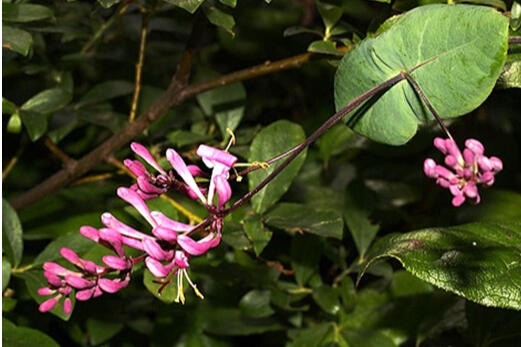
Lonicera hispidula
Pink Honeysuckle
Zones: 6-10
Size: 3-20 feet high
Sunlight: Sun to shade
Soil: Dry-moist, woodland
Bloom Time: May-JuneDescription: A climbing deciduous to semi-evergreen vine/shrub with large pink flowers, Lonicera hispidula is native from Washington throughout much of California. It actually grows as a loose shrub unless its branches come in contact with a fence or tree it can twine onto, then the branches will climb up and out while the center of the plant remains a somewhat stout shrub. Small pink flower clusters decorate the tips of the branches and are attractive to bees and hummingbirds. The high point is the drooping clusters of red luminous berries in late summer which are beautiful to behold and provide a feast for birds. The berries are also edible to humans, but tend to be bitter. It seems to be deer proof.Growing: Pink honeysuckle is often found climbing over shrubs on the edge of woodlands where its roots are shaded and its foliage is in the sun. It can handle full sun to shade and does well in clay soil. Very easy to grow it is a great landscaping choice. Use it as a bank filler or groundcover or it looks wonderful twining through a supporting shrub. It is a good candidate for drought-tolerant wildlife gardens.
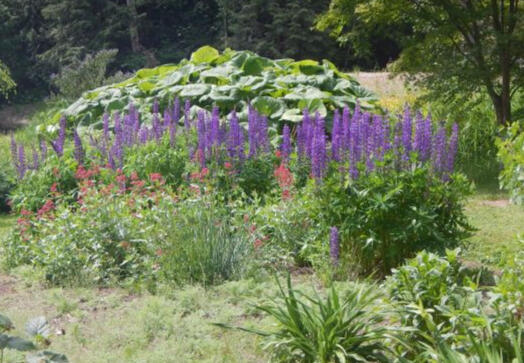
Lupinus polyphyllus
Purple Lupine
Zones: 5-9
Size: 1.5-4 ft. tall
Sunlight: Full sun to part shade
Soil: Well-drained, average
Bloom Time: May-JulyDescription: Bigleaf Lupine is native from Northern California to British Columbia and east to Montana and Nevada. They are large, spreading plants 1.5-4 ft. tall with long, dense spikes of flowers in shades of blue and purple. These glorious perennials suggest Victorian perennial borders and romantic cottage-garden plantings They attract hummingbirds, butterflies, native bees, bumble bees, and other beneficial insects with their nectar and pollen-rich flowers that bloom from mid-spring into mid-summer.Growing: Bigleaf Lupine needs good drainage but is not fussy about soil. It can grow in seasonally wet soils, but will tolerate seasonal dryness. It grows well in sun to part shade. This is a versatile plant that will grow almost anywhere and likes the coolness of the Pacific Northwest summers. They may need protection from aphids
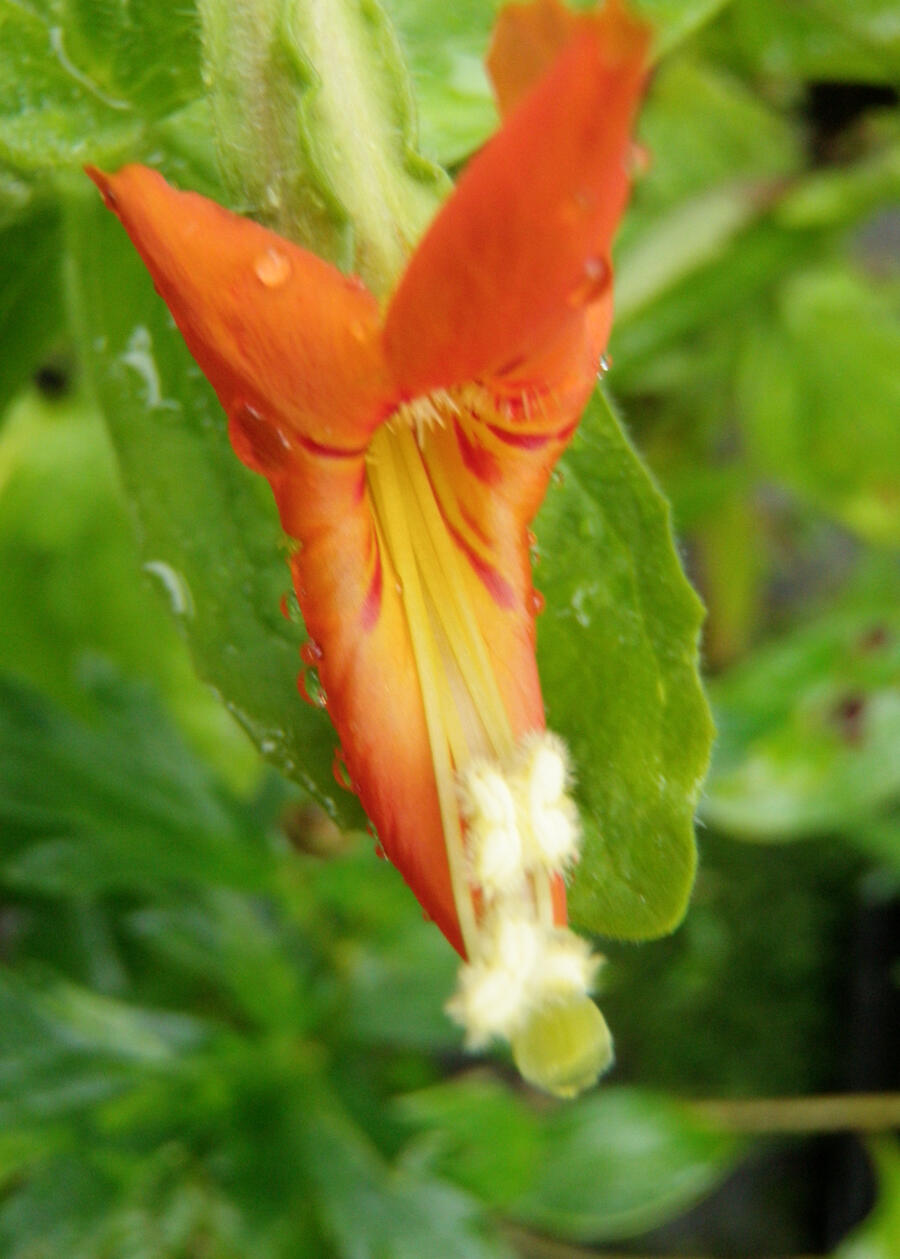
Mimulus cardinalis
Scarlet Monkey Flower
Zones: 6-10
Size: 3 ft. tall
Sunlight: Part sun-full shade
Soil: Light, sandy, well-drained
Bloom Time: June-OctoberDescription: This strikingly bright colored monkey flower is native to the West Coast and Southwestern United States. It is generally found at low elevation in moist areas. It inhabits shady, wet places from stream sides to seepages. The plant spreads by rhizomes and in wet areas where it thrives and forms good size colonies. Grown in a drier position, it does not spread as much. Bees pollinate most Mimulus, but for M. cardinalis pollination is the task of the hummingbird. This hummingbird magnet is quite noticeable while in bloom with its bright scarlet color. It is also deer tolerant. A perennial to 3' tall it has 2" red tubular flowers most of the year.Growing: Mimulus cardinalis can take full sun but seems to do better with part shade. It will grow in sand, clay, serpentine soils, areas with no drainage and can handle seasonal flooding. An aggressive spreader it should be used in large gardens or allowed to naturalize in a less cultivated area. It is an excellent edging plant for banks of streams or ponds.
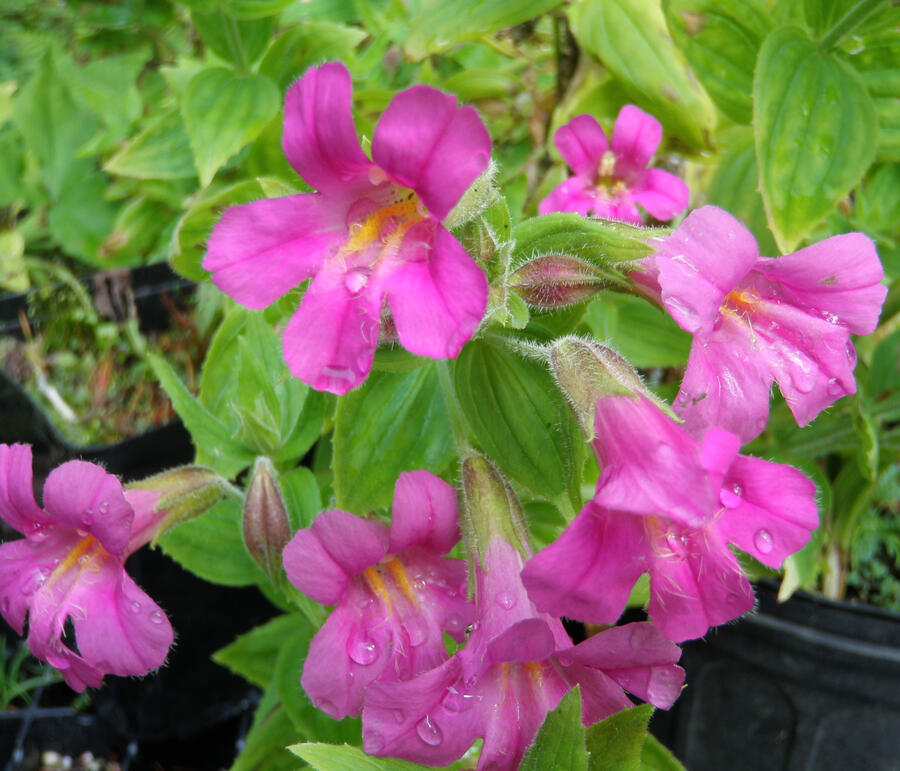
Mimulus lewisii
Pink Monkey Flower
Zones: 4-8
Size: 1-3 ft. tall
Sunlight: Full sun-part shade
Soil: Any wet soil
Bloom Time: July-AugustDescription: We proudly claim this brightly colored monkey flower as a native to our area as well as the rest of western North America from Alaska to California and east to Colorado. In Washington it grows on both sides of the cascades in riparian zones, and moist meadows at elevations between 4,000 and 10,000 ft. These plants were grown from seed collected from plants growing in the parking lot by Twin Lakes. This clump forming erect perennial grows ~20” tall and is among the most handsome of mountain wildflowers. It has tubular flowers that are a beautiful fuchsia to a light pinkish purple color with a yellow throat. They attract hummingbirds and the bees and butterflies love them. Also the deer leave them alone.Growing: Pink monkey flowers grow well in full sun to partial shade. It prefers moist or wet soil and can grow in water and will tolerate seasonal flooding.
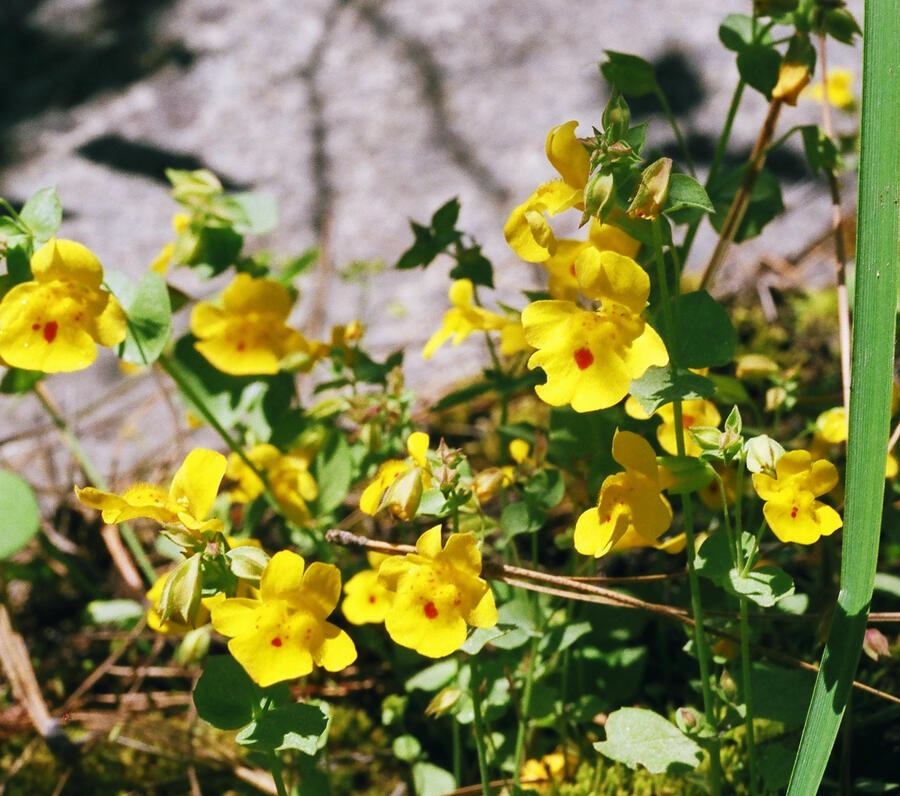
Mimulus guttatus
Yellow Monkey Flower
Zones: 5-10
Size: 18” tall
Sunlight: Full sun-part shade
Soil: Any wet soil
Bloom Time: Spring-midsummerDescription: These plants are named for their funny-face-flowers that look like grinning monkeys. This Washington native grows from coastal areas to mid elevations. We found it growing in a drainage ditch near Stevens Pass where the masses of yellow flowers caught our eyes causing a quick stop to investigate. They were adorned with numerous bilaterally symmetrical flowers on slender stems that were 18” tall. It is distinguished from other yellow Mimulus by the longer upper tooth on the angular calyx. This perennial spreads with stolons or rhizomes growing in seeps, springs or along creeks. Seep monkey flower is well liked by hummingbirds and disliked by deer.Growing: Seep Monkey Flower will grow in sand, clay or serpentine soils with no drainage and seasonal flooding.. It can grow in semi-shade or full sun. Light afternoon shade will prolong the bloom period. It requires moist or wet soil and can grow in water. The more water it gets, the faster it tends to grow. If Seep monkey flower goes dry it disappears. It is useful along the edges of ponds or fountains.Medicinal Uses: The plant has agents that cause tissue to contract and was used for healing wounds, fresh cuts, etc., usually used as a poultice. A decoction of the leaves and stems was used by the Kawaiisu as a herbal steam bath for chest and back soreness. The Shoshoni used a poultice of the crushed leaves applied to wounds, rope burns etc.
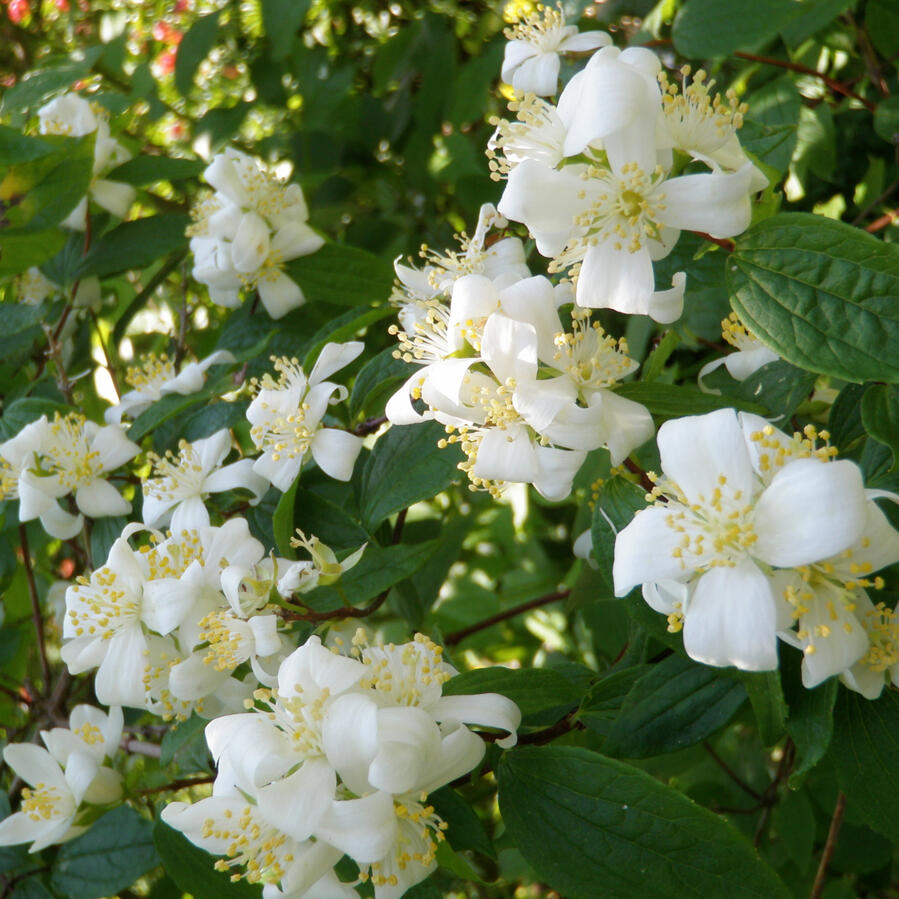
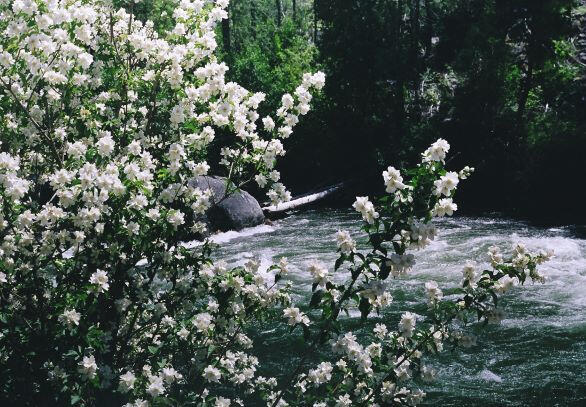
Mock Orange
Philadelphus lewisii
Zones: 4-9
Size: 5-10 ft. tall
Sunlight: Full sun-part shade
Soil: Poor to average, dry to moist
Bloom Time: May-JulyDescription: Mock Orange is a loosely branched deciduous shrub up to 10’ tall, native to the Pacific Northwest; Blooming in early summer, the shrubs are covered in sweetly fragrant white flowers and are quite noticeable when driving across the mountain passes. Its habitat is highly variable, from moist sites to dry rocky soils at low to middle elevations. Mock orange has a delicious orangey scent that makes it attractive to bees and humans alike. It also attracts butterflies and hummingbirds and is deer resistant.Growing: Mock Orange thrives in almost any garden soil, in full sun to part shade. It can grow in heavy clay and it's very drought tolerant. It can be grown as an informal hedge or garden back drop. It grows quickly and is good for soil erosion control. Plants are very tolerant of pruning. One third of the stems can be cut down to the ground each year in order to promote fresh growth and heavier flowering (prune after flowering).Uses: The leaves and flowers are rich in saponins; when crushed and mixed with water they produce a lather that is an effective cleaner; The stems can be used in making fine coiled baskets; Wood - strong, very hard, used for tool handles.
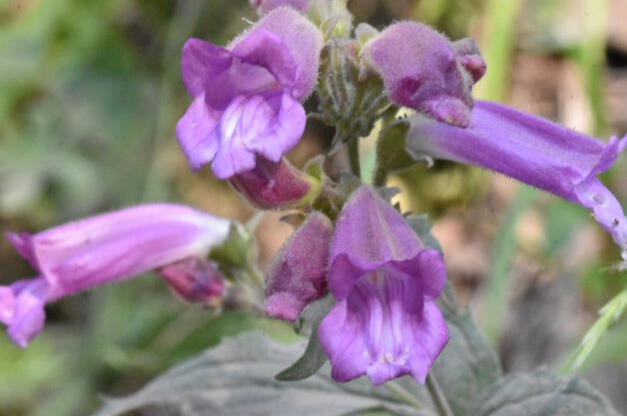
Nothochelone nemerosa
Woodland Turtlehead
Zones: 7-9
Size: 1-3 ft. tall
Sunlight: Part shade
Soil: Dry, rocky
Bloom Time: July - SeptemberDescription: Nothochelone is a native from British Columbia to Northern California found growing in moist woods, and on rocky places in mixed forests. I found them growing on the Olympic Peninsula on a rocky roadside bank. With its pinkish-purple bi-lobed flowers it is easily mistaken for a Penstemon but the genus is separated from Penstemon because of its winged seeds. The flowers provide late season nectar for hummingbirds.Growing: Turtlehead is an excellent choice for a border plant at the edge of a shady woodland garden. It prefers dry, rocky soil in part shade.
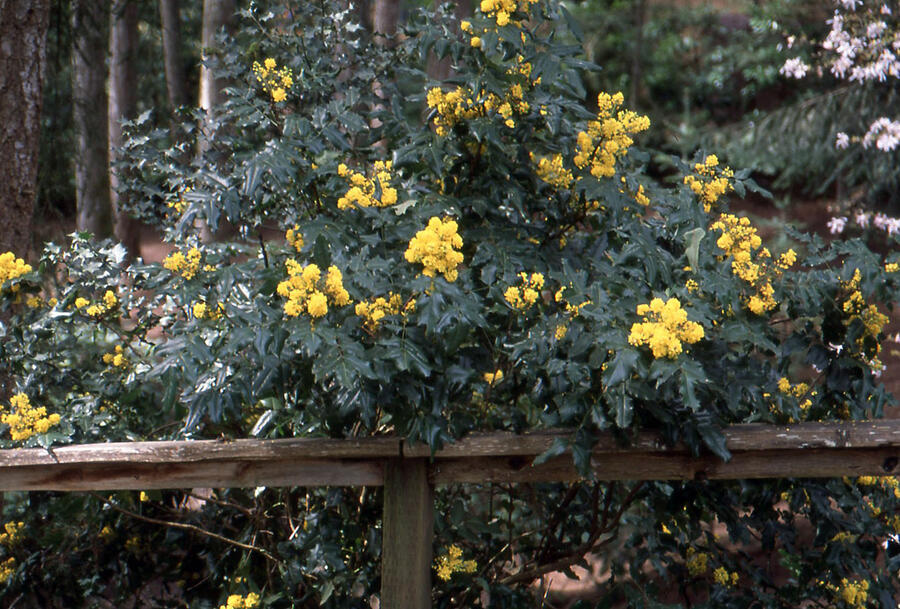
Tall Oregon Grape
Mahonia aquifolium
Zones: 5-9
Size: 2-15 ft. tall
Sunlight: Shade - part shade
Soil: Moist, well-drained
Bloom Time: SpringDescription: Native found from southern British Columbia to central California, mostly west of the Cascades. It is evergreen shrub with glossy, spiny, leathery leaves It forms clumps, spreading by underground rhizomes usually to about 3 feet tall but can get as tall as 15 feet. Sprays of golden-yellow flowers appear in spring. Flowers are followed by large clusters of blue berries. The flowers are attractive to hummingbirds and Its berries attract other birds.Growing: Oregon Grape is an excellent choice for dry shade. It is resistant to summer drought and tolerates poor soils. With its leathery, fern-like, leaves, it is an attractive groundcover or border plant for a shady woodland garden. The berries are edible but very tart so better used in jellies and wines. The roots are boiled to make a medicinal tea. The plants are used to make various dyes.
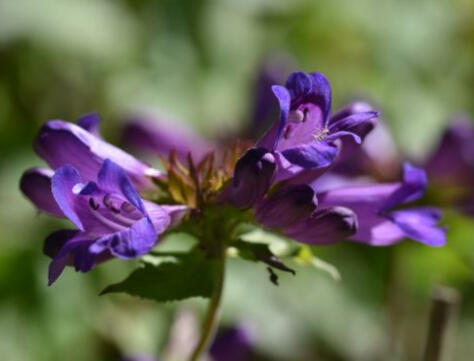
Penstemon rydbergii
Rydberg's Penstemon
Zones: 4-10
Size: 1-3 ft. tall
Sunlight: Full sun-part shade
Soil: Many types, moist
Bloom Time: SummerDescription: Rydberg’s penstemon is one of the more widespread beardtongues of western North America, from Washington and Montana to central California, northern Arizona, and New Mexico. It is equally at home growing in alpine meadows above treeline and valley bottoms along streams. I found them growing in the mountain meadows overlooking the Gorge in Umatilla National Forest. It has numerous small blue to purple flowers clustered in several dense, leafy whorls around the stem. It is a nectar source for hummingbirds, small bees and many butterflies. Deer resistant.Growing: Rydberg’s penstemon prefers moist soils but can tolerate extremely dry ground as well. It likes sun but does well in part shade too. It looks lovely in a meadow garden along with other native plants.
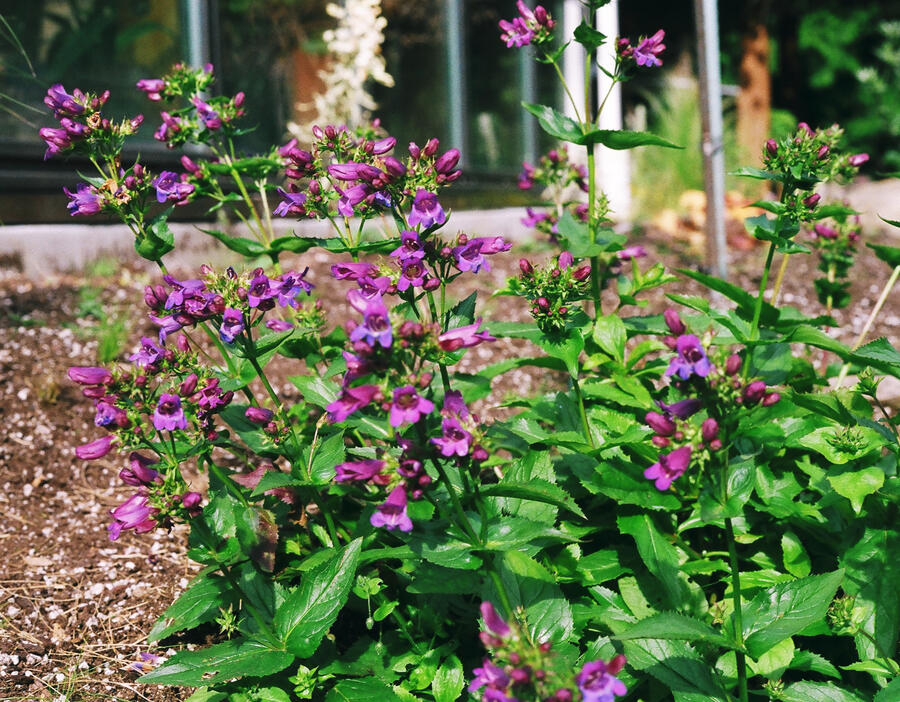
Penstemon serrulatus
Cascade Penstemon
Zones: 5-9
Size: 8-30” tall
Sunlight: Full sun-part shade
Soil: Well-drained, average, moist
Bloom Time: SummerDescription: This Pacific NW native, one of the few penstemons found in the Puget Sound lowlands, is easy to grow. They are found from coastal elevations to 6000 ft. With trumpet-shaped, purple flowers that draw hummingbirds, its stems are long enough to be useful as a cut-flower. But Beware! Once you have one of these beauties in your garden you might become a Penstemon addict like me. I believe these are some of my favorite native wildflowers I have come across while hiking in the Cascades.Growing: Cascade penstemon tolerates more moisture and shade than most other penstemons. You can see them growing in the woods just outside of Newhalem traveling up Highway 20. They seem quite happy in my dry, sunny rock garden too. This species can tolerate wetter winters and more acidic soil than most penstemons. It is a semi-evergreen species that is relatively short-lived (3-4 years) but plants will self-seed if allowed so the display can be permanent. These beautiful wildflowers are at home in the landscaped border.
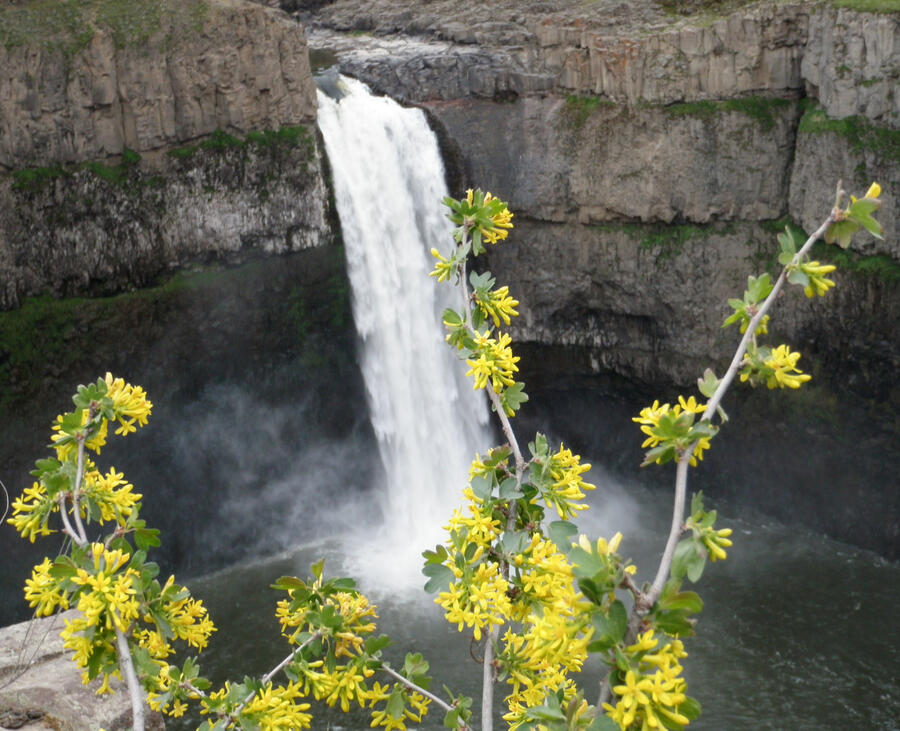
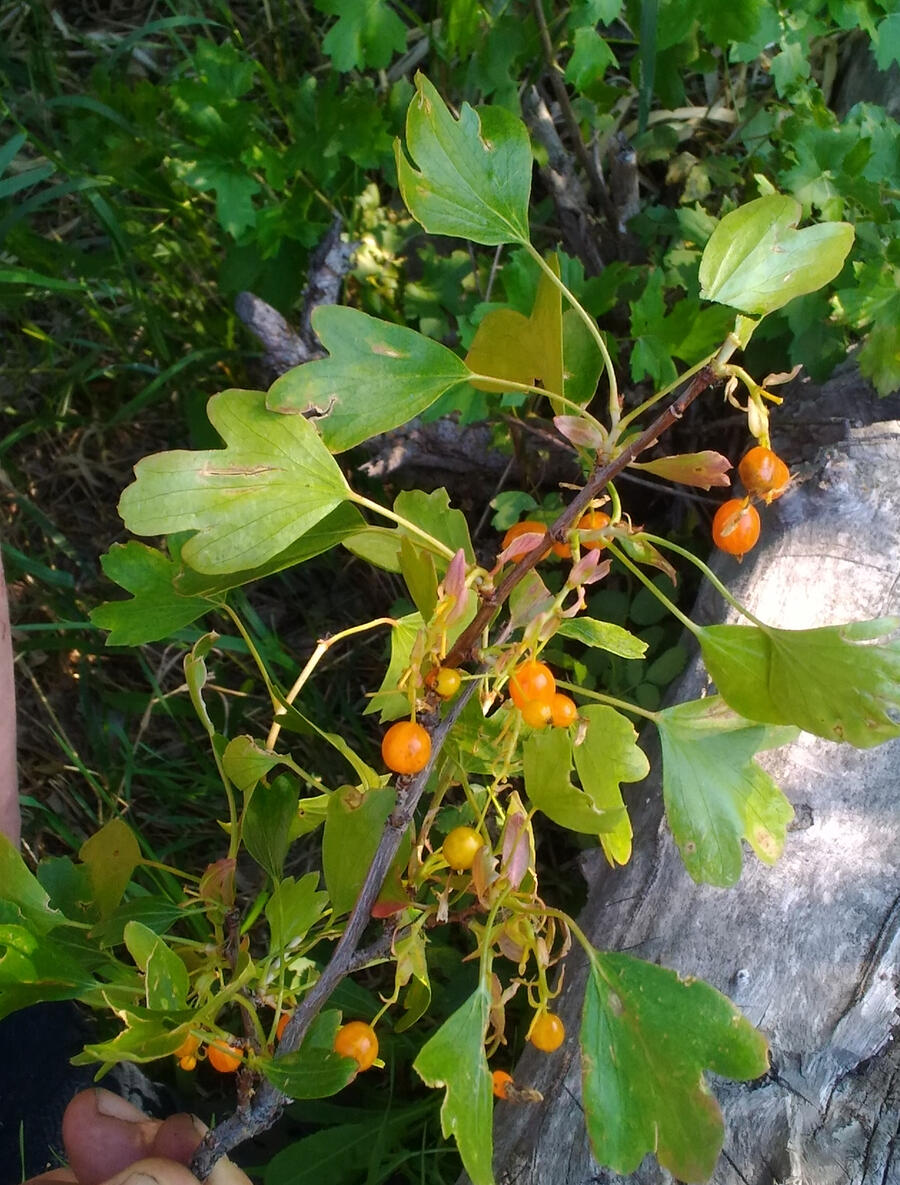
Ribes aureum
Golden Currant
TZones: 4-8
Size: 4-6 ft. tall
Sunlight: Sun-part shade
Soil: Organically rich, fertile
Bloom Time: SpringDescription: This eye-catching shrub with its clusters of bright yellow flowers adorning slender branches is a native of Eastern Washington’s sagebrush zone. I encountered my first bush on a plant collecting trip out at Palouse Falls. It was glorious, covered in bright yellow blossoms and I couldn’t wait to take some cuttings. I didn’t realize for a few years that it had delicious berries too! I was on another plant collecting trip to Douglas Creek when I noticed the Orioles chowing down on them. It reaches 4’-6’ high and is often found growing on gravelly banks and in flood plains of rivers and creeks. It blooms in spring and the flowers have a pronounced fragrance similar to that of cloves or vanilla. The flowers are well liked by the hummingbirds and butterfliesGrowing: It likes sun to part shade and can tolerate standing in water to drought. It grows best in organically rich, well-drained soil. The orangish berry is tasty and makes excellent jelly. Although flowers are hermaphrodite, the yield is greatly benefited by cross-pollination
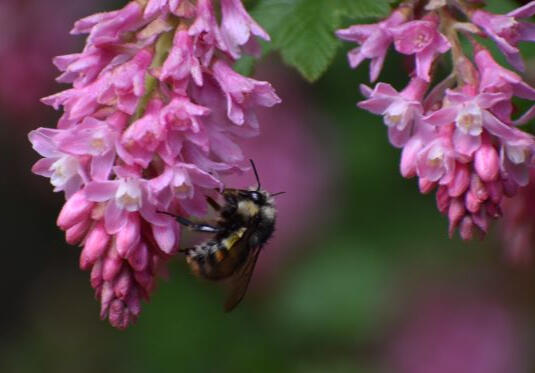

Ribes sanguineum
Red Flowering Currant
Zones: 6-10
Size: 6-13 ft. tall
Sunlight: Sun-shade
Soil: Dry to moist, well-drained
Bloom Time: Early springDescription: This member of the gooseberry family and Northwest native, is a complete joy to see throughout Pacific Northwest. Loaded with color at a botanically bereft time of year, the deciduous shrub has long showy dark pink flower clusters that cover the plant in early spring. The glaucous, blue-black fruits are attractive, but are strictly survival food for humans, although birds are fond of them. Hummingbirds and butterflies love the flowers and deer leave them alone.Growing:
Flowering Currant is easy to grow, well-mannered and amenable to severe pruning. This currant likes sun to part shade with moderate water in inland gardens. It is very drought tolerant in coastal gardens and I have seen them growing on hot, sunny outcroppings on small islands in the Sound where I like to paddle by on a kayak. They can sometimes be seen growing in deep shade and heavy clay but they grow thin and scraggy there.
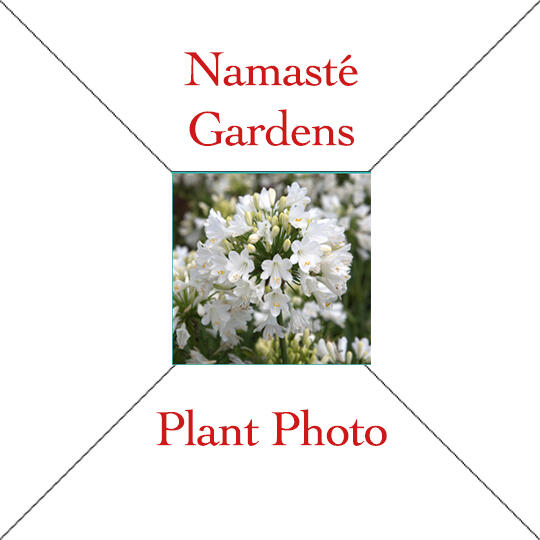
Plant name
Text
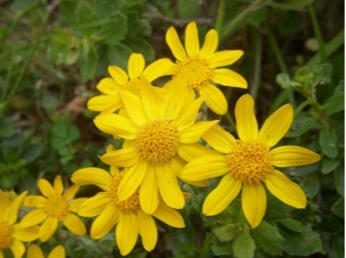
Woolly Sunflower
Eriophyllum lanatum
Zones: 5-8
Size: 1-2 ft. tall
Sunlight: Full sun - part sun
Soil: Loam, sand; well-drained
Bloom Time: May – AugustDescription: Native to Western North America. This perennial grows in well-balanced clumps with numerous yellow blooms that look like sunflowers. I found it blooming up on Sauk Mountain where it was shining with beauty and helped make the hike a memorable experience.
Important nectar source for various bees, butterflies and other pollinators. Deer tolerant.Growing: This species grows in dry rocky, open places below 10.000 ft. and needs very little water once established. It is a good choice for use in perennial borders, along pathways, and in rock gardens and embankments. Remove seed heads to prevent prolific reseeding.
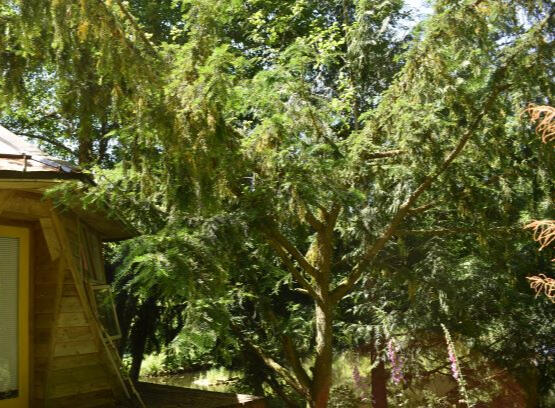
Taxus brevifolia
Pacific Yew
Zones: 5-9
Size: 8 - 50 feet
Sunlight: Full sun to full shade
Soil: Light (sandy), medium (loamy) or heavy (clay) soils and prefers well-drained soil
Bloom Time: SummerDescription: Evergreen tree native to Western US - Alaska to Central California. Yew grows from 8 to 50 feet tall at a slow rate. It is employed medicinally by several native North American Indian tribes. Modern research has shown that it contains taxol in its shoots and bark which has shown exciting potential as an anti-cancer drug Pacific yew provides important food and cover for many wildlife species.Growing: Yew thrives in almost any soil, acid or alkaline, as long as it is well-drained. Once established in the garden, Pacific yew is best grown in partial shade to full sun. The more sun it receives, the sturdier it will grow, giving it a more impressive presence in the yard. It can tolerate strong winds. Pacific yew is one of the Pacific Northwest’s more sought after natives because of its stature and history.
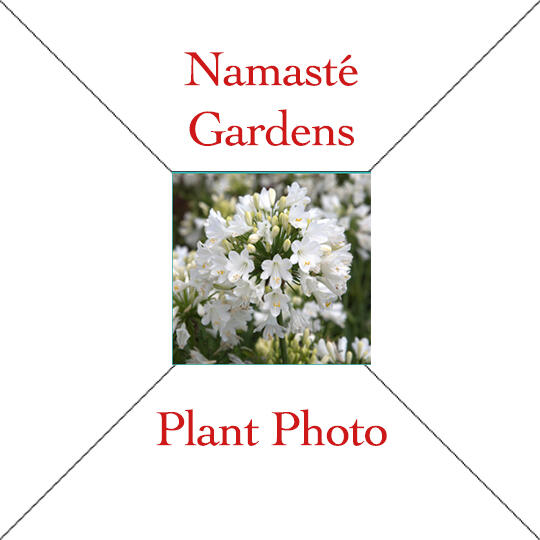
Plant name
Text
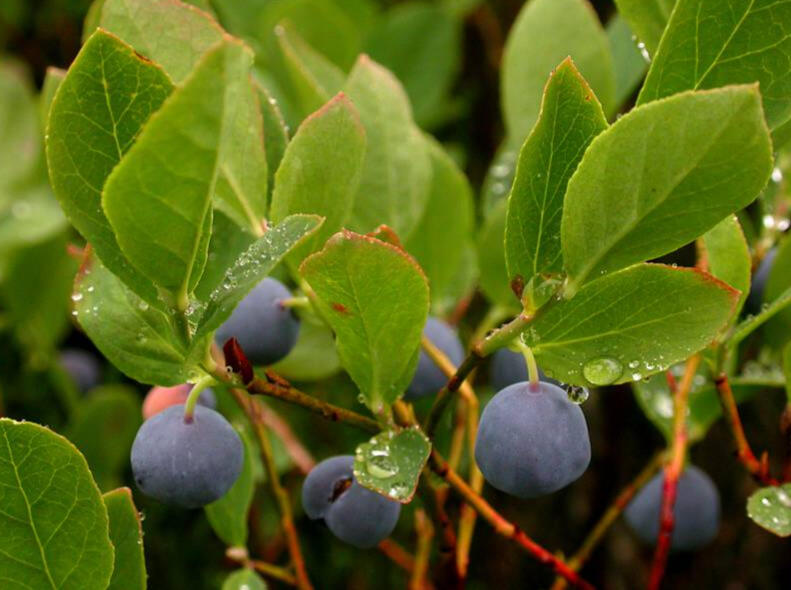
Vaccinium deliciosum
Cascade bilberry Alpine Blueberry
Zones: 5-9
Size: 1-1.5 ft. tall
Sunlight: Sun – partial shade
Soil: Fast-draining, acidic, duffy
Berry Time: SummerDescription: Vaccinium deliciosum is native to western North America from British Columbia to northern California. It is found in coniferous forests and meadows. Twin Lakes is where I often go to collect their dark blue sweet berries (they are my favorite wild berry to eat out of hand) Even its species name alludes to its unusual flavorfulness. It is a deciduous, low-growing, spreading, often matted shrub. The fall leaves turn a fiery orange-red turning the hills where they grow into an autumn blaze. The berries are a favorite food of bears and humans.Growing: Bilberries grow best in a moist perennial bed that gets considerable afternoon sun though they will also thrive in partial sun. They prefer fast draining, acidic soils high in organic matter. Fertilize them regularly with acidifying fertilizer. Huckleberries require an unusual amount of a beneficial fungus which thrives in the decaying roots of stumps and fallen trees. You can mimic this environment by burying wood where a shrub to be planted. It will not survive dry conditions. It has difficulty growing at elevations below 2000 ft. and doesn’t fruit well except in the wild, hence its pleasures are primarily for wild harvesters.
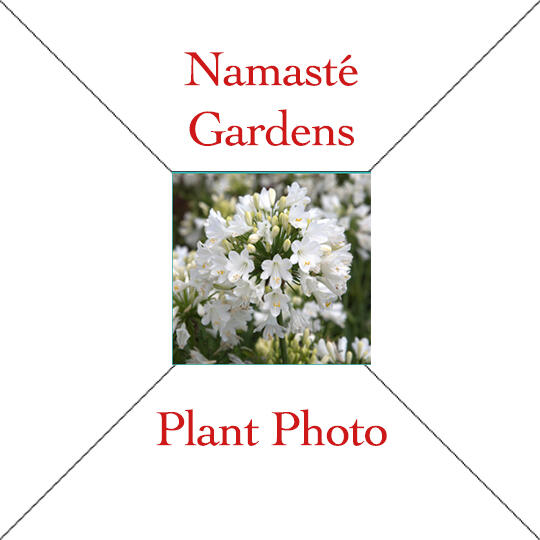
Plant name
Text
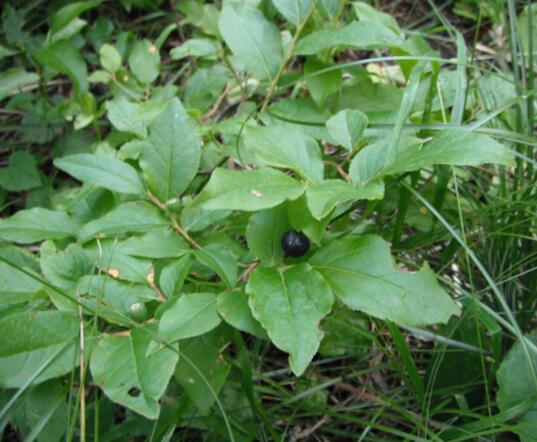
Vaccinium membranaceum
Black Huckleberry
Zones: 6-8
Size: 3-6 ft. tall
Sunlight: Sun – partial shade
Soil: Fast-draining, acidic, duffy
Berry Time: SummerDescription: Black Huckleberry is a fairly common woodland native found growing in northwest coniferous forests. The leaves are similar to Red Huckleberry but more elliptical, somewhat larger and spaced much further apart along the stem. The creamy to yellow-pink bell flowers emerge from the leaf axis in spring, followed by tasty, larger, purplish, berries. In fall, the foliage turns red to reddish-purple. The round, edible purple/black berries appear in the summer and are attractive to birds and humans alike.Growing: Vaccinium mimbranaceum is a true huckleberry, growing well in shade or sun and thriving in fast draining, acidic soils. Fertilize them regularly with acidifying fertilizer. Huckleberries require an unusual amount of a beneficial fungus which thrives in the decaying roots of stumps and fallen trees. You can mimic this environment by burying wood where a shrub to be planted.
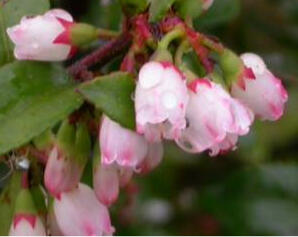
Vaccinium ovatum
Evergreen Huckleberry
Zones: 4-10
Size: 2-8 ft. tall
Sunlight: Sun – partial shade
Soil: Fast-draining, acidic
Berry Time: SummerDescription: Vaccinium ovatum is an evergreen shrub native to the Western US Pacific Coast and coastal British Columbia. It is found at elevations from sea level to 2,600 feet. This huckleberry is slow-growing but will eventually attain a height of 8 feet and it is long-lived. The white flowers appear in early spring and attract hummingbirds. The round, edible blue-black berries appear in the summer and are attractive to other birds and humans alike. The evergreen branches are used in floral arrangements.Growing: Vaccinium ovatum is a true huckleberry, growing well in shade or sun and thriving in fast draining, acidic soils. Not needing much sun, the plant has a wide variety of forest homes; it is often seen sprouting out of old coast redwood stumps or dense brambles of other forest growths.
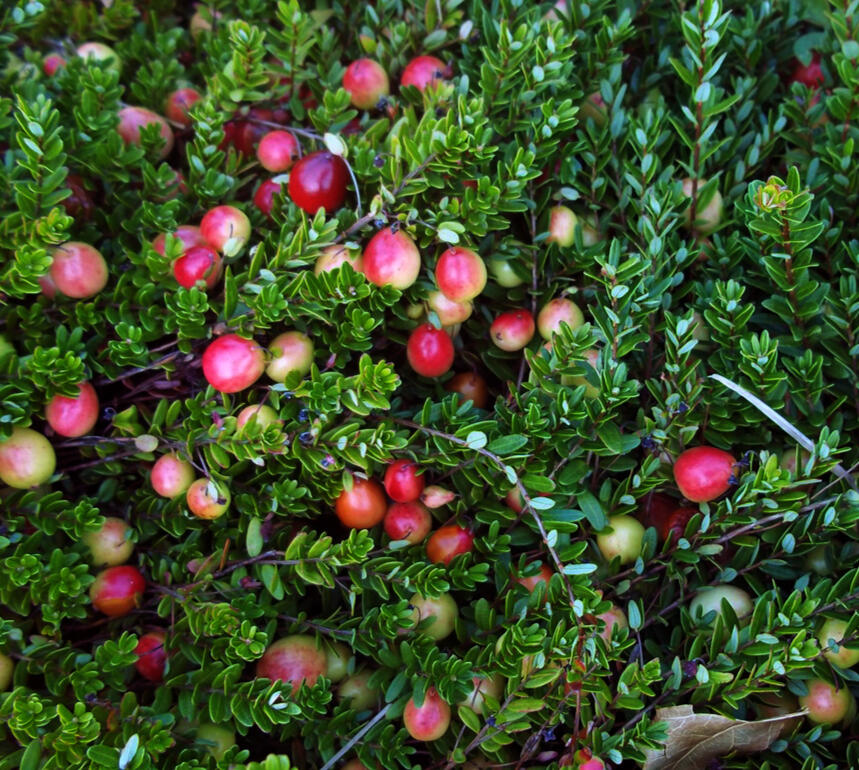
Vaccinium oxycoccos
Bog Cranberry
Zones: 3-6
Size: 3-6” tall
Sunlight: Sun – partial shade
Soil: Moist, acidic
Berry Time: OctoberDescription: Vaccinium oxycoccos is in the heath family known by the common names small cranberry, bog cranberry and swamp cranberry. It is a trailing, vine-like shrub with delicate stems that often creep over Sphagnum moss. It is widespread throughout the cool temperate northern hemisphere, including northern Europe, northern Asia and northern North America. It grows in bogs and fens in moist forest habitat. The berry of this species is smaller and drier in texture than the large cultivated cranberry. The berries are eaten by many kinds of birds and animals such as elk, black bears, blacktailed deer, foxes, squirrels, chipmunks, rabbits, and hares.Growing: Cranberries need acidic, peaty soil and moist conditions. Water daily for the first couple of weeks until the seedlings have established and thereafter every couple of days, or keep them moist but not drenched. Regular pruning allows more sunlight to reach the vines, encouraging increased flower buds and it promotes growth of new uprights to produce fruit in the second year after pruning; Bog cranberries are said to have a superior flavor to the cultivated cranberry. They are an important source of phenolic compounds that show high anti-oxidant potential.

Vaccinium parvifolium
Red Huckleberry
Zones: 6-8
Size: 3-12 ft. tall
Sunlight: Sun–shade
Soil: Fast-draining, acidic, duffy
Berry Time: Summer
Description: Vaccinium parvifolium is fairly common west of the Cascades; in open to dense forests. It usually grows out of conifer stumps or fallen and decaying logs. Numerous delicate, oval, light green leaves grow from tiny twigs along the branches, which are great in floral arrangements. The greenish-white bell shaped flowers appear in spring and are followed by tiny, red to orange-red delicious berries which have a sweet-tart flavor. They stand out in strong contrast to the bright green branches and leaves. This shrub will grow anywhere from three to twelve feet in height, As with all the other huckleberries and blueberries, Red Huckleberry is a favorite food of a variety of birds and mammals including thrushes, pigeons, towhees, ptarmigans, and grouse; and bears, raccoons, chipmunks, foxes, skunks and deer mice. The twigs and foliage are also an important browse for deer, mountain goat, and elk.Growing: Vaccinium parvifolium is a true huckleberry, growing well in shade or sun and thriving in rich, humusy, fast draining, acidic soils. Huckleberries require an unusual amount of a beneficial fungus which thrives in the decaying roots of stumps and fallen trees. You can mimic this environment by burying wood where a shrub to be planted. Red Huckleberry performs best in a woodland garden where it duplicates its native habitat. The fruit is so small that it takes a bit of effort to make a pie - but it is worth the effort!
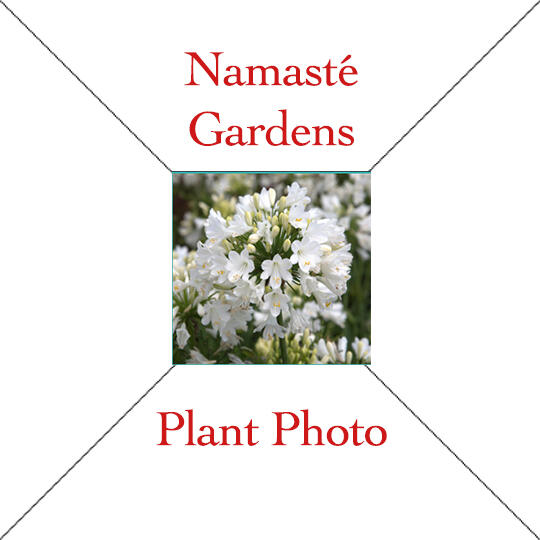
Plant name
Text
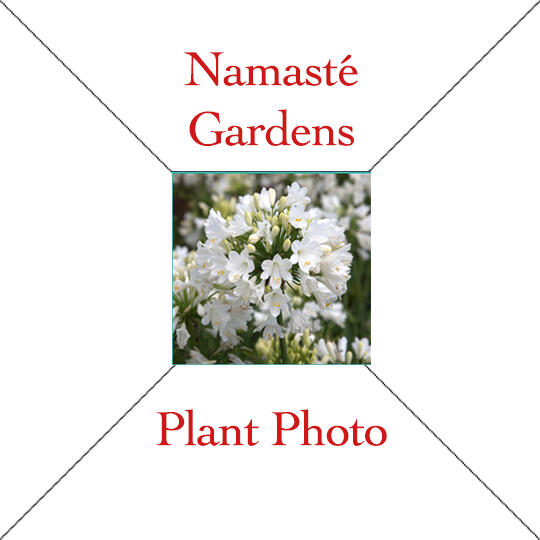
Plant name
Text

Plant name
Text
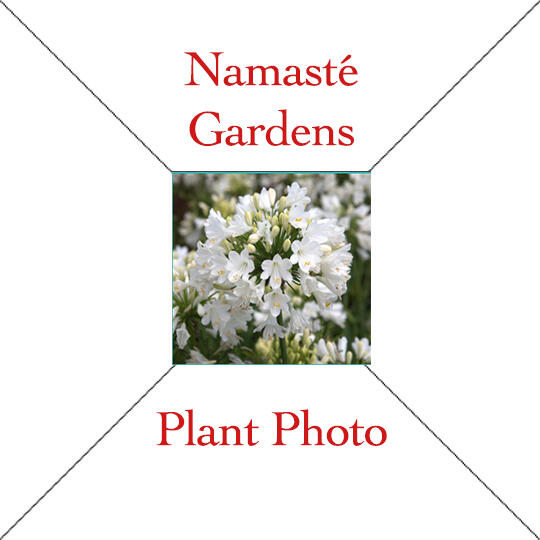
Plant name
Text
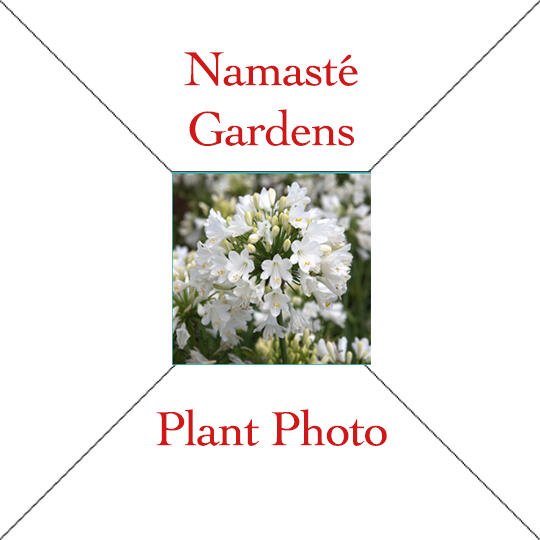
Plant name
Text
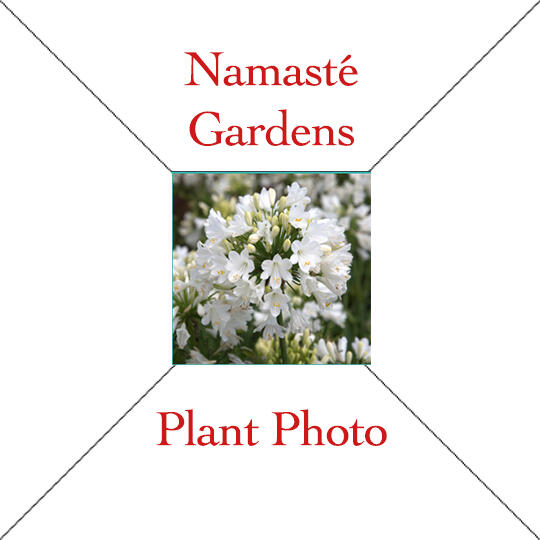
Plant name
Text
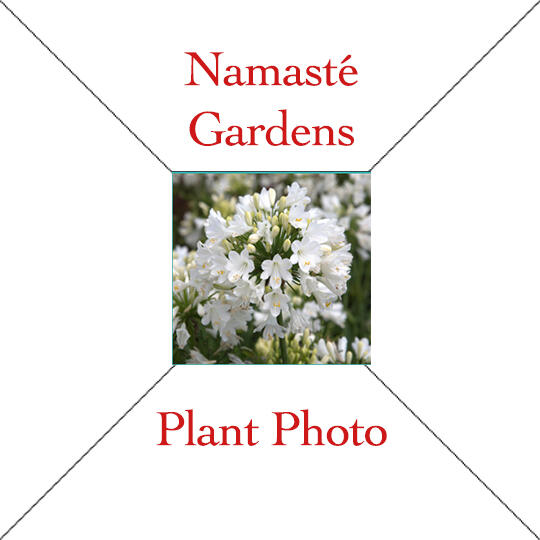
Plant name
Text
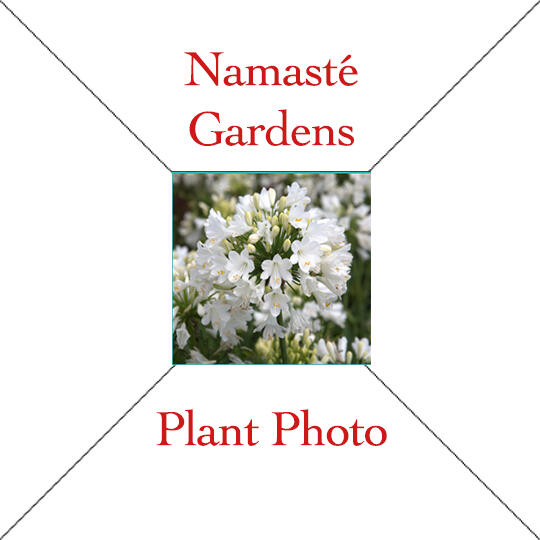
Plant name
Text
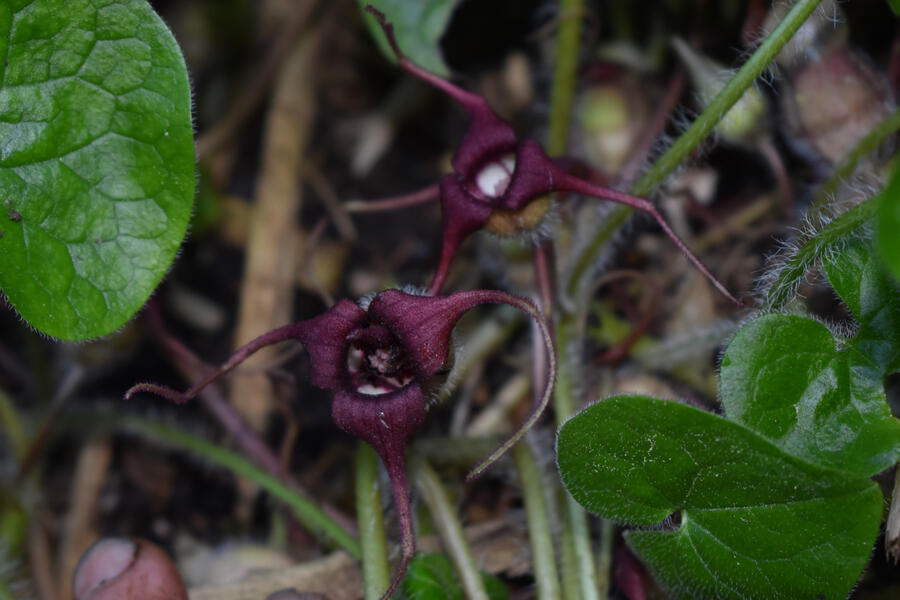
Asarum caudatum
Wild Ginger
Zones: 7-10
Size: 6” tall
Sunlight: Part shade to full shade
Soil: Loose organic, well-drained
Bloom Time: SpringDescription: A rhizomatous, evergreen perennial that grows in a clump spreading to 18” wide or more and 6” tall. It is native to moist, mixed conifer forests below 2200’ in elevation in British Columbia, Washington, Oregon, northern California, Idaho and western Montana where it often forms a thick understory ground cover. The flowers are distinct, hirsute (hairy), cup-shaped, and brown-purple to green-yellow which terminate in three, long, gracefully curved lobes, often concealed by leaves. The long rhizomes give rise to persistent heart shaped leaves.
Deer resistantGrowing: Leaves and roots smell of ginger when crushed, but plants in the genus Asarum are unrelated to culinary ginger. Some describe using A. caudatum as a ginger substitute and as a tea with medicinal properties. Easily grown in humusy, slightly acidic, consistently moist to wet soils in part shade to full shade. Plants enjoy loose organic soils with good drainage.
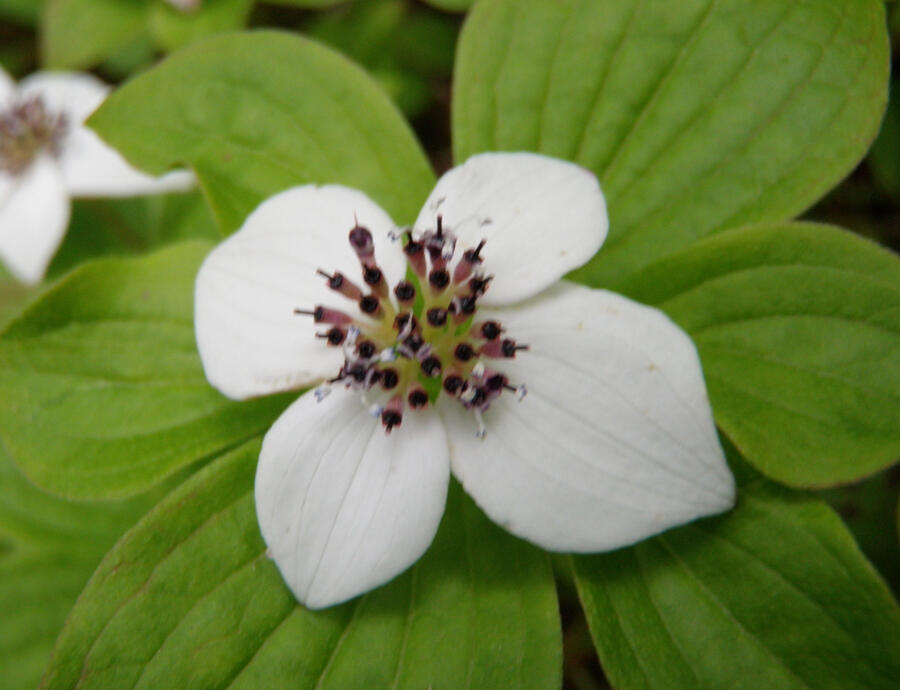
Cornus unalaschkensis
Bunchberry
Zones: 2-6
Size: 4-9” tall
Sunlight: Shade
Soil: Acidic, woodland
Bloom Time: Late spring early summerDescription: Bunchberry is a circumpolar species, which occurs throughout Canada, Alaska, Washington and other northern US latitudes, is also native to eastern Asia. It typically grows to 4-9” tall and is equally attractive in flower or fruit. Tiny purple flowers are centered on four 1” white bracts that look like petals which appear late spring to early summer. The small red berries follow in late summer and are edible but not very tasty. Attractive to birds and butterflies,Growing: This evergreen, spreading dogwood makes an excellent ground cover for the shade garden, bunchberry grows best in cool, shaded, acidic woodland soil.
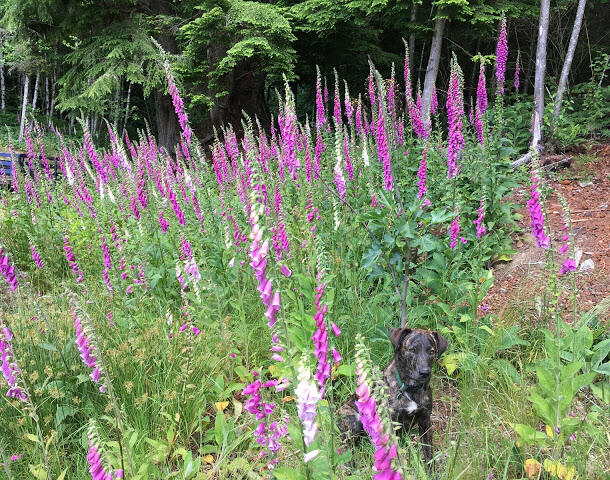
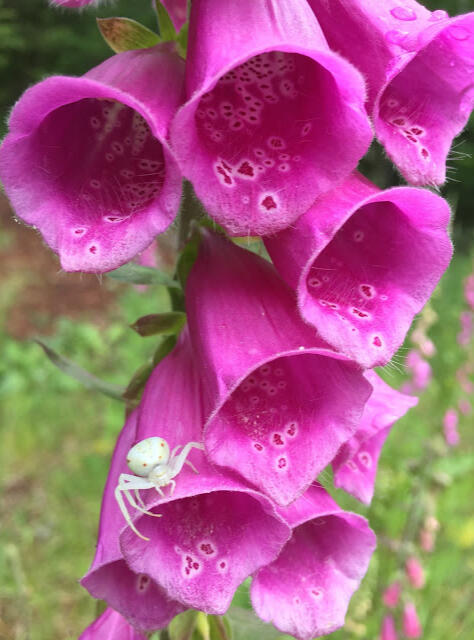
Digitalis Purpurea
Common Foxglove
Zones: 3-9
Size: 2-3 ft. tall
Sunlight: Partial shade
Soil: Acidic, sandy loam
Bloom Time: Late spring to early summerDescription: I’m sure you’ve seen these natives blooming along the side of the road in late spring. Their glorious flowers come in a wide array of colors including purple, lavender, pink, yellow, and white. They are spotted on the inside bottom of the tube. It is a biennial in the Pacific Northwest so the first year plants form basal rosettes of dark green or white-wooly leaves. These rosettes overwinter as evergreen foliage, with slender flower spikes rising from them in the following spring. It reseeds so once they start flowering you will always have them in your garden. They make great cut flowers.
Attracts Hummingbirds and tolerate rabbits and deer.Growing: Foxglove does best in cool climates in partial shade. It prefers moist, acidic, sandy loam soil with abundant organic material. All portions of this plant are considered highly poisonous. It is a source of digitalis prescribed by doctors to strengthen the heart and regulate its beat. They are great garden plants for shady borders and woodland gardens brightening up dark areas of the yard.
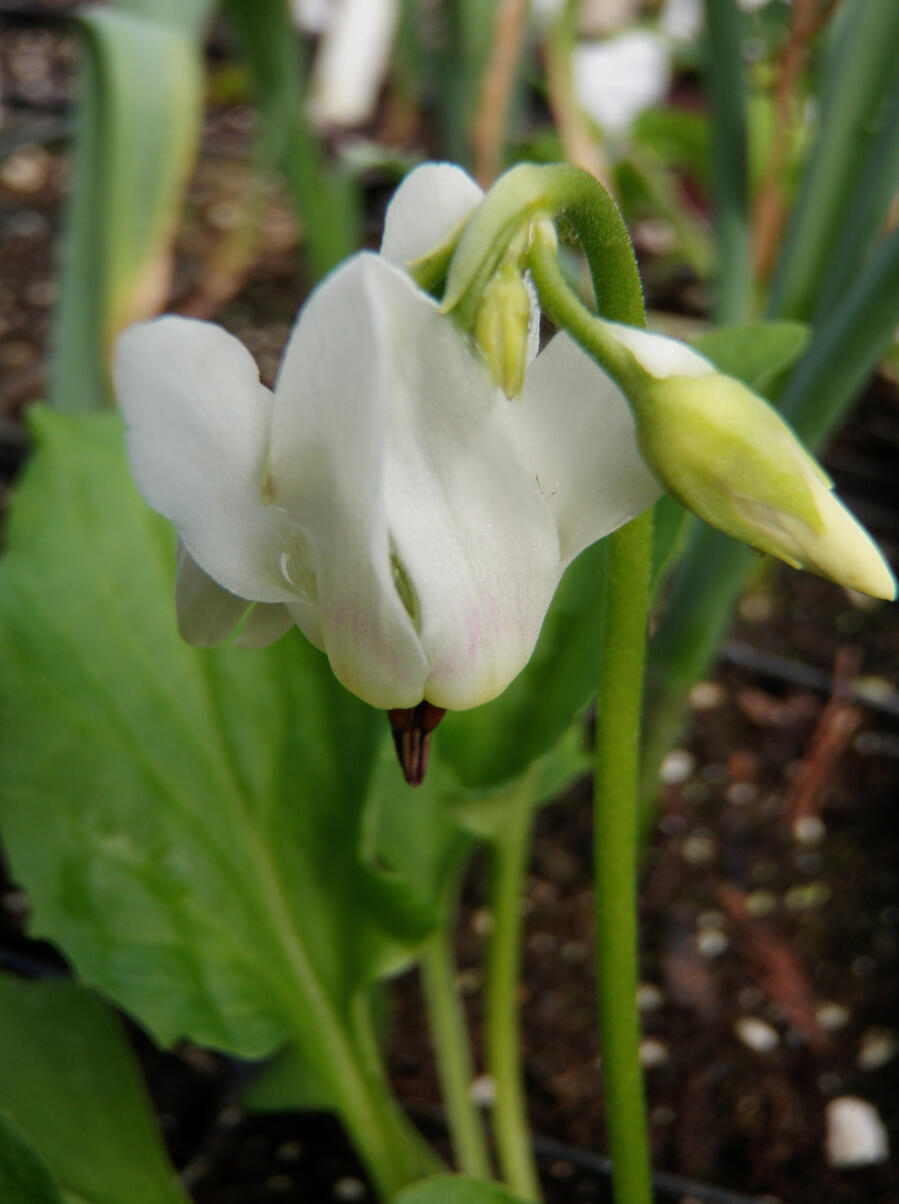
Dodecatheon meadia
Shooting Star
Zones: 4-8
Size: 12” tall
Sunlight: Sun to partial shade
Soil: Loam, clay loam, humus
Bloom Time: Early springDescription: Shooting Stars get a lot of attention because of their early boom cycle and we so need to see flowers at that time of year. They deserve the acclaim. The perfect beauty of this species cannot be described in words; it is something that truly has to be seen to be appreciated. Each individual flower has a perfect point and reflexed petals, somewhat reminiscent of a badminton birdie. It is a Native found throughout the Midwest in vernal meadows and areas of snowmelt.Growing: This is a lovely species that grows well in relatively adverse soils, particularly calcareous ones. It lends itself well to woodland environments, softening the understory with its delicately perfect blooms. It does require some shade and a fair amount of moisture, excess sun increases these requirements. Growth will be more vigorous in rich soils. As a woodland species, shooting star is invaluable for naturalizing effects. Ideally, the plants should be grown en masse as understory plantings, along the woodland border, or in small clusters. The blooms are also excellent cut flowers, but most people prefer to leave them outside.
FERNS
When ferns are grown outdoors, they should be located in the cooler areas of the garden, usually in deep shade or on the north side of the house or a garden structure. Never expose ferns to full sun in summer. Site selection in terms of drainage and light exposure is critical to production of high-quality ferns. Ferns require well-drained soil. Sandy soils or humus soils with good surface drainage are preferred. Heavy clay soils or soils with a shallow clay pan should be avoided or amended to provide good aeration and drainage. Elevated beds with amended media are excellent sites in the landscape because they ensure good aeration under most conditions. After planting your fern, water well. Light intensity is another key factor in site selection for plantings of ferns. Ferns either prefer or require indirect light for production of high-quality fronds (leaves). They are excellent plants for shady areas where other plants will not grow well. Avoid direct exposure to afternoon sun. The best time for planting ferns is after the first frost through November. This gives the transplants plenty of time to regenerate roots. No fertilizer is needed for fall transplants. They make an attractive plant in the shady or wooded sections of the backyard. Try them as edging along a stand of trees. They are very attractive mixed among a group of rocks. Your plant should thrive for years with little attention. If your soil is poor, apply organic compost and mulch from time to time. At home growing in a rock crevice alongside a stream, waterfall or pool.
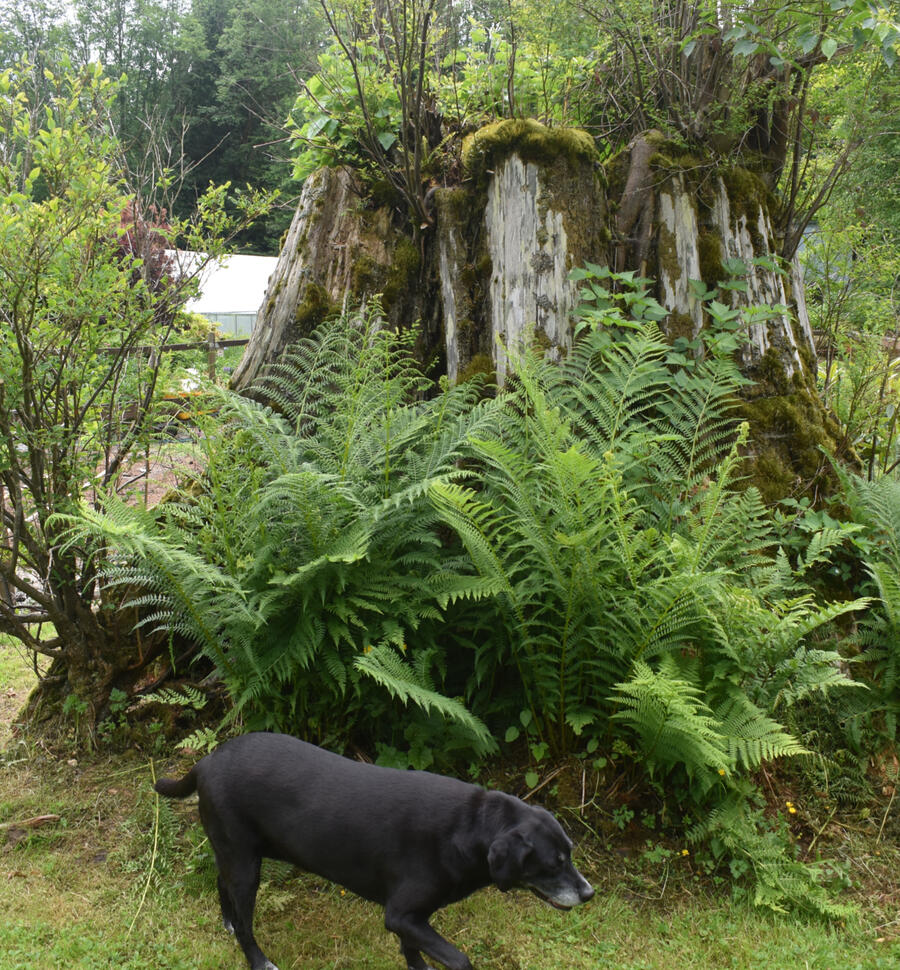
FERNS - Lady
Athyrium filix-femina
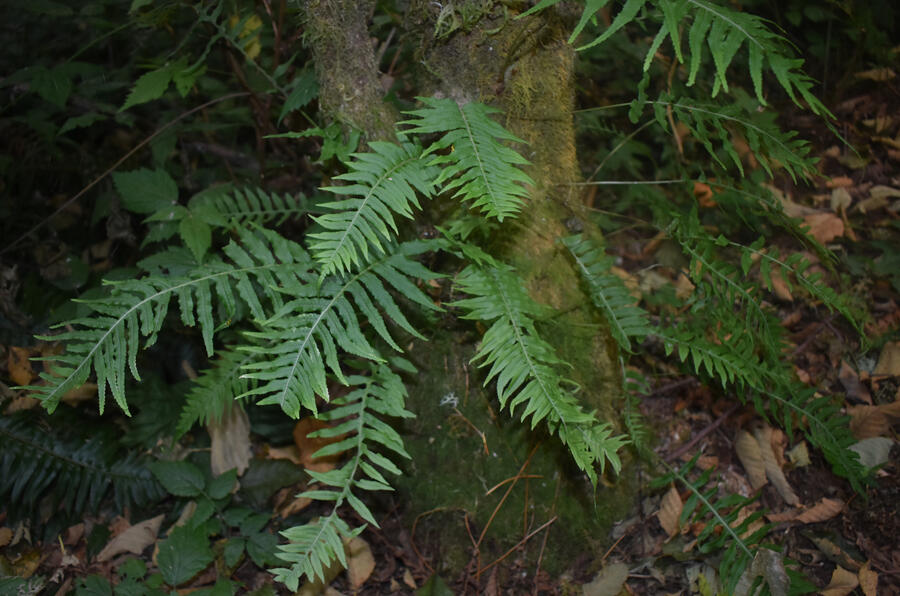
FERNS - Licorice
Polypodium glycyrrhiza
Text
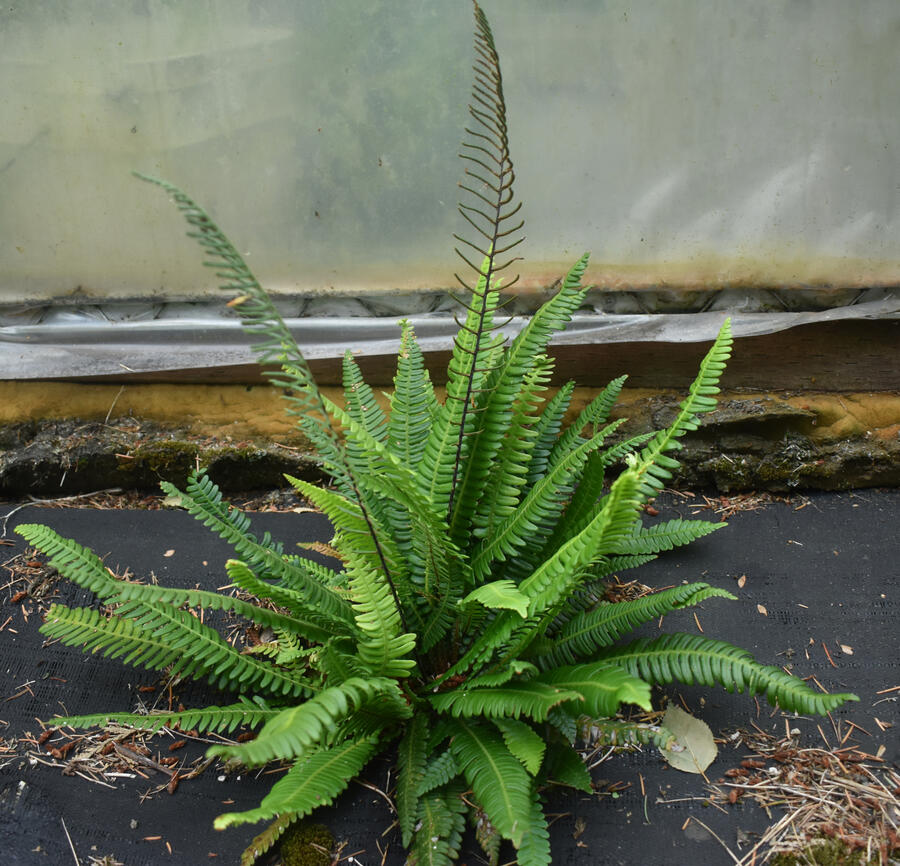
FERNS - Deer
Blechnum spicant
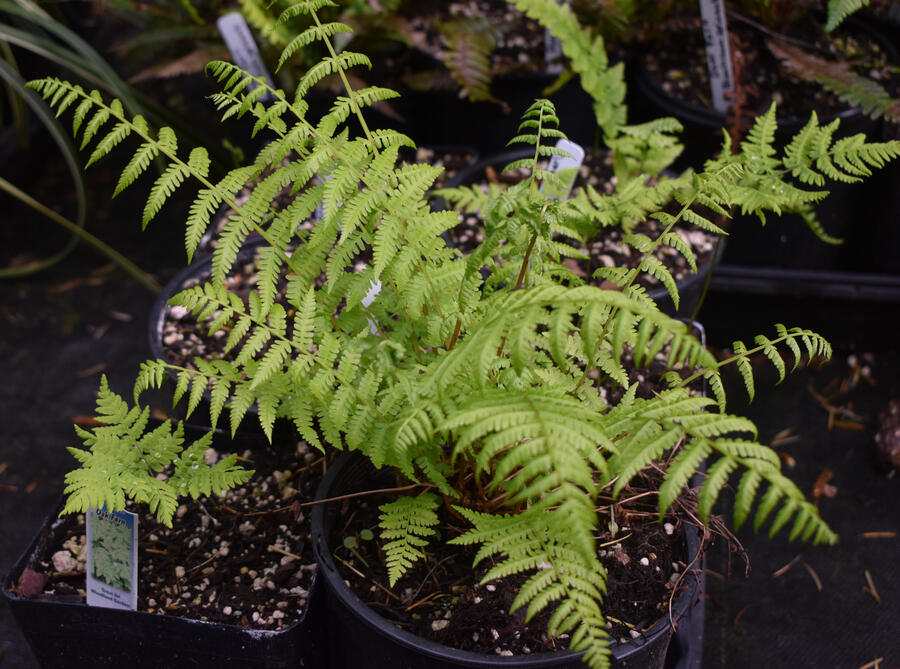
FERNS - Oak
Gymnocarpium dryopteris
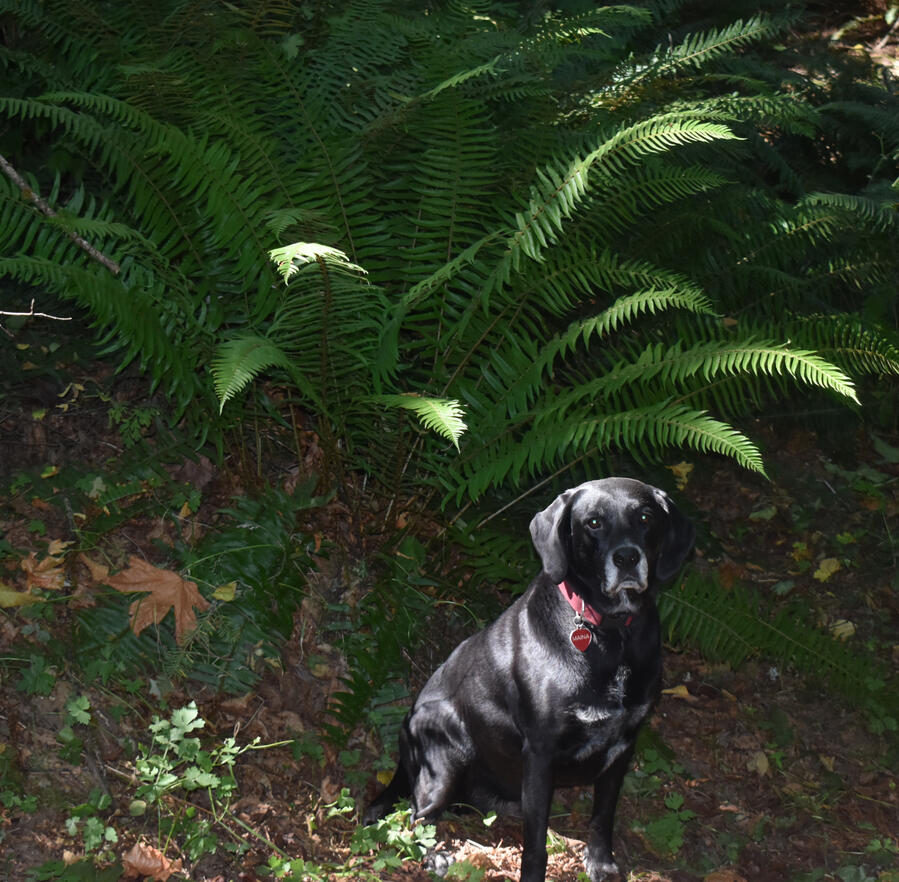
FERNS - Sword
Polystichum munitum
Plant Name
Text
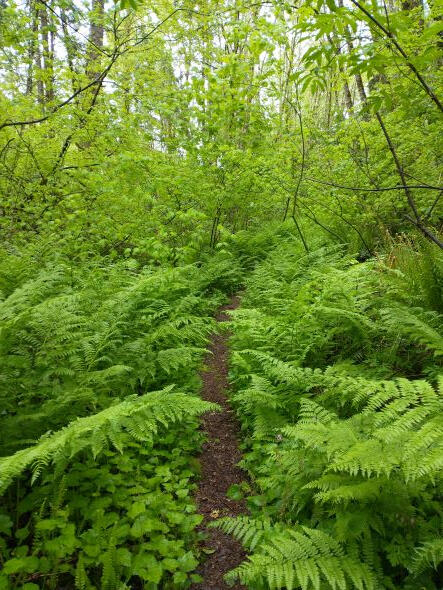
FERNS -Wood
Thelypteris kunthii
Text
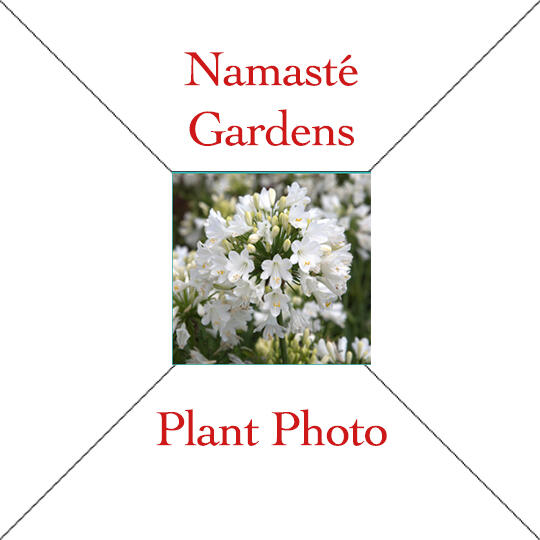
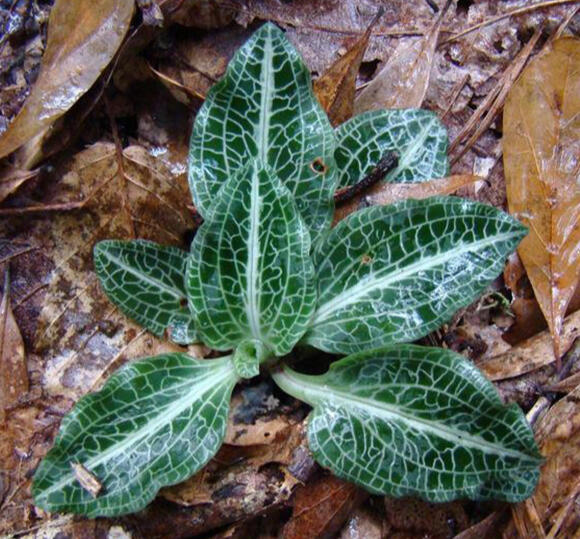
Goodyera oblongifolia
Rattlesnake Plantain
Zone: 6-9
Size: 12-18” tall
Sunlight: Shade
Soil: Well-drained, sandy or loamy, no fertilizer
Bloom Time: Late summer-early fallDescription: This orchid is a native from the Cascades and coastal mountains from southern Alaska to northern California, northern and central Sierra Nevada and eastern North America. It is an evergreen perennial with a short creeping rhizome and fibrous roots. The leaves are what catch the eye when hiking through our local forests. They are dark green with a showy central white stripe. Flowers are greenish white in a spiral one sided spike. They are an important source of nectar for native bees.Growing: This plant grows on humus among mosses in dry to moist, shady, coniferous forests. Their symbiotic relationship with a fungus in the soil allows them to obtain sufficient nutrients. They are very sensitive to the addition of fertilizers or fungicides since these can harm the symbiotic fungus and thus kill the orchid. An infusion of the plants has been used as a tonic or in the bath water for treating stiff muscles. A poultice of the softened leaves has been applied to cuts and sores.
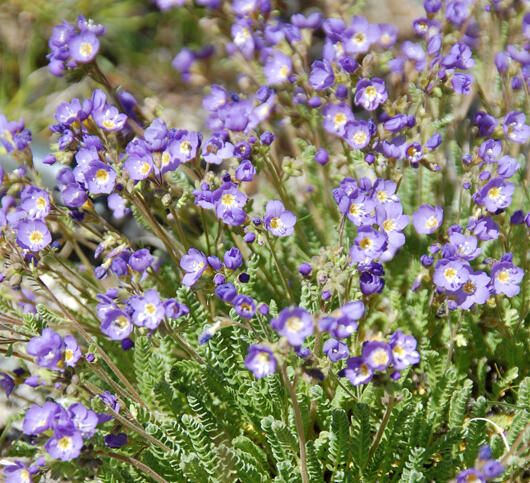
Polemonium pulcherrimum
Showy Jacob’s Ladder
Zones: 4-8
Size: 12-18” tall
Sunlight: Part shade
Soil: Dry, rocky to rich moist
Bloom Time: May-AugustDescription: Widely distributed in Washington; this Polemonium is native to western North America from Alaska and Yukon to Arizona and New Mexico, It grows at high elevations in open meadows above timberline. It grows to 18 inches tall with delicate, pinnately compound leaves giving it a ferny appearance. The plants are covered with an abundance of pale blue-lavender flowers which have vivid yellow eyes and contrasting white stamens. Loved by pollinators such as birds, butterflies and bees, it is drought-tolerant, self-seeding, and easy to grow in gardens.Growing: It most commonly grows in shady, acid soils under Spruce and Fir, but it can also be found in open sunny areas. It may be found at exposed sites above timberline, or in moist or shaded places within the forest. Though a tough little wildflower, it is not particularly drought tolerant, preferring a steady supply of summer moisture to perform its best.
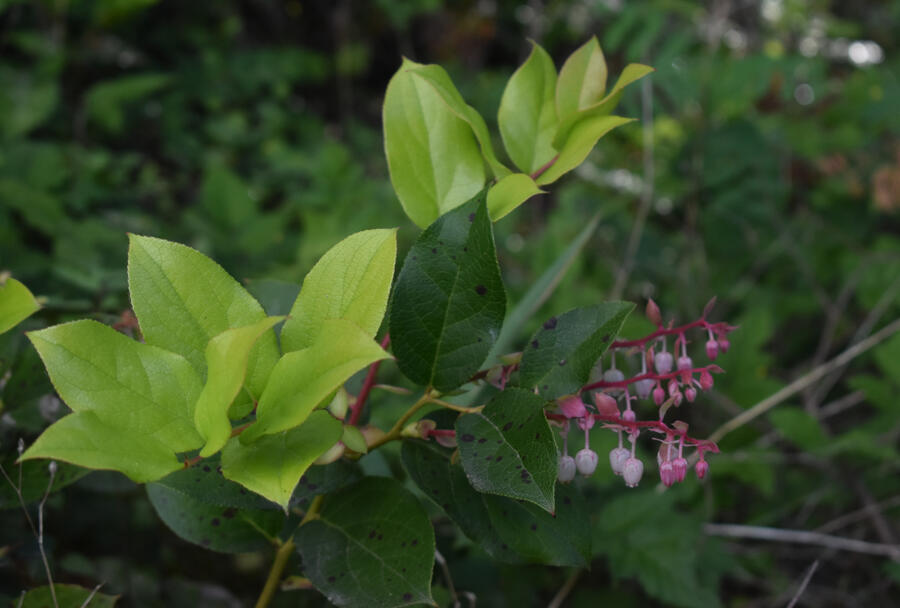
Gaultheria shallon
Salal
Zones: 6-8
Size: 3-6 feet
Sunlight: Shade-part shade
Soil: Average, well-drained
Bloom Time: Spring to midsummerDescription: Salal is a common forest understory shrub native to western North America, from Alaska to California. It is an evergreen spreading shrub with broad shiny leaves. Its pendulant bell-shaped light pink flowers resemble blueberry flowers. It’s blue-black berries were a staple food of the native people of this region, and are often used to make jelly or jam. The berries have medicinal uses and they also provide food for resident birds. The flowers attract bees, butterflies and hummingbirds. The leaves are an important winter food source for deer and elk.Growing: Salal will grow in sun and in differing soil and moisture conditions but grows best in shade to partial shade with moderate water and good drainage where it will appear at its most lush. It is pretty maintenance free, though it is not tolerant of excessively dry conditions. It can be used as a thick ground cover in a sunny location where it will not grow as tall. It is tolerant of salt spray and will grow well on exposed slopes and bluffs near the ocean. The evergreen leaves are used worldwide in floral arrangements.
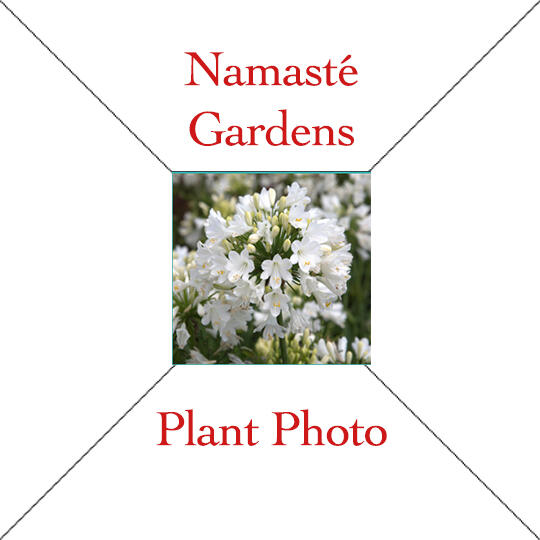
Plant name
Text
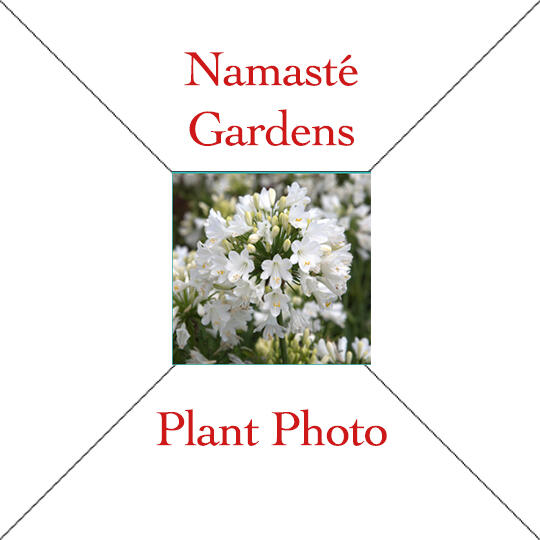
Plant Name
Text
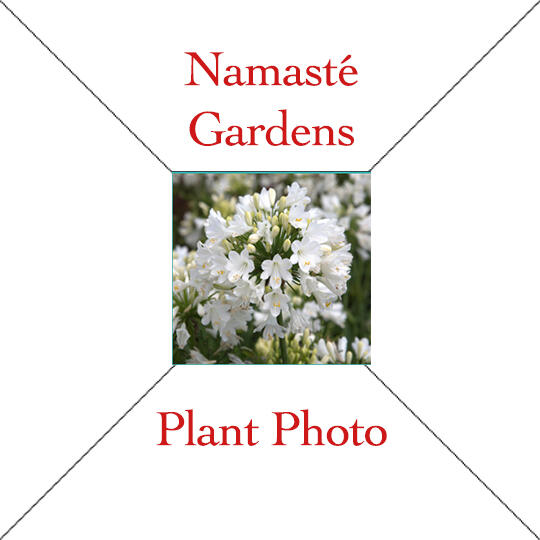
Plant name
Text
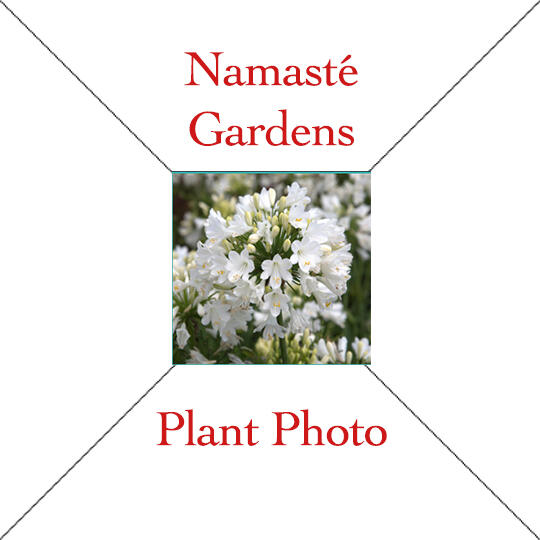
Plant name
Text
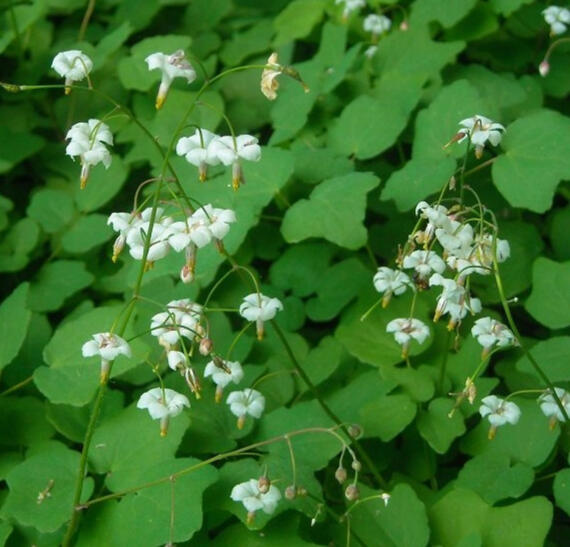
Vancouveria hexandra
Inside-Out Plant
Zones: 5-8
Size: 12-18” tall
Sunlight: Shade
Soil: Humus-rich acidic
Berry Time: May-JulyDescription: Inside-Out Plant is found growing in the forest floor in cool, moist, coastal mountain ranges of Washington, Oregon and California. These flowers are named because the flower petals are angled sharply backwards with the stamens thrust forward into a pointed tip like a sharp pencil lead, which gives the blooms a windblown, inside-out appearance. The leaves are deciduous and uniquely tri-lobed, reminiscent of the duck’s foot that is its other common name.Growing: Best suited for a semi-shady, dappled light setting, with consistently moist, humus-rich, acidic soil Afternoon shade is a must for this delicate plant. One of its virtues is that it is one of those rare plants that can grow well in drier shady spots in the garden. Spreading by underground rhizomes, it will easily fill a space and is best used to fill between taller, larger plants. Keeping it on the drier side will slow the pace of its spreading. Vancouveria is also virtually disease and pest-free. It is reliably low-maintenance, even by native plant standards. About all that will need to be done is to cut back and clean up the dead and winter-damaged leaves to make way for the new growth in spring.
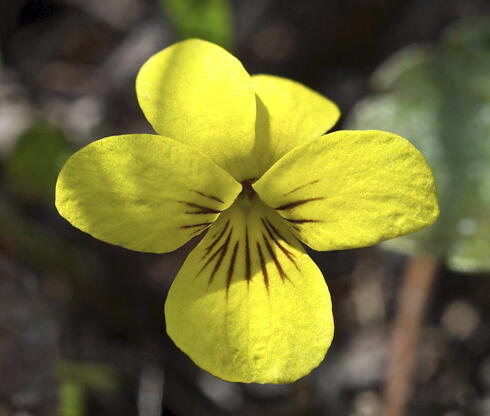
Viola glabella
Stream Violet
Zone: 1-7
Size: 4-8 inches.
Sunlight: Full to part shade
Soil: Moist, wet, humus rich
Bloom Time: March-JulyDescription: This native violet can be found growing on streambanks and in moist forests from near coast to high elevations in northwestern North America and northeastern Asia. It has heart-shaped leaves and bright yellow flowers marked with purple veins. It is an important source of nectar for various moths and butterflies. They start blooming early in the spring making them a welcome site for winter weary eyes.Growing: Stream Violet is easy to establish in woodland gardens, cottage gardens and along ponds and streams. It prefers a moist to wet shady habitat with humus rich soil. It may reseed and can become a bit invasive.
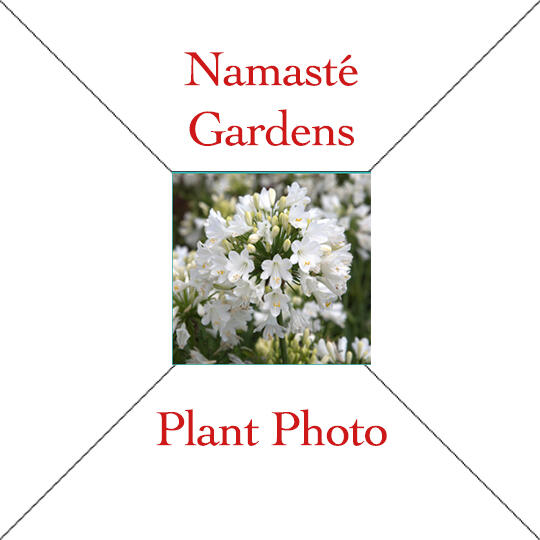
Plant name
Text
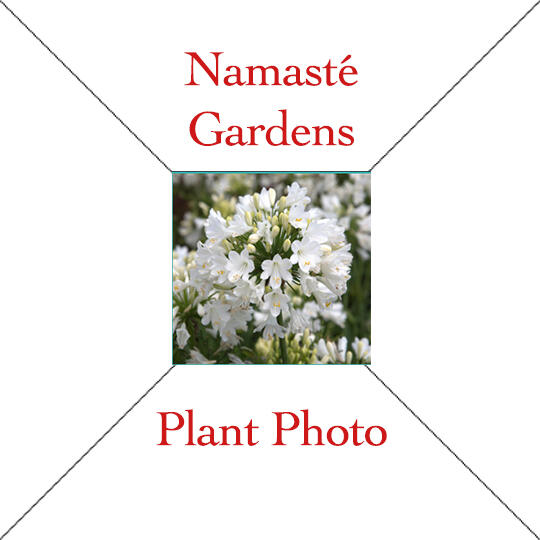
Plant name
Text
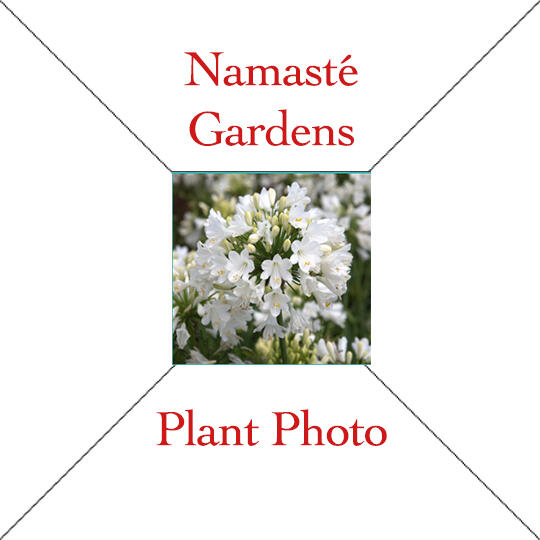
Plant name
Text
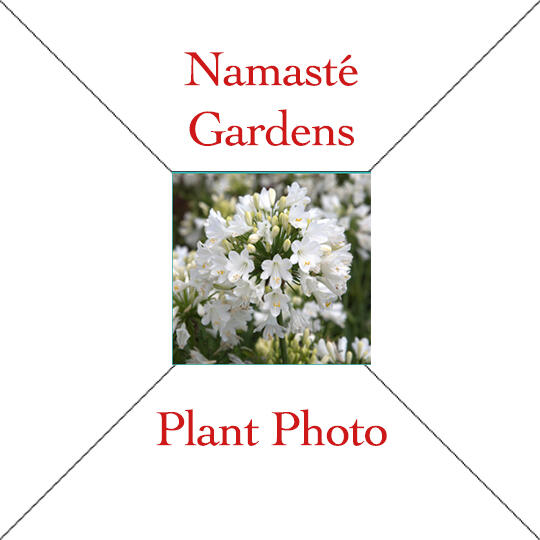
Plant name
Text
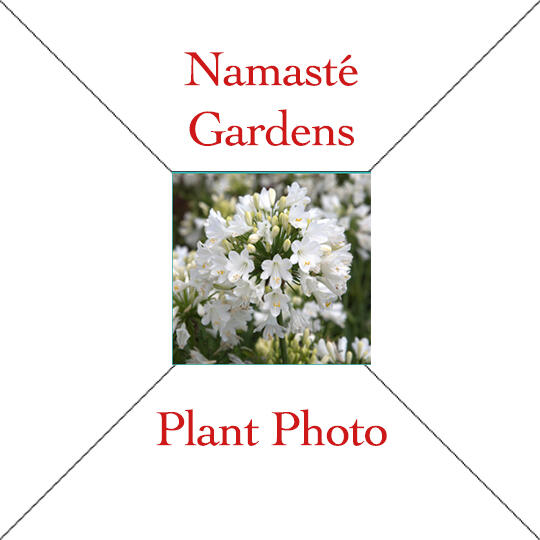
Plant name
Text
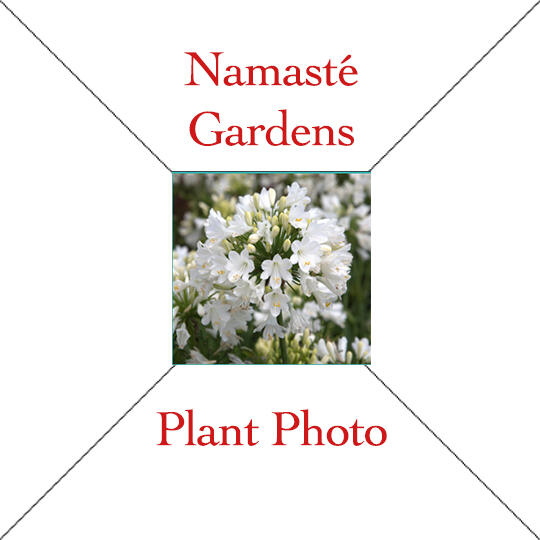
Plant name
Text
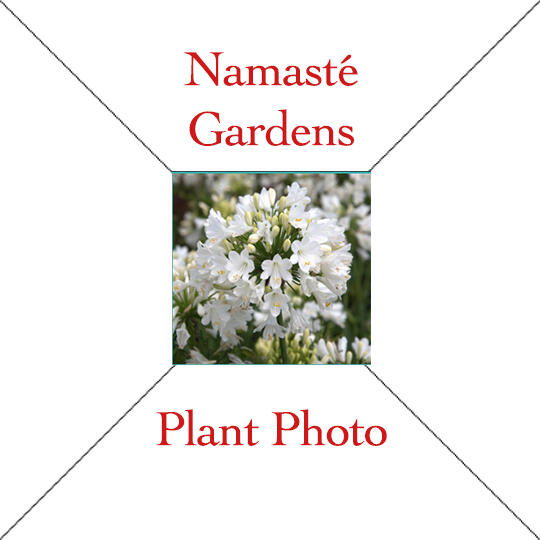
Plant name
Text
Succulents have been a special love of mine over the years. Every time I think I’ve seen and collected every sort, I come across something totally new and different and I’ve got to try it out. I love watching the kids discovering them at my booth, eyes popping and wanting to know if they are real. Succulents have such a varied range of colors from oranges, reds, greens, blues and purples and many are variegated and the diverse shapes add texture to any type of planting, even a wall! They will withstand drought, deep freezes, poor soil and high temperatures and still reward with stunning colors and blooms. Hens and chicks resemble an unfurled rose with seasonal blushes of colors.
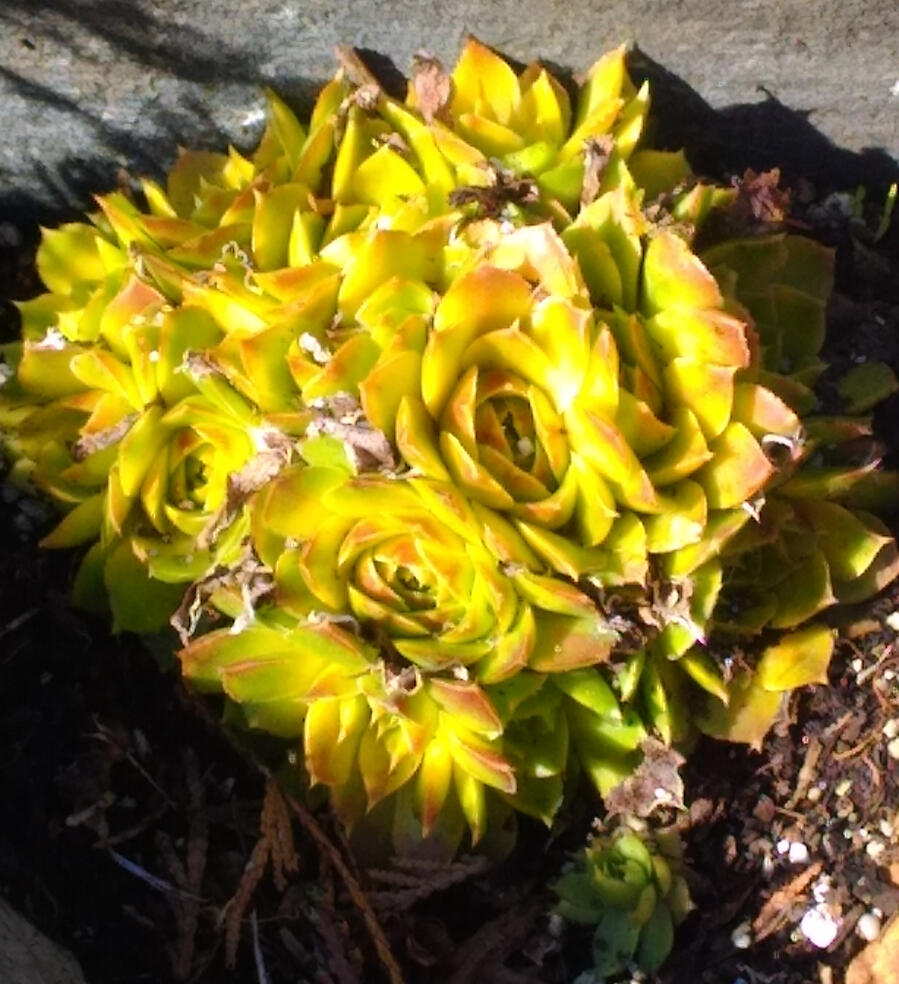
Jovibarba heuffelii 'Goldbug'
Zones: 4-9
Size: 4" diameter, 4” tall
Sunlight: Full sun to part shade
Soil: Average, well drained
Description: Jovibarba is a small genus of three species of succulent sometimes classified as a subgenus of Sempervivum. Endemic to mountainous regions in the southeastern Europe. ‘Goldbug’ changes colors, often dramatically during the year, starting out bright yellow in colder months, fading to green with summer heat. Once established, Jovibarba are drought tolerant. As an added benefit, they are deer resistant.
Growing: These hardy plants thrive in dry, well drained, loamy to sandy soil and even grow in small gravel. They are drought tolerant for short periods of time once established. They look great in rock gardens, mixed containers, and miniature gardens.
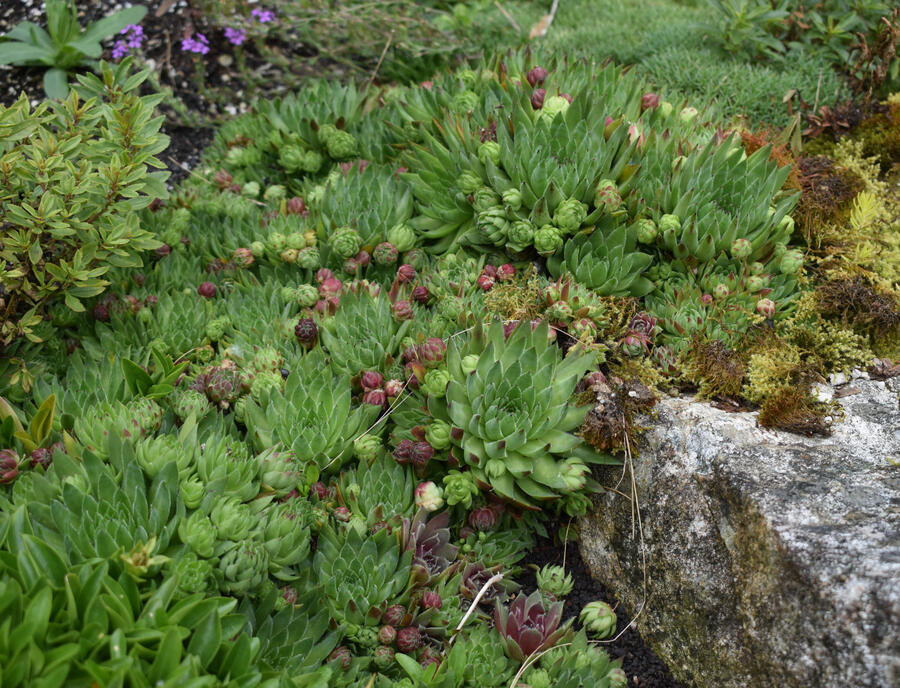
Jovibarba hirta
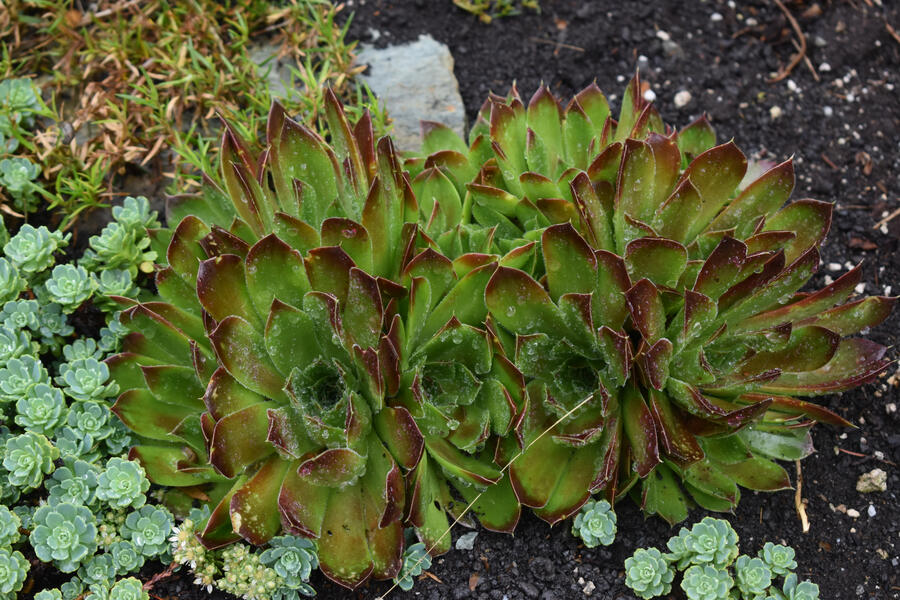
Jovibarba 'Torrid Zone'
Text
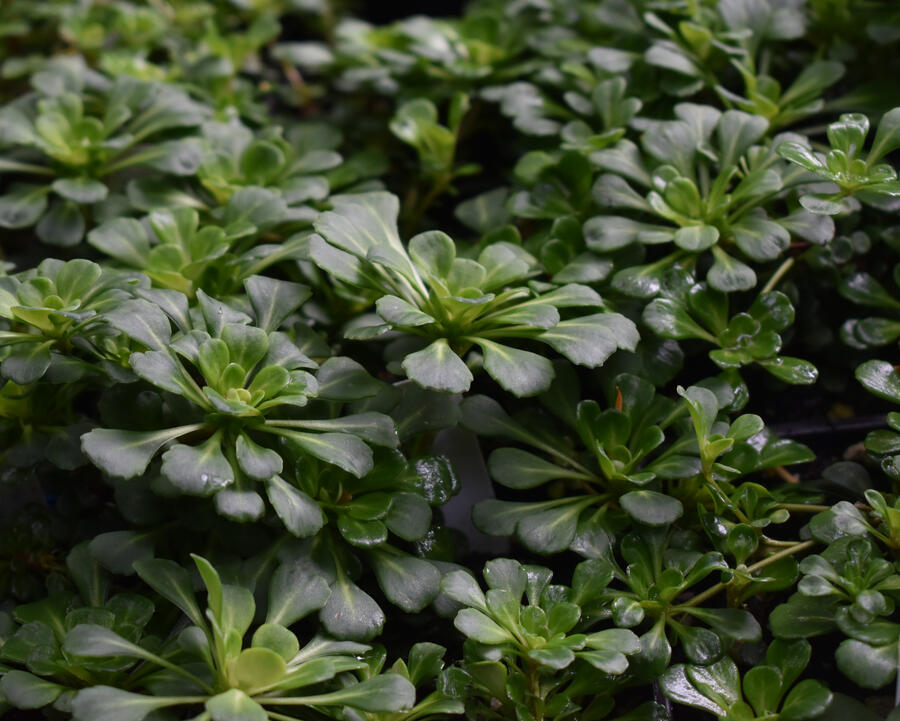
Saxifraga primuloides'
Zones: 7-10
Size: 4-6” tall
Sunlight: Shade
Soil: Average, well-drained
Harvest Time: Late spring-early summerDescription: This dwarf version of London pride is a great groundcover for dense shade. Its evergreen rosettes of dark green foliage make for an attractive growth habit. It spreads by stolens but is easy to control. Stems of airy pale-pink flowers appear in late spring. Deer resistant.Growing: This small groundcover grows best in light to deep shade with moist to well-drained soil. It will tolerate sandy or clay if the drainage is adequate. Once established it is drought tolerant, but does appreciate occasional watering during long dry spells. It can withstand dense shade and looks great even with heavy root competition from trees and shrubs. It looks wonderful when planted between stepping stones or stairs.
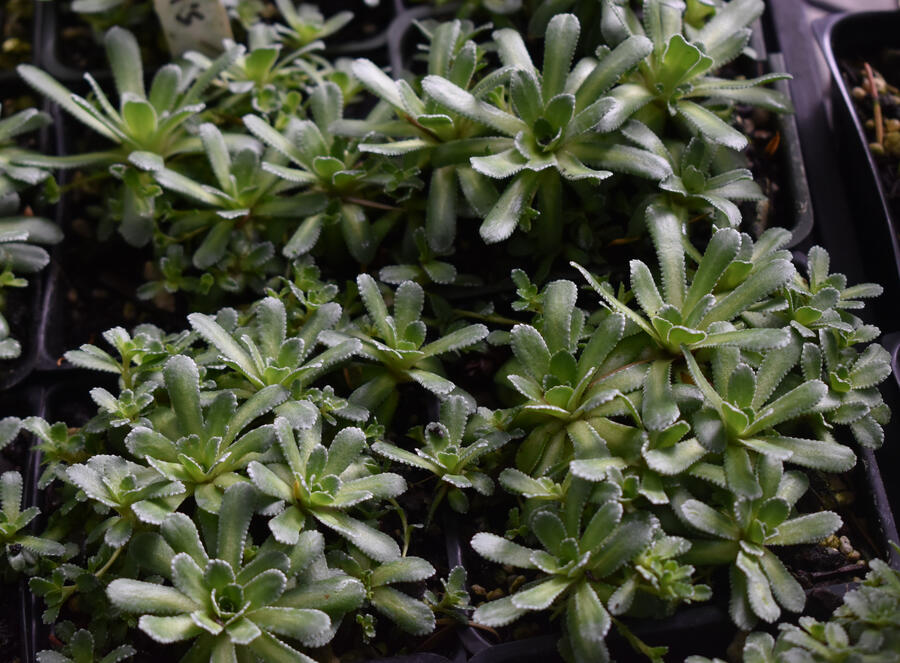
Saxifraga 'Silver Leaf'
Zones: 7-10
Size: 3-4” tall
Sunlight: Part to full shade
Soil: Average, well-drained
Bloom Time: Late spring-early summerDescription: This mat forming ground cover with many little spike flowers gives a great display in our rockgarden. But the most important feature of the Silvers is of course the rosettes! They are evergreen and they are distinctive with their silvery overtones. They are slow spreading but produce a dense mat that weeds have trouble growing through.
Deer resistant.Growing: This small groundcover grows best in light to deep shade. Once established it is drought tolerant, but does appreciate occasional watering during long dry spells. Practically all saxifrages require a well-drained site either in the open rock garden or in rock crevices, dry walls or raised bed moraine. They do particularly well even in complete shade or in woodland settings.
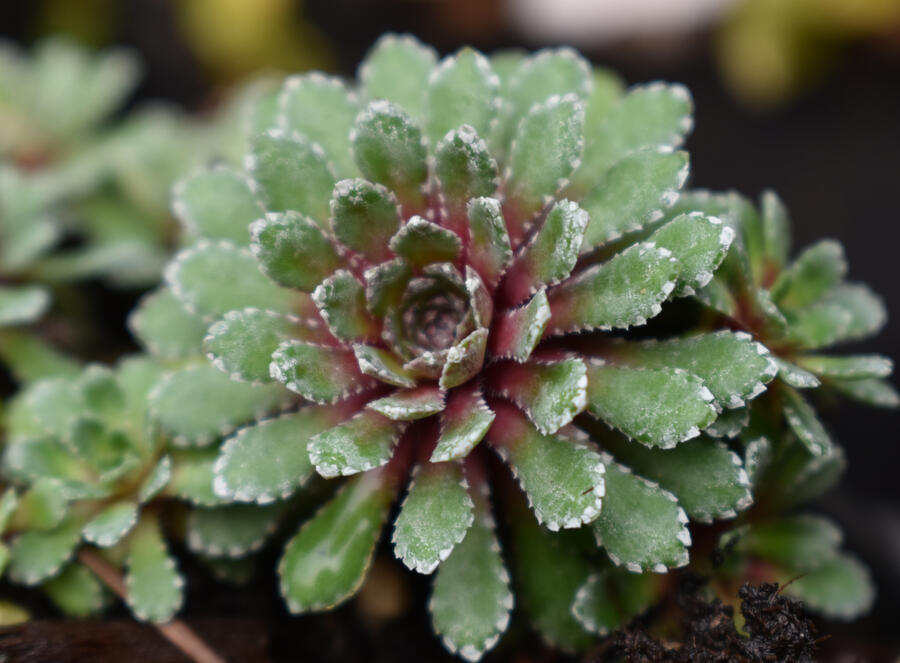
Saxifraga 'Whitehill
This shade tolerant succulent has tiny, lime encrusted rosettes with red centers and white flowers in the spring.
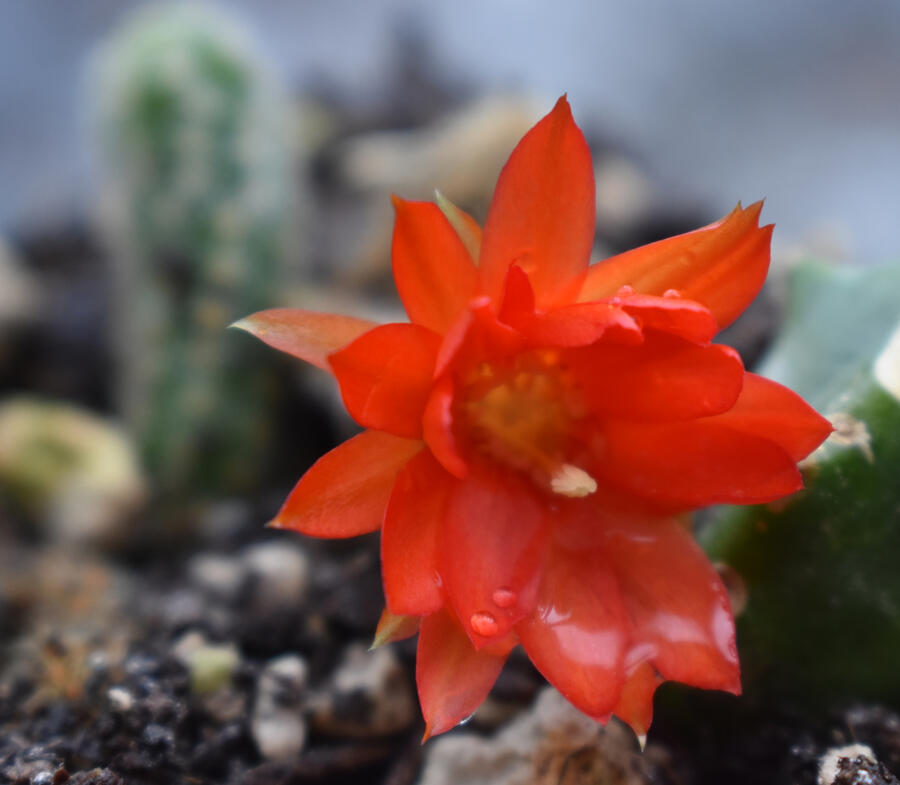
Cactus, Rat Tail
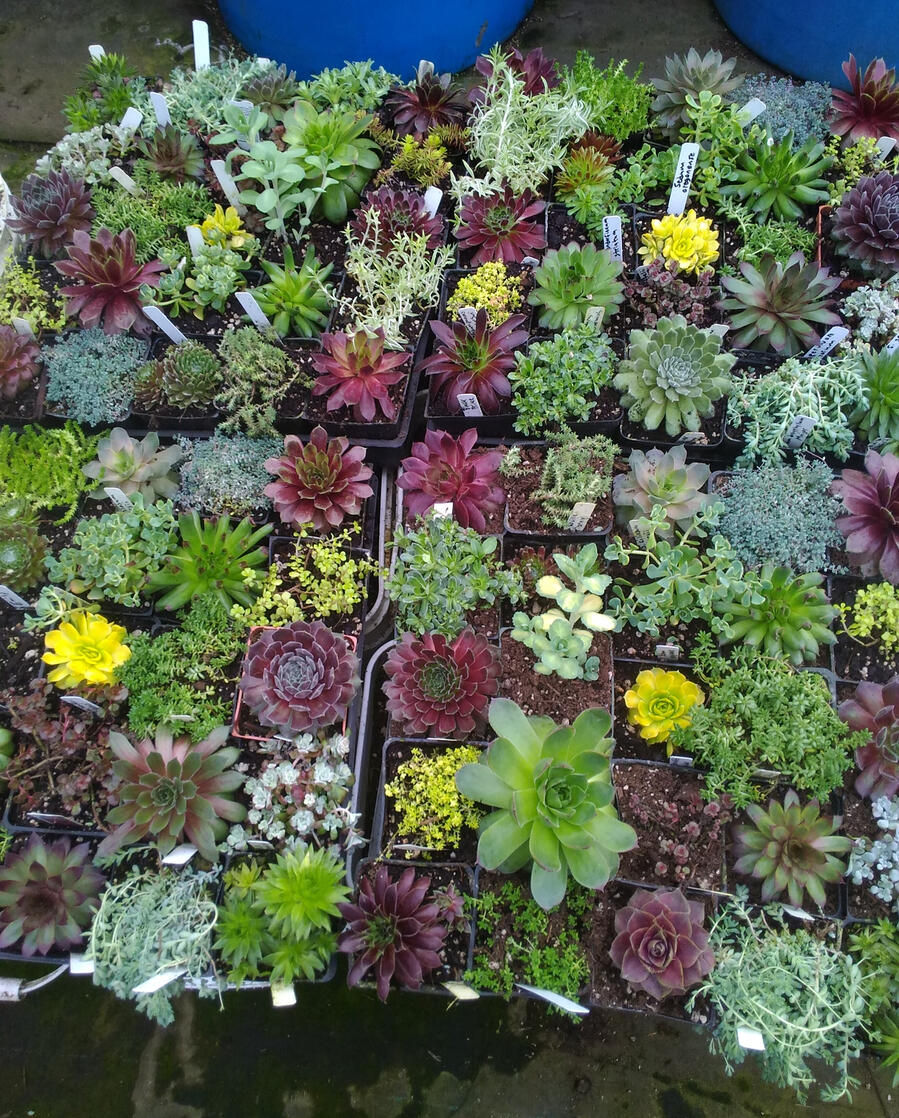
Sedum
Zone: 5
Size: 3” tall
Sunlight: Sun
Soil: Average, well drained
Description: Sedum make hardy succulent groundcovers. They have fleshy leaves that store water for up to three months of drought. Colors range from oranges, reds, greens, blues and purples and many are variegated. The diverse shapes add texture to the garden bed. Sedum are better suited to full-sun but some will do well in partial sun and certain varieties tolerate bright shade. They will withstand drought, deep freezes, poor soil and high temperatures and still reward with stunning colors and blooms.
Growing: No watering is necessary in our region. Plant in rock gardens, retaining walls, around stepping stones, or along pathways to suppress weeds Also good in containers, hanging baskets, green roofs, living walls, and much more. Many are evergreen, but some varieties will lose their leaves and go dormant in the winter, reemerging in spring with an explosion of color, attractive foliage, and blooms.

Sedum album -Blue
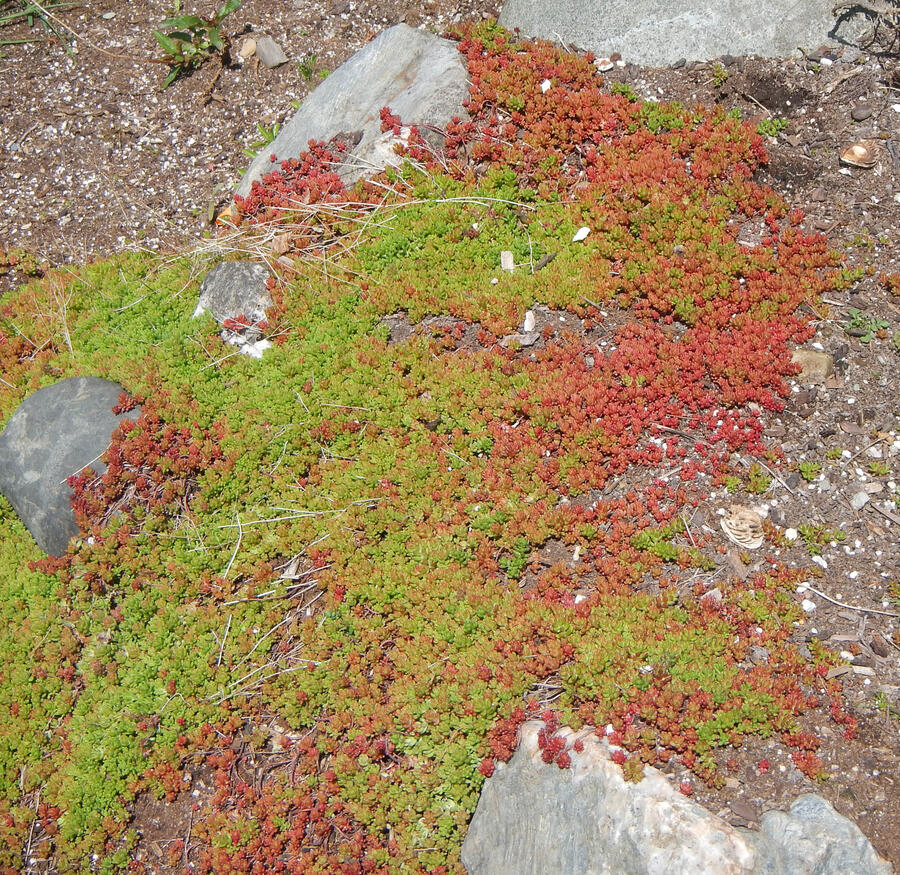
Sedum album micranthum
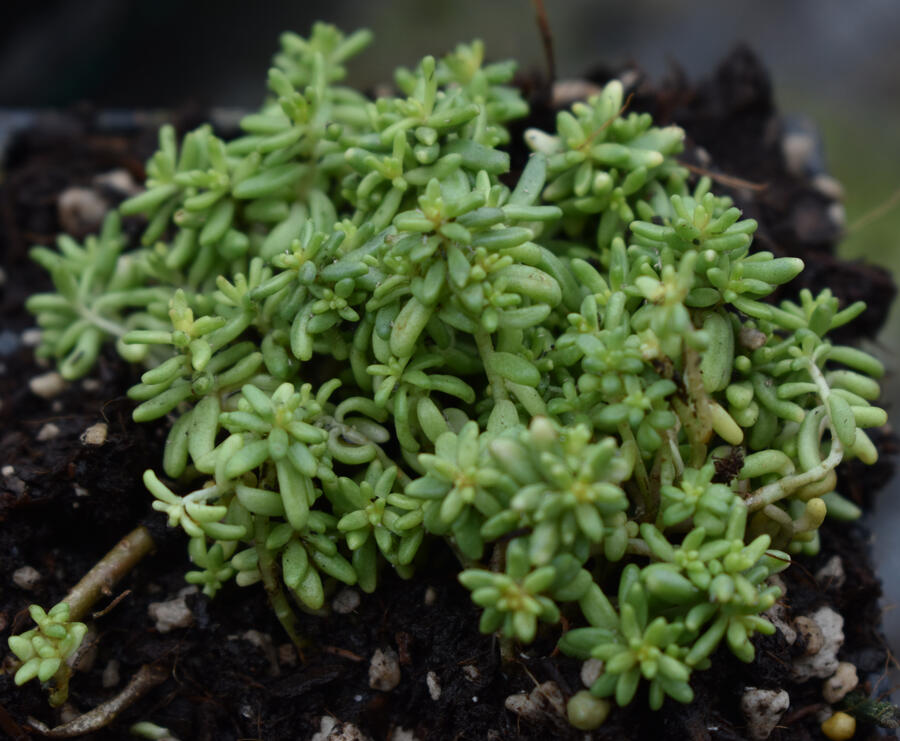
Sedum 'Belle de Inverno'

Sedum bithynicum 'Sea Stars'
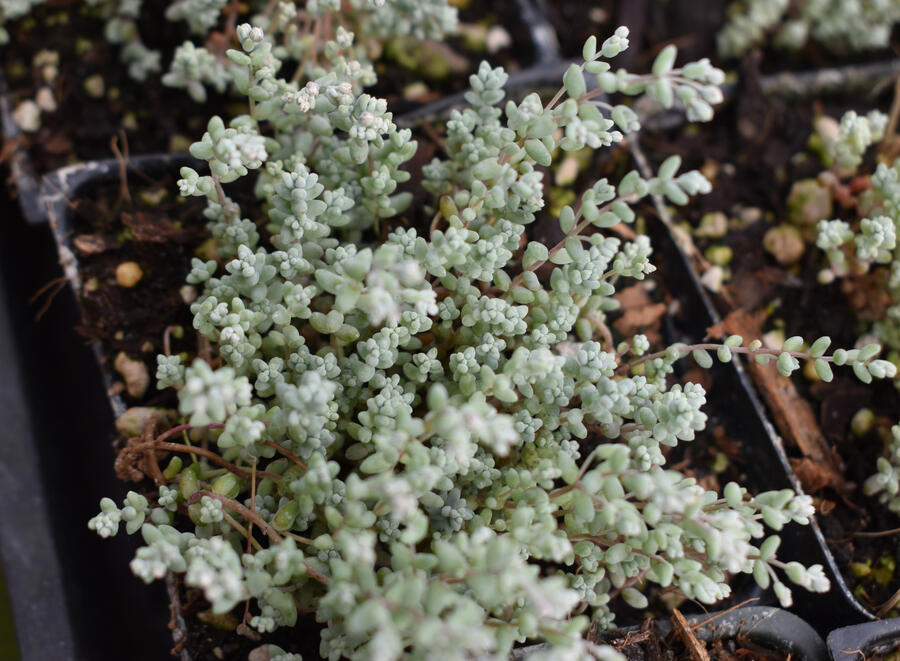
Sedum brevifolia induratum
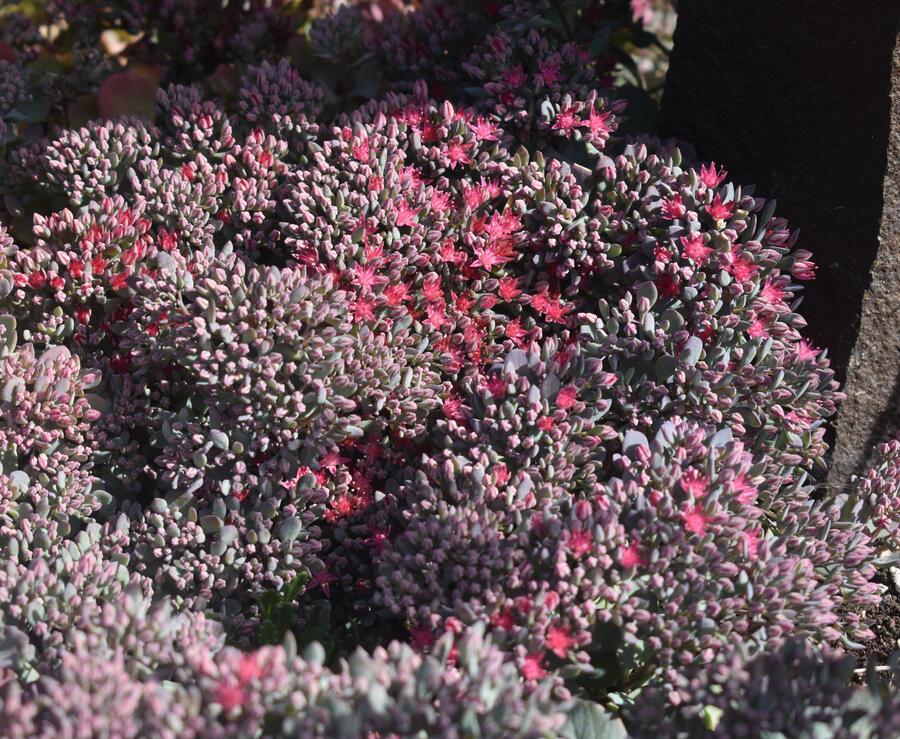
Sedum cauticola
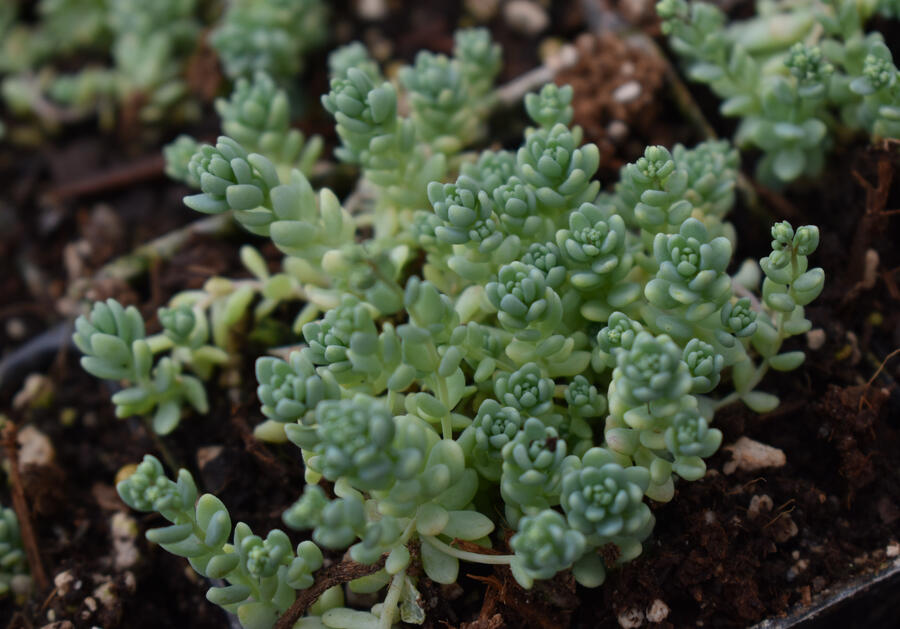
Sedum dasyphyllum Major'
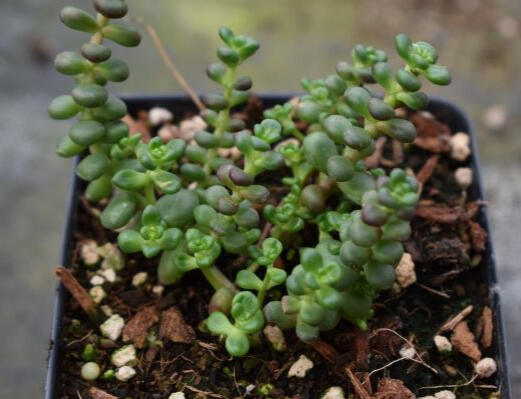
Sedum divergens Native
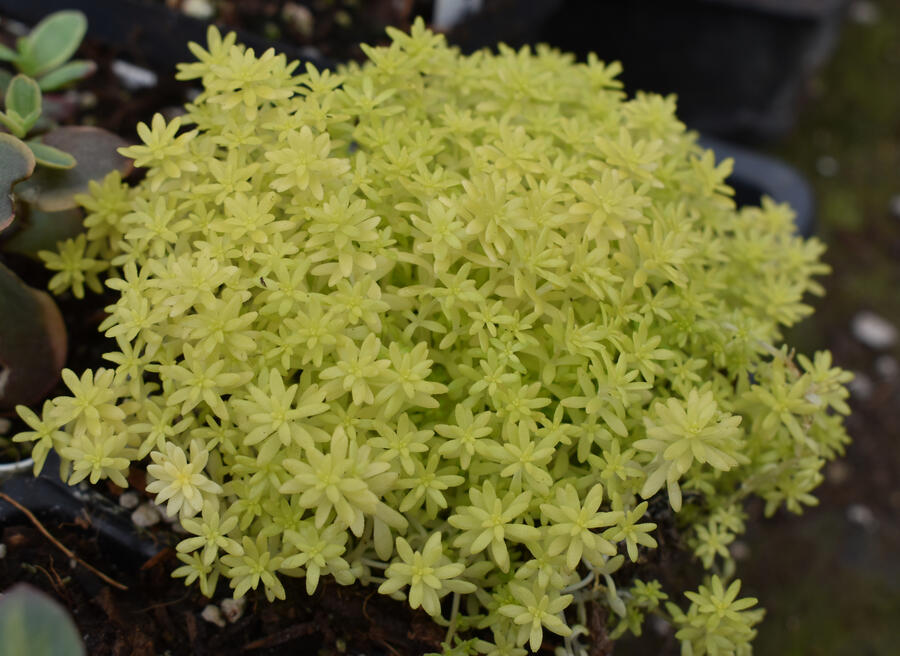
Sedum hispanicum minum aureum
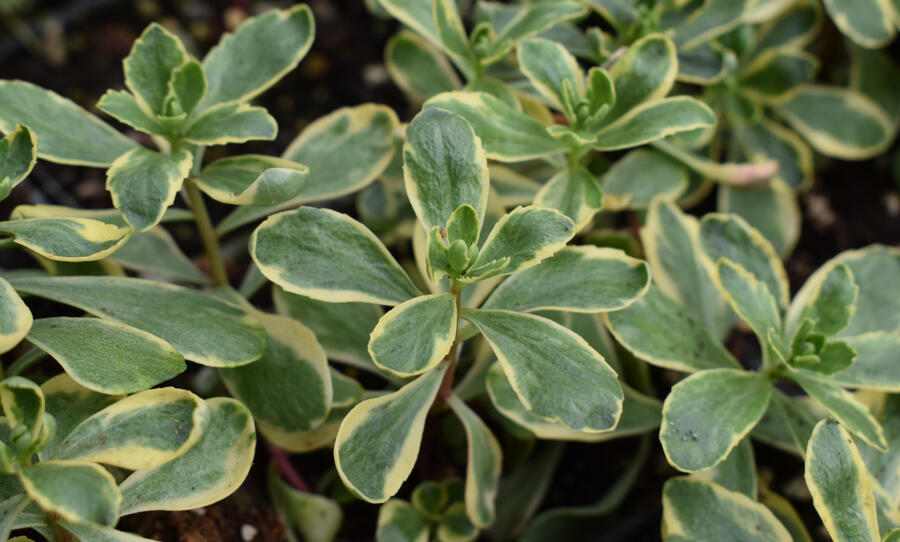
Sedum kamtschaticum variegatum
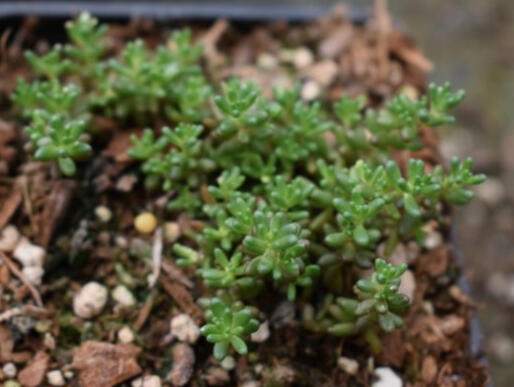
Sedum lanceolatum - Native
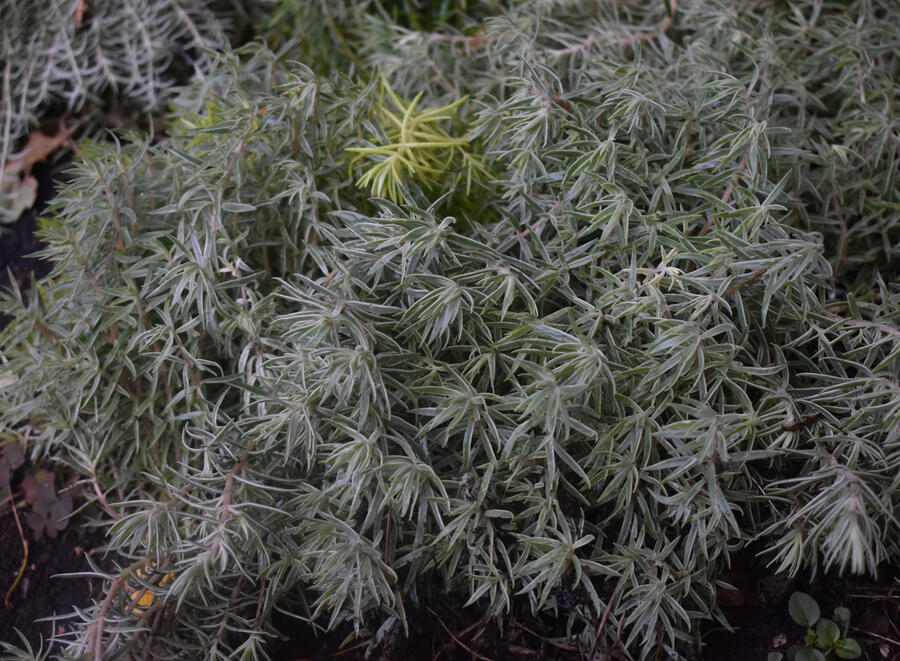
Sedum lineare variegatum
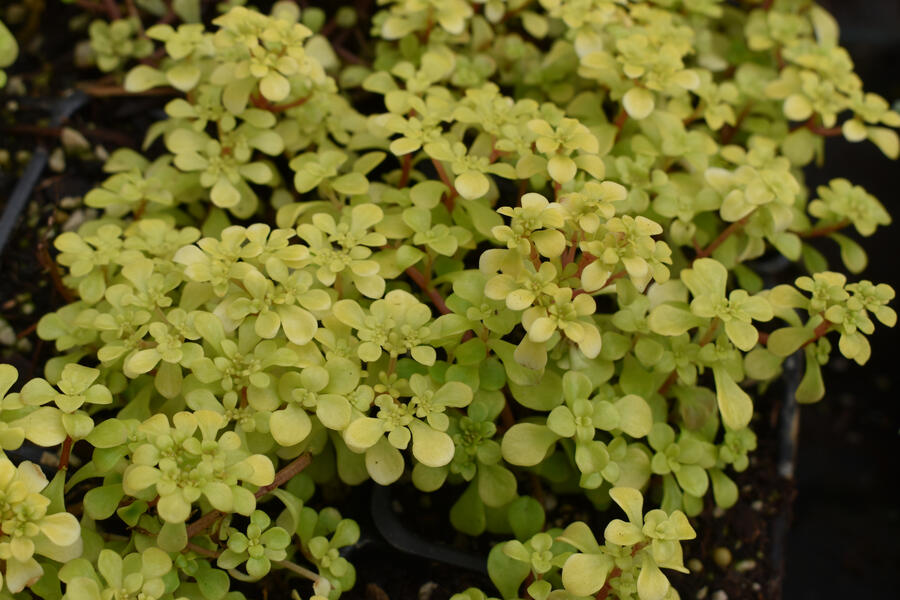
Sedum makinoi 'Ogon'
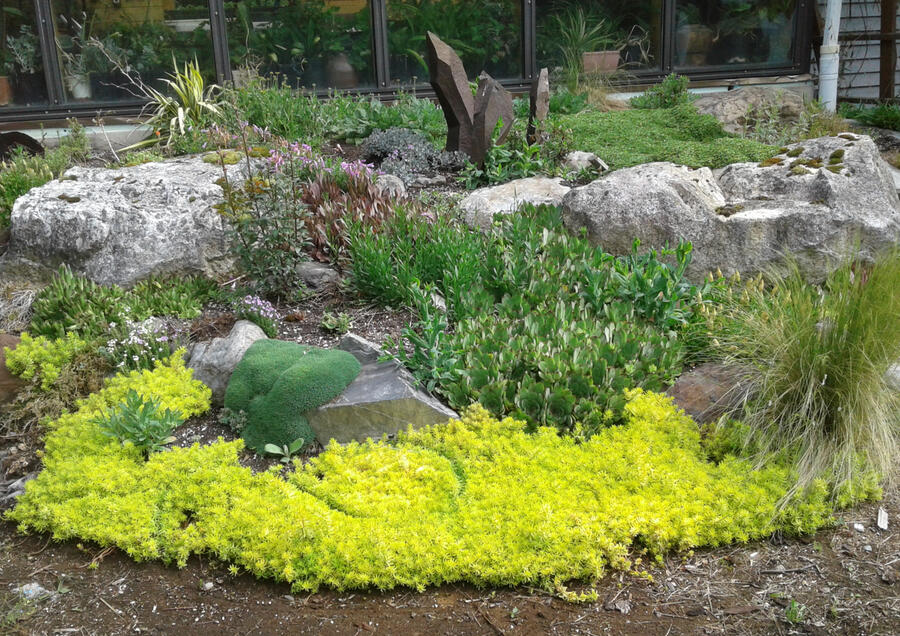
Sedum mexicanum 'Lemon Coral'
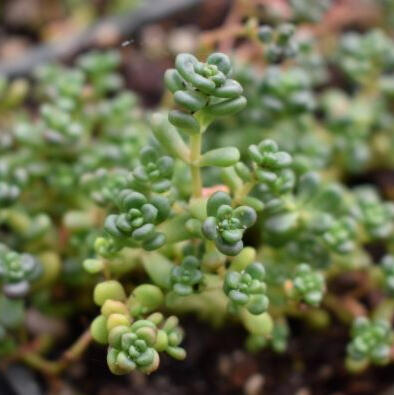
Sedum oreganum - Native
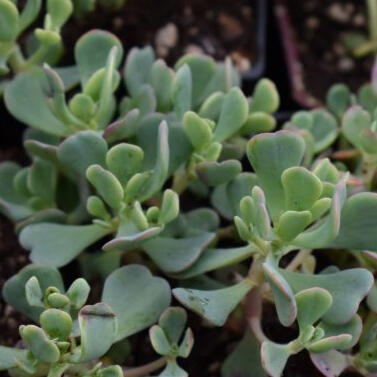
Sedum oregonense - Native
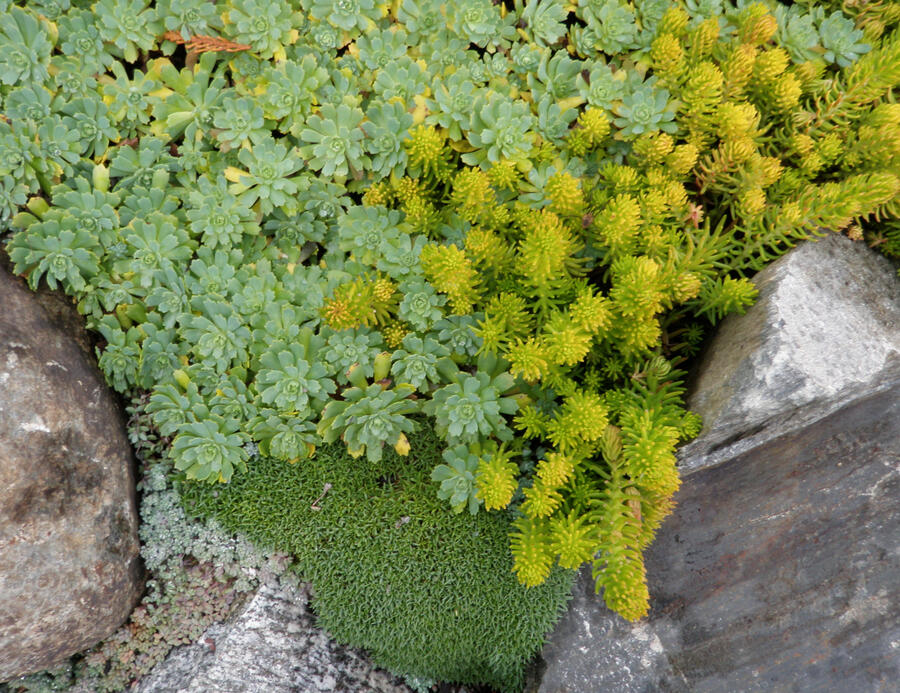
Sedum pachyclados - 'Thick Stem'
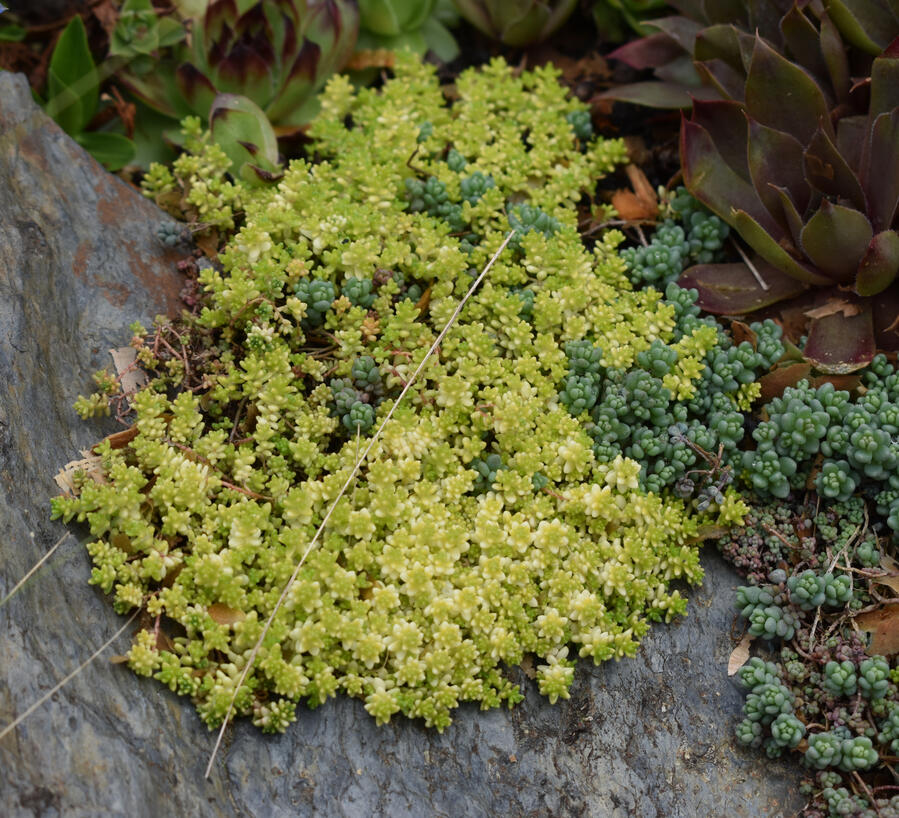
Sedum phocas
'Winter Sun'
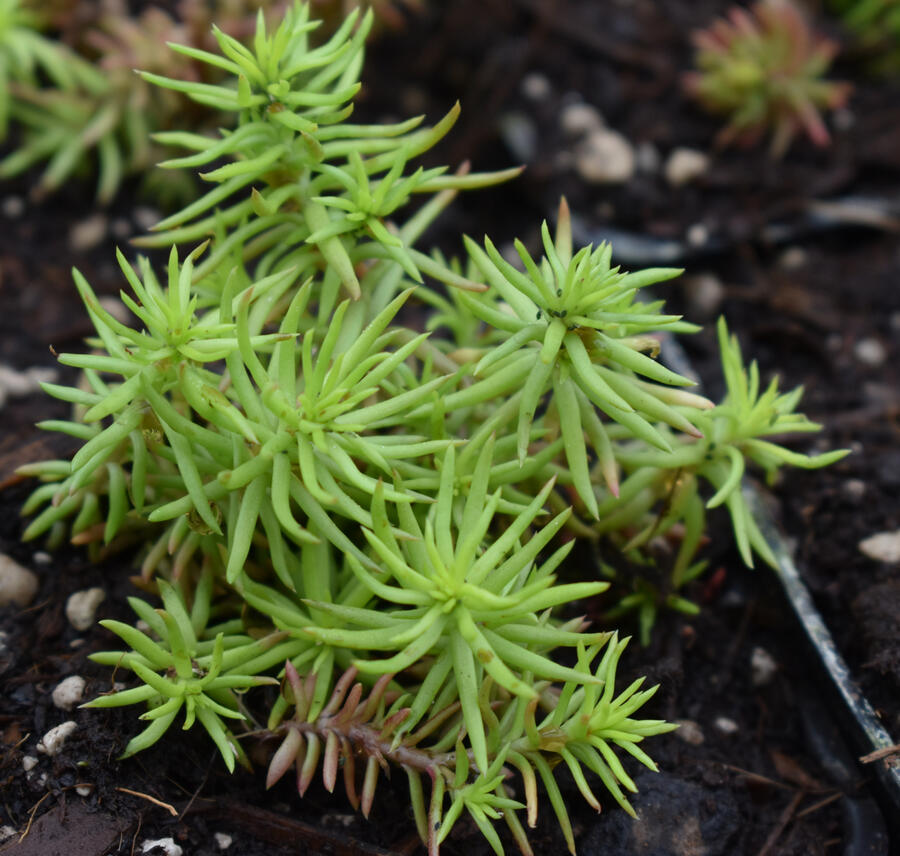
Sedum rupestre 'Angelina'
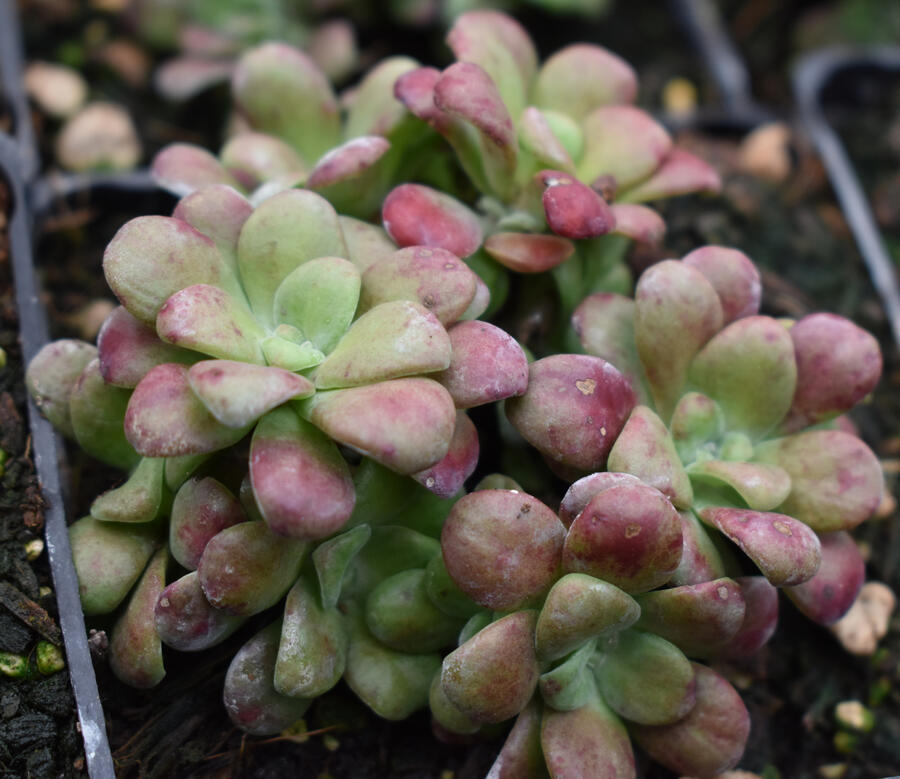
Sedum spathulifolium 'Atropurpurea'
Native
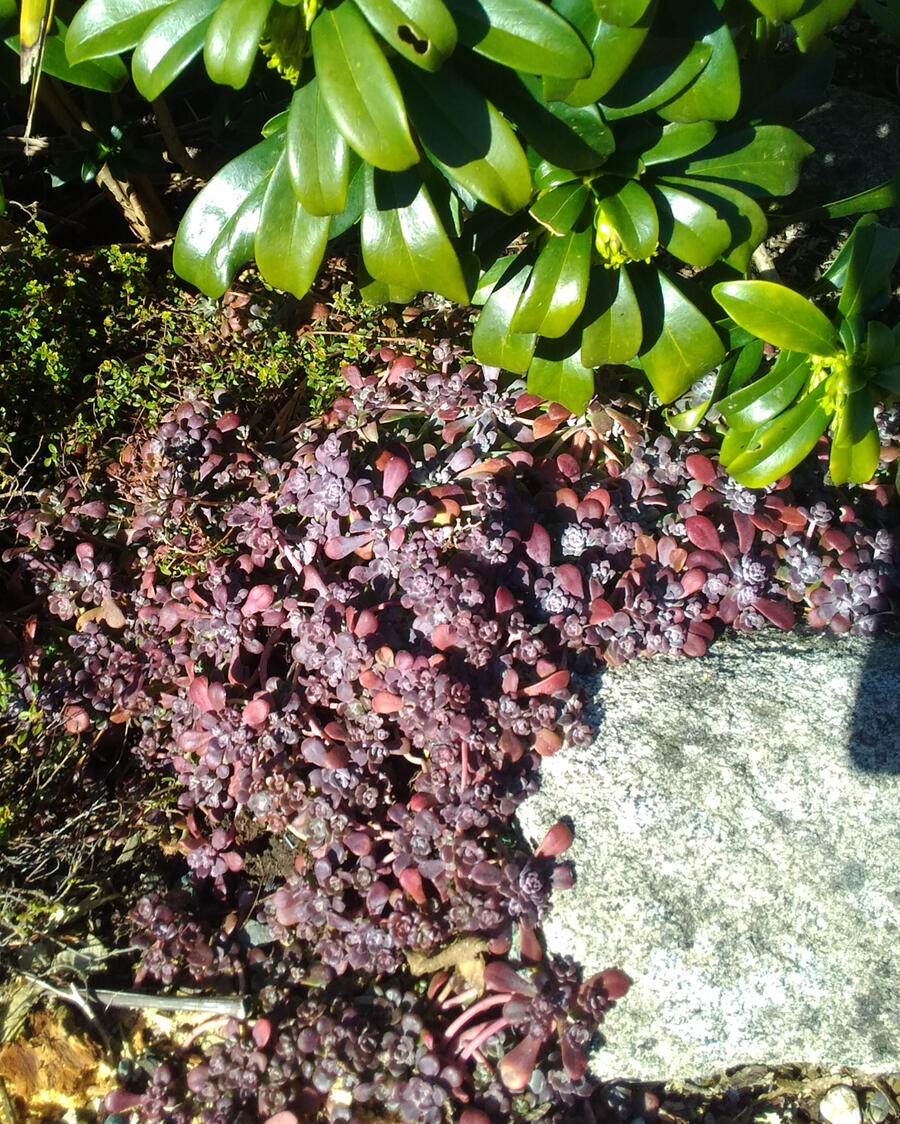
Sedum spathulifolium
'Moonglow
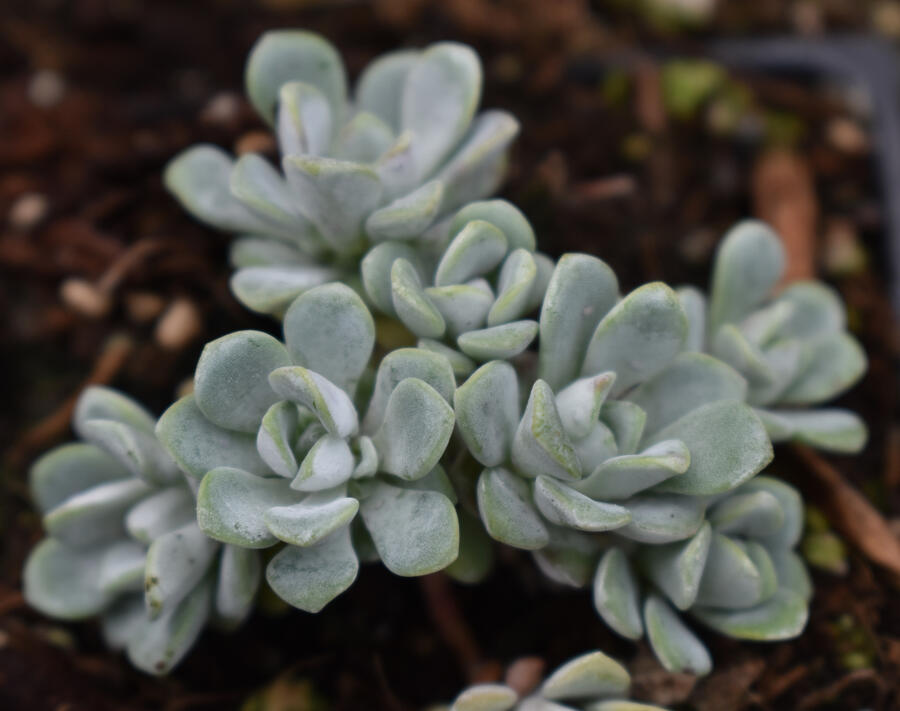
Sedum spathulifolium 'Cape Blanco'
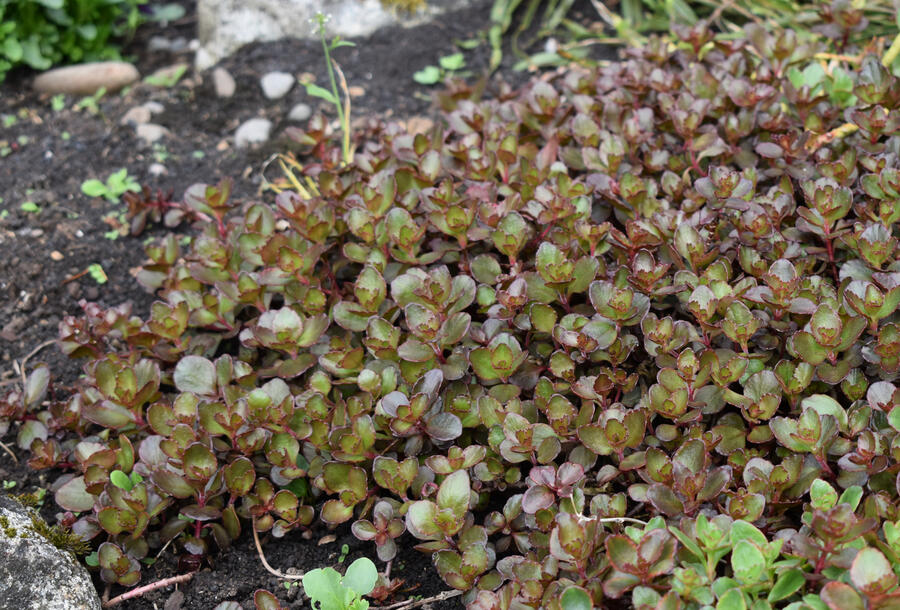
Sedum spurium 'Dragon's Blood'
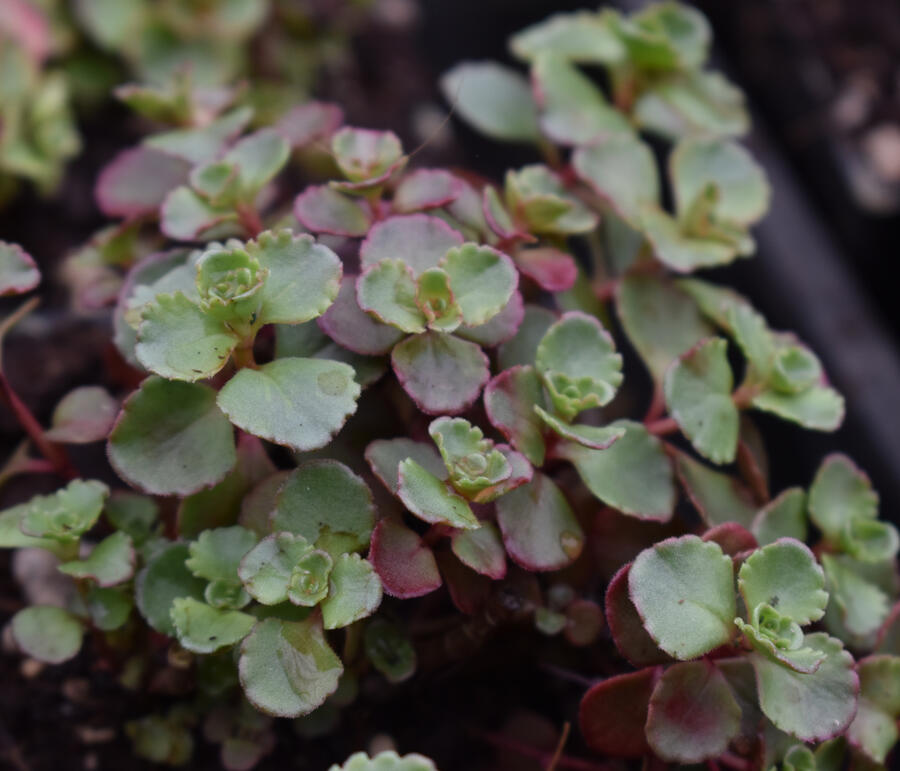
Sedum spurium 'Red Carpet'
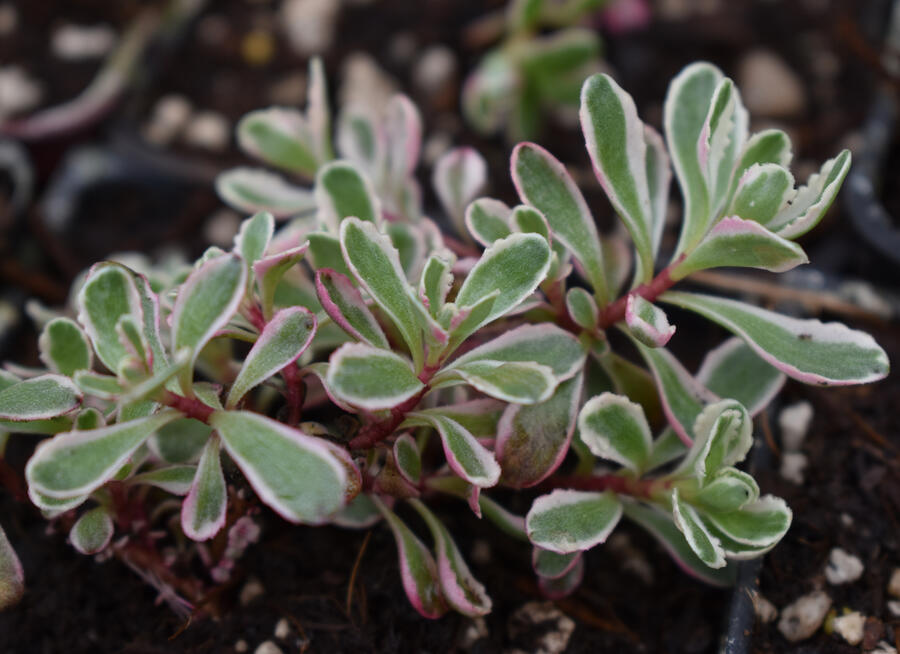
Sedum spurium 'Tricolor'
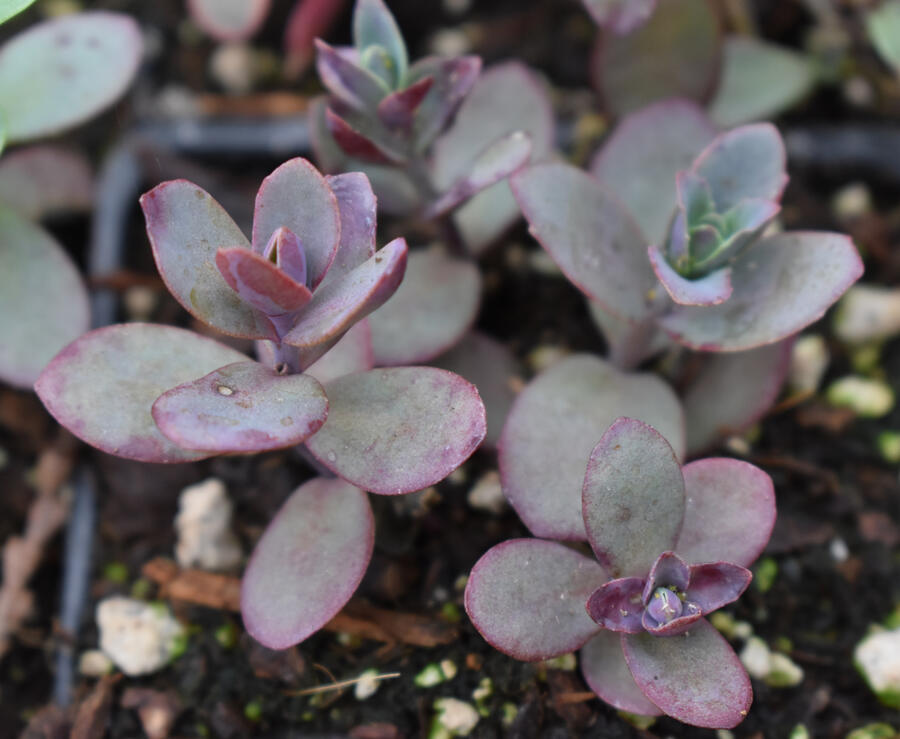
Sedum Sunsparkler 'Wildfire'
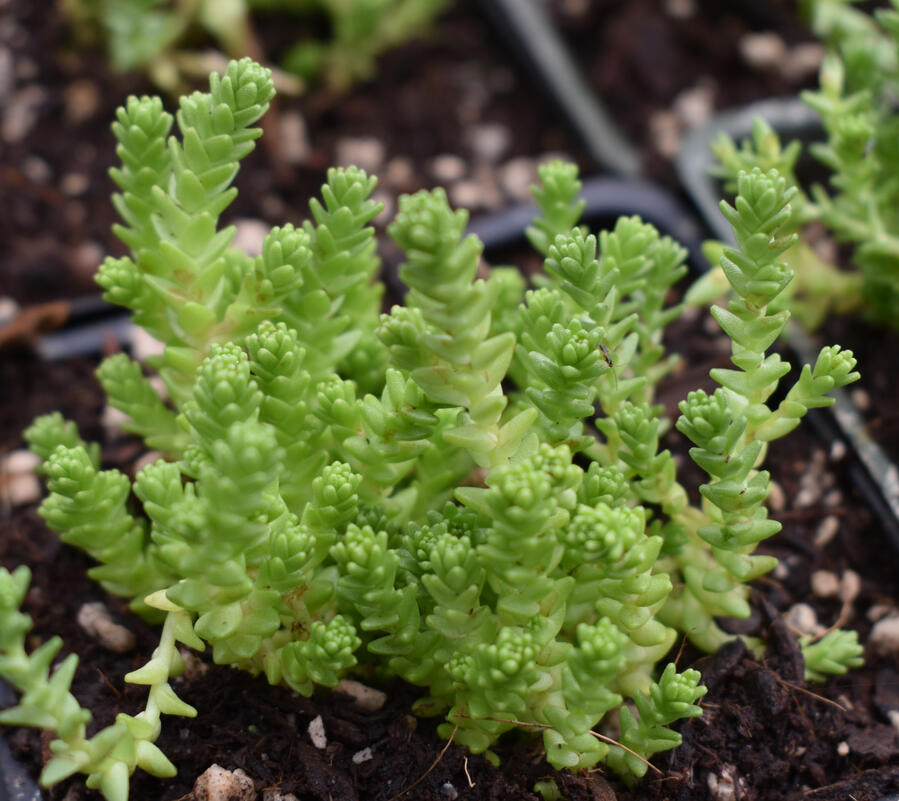
Sedum urvilleii
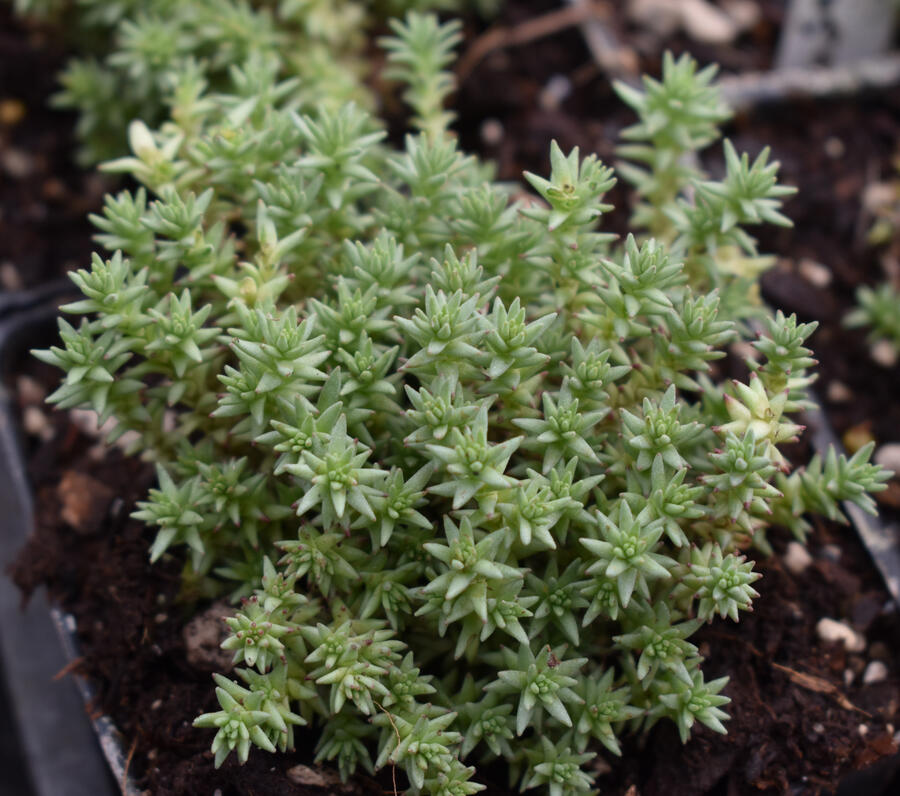
Sedum urvilleii stribrnyi
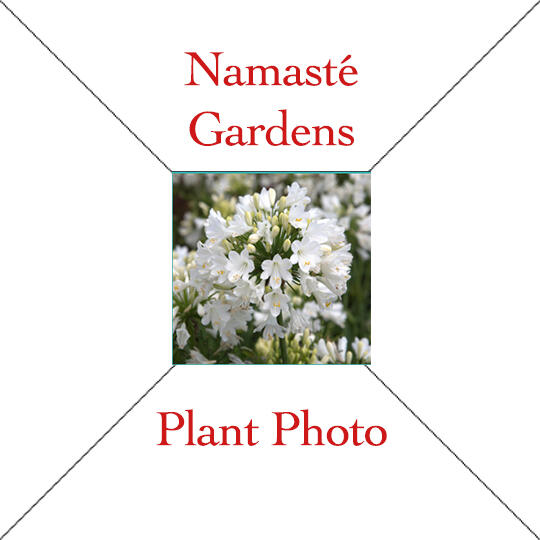
Plant name
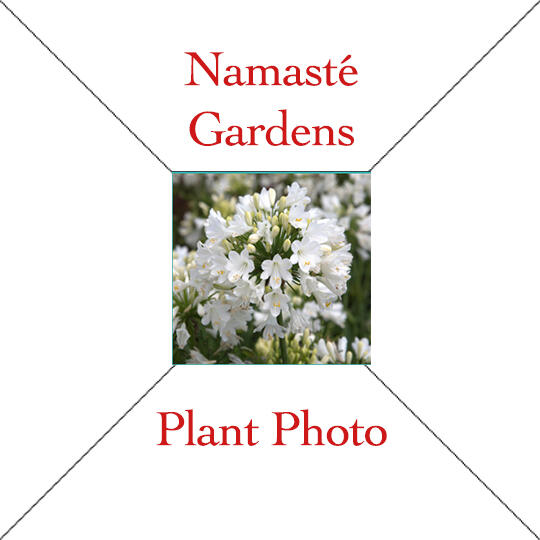
Plant name
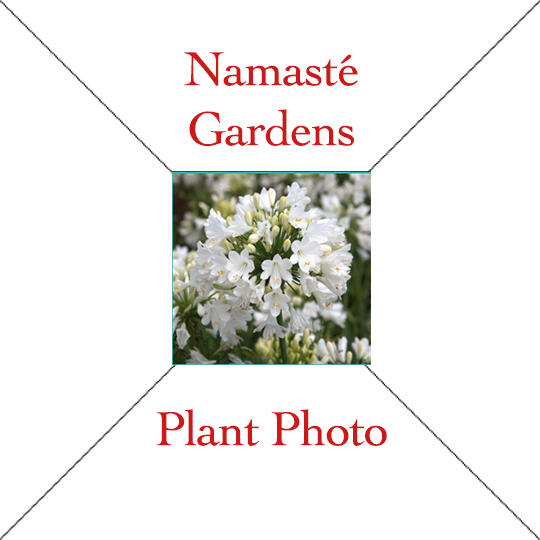
Plant name
Text
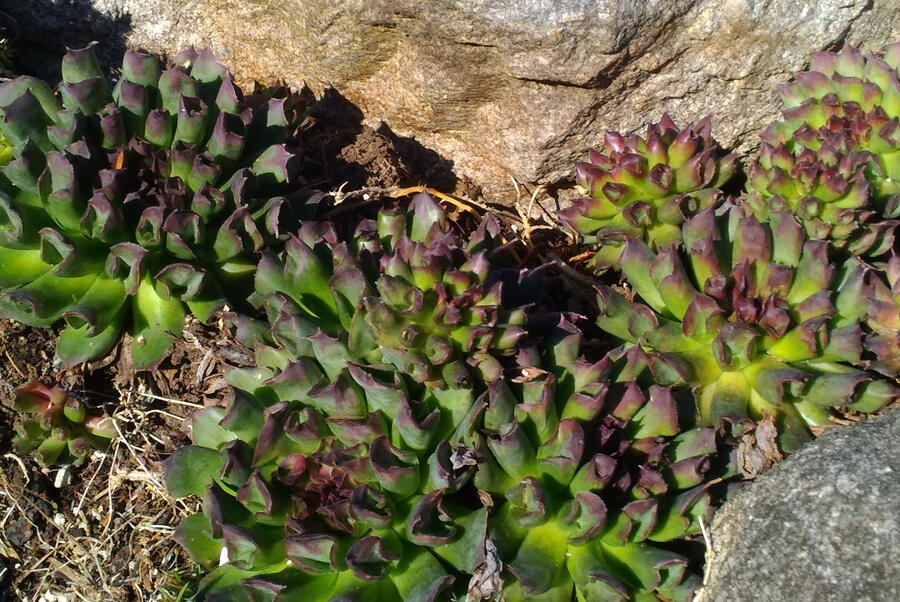
Sempervivum – Hens and Chicks
Zone: 5
Size: 3” tall
Sunlight: Sun
Soil: Average, well drained
Description: Easy to grow and beautiful outdoor succulents they resemble an unfurled rose with seasonal blushes of colors. They tolerate droughts, deep freezes, and poor soil, and will brighten any planting with eye-catching colors, forms, and textures. Sempervivum will bloom after a year or two when a rosette hen will send up a bloom stalk and open delicate, star-shaped flowers of pink, red, or yellow. This process marks the end of a hen's life, but the chicks surrounding it will survive and grow into the vacated space.
Growing: Sempervivum prefer a lean, gritty soil or sandy loam and need full sun in our growing area.

Sempervivum 'Black Prince'
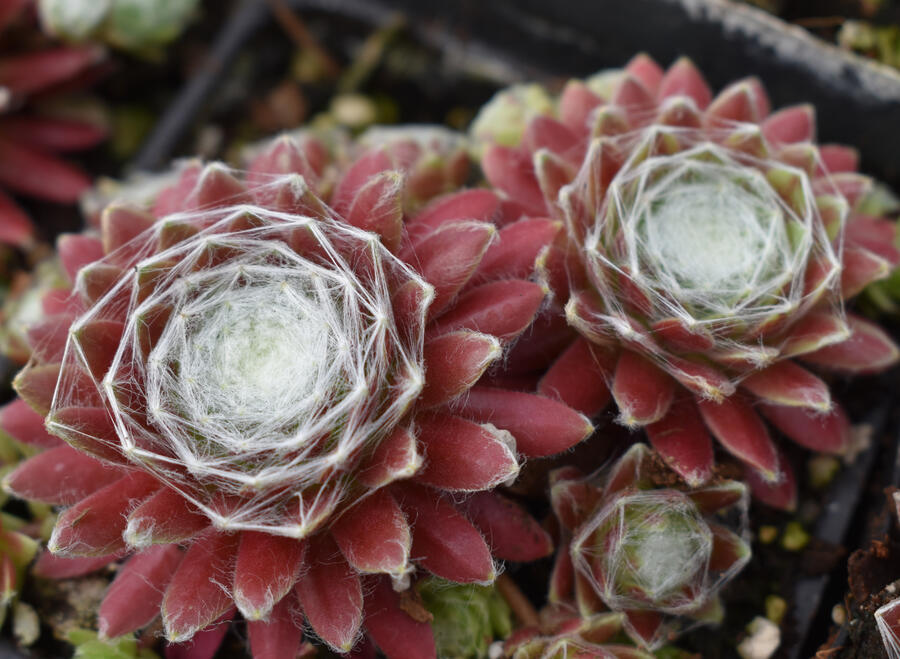
Sempervivum 'Cobweb'
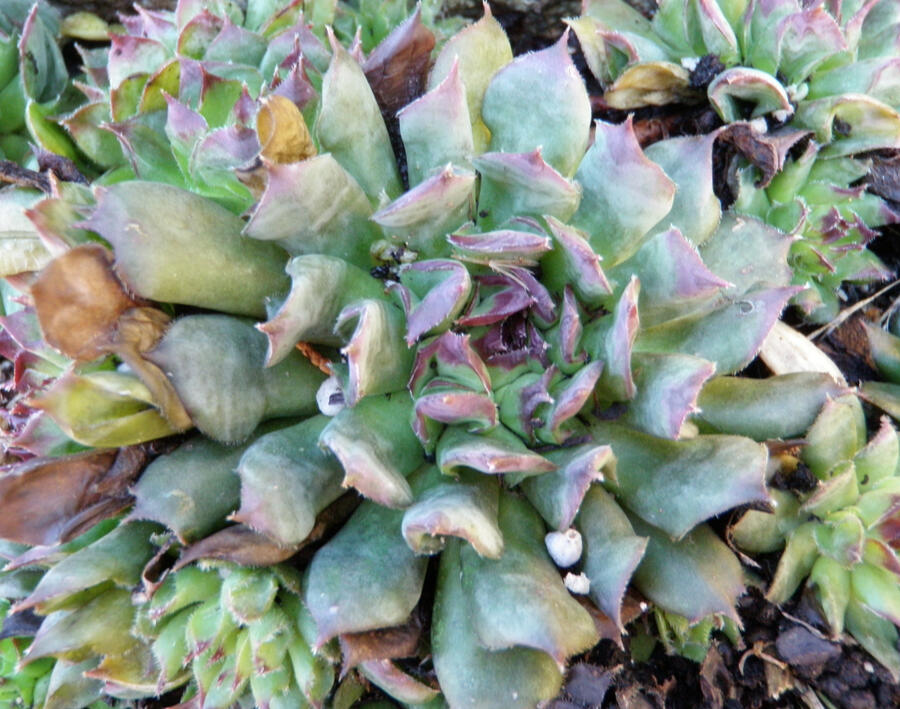
Sempervivum 'Contorted'
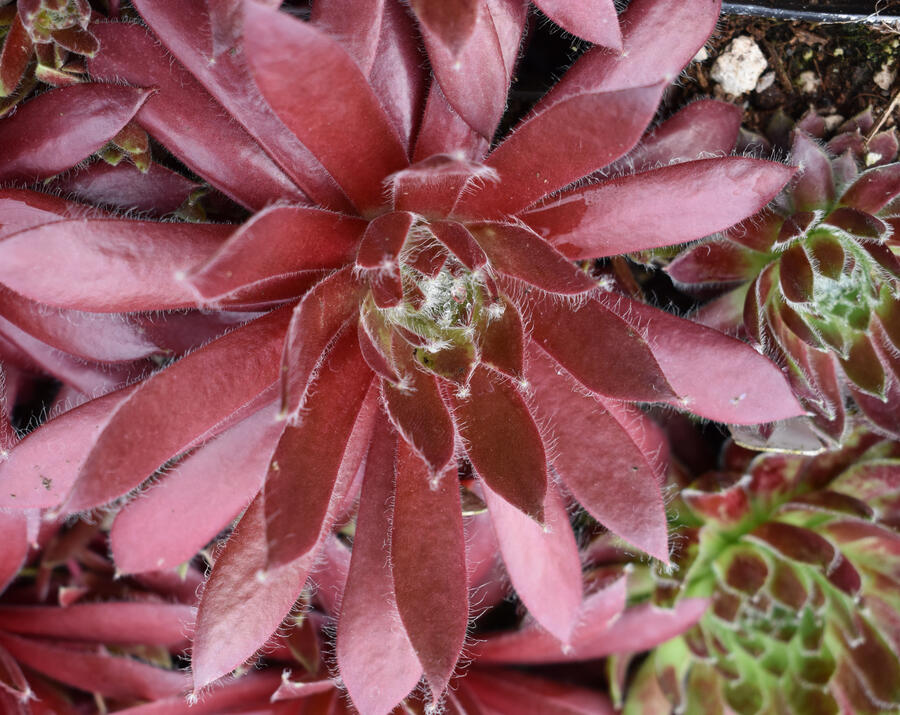
Sempervivum 'Corsair'
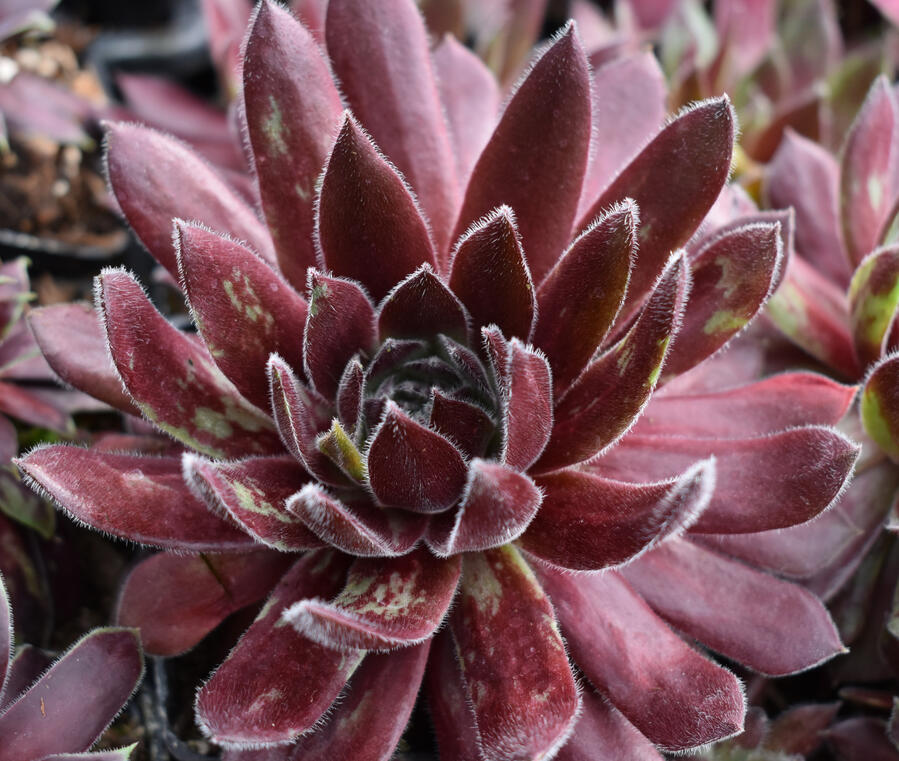
Sempervivum 'Diamond'
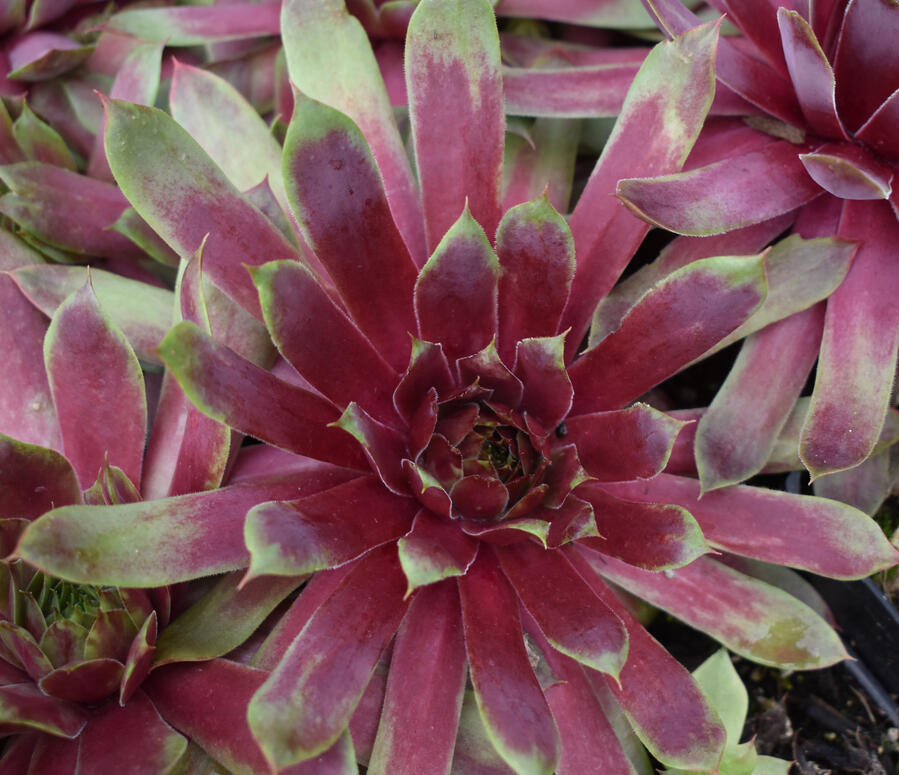
Sempervivum 'Fargo'
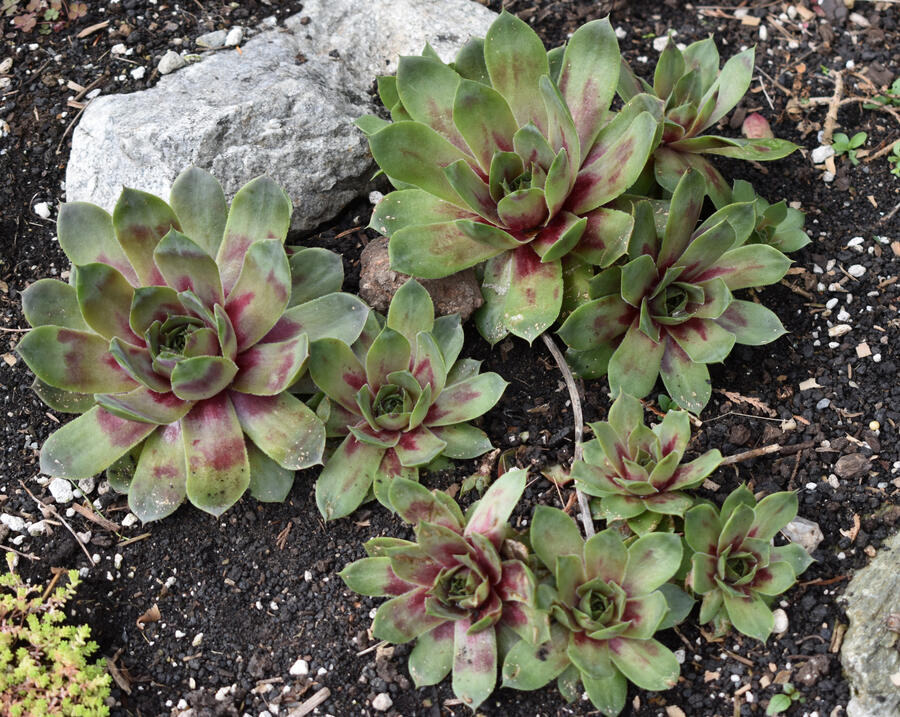
Sempervivum 'Fuego'
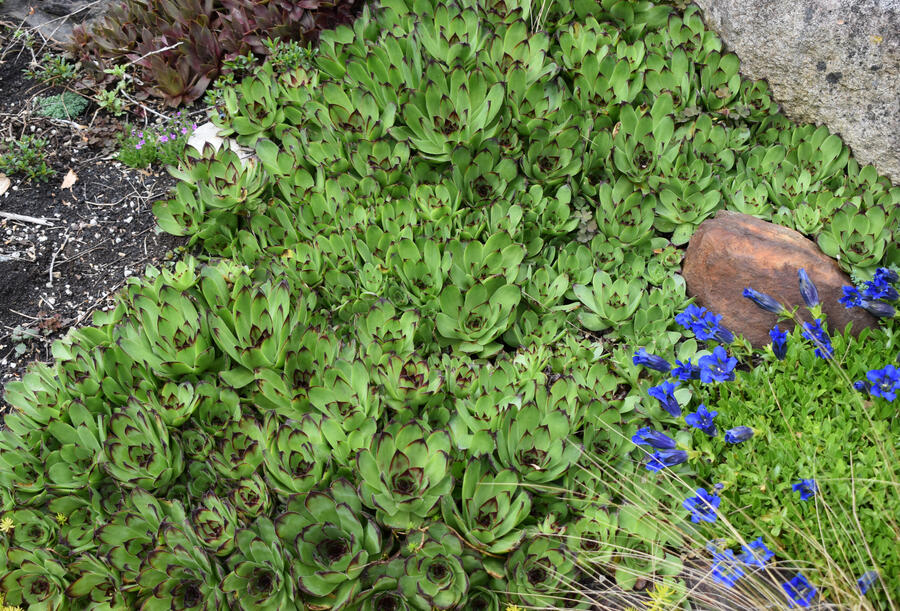
Sempervivum - Green'
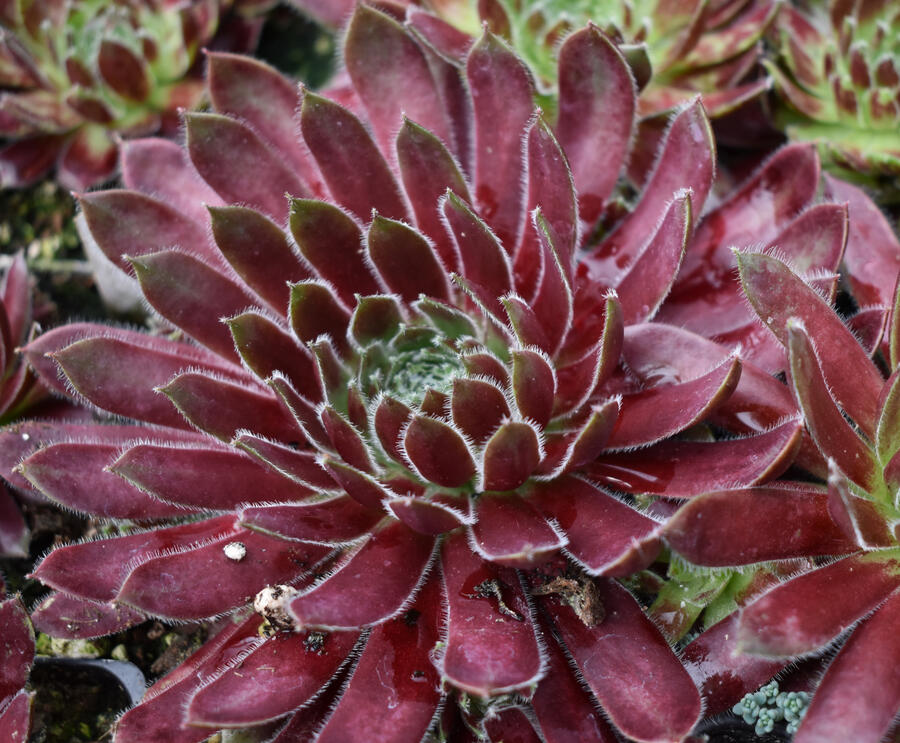
Sempervivum 'Montage
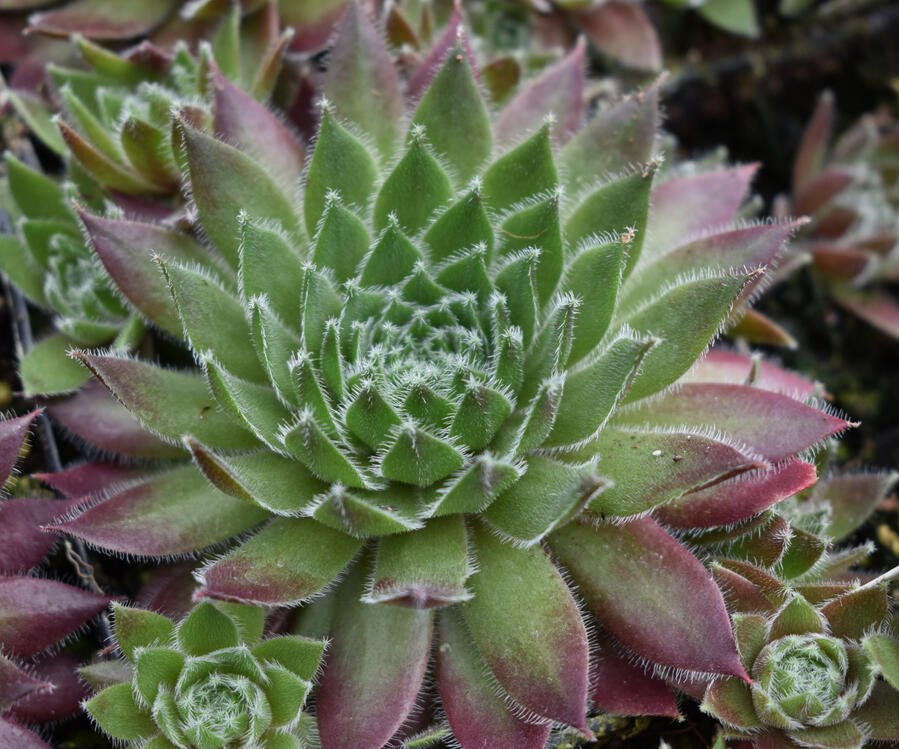
Sempervivum 'Pacific Spring Frost'
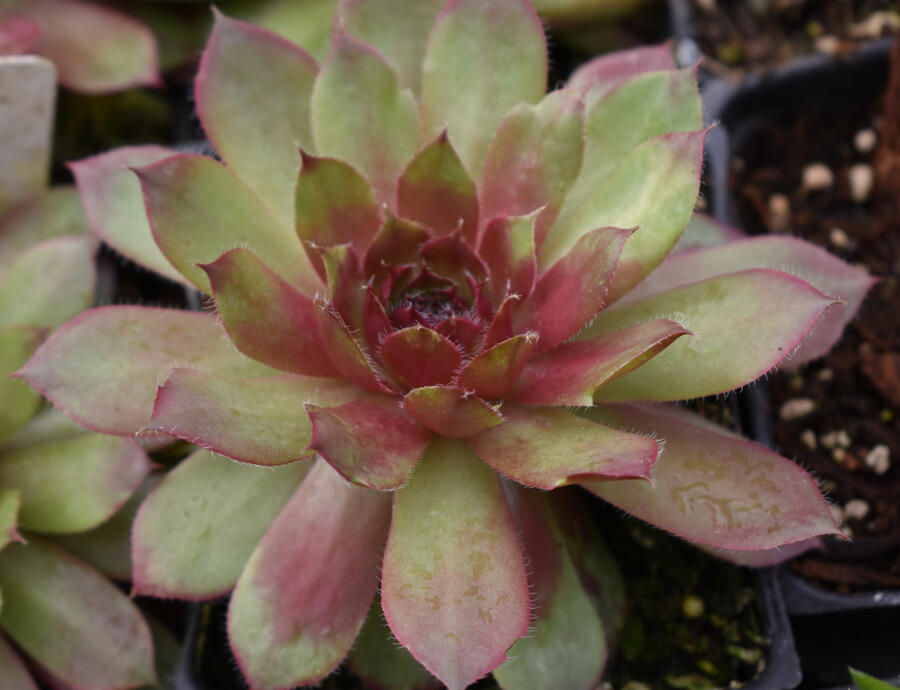
Sempervivum 'Patrician'
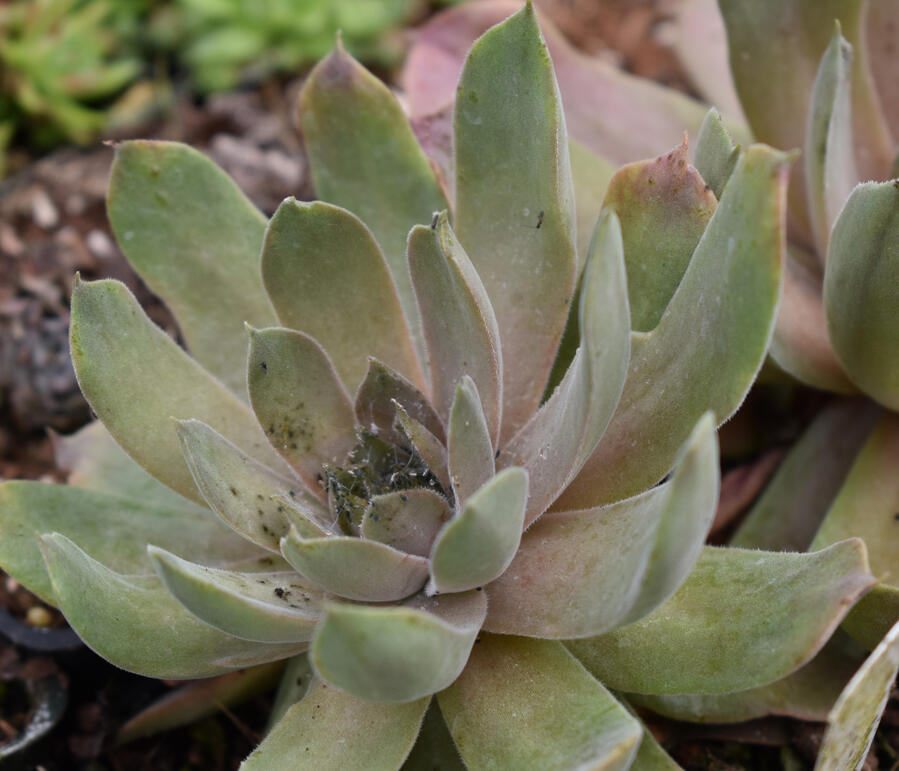
Sempervivum 'Pluto'
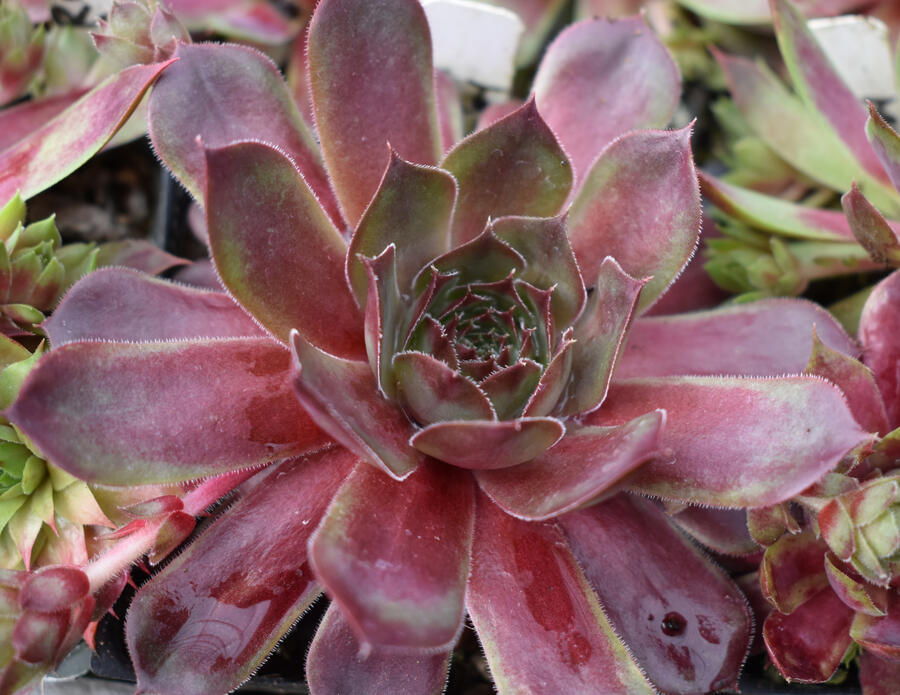
Sempervivum 'Royal Ruby'
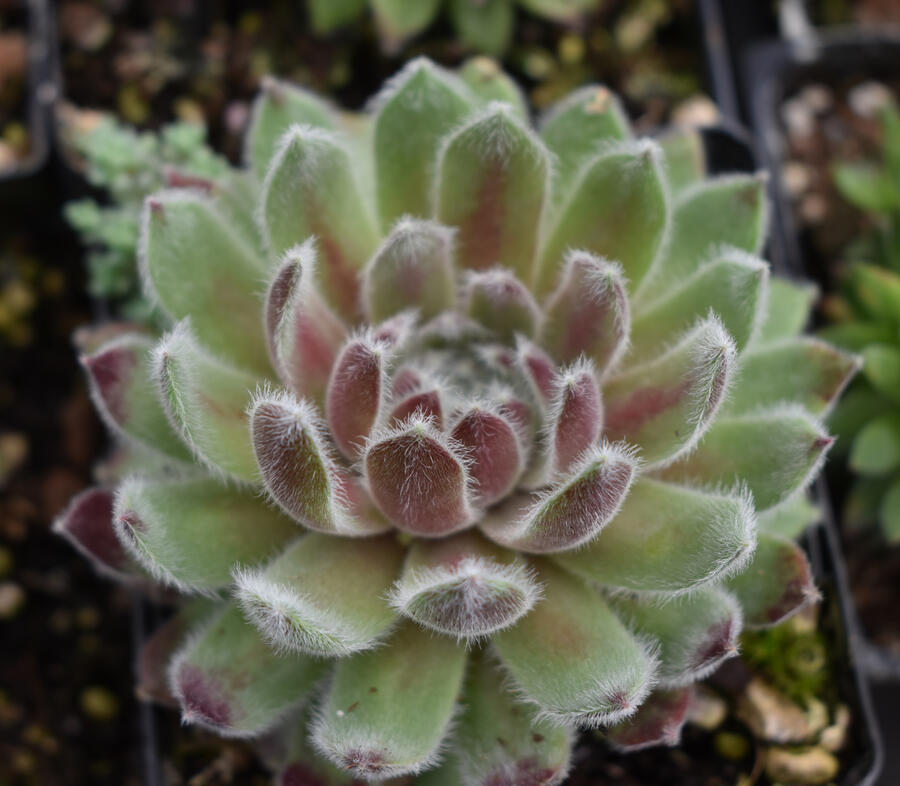
Sempervivum 'Silver Thaw'
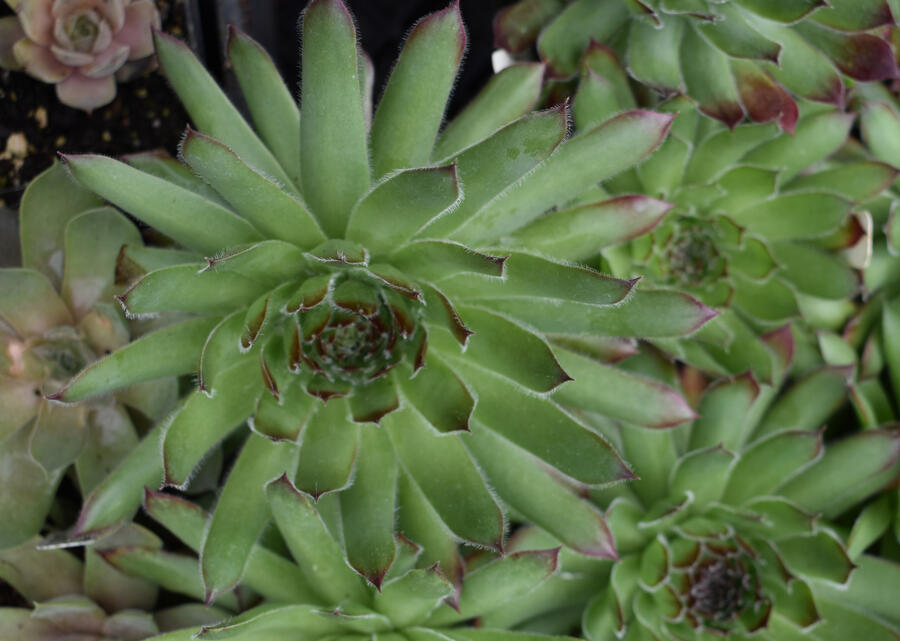
Sempervivum 'Sunset'
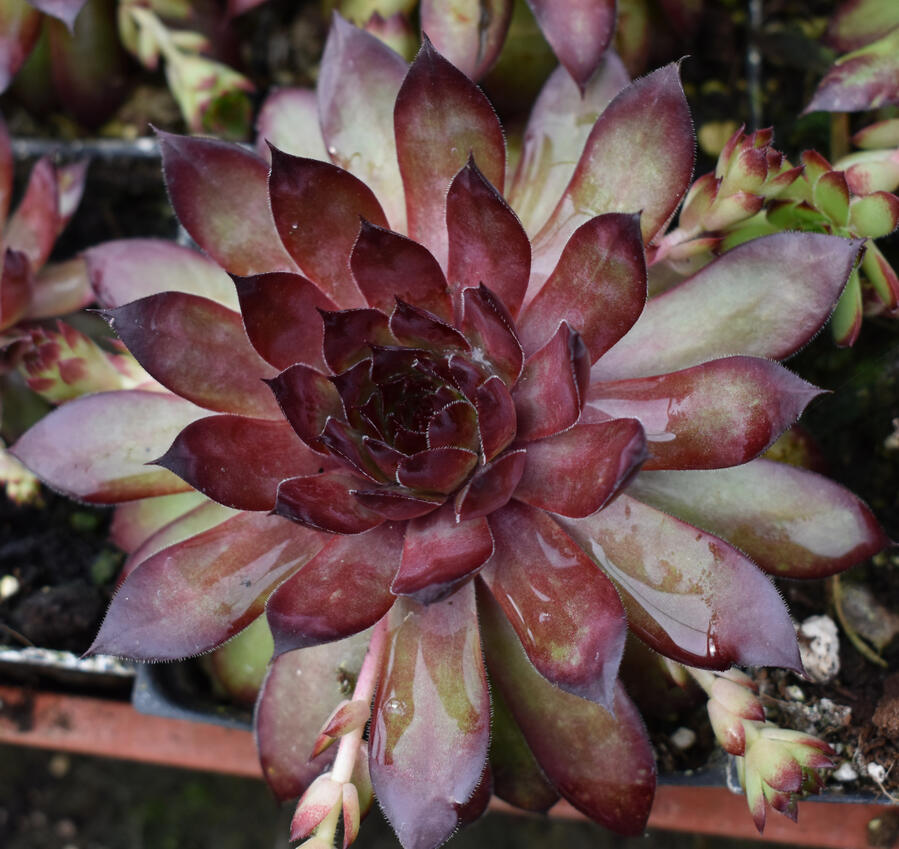
Sempervivum tectorum
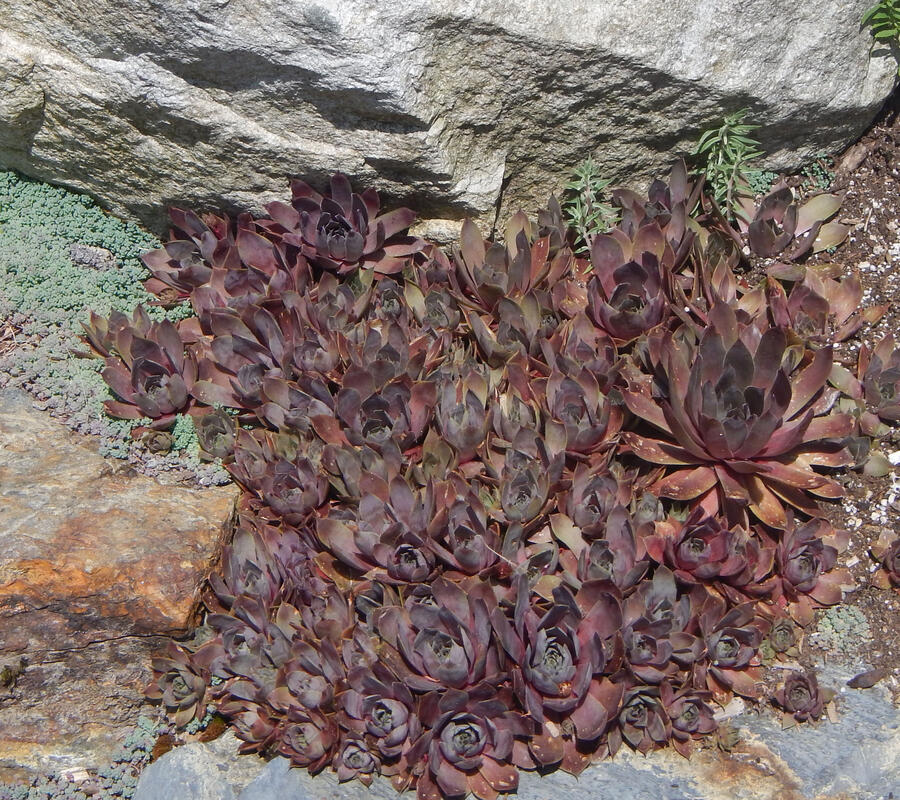
Sempervivum - Red

Plant name
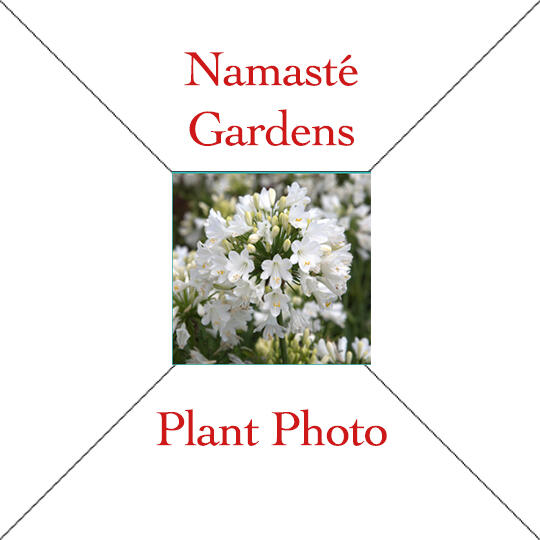
Plant name
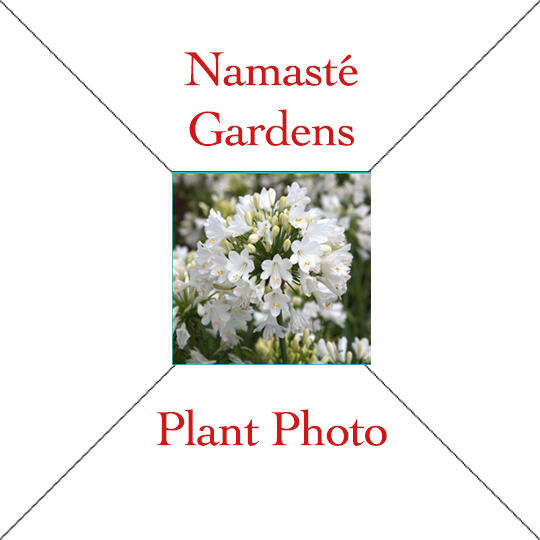
Plant name
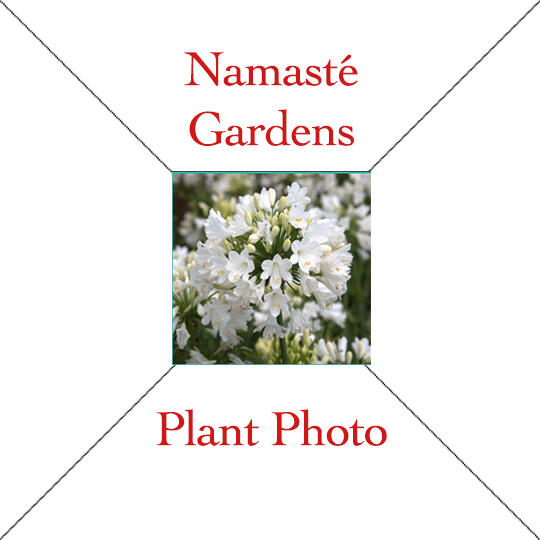
Plant name
Text
Zoners
These succulents are not winter hardy in our area and must be grown as houseplants to survive. I avoided them at first but envied my sister who could grow them in her yard in California. Then I built myself a sunroom and that was that. I now have collected a large number of different species and have thrilled to see them do their thing indoors.
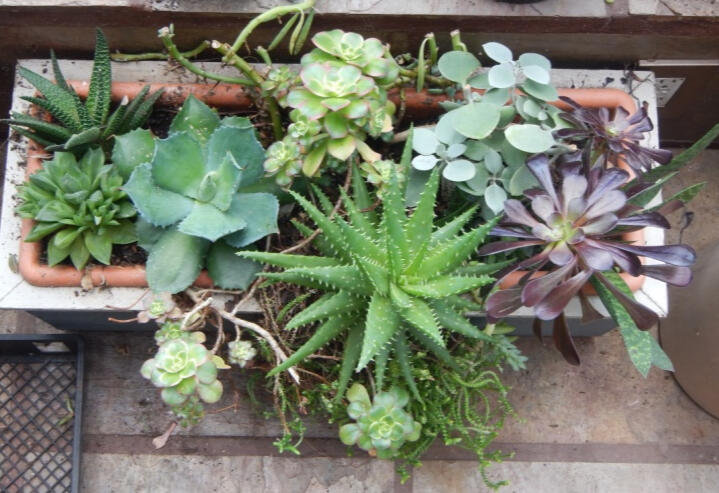
Zone 9+ Succulents
These succulents are not winter hardy in our area and must be grown as houseplants to survive. Succulent plants are water-retaining plants adapted to arid climate or soil conditions. They store water in their leaves, stems and/or roots. The storage of water often gives succulent plants a more swollen or fleshy appearance. Their water retaining qualities make them easy to care for plants. Old-hand gardeners know that indoor succulent plants require a certain amount of neglect. They should be planted in shallow, gritty, free-draining soil. Most love lots of light and need at least six hours of sunlight a day to stay healthy. Some exceptions include Haworthias, Gasterias, Hoyas, Peperomia, Night-Blooming Cereus and some Crassulas, When succulents are indoors, it’s often hard for them to get enough sunlight. Place them near the brightest window of your home or office. Succulents like to have their roots soaked with water, dry out quickly, then, watered again after the soil has been dry for a few days. They need good airflow to maintain healthy roots, stem and leaves.
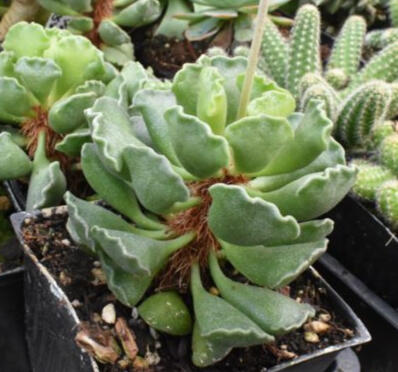
Adromischus cristatus
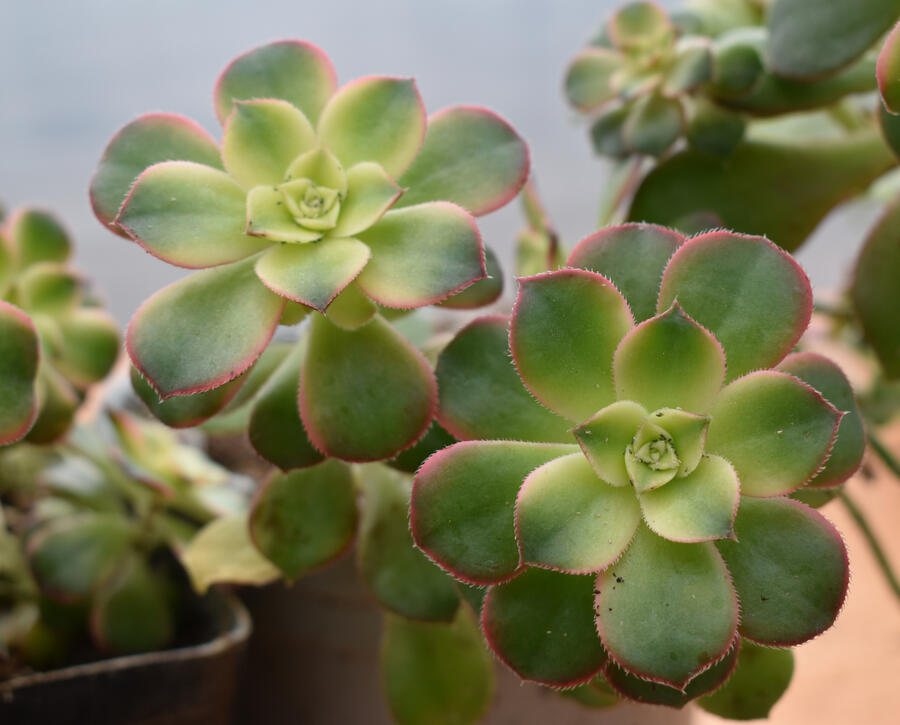
Aeonium 'Kiwi'
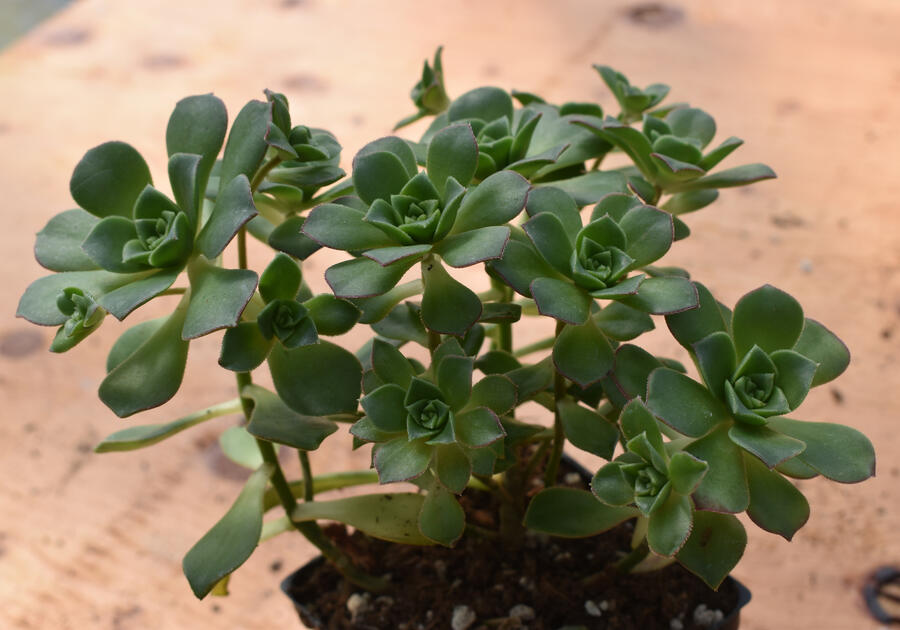
Aeonium 'Pinwheel'
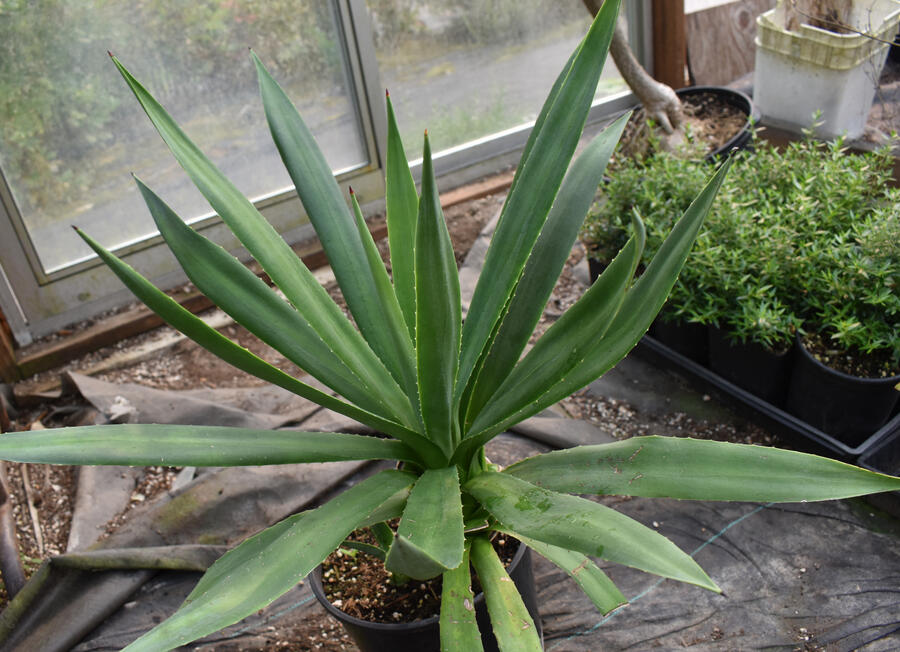
Agave americana - Century Plant
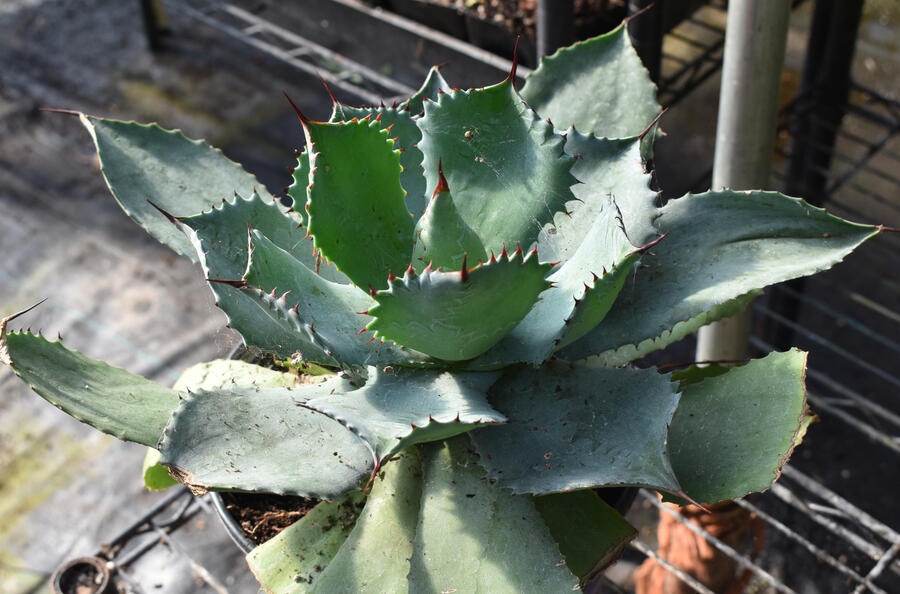
Agave pumilla
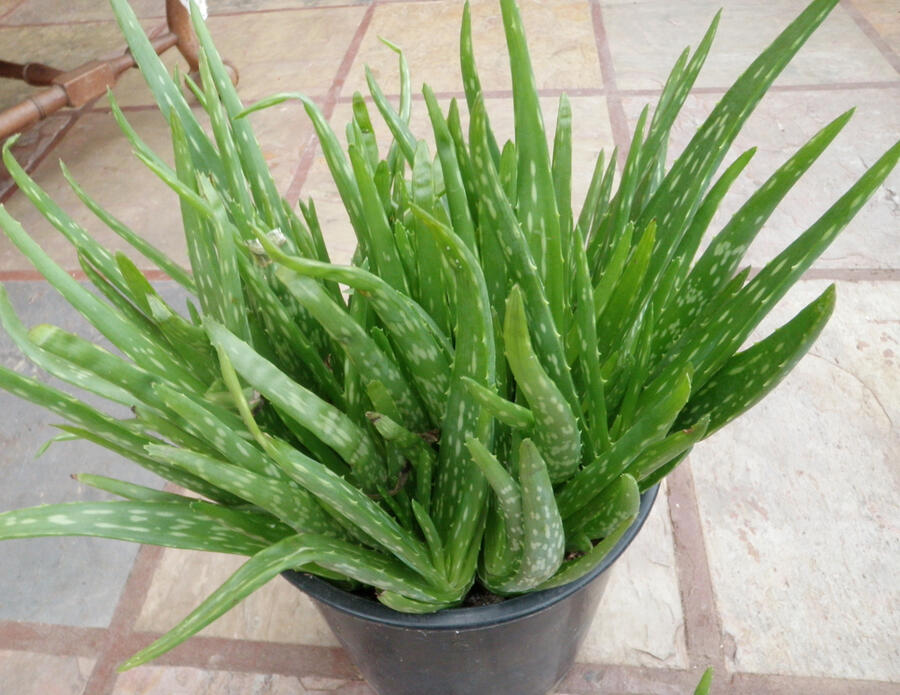
Aloe - Bahaman
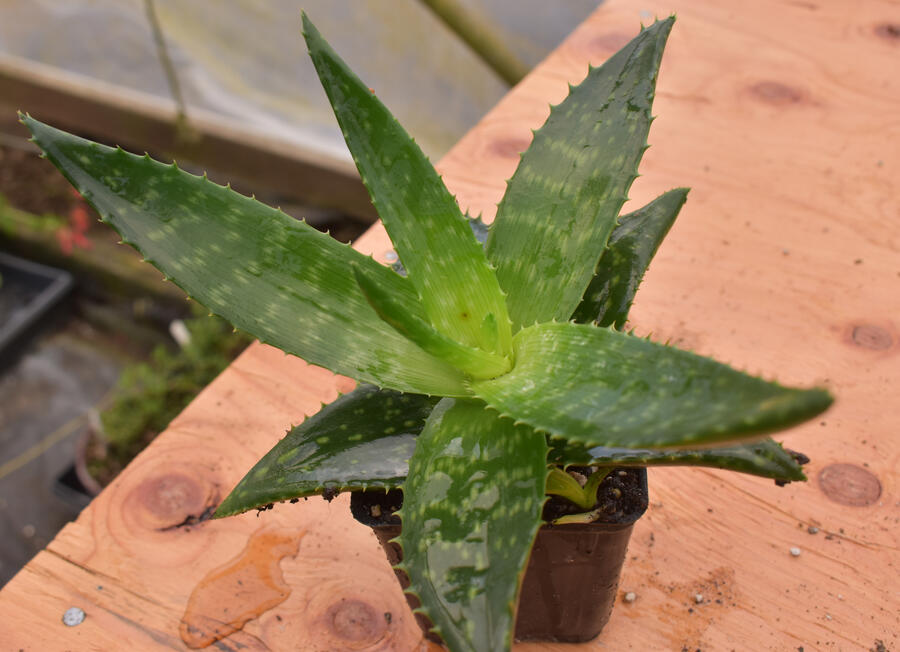
Aloe sabila - California aloe
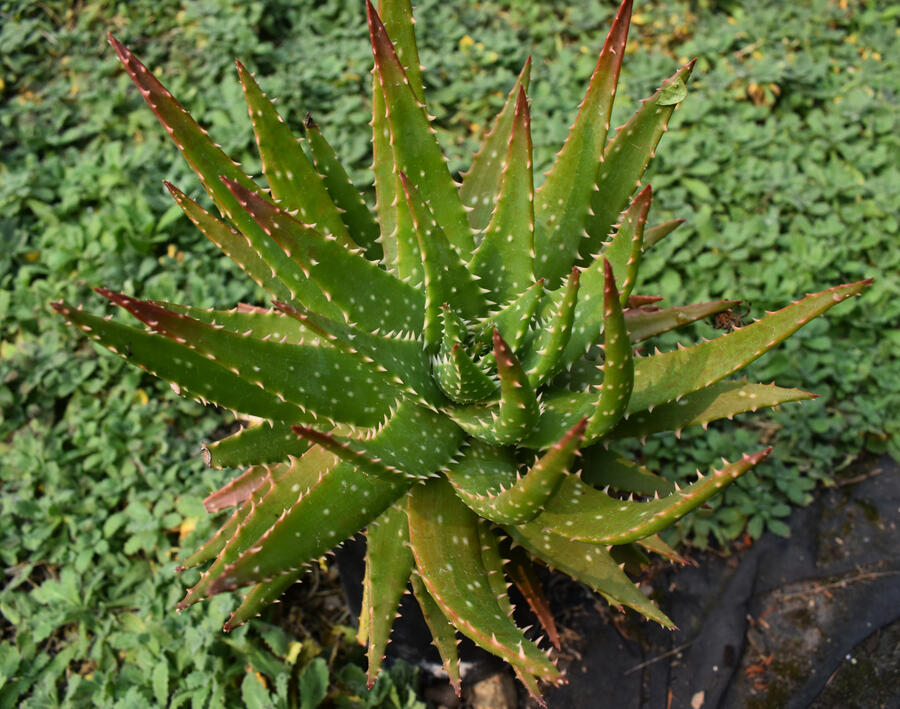
Aloe sp.
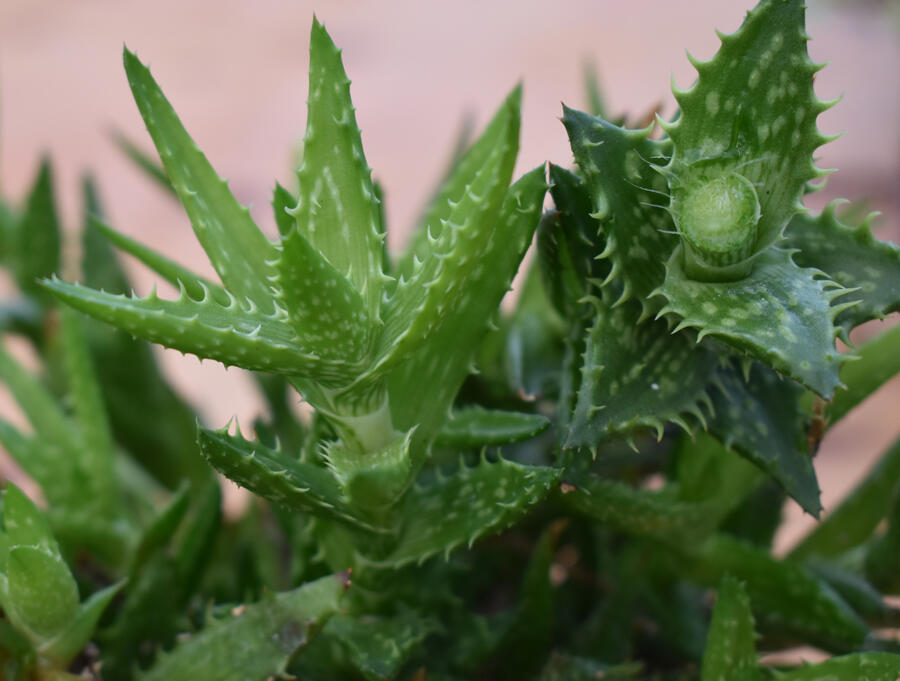
Aloe zanzibarica
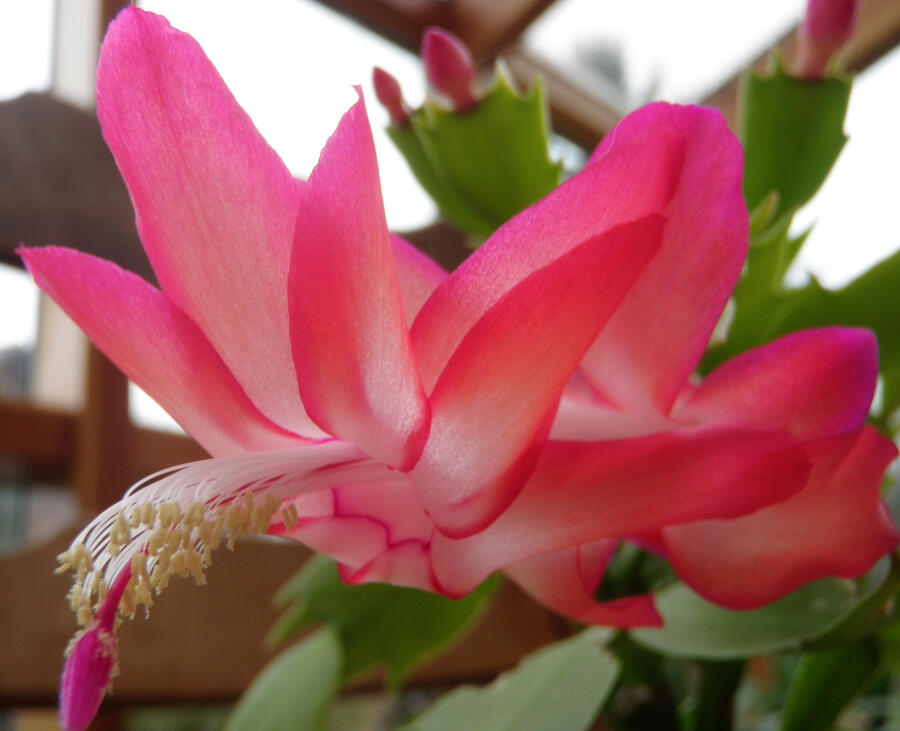
Cactus - Christmas
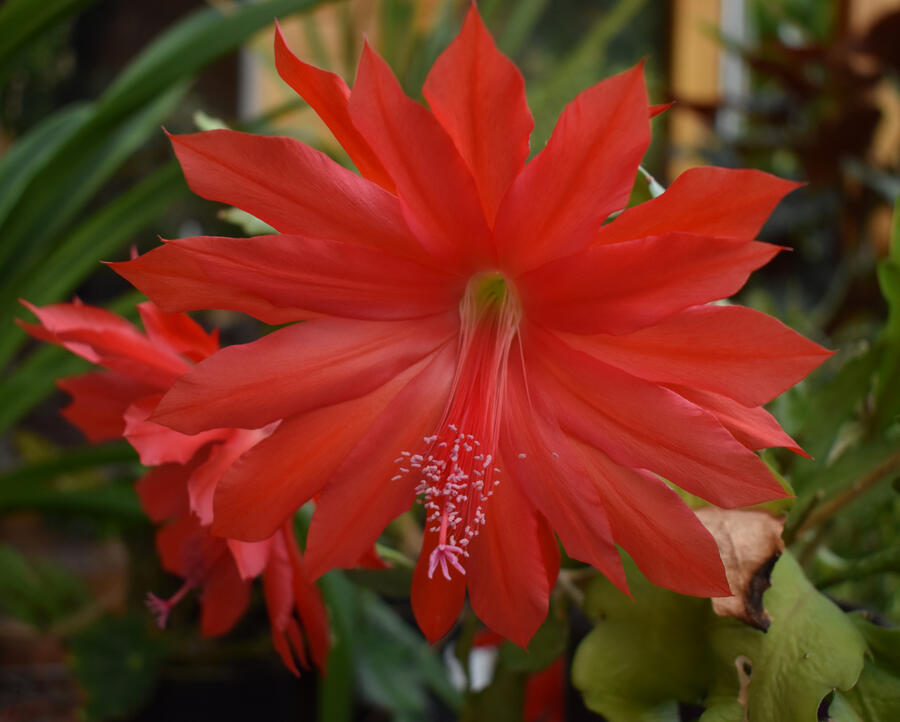
Cactus - Epiphyllum
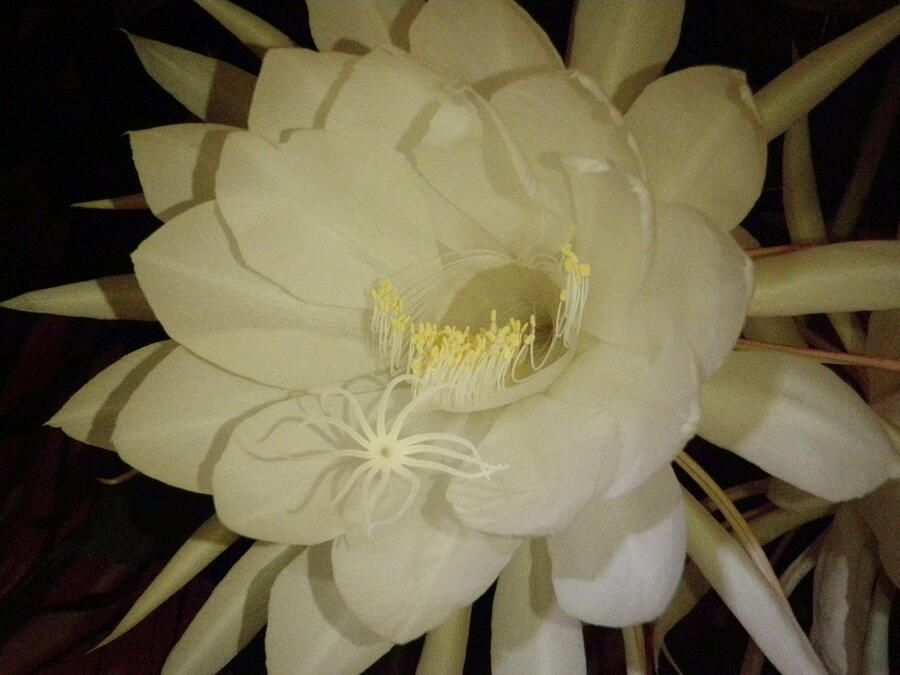
Cactus - Night Blooming Cereus
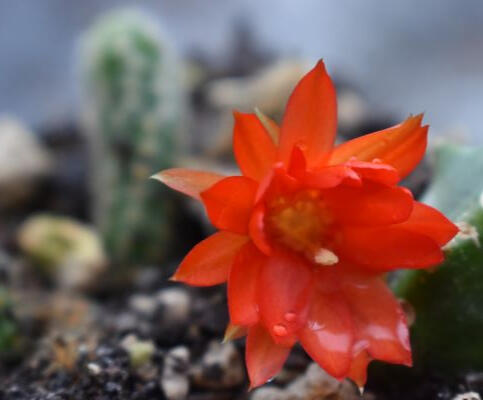
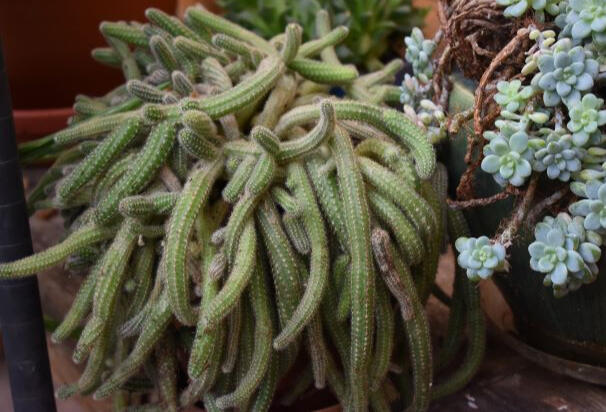
Cactus - Rattail
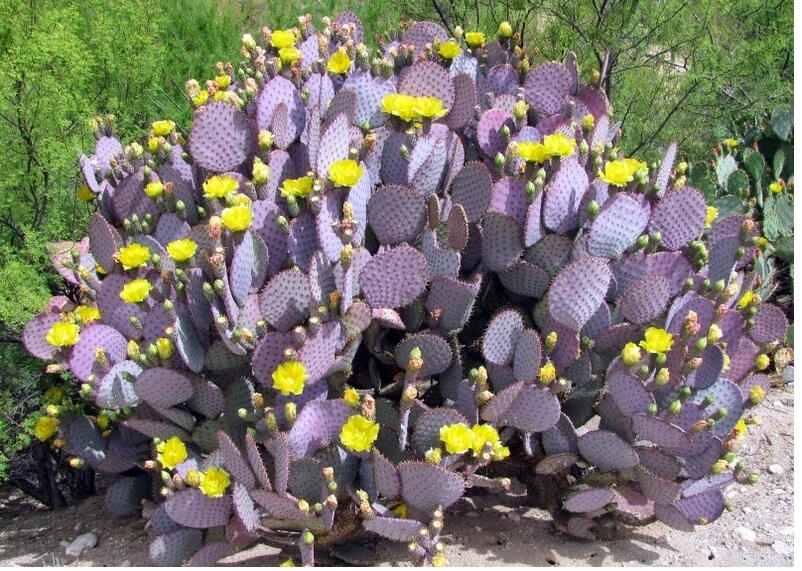
Cactus - Rattail
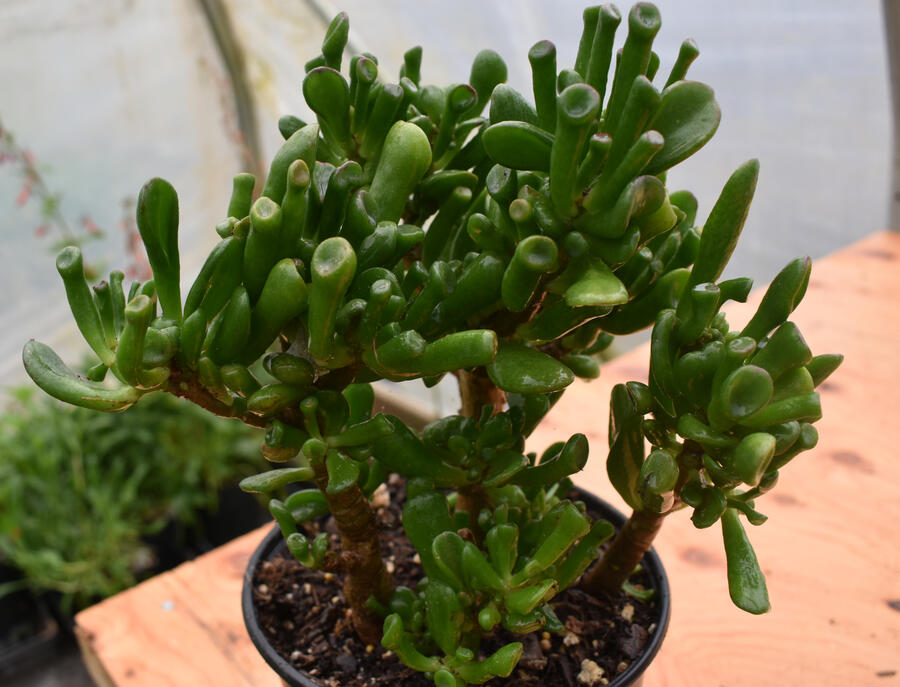
Crassula argenten 'Hobbit'
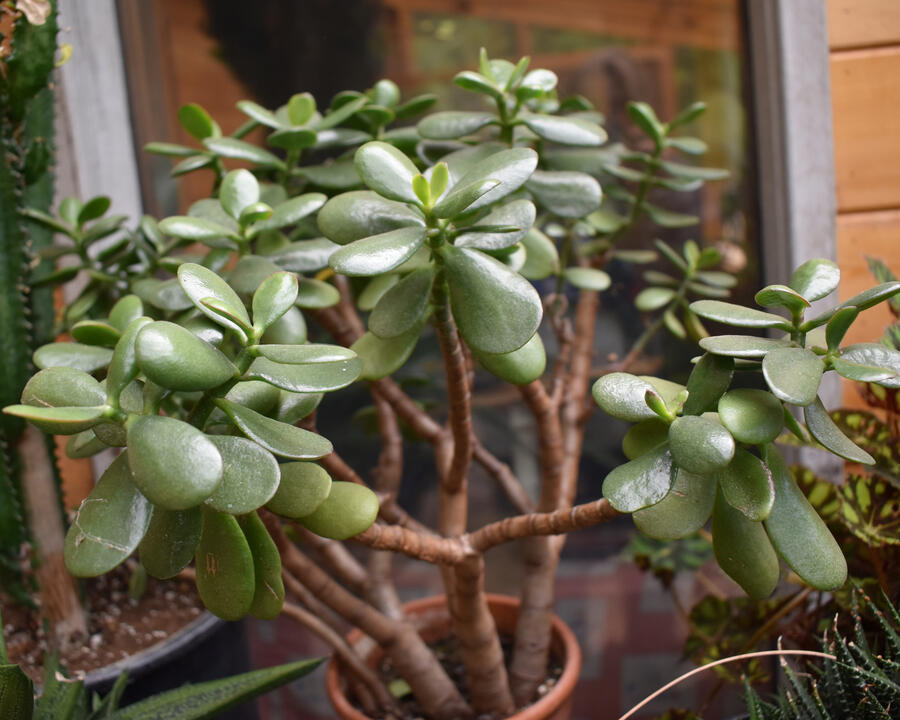
Crassula ovata arborescens
'Baby Jade'
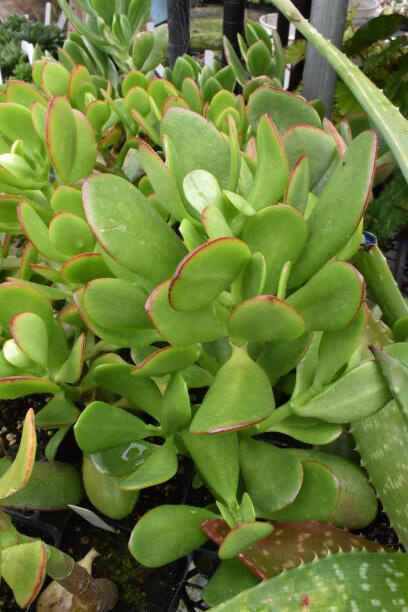
Crassula ovata arborescens
'Large Jade'
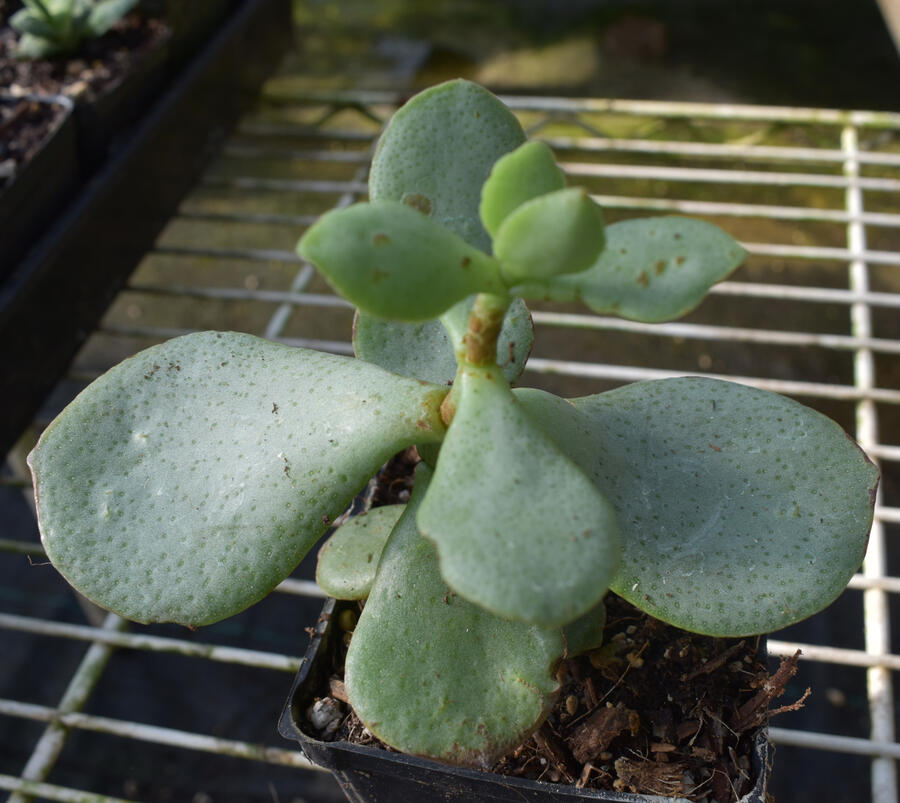
Crassula ovata arborescens
'Silver Dollar Jade'
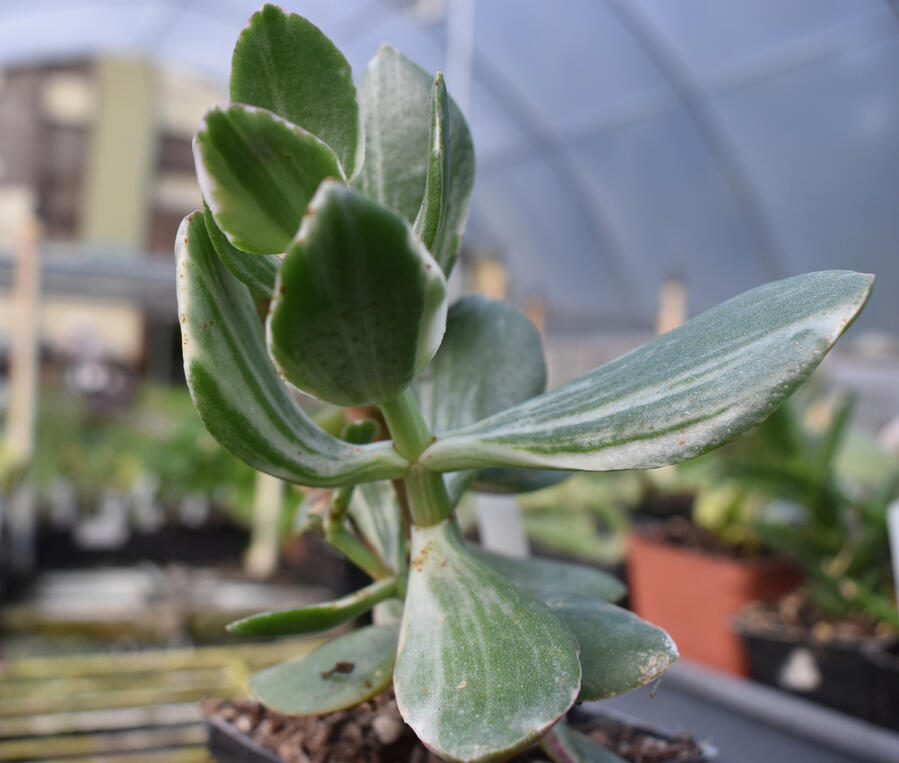
Crassula ovata arborescens 'Tricolor Jade'
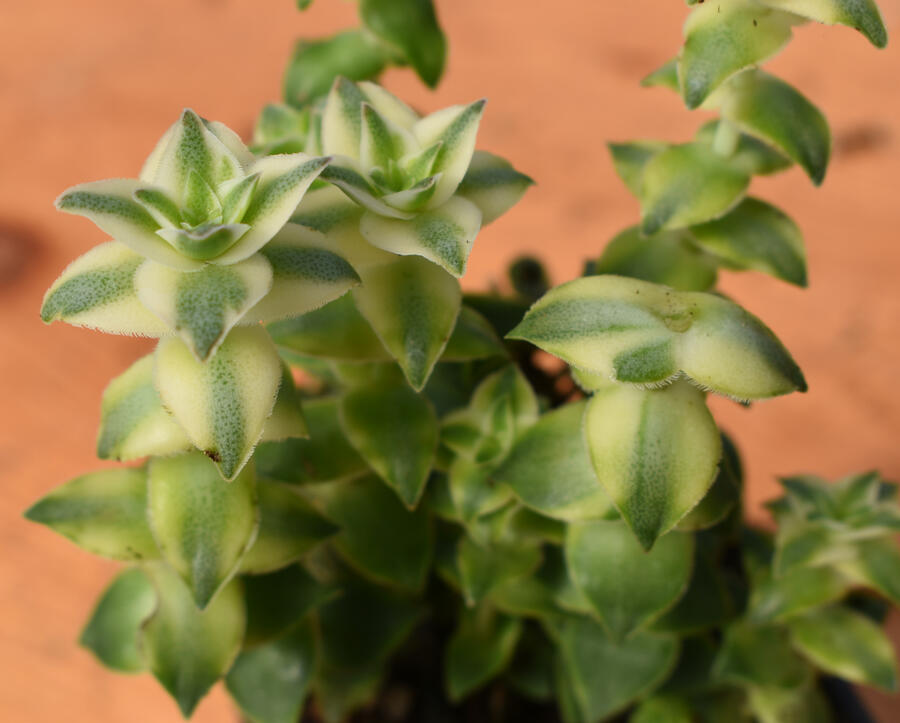
Crassula perforata variegata

Crassula tetragona
'Miniature Pine Tree'
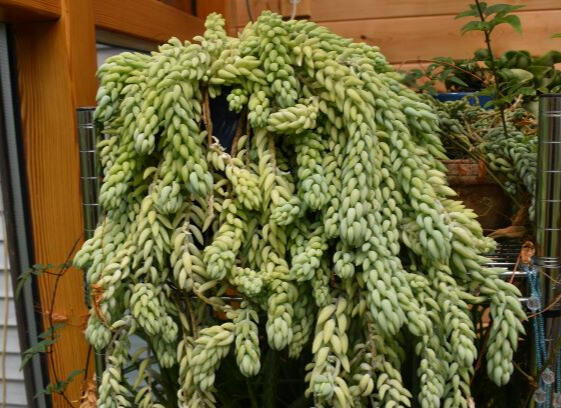
Donkey Tail
Sedum morganianum
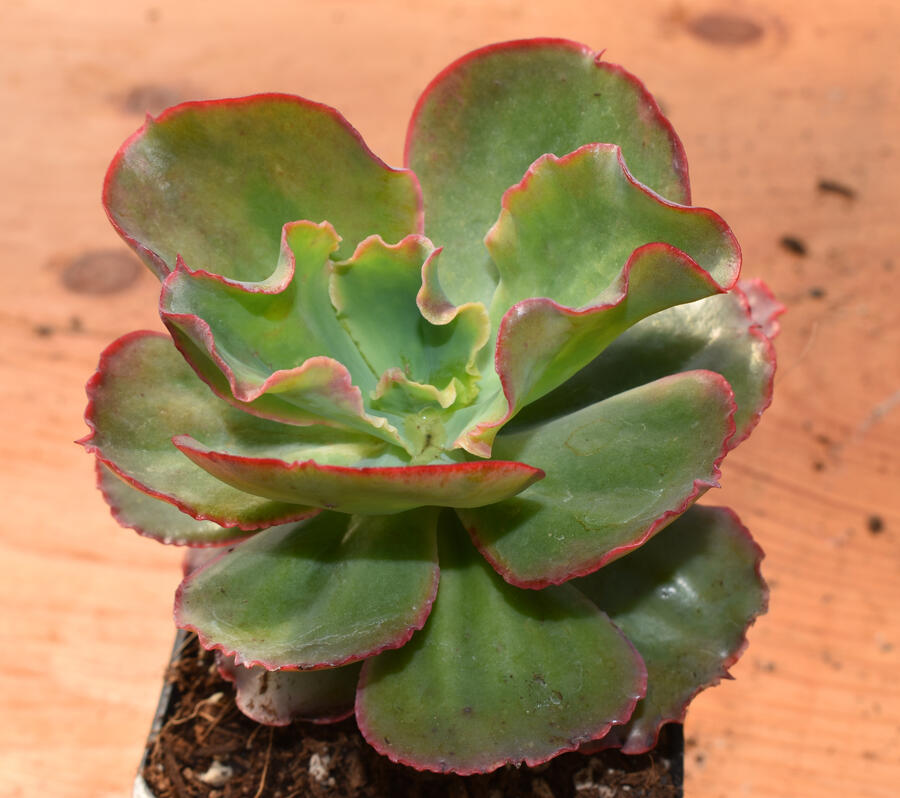
Echeveria 'Decot Edge'
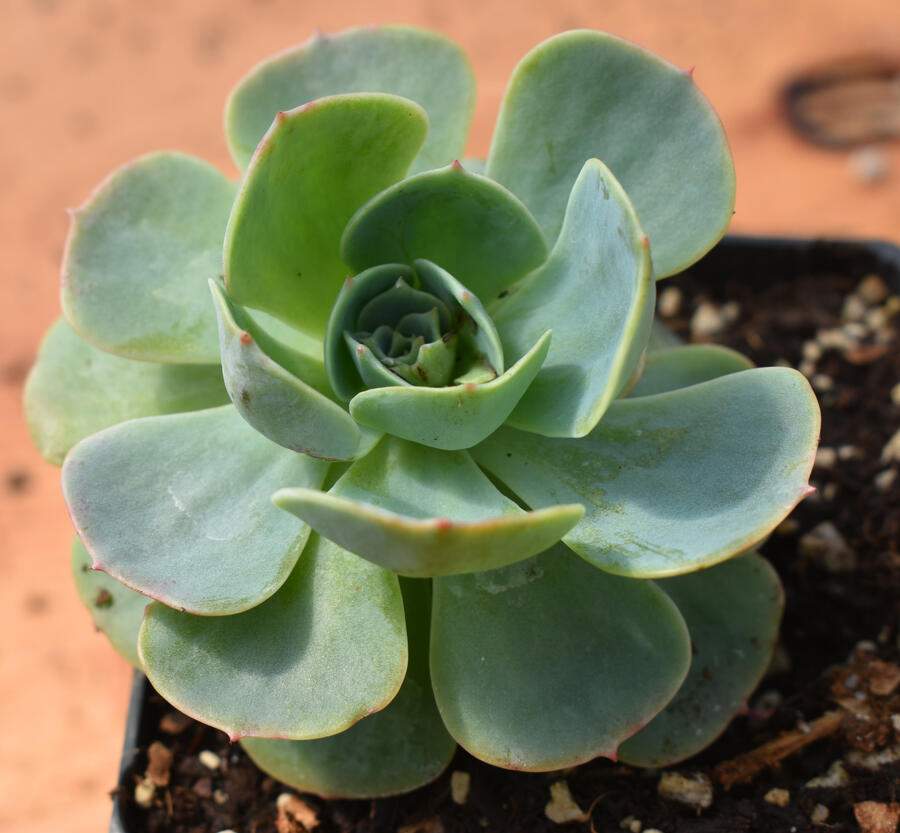
Echeveria - Green
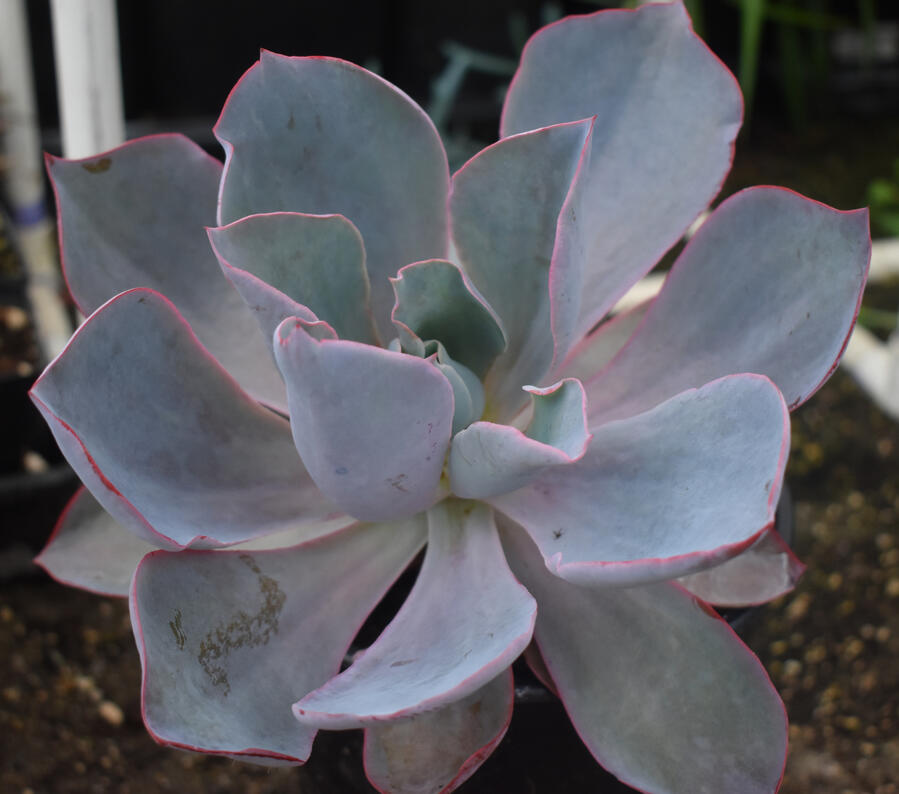
Echeveria - Purple
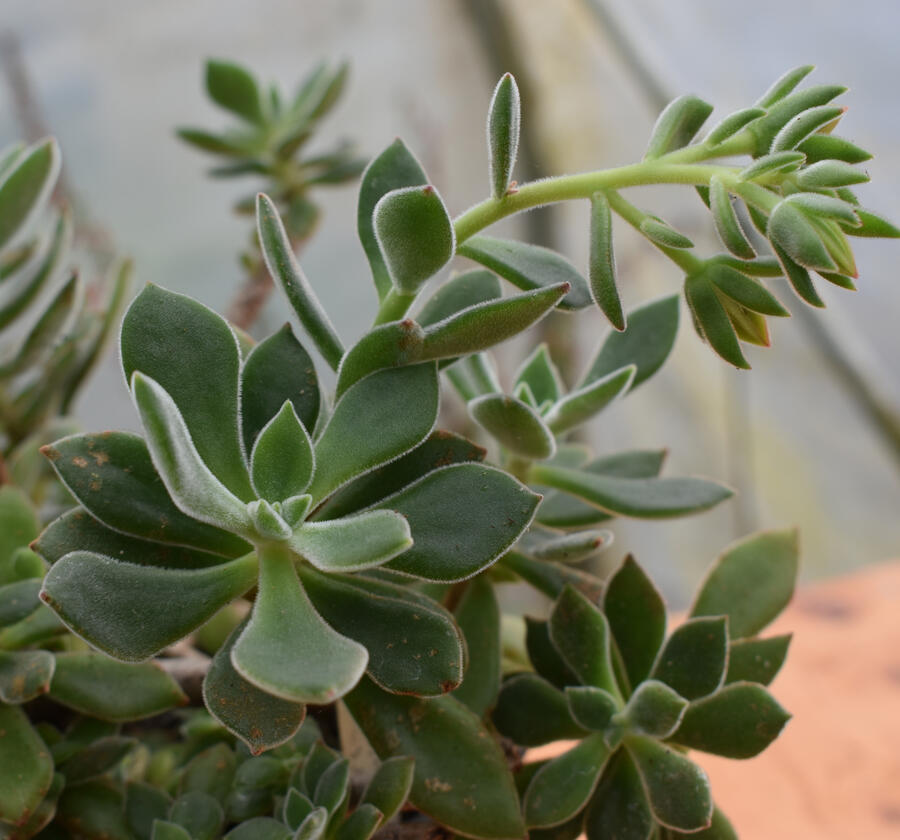
Echeveria harmsii
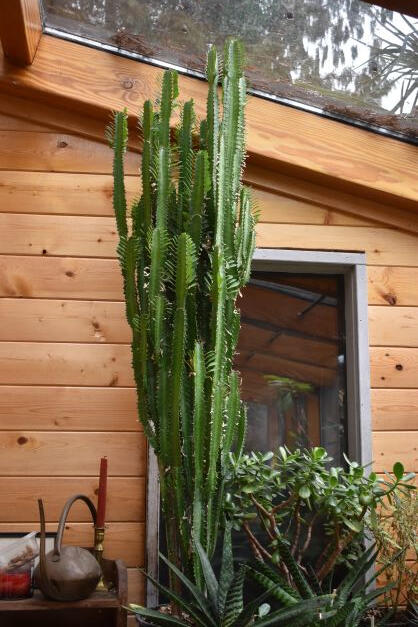
Euphorbia trigona
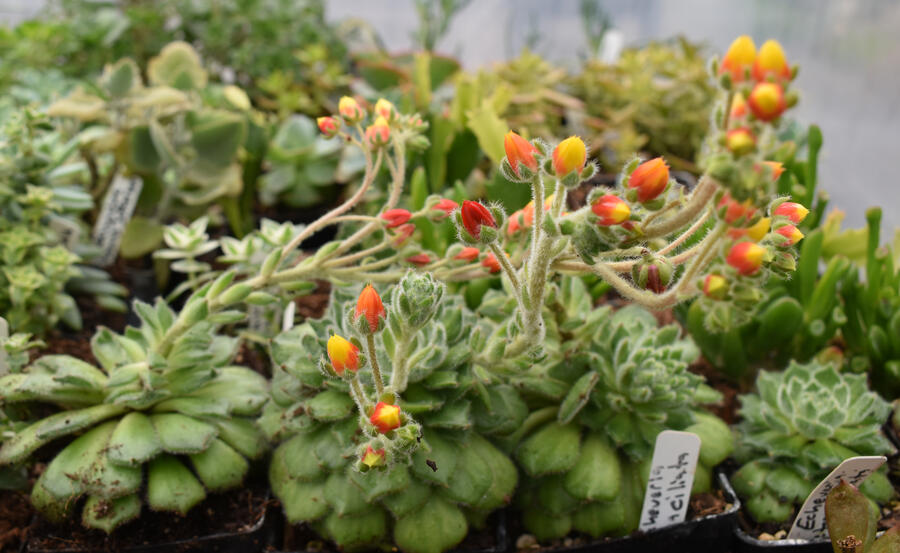
Echeveria setosa ciliata
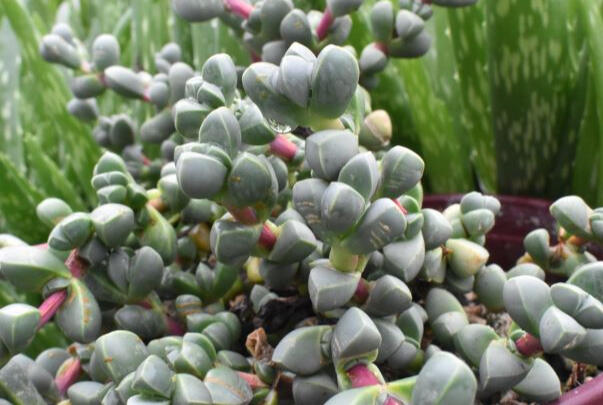
Astridia velutina - Equadorian Succulent
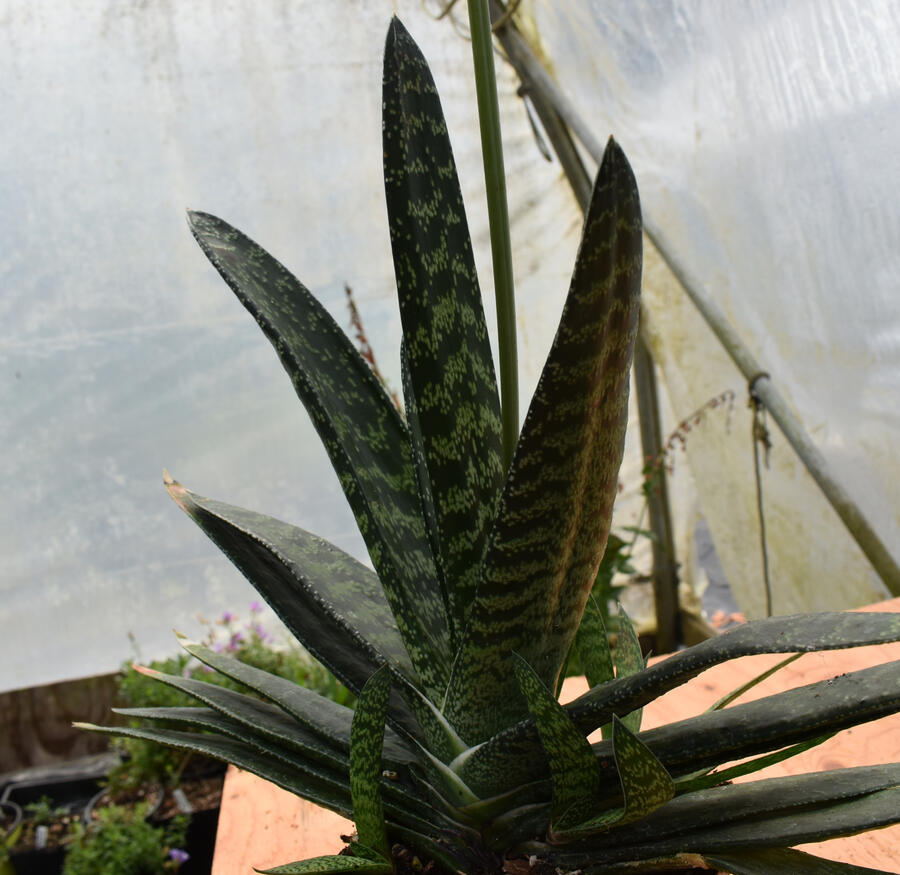
Gasteria ernesti ruschi
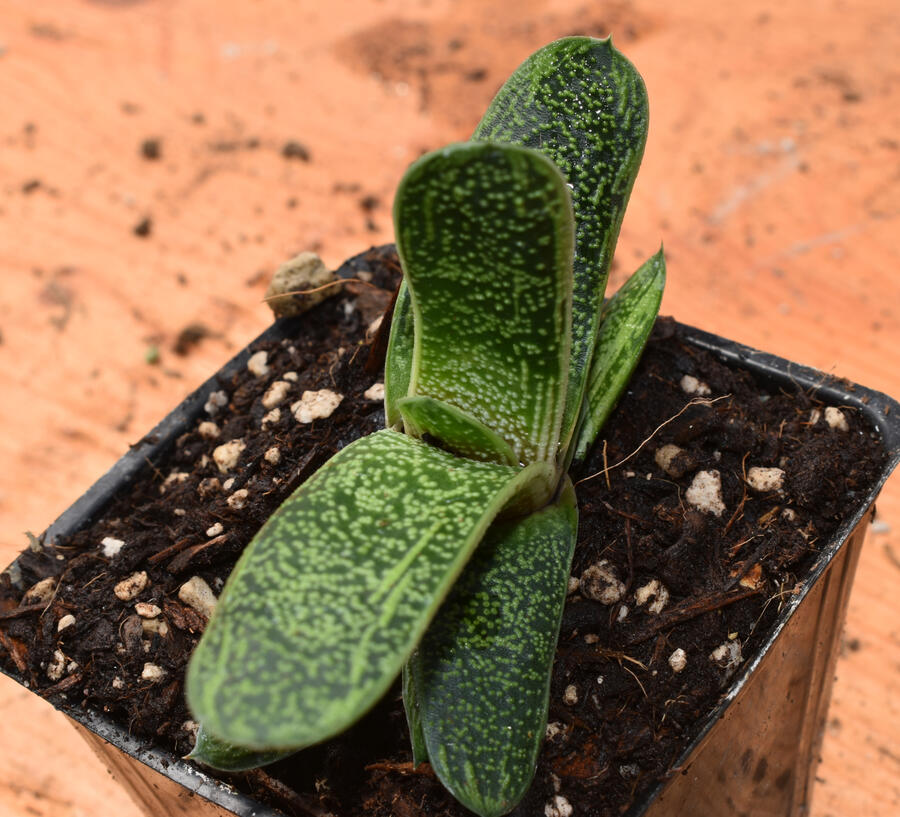
Gasteria minima
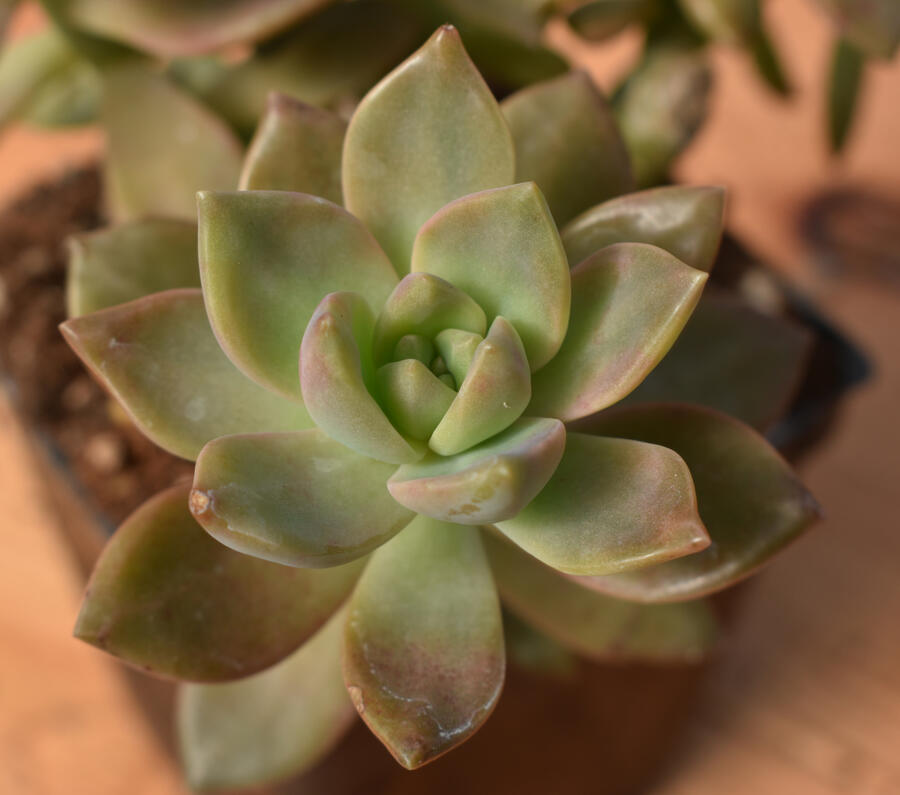
Graptopetallum
'California Sunset'

Graptopetallum portuguayense
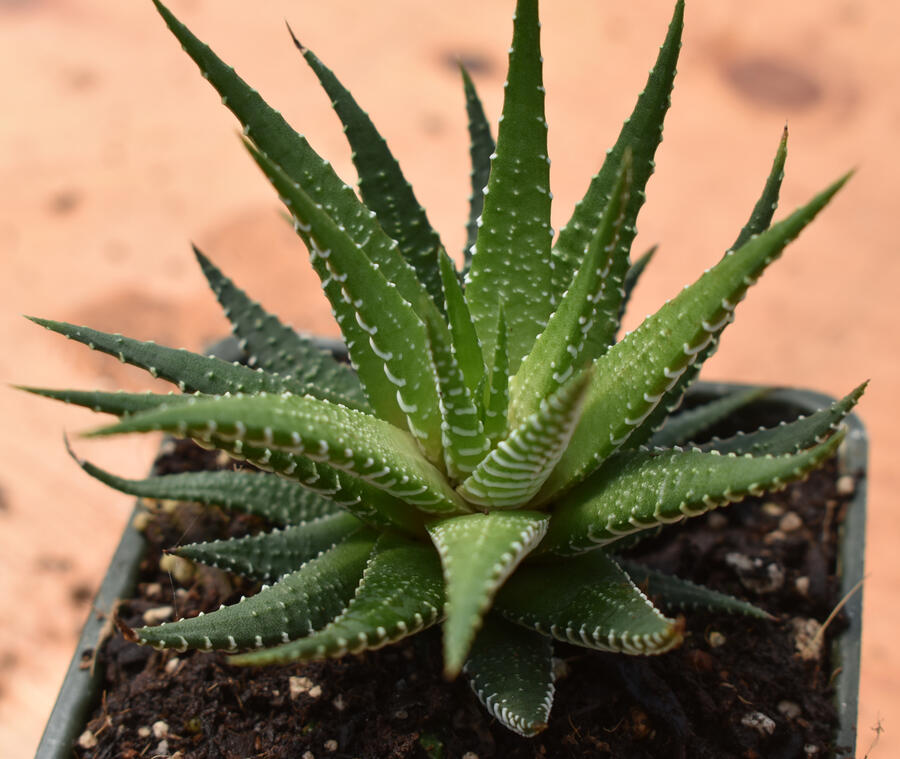
Haworthia attenuata
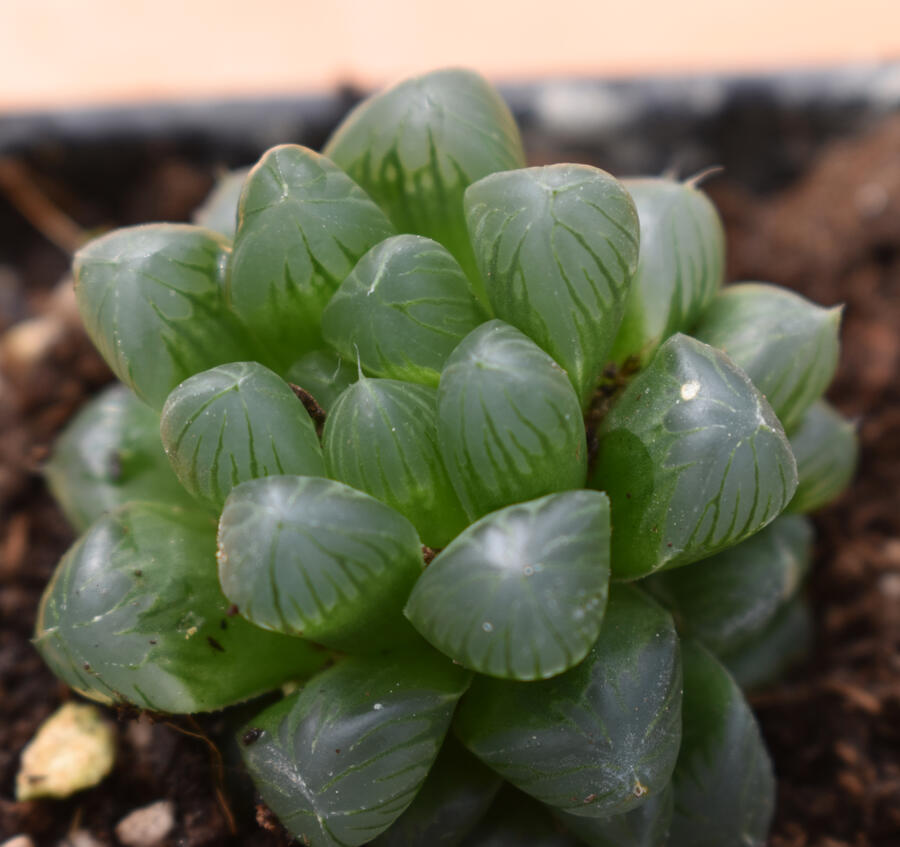
Haworthia cooperi truncata
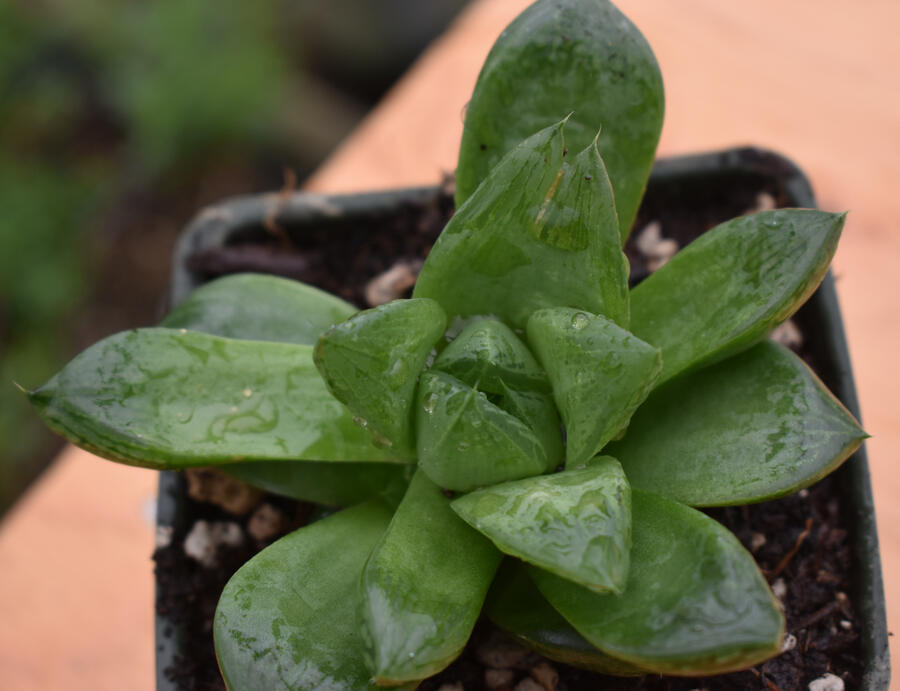
Haworthia cuspidata
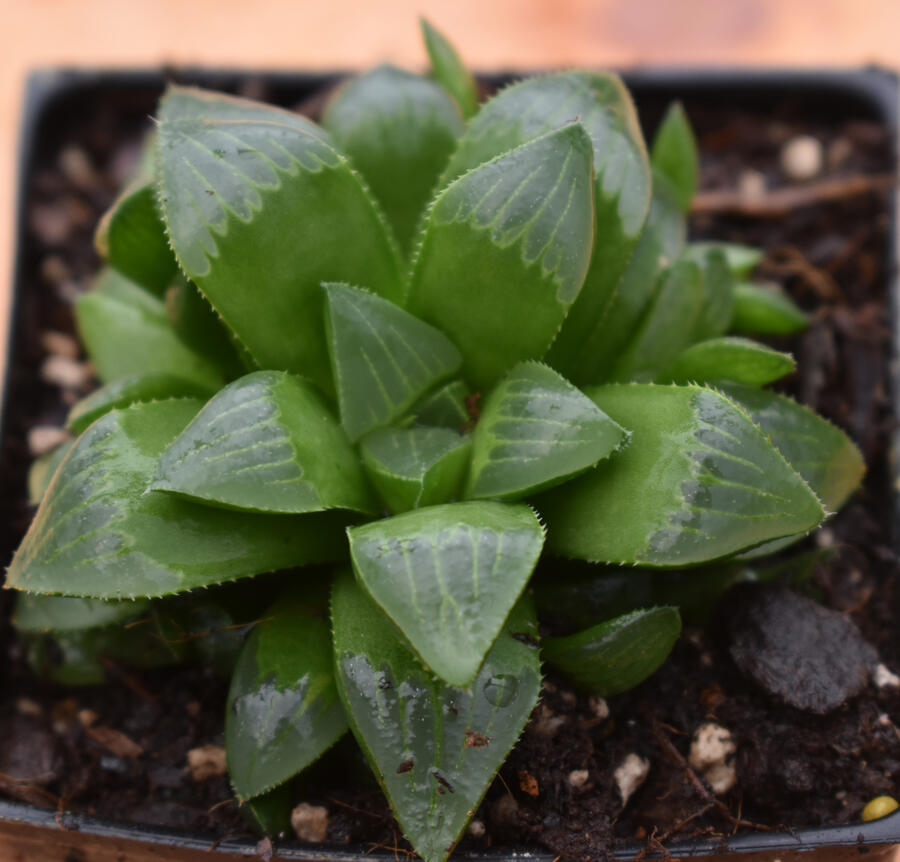
Haworthia mirabilis mundata
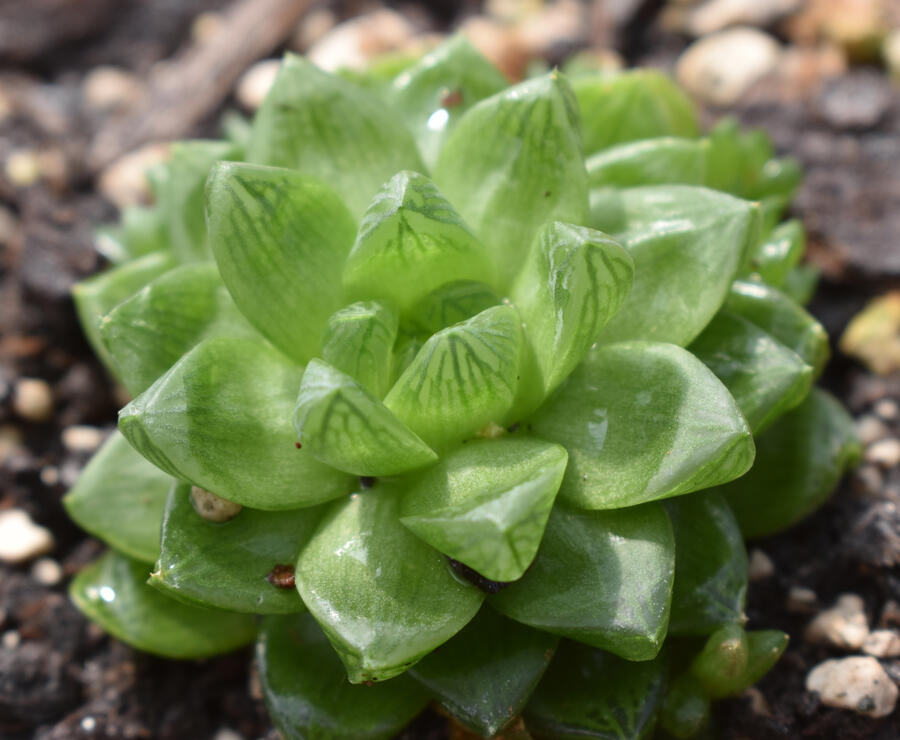
Haworthia obtusa prolifera
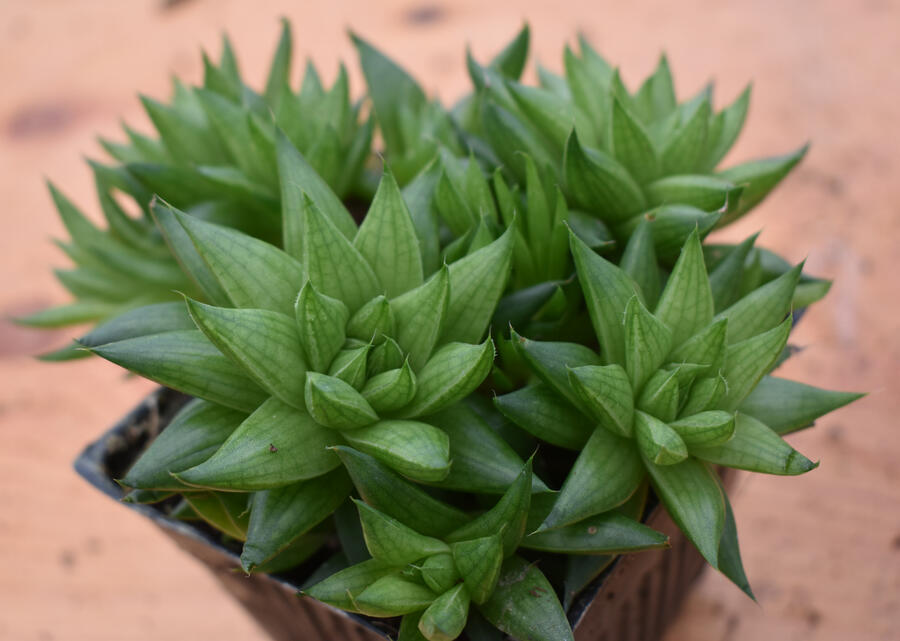
Haworthia turgida
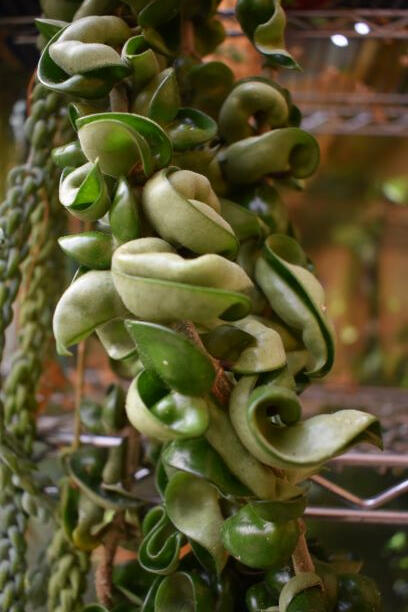
Hoya - Contorted
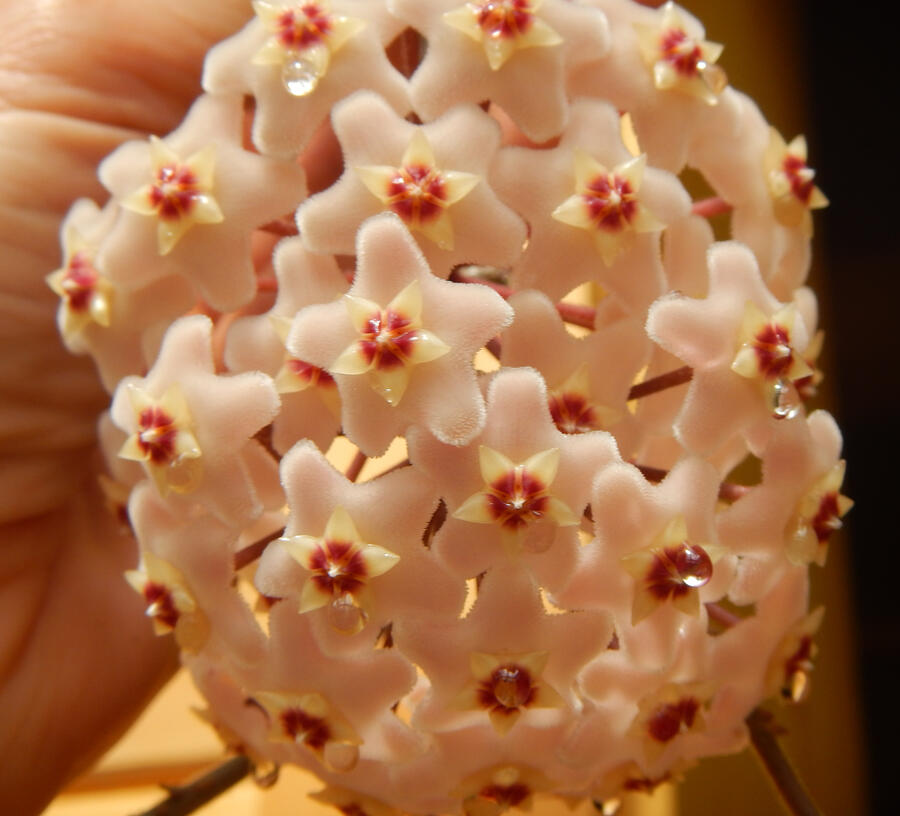
Hoya sp.
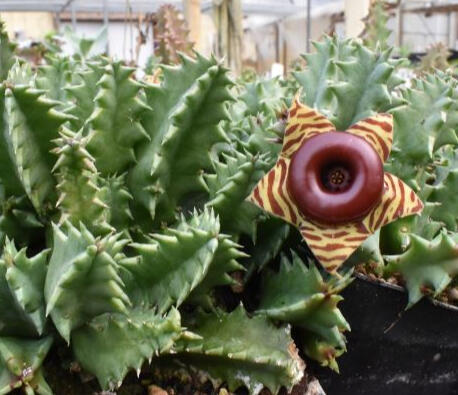
Huernia zebrina
'Life-Saver Plant'

Kalanchoe hildebrandtii
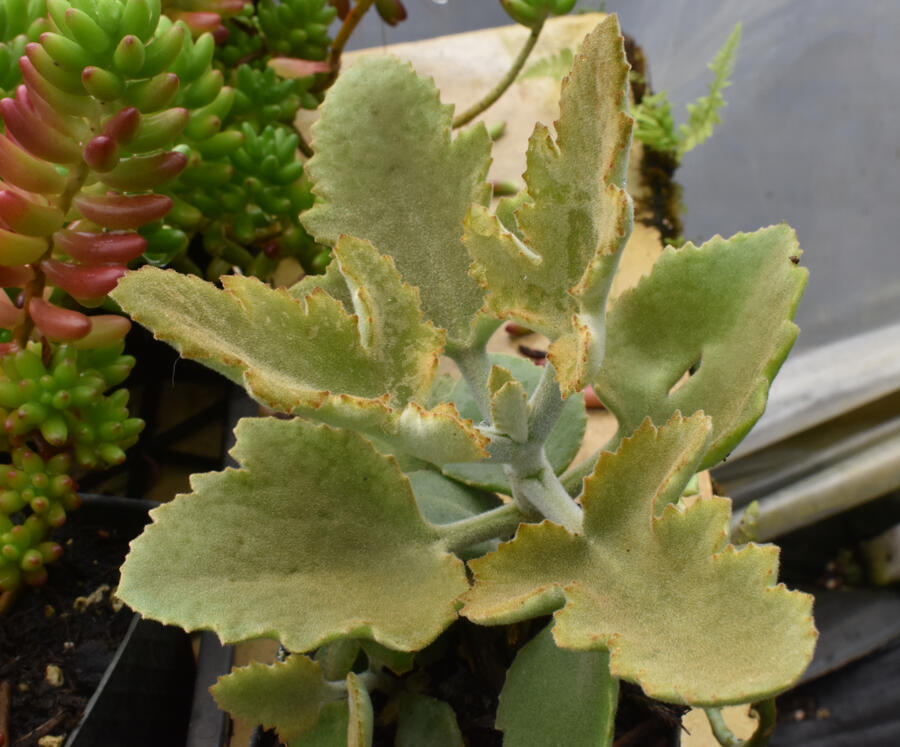
Kalanchoe 'Thomas Jefferson'
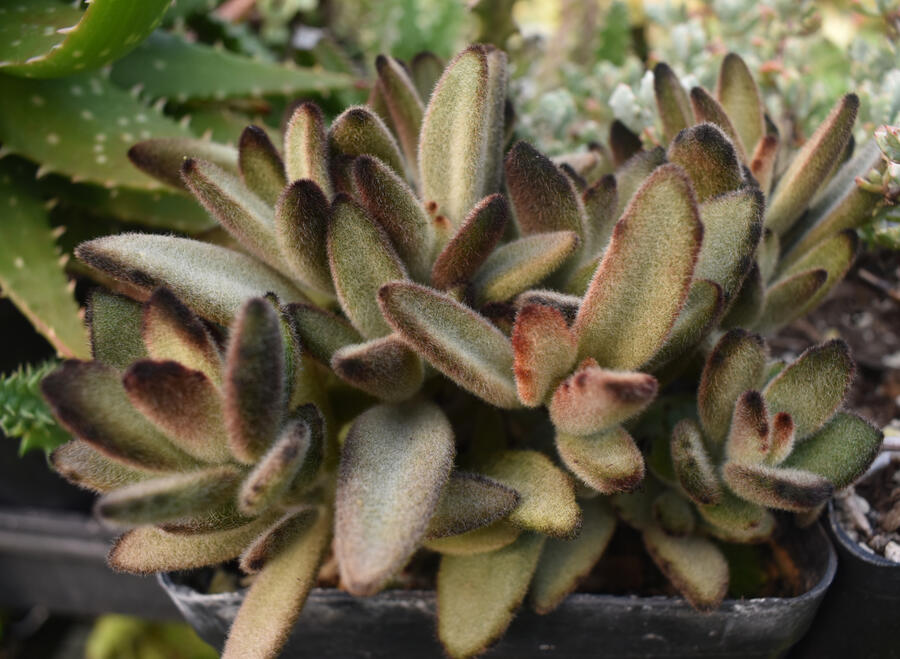
Kalanchoe tomentosa 'Chocolate Soldier'
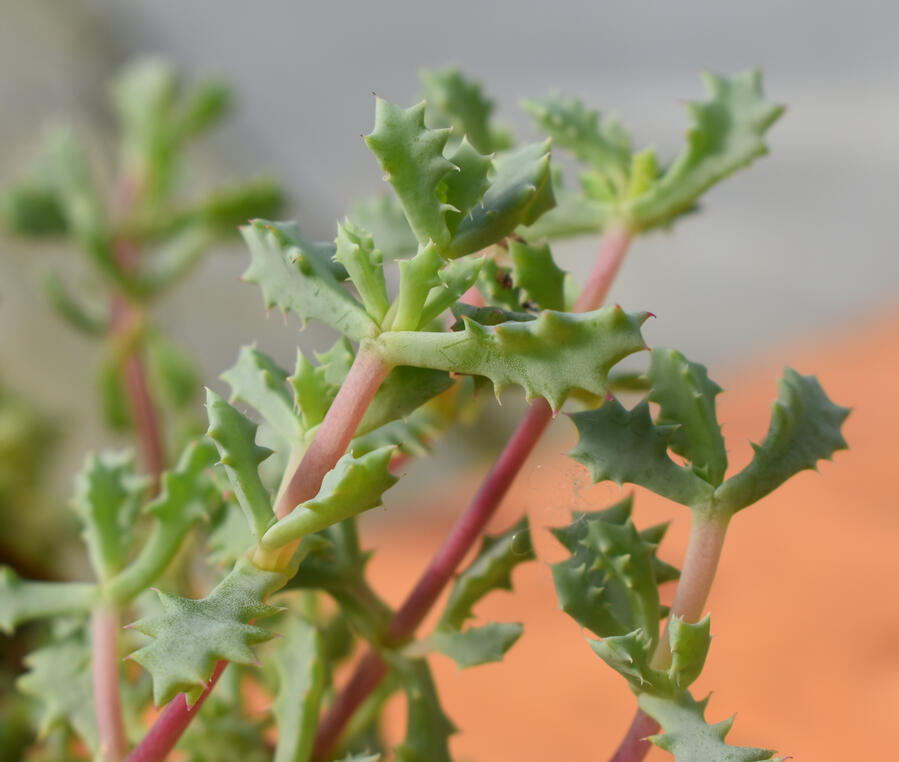
Lampranthus blandus 'Pink Vygie'
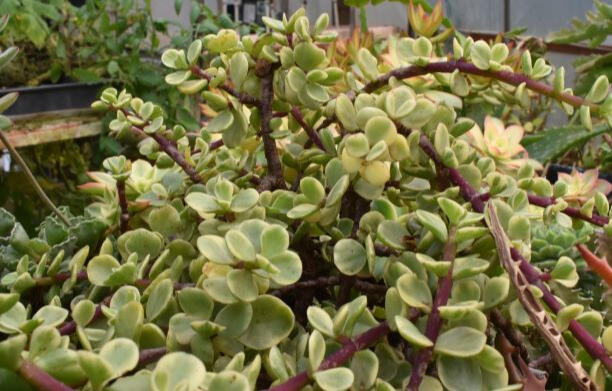
Portulaca afra
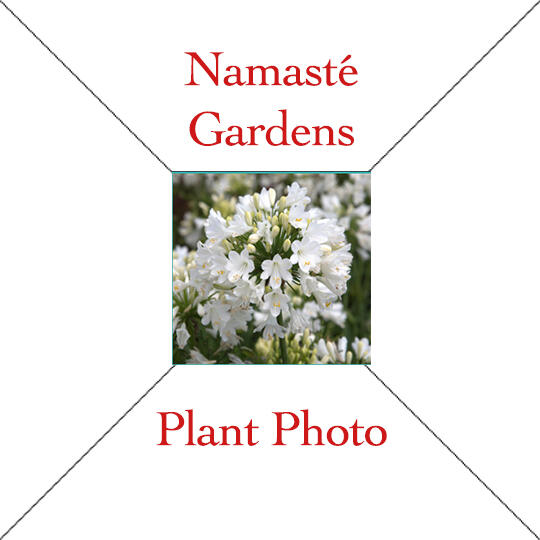
Plant name
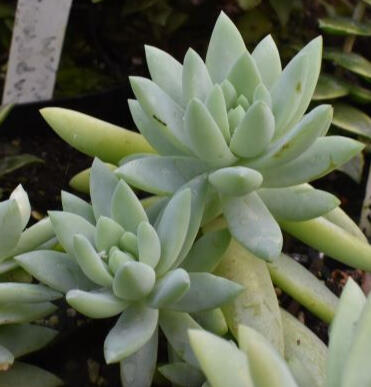
Sedevaria 'Harry Butterfield'
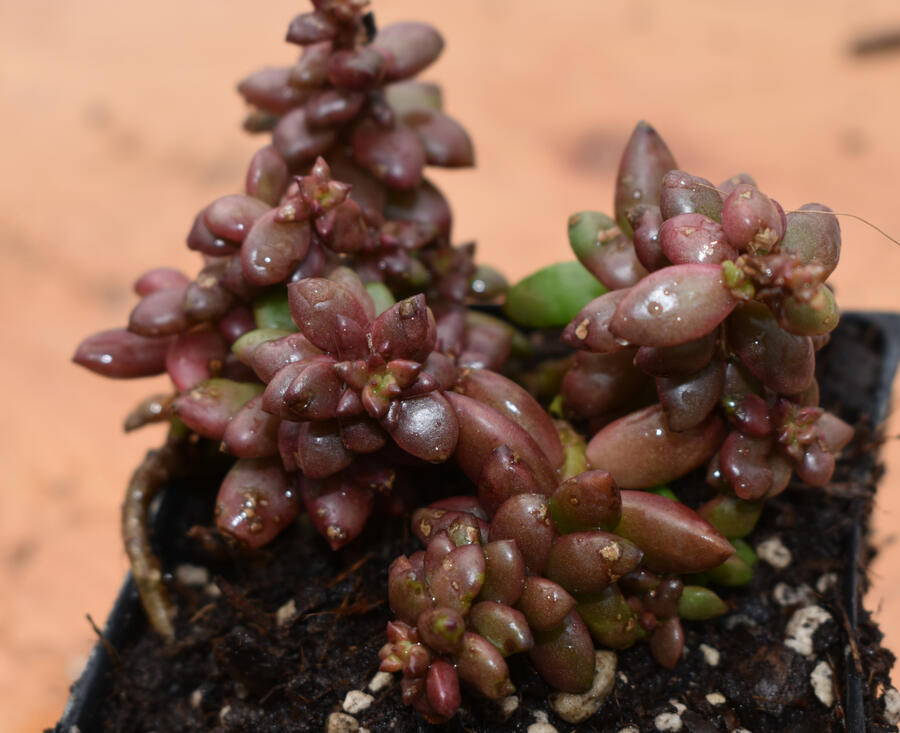
Sedevaria 'Jet Beads'
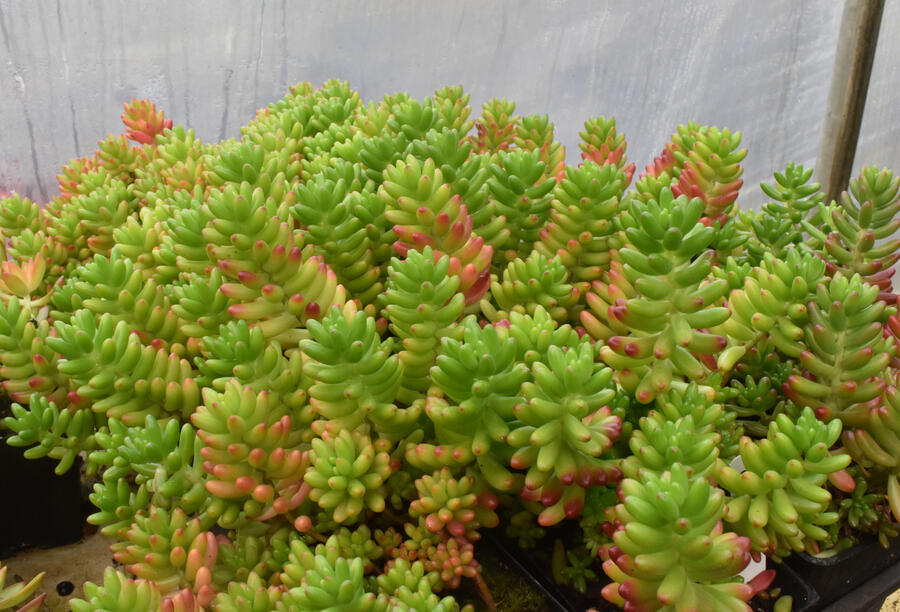
Sedum - 'Pork & Beans'
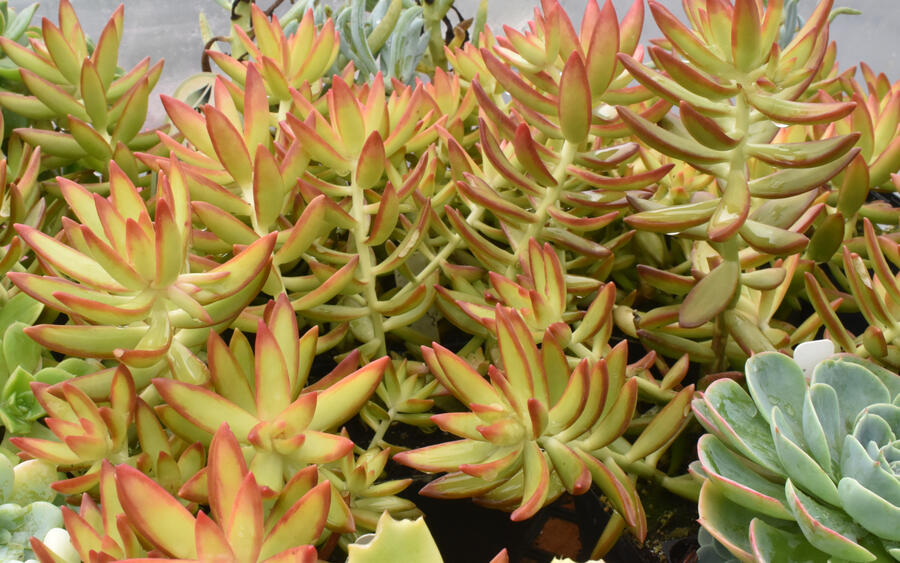
Sedum adolphii 'Fireworks'
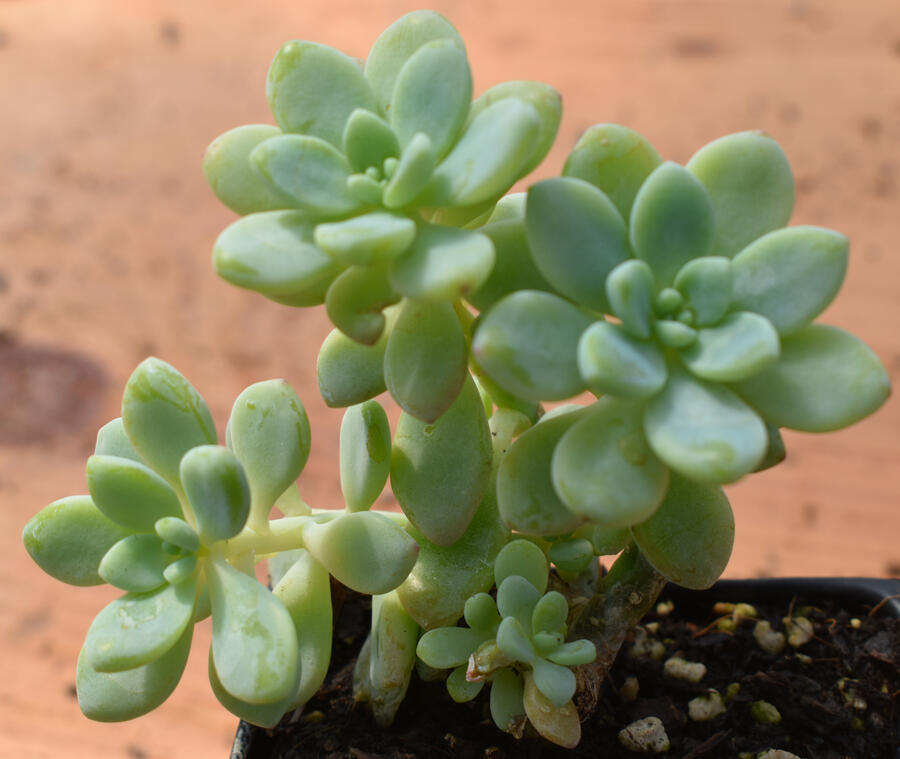
Sedum clavatum
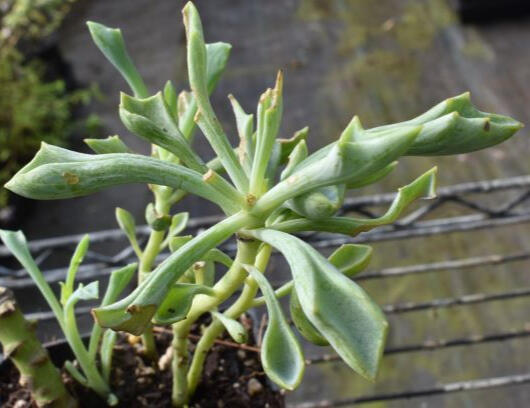
Senecio kieiniformis
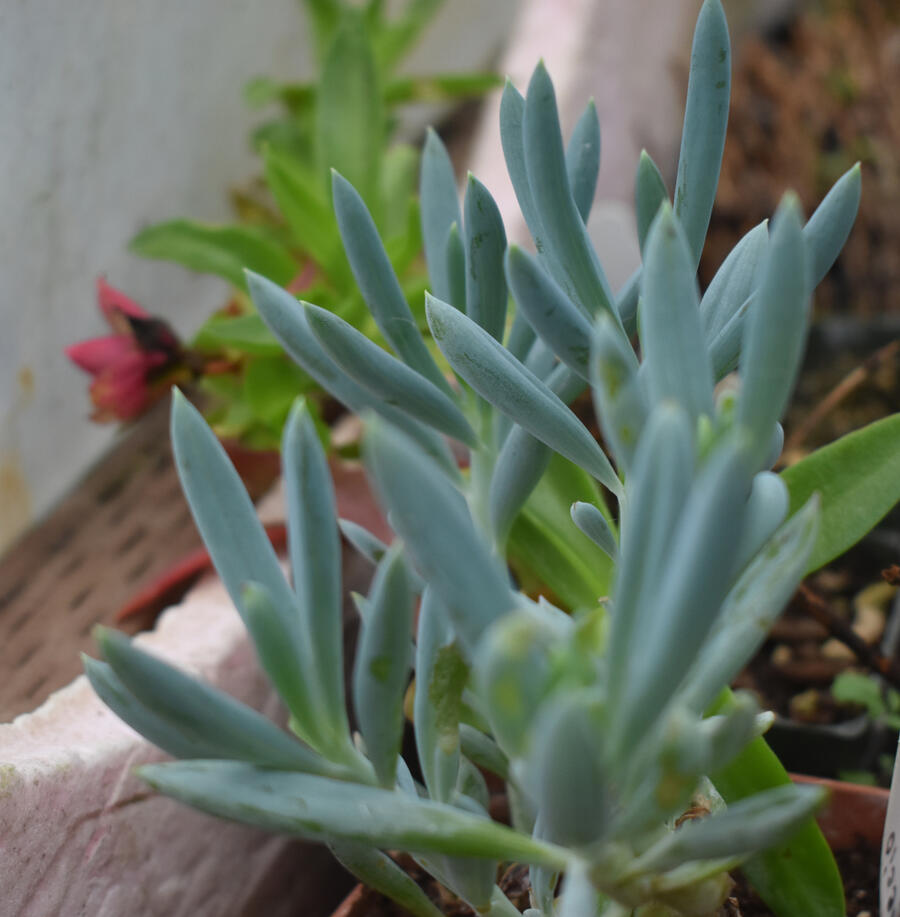
Senecio talinoids
mandris Blue
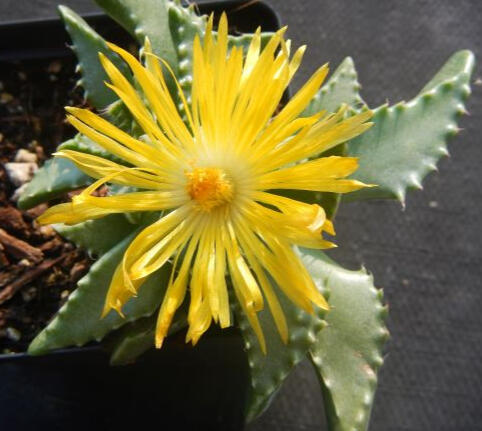
Tiger Jaws
Faucaria tigrina
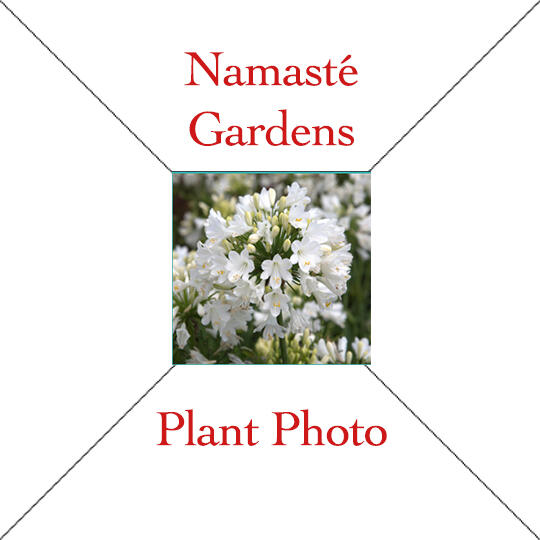
Plant name
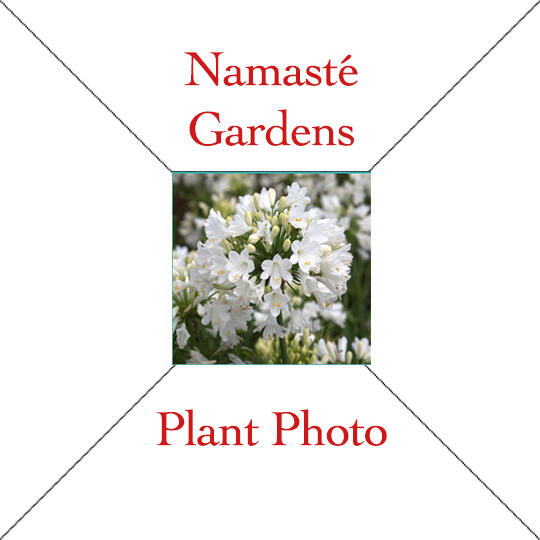
Plant name
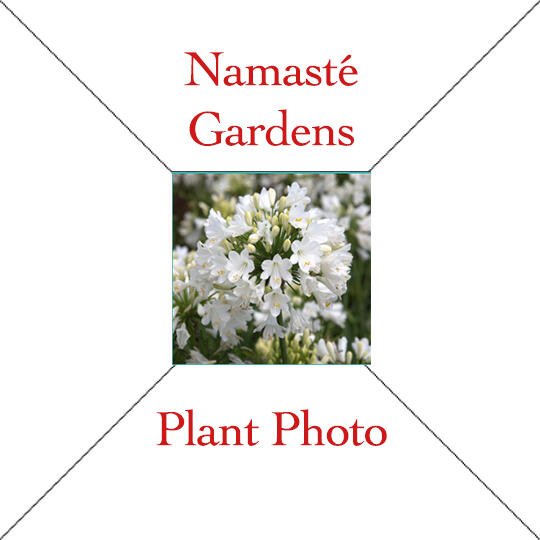
Plant name
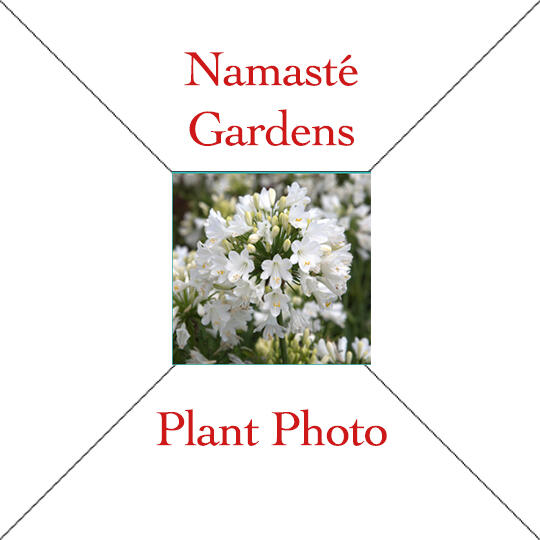
Plant name
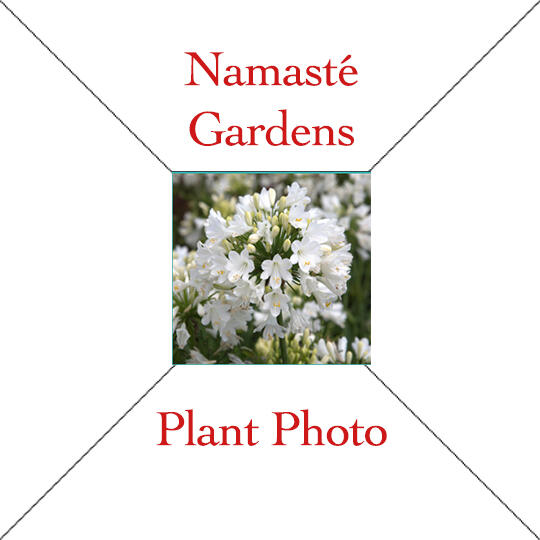
Plant name
Nothing is more fulfilling than to cook a meal for friends or family using herbs or edibles grown in your own garden. I swear they taste better than store-bought! I sell most of your standard herbs, parsley, sage, rosemary, and thyme….along with a few unusual ones such as pineapple sage, banana mint, and lemon verbena. The edibles change from year to year depending upon what’s happening in my gardens. I usually have rhubarb and maybe a few bare-root boysenberries, I’ll keep it posted on the web storefront.

Bay Laurel
Laurus nobilis
Zones: 8-10
Size: 40 ft. tall if not pruned
Sunlight: Sun
Soil: Well-drained, moistDescription: One of the most versatile herbs, Bay laurel can be grown as a tall evergreen tree with its glossy foliage or in containers. This tree can reach 40 ft tall by 32 ft wide without pruning. The Bay tree is however very suited to pruning, and can be kept to any height and width. Aside from applying a long-lasting fertilizer to the surrounding soil for the first two years, and watering when conditions are dry, your Bay laurel tree will be happy to look after itself. Most important for Bay laurel is their position. Especially in cold areas it requires a position sheltered from harsh wind.Growing: Whilst Bay laurel will grow in shade, it is best suited to a sunny position. It will grow on most soil types as long as it is well-drained. If frost does cause all the leaves to turn brown (liable to happen at temperatures cooler than 20 degrees F), simply cut the plant down to about 6 in above soil level. In Spring, new shoots should then appear from the base of the plant. Bay has a very shallow root system, which can easily be damaged by digging too near the stem so hand weeding is best. Bay trees thrive in containers, making them ideal for the patio. They will require a liquid feed throughout the summer. The size of the pot will control the size of the Bay tree - a 12 in. diameter pot will produce a reasonable size tree of about 5 ft. If a hard frost threatens, move the tree inside to a cool room with indirect sunlight. Bay trees are very suited to being indoor plants in the winter.Uses: Bay leaves are used extensively in French, Italian, Spanish and Creole cooking. They are used to flavor soups, stews, shellfish, pickling brines, sauces, marinades, poultry and fish dishes. French chefs place bay leaves, parsley and thyme in a little bundle called a bouquet garni that is removed after cooking. Pick bay leaves early in the day and dry quickly, out of sunlight, under weight so they won't curl.
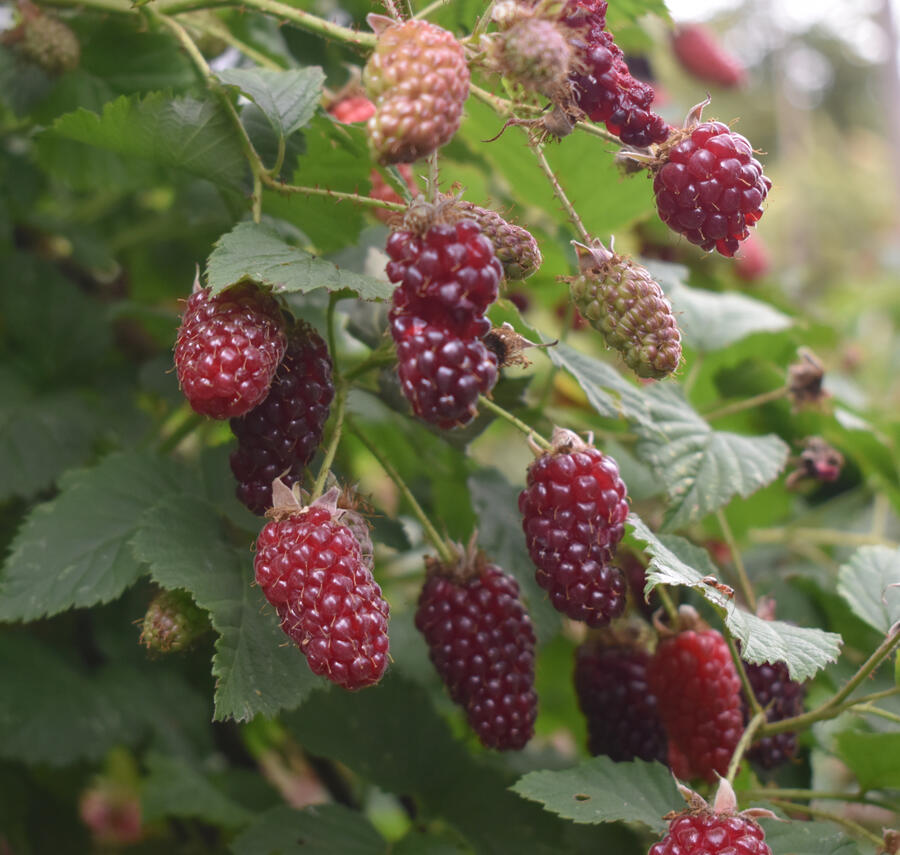
Boysenberry
Zones: 5-9
Size: Vine pruned to ~8 ft.
Sunlight: Sun
Soil: Organically rich well-drained
Harvest Time: May through mid JulyDescription: A boysenberry is a cross between blackberry, loganberry and raspberry. Eating a ripe berry from the vine is one of the joys of summer. Boysenberries are particularly delightful and easy to grow. The fruit is great eaten fresh or used for canning, freezing, jelly and syrup.Growing: Grow in an area that gets full sun and minimal wind. The soil should be thoroughly tilled with plenty of compost and mulch worked in. Plant the boysenberry vines about three feet apart. Put up trellises so the trailing vines will grow off the ground. Like other trailing vines, boysenberries should be pruned regularly In the summer by removing the top 1 to 2 inches of new canes when they're 3 feet tall. This causes them to branch, and these branches will produce fruit the next year. After harvest, remove the fruit-bearing canes; these 2-year-old canes will die by the end of the growing season. Water the vines thoroughly after cutting and retrain the new canes as they grow. In late winter, when plants are dormant, thin these canes to three or four of the strongest ones per plant. Prune lateral branches on these canes to 12 to 18 inches long. To avoid injury to new canes, keep them trained in a narrow row beneath the bearing canes.
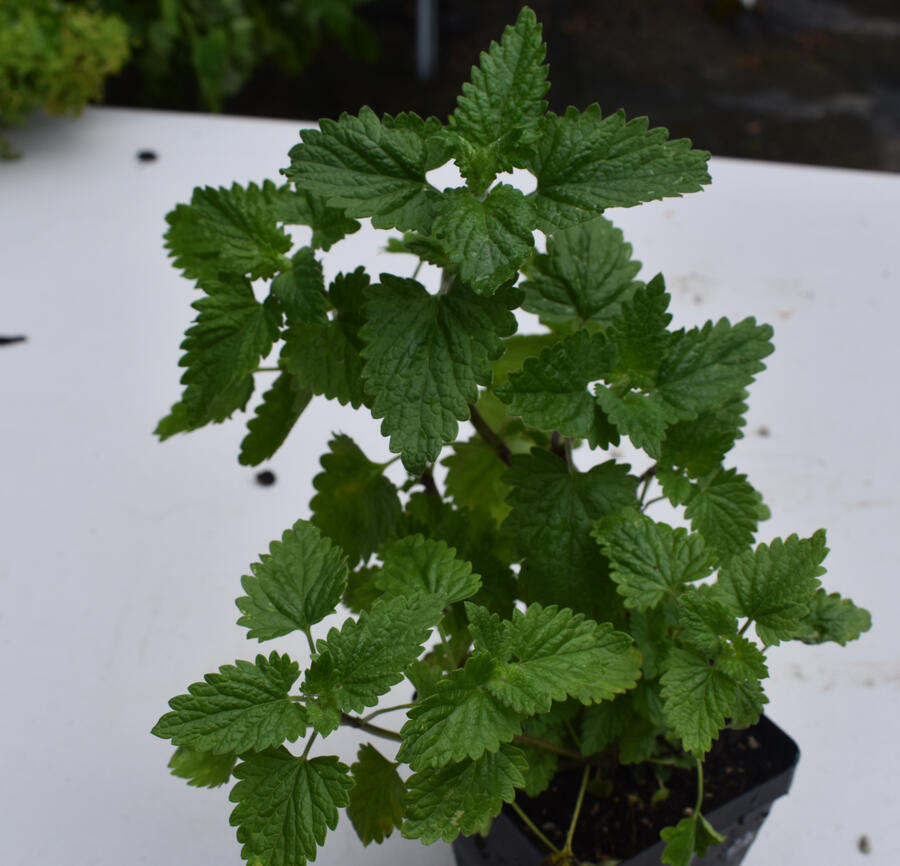
Nepeta cataria
Catnip
Zones: 3-7
Size: 2 feet tall
Sunlight: Full sun to partial shade
Soil: Fertile, well-drained
Bloom Time: SummerDescription: This member of the mint family is best known for its behavioral effects on cats, making them act stoned or playful. The plant is drought-tolerant and deer-resistant. It can be a repellent for certain insects, including aphids and squash bugs.Growing: Catnip is best grown in full sunlight and moderately fertile garden loam but will be more fragrant if grown in sandy soil. Don’t bruise the stems or leaves when transplanting to avoid attracting neighborhood cats. Once a popular substitute for Chinese tea in England, it is also used in cough remedies, to induce sweat without raising body temperature and to relieve nervous headaches. Its leaves, when candied, make a delightful desert. Harvest when plants are in full bloom before leaves start to yellow; dry in shade so its volatile oils will not be lost.
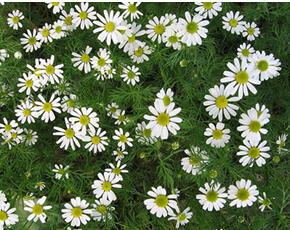
ROMAN CHAMOMILE
Chamaemelum nobile
Zones: 3-7
Size: 2 feet tall
Sunlight: Full sun to partial shade
Soil: Fertile, well-drained
Bloom Time: June - JulyDescription: A creeping, herbaceous perennial native to Western Europe and North Africa; the aromatic plant is characterized by downy stems and yellow disc, white-ray flowers that appear in late spring or early July. It is used medicinally as a soothing tonic and sedative; often used to treat upset stomachs (remember Peter Rabbit). Gather the flowers to make the famous chamomile tea. It is also used as hair rinse and insect repellent.Growing: Chamomile is often used between flagstones in walkways because they can handle foot traffic; chamomile lawns are becoming popular. It is called the “physician’s plant” because it really does revive and strengthen nearby plants . Grow in full to part sun and in a well-drained soil; hardy to 40 below zero.
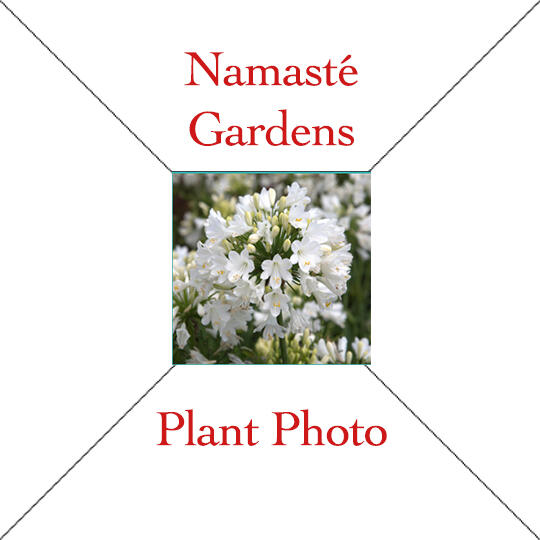
Chives
Zones: 3-7
Size: 2 feet tall
Sunlight: Full sun to partial shade
Soil: Fertile, well-drained
Bloom Time: June – JulyDescription: A perennial edible plant widespread in nature across much of Europe, Asia, and North America (including Washington). Chives are a bulb-forming herbaceous perennial plant, growing to 12–20 inches tall. Their flowers attract bees.Growing: Chives thrive in well-drained, organic rich soil. They die back to the underground bulbs in winter, with the new leaves appearing in early spring. The plant continually re-grows leaves during the growing season, allowing for a continuous harvest. The green stalks and the unopened flower buds are diced and used as an ingredient for omelets, fish, potatoes, soups, and many other dishes. The edible flowers can be used in salads. Chives provide a somewhat milder onion-like flavor than those of other Allium species. Chives have insect-repelling properties that can be used in gardens to control pests.
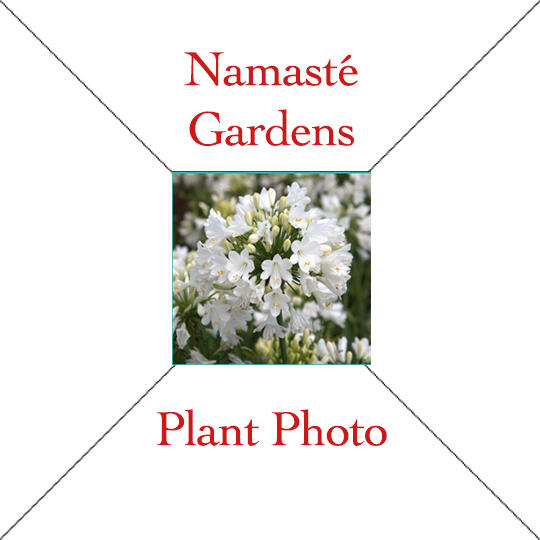
Scented Geraniums
Pelargoniums
Zones: 8-11
Size: 12”-36” tall
Sunlight: Full sun
Soil: Rich, medium-moisture, well-drained
Bloom Time: SeasonalDescription: Pelargoniums have leaves with tempting aromas of lemons, apricots, roses, oranges, even coconuts. They manufacture chemicals in their leaves that have evocative scents. Rubbing their leaves or adding some to your ice water on a hot summer's day is joy not to be missed. Put them somewhere you will brush against them often and become engulfed in their fragrance. They are fast growing and can be enjoyed as annuals in Zones 7 and under. Or, they can be grown in containers on the patio and brought in for the winter. Scented geraniums grow rapidly and lushly and most of them are considerably larger and less floriferous than their more petite cousins, the bedding geraniums.Growing: Scenteds like it warm, sunny and dry. They vary in heights and widths. Some are more tolerant of cold and some are more tolerant of shade. Each spring container grown plants need to be root pruned and given fresh soil and if possible a larger container. Dried leaves can be added to potpourri and sachets and, if left whole, will keep their fragrance for a long time. They can be used to flavor ice water with lime or lemon or flavor butter, sugar or honey; the flowers are edible; used in salads or as a garnish; also used in jellies. Oil distilled from Rose Geraniums is often used in the perfume industry in place of the expensive Attar of Rose oil. Available varieties include: Rose, Orange, Nutmeg, Ginger, Citrosa, Fair Ellen and Pink Capitum.
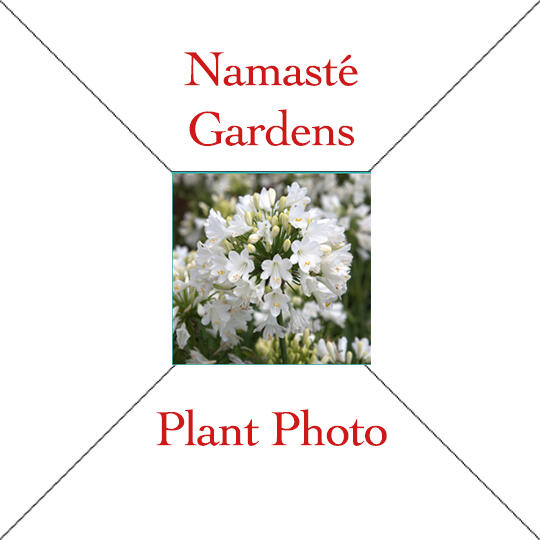
Plant Name
Text
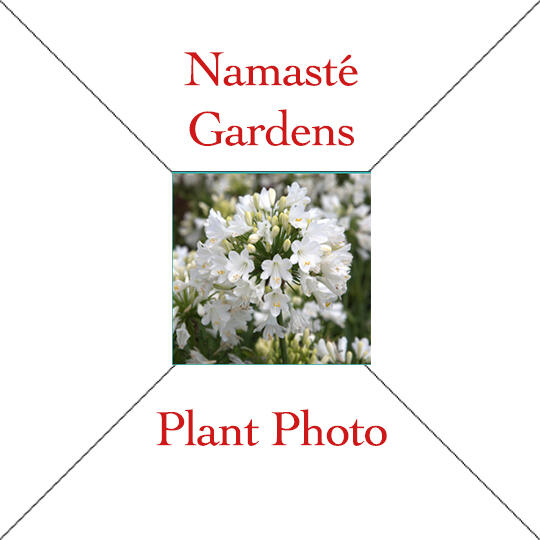
Plant Name
Text
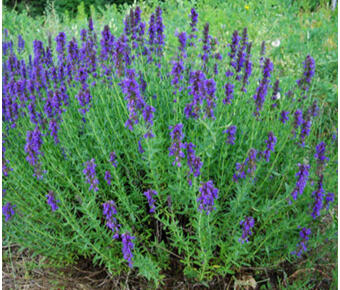
Hyssopus officinalis
Hyssop
Zones: 4-9
Size: 1.5-2 ft. tall
Sunlight: Sun-part shade
Soil: Well-drained, fertile loam
Bloom Time: Mid-summerDescription: Hyssop is an aromatic, semi-evergreen, woody-based, shrubby perennial that grows in an erect bushy clump to 18-24” tall. It is native to the northern Mediterranean coast and Asia Minor, but has naturalized along roads in some parts of the U.S. Hyssop is a beautiful, well-behaved, easy-to-grow member of the mint family that deserves a place in any herb garden. Fragrant, two-lipped, tubular, purple-blue flowers with protruding stamens bloom in whorls on long dense terminal spikes in mid to late summer. It is one of the very best plants for attracting and feeding bees and bumble bees. Legend has it that beekeepers rubbed their hives with hyssop and other herbs to encourage bees to stay. Hyssop also attracts hummingbirds and butterflies.Growing: Hyssop is easily grown in average, dry to medium moisture, in well-draining, fertile loams; full sun to part shade. Established plants have respectable drought tolerance. Hyssop is a bee plant par excellence. Foliage, flowers and plant oils have a long history of culinary and folk medicine uses. Hyssop is probably most famously known as an herb for helping with symptoms of a cold or flu. It has worked for me preventing colds for many years (I drink it in my tea). Leaves have been and still are used in cooking to flavor such things as meats, soups, sauces, salads or stews. Hyssop oil is currently used as a flavoring agent in Chartreuse liquor.
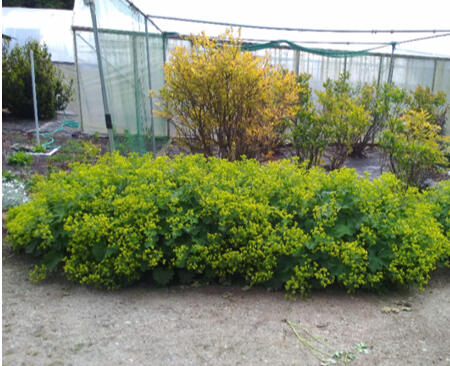
Lady’s Mantle
Alchemilla mollis
Zones: 3-10
Size: 18-24 inches high
Sunlight: Sun to shade
Soil: Grows in most soil types
Bloom Time: July-AugustDescription: The lady’s mantle makes a very attractive border plant and works especially well in areas that get a lot of abuse, such as driveway edges. It produces sprays of chartreuse flowers held above lobed blue green leaves. The leaves are special because they collect water droplets after it rains and give the appearance of shining gemstones nestled among the leaves. These droplets were thought to hold magic powers and were known as ‘celestial water’ by alchemists, thus the name, Alchemilla. Lady’s mantle forms a nice spreading mound and its flowers work great as filler in bouquets. It is drought tolerant and deer resistant.Growing: Lady’s Mantle will grow in any amount of sunlight that a Washington garden provides, from shade to full sun. It will grow in most soil types and is tolerant of clay. I have found it is best to plant it in an area with poor soil because it will start to spread in rich soils (self sows heavily). Lady’s mantle is also useful medicinally. It can be used as an astringent, febrifuge, and tonic. It is prized because it is one of the only wound herbs and can be used for both inner and outer wounds. To preserve Alchemilla, dig up the whole plant in July when it is in bloom and dry it for future use.
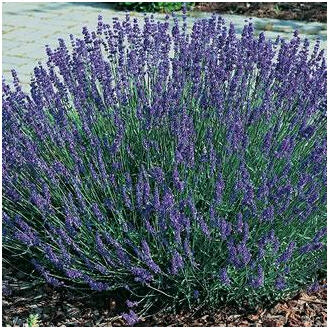
Lavendula
LAVENDER
Zones: 7-10
Size: 10”-2.5 feet tall
Sunlight: Full sun
Soil: Fertile, well-drained
Bloom Time: June-JulyDescription: Prized for their scented flowers and foliage, these Mediterranean natives are a must for your sunny rock or herb garden. And they are deer resistant! A great plant to attract butterflies, bees, and other pollinators to your garden.Varieties: Hidecote is a slower growing variety that gets ~1.5’ tall with deep purple blossoms; slightly less fragrant, it is used for cooking. Fred Boutin is a dense grower with wooly-white leaves and medium purple flowers; it has the strongest fragrance and is used in potpourri. Grosso has extra long flower stems that last a long time as cut flowers. Cushion lavender is a low growing variety that stays short and never needs pruning. I also have a white-flowering variety and a dwarf variety that only grows 10” tall.Growing: Lavender prefers low to moderately-fertile, alkaline soil and full sun. The gray-green foliage is attractive in hedges and edgings or as a solitary companion to rosemary, santolina, artemesias, helianthemum, nepeta, verbena and other plants needing loose, fast draining soil. The flowers are used in sachets and perfumes, for flavoring drinks and cookies and bees make a fabulous honey from them.
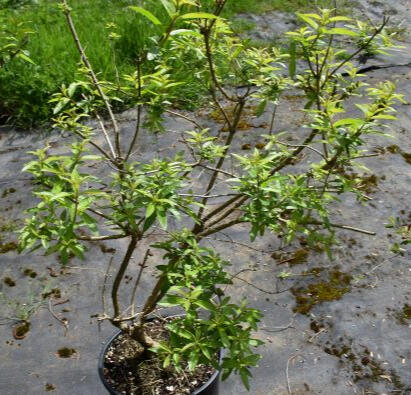
LEMON VERBENA
Aloyisa triphylla
Zones: 8-11
Size: 2-4 feet tall
Sunlight: Full sun
Soil: Well-drained
Bloom Time: August-SeptemberDescription: Native to Chile and Peru, lemon verbena is indisputably the most delicious of the lemon-scented herbs. It makes a wonderful, relaxing tea and works well as a flavoring in foods ranging from ice cream to stir fry. It is also very nice in potpourri or as lemon scent in a fresh flower arrangement. Lemon verbena is useful as an insect repellant and it also has medicinal properties. It has been used to soothe colon and stomach spasms, lower fevers and calm itching. It also has a relaxing effect, and thus works well in an evening blend herbal tea. In your garden, lemon verbena will scent up the whole yard. It has lovely, sword-shaped pale green leaves and small white flowers. It can become leggy as it gets taller, so keep it trimmed in your desired shape or plant shorter perennials in front of it. Lemon verbena is deer resistant.Growing: In Washington, lemon verbena is a tender perennial. Your best bet for growing it would be to plant it in a container and bring it into the house or under the eves for the winter because it does not tolerate wet, freezing temperatures. It will grow in a very hot place, perhaps against a Southern wall, even then I would suggest mulching and covering it for the winter. Plant it in a moist, well-drained area that gets plenty of sunlight.
Mentha
Mint
Zones: 3-8
Size: 12-36” tall
Sunlight: Full sun-part shade
Soil: Fertile
Bloom Time: June-SeptemberDescription: Mentha is a well-known genus that has medicinal and aromatic value. It is one of the most widely used herbs, popular for its fragrance. This fast-growing herb can grow just about anywhere and makes an excellent addition to indoor and outdoor gardens. The plants spread quickly so they should be grown where they can be contained (not in your vegetable garden). Bees and other pollinators flock to the flowers that bloom in pastel shades of blue, mauve, pink, or white.Growing: Mints prefer organically rich, soil with high moisture holding capacity and a neutral pH. They will grow in sun or part shade. After plants are established, harvest leaves regularly by pinching out the tops. Harvest just before plants start to flower for freshest flavor.Uses: often used to flavor vegetables, soups, meat and fish sauces, candy, teas, jellies, condiments and salads. Also used to improve palatability in medicines and in perfumes, cosmetics, toiletries,Available varieties include: spearmint (Mentha spicata), bergamot or orange (Mentha citrata), chocolate mint, mohito mint, banana mint, curled and ginger mint
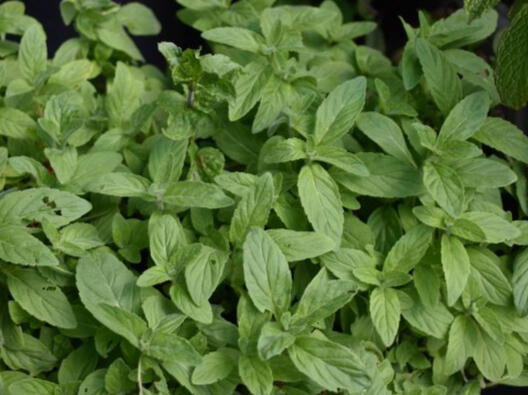
Mint - Banana
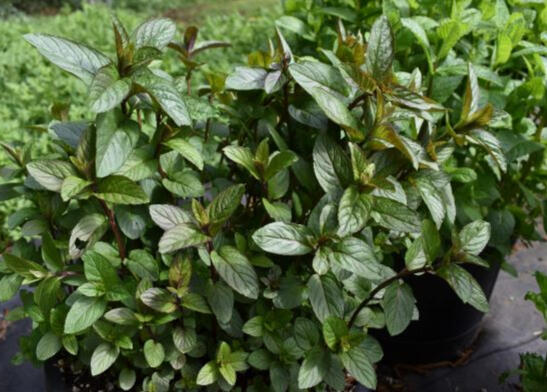
Mint - Chocolate
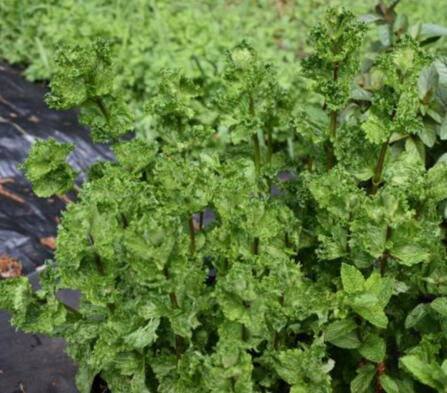
Mint - Curly
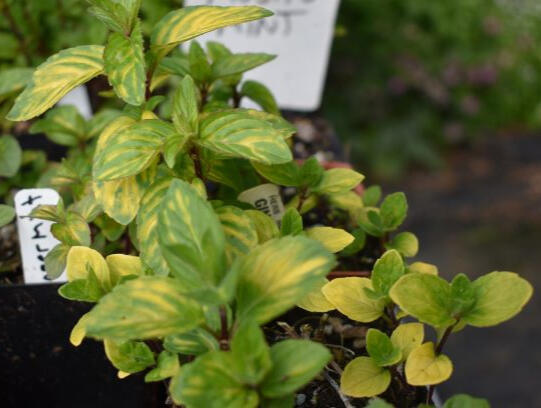
Mint - Ginger
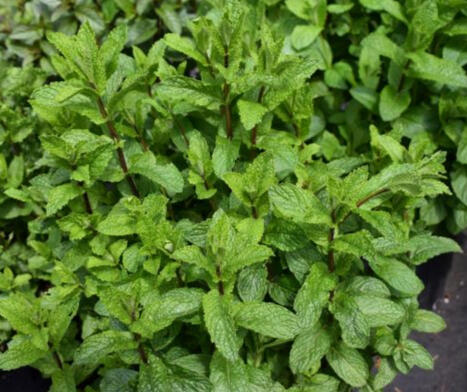
Mint - Mojito
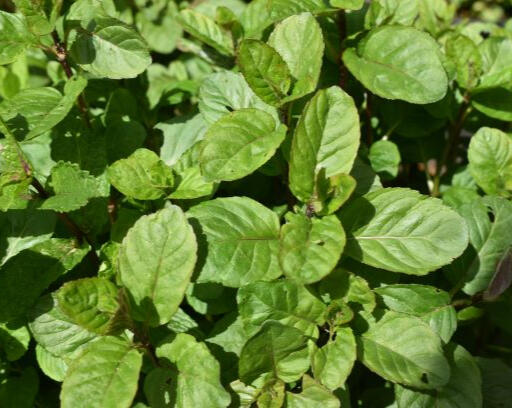
Mint - Orange
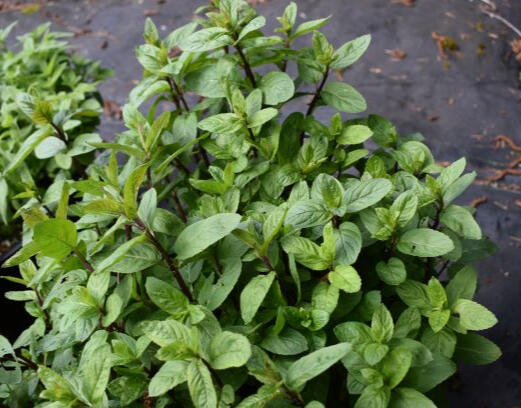
Mint - Peppermint
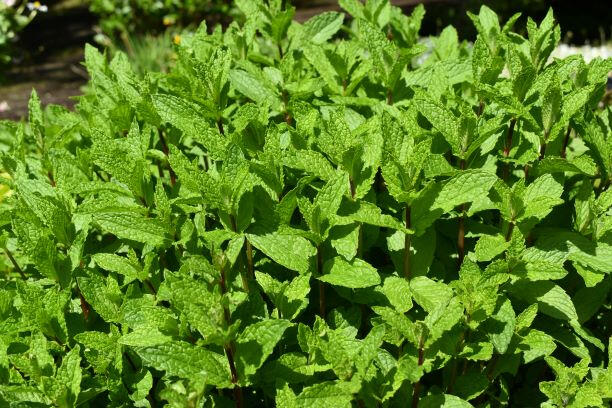
Mint -Spearmint
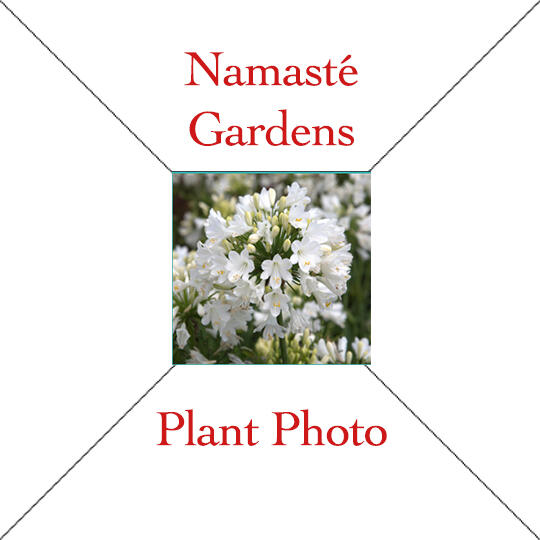
Origanum vulgare aureum
Golden Marjoram
IZones: 4-8
Size: 6-12”
Sunlight: Full sun
Soil: Light, sandy, well-drained
Bloom Time: July-SeptemberDescription: Golden marjoram is a culinary herb with attributes that make it useful as an ornamental plant for the garden. In addition to its culinary uses, creeping golden marjoram makes a tough and attractive ground cover and lawn substitute. It can be mowed to keep it flat with no adverse effects. This marjoram turns a lovely chartreuse in spring and fall taking on a greener hue during the summer months. It is evergreen in our area. It has nectar/pollen rich flowers known for attracting bees, butterflies/moths and other pollinators.Growing Marjoram is easily grown in average dry to medium wet, well-drained soils in full sun. It does very well in gritty, sandy loams and has good heat and drought tolerance. Shear plants back before flowering to keep the planting tidy and to induce growth of new leaves. It is good massed in border fronts, herb gardens or rock gardens and is effective as an edger.
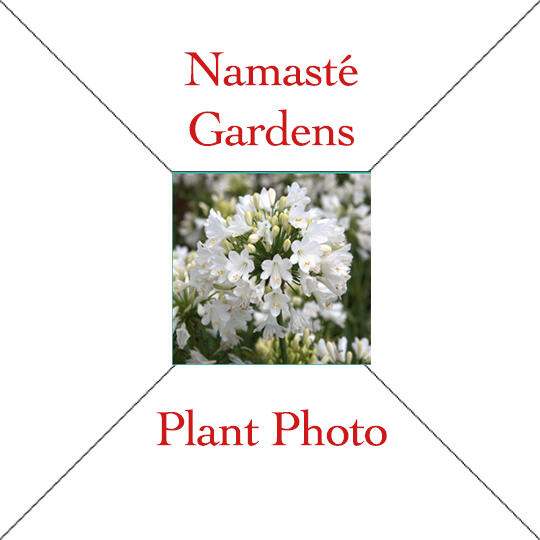
Origanum majorana
Sweet Marjoram
Zones: 9-10
Size: 1-2 ft. tall
Sunlight: Full sun
Soil: Light, sandy, well-drained
Bloom Time: July-AugustDescription: Sweet marjoram is a tender perennial herb grown as an annual in our area. It has delicious aromatic foliage and typically grows in an upright mound from 1-2' tall. Marjoram is a popular herb used for seasoning soups, sauces, salads, stuffings, stews, roasts, vegetables and meats. Its leaves have a more delicate flavor than those of perennial oregano.Growing: Sweet marjoram hates winter wet and poor air circulation and likes a daytime temperature of 70°F and 60°F at nighttime. It likes a rather alkaline pH of 6.9, well drained to dry soil, and full sun. It grows quickly and should be pinched back often to remain bushy. If grown in a hanging basket, the stems form a cascade of attractive gray-green foliage.
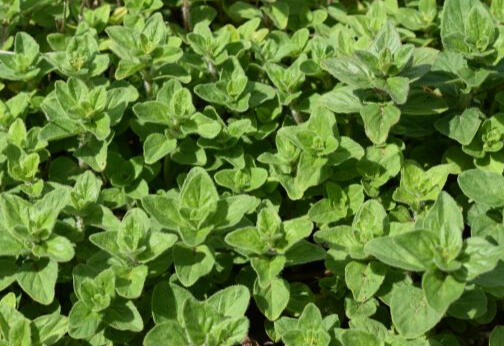
Origanum vulgare hirtum
Greek Oregano
Zones: 4-8
Size: 12” tall
Sunlight: Full sun
Soil: Fertile, well-drained, gritty, sandy loam
Bloom Time: SummerDescription: Greek oregano is one very spicy herb. It is a flavorful sub species of wild marjoram that made its way to America from Greece. Sometimes called winter marjoram, it is a low-growing, fuzzy leaved herb with flower stalks 12” tall.Growing: These plants can be difficult to grow in areas of excessive winter rain. Oregano grows best in full sun and in fertile, well-drained soil. Plant them in raised beds or containers or give the plants plenty of space for air to circulate. Mulching will help keep the plants clean for harvest. Harvest when it starts to flower and either hang inside or spread out in the sun to dry;Uses: Greek Oregano has a strong flavor but it doesn't hold up well to prolonged cooking, especially when used fresh. Valued for use in Italian dishes, it is also good in stews, gravies, soups and salads; Medicinal uses include toothache remedy and liniments.
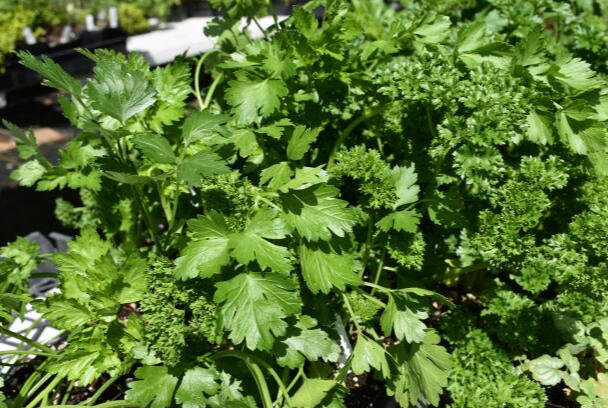
Parsley
Carum petroselinum
Zones: 5-8
Size: Up to 2 feet tall when flowering
Sunlight: Full sun to partial shade
Soil: Fertile, moistDescription: Parsley is delicious and versatile herb native to the Mediterranean shores. It can be used as an ingredient or garnish for almost any dish and even parsley root can be steamed and eaten as a vegetable. Parsley is a good companion plant, deterring noxious pests from nearby flowers or vegetables. It is also a host plant for swallowtail butterfly caterpillars. Parsley can be used as a mosquito repellant by rubbing the juice on your skin. A tincture made from two-year-old roots can be used medicinally as a carminative and as a laxative.Growing: Parsley is a biennial but once you plant it, it will re-seed and new seedlings will come up after the original plant dies. Plant it in the sun or partial shade in moist, rich soil. Once it is established it is very easy to grow and to keep in your garden year after year. If the leaves become coarse in the heat of summer you can promote new growth by cutting off all of the leaves and giving it extra water.We have both curly and flat leaved parsley available for sale.
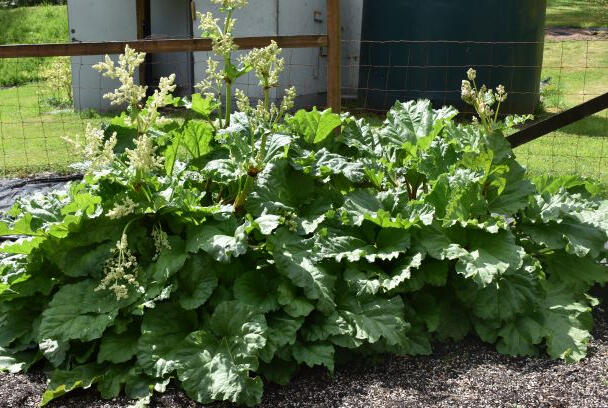
Rhubarb
Zones: 3-8
Size: 2-3 ft. tall
Sunlight: Sun
Soil: Fertile, organic, well-drained
Harvest Time: Spring-early summerDescription: Growing Rhubarb is relatively simple in cool climates and unlike most vegetables, it is a perennial and so can be left in the ground and will return a crop for many years. Rhubarb is quite a hardy crop and is able to withstand dry conditions. Apart from applying fertilizer rhubarb will survive and produce good yields with little other tending. Used in combination with sugar - in crumbles, yoghurts, pies, trifles, or just with custard, Rhubarb is a very popular home grown vegetable. Do not eat the rhubarb leaves or roots as they contain oxalic acid which is poisonous.Growing: It is advisable and worth the effort to prepare the soil adequately before planting as the rhubarb will rely on the soil for a number of years to come. Dig the soil to a good depth and introduce a high level of well rotted organic matter such as manure or compost into the soil to provide nutrients and a good soil structure. It will tolerate some shade, but produces the best yields in full sun. And it likes plentiful, consistent moisture. It likes a well drained, fertile soil that contains a good amount of organic matter. If the soil is not well drained, water logging can result in the crown rot.
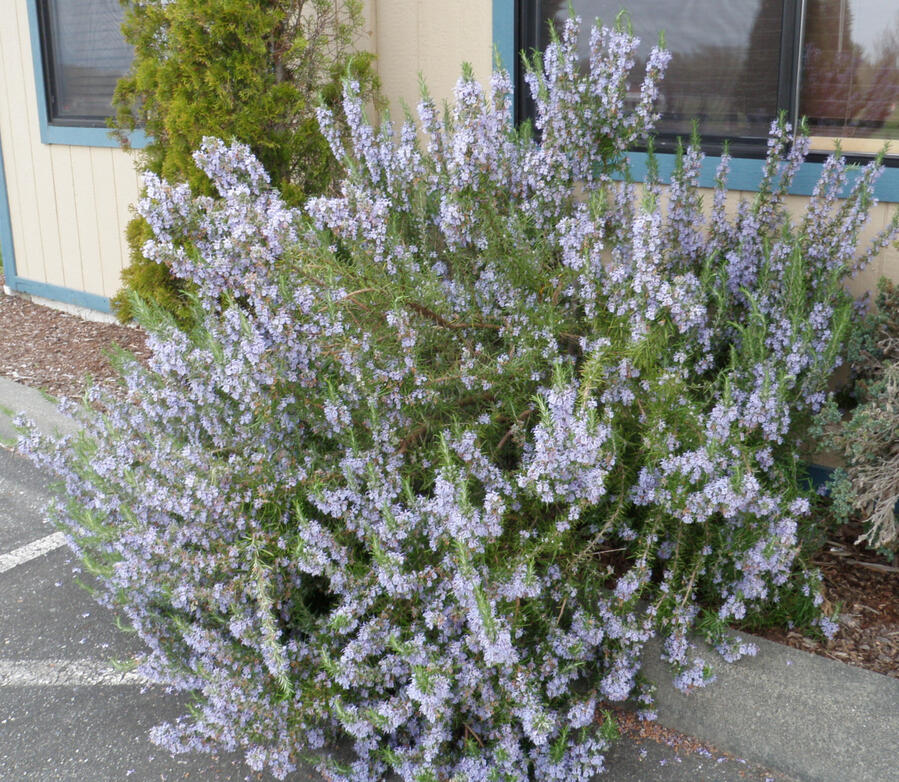
Rosemary
Zones: 6-10
Size: 2-4 ft. tall
Sunlight: Sun
Soil: Dry, well-drained
Bloom Time: Spring-summerDescription: Rosemary is an evergreen, perennial shrub from the Mediterranean. Noted for its spicy aromatic leaves used in cooking, it is also commonly used as ornamental plantings in the landscape. It is marginally hardy in our area according to some, but there are some varieties that survive here just fine.Growing: Rosemary likes full sun and though it does well in areas with high humidity, it thrives in dry climates too. The soil needs to be fast draining and light. Word of advice, plant it near the kitchen so that when you’re in the middle of cooking dinner and decide you need some rosemary, it’s not too much trouble to go for.Uses: Spice used in cooking meats, soups, stuffings, sauces, stews, with vegetables such as peas and spinach and with sweet dishes such as biscuits cakes, jams and jellies. They can be used fresh or dried. A fragrant tea is made from the fresh or dried leavesAvailable Varieties: R officinalis varieties are erect and will grow to shrub size. They include one I label ‘Burlington Rosemary’, a variety growing in the parking lot of a place I worked for 18 years and it never died so it is hardy! One labeled ‘Portland’ – a variety I found growing as a hedge surrounding a yard in Portland. ‘Tuscan Blue’ - a large leafed, attractive variety and ‘Arp’, another hardy variety. R. prostrates is a creeping form useful in covering exposed banks or in planters or hanging baskets; It is not as hardy as the others.
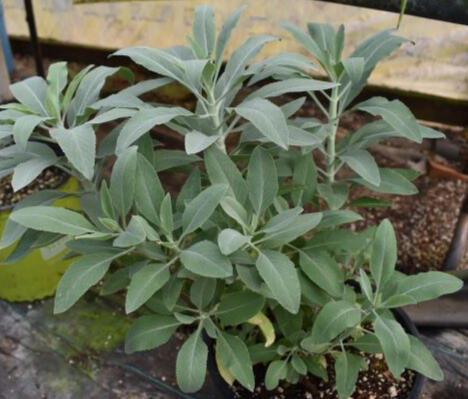
Salvia apiana
White Sage
Zones: 8-11
Size: 3-5 feet
Sunlight: Full sun
Soil: Gravelly, well-drained
Bloom Time: April-JuneDescription: White Sage is a shrub that is endemic to low elevations of the coast, hills, and valleys of Southern California and Baja, Mexico. Salvia alpiana is a two to five foot evergreen, multi-branching, woody shrub with dusty gray-green foliage. The flower stems can rise up to 5 ft. above the foliage. Bees love the white with purple tinged flowers but have trouble getting in. Bumblebees seem to be able to fight their way in and hummingbirds have no problem with it. It is also great for a bird and a butterfly garden.Growing: White Sage is easy to grow preferring sunny dry slopes in a wide range of soil types as long as they are well-drained and no extra water given after the first year. Good drainage is essential for over-wintering. Cut back and mulch the plants heavily in late fall. USDA Plant Hardiness Zones 8 to 11. Although some sources list it as tolerating Zone 7, which has an average annual minimum temperature of 0 degrees F. This Native American incense herb is now commonly used in smudge sticks. It is wonderfully pungent with a heady aroma.
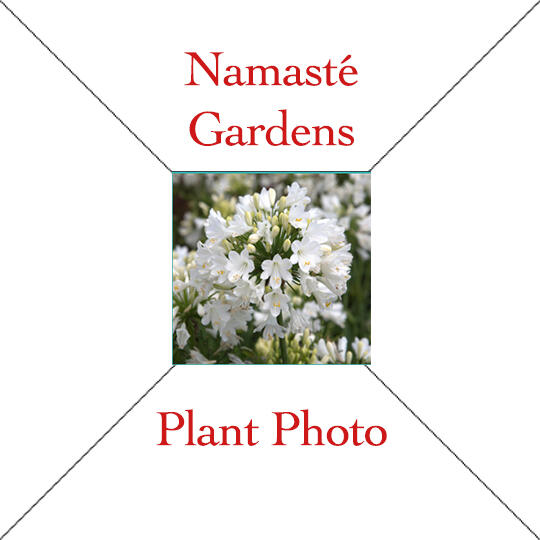
Plant Name
Text
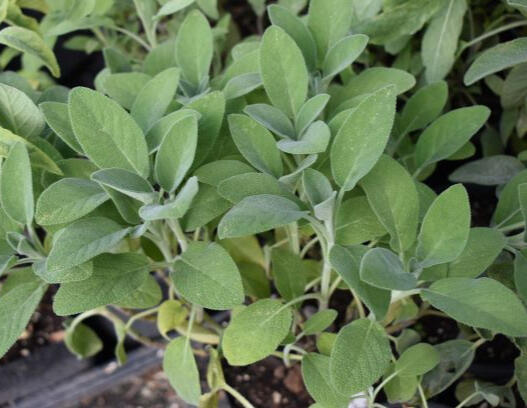
Salvia officinalis
Culinary Sage
Zones: 5-10
Size: 1-2.5 feet
Sunlight: Full sun
Soil: Average, well-drained
Bloom Time: SummerDescription: Common sage is an edible herbaceous perennial herb in the mint family. It has been listed as one of the essential culinary herbs for generations and is a welcome plant to many home gardens. The flowers appearing in early summer attract butterflies and bees.Growing: This herb does best in a rich clay loam with a good supply of nitrogen. Like many herbs sage can be killed by our cold wet winters, especially if the soil is not well drained. Grow it in a sunny location in well-drained, well-aerated soil. You can cut back woody growth in the spring but I find it better to lightly trim the plants throughout the growing season because hard pruning can kill the plant.Uses: Sage appears in many European cuisines, notably Italian, Balkan and Middle Eastern cookery. It is used for stuffings, pork and poultry or blended with cottage and cream cheese. Numerous medicinal uses have also been attributed to sage including as a wash for treating mouth sores, as a gargle for sore throats, for easing fevers and as a headache remedy.Available varieties: Purple, Big Leaf, Berggarton, Variegated and Golden.
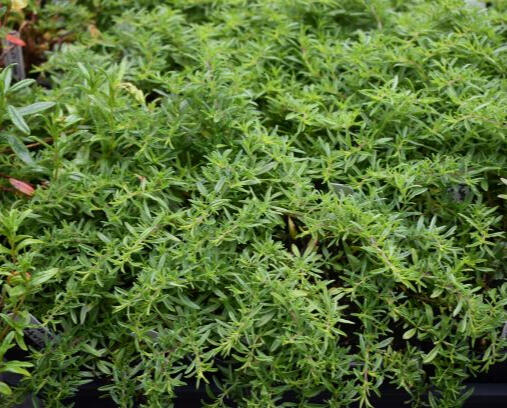
Satureja montana
Winter Savory
Zones: 5-11
Size: 8-15” tall
Sunlight: Full sun
Soil: Fertile, well-drained
Harvest Time: Summer, before floweringDescription: Winter Savory is a semi-evergreen herb. There are two varieties, an upright, bushy variety and a creeping variety This herb’s primary use has shifted over the years from medicinal to culinary It makes an excellent companion plant for onions and green beans.Growing: Winter Savory is a hardy perennial preferring light, sandy moderately fertile soil and full sun. It is easy to grow and once established, takes nominal care. Harvest when the plant begins flowering and hang in bundles or spread on screens to dry. It makes an attractive border plant for any culinary herb garden.Uses: Both winter and summer savory have a strong peppery flavor, although winter savory has a more pungent flavor than summer. It blends well with different culinary oreganos, thymes and basils and can be added to meat, poultry or fish. Its small leaves are the perfect compliment to herb cheeses or as last-minute additions to sautés. There are very few dishes that a little Winter Savory won't make better. I use it in my hearty soups or for making gravy. It is also used in flavoring liquors.
Text
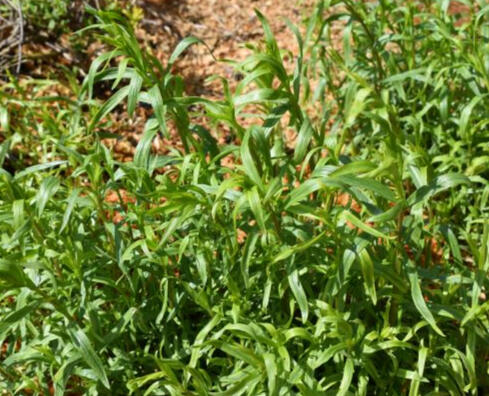
French Tarragon
Artemesia dracunculus
Zones 4-9
Zones: 5-8
Size: 2-3 feet tall
Sunlight: Full sunDescription:
An herbaceous perennial that grows 2-3 ft. tall, tarragon has airy silvery green leaves that form a spreading mound. Many garden pests are repelled by Tarragon, so it makes a nice companion plant for flowers or vegetables that need protection. Tarragon also promotes healthy growth and gives good flavors to vegetables that are planted next to it. It is drought, deer, and rabbit tolerant. Tarragon is a delicious herb somewhat resembling anise in flavor. It makes a flavorful addition to white sauces, fish, vegetables, cheese, and egg dishes. Harvest your Tarragon when its leaves start to turn yellow. Strip the leaves from the stems and dry them in a warm, well-ventilated area. The leaves become more aromatic as they dry.Growing: Plant tarragon in full sun and fertile, loamy soil (it does not like soggy conditions). Tarragon does not like the wet Pacific Northwest winters but if you plant it in a well-drained spot it does just fine here. It also does well in a container that you can move under the eves for winter.
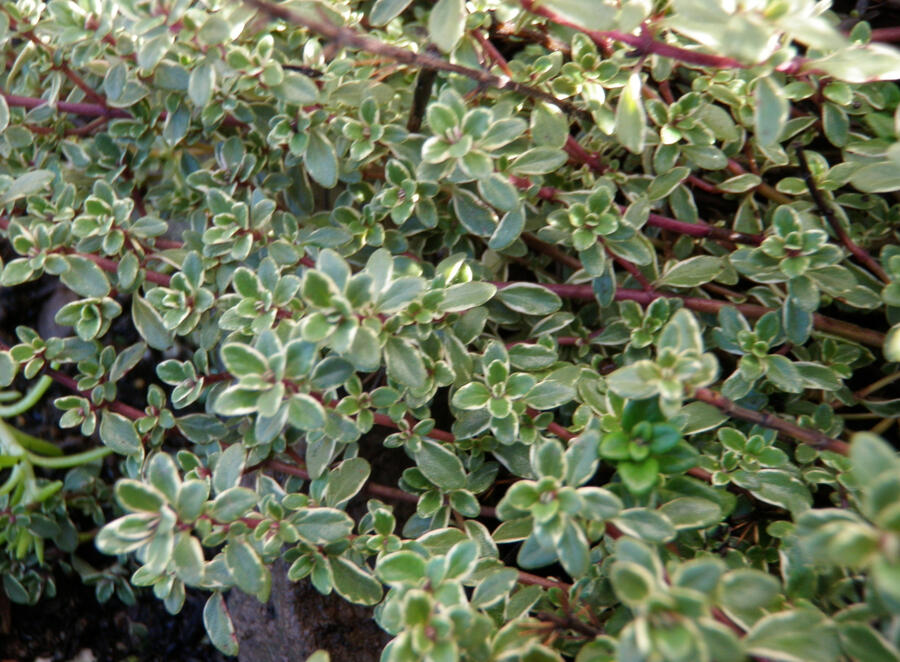
Thymus
Thyme
Zones: 5-9
Size: 2”-1.5 feet tall
Sunlight: Full sun
Soil: Rich, well-drained soil
Bloom Time: Late spring-summerDescription: An herb often grown for its ornamental value as well as for its culinary properties. Being evergreen, it gives winter interest to the garden and it is quite attractive when it flowers, to humans and bees alike. Both upright and creeping varieties are available.Growing: This hardy plant will grow most places, but prefers fertile, light, sandy or loamy soil in full sun. avoid heavy, wet soils. Harvest in midsummer but leave the second growth for overwintering. Regular light pruning helps keep the plants bushy and prevents them from getting woody and brittle. Grow thyme in your herb garden, at the edge of a walk, along a short garden wall, or in containers. You can also grow thyme indoors by placing it in a sunny window, preferably near the kitchen where you can easily grab some for a meal you are cooking.Uses: Thyme is a universal seasoning good with just about anything. I always ask customers who want to know what herbs they should grow, what herb do they most use in their cooking and thyme usually tops the list. It is also important medicinally as an antiseptic and in: soaps; anesthetics, mouthwashes; deodorants and incense.Available varieties: Lime, Mother –of-Thyme, Silver and Tabor.
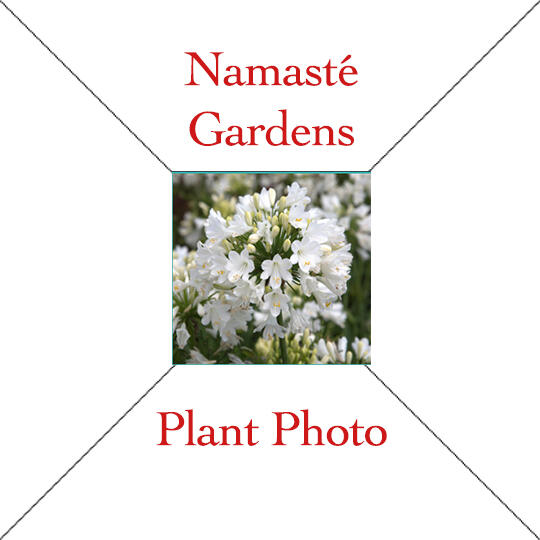
Plant Name
Text
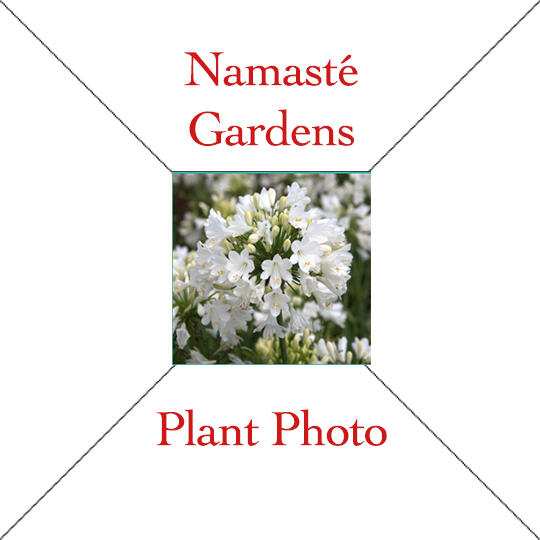
Plant Name
Text
Text
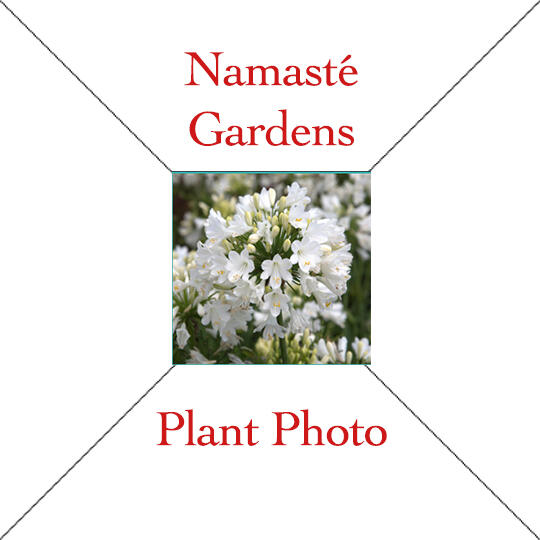
Plant Name
Text
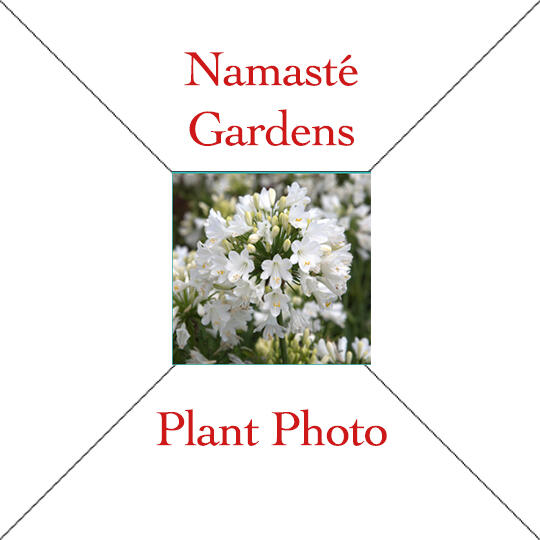
Plant Name
Text
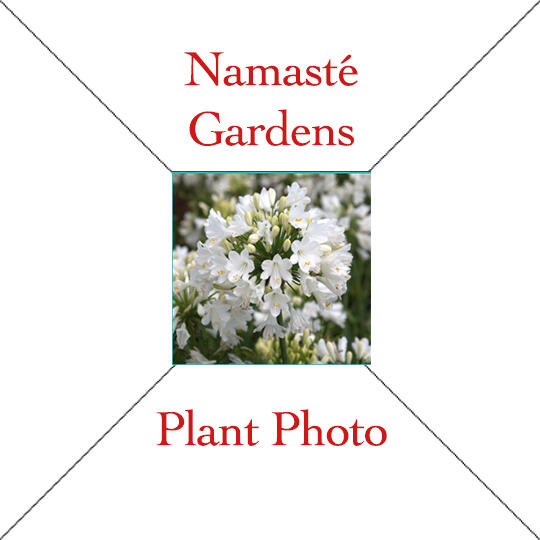
Plant Name
Text
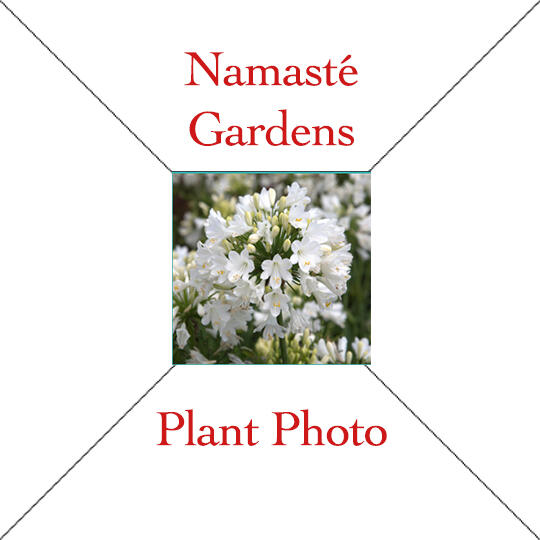
Plant Name
Text
Text
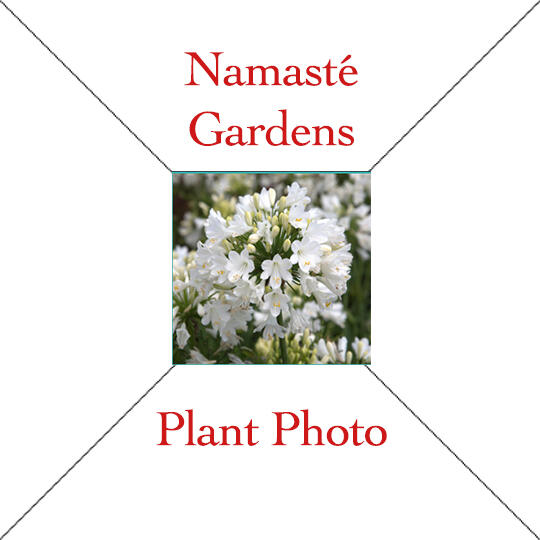
Plant Name
Text
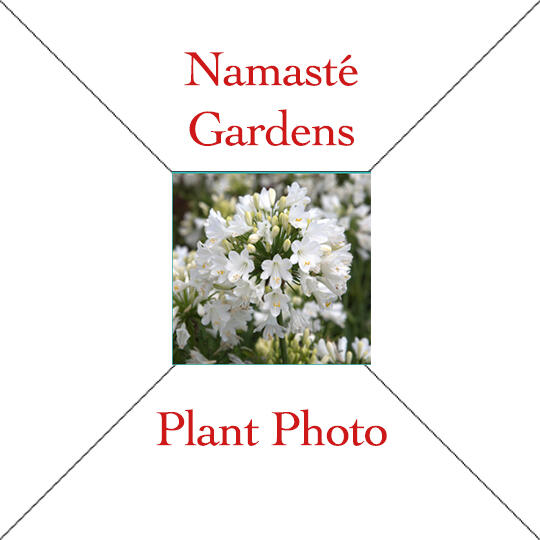
Plant Name
Text
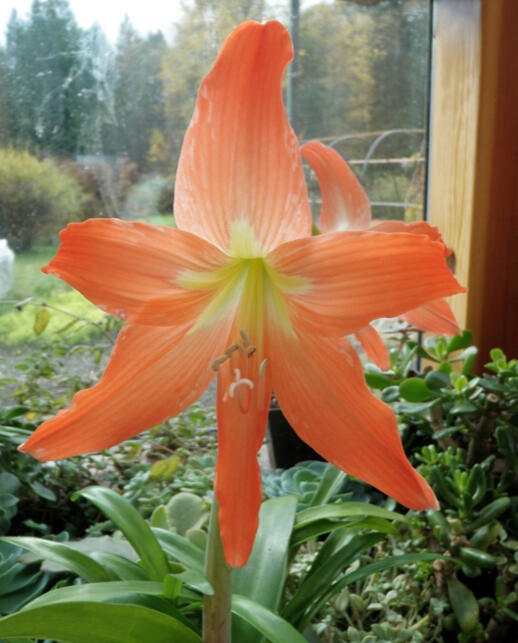
Amaryllis Apricot
The large bell-shaped or lily-like flowers of the amaryllis and its hybrids make excellent potted plants. These orange and red flowering cultivars are easy to grow and bloom in the winter when they are most appreciated. They sometimes will flower twice a year. Plant the bulb in a container that is one to two inches larger in diameter than the base of the bulb. Potted bulbs thrive under conditions in which they are slightly rootbound. Plant amaryllis with about one-third to one-half of the bulb above the growing medium surface. Plant in a well-drained, sterilized potting medium with a soil pH between 6.0 and 6.5. A mixture containing equal parts peat and perlite is excellent. The sun-loving amaryllis grows best in a well-lighted area that receives at least four hours of direct sunlight each day. Amaryllis prefers warm temperatures (70 to 75 °F) for best growth until the roots form and the leaves and flower stalk begins to grow. Once the plant flowers, cooler temperatures (65 °F) will prolong the life of the flower. Watering once per week is usually adequate. Fertilize amaryllis twice a month using a soluble fertilizer recommended for pot plants at full strength and frequency. The secret of successfully growing amaryllis is to keep the plants actively growing after they finish blooming. Remove the blossoms as soon as they fade to prevent seed formation by cutting the stem off just above the bulb.
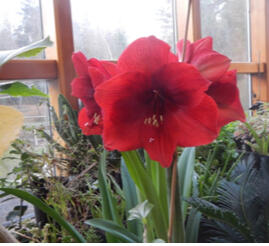
Amaryllis - Red
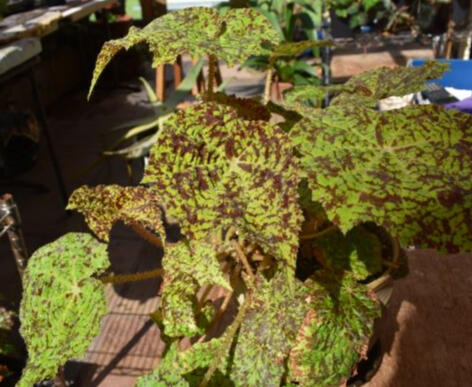
Begonias
Text
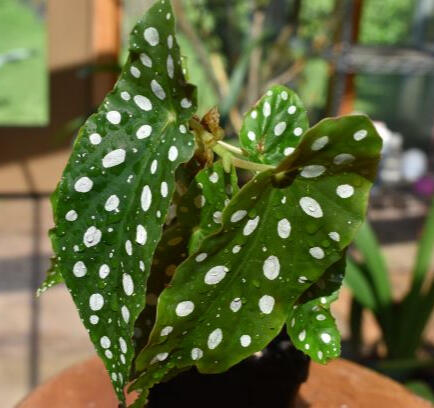
Begonia - 'Angel Wing'
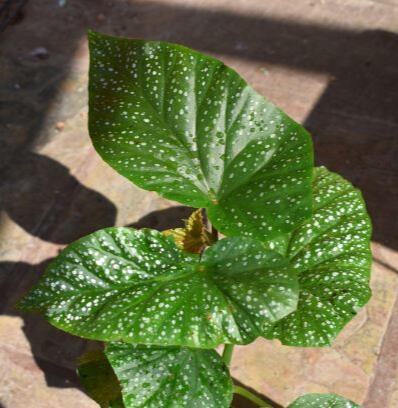
Begonia - 'Angel Wing'
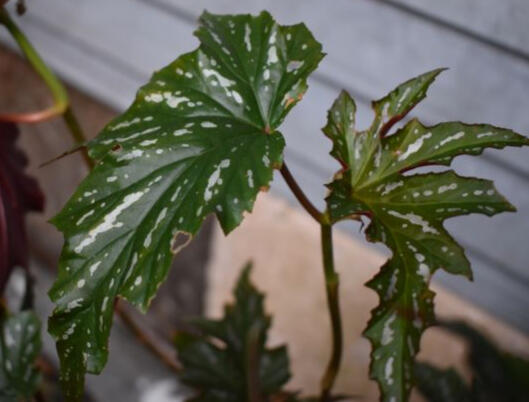
Begonia - 'Angel Wing'
Text
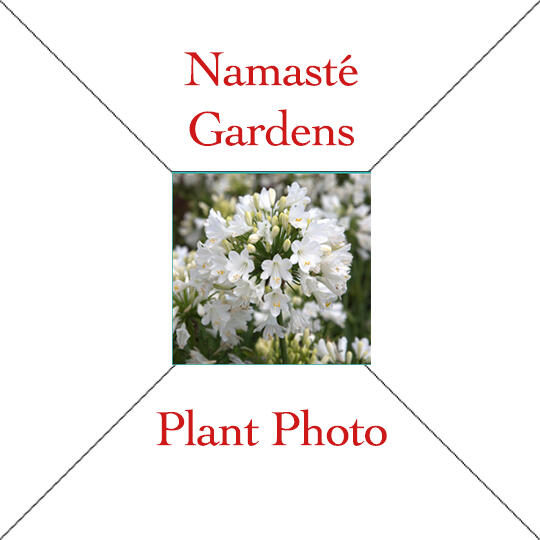
Plant name
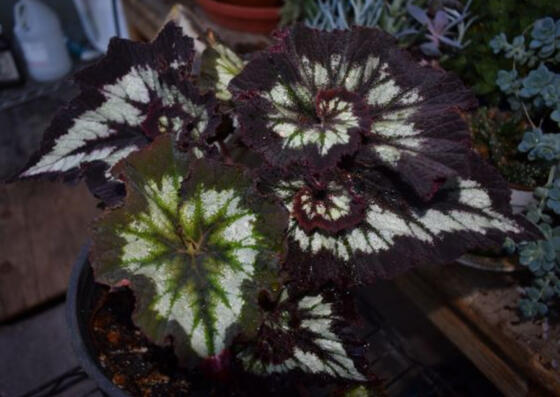
Begonia -'China Curl'
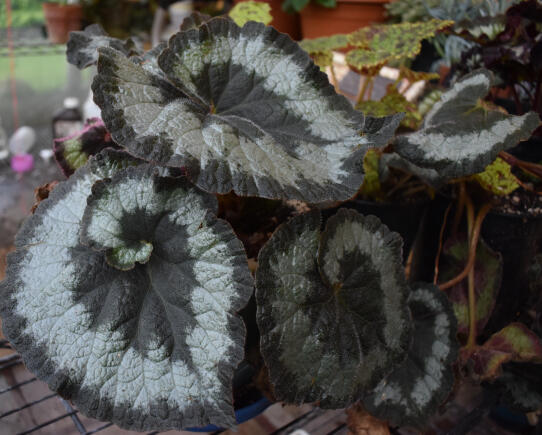
Begonia -'Escargot'
Text
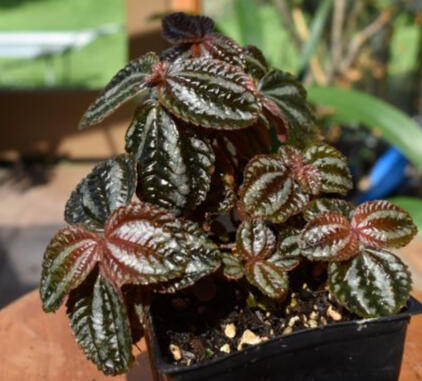
Frittonia argyroneura 'Juanita'
Text
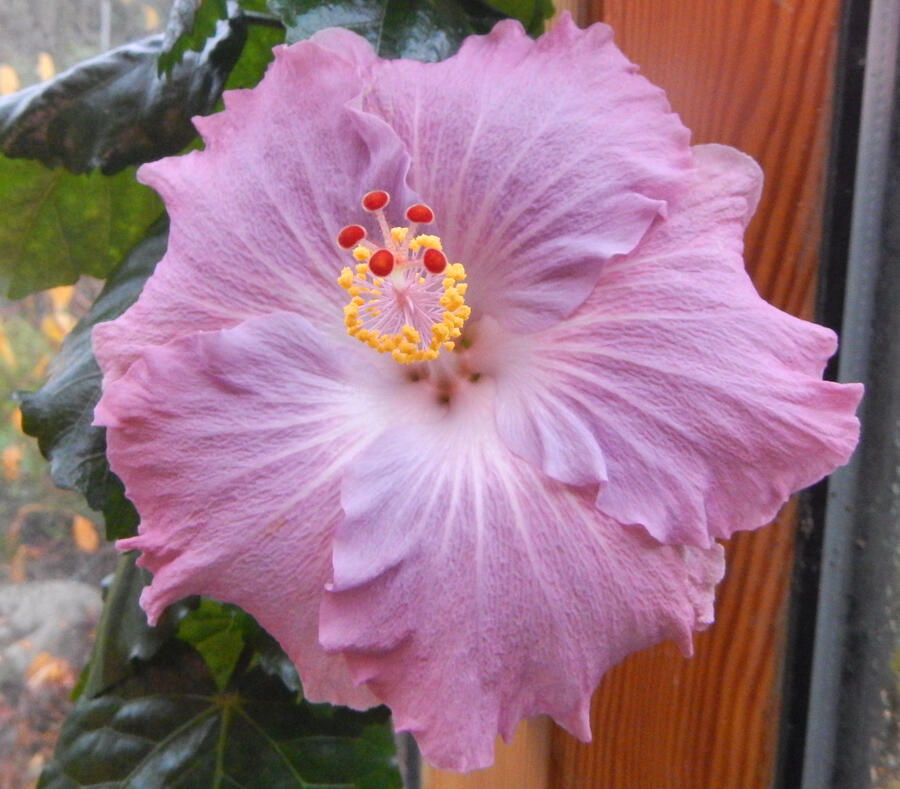
Hibiscus - Purple
Text
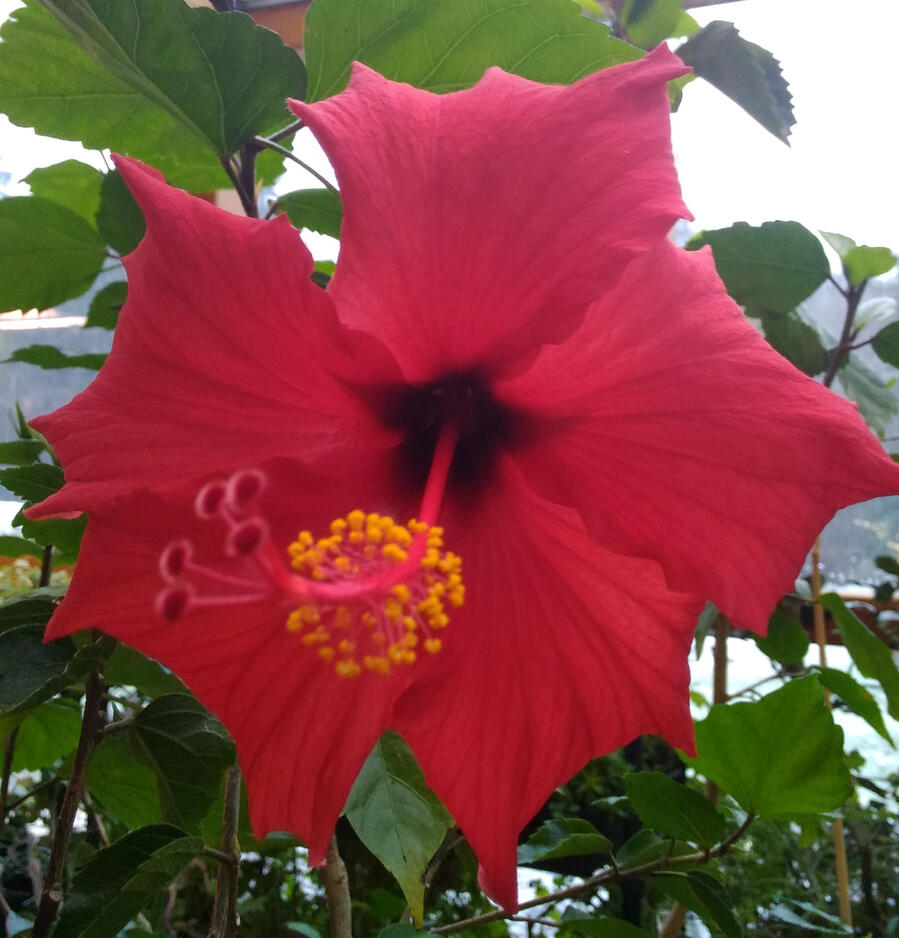
Hibiscus - Red

Hypoiestes
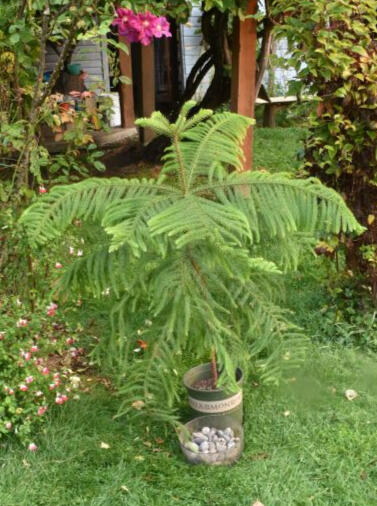
Norfolk Pine
Araucaria heterophylla
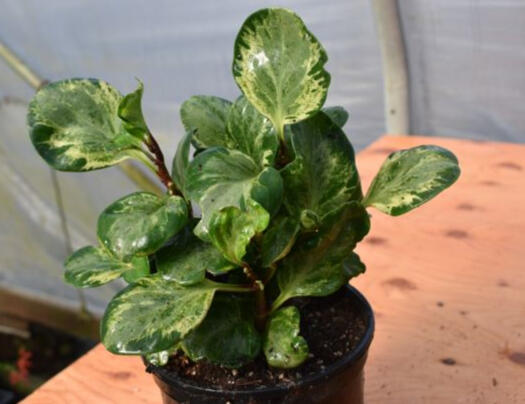
Peperomia
'Golden Gate'
Text
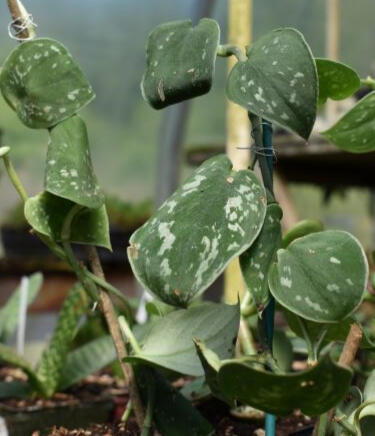
Philodendron -
Small Leaf
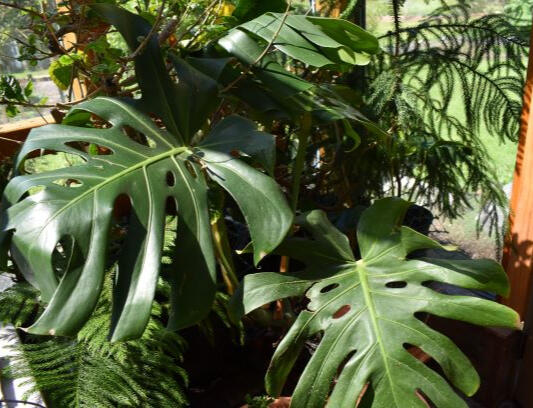
Philodendron -
Split Leaf
Text
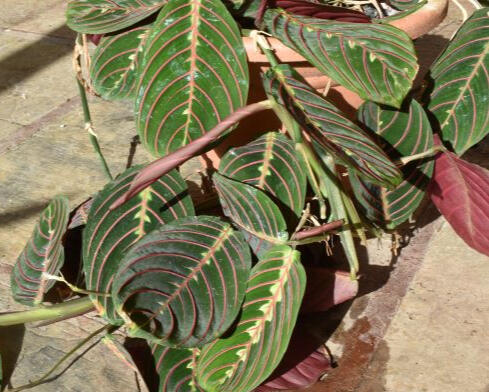
Prayer Plant
Maranta leuconeura
Text
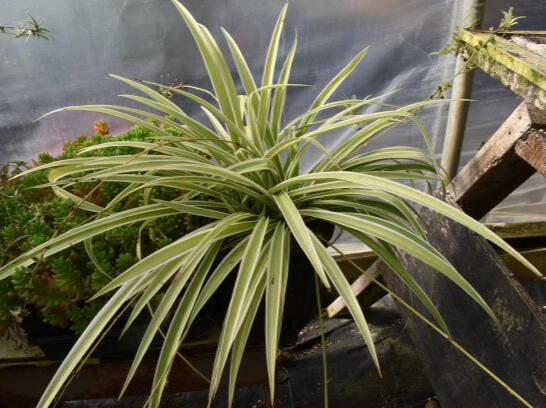
Spider Plant
Text
It is a spectacular garden that manages to include vertical as well as horizontal displays. The trick is managing to meld the two together. Evergreen or deciduous, trees have a role to play, whether it is to keep a patch of green through the long winter months or to add a vibrant display of color in autumn before they lose their leaves. I have short 2’ Hebes up to giant Gingkos, evergreen Ceanothus and Leycesteria with chartreuse-colored leaves year-round; Low growing, never need pruning Hypericums which have long-lasting displays of 2” flowers all summer long; Fragrant Lilacs and Mexican Orange Blossom and don’t forget our native Mock Orange will fill the yard with its fragrance when it is in bloom.
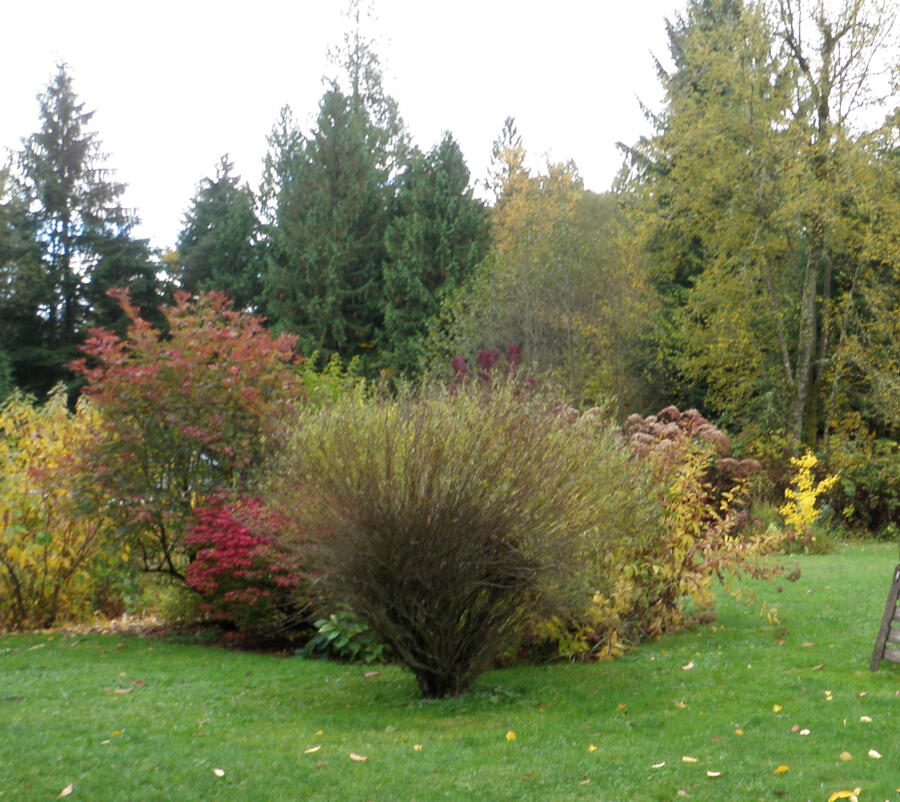
Salix purpurea
Arctic Willow
Zones: 3-8
Size: 5 ft. tall
Sunlight: Full sun to part shade
Soil: Tolerant of most soilsDescription: A useful shrub for wet places or as a screen, Arctic Willow is more than just a quick fix for a landscape problem, it is graceful and subdued, a moody presence to encourage contemplation. Slender branches of dark purple color are adorned with gray-green leaves. The slightest breeze encourages these branches into a gentle dance.Growing: Arctic Willow bows to the gardener; it grows quickly into a five foot shrub; thrives in moist rank soils where little else can grow including intermittently flooded ones, but tolerates somewhat drier soils better than some other types of willows. The species can be useful for erosion control on stream or riverbanks This plant can be cut to the ground every few years, a good thing to do, since this keeps it dense and in bounds. Flexible twigs are often used in basketry, hence the sometimes used common name for this shrub of basket willow.
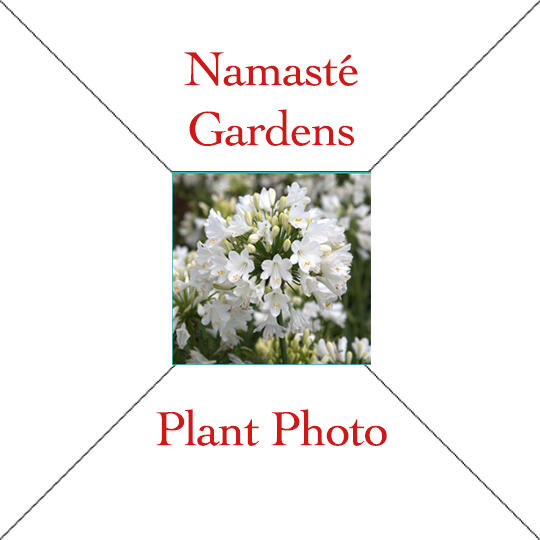
Plant Name
Description
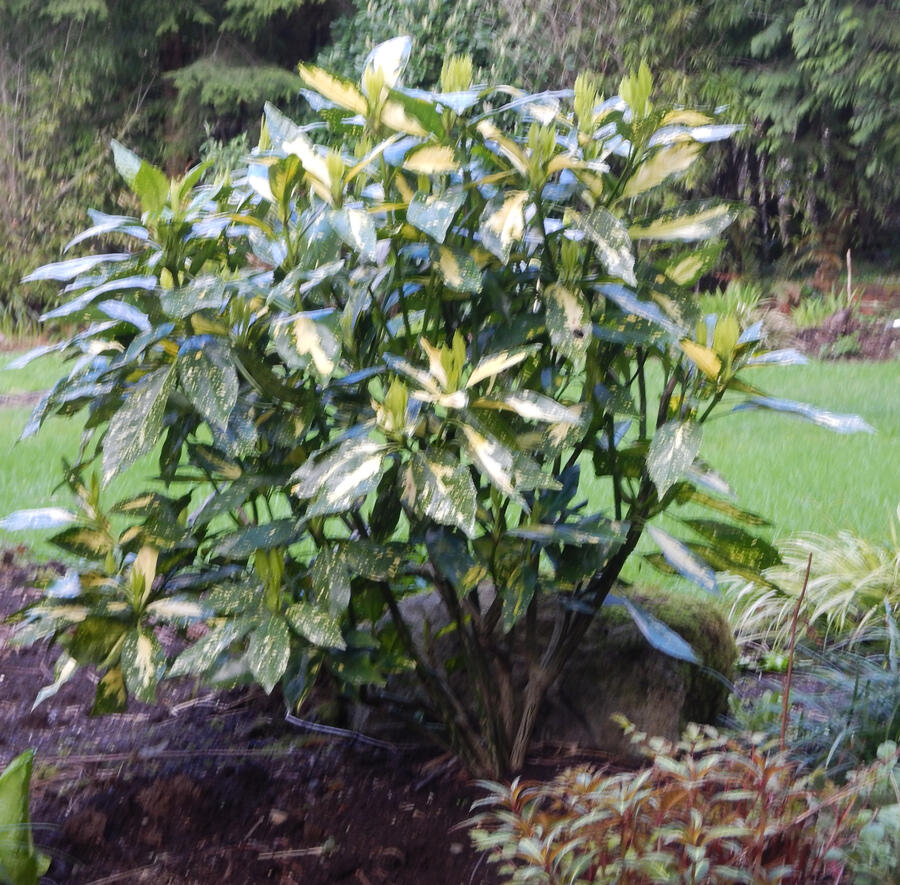
Aucuba japonica ‘Picturata’
Zones: 6-10
Size: 4-6 ft. tall
Sunlight: Full to part shade
Soil: Well-drained, moist
Bloom Time: Flowers inconspicuousDescription: This broad-leaved evergreen shrub is highly valued for the showy dark green leaves with bright golden-yellow centers. It makes an excellent accent for shady situations. It is slow-growing to 4 to 6 feet high, almost as wide.Growing: Aucuba grows happily in partial to full shade. It likes a moist, loamy, well drained, acid soil. It can survive cold winter nights that go as low as 0° Fahrenheit. Its foliage works nicely in flower arrangements. It can be grown as a houseplant in a cool room.
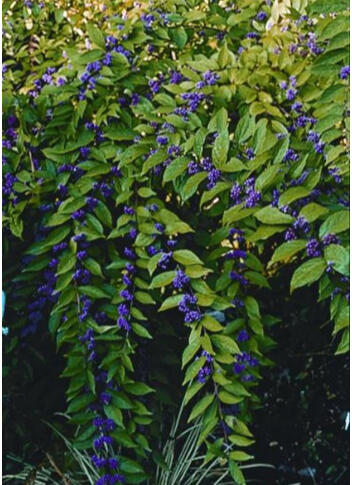
Callicarpa dichitoma
Purple Beautyberry
Zones: 5-8
Size: 4 ft. tall by 4 ft. wide
Sunlight: Full sun to part shade
Soil: Well-drained, average
Bloom Time: June - AugustDescription: This deciduous shrub grown for its colorful autumn display of leaves and berries. It produces small pink flowers in the summer followed by dazzling purple berries that attract birds. Elegant branches sweep downward with the leaves neatly lines up on each side of the branch and the tiny, pearl-like berries cascading down the branches. A low shrub - 4 ft. high with a 4 ft. spread. This plant can survive cold winters where the average annual low is -20° Fahrenheit. Beautyberry will attract bees and butterflies. Birds and small mammals are also attracted to the fruit.
Deer rarely bother the shrub.Growing: Your beautyberry will grow best in a sunny spot or a woodland area that is only partially shaded. It likes fertile, well-drained soil that gets a medium amount of moisture. To ensure good berry production, it is best to plant beautyberry shrubs in groups so that they can cross-pollinate without trouble.
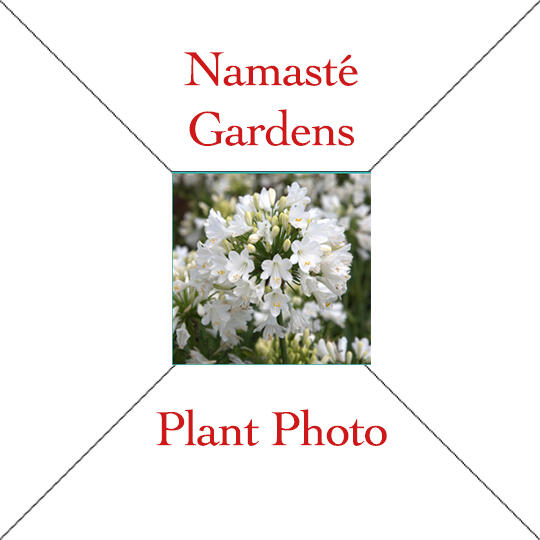
Plant Name
Text
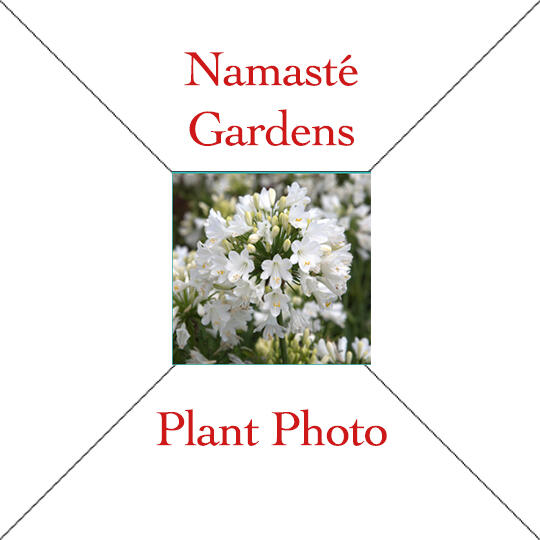
Plant Name
Text
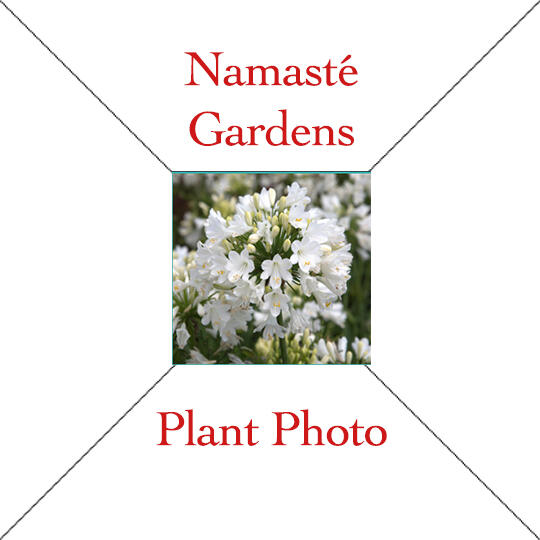
Plant Name
Text

Ceanothus ‘Victoria’
California Lilac
Zones: 7-9
Size: 5-15 feet tall
Sunlight: Full sun
Soil: Well-drained
Bloom Time: June-JulyDescription: When the Ceanothus is in bloom there is nothing that can match it. Its shiny green foliage suddenly erupts with bright blue flowers that draw the eye and nose alike. It continues sporadic blooming until frosty weather hits. Its wonderful fragrance fills the yard and bees and butterflies flock to it from miles around. The evergreen Ceanothus is not just attractive when it is in bloom though. It has glossy, dark green leaves and the bush is amenable to pruning into any shape you like. Just be sure to prune in the early autumn or late spring when there is no eminent threat of freezing temperatures because we have killed plants by pruning them right before a cold snap.Growing: Plant your Ceanothus in a sunny, well-drained area. It really does not like to get very wet at all, so do not overwater it.
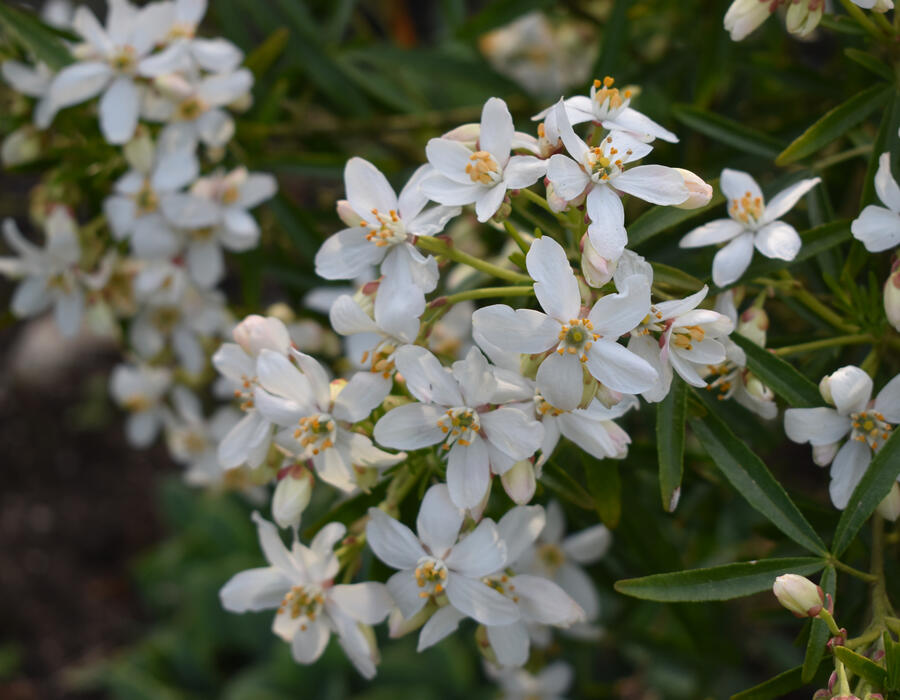
Choisya ‘Aztec Pearl
Mexican Orange Blossom
Zones: 7-9
Size: 4-6 feet tall
Sunlight: Full sun to part shade
Soil: Fertile, well-drained, acidic
Bloom Time: April-JuneDescription: Valued for its fragrant flowers and aromatic, evergreen foliage, this elegant small shrub’s handsome rounded visage will form a close-knit and finely textured low screen or informal blooming hedge in your garden. Choisya blooms mainly in spring (April through June), but usually has a second bloom not so extreme in late summer or early autumn. The white blossoms burst forth in profuse clusters from pink buds having an almond scent. They are hosted terminally on slender, glossy and trifoliate dark green leaflets. They are rich in nectar and loved by bees and butterflies. Resistant to deer
Growing: Here on Puget Sound, it prefers full sun to part shade and does well in our naturally acidic soils. Choisya has a shallow root system, and if planted too deep will never root properly. So if obtaining a specimen that is root-bound, the roots must be loosened up & spread so that they won't be pointing downward in the soil. It takes very well to pruning which will increase both the shrubs density but the amount of flowers as well.
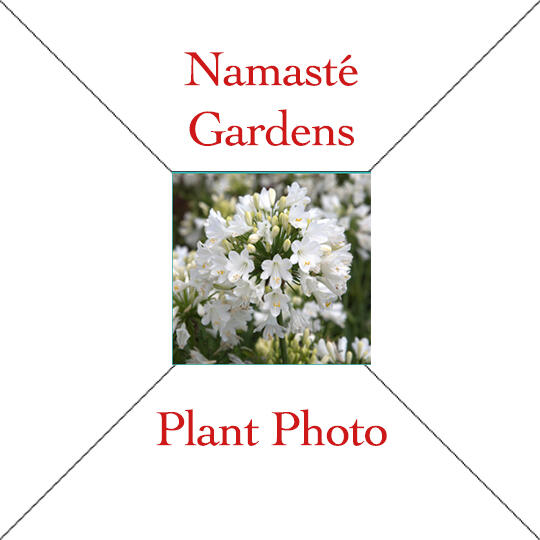
Clethra alnifolia
Summersweet
Zone: 4
Size: 5-8 feet tall
Sunlight: Full sun to part shade
Soil: Moist, organically rich, acidic
Bloom Time: Mid to late summerDescription: Summersweet is a slender, upright, slowly spreading, deciduous shrub native along the entire eastern United States. It typically grows 5-8' tall and features fluffy, bottle brush-like, terminal, 3-6" spikes of extremely fragrant white flowers. The flowers have an intensely spicily sweet fragrance and bloom on current season's growth for 4-6 weeks in mid to late summer. Serrated, glossy, dark green leaves turn a striking yellow in autumn. Flower spikes give way to spikes of dark brown seed capsules, which persist into winter and provide continuing interest. The flowers are very attractive to butterflies and bees.Growing: Clethra is easily grown in consistently moist to wet, acidic soils, in full sun to part shade. It is adaptive to a wide range of soil, moisture and light conditions however. Summersweet is an excellent, trouble-free shrub which masses well in conspicuous areas in lawns or shrub borders where its attractive foliage, fragrant summer bloom, good fall color and tidy winter appearance can be showcased. Slender, upright habit makes it ideal for planting in narrow spaces in the perennial border or around foundations. It is also a good shrub for wet areas, such as low spots, stream banks or pond/water garden edges and it is tolerant of ocean-side plantings.
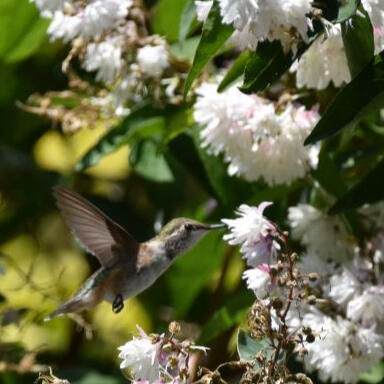
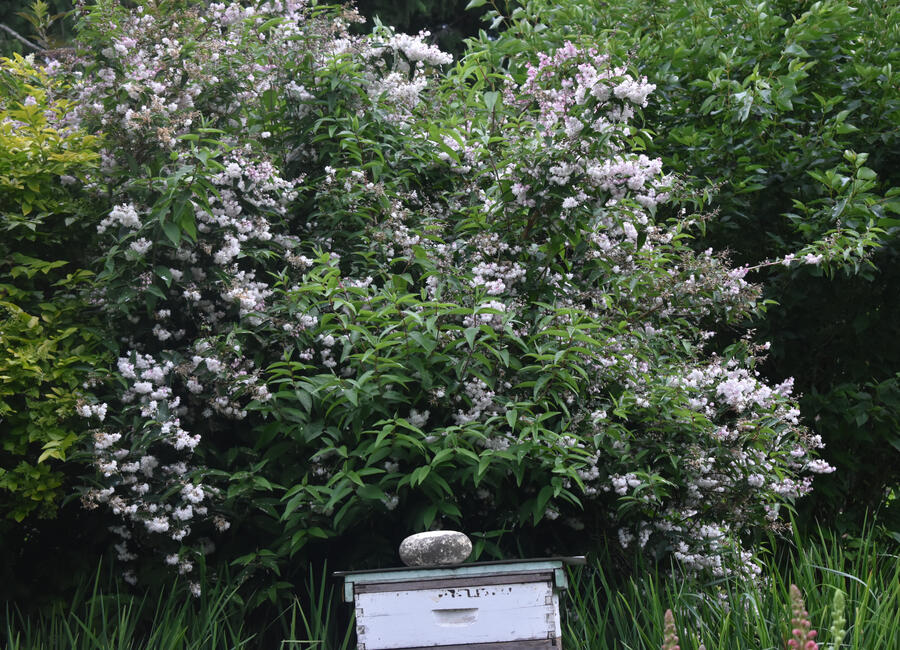
Deutzia ‘Flora Pleno’
Fuzzy Deutzia
Zones: 5-9
Size: 6-10 ft. tall
Sunlight: Full sun to part shade
Soil: Average, well-drained
Bloom Time: Early summerDescription: Shrub native to the Bomi region of Tibet where it grows in damp, well-shaded areas. Deutzia is a small finely branched deciduous shrub with delicate leaves and very showy, cone-shaped, dense fragrant heads of double white flowers in early summer. Deutzia grows 6-10 ft. tall and is easy to maintain. Arching branches and cinnamon exfoliating bark lend winter interest; This plant is attractive to bees, butterflies and/or birds.Growing: Deutzia grows well in any garden soil in sun to part shade. Prune after flowering to control size and shape. Buds are set on the previous year’s growth, so any pruning should be done just after flowers fade.
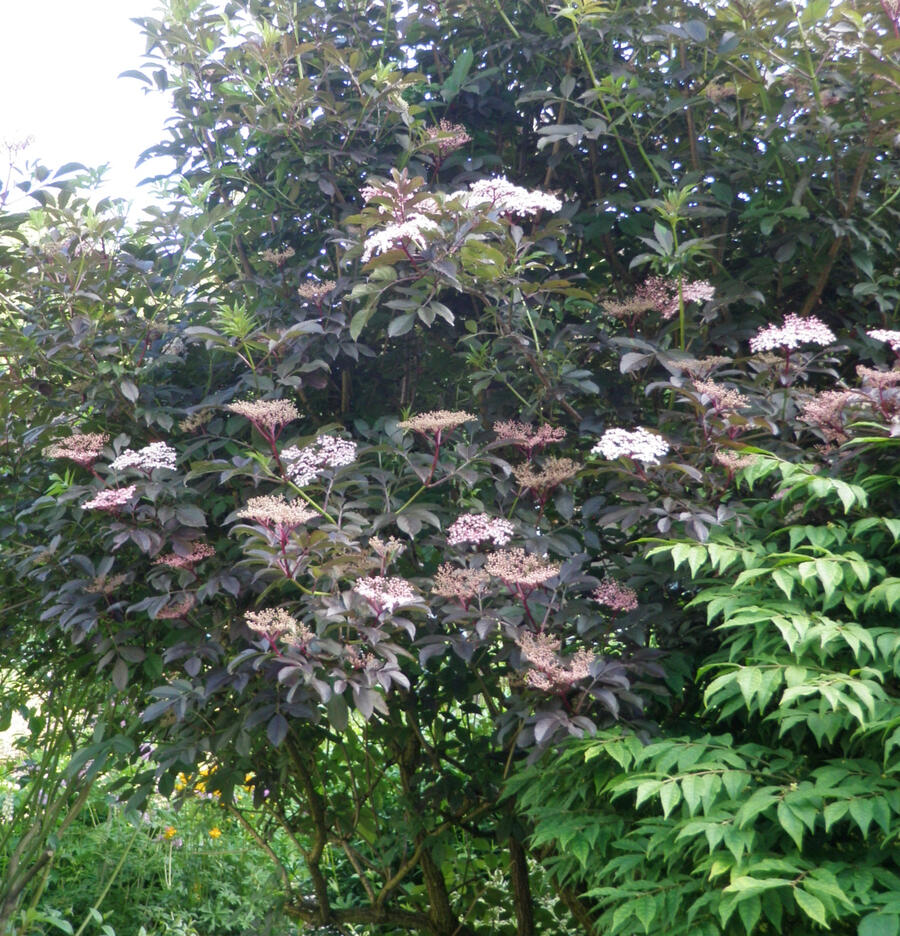
Elderberry - Black
Sambucus nigra ‘purpurea’
Zones: 6-8
Size: 20 ft. tall
Sunlight: Full sun to partial shade
Soil: Fertile, moist, well-drained
Bloom Time: Late spring-early summerDescription: Black Elderberry is a beautiful shrub. Its leaves first emerge as deepest magenta in early to mid March, along with tiny clusters of pink flower buds. The leaves quickly mature to a shiny purple-black for most of spring while the pink buds develop into white flowers. Come warmer weather, the leaves turn olive green, then autumn red, then naked-branched in the winter. It seriously marks the seasons! It has a lovely citrusy odor to the flowers. The flowers and berries are edible. It grows to a height of 20 ft. and 20 ft wide, but I prune mine to keep it in bounds.Growing: Black Elderberry grows in full sun to part shade in fertile, moist, well-drained soil; Prune hard while it is dormant. It grows well in a mixed border, bringing a deep foliage color throughout the growing season. I have mine growing next to shrubs with lighter colored leaves - Golden Privet and Deutzia.
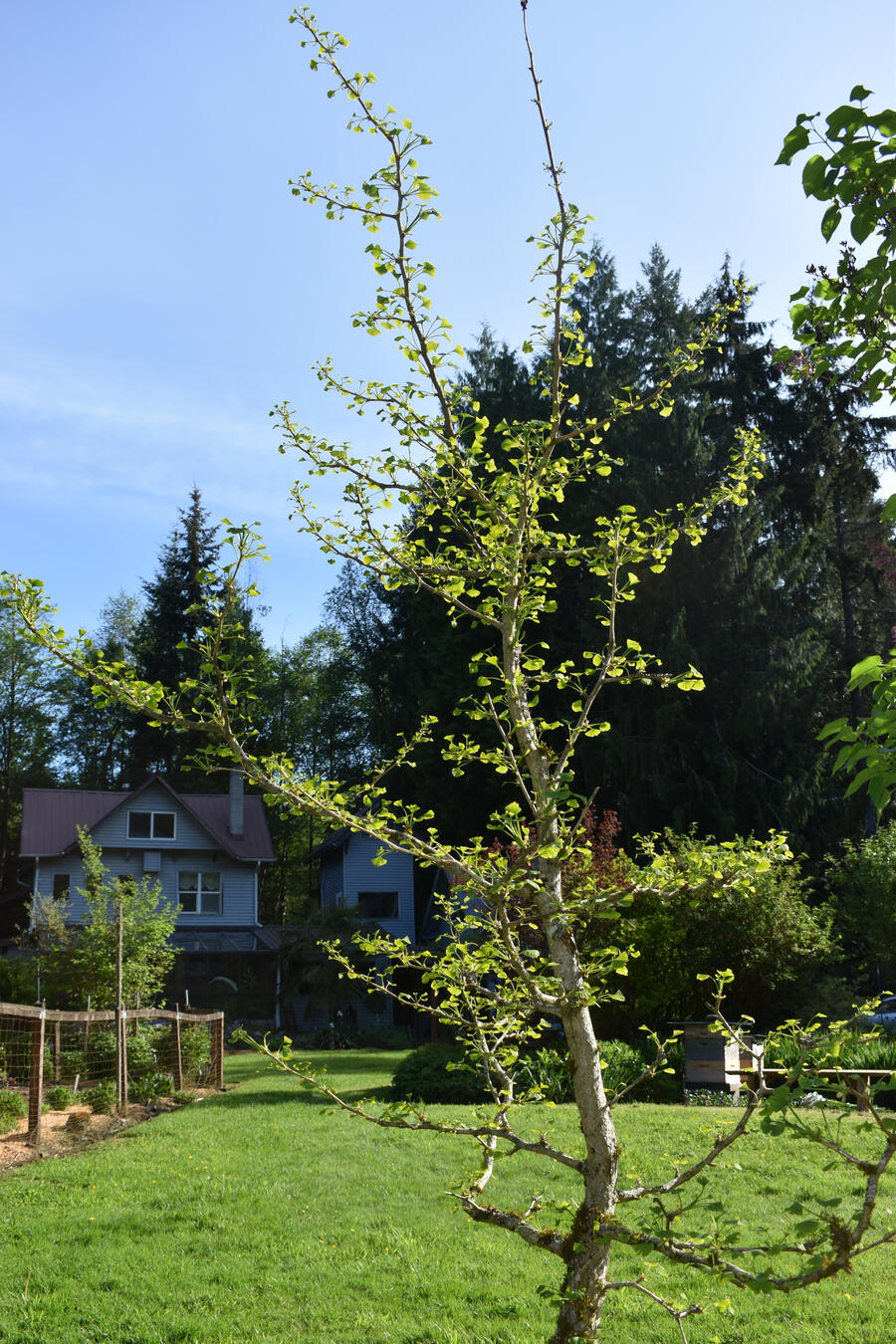
Ginkgo biloba
Zones: 4-9
Size: 25-50 ft. tall
Sunlight: Full sun
Soil: Moist, rich, sandy, silty loam, well-drainedDescription: Gingko stands out as undoubtedly one of the most distinct and beautiful of all deciduous trees. They are dioecious, meaning that some trees are male and some are female. Mine are all male trees made from cuttings of my only tree. It is a living fossil, with the earliest leaf fossils date from 270 million years ago. The fan-shaped leaves are unique, turning a stunning yellow color in the fall. Gingko can tolerate many urban conditions including heat, drought, air pollution, salt and confined spaces. And it establishes easily.Growing: Ginkgo thrives in moist, well-drained soil, but tolerates poor, compacted soil. It grows best in full sun in the North. It has various uses in traditional medicine and as a source of food.

Hebe ‘Red Edge’
Zones: 8-10
Size: 24” tall
Sunlight: Full sun-bright shade
Soil: Average, well-drained
Bloom Time: Late summer- fallDescription: Hebe 'Red Edge' is a popular dense evergreen shrub with blue- or grey-green fleshy leaves, with a fine edge of red, which is especially noticeable in winter. They have light mauve or lilac flowers in late summer to fall.Growing: Although they tolerate shade, ‘Red Edge’ flowers best in full sun and must have well-drained soil with some humus such as compost worked in to prevent the roots from becoming too dry. They like average to evenly moist conditions, but will not tolerate standing water. They may need protection from cold, drying winds. Minimal pruning is needed to remove misplaced or frost damaged branches in late spring. Small mound-forming Hebes make very attractive neat plants for edging or grouping at the front of borders. They also grow well in containers
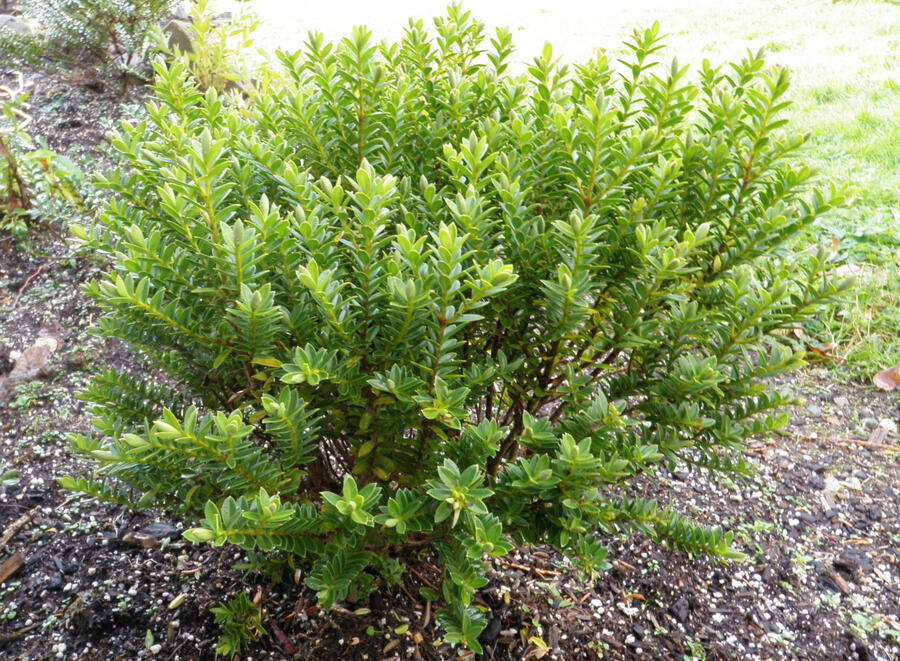
Hebe vernicosa
Zones: 7-9
Size: 12-18” tall
Sunlight: Full sun
Soil: Average, well-drained
Bloom Time: SummerDescription: Like all Hebes, this plant has originated from the windswept areas of New Zealand, making it tolerant of a wide variety of conditions and ideal in costal gardens. Pale lilac and white flowers immerse this free blooming, compact evergreen shrub in summer, leaving you to wonder if you'll ever spot the glorious glossy green foliage ever again.Growing: Hebe does best in well-drained soil with full sun. It has a very neat and tidy; form which is amazingly compact and is never 'scraggly'. Hardy, attractive and perfect for any low hedge, border or rock garden, it is one of the most versatile Hebes around.
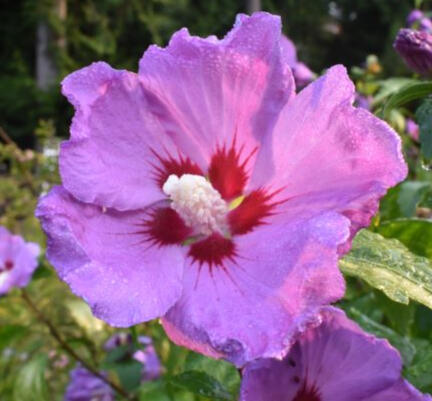
Hibiscus syriacus
Rose of Sharon
Zones: 5-8
Size: 8-10 ft. tall
Sunlight: Full sun
Soil: Well-drained
Bloom Time: July-SeptemberDescription: Rose of Sharon is a vigorous deciduous shrub with exotic pink flowers with mauve centers. Like other types of hibiscus, Rose of Sharon's flowers bear a striking stamen and each individual flower is short lived, lasting only a day. However, numerous flower buds are produced on the shrub's new growth, which provide prolific flowering over a long summer blooming period (July-September. Another feature giving the shrub value is its relatively late period of blooming. It is thus able to offer color when many shrubs have long ceased blooming. The bushes can get 8'-10' tall and have a spread of 4'-6'. The flat blossoms and nectar attract hummingbirds and tiny insects that hummers also eat.Growing: Hybiscus prefer full sun and well-drained soil. The plant is reasonably drought-tolerant. Don't give up, thinking it's dead just because it hasn't leafed out by early summer; it not only blooms late, but leafs out late. It is a useful structural shrub for the back of the border. One's ability to shape the shrub makes it a prime candidate for hedges.
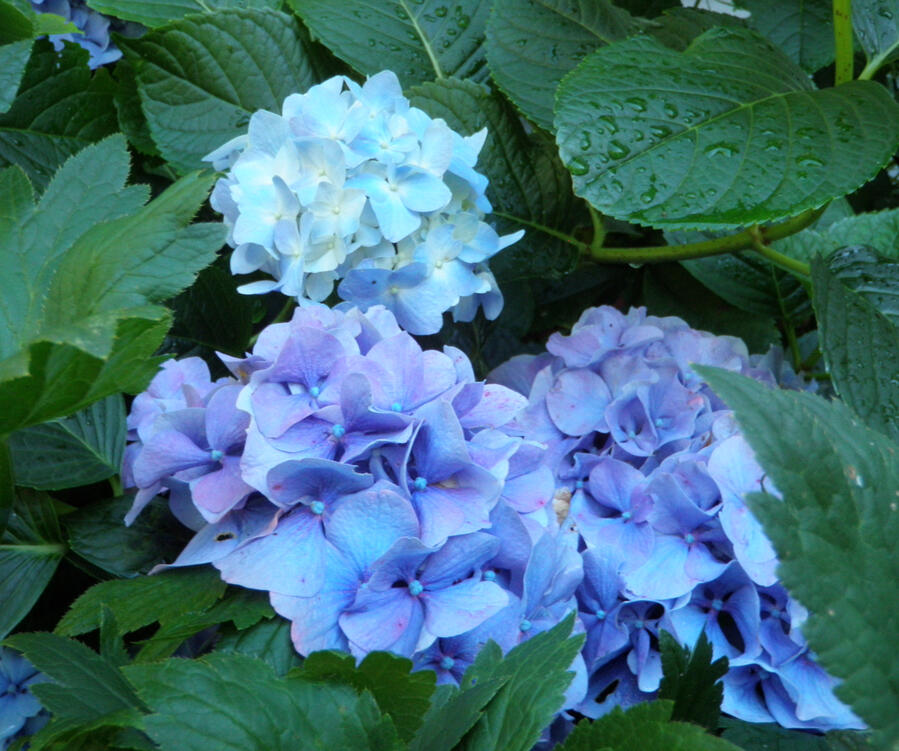
Hydrangea macrophylla -
Pom
Zones: 5-11
Size: 6-10 ft. tall
Sunlight: Part sun-part shade
Soil: Well-drained, moist
Bloom Time: Mid-summerDescription: Hydrangeas are hardy shrubs that thrive under most conditions. They can fill up awkward gaps in your garden, giving welcome color and texture during the late spring and summer months. These deciduous bushes profusely produce huge, round flower heads (mopheads) in mid-summer. In general, hydrangeas are pink in alkaline soil, and blue in acid soil. If your soil condition suits the color you want, there is no need to do anything except fertilize and prune. To change the colors, you will need to change the pH balance of your soil, four to six months before the blooming season. Turn acid soil into alkaline soil by adding dolomitic lime. 3-8 cups sprinkled around the base of a large hydrangea, two or three times over the non-flowering season, should produce results by the summer. More lime will not damage the plant. Too little lime will not turn the flowers pink. Turn alkaline soil into acid soil by adding aluminium sulfate. Use 3-4 tablespoons in a gallon of water, and apply twice, a fortnight apart. Another method for lowering the pH is to add organic matter to the soil such as coffee grounds, fruit and vegetable peels, grass clippings etc.Growing: All Hydrangeas will bloom and grow well in morning sun and afternoon shade. No hydrangea will do well in HEAVY shade, such as under an oak tree or in full sun. The blooms will be sparse and will not develop fully. They are best grown in rich, medium moisture, well-drained soil. Hydrangeas generally need modest, regular pruning. Improper pruning is one of the most common reasons Hydrangea don’t bloom well. Older cultivars bloom on “old wood” which means that flower buds develop on the stems during the summer the year before they bloom. So prune just after bloom at the end of summer to allow time for new buds to form before winter.
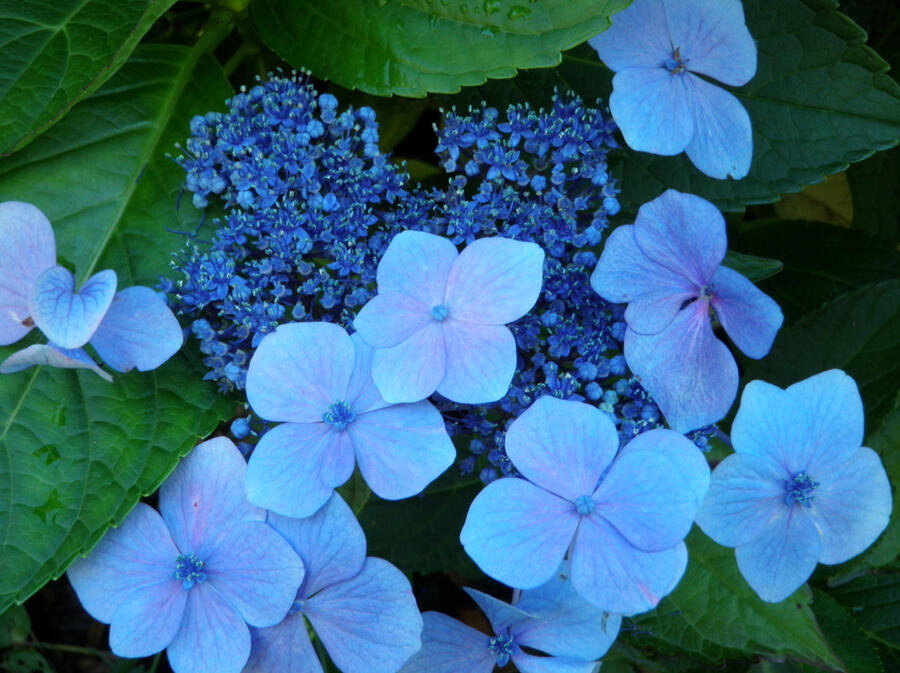
Hydrangea macrophylla
Lacecap Hydrangea
Zones: 5-9
Size: 3-4 ft. tall
Sunlight: Sun-part shade
Soil: Well-drained, humus
Bloom Time: July-AugustDescription: Lacecaps are treated exactly the same as mopheads. In some ways the lacecap is easier than the mophead to place in the landscape because it is looser, more graceful and more subtle in its effect. There is no doubt that mature lacecaps can be magnificent. They fit quite naturally into woodland locations, snuggling under and around trees such as dogwoods and other shrubs. I have also seen spectacular single specimens light up a front yard. Instead of the large pom flower-heads seen in other Hydrangeas, the lacecaps resemble flat caps with frilly edges. In general, hydrangeas are pink in alkaline soil, and blue in acid soil. To change the colors, you will need to change the pH balance of your soil, four to six months before the blooming season (instructions on previous Hydrangea description).Growing: All Hydrangeas will bloom and grow well in morning sun and afternoon shade. . No Hydrangea will do well in HEAVY shade, such as under an oak tree or in full sun. The blooms will be sparse and will not develop fully. They are best grown in rich, medium moisture, well-drained soil. Hydrangeas generally need modest, regular pruning.
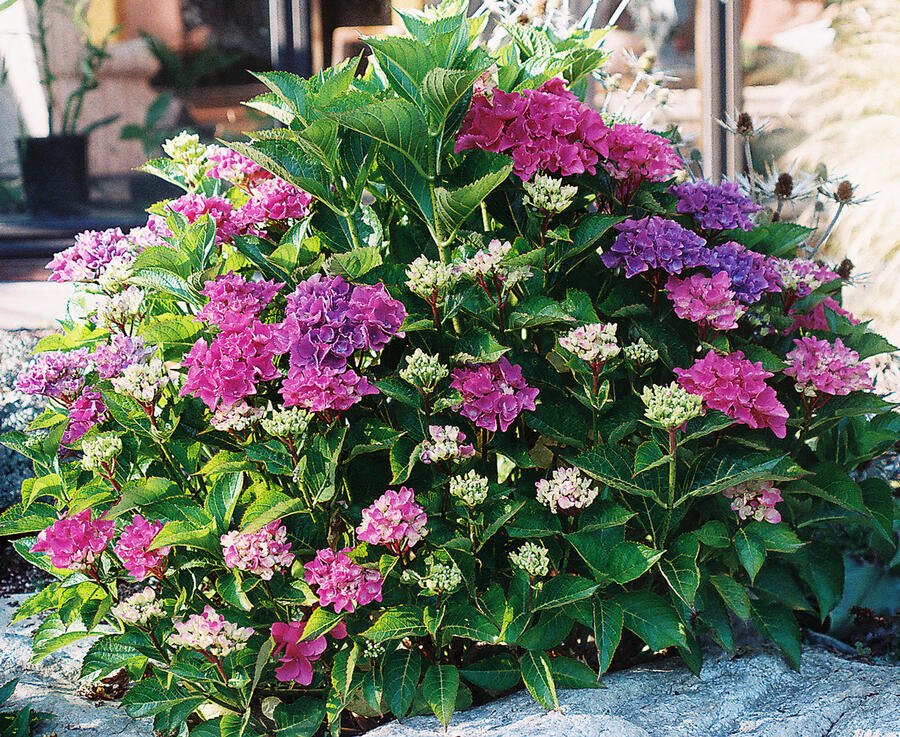
Hydrangea
‘Vienna Rawi’
Cityline Dwarf Hydrangea
Zones: 5-9
Size: 3-4 ft. tall
Sunlight: Sun-part shade
Soil: Well-drained, humus
Bloom Time: July-AugustDescription: The CITYLINE hydrangeas are what growers and homeowners have been waiting for. They only reach 3 to 4 feet in height and have a neat, tight habit so pruning is never required. The plant may be small but the flowers are large and vibrant. They are held on sturdy stems that do not flop. Flowers emerge green and mature to a clear pink in alkaline soils and in acid soils the flowers are a rich blue. The flowers are excellent for cutting.Growing: Cityline prefers well-drained soil that has been amended with peat moss, leaf mold or compost. It is happy in full sun to part shade. Moisture is a necessity for this plant. Pruning is not necessary but if you wish to build a tighter plant or maintain a shorter size the best time to prune is after it blooms, from mid-July to mid-August. Cease pruning in mid-August to allow time for the flower buds to form prior to winter.
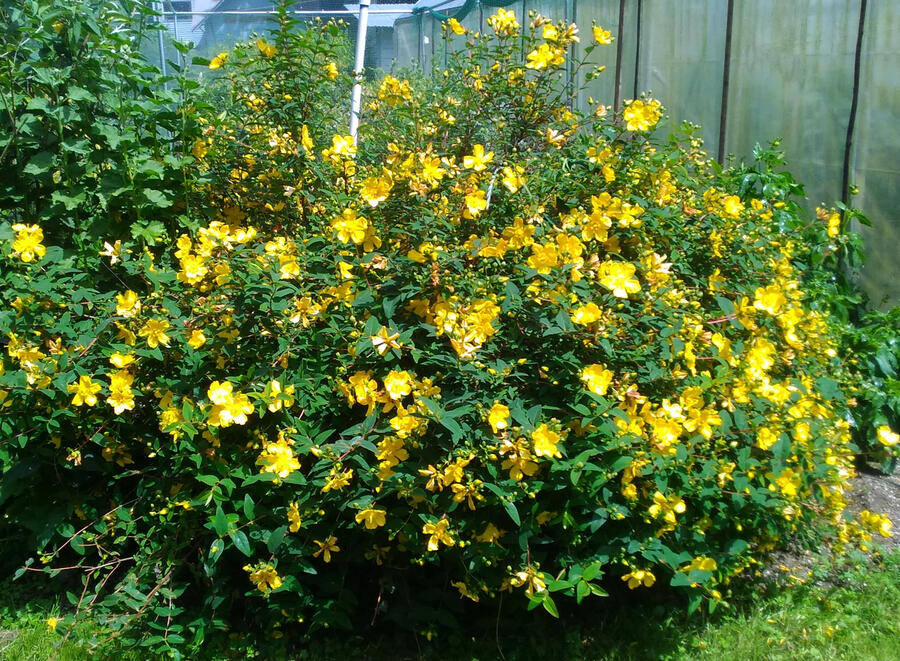
Hypericum patulum ‘Hidcote’
Goldencup St. Johnswort
Zones: 5-9
Size: 3-4 ft. tall
Sunlight: Sun-part shade
Soil: Well-drained, humus
Bloom Time: June-SeptemberDescription: 'Hidcote' is a compact shrub that typically grows to 4' tall. . It keeps its size and shape over the years and rarely needs pruning It blooms throughout the summer with large golden yellow cup-shaped flowers with a central mass of bright yellow stamens. They add excitement to any landscape. The handsome foliage is evergreen in our area and is a perfect companion to the showy blooms. ‘Hidecote’ is deer resistant and drought tolerant once established.Growing: ‘Hidcote’ is easily grown in full sun to part shade in average, medium, well-drained soil. It tolerates wide range of soils, including dry rocky or sandy soils. With its ease of maintenance and long bloom cycle, you can’t go wrong with this one.
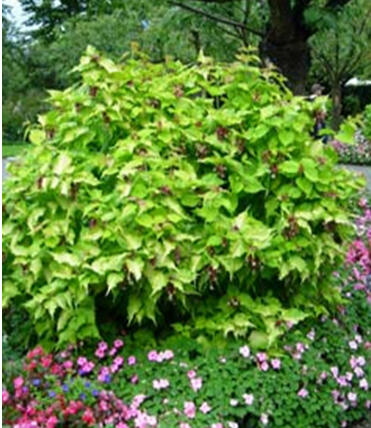
Leycesteria formosa ‘Notbruce’
Golden Lanterns
Zones: 7-9
Size: 3.5-6 ft. tall
Sunlight: Full sun–light shade
Soil: Well-drained, gritty
Bloom Time: MidsummerDescription: Himalayan honeysuckle is a native Asian plant that comes from mountain woodlands of west China and Himalayas. It is an eye-catching shrub with heart-shaped, bright chartreuse leaves on hollow, upright stems with new growth tinted amber and red, making it a great contrast plant. Four-inch-long pendulous clusters of white flowers with dark burgundy bracts cover the shrub in midsummer. These develop into persistent dark purple berries in autumn. This plant is attractive to bees, butterflies and hummingbirds. In my garden at 600 ft elevation it is a deciduous shrub, budding new leaves in the spring. In colder (Zone 6) areas it behaves like a perennial dying back to the ground each winter and quickly growing back in the spring.Growing: ‘Notbruce’ likes a sunny spot with well-drained but evenly moist, fertile soil. It is adaptable to many soil conditions including sand or clay. It will grow in light shade but will have fewer flowers. The flowers are good for cutting. Also called pheasant berry because the dark purple fall fruit does indeed attract pheasants and other wildlife. Good for use in containers as a patio plant, or in perennial or shrub borders.
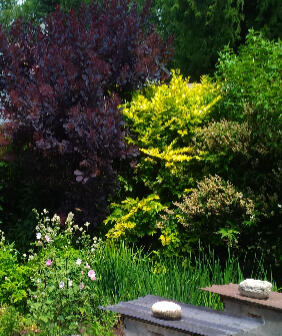
Ligustrum x vicaryi
Vicary Golden Privet
Zones: 5-8
Size: 6-12 ft. tall
Sunlight: Sun
Soil: Average, well-drained
Bloom Time: SpringDescription: This compact, non invasive privet (evergreen in our area) has bright yellow to chartreuse leaves that seem to shimmer in the sun. It grows to a mature height of 6–12 feet and can be pruned regularly to maintain shape or leave it unpruned for a more informal, bushy look. Golden privet makes a contrasting background for green or purple-leaved shrubs. I have mine growing in a grouping with Smoke Tree, Black Elderberry and Deutzia creating a dramatic backdrop for our bee hives. The bright golden foliage color lasts all season long, especially when planted in full sun. It shows off fragrant white flowers in spring, which attract beneficial pollinators followed by blue-black, summer berries. Resistant to deer damage.Growing: Golden Privet grows best in full sun to maintain its leaf color but will tolerate part shade. It does fine in average, well-drained garden soil. Once fully established, it's also drought tolerant. Its salt-tolerance makes the shrub a good choice for coastal gardens.
Lilac
Syringa vulgaris
Zones: 2-7
Size: 8-15 ft. tall
Sunlight: Full sun
Soil: Well-drained, average
Bloom Time: MayDescription: A long time favorite, the lilac is an upright deciduous shrub 8' to 15' tall, 6' to 12' wide. Typically grown for their intense fragrance, the showy, flowers are borne in large terminal panicles 4"-8" long, lasting ~ 2 weeks in May. The fragrant flowers are good for cutting and attractive to butterflies and hummingbirds.Growing: A classic, deer resistant old fashioned shrub, Lilacs require full sun for maximum bloom. They prefer a slightly alkaline soil (pH 7.5). This is a very hardy shrub; can withstand severely cold winters (even -35 degrees C). However, they can't tolerate poorly drained (wet) soils, and don't like to be shaded or crowded by other shrubs and trees. When they are planted in strongly acidic soil, lime should be cultivated into the soil beneath the drip line to adjust the pH. Cut off old flower heads but heavy pruning will result in the loss much of next year’s bloom so don't get carried away when you are pruning. Prune in the spring right after they bloom.
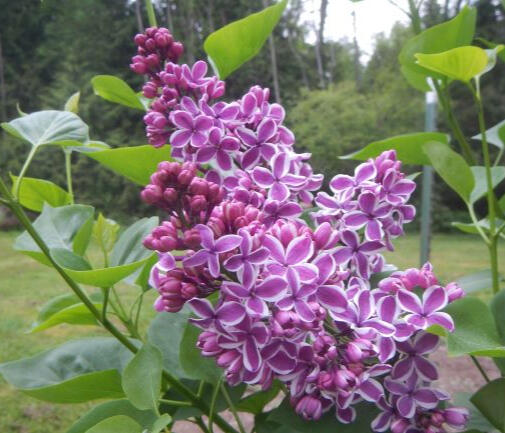
Lilac - Bicolor
Syringa vulgaris
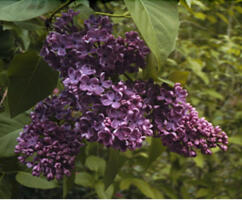
Lilac - Purple
Syringa vulgaris
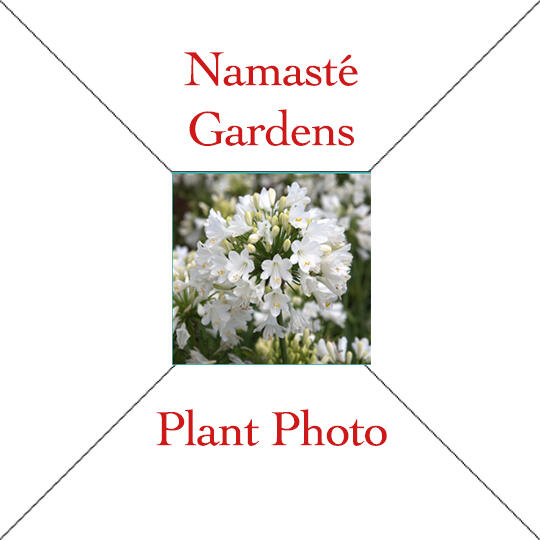
Moringa stenopetala
Dwarf Moringa
Description: Moringa, native to the tropics and the subtropics is grown for its nutritional excellence. It can be grown as an annual or in a container which will allow you to bring your tree inside for the winter.Growing: Grow it in full sun to partial shade. Keep the soil loose and fertilize about once a month with organic fertilizer. Grow in a container ~ 16 wide to keep it small. You will have to train it to stay small by periodically pinching back the tops. When it is about 18 inches tall, chop the branches to about 1/2 of their size. Keeping both its branches and roots pruned will keep the tree to a manageable size, usually about 3-4 feet.Health Uses: Moringa contains 46 antioxidants, 18 amino acids & is a complete protein. This plant is prized for its very high-protein leaves, its rich concentration of minerals and vitamins, and its heavy load of anti-oxidants! In addition to supplying a hefty amount of antioxidants, moringa powder may help lower blood sugar, reduce inflammation, and improve heart function. It also contains terpenoids. which have been found to help the pancreas secrete more insulin, which can be really helpful for people with diabetes. Leaves, blooms, seeds and immature seedpods, called “drumsticks”, are edible. Harvest the leaves fresh for use in salads or as a green vegetable. Or dry the leaves to use in tea or make a powder supplement. Moringa pods can be harvested for fresh eating when they’re about six inches in length.
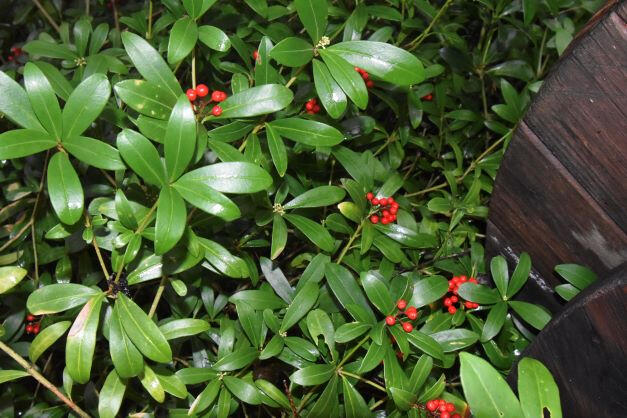
Skimmia japonica reevesiana
Reeves Skimmia
Zone: 6-9
Size: 4-6” tall
Sunlight: Part to full shade
Soil: Fertile, well-drained, high organic matter
Bloom Time: June through AugustDescription: This broadleaf evergreen, low growing shrub native to China and East Asia grows 1-3 ft tall by 2-3 ft wide. It has clusters of fragrant, white flowers in early spring turning to bright red berries (poisonous) providing a nice color accent in the fall. It is relatively deer-resistant.Growing: Skimmia likes moist, but well-drained soil and shade. This low-maintenance shrub keeps its compact form so it won’t need pruning. It works great in a woodland setting or can be grown in a container.
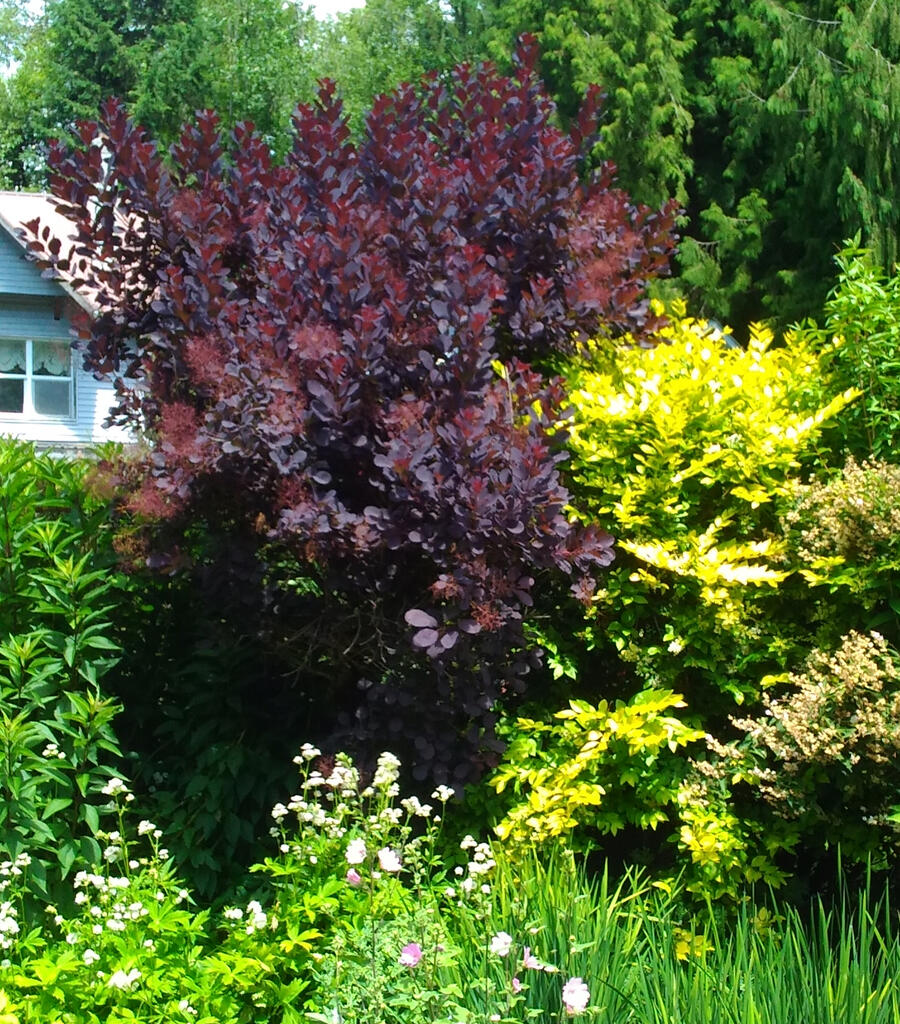
Smoke Tree
Cotinus coggygria
Zones: 5-9
Size: 10-15 feet tall
Sunlight: Full sun
Soil: Well-drained loam
Bloom Time: June-JulyDescription: The purple smoke tree has dark purple, silver-dollar shaped leaves that shimmer and rustle in the wind. The large panicles of flowers, produced in early summer, give the effect of a cloud of smoke. This tree, which can be grown as a tree or a bush, is attractive because of its distinctive color which adds depth to any garden and because of its smoky spring show. It works well on its own or contrasting with dark greens and yellows. The leaves and flowers look nice in cut flower arrangements.Growing: The smoke tree needs a sunny, well-drained spot. It would prefer rich soil but will do fine in dry, rocky soil as well. If you want to keep the smoke tree as a shrub, prune the branches back to about 2-3 buds from the base in early spring. If you want it as a tree, prune it minimally just to keep its shape.
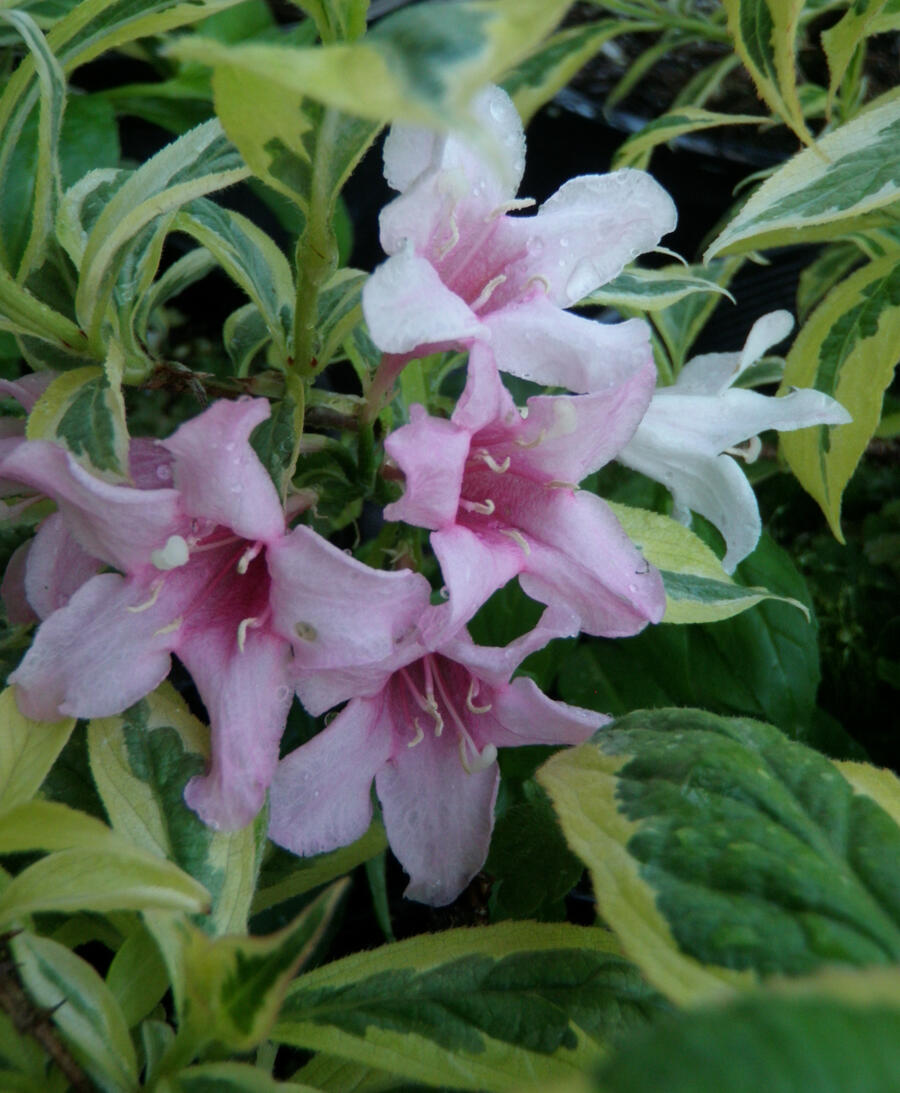
Weigela florida 'Variegata'
Zones: 5-9
Size: 4-6 ft. tall
Sunlight: Sun
Soil: Moist, well-drained
Berry Time: Late-spring–early summerDescription: ‘An excellent landscape choice, this deciduous shrub is known for its variegated foliage and showy, fragrant flowers. It’s short and compact growth habit, 4-6' high and wide, allows it to fit nicely into a perennial garden without taking over. It has grey leaves with yellow/cream fringes and the flowers are dark pink with pale pink-white interiors. The flowers and foliage hold up surprisingly well in bouquets. And they are attractive to hummingbirds.Growing: Extremely hardy, Weigela florida thrives under almost any conditions. Grow it in full sun and moist, well-drained soil. It will tolerate sandy or clay conditions. The flowering is more profuse with more sun. It has a naturally dense habit and responds well to light pruning. It is very nice in a mixed shrub border.
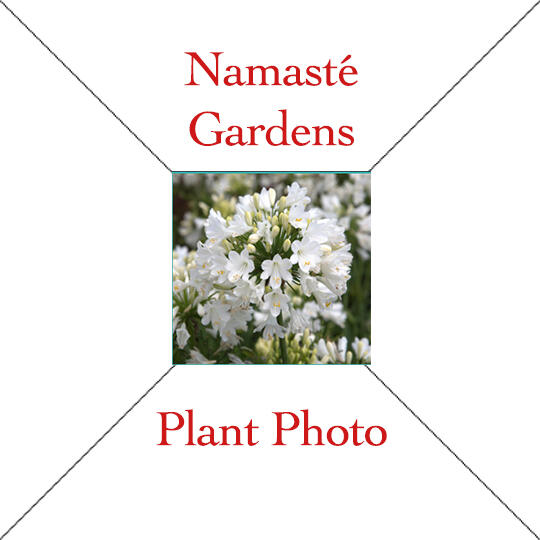
Plant name
Text
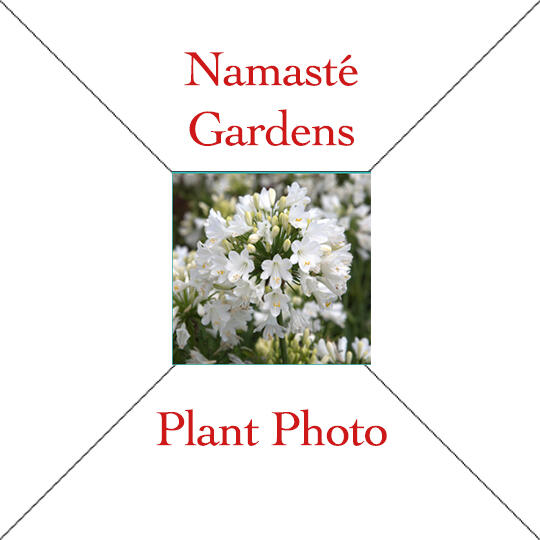
Plant name
Text
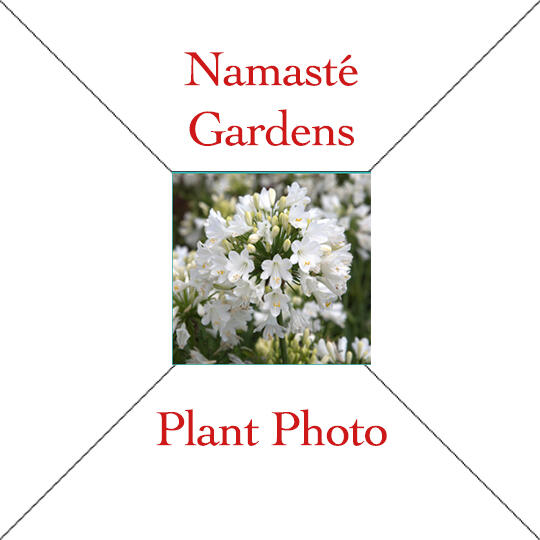
Plant name
Text
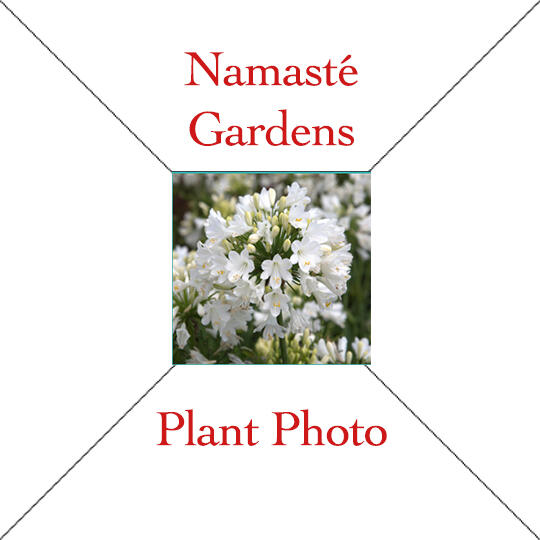
Plant name
Text
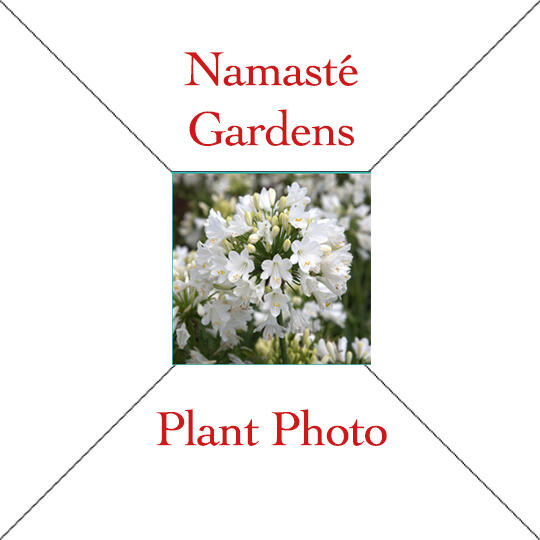
Plant name
Text
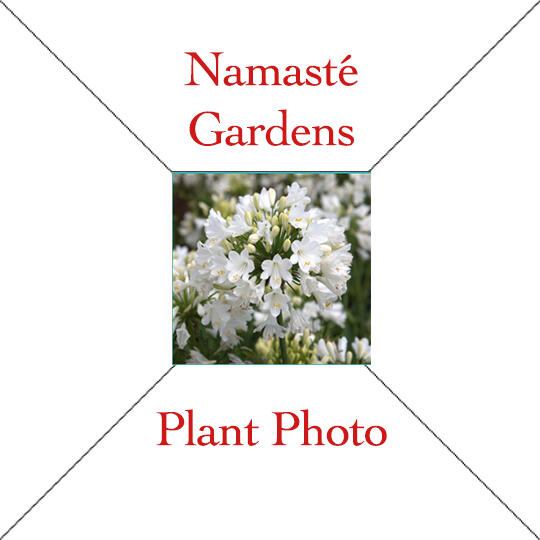
Plant name
Text
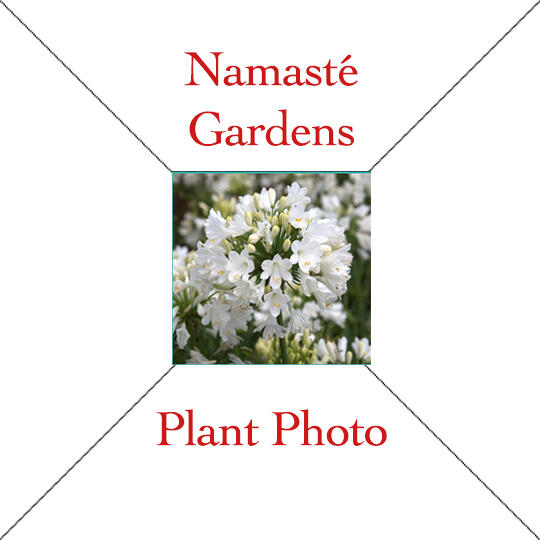
Plant name
Text
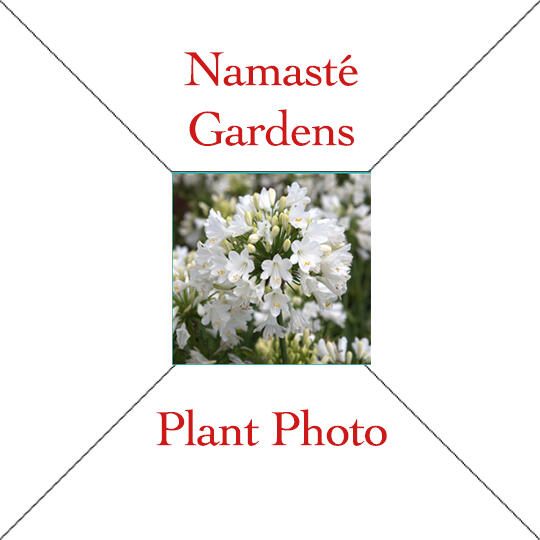
Plant name
Text
Plants listed in the index are in alphabetical order and show which section they can be found in.
Sometimes they are listed by common name and sometimes by scientific name.
Contact me for availability since they might not be ready for sale.
Acanthus Mollis (Bear's Breeches) - Sun Perennials
Aconitum carm. 'Arendsii' - Sun/Shade Perennials
Adromischus cristatus - Zoners
Aeonium 'Kiwi' - Zoners
Aeonium 'Pinwheel' - Zoners
Agapanthus (African Lily) - Sun Perennials
Agave americana (Century Plant) - Zoners
Agave pumilla - Zoners
Aloe - 4 Varieties - Zoners
Alstroemeria - pink - Sun Perennials
Alstroemeria, orange - Sun Perennials
Amaryllis, Red and Apricot - Houseplants
Amsonia tabernaemontana 'Blue Ice' - Sun/Shade Perennials
Anemone leveillei - Sun/Shade Perennials
Anemone occidentalis
(Western Pasqueflower) - Sun/Natives
Arabis procurrens 'variegata' - Sun Perennials
Arctic Willow - Trees & Shrubs
Armeria maritima, White & Pink - Sun Natives
Arnica latifolia - Sun/Shade Natives
Artemesia schmidtiana 'Nana' - Sun Perennials
Asarum caudatum (Wild Ginger) - Shade Natives
Asclepias - Butterfly Weed - Sun Perennials
Leafy Aster foliaceus - Sun Natives
Astilbe arendsi 'Fanal' - Shade Perennials
Astilbe chinensis 'Diamonds and Pearls' - Shade Perennials
Astilbe chinensis 'Heart & Soul' - Shade Perennials
Astilbe chinensis 'Swing Set' - Shade Perennials
Astrantia major, White - Sun/Shade Perennials
Astrantia major 'Claret' - Sun/Shade Perennials
Astrantia major 'Prima Dona' - Sun/Shade Perennials
Astridia velutina (Ecuadorian succulent) - Zoners
Aucuba japonica 'Picturata' - Trees & Shrubs
Bay Laurel (Laurus nobilus) - Herbs & Edibles
Beauty Berry (Callicarpa) - Trees & Shrubs
Begonias, many varieties - Houseplants
Bolax glebaria - Sun Perennials
Boysenberry - Herbs & Edibles
Boxwood, Oregon-Sun/Shade Natives
Brunnera macrophylla - Shade Perennials
Cactus (Christmas) - Zoners
Cactus (Epiphyllum) - Zoners
Cactus (Night-Blooming Cereus) - Zoners
Cactus (Prickly Pear; Opuntia fragilis) - Sun Natives
Cactus (Prickly Pear; Opuntia violacea) - Zoners
Cactus (Rattail) - Zoners
Camassia leichtlinii - Sun Natives
Camassia quamash - Sun Natives
Campanula 'Birch Hybrid' - Sun/Shade Perennials
Campanula 'Blue Waterfalls' - Sun/Shade Perennials
Campanula rotundifolia - Sun/Shade Natives
Campanula takesimana - Sun/Shade Perennials
Catmint - Sun/Shade Perennials
Catnip - Herbs & Edibles
Ceanothus 'Victoria' - Trees & Shrubs
Chamaemelum nobile (Roman Chamomile) - Herbs & Edibles
Chelone obliqua - Sun/Shade Perennials
Chilean Glory Flower - Sun Perennials
Chives - Herbs & Edibles
Chlorophytum comosum (Spider Plant) - Houseplants
Choisya 'Astec Pearl' -Trees & Shrubs
Cimcifuga 'Chocoholic' - Shade Perennials
Cimcifuga racemosa - Shade Perennials
Clethra alnifolia - Trees & Shrubs
Columbine - Aquilegia formosa - Sun/Shade Natives
Cornus unalchkensis (Bunchberry) - Shade Natives
Cornus nuttallii (Pacific Dogwood) - Sun/Shade Natives
Cornus stolonifera (Red Twig Dogwood) - Sun/Shade Natives
Crassula argenten 'Hobbit' - Zoners
Crassula 'Caput Minima', - Zoners
Crassula coccinea 'Campfire - Zoners
Crassula nudicans - Zoners
Crassula ovata arborescens 'Baby Jade - Zoners
Crassula ovata arborescens (Large Jade) - Zoners
Crassula ovata arborescens (Silver Dollar Jade) Zoners
Crassula ovata arborescens (Tricolor Jade) Zoners
Crassula ovata 'Hobbit' - Zoners
Crassula perforata variegata - Zoners
Crassula tetragona (Miniature Pine Tree) - Zoners
Crocosmia "Lucifer" - Sun Perennials
Cyclamen, Hardy - Shade Perennials
Day Lily (Many Varieties) - Sun Perennials
Delosperma cooperi - Sun Perennials
Delosperma, yellow - Sun Perennials
Delphinium ‘Pacific Giant’ - Sun Perennials
Deutzia 'Flora Pleno' - Trees & Shrubs
Dicentra formosa (Bleeding Heart) - Sun/Shade Natives
Digitalis lutea (Straw Foxglove) - Sun/Shade Perennials
Digitalis purpurea (Common Foxglove) - Shade Natives
Dodecatheon meadia - Shade Natives
Donkey Tail (Sedum morganianum) - Zoners
Echeveria , Green - Zoners
Echeveria, Purple - Zoners
Echeveria 'Decot Edge' - Zoners
Echeveria harmsii - Zoners
Echeveria setosa ciliata - Zoners
Echinacea 'Fatal Attraction' - Sun Perennials
Echinacea 'Razzmatazz' - Sun Perennials
Echinacea 'Sundown' - Sun Perennials
Elderberry (Sambucus nigra purpurea) - Trees & Shrubs
English Daisy - Sun Perennials
Epimedium sulphureum - Shade Perennials
Epimedium alpinum ‘Rubrum’
(Red Barrenwort) - Shade Perennials
Euphorbia amygdaloides robiae - Shade Perennials
Euphorbia characias, variegated - Sun Perennials
Euphorbia griffithi - Sun Perennials
Euphorbia martinii - Sun Perennials
Euphorbia trigona - Zoners
Euphorbia wulfenii - Sun Perennials
Fern, Deer (Blechnum spicant) - Shade Natives
Fern, Lady (Athyrium felix-femina) - Shade Natives
Fern, Licorice (Polypodium glycyrrhiza) - Shade Natives
Fern, Oak (Gymnocarpium dryopteris) - Shade Natives
Fern, Sword (Polystichum munitum) - Shade Natives
Wood Fern, (Thelypteris kunthii)
Frittonia argyroneura 'Juanita' - Houseplants
Fuchsia, Double Pink - Sun Perennials
Fuchsia 'Celia Smedley' - Sun Perennials
Fuchsia 'Chilerton Beauty
Fuchsia 'Erecta Novelty '- Sun Perennials
Fuchsia 'Flash' - Sun Perennials
Fuchsia 'Lady's Eardrop' - Sun Perennials
Fuschia magellanica 'Endstone' - Sun Perennials
Fuschia 'Peter Pan' - Sun Perennials
Fuschia 'Santa Claus' - Sun Perennials
Gaillardia aristata - Sun Natives
Gasteria ernesti ruschi - Zoners
Gasteria minima - Zoners
Gentiana acaulis - Sun Perennials
Geranium macrorrhizum
Bevan’s Variety - Sun/Shade Perennials
Geraniums, Scented - Herbs & Edibles
Geranium viscosissimum
(Sticky Geranium) - Sun/Shade Natives
Geum triflorum (Old Man's Whiskers)
- Sun Natives
Ginkgo biloba - Trees & Shrubs
Goatsbeard, Dwarf - Aruncus aethusifolius - Sun/Shade Perennials
Goatsbeard (Aruncus dioecus) - Sun/Shade Natives
Goodyera oblongifolia
(Rattlesnake Plantain) - Shade Natives
Graptopetallum 'California Sunset' - Zoners
Graptopetallum portuguayense - Zoners
Grass - Acorus variegata - Sun/Shade Perennials
Grass, Arrhenatherum variegatum - Sun/Shade Perennials
Grass, 'Black Mondo' - Sun/Shade Perennials
Grass , Blue Fescue - Sun/Shade Perennials
Grass, Blue Oat - Sun/Shade Perennials
Grass, Carex buchanii - Sun/Shade Perennials
Grass, Carex morrowii - Sun/Shade Perennials
Grass, Dierama pulcherrimum - Sun Perennials
Grass, Hakonechloa macra - Shade Perennials
Grass, Lazula sylvatica - Shade Perennials
Grass, Miscanthus gracillimus - Sun/Shade Perennials
Grass, Miscanthus sinensis 'Zebrinis' - Sun/Shade Perennials
Grass,Feather (Nassella tenuissima) - Sun/Shade Perennials
Grindelia integrifolia
(Gumweed) - Sun Natives
Haworthia attenuata - Zoners
Haworthia cooperi truncata - Zoners
Haworthia cuspidata - Zoners
Haworthia mirabilis mundata - Zoners
Haworthia obtusa prolifera - Zoners
Haworthia turgida - Zoners
Hebe 'Red Edge' - Trees & Shrubs
Hebe vernicosa - Trees & Shrubs
Helenium 'Chelsey' - Sun Perennials
Helianthemum, 6 varieties - Sun Perennials
Heuchera 'Caramel' - Sun/Shade Perennials
Heuchera 'Champagne Bubbles' - Sun/Shade Perennials
Heuchera 'Crimson Curls' - Sun/Shade Perennials
Heuchera cylindrica - Sun/Shade Natives
Heuchera 'Key Lime Pie' - Sun/Shade Perennials
Heuchera 'Mocha' - Sun/Shade Perennials
Heuchera 'Swirling Fantasy' - Sun/Shade Perennials
Heuchera 'Venus' - Sun/Shade Perennials
Hibiscus, Purple - Houseplants
Hibiscus, Red - Houseplants
Hibiscus, ‘Lady Baltimore’ - Sun Perennials
Hibiscus syriacus (Rose of Sharon) - Trees & Shrubs
Hosta, Many Varieties - Shade Perennials
Hoya - Houseplants
Hoya, Contorted - Zoners
Huernia zebrina (Life-Saver Plant) - Zoners
Hydrangea, Lace - Trees & Shrubs
Hydrangea macrophylla - Trees & Shrubs
Hydrangea macrophylla 'City Line Vienna' - Trees & Shrubs
Hypericum patulinum - Trees & Shrubs
Hypoiestes - Houseplants
Hyssopus officinalis - Herbs & Edibles
Iliamna rivularis (Wild Hollyhock) - Sun Natives
Impatiens omeiana - Shade Perennials
Iris, Siberian - Sun Perennials
Jack in the Pulpit (Arisaema triphyllum) - Shade Perennials
Jovibarba heuffelii 'Goldbug' - Succulents
Jovibarba hirta - Succulents
Jovibarba 'Torrid Zone' - Succulents
Kalanchoe hildebrandtii - Zoners
Kalanchoe 'Thomas Jefferson' - Zoners
Kalanchoe tomentosa 'Chocolate Soldier' - Zoners
Kinnickinnick (Arctostaphylos uva-ursi) - Sun Natives
Kirengeshoma palmata - Shade Perennials
Lady's Mantle - Herbs & Edibles
Lampranthus blandus 'Pink Vygie' - Zoners
Lavatera thuringiaca - 'Barnsley' - Sun Perennials
Lavatera thuringiaca, Pink - Sun Perennials
Lavatera thuringiaca 'Pink Frills' - Sun Perennials
Lavatera thuringiaca 'White Satin' - Sun Perennials
Lavender - (Blue Cushion, Dwarf, Fred Boutin, Grosso, Hidecote, Provence, White) - Herbs & Edibles
Lavender Cotton (Santolina chamaecyparissus) Sun Perennials
Leptinella Platt's Brass Buttons - Sun/Shade Perennials
Lewisia columbiana - Sun/Shade Natives
Lewisia longipetala 'Little Tutti Frutti' - Sun/Shade Perennials
Leycesteria formosa - Trees & Shrubs
Ligularia Rocket 'Golden Ray' - Sun/Shade Perennials
Ligustrum x vicaryi (Golden Privet) - Trees & Shrubs
Lilac, Purple and Bicolor - Trees & Shrubs
Lilium martagon - Sun Perennials
Lilium pardalinum - Sun Perennials
Lily, White Calla (Zantedeschia) - Sun Perennials
Lobelia cardinalis - Sun/Shade Perennials
Lonicera ciliosa (Western Trumpet Honeysuckle) - Sun/Shade Natives
Lonicera hispidula - Sun/Shade Natives
Lonicera x heckrottii (Goldflame Honeysuckle) - Sun/Shade Perennials
Lupine polyphyllus - Sun/Shade Natives
Lychnis chalcedonica (Maltese Cross) - Sun/Shade Perennials
Marjoram, Golden - Herbs & Edibles
Marjoram, Sweet - Herbs & Edibles
Meadow Rue (Thalictrum) - Sun/Shade Perennials
Mimulus cardinalis (Orange Monkeyflower) - Sun/Shade Natives
Mimulus guttatus (Yellow Monkeyflower) - Sun/Shade Natives
Mimulus lewisii (Pink Monkeyflower) - Sun/Shade Natives
Showy Milkweed (Asclepias speciosa) -Sun Natives
Mints (Banana, Chocolate, Curly, Ginger, Orange, Peppermint, Spearmint) - Herbs & Edibles
Mock Orange (Philadelpus lewisii) - Sun/Shade Natives
Monarda (Cambridge Scarlet, Burgandy Lace, Pink) - Sun Perennials
Moringa, Dwarf - Trees & Shrubs
Mousetail (Arisarum proboscideum) - Shade Perennials
Nothochelone nemerosa - Sun/Shade Natives
Oregano - Herbs & Edibles
Oregon Grape (Mahonia aquifolium) - Sun/Shade Natives
Parsley - Herbs & Edibles
Penstemon 'Hidecote Red' - Sun Perennials
Penstemon 'Lavender Ruffles' - Sun Perennials
Penstemon, Purple - Sun Perennials
Penstemon - Red - Sun Perennials
Penstemon 'Blackbird' - Sun Perennials
Penstemon confertus - Sun Natives
Penstemon davidsonii - Sun Natives
Penstemon eatonii - Sun Natives
Penstemon fruticosus - Sun Natives
Penstemon pruinosus - Sun Natives
Penstemon richardsonii - Sun Natives
Penstemon rupicola - Sun Natives
Penstemon Rydbergii - Sun/Shade Natives
Penstemon serrulatus - Sun/Shade Natives
Penstemon speciosus - Sun Natives
Penstemon strictus - Sun Natives
Penstemon venustus - Sun Natives
Peperomia 'Golden Gate' - Houseplants
Perovskia atriplicifolia - Sun Perennials
Persicaria filiformis - Shade Perennials
Persicaria microcephalia 'Red Dragon' - Sun/Shade Perennials
Philodendron, Small Leaf - Houseplants
Philodendron, Split Leaf - Houseplants
Phlomis russeliana - Jerusalem Sage - Sun Perennials
Phlox diffusa - Sun Natives
Phlox paniculata 'David' - Sun Perennials
Phlox paniculata 'Goldmine' - Sun Perennials
Phlox paniculata 'Grandmother's' - Sun Perennials
Phlox paniculata - Moonlight - Sun Perennials
Phlox paniculata 'Natural Feelings' - Sun PerennialsPhlox paniculata 'Sherbet Cocktail' - Sun Perennials
Platycodon grandiflorus (Balloon Flower) - Sun Perennials
Polemonium pulcherrimum (Showy Jacob's Ladder) - Shade Natives
Poppy, California - Sun Natives
Poppy, Himalayan Blue (Mecanopsis betonicifolia) - Shade Perennials
Poppy, Moroccan orange (Papaver atlanticum) - Sun/Shade PerennialsPoppy, Red - Sun/Shade Perennials
Poppy, Welsh (Mecanopsis cambrica) - Shade Perennials
Portulaca afra - Zoners
Prayer Plant (Maranta leuconeura) -Houseplants
Primrose, Candelabra - Shade Perennials
Rhubarb - Herbs & Edibles
Ribes aurem (Yellow Currant) - Sun/Shade Natives
Ribes cereum (Squaw Currant) - Sun Natives
Ribes sanguineum (Red Flowering Currant) - Sun/Shade Natives
Rosemary (Arp, Burlington, Creeping, Portland, Tucan Blue) - Herbs & Edibles
Rudbeckia hirta 'Prairie Sun' - Sun Perennials
Sage, Culunary (Bergamot, Big Leaf, Purple, Variegated) - Herbs & Edibles
Sage, White (Salvia apiana) - Herbs & Edibles
Salal (Gaultheria shallon) - Shade Natives
Salvia dorrii (Purple Sage) - Sun Natives
Salvia guarantica 'Black & Blue' - Sun Perennials
Salvia microphylla 'Hot Lips' - Sun Perennials
Salvia nemerosa 'May Nitght' - Sun Perennials
Savory, winter - Herbs & Edibles
Saxifraga primuloides - Succulents
Saxifraga 'Silver Lace' - Succulents
Saxifraga 'Whitehill - Succulents
Saxifrage, Leatherleaf, (Leptarrhena pyrolifolia - Sun Natives
Scutellaria angustifolia - Sun Natives
Sedevaria 'Harry Butterfield' - Zoners
Sedevaria 'Jet Beads' - Zoners
Sedum - Laconner Native - Succulents
Sedum adolphii 'Firestorm' - Zoners
Sedum album 'Blue' - Succulents
Sedum album micranthum - Succulents
Sedum 'Belle de Inverno' - Succulents
Sedum bithynicum 'Sea Stars' - Succulents
Sedum brevifolia induratum - Succulents
Sedum cauticola - Succulents
Sedum clavatum - Zoners
Sedum dasyphyllum Major' - Succulents
Sedum divergens Native - Succulents
Sedum hispanicum minum aureum - Succulents
Sedum kamtschaticum variegatum - Succulents
Sedum lanceolatum Native - Succulents
Sedum lineare variegatum - Succulents
Sedum makinoi 'Ogon' - Succulents
Sedum mexicanum 'Lemon Coral' - Succulents
Sedum oreganensis - Succulents
Sedum oreganum Native - Succulents
Sedum oregonense Native - Succulents
Sedum pachyclados - 'Thick Stem' - Succulents
Sedum phocas 'Winter Sun' - Succulents
Sedum rubrotinctum 'Pork & Beans' - Zoners
Sedum rupestre 'Angelina - Succulents
Sedum sieboldi - Succulents
Sedum spathifolium 'Moonglow' - Succulents
Sedum spathuliflium - Succulents
Sedum spathulifolium 'Atropurpurea' Native - Succulents
Sedum spathulifolium 'Capa Blanca' - Succulents
Sedum spathulifolium Native - Succulents
Sedum spurium 'Dragon's Blood' - Succulents
Sedum spurium 'Red Carpet' - Succulents
Sedum spurium 'Tricolor' - Succulents
Sedum stenopetalum native - Succulents
Sedum Sunsparkler 'Wildfire' - Succulents
Sedum urvilleii - Succulents
Sedum urvilleii stribrnyi - Succulents
Sedum 'Winter Sun' - Succulents
Sempervivum 'Black Prince' - Succulents
Sempervivum 'Cobweb' - Succulents
Sempervivum 'Contorted' - Succulents
Sempervivum 'Corsair' - Succulents
Sempervivum 'Diamond' - Succulents
Sempervivum 'Fargo' - Succulents
Sempervivum 'Fuego' - Succulents
Sempervivum 'Green' - Succulents
Sempervivum 'Montage' - Succulents
Sempervivum 'Pacific Spring Frost' - Succulents
Sempervivum 'Patrician' - Succulents
Sempervivum 'Pluto' - Succulents
Sempervivum 'Red' - Succulents
Sempervivum 'Royal Ruby' - Succulents
Sempervivum Silver Thaw - Succulents
Sempervivum 'Sunset' - Succulents
Sempervivum tectorm - Succulents
Senecio articulata - Zoners
Senecio kleiniformis - Zoners
Senecio talinoids mandris Blue - Zoners
Silene uniflora - Sun Perennials
Skimia japonika reevesiana - Trees & Shrubs
Smoke Tree (Cotinus) - Trees & Shrubs
Spider Plant - Houseplants
Woolly Sunflower
Eriophyllum lanatum - Sun/Shade Natives
Tarragon - Herbs & Edibles
Taxus brevifolia (Yew) - Sun/Shade Natives
Thyme, Edible - (Lime, Mother of, Silver, Tabor) - Herbs & Edibles
Thyme, 'Elfin' - Sun/Shade Perennials
Tiarella cordifolia 'Oakleaf' - Shade Perennials
Tiarella wherryii - Shade Perennials
Tiger Jaws - Faucaria tigrina - Zoners
Tricyrtis maculata pilosa - Toad Lily - Shade Perennials
Trifolium 'Isabella' - Sun/Shade Perennials
Trifolium rubens - Sun/Shade Perennials
Vaccinium deliciosum(Cascade Bilberry) - Sun/Shade Natives
Vaccinium membranaceum
(Black Huckleberry) - Sun/Shade Natives
Vaccinium ovatum (Evergreen Huckleberry)-Sun/Shade Natives
Vaccinium oxycoccos (Bog Cranberry) - Sun/Shade Natives
Vaccinium parvifolium (Red Huckleberry) - Sun/Shade Natives
Vancouveria hexandra (Inside-Out Plant) - Sun/Shade Natives
Verbascum 'Chaxi album' - Sun Perennials
Verbena, Lemon - Herbs & Edibles
Veronca spicata 'Red Fox' - Sun Perennials
Veronica 'Baby Doll' - Sun Perennials
Veronica 'Blue Fox' - Sun Perennials
Veronica 'Fairy tale' - Sun Perennials
Veronica spicata 'purpleicious' - Sun Perennials
Viola glabella - Shade Natives
Wallflower (Erysimum linifolium 'Wenlock Beauty') - Sun Perennials
Weigela florida - Trees & Shrubs
Coyote Willow (Salix exiqua) - Sun Natives
Wendy started growing this remarkable collection of plants over 30 years ago as a hobby. She started as a gardener first but when neighbors no longer wanted her perennial overflow as the gardens got too crowded, a friend suggested that she try selling them. It was this basic love of gardening that initiated Wendy’s path towards a successful Farmer’s Market stall and a few spring plant sales. “It can be addicting,” she says of this gardening bug. Namaste’s success is largely the result of Wendy’s passion for growing.Wendy has carved out a niche at the Market wherein she sells a little bit of a lot of things… you’re not going to have trouble finding something in the inventory that catches your fancy. Pretty much everything she sells she grows in her gardens, her business philosophy being that if it does well in her garden it should do well for others in the area. She attributes her success to simple “trial and error,” but the combination of a green thumb to-die-for, her extensive knowledge and experience, as well as the organization with which she conducts business undoubtedly aid the endeavor.Each year she takes a trip to the mountains or to the coast or somewhere in sagebrush country searching out new natives to collect. She packs plug trays and rooting hormone and takes cuttings while hanging one-handed on cliffs or along roadside ditches. The evenings are spent sitting at a campfire and identifying what was collected. Backpacking in the magnificent Pacific Northwest backcountry has given her a goal – to create a garden as perfect as the ones she sees out there in the wilderness.
How to Order
Availability fluctuates wildly in our small nursery; it's always best to call to check current supply. If you are interested in ordering plants from Namaste you can come out to the farm to pay and pick them up or arrange to do so at the Bellingham Farmers Market on Saturdays from April into July. I grow most of the plants on this Website in my gardens and love to show them to visitors. Please contact me first via phone call or email to check on availability. You can also find us on Facebook.
If you are interested in ordering plants from Namaste you can come out to the farm to pay and pick them up or arrange to do so at the Bellingham Farmers Market on Saturdays from April into July. I grow most of the plants on this website and love to show the gardens to visitors. Please contact me first via phone call or email to check on availability.
Contact: Wendy Pounds
Namaste Gardens
17421 Turtle Lane
Bow, WA 98232
Phone: (360) 724-3141
email: [email protected]
facebook: Namaste Gardens
